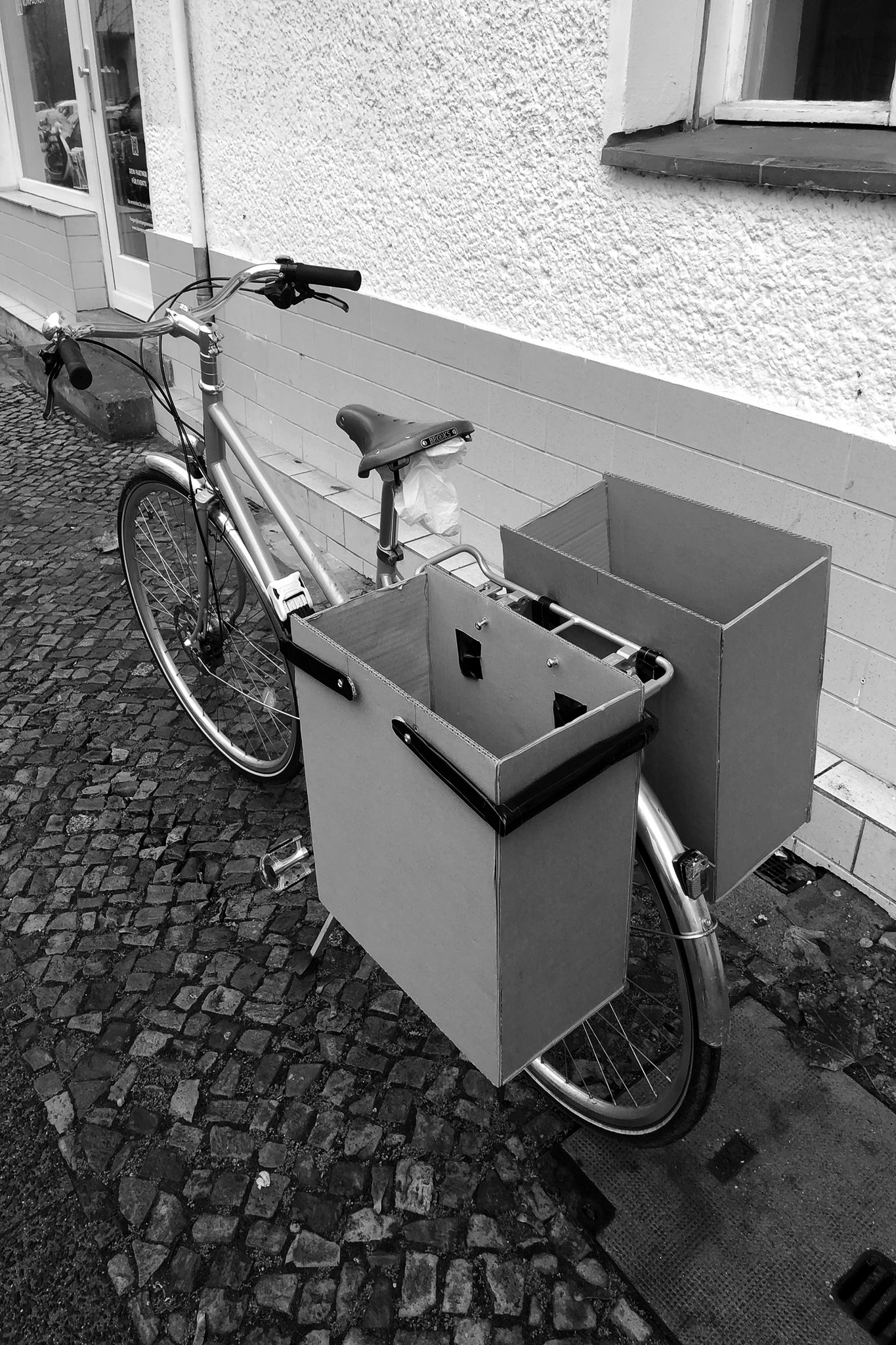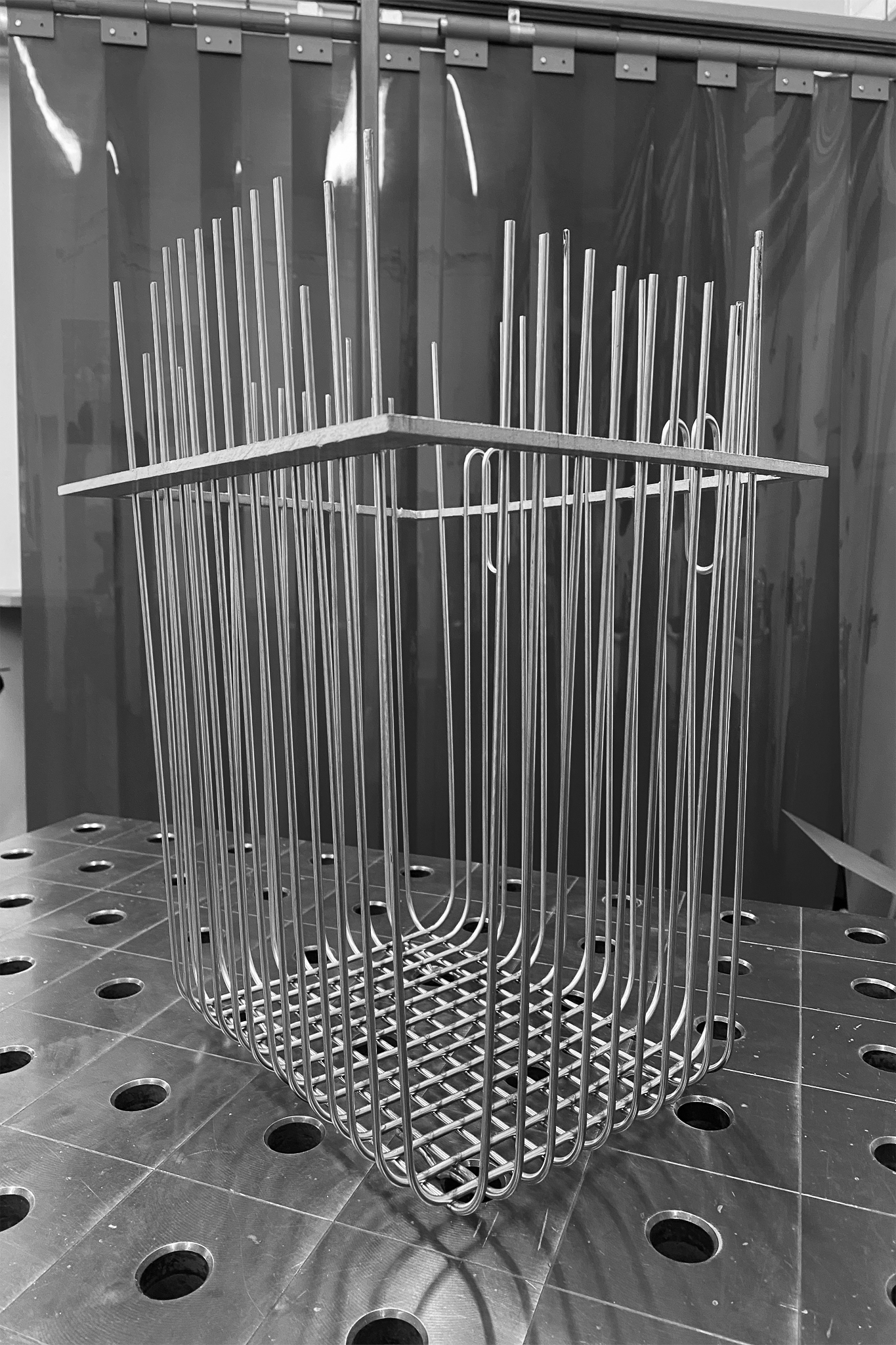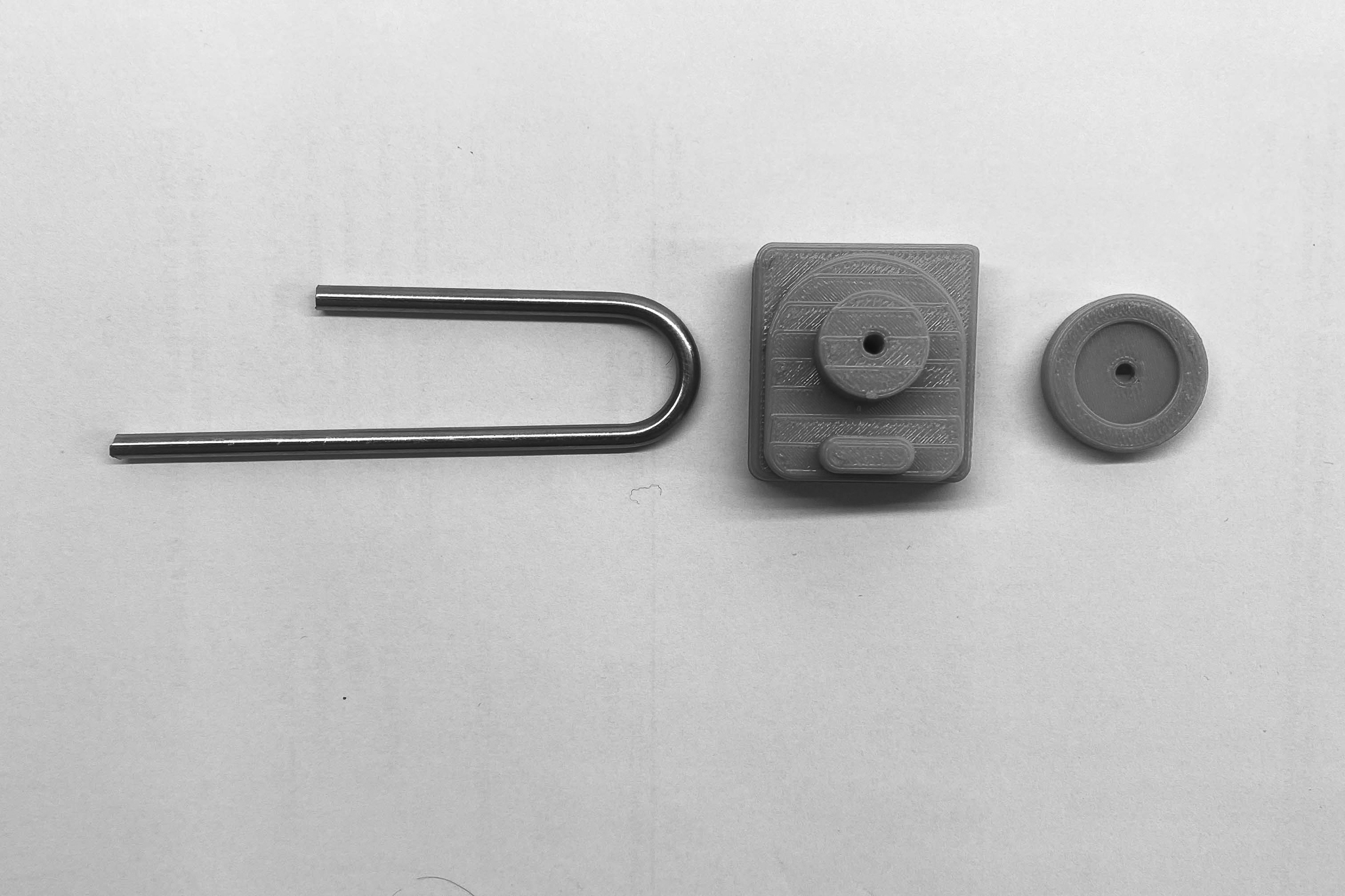Wähle deine Kurse aus.
Das Sommersemester Lehrangebot ist online!
Du findest es HIER
Choose your courses.
The summer semester courses are online!
You’ll find them HERE
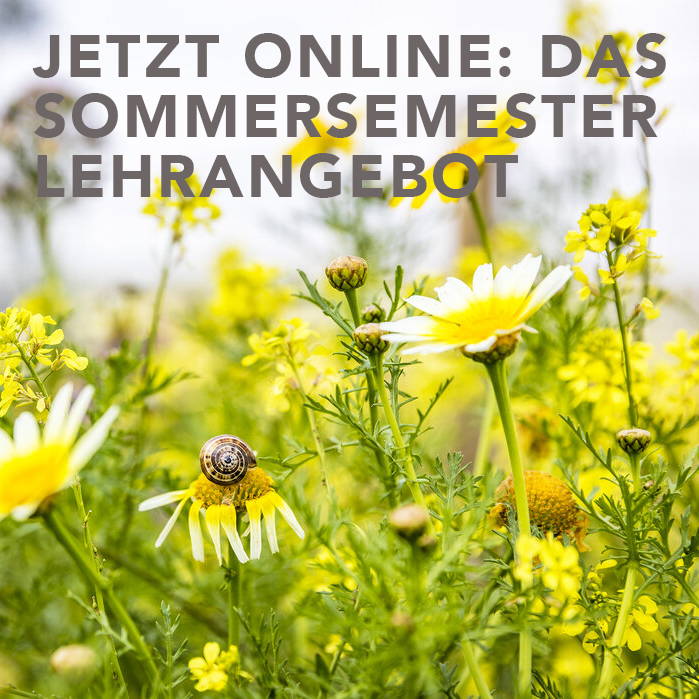
Chair | MA Zwischenstand 2021
The project studies about liberating the cycle of the design process, suggesting a possible experience of a design project. I borrowed the format of a theatre play. 3 characters in the project chair, space, and you are not the one that you already know. A chair is not the chair you know as a chair. Space is not the space that you aware of before. And you are not you anymore. The twisting of the meaning, plots, and stories inspired by the theatre movement in the 1950s, The theatre of the absurd. Well, this project may be called, the design of the absurd.
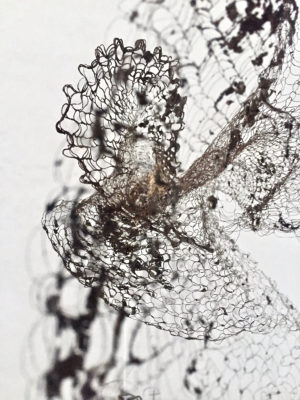
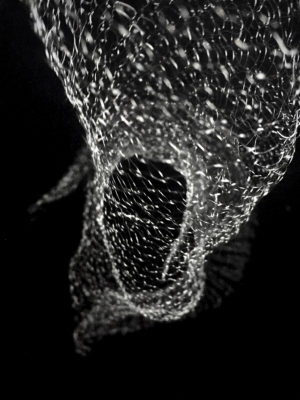
Zeitgebilde | MA Zwischenstand 2021
In einer vom „Nature“ Magazin veröffentlichten Studie ist zu lesen, dass im Jahr 2020 die durch Menschen hergestellte Masse an Artefakten erstmals die Biomasse auf diesem Planeten übersteigt. Ein zusätzlicher Beweis menschlicher Überlegenheit, oder die Vergegenständlichung einer parasitären Kultur? Ich vermute Letzteres. Gleichzeitig verbringe ich mein Leben inmitten dieser Artefakte, und den Großteil meiner Zeit damit sie herzustellen. Von einem Zwiespalt zu sprechen ist, glaube ich, angebracht.
Vor ca. 300.000 Jahren fing der Mensch an, Materialien zu manipulieren. Dadurch stellte er den Grundsatz der Evolution auf den Kopf: Anstatt wie bisher sich dem Lebensraum anzupassen, fing er sukzessiv an, den Lebensraum umzugestalten und entsprechend seinen eigenen Bedürfnisse zu verändern. In gewisser Weise beginnt hier die Subjekt-Objekt Beziehung die unseren Umgang mit der Umwelt bis heute diktiert. Wir verarbeiten organische und anorganische Rohstoffe, einer vergegenständlichten und objektivierten Natur, in immer größer werdenden Quantitäten und transformieren den Planeten sukzessiv in eine Welt aus Artefakten. Per Definition ist das Verändern seiner Umwelt im Homo faber inbegriffen. Wenn das Individuum das Prädikat der alleinigen Handlungspotenz aufgibt, kann die Dichotomie der Subjekt-Objekt-Beziehung zwischen Mensch und Natur verlassen werden. Im Sinne eines „Gefüges“ können so neue Interaktionen auf Basis von symbiotischen, anstatt parasitären Verbünden gefunden werden. Diesen symbiotischen Verbindung sind die „Zeitgebilde“ auf der Spur.
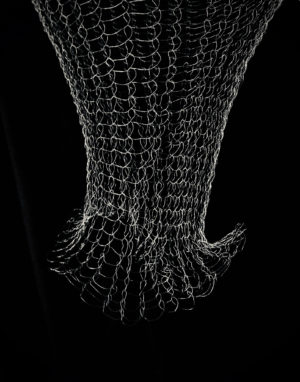
In a study published by „Nature“ magazine it can be read that in 2020 the mass of artifacts produced by humans will for the first time exceed the biomass on this planet. Additional evidence of human superiority, or the objectification of a parasitic culture? I suspect the second. At the same time, I spend my life amidst these artifacts, and most of my time creating them. I think it is appropriate to speak of an inner conflict.
About 300,000 years ago, humans began to manipulate materials. In doing so, they turned the principle of evolution on its head: instead of adapting to the environment as before, they gradually began to redesign the space surrounding them and change it according to their own needs. In a certain way, this is where the subject-object relationship begins, which dictates how we deal with the environment to this day. We process organic and inorganic materials of an objectified nature in ever-increasing quantities and gradually transform the planet into a world of artifacts. By definition, changing one’s environment is included in Homo faber. If the individual gives up the predicate of the sole power to act, the dichotomy of the subject-object relationship between man and nature can be abandoned. In the sense of “flows”, new interactions can be found on the basis of symbiotic, rather than parasitic, alliances. The „time structures“ are on the trail of these symbiotic connections.
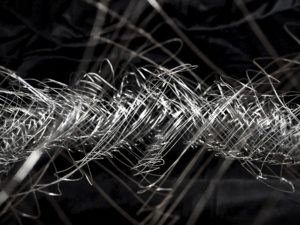
Prozess
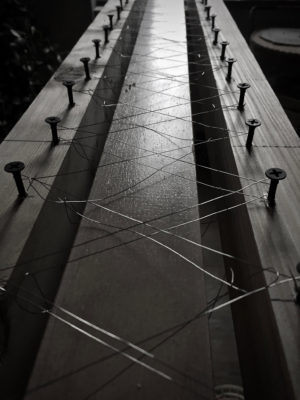

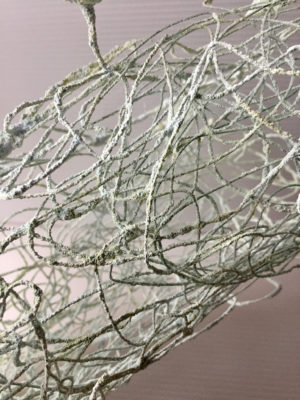
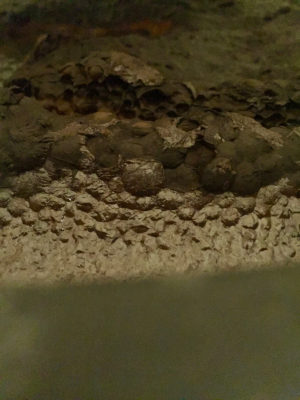

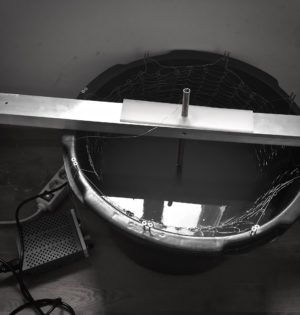
So, Muse | MA Zwischenstand 2021
Computer lernen menschliche Sprache immer besser zu verstehen. Das ermöglicht Unterhaltungen mit ihnen, die über die Rolle einer Assistenz hinausgehen. Sie können ihre eigene Perspektive geben und dadurch inspirieren.
Muse ist ein virtuelles System, das in verschiedenen Phasen des kreativen Prozesses unterstützt. Es kann Feedback geben, eine Meinung äußern oder neue Ideen vorschlagen. Um intuitive Unterhaltungen zu ermöglichen, findet die Kommunikation über gesprochene Sprache statt. Ein Lautsprecher dient hierbei als Schnittstelle.
In diesem Projekt geht es darum neue Möglichkeiten und Rollen für virtuelle Agenten zu entdecken. Alle erwähnten Technologien existieren und werden in einem Prototypen umgesetzt und getestet.
Computers gain more and more understanding of natural language. This enables conversations with a computer beyond the role of an assistant. Although machines can’t tell you what to do, they can inspire and give a new perspective.
Muse is a virtual agent that can help you through certain steps of the creative process. It can give feedback, provide an opinion or propose new ideas. It learns over time and adapts its behaviour accordingly. For a more intuitive conversation the main way of communication is through spoken language. A speaker acts as the main interface.
This project discovers possible ways and roles of intelligent agents in our future lives. All the mentioned technologies pre-exist and will be tested in a functional prototype.
Prozess
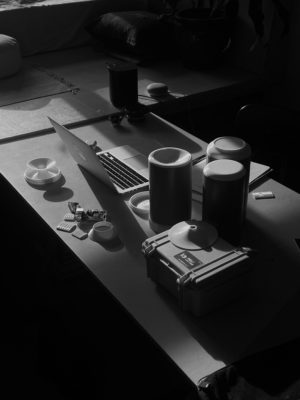
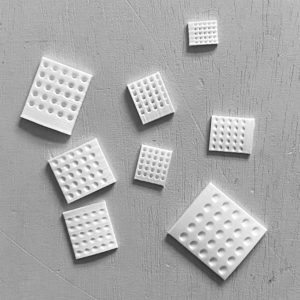
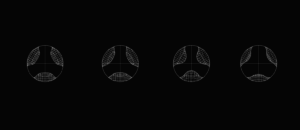
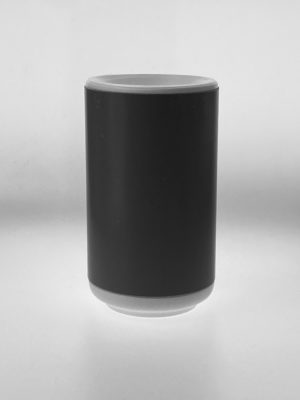
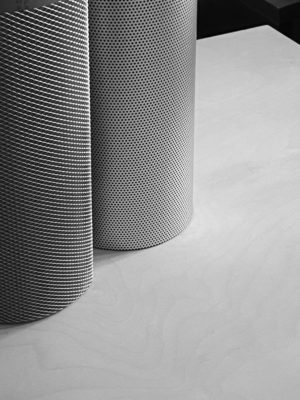
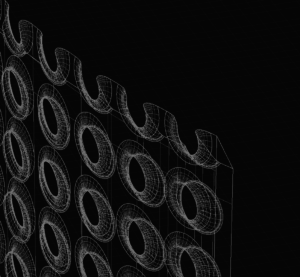
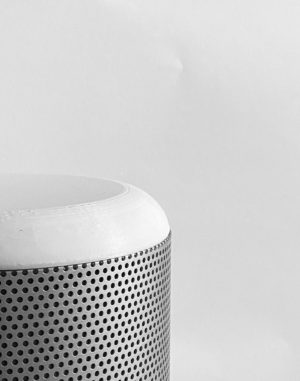
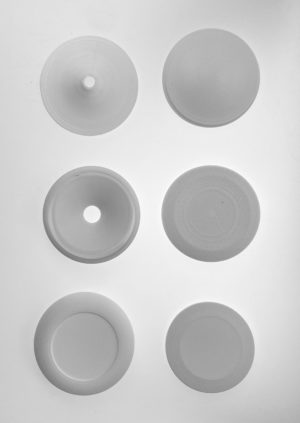
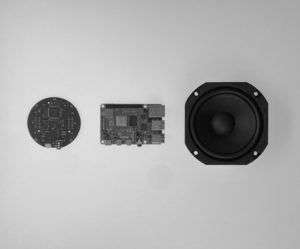
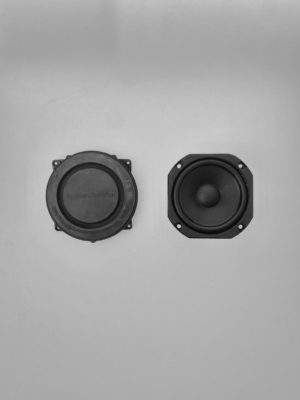
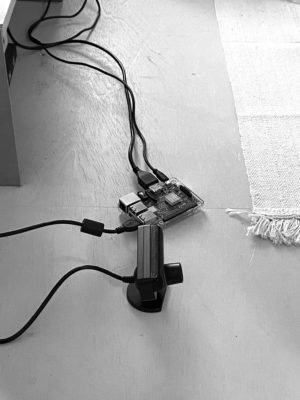
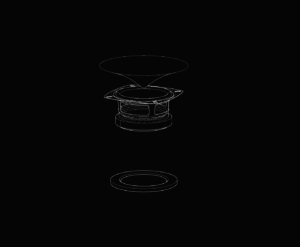
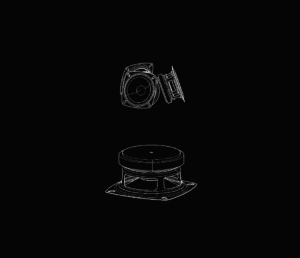
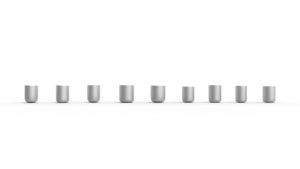
Extra ordinary | MA Zwischenstand 2021
Es gibt so viele Objekte in unserer Umgebung, und wir können sogar sagen, dass die Welt aus Objekten besteht. Im Laufe der Zeit haben wir ich Sein nach und nach subjektiv ignoriert, obwohl sie in Alltag immer noch eine untrennbare Beziehung zu uns haben. Wenn Johannes Vermeer als Ölmaler ordinäre Gegenstände, Menschen und Szenen in den Vordergrund seines Werkes stellen kann. Warum also haben die Designer als Objektmaker dies nicht gemacht? In dieser Mastearbeit werden ordinäre Objekte durch Design in extraordinäre Objekte umgewandelt. Und hinter diesen extraordinären Objekten verbirgt sich ein ordinäres Phänomen, eine Erfahrung, eine Szene oder eine Erinnerung.
There are so many objects in our surroundings, and we can even say that the world is made of objects. Over time, we have gradually ignored their being subjectively, although they still have an inseparable relationship with us in everyday life. If Johannes Vermeer as an oil painter can put ordinary objects, people and scenes in the foreground of his work. So why didn’t the designers as object makers do this? In this mast work, ordinary objects are transformed by design into extraordinary objects. And behind these extraordinary objects hides an ordinary phenomenon, an experience, a scene or a memory.
The Elusiveness of Objects and Worlds | MA Zwischenstand 2021
In der Masterarbeit „The elusiveness of objects and worlds“ werden, durch Verwendung verschiedener Designdisziplinen, Grenzen der kreativen Praxis aufgehoben. Jedes Objekt, das in einer Gesellschaft etabliert ist, ist mit Bedeutung angereichert. Es ist signifikant, da es zweifelsfrei immer den Sinn seiner Funktion liefert. Weil diese die Basis unseres Urteils bilden, kommen wir schneller zu Alltagserkenntnissen und erreichen das Ziel. Hält uns diese Prägung jedoch davon ab, die Welt richtig zu betrachten? Schützt uns der Filter des Wesentlichen vor dem Eintauchen in die eigene Imagination? Das Objekt wird in seiner Anwendung aktiviert. Der Sinn deaktiviert das Objekt jedoch, es ist dann nur noch Symbol seiner Funktion. In dieser Arbeit stelle ich mir die Frage, ob sich Erfahrungscodes des Subjekts umgehen lassen und Objekte mit sinnsuchender/ insignifikanter Gestallt, im Verstand wieder zum Leben erweckt werden können. Wenn die Welt, in der wir uns befinden, nur durch unsere Wahrnehmung und durch unsere Erfahrung besteht, könnte man die Erfahrung massiv herausfordern, um so auch den Umgang mit Objekten fehlzuleiten. Auf dem Weg zur Insignifikanz werden in einem Laboratorium digitale und analoge Formen erforscht. Digitale Experimente werden ins Analoge übersetzt und umgekehrt, um letztendlich die Welten kollidieren zu lassen.
The thesis „the elusiveness of objects and worlds“ is breaking boundaries of creative practices by blending several design disciplines. Every object, that is established in a society, is saturated with meaning. It’s significant by serving at least the meaning of its function. This foundation of our knowledge and judgment brings us to conclusions and makes us highly functional. But does this essential filter keep us from seeing things profoundly and really comprehending them? Are we losing our imagination? The object is active in its operating mode and gets deactivated by its meaning- it’s just the symbol of its function then. I want to investigate forms that revise that code of experience and divert the observer to something unknown- to insignificant silhouette. In a laboratory of meaninglessness I translate digital into analogue and vice versa, to let worlds collide and scenes happen.
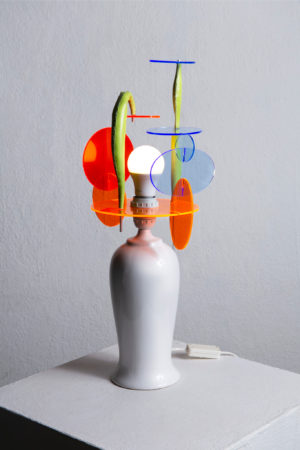
New Sources | MA Zwischenstand 2021
We live in a time where forests decrease constantly, while the demand of wood rises faster than ever. According to Peter Dauvergne and Jane Lister’s book „timber“ the global consumption of wooden products has increased by 70% since the early 1960 and will double until 2030. Also heavy storms, wildfires and droughts rise exponentially. To save our forests we need new approaches.
New Sources is an investigation in producing sustainable products through an implementation of contemporary technologies. In this case I use tree branches as a material source.
The interconnection of 3d scanning, algorithmic modeling, robotic milling and artificial intelligence creates a local production process, that can be applied to various geometries and objects. The waste of resources is reduced to the bare minimum. Branches are used without anymore shaping to celebrate nature.
New Sources is a contemporary homage to Andrea Branzi’s „animali domestici“ from 1985. The furniture collection will be a first application for this newly production process. Through MAKING i will investigate in further applications, that show the potential of both the material and the process.
Kontakt
EIN TEIL FEHLT
Nach einer experimentellen Phase, war das Ziel des Projektes lange die Exponate mit Hilfe von Augmented Reality aus dem Museum herauszuholen. 3D gescannte Exponate sollten im Stadtraum verteilt werden und ihre Geschichten erzählen um UserInnen einen spielerischen Umgang mit Ihnen zu ermöglichen.
Basierend auf den Reaktionen meiner KommilitonInnen zu dem Trailer Video dieser Projektidee wurde mir klar, dass “Bewegtbild” vor allem mit starkem Bildmaterial einen bleibenden Eindruck hinterlässt.
Die Konsequenz: Ich entschloss mich dazu ein Musik Video Im Kunstgewerbemuseum Berlin drehen zu wollen, da dies damals ein realistischeres bzw. Umsetzbareres Ziel war in der Zeit und mit den Mitteln die mir zustanden.
Ich möchte die toten Räume des Museums nutzen und durch meine Körperlichkeit zum Leben erwecken. Der Wunsch und Traum ist es den Raum durch die Musik zu beleben. Gleichermaßen ein Musikstück durch den Raum zum Leben erwecken.
Ich will die Objekte in neue Kontexte setzen mit Hilfe eines spielerischen Umgangs durch Improvisation und Choreographie Geschichten und Zusammenhänge neu konzeptualisieren und erzählen, sowie es das Museum selbst tut.
Der bisher entstandene Film trägt den Titel “Ein Teil fehlt”.
Ich löse die Objekt Mensch Beziehung auf und mache mich darin langsam selbst zum Objekt.
Ausgangspunkt meiner Arbeit ist und bleibt der Raum im Museum, denn so wie das Museum selbst Artefakte unterschiedlichster Epochen verbindet, möchte ich durch die Verbindung unterschiedlichster Disziplinen: Musik, Tanz, Film und Animation einen Raum erschaffen, indem nicht nur der Zuschauer kurzweilig in eine andere Welt entführt wird, auch die Objekte selbst werden verzaubert, kriegen selbst eine Stimme, dürfen Leben, wenn auch nur für den Moment.
Das AR App Projekt verfolge ich nach wie vor weiter, jedoch aktuell ausschließlich innerhalb meines Musik Projektes. Die App ist aktuell über die Konzeptionsphase hinausgewachsen, wird in einem kleinen Team realisiert und hoffentlich bald auf den Markt kommen.
After an experimental phase, the goal of the project was to bring the exhibits out of the museum with the help of augmented reality. 3D scanned exhibits should be distributed in the urban space and tell their stories to enable users to interact with them in a playful way.
Based on the reactions of my fellow students to the trailer video of this project idea, it became clear to me that „moving images“ leave a lasting impression, especially with strong visuals.
The consequence: I decided to shoot a music video in the Kunstgewerbemuseum Berlin, because this was a more realistic and realizable aim in the time and with the means I had.
I would like to use the dead spaces of the museum and bring them to life through my corporeality. The desire and dream is to enliven the space through music. Similarly, to bring a piece of music to life through the space.
I want to put the objects in new contexts using a playful approach through improvisation and choreography to reconceptualize and retell stories and contexts as the museum itself does.
The film created so far is titled „A Part is Missing.“ in which I dissolve the object-human relationship and slowly become an object within it.
The starting point of my work is and remains the space in the museum, because just as the museum itself connects artifacts from different eras, I would like to create a space by combining the most diverse disciplines: music, dance, film and animation, in which not only the viewer is transported entertainingly into another world, but also the objects themselves are enchanted, get a voice themselves, are allowed to live, even if only for the moment.
I am still pursuing the AR App project, but currently exclusively within my music project. The app is currently growing past the conception phase, is being realized in a small team and will hopefully soon be launched on the market.
Prozess
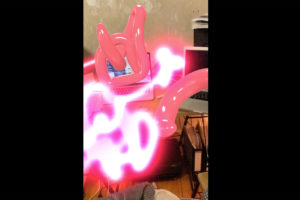
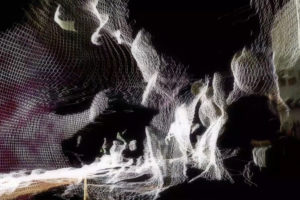
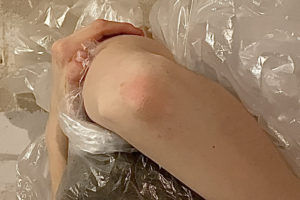
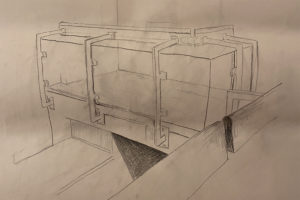
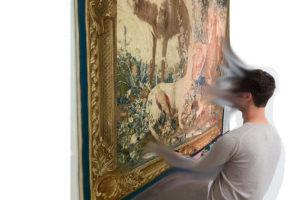
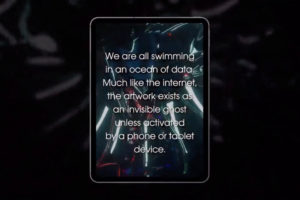
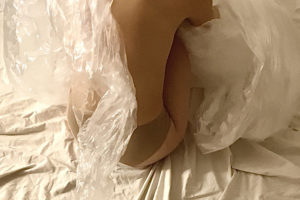
VANITAS POKAL
Ausgangspunkt dieser Semesterarbeit sind die im KGM-Berlin ausgestellten Nautilus Pokale, welche gegen Mitte bis ende des 16. Jahrhunderts in den westeuropäischen Küstenregionen gefertigt wurden. Für die Goldschmiede waren die meist aus Asien stammenden Nautilusschalen beliebte Objekte, an welchen sie all ihre Fertigkeiten und die Finesse ihres Handwerks demonstrieren konnten. Für die hochrangigen Adelsmänner welche diese Nautilus Pokale erwarben oder geschenkt bekamen, waren diese Gegenstände mehr ein Prestigeobjekt als ein Nutzgegenstand, welche ihren sozialen Status und Macht demonstrieren sollten. Zur späten Renaissance Zeit wurde der Nautilus Pokal ein beliebtes Motiv in der Kunst der Vanitas Stillleben und zum Symbol der Vergänglichkeit allen Reichtums und der Eitelkeit. Die Intention des „Vanitas Pokal“ ist es, die Bedeutung des Nautilus Pokals in der Kunst und des Handwerks in eine Zeitgemäße Abstraktion zu bringen. Mit dem von Vorurteilen befreiten weißem Blatt Papier soll der Focus auf den Pokal an sich gesetzt werden, möglichst befreit von jeglicher Ornamentik und Symbolismus. Die Bearbeitung des Papiers in seiner filigranen Zerbrechlichkeit gleicht dem Handwerk eines Goldschmiedes und das Material an sich ist sehr Anfällig für jede Art von Verwitterung und damit auch für Vergänglichkeit. Mit der Handlung das von mir erarbeitete Objekt zu entzünden und verbrennen zu lassen, wollte ich nicht nur den Aspekt der Vergänglichkeit unterstreichen, sondern die Schönheit des Moments möglichst in den Fokus setzen und zelebrieren.
The starting point for this project were the nautilus goblets exhibited in the KGM-Berlin, which were produced in the mid to late 16th century in the coastal regions of Western Europe. For the goldsmiths, the nautilus goblets, which were mostly imported from Asia, were popular objects on which they could demonstrate all their skills and finesse of their craft. For the noblemen who purchased or were given these goblets, they were more an object of prestige than of utility, intended to demonstrate their social status and power. In the late Renaissance period, the nautilus cup became a popular motif in vanitas still life art and a symbol of the transience of all wealth and vanity. The intention of the „Vanitas Cup“ is to transfer the meaning of the nautilus goblet in arts and crafts into a contemporary abstraction. With the white sheet of paper, freed from prejudices, the focus is to be placed on the goblet itself, freed as far as possible from any ornamentation and symbolism. The processing of the paper in its fragility resembles the craft of a goldsmith and the material itself is very susceptible for any kind of weathering and thus also for transience. With the act of setting the object I created on fire and watching it burn down, not only did I mean to emphasize the aspect of transience, but also to focus on and celebrate the beauty of the moment as much as possible.
Prozess
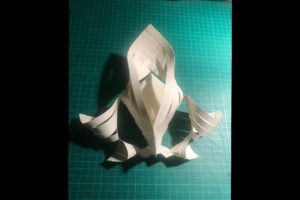
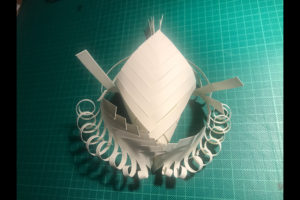
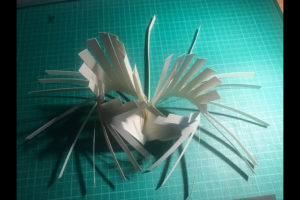
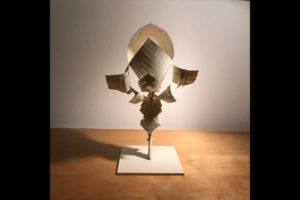
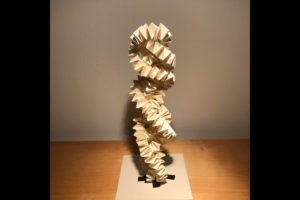

KGM3D
KGM3D ist eine Anwendung, also eine App, die die Techniken des 3d Scans und der Augmented Reality nutzt, um die Objekte und das Wissen des Kunstgewerbemuseums für viele Menschen erfahrbar zu machen. Man kann das Projekt auch als einen Vorschlag für eine zeitgenössische Ausstellungsmethode verstehen. Das Museum soll auf den öffentlichen Raum ausgeweitet und mit der Stadt verwoben werden. Sammlungsobjekte sollen ihre Vitrinen verlassen und sichtbar werden. Zu dem Konzept gehört eine Plakat Kampagne, die die 2D Bilder der Objekte bereits im Stadtbild verteilt. Mit dem QR-Code darauf erhalten die Nutzenden Zugriff zu den 3D Kopien der Objekte. 3D Objekte werden ebenfalls in der Stadt auf Standorte platziert und können mit der App, in einer augmented reality von anderen Nutzenden besucht und betrachtet werden. So entsteht ein Netzwerk, der Objekte auf der Landkarte, wie auch unter den Nutzenden der App. Die App ist interaktiv. Benutzer*innen werden angeregt aktiv und kreativ zu werden denn das öffentliche Museum entsteht und wächst, durch das Mitmachen von Vielen. Benutzer*innen werden aus ihrer passiven Rolle der Museumsbesuchenden zu Mitgestaltenden erhoben. Außerdem werden Nutzende dazu aufgefordert Geschichten zu ihren eigens erstellten Neu-kontextualisierungen der Objekte zu verfassen und im feed miteinander zu besprechen. KGM3D soll gleichzeitig Fragen zur Relevanz der Museums-Bewahrungskultur, und zur Relevanz und Nutzung zeitgenössischer Medien provozieren. Es sollen Kontexte und Bilder entstehen, die zeitgenössische Fragen, Themen und Diskussionen anregen. Außerdem sollen Objekte auch mit ihren tatsächlichen, geschichtlichen Standorten verknüpft und nicht-fiktive Kontexte erzählt werden. Sodass man zwischen den Ebenen wechseln kann und auch hier eine Parallelität und ein Vergleich stattfindet.
KGM3D is an app that uses the techniques of 3d scanning and augmented reality to make the objects and knowledge of the Kunstgewerbemuseum Berlin experienceable for people. The project can also be seen as a proposal for a contemporary exhibition design. The museum will be extended to the public space and interwoven with the city. The objects of the collection will leave their showcases and become visible. The concept includes a poster campaign that spreads and displays 2D images of the objects in the cityscape. With the QR code on it, users can access 3D copies of the objects. The 3D objects are also placed on locations around the city and can be visited and viewed by other users in augmented reality using the app. This creates a network of objects on the map and among the users of the app. The app is interactive. Users are encouraged to become active and creative, because the public museum emerges and grows through the participation of many. Users are elevated from their passive role of museum visitors to co-creators. Furthermore, users are invited to write stories about their own re-contextualizations of the objects and to discuss them with each other in the feed. KGM3D is intended to provoke questions about the relevance of museum preservation and exhibition culture, as well as the relevance and use of contemporary media. Contexts and images are to be created that stimulate contemporary questions, issues, and discussions. In addition, objects should also be linked to their actual, historical locations, and non-fictional contexts should be narrated. So that it is possible to switch between the levels, parallelism and comparison are possible here as well.
Prozess
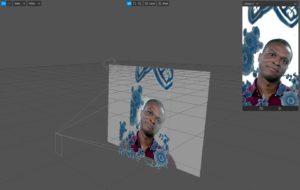
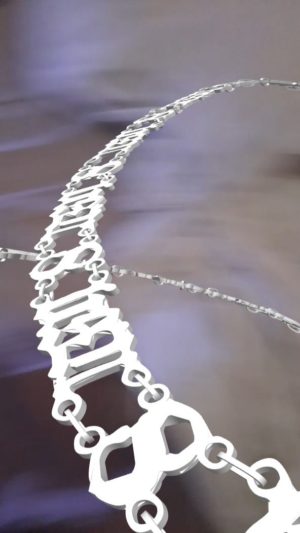
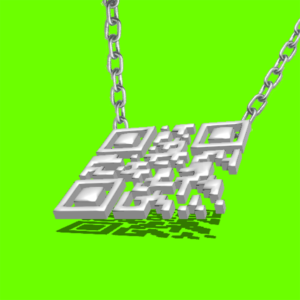
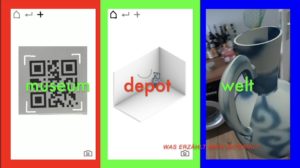

DIGITAL POKAL
Der DigitalPokal bezieht sich auf einen aus Elfenbein gedrechselten Pokal aus dem 17. Jahrhundert, welcher lediglich zur Demonstration der mechanischen und technischen Herstellungsverfahren zu dieser Zeit diente. Um diese Analogie in meinem Werk ausdrücken zu können habe ich mich intensiv mit Demonstrationen technischer Herstellungsverfahren in der heutigen Zeit beschäftigt, mit dem Ziel diese in mein Neobiont zu integrieren. Das wohl für unsere Zeit bedeutendste, neu entwickelte Herstellungsverfahren stellt eindeutig der 3D Druck und dessen Ökosystem des Modellieren und Entwerfen in einer digitalen Welt dar, was uns eine Vielzahl an neuen Möglichkeiten zur Konstruktion von vorher unmöglich herstellbaren Strukturen bietet. Genau diese Beziehung, zwischen digitaler Entwurfswelt, in der wir unserer Fantasie und Gedanken komplett freien Lauf lassen können, und dem 3D Drucker, der versucht diese zu interpretieren und in die Wirklichkeit zu bringen, ist die Grundlage meiner Auseinandersetzung in dieser Arbeit. Zudem wollte ich die aktuelle Situation der Pandemie ebenfalls mit dem Bezug zu den Technischen Erfindungen die uns dadurch nun täglich begleiten und den Alltag momentan überhaupt ermöglichen in das Projekt einfließen lassen. Aus diesem Grund findet man alle technischen Helfer die man im Homeoffice benötigt integriert in den Pokal. Die aus dem Boden kommenden Kabel stellen dabei die Gebundenheit sowohl ans eigene Zuhause als auch der unausweichliche Druck der zu schaffenden Arbeit dar. Somit ist der Pokal selbst die Verkörperung eines modernen Menschen der sich Zuhause in Quarantäne befindet.
The DigitalPokal refers to an ivory turned cup from the 17th century, which served only to demonstrate the mechanical and technical manufacturing processes at that time. To express this analogy in my work, I have dealt intensively with demonstrations of technical manufacturing processes in modern times, intending to integrate them into my Neobiont. Probably the most significant newly developed manufacturing process for our time is 3D printing and its ecosystem of modeling and designing in a digital world, which offers us a multitude of new possibilities for the construction of previously impossible structures. This relationship between the digital design world and the 3D printer is the basis of my argument for this work.
Furthermore, I wanted to incorporate the current situation of the pandemic with regard to technical inventions that now accompany us in our daily lives into the project. For this reason, you will find all the technical helpers that you need in the home office integrated into the cup. The cables coming out of the floor represent the connection to one’s own home as well as the inevitable pressure of the work ahead.
Thus, the cup itself is the embodiment of a modern man who is at home in quarantine.
Prozess

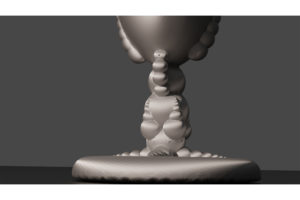
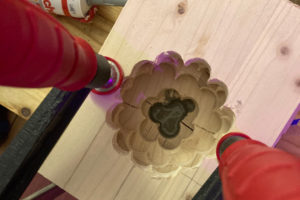
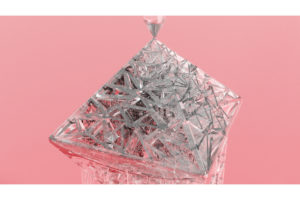
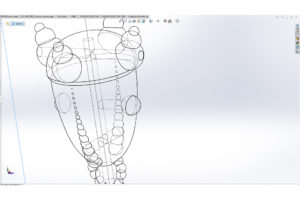
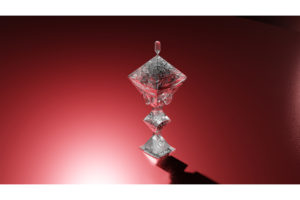
HARTE SCHALE UND EIN KERN
PIXEL PER LIFE
HOLDING
SPITZBERGEN
KGM SEEDBANK
Prozess
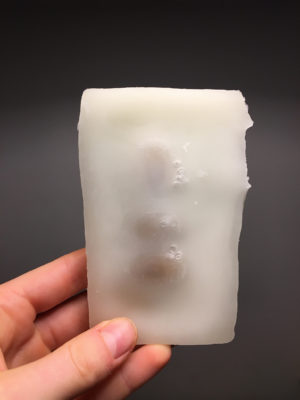
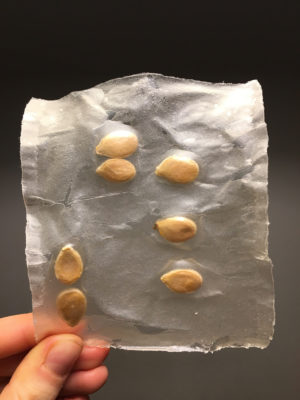
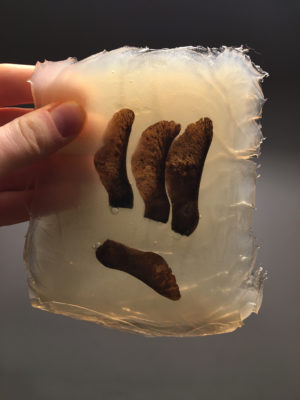
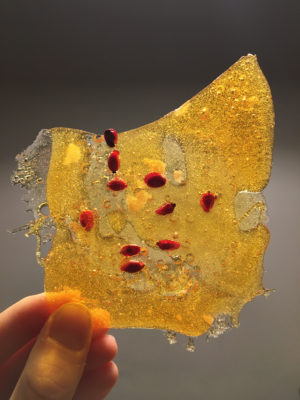
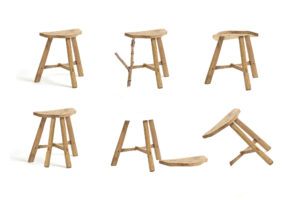

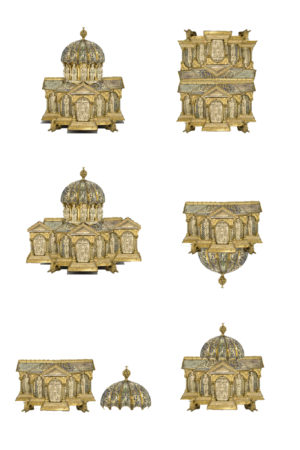
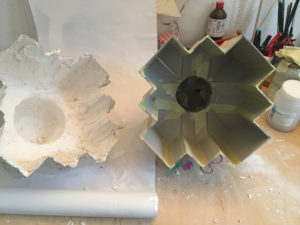
NEO[N] MARY
Neo[n] Mary setzt sich mit der Repräsentation der Frau in der sakralen Kunst auseinander. Das Christentum ist, wie die meisten Religionen der Gegenwart, weitgehend androzentrisch geprägt und hat darüber hinaus die männliche Dominanz in der Gesellschaft religiös legitimiert. Über die Jahrhunderte wurden starke Frauenfiguren systematisch aus der Bibel gestrichen. Mögliche Identifikationsfiguren beschränken sich auf die heilige, unbefleckte, folg- und schweigsame Maria, die Mutter Gottes oder die böse, sündige Eva, die den „unschuldigen Mann“ verführte und so die Verbannung aus dem ewigen Paradies provozierte. Die Misogynie der Bibel findet vor allem in der Kunst ihren Ausdruck. Maria wird stark auf ihre Mutterrolle reduziert und meist in einer zurückhaltenden devoten Körperhaltung präsentiert, den Blick zur Seite oder zu Boden gerichtet – passiv. Diese Bilder haben sich in unserem kollektiven Gedächtnis manifestiert und werden kaum hinterfragt. Neo[n] Mary transformiert die mittelalterlichen Glasgemälde des Kunstgewerbemuseums in die Gegenwart und löst sie vom Bild der devoten und fügigen Frau. Die Lichtobjekte aus geschichteten Acrylglaselementen zeigen Maria in einer starken und autonomen Rolle – eine laute und poppige Antwort auf Jahrhunderte der Unterdrückung, des Schweigens und stillen Betens.
Neo[n] Mary deals with the representation of women in the sacral art. Like most of the present religions, Christianity is mainly men centred and has religiously legitimized male dominance in society. Over the centuries, strong female figures have been erased systematically from the Bible. Possible identification figures are limited to the holy, immaculate, obedient, and silent Mary, the mother of God, or the evil, sinful Eve, who seduced the “innocent man” and thus provoked banishment from eternal paradise. The misogyny of the Bible finds expression above all in art. Mary is strongly reduced to her role as a mother and is usually presented in a reserved submissive posture, her gaze turned to the side or to the ground – passive. These images have manifested themselves in our collective memory and are hardly questioned. Neo[n] Mary transforms the medieval glass paintings of the Kunstgewerbemuseum Berlin to the present, detaching them from the image of the submissive and compliant woman. The light objects made of layered acrylic glass elements show Mary in a strong and autonomous role – a loud and poppy response to centuries of oppression, silence, and silent prayer.
Prozess
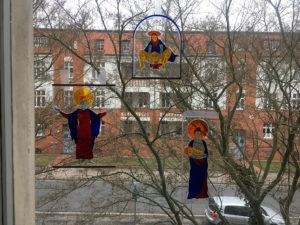
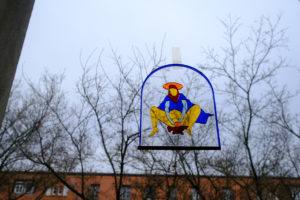
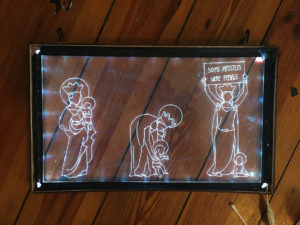
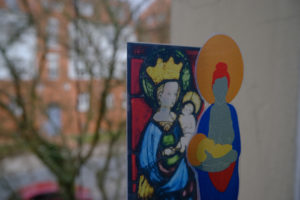
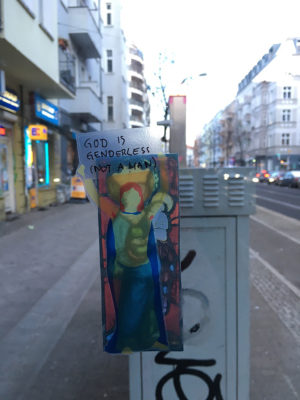
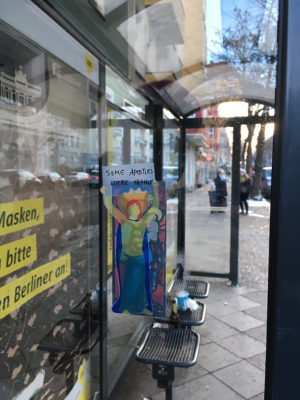
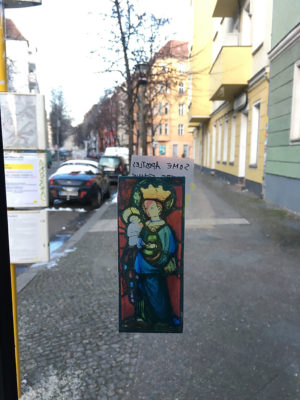
Print Yourself in Glory
Fokus dieser Semesterarbeit und der Zusammenarbeit mit dem Kunstgewerbemuseum Berlin, sind die dort ausgestellten Porzellanfigurengruppen der Firma Meißen.
Gestaltet und produziert im 18. Jahrhundert, spiegeln sie naturgemäß die Welt- und Wertedarstellung der damaligen Zeit wieder.
Sie positionieren die wohlhabenden, aristokratischen, weißen, heterosexuellen Charaktere im Zentrum des Modells und auch der damit portraitierten Welt.
So werden Hierarchien klar aufgezeigt, es wird exkludiert, verschwiegen und falsch gezeichnet, schwarze Personen grotesk dargestellt und einer perfiden Rolle zugeschrieben.
Nun ist eine solche künstlerische Darstellung der Weltgefüge im und aus dem 18. Jahrhundert leider nicht weiter verwunderlich, jedoch wird diese im KGM nur sehr oberflächlich inszeniert und präsentiert.
Die Figuren gehen im Meer der anderen Objekte unter, eine Auseinandersetzung mit ihrer Form und dem transzendierten Gedankengut ihrer Schöpfer*innen und der Gesellschaft des ausgehenden 18. Jahrhunderts kann nur bei sehr genauer Beobachtung oder einer trivialen intellektuellen Unterfütterung durch eine gebuchte Tour durch das Museum geschehen.
Genau hier möchte ,PRINT YOURSELF IN GLORY‘ wirken, gegenüberstellen, an den Betrachtenden rütteln, kontextualisieren und durch ein modernes, figuratives 3D gedrucktes Pendant Brücken schlagen.
Ich möchte eine direkte, physische Korrelation zwischen einer antiquierten Darstellung des menschlichen Lebens, einer alten Handwerkskunst und dessen modernem Pendant generieren.
Durch die direkte Gegenüberstellung der museualen Objekte (Figurengruppen von Meißen) und meinen Plastiken sollen klare, subtile Hinweise zu einer Auseinandersetzung mit sozialer Gerechtigkeit, Darstellung von Minoritäten und Hierarchien gegeben werden. Der oder die Empfänger*in kann durch die wechselhafte Betrachtung Perspektiven gewinnen.
Die im SLS Verfahren hergestellten Polyamidfiguren sind einfach ineinander steckbar, lassen sich unterschiedlich kombinieren und bieten so eine verspielte Möglichkeit der Selbstinszenierung und einer temporären räumlichen Konservierung dieser.
The focus of this semesters project and the collaboration with the Kunstgewerbemuseum Berlin are the porcelain figurine groups of the Meissen company exhibited there.
Designed and produced in the 18th century, they naturally reflect the conception of the world and representation of value of the time back then.
They position the wealthy, aristocratic, white, heterosexual characters at the center of the model and also of the world portrayed with them.
Thus, hierarchies are clearly shown, exclusion, concealment and misrepresentation prominently displayed, black people grotesquely portrayed and attributed to a perfidious role.
Now, such an artistic representation of the world structures in and from the 18th century is unfortunately not surprising, but in the KGM it is staged and presented only very superficially.
The figures are lost in the sea of other objects, an examination of their form and the transcendent thought of their creators and the society of the late 18th century can only happen with very close observation or a trivial intellectual underpinning through a booked tour of the museum.
This is exactly where ,PRINT YOURSELF IN GLORY‘ wants to act, to juxtapose, to jolt the viewer, to contextualize, and to build bridges through a modern, figurative 3D printed counterpart.
I want to generate a direct, physical correlation between an antiquated representation of human life, an ancient craft, and its modern counterpart.
Through the direct juxtaposition of the figural groups from Meissen and my sculptures, clear, subtle references to an examination of social justice, representation of minorities, and hierarchies are intended. The recipient can gain perspectives through the changing observation.
The polyamide figures, produced in the SLS process, can be easily inserted into each other, can be combined in different ways and thus offer a playful possibility of self-dramatization and a temporary spatial conservation of these.
Prozess
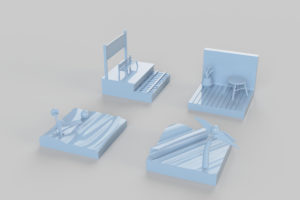
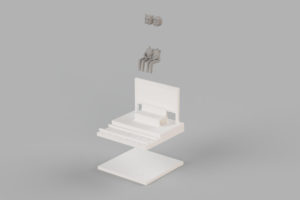
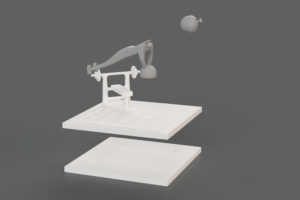
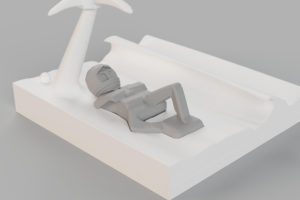
This Body is a Temple
…ist ein ironischer Kommentar zu einer Kultur in der Selfcare & Selbstoptimierung als Ersatzreligion fungieren.
Der Glaube an Gott wurde bei vielen Menschen mit dem Glauben an sich selbst abgelöst. Es geht um die ständige Optimierung des eigenen Körpers und des eigenen Geistes. Der verständliche und auch wichtige Ansatz der „Selfcare“ wird in extremen Ausmaßen betrieben. Durch die Verbesserung in allen Lebensbereichen, sei es Schlaf, Arbeit oder Freizeit erhofft man sich ein besseres und ausgefüllteres Leben. Auf der Suche nach der eigenen Perfektion, die massiv von kapitalistischen Interessen befeuert wird, kann man jedoch leicht den Blick für das andere und die anderen verlieren. Zudem kann das konstante vor Augen führen der eigenen Unzulänglichkeiten das Gegenteil von einem zufriedenen Leben bewirken.
In dem animierten Film werden modifizierte Fitnessgadgets in Szene gesetzt. Der Blick der Zuschauer:innen wird durch einen kirchenähnlichen Säulengang aus Marmor geleitet. An seinem Ende befindet sich ein Altar, auf dem drei transformierte Objekte stehen; eine goldene, juwelenbesetzte Hantel auf einem Ständer, ein goldener Medizinball und ein goldener, juwelenbesetzter Proteinshaker.
Durch die religiöse Inszenierung werden die Fitnessgeräte zu heiligen Objekten der Anbetung und damit zu ironischen Symbolen für eine Kultur die von der eigenen Optimierung besessen ist.
…is an ironic commentary on a culture in which self-care & self-optimization act as a substitute for religion.
For many people, the belief in God and religion has been replaced by the faith in themselves. It’s about constant optimization of your own body and mind.
The understandable and also important approach of „self-care“ is being pursued to an extremely high degree. By improving in all areas of life, be it sleep, work or leisure, one hopes for a better and more fulfilling life. In the search for one’s own perfection, which is massively fueled by capitalistic interests, one can easily lose sight of the people and things around him or her. The constant visualization of one’s own inadequacies can lead to the opposite of a happy, fulfilled life.
In the animated film modified fitness gadgets are staged in a sacred and glamourous way. The eye of the viewer is guided through the insides of a church-like colonnade made of marble. At the end of it is an altar on which three transformed objects are placed; a gold, jeweled dumbbell on a rack, a gold medicine ball, and a gold, jeweled protein shaker. The religious staging turns the fitness equipment into holy objects of worship and therefore ironic symbols for a culture obsessed with its own optimization.
Über die Distanz Nähe schaffen
Ich habe ein figürliches Henkelmodell aus dem 16.Jahrhundert aus dem Kunstgewerbemuseum Berlin entführt und es in das 21. Jahrhundert gebracht. Nach diversen Transformationsprozessen stellte sich mir die Frage, was mein perfekter Henkel wäre. Dabei ist mir aufgefallen, dass ich schon lange keinem Menschen mehr die Hand geschüttelt habe. Mit Abformungen von unterschiedlichen Gesten meiner Hände, habe ich versucht Menschen Nähe zu schenken. Allerdings war ich immer der Hauptakteur. Ein Henkel bildet eigentlich die Schnittstelle zwischen einem Objekt und einem Menschen. Was passiert aber, wenn er zwei Menschen miteinander verbindet?
Die neue Umgebung in der sich mein Henkel befindet ist eine Vernissage in Zeiten von Corona. Über eine Distanz von 1,5 Metern müssen Gläser nachgefüllt und Häppchen gebracht werden. Es sind verschiedene Modelle entstanden, um diesen Mindestabstand zu garantieren.
I kidnapped a 16th century figurative handle model from the Kunstgewerbemuseum Berlin and brought it into the 21st century. After various transformation processes, I asked myself how my perfect handle should look like. Thinking about it, I recognized that I haven’t shaken hands with anybody for long time. With molds of different gestures of my hands, I tried to give people closeness. However, I was always the main actor. The handle actually is the interface between a human being and an object. But what happens when the handle connects two people?
The new environment in which my handle is located is a vernissage in times of Corona. Over a distance of 1.5 meters glasses must be refilled and appetizers must be served. Various models have been created to guarantee this minimum distance.
Prozess
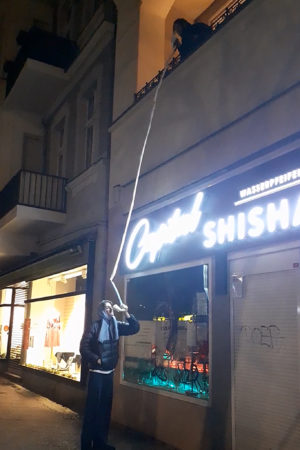
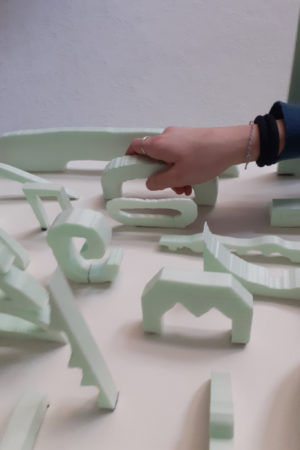
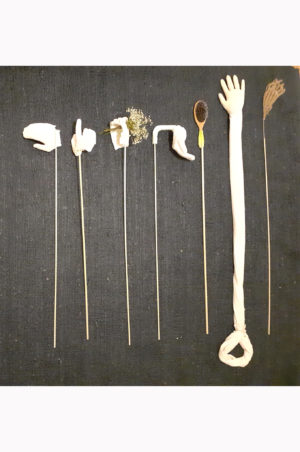
Das NORMale Maß und der maßlose Abend
Das Sammlung’s Objekt des KGM Berlin welches die Basis für die folgenden Auseinandersetzungen bot war der Kasten mit Meßinstrumenten, indem es mein Bestreben ist diesem eine neue Signifikanz zu geben. Faszinierend ist hierbei die Wechselwirkung zwischen diesen Objekten und der Welt Beziehungsweise deren Nutzen. Das Thema messen wurde damit in Verbindung mit dem Sammlungsobjekt zum Semesterthema und Grundlage für Prototypische Entwürfe die verschiedene Aspekte dieses Themas aufwerfen sollen um diese im weiteren zu vertiefen. Dabei stellte der Modellbau sich in diesem Semester als Grundlage vieler Forschungen heraus.
Das NORMale Maß
Dieser Ansatz stellt den Versuch dar das Sammlungsobjekt in einen Zyklus der Zeit und der damit einhergehenden Entwicklung zu bringen. Die aufkommende Genauigkeit und Präzision der Messinstrumente der damalige Zeit ist Basis für die Entwicklung industrieller Prozesse die im weiteren Maße zur Festlegung von Normen in Prozessen und Erzeugnissen einbettete. Hier entstand nun der Versuch diese aus der Zeit und technischen Entwicklung entstandene Erzeugnisse der Messtechnik wieder auf ihren Ursprung zurück zu führen.
Der Maßlose Abend
Ein Messinstrumenten Kasten für den Erfolg eines Abends unter Freunden ist im wahrsten sinne des Wortes eine Schnapsidee. Jedoch wirft dieses aus der Modellbau Werkstatt mit Sarah Illenberger entstandene Objekt eine sehr interessante Frage auf. Was ist Messbar und was sollte überhaupt messbar sein? Daher stellt dieses Objekt einen Ausgangspunkt dar für zukünftige Auseinandersetzungen mit dem Thema der physischen Messbarkeit sozialer Interaktionen.
The collection’s object in the KGM Berlin which provided the basis for the following Projects was the box with measuring instruments. The interaction between these objects and the world and their use is fascinating. The topic measuring in connection with the collection’s object became the semester topic and the basis for prototypical drafts which are supposed to question different aspects of this topic in order to further deepen them in the future. Model making turned out to be the basis for my research this semester.
The NORMal measure
This approach represents the attempt to bring the collection’s object into the cycle of time and technical development that springs from it. The increasing accuracy and precision of the measuring instruments of that time is the basis for the development of industrial processes, which were further embedded in the definition of norms in processes and products. Here the attempt was made to bring these products of that strive back to their origins, which had arisen from time and technical development.
The excessive evening
A measuring tool box for the success of an evening among friends is obviously a quiet excessively sarcastic notion. However, this object that was created in the model making workshop with Sarah Illenberger raises a very interesting question. What is measurable and what should be measurable at all? Therefore, this object represents a starting point for future discussions on the subject of the physical measurability of social interactions.
Prozess
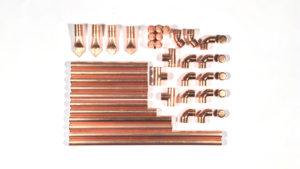
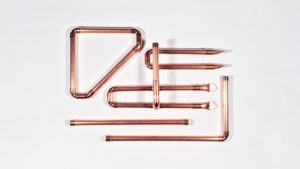
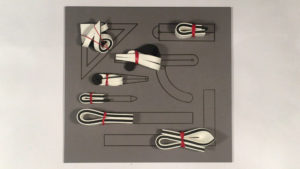
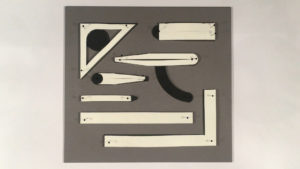
Mirco Goes Macro
Ein Zusammenhang auf den ich im Laufe meiner Recherche rund um das Thema Gefäße immer wieder gestoßen bin, war das Thema Leben und Tod. Die Vase symbolisiert den Anfang und das Ende in einer Welt, das Leben und der Tod wird hier in einer Form repräsentiert. Im kunsthistorischen Kontext repräsentiert die Vase zusammen mit anderen sehr symbolträchtigen Elementen, einerseits Reichtum, Luxus und Verschwendung, aber auch die damit verbundene Vergänglichkeit der Dinge bzw. des Lebens. In meinem Ansatz werden die Objekte nicht mehr nur als Symbol für etwas verstanden, sondern werden selbst zum Hauptakteur, die genau diese Lebendigkeit und gleichzeitige Vergänglichkeit verkörpern sollen. Ausgehend von diesen Überlegungen ist eine lebendige und somit auch vergängliche Objektreihe entstanden, die einen Gegenpol zu den perfekt präservierten und statischen Objekten im Kunstgewerbemuseum darstellen soll. Als Mittel der Lebendigkeit wurden Bakterien auf einem Agarnährboden und einer dreidimensionalen Form gezüchtet.
One connection I came across again and again in the course of my research on the subject of vessels was the theme of life and death. Life and death are represented here in one form of an object. In the context of art history, the vase, together with other very symbolic elements, represents on the one hand wealth and luxury, but also the associated transience of life. In my approach, the objects are no longer understood as a symbol of something, but become the main actor themselves, which are supposed to embody exactly this liveliness and simultaneous transience. Based on these considerations, a living and therefore also transient series of objects were created. This should also be a counterpart to the perfectly preserved and static objects in the Kunstgewerbemuseum. As a tool for liveliness, bacteria were grown on an agar soil and a three-dimensional form.
Prozess
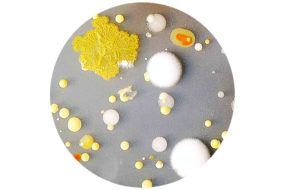
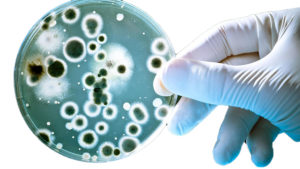
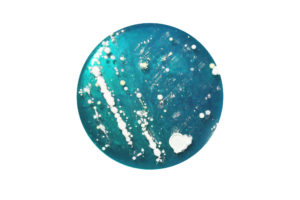
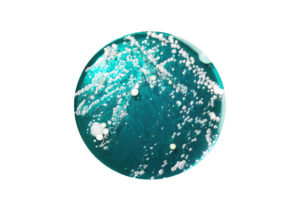
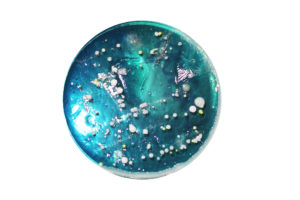
KGM Vitrine | 907 / 5000
Die kleine Vase aus der königlichen Porzellanmanufaktur Berlin, die eingefroren hinter Glas verweilt, wird im Rahmen der Neobionten auf eine Reise in die heutige Welt genommen. Sie wird aus der Stille entführt und mit in die lebendige Welt genommen. Bei ihrem Transport wird sie verschiedenen Einflüssen ausgesetzt, vor der sie normalerweise geschützt ist. Die Vase nimmt jedoch eine Wandlung zwischen dem Museum und der Außenwelt vor und hat sich in ihrer Materialität verändert. Sie besteht nun nicht mehr aus Porzellan, sondern ist aus flexiblem TPU. Die Vase wird durch das Vakuumieren platzsparend und sicher verpackt. Das Transportieren wird vereinfacht. Zuhause kann der Museumsbesucher die Vase selbst hinter der Vitrine hervorholen und ihr Leben einhauchen in dem er sie nutzt.
Im Rahmen der neobiontischen Reise kommt die Vase als Pitch für ein Merchandise für das KGM Shop zurück ins Museum.
The small vase from the royal porcelain factory in Berlin, which lingers frozen behind glass, is taken on a journey into today’s world as part of the neobionts. She is kidnapped from silence and taken into the living world. During its transport it is exposed to various influences from which it is normally protected. However, the vase undertakes a change between the museum and the outside world and has changed in its materiality. It is no longer made of porcelain but is made of flexible TPU. The vase is packed securely and space-saving by vacuuming. Transporting is simplified. At home, the museum visitor can pull out the vase from behind the showcase and breathe life into it by using it.
As part of the neobiontic journey, the vase comes back to the museum as a pitch for merchandise for the KGM shop.
Prozess
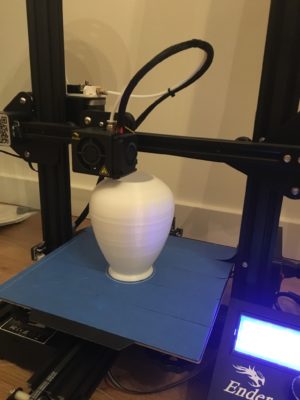
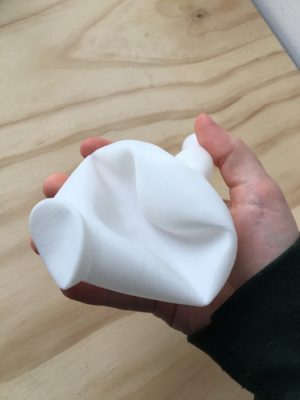
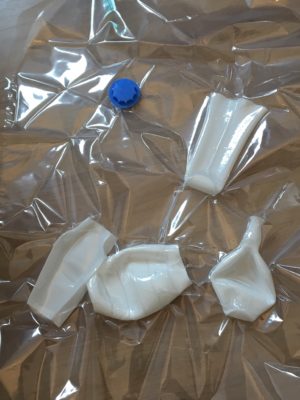
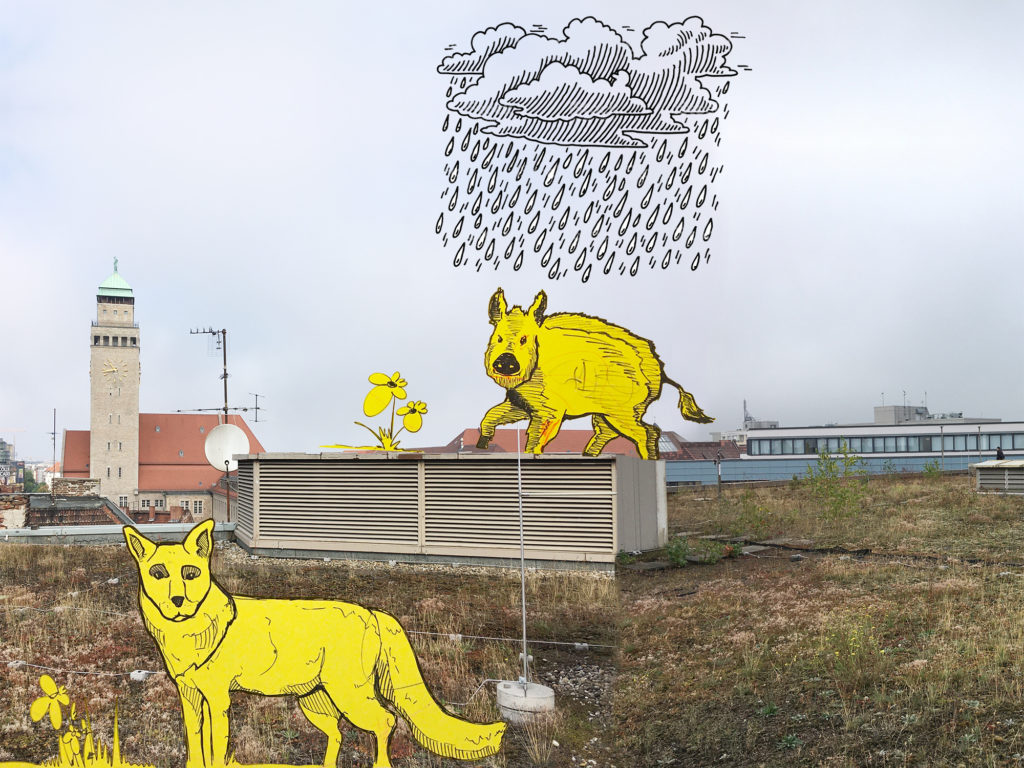
MushTiles proposes a sustainable future solution to the Urban Heat Island Effect, which happens when cities heat up due to dark surfaces. High amounts of energy are needed for current cooling techniques, causing pollution and high expanses.
MushTiles are made from Mycelium, a lightweight, climatepositive material, that is not only naturally white and therefore lowers the heat island effect, it is also matabolizing toxins in the growing process and needs very little energy to be manufactured, shipped, and installed.
FACT:
Dark surfaces, such as streets and rooftops, absorb sunlight and heat up buildings, especially during the summer.
The heat built up in cities is called the urban heat island effect. It causes urban areas to be up to 7 degrees (and even up to 12 in NYC!) hotter than surrounding areas. Because of the dense structure and materials used for streets and buildings, the heat is then trapped and cities stay up to 5 degrees warmer than their surroundings, even during the night.
This means that a single household spends more energy and money during summer on cooling technologies, causing emission and thereby more heat and bad air quality.
Tiles, as we know them today, are made out of clay or even concrete, and considerable parts of landscapes have to be used for mining these materials. To manufacture the raw material, clay tiles have to be burned at high temperatures to become stable. The single tiles are very heavy, so the transportation is highly energy consuming. They are built to last, and often have an even longer lifespan than the house itself. They also store heat very well, which has an effect not only on the heat island effect but also directly on the single household’s extra expenses for air conditioning to have comfortable temperatures on the inside of the building.
ACT:
Thinking about the future effects of climate change, the answer can not be just wasting even more energy for air conditioning. So what if we rethink our choice of building materials?
MushTiles are tiles grown from mycelium, which is a by-product of fungi with a thread-like structure that develops while the fungus is growing. Fungi can grow on any organic material, for example biowaste and can also convert toxicants into mycelium, a stable, light weight and completely biodegradable substance.
Thanks to science, in the near future we will be able to increase the amount of chitin that is already inherent in the mycelium, which gives it a more protective layer. This will not only be a sustainable supermaterial, but also have a high resistance to environmental factors such as rain or snow.
IMPACT:
As mycelium is also non-flammable it is a safe alternative for rooftop materials. It is lightweight, and can therefore be processed quicker and in bigger scales than today’s tiles. Mycelium does not store heat, and most of all, it is a naturally white material, which means it doesn’t absorb sunlight in the first place.
This leads to a cooler area, less energy consumption through air conditioning, and overall better air quality not only from the toxins metabolized in the growing process, but also through the cooler environment due to less air pollution. Recent research found that if 90% of urban roofs were white, the urban heat island effect could be lowered by a third, or around 2 degrees on average.
MushTiles could help cool down cities and make temperatures more enjoyable in a sustainable way.
Dominique Bertisch, 7.sem WS 2020/21
Project:
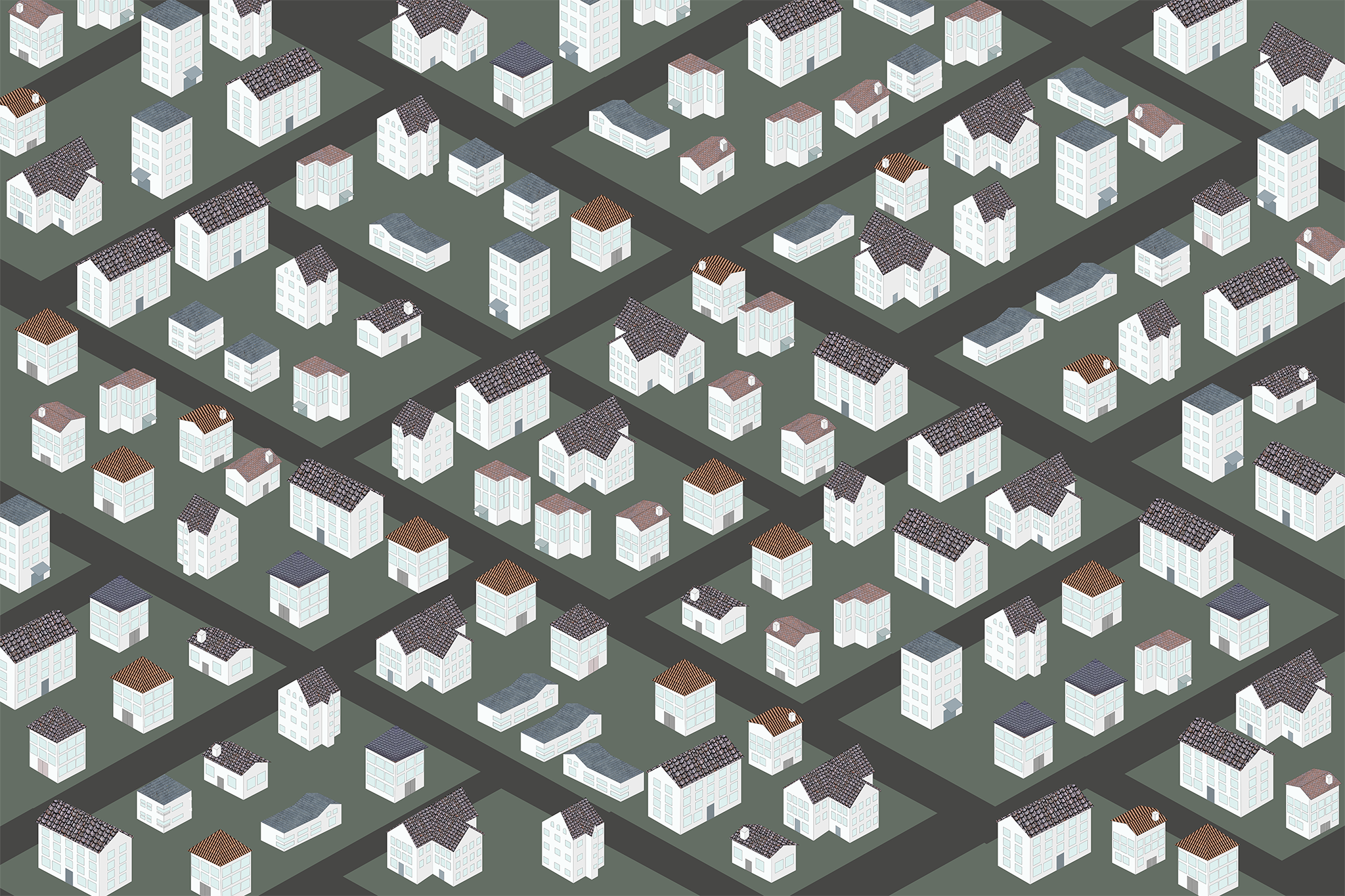
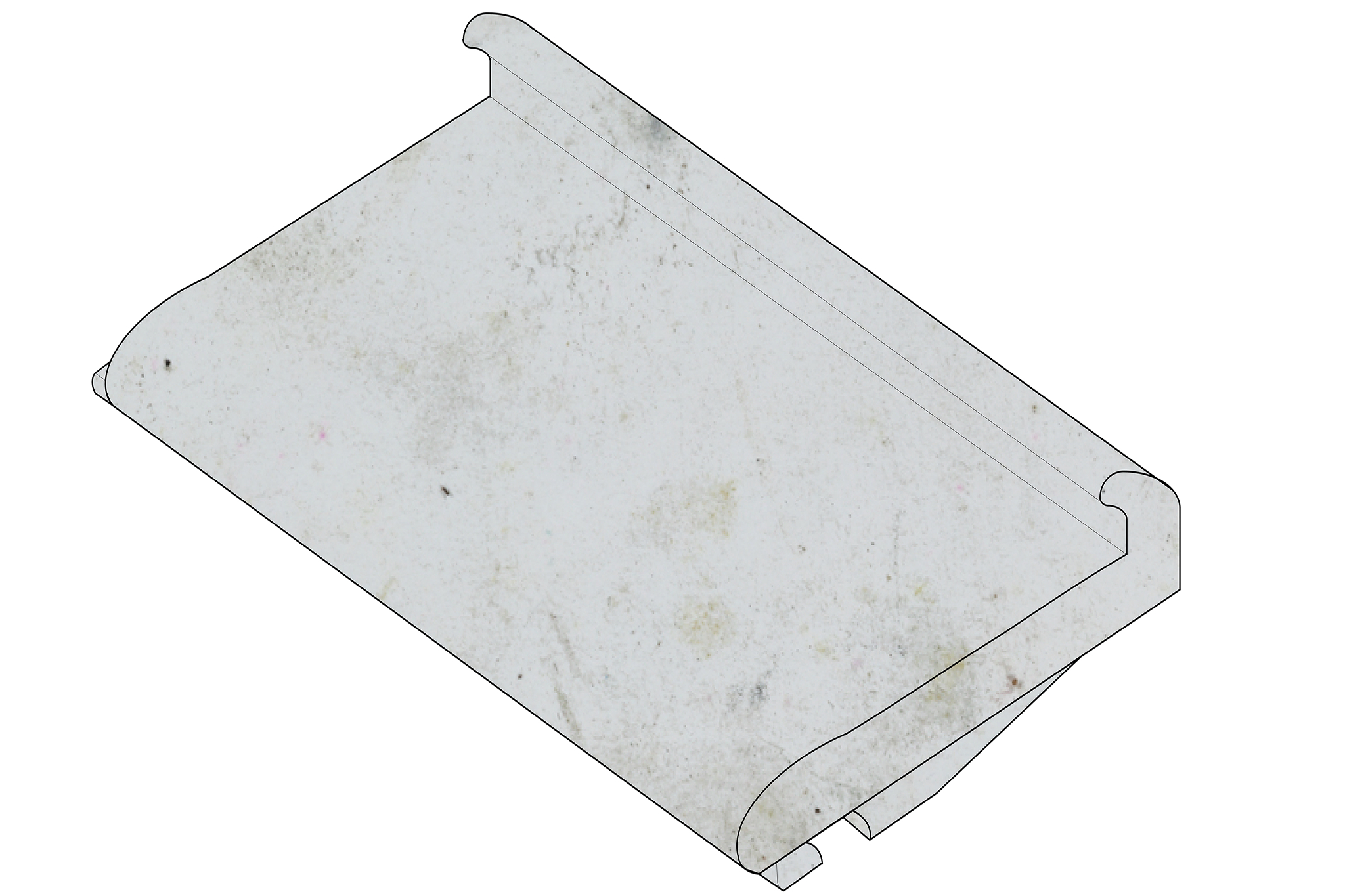
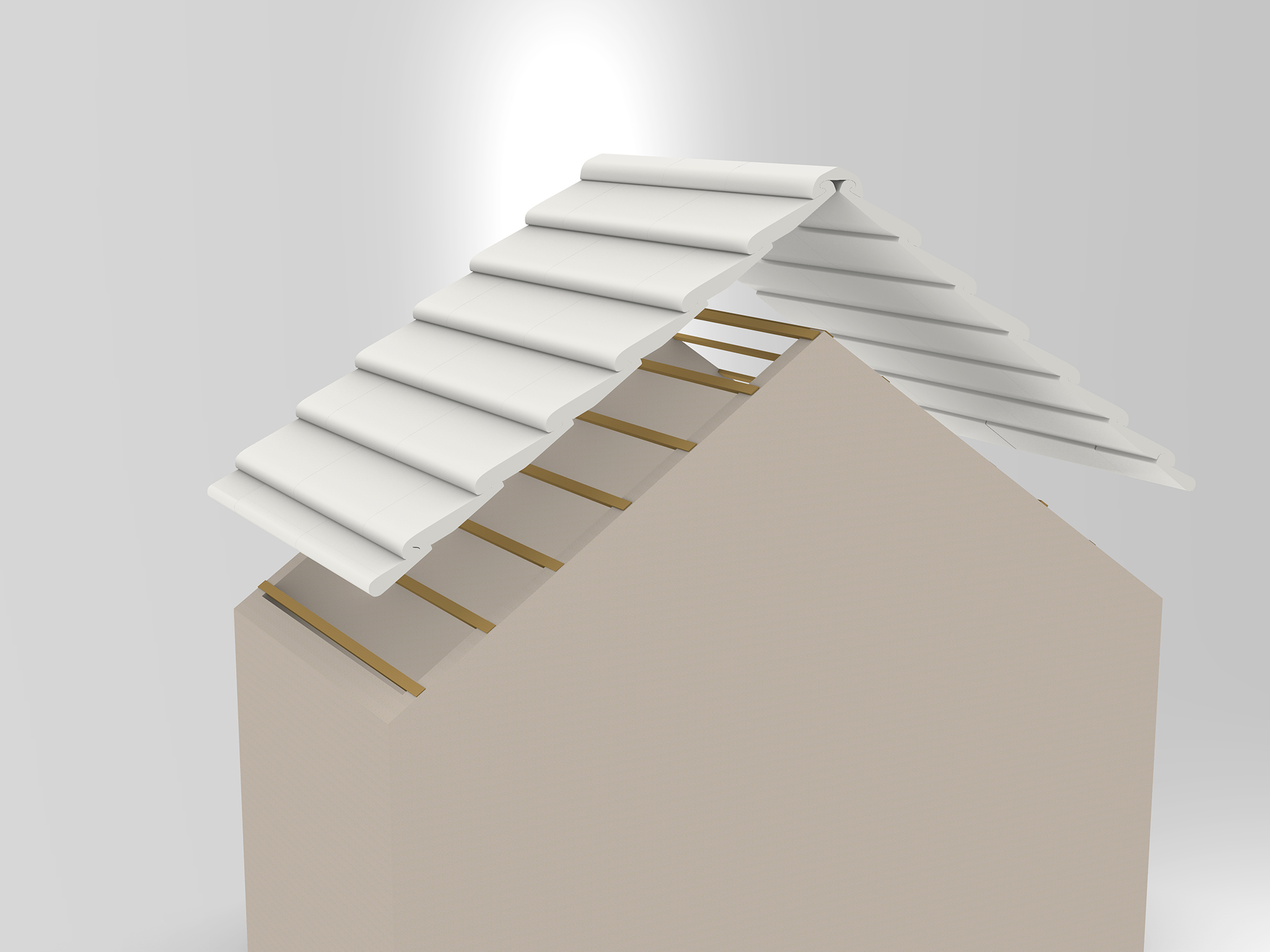
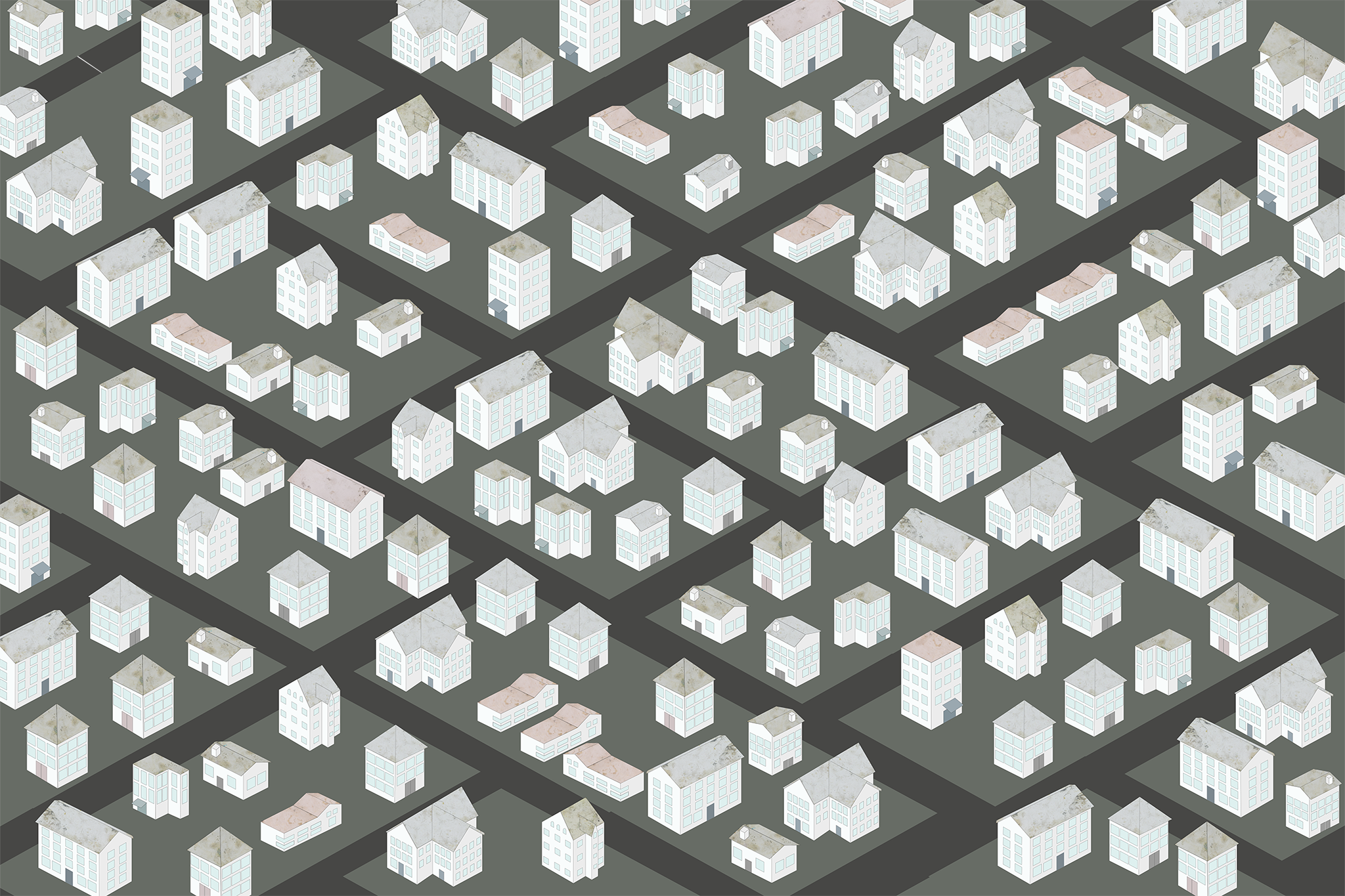
Process:
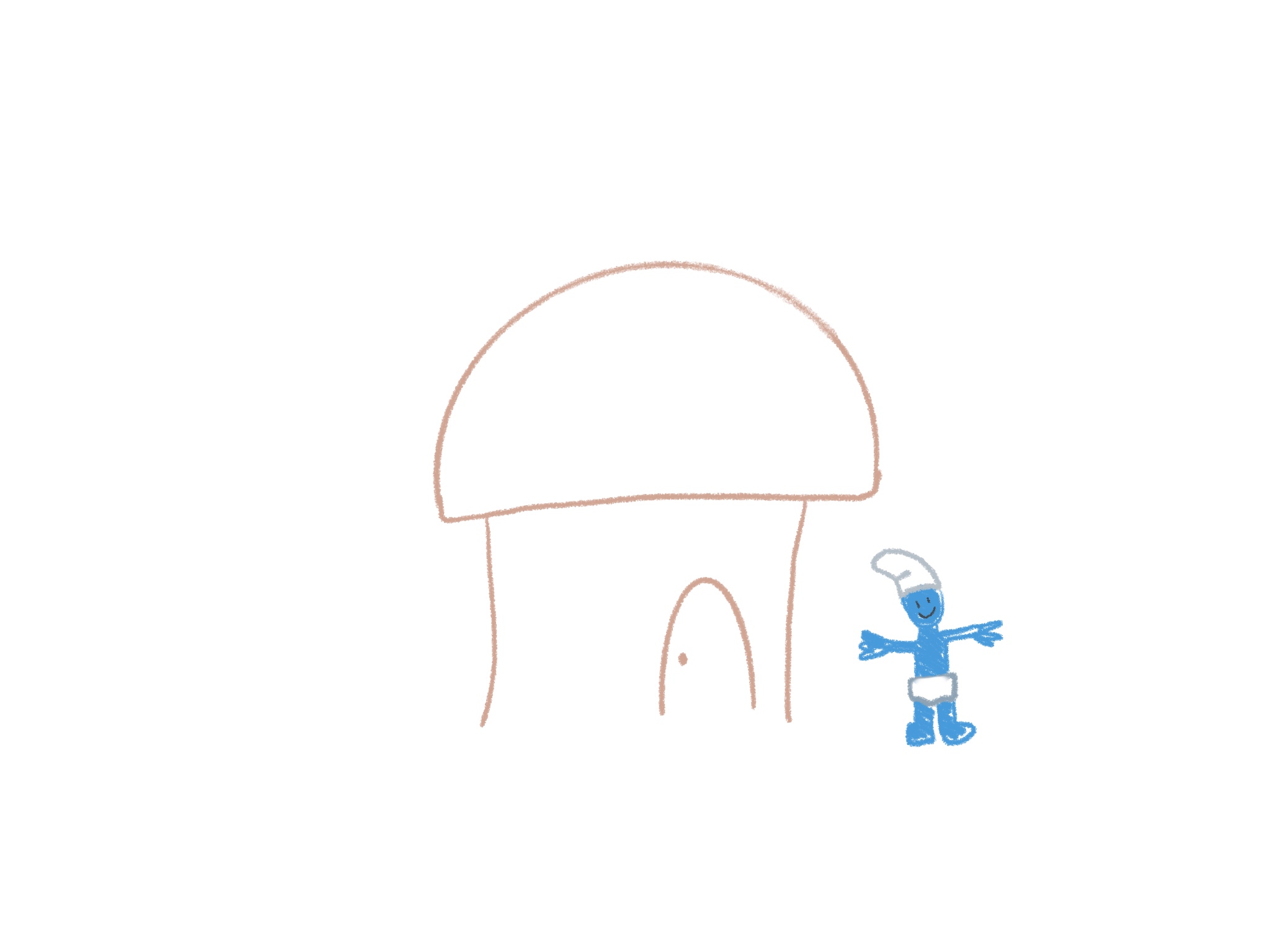
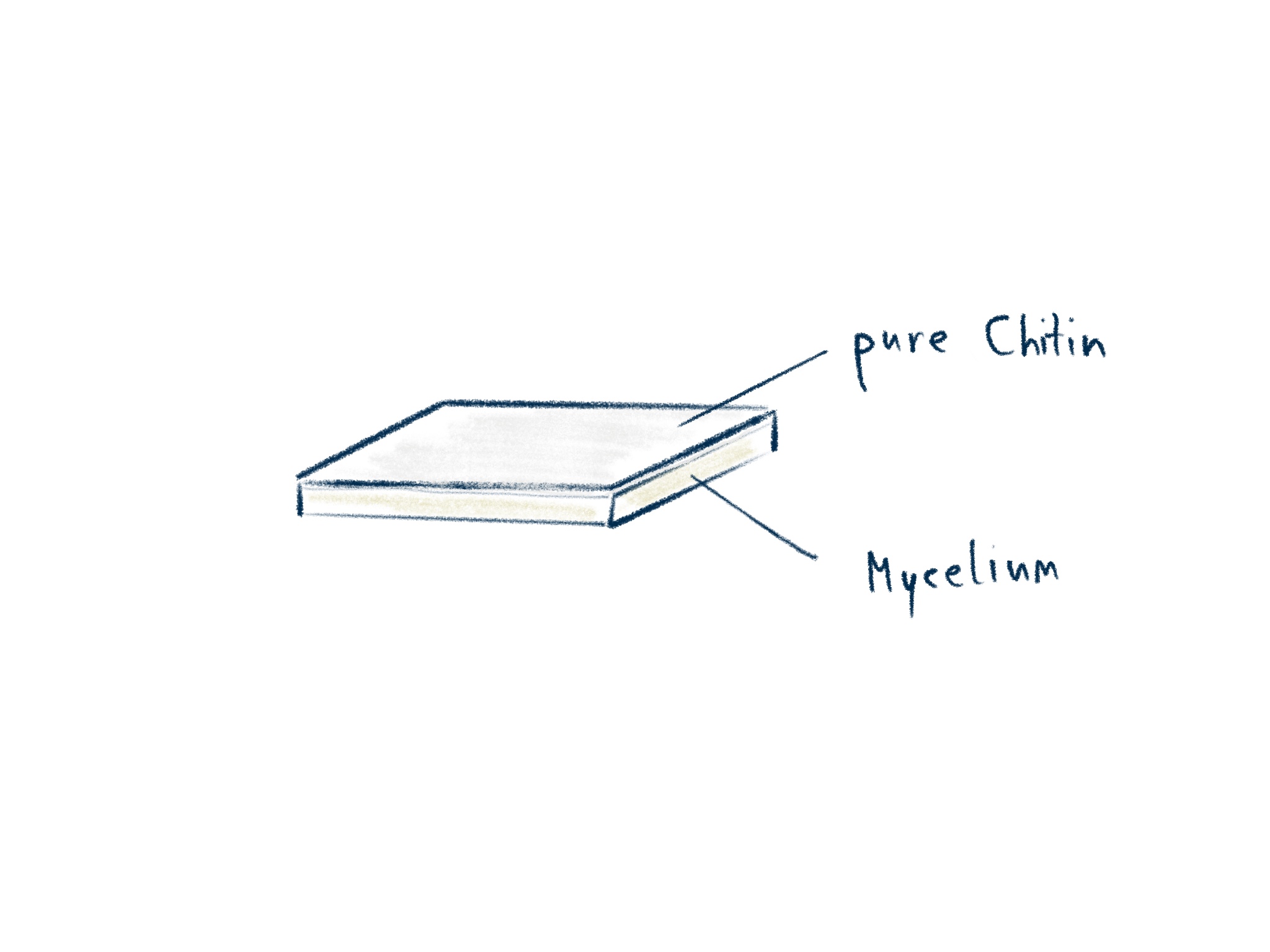
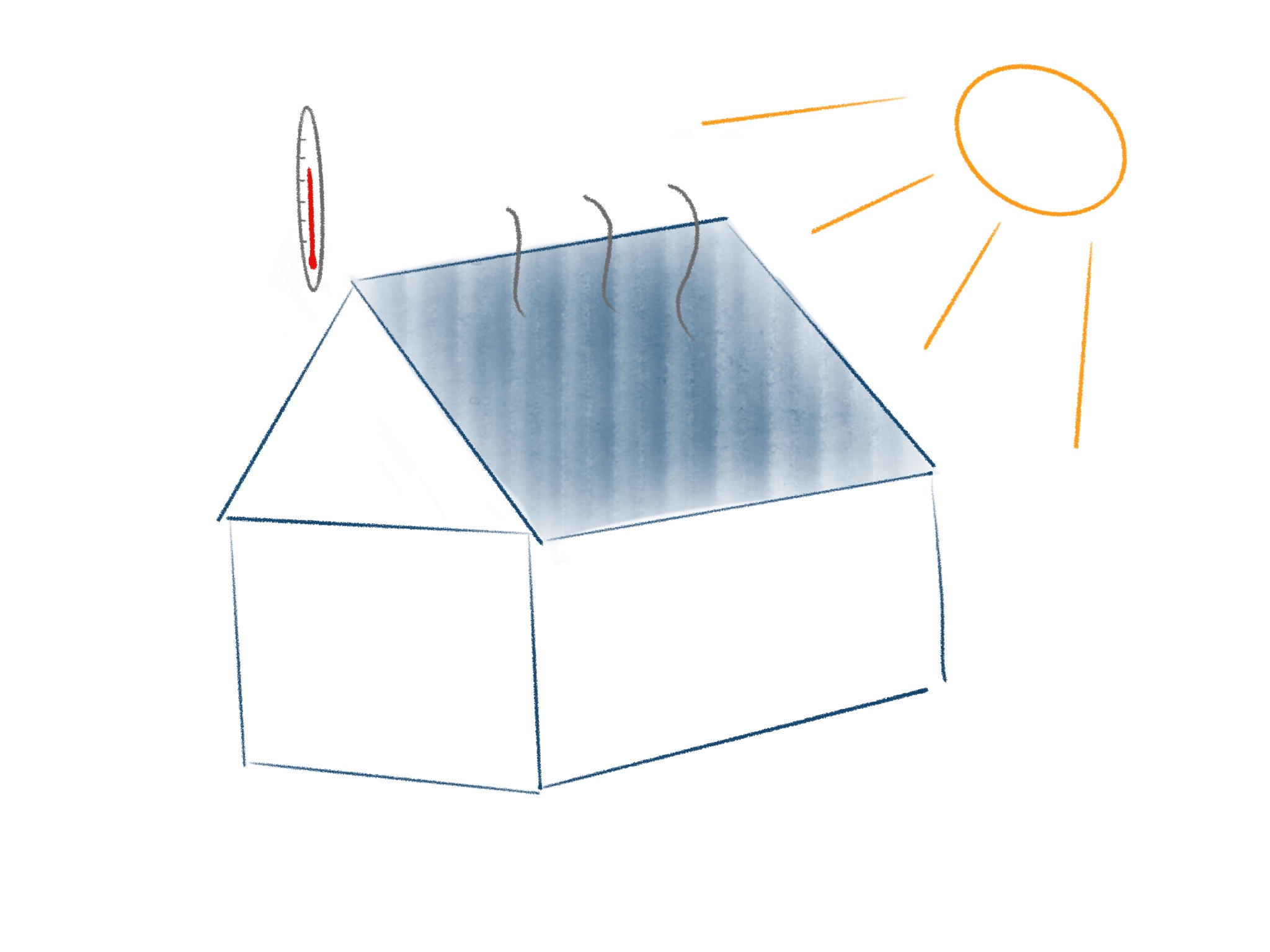
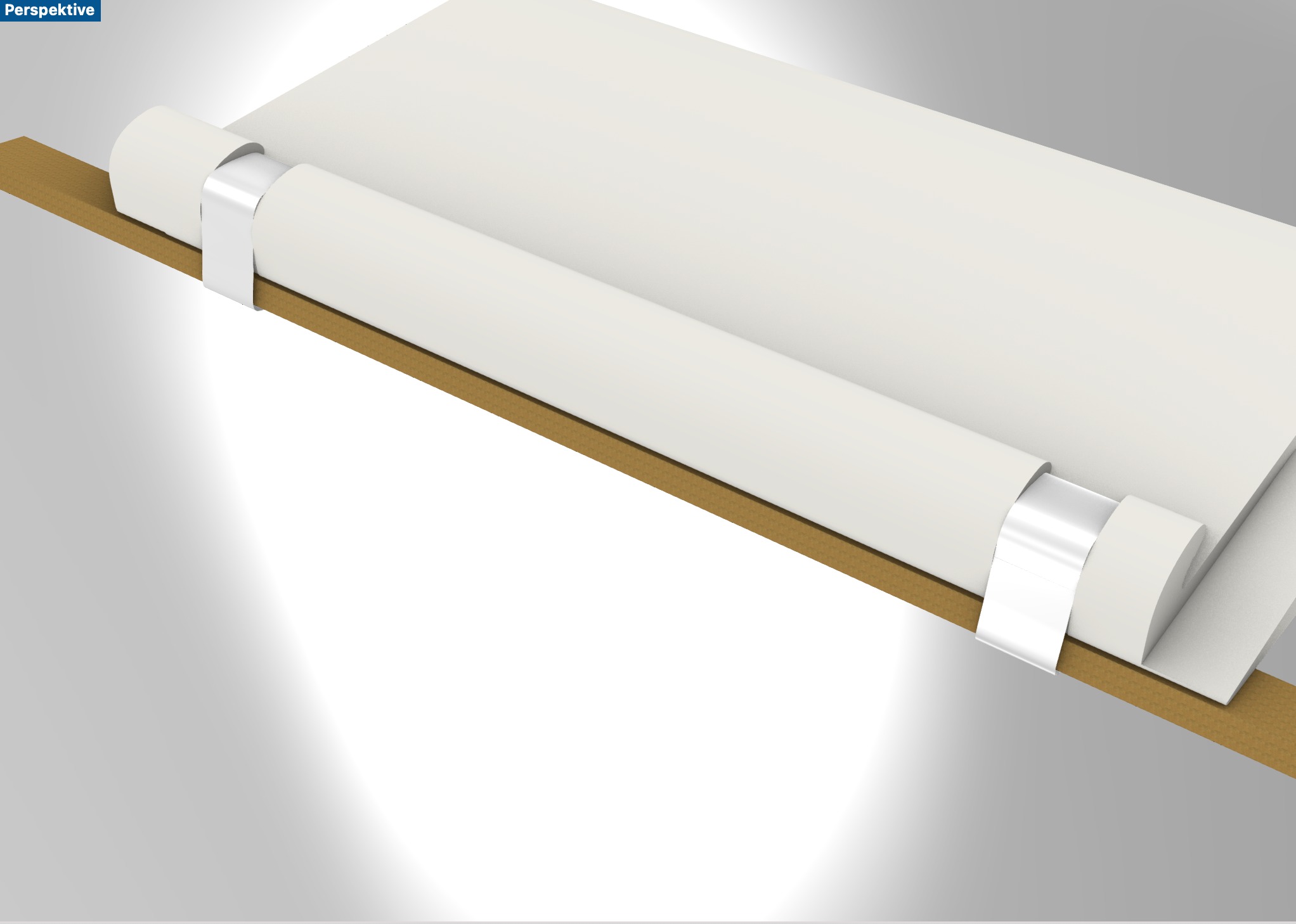
LIGHT UP provides the climate-conscious cyclist with a front and back light, being fueled by their body heat only, no batteries needed. It enables the urban human to be even more adaptable, self-sufficient and visible. It‘s about seeing and being seen. See and be seen, for a climate-friendly future.
ACT:
LIGHT UP enables city cyclists to generate their own light, just using their body heat.
It consists of a handle bar and saddle, that use the human body heat as a free source of energy. With integrated electrothermic converter (TEC) build in, LIGHT UP transforms the bikers body heath into light. The TECs come in form of Peltier tiles that are rounded to fit around the aluminium handlebar, and flat to be embedded into the gel saddle. For the TECs to function, one side has to be heated up, the other one has to be cooled down. The heat induction happens by the body heat of the biker, who grabs around the handle bar and sits on the saddle. Airchannels on the surface of the saddle create air pockets where the temperature can rise. On the cold side, the aluminium bar absorbs the heat for the handle, and air cools down the downside of the saddle. The bullhorn shape of the handle bar enables wind to gush through its hollow structure, to cool it down even more. Through the temperature difference, electricity is being generated, which is conducted via cable to LEDs; two white ones for each handle ending in front and a red one for the back light. The technology is already build into the saddle and handlebar and can be easily put onto every bike.
Naturally, when it gets dark, the temperatures drop, increasing the effect Peltier tiles have. Therefore, LIGHT UP works best in its own field of use by default.
IMPACT:
With only needing a simple temperature difference, LIGHT UP enables the modern cyclist to be adaptable, no batteries are necessary anymore. It aims for a maximum of independence, simplicity and climate-consciousness. Users are self-reliant and never have to go through light-shortage again. Especially in hectic cities, seeing and being seen can be vital for cyclists and LIGHT UP aims to be a reliable partner in that quest.
Roya Haupt, 3.sem, WS 2020/21
Project:
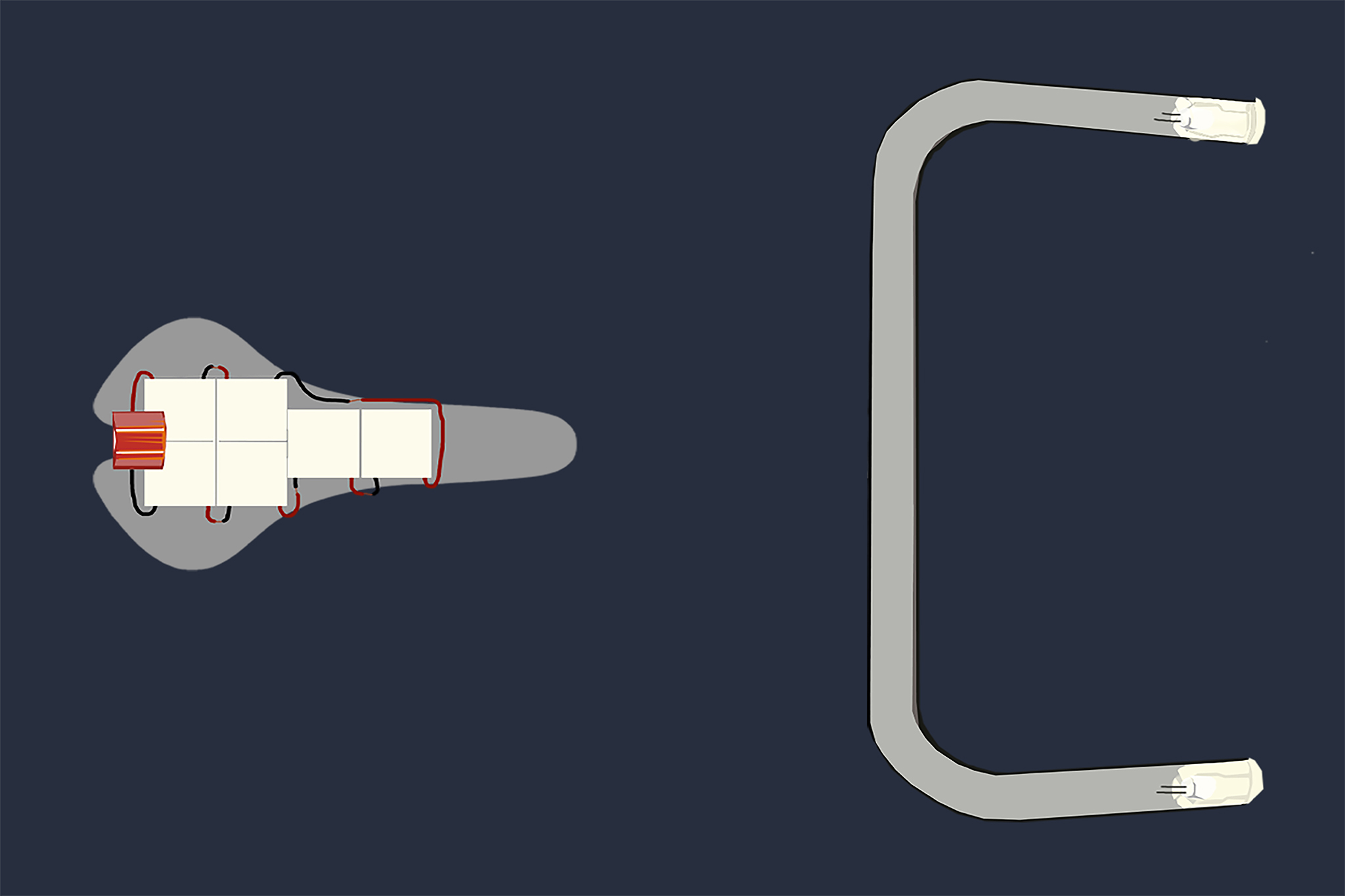 Drawing of construction_inner layer
Drawing of construction_inner layer
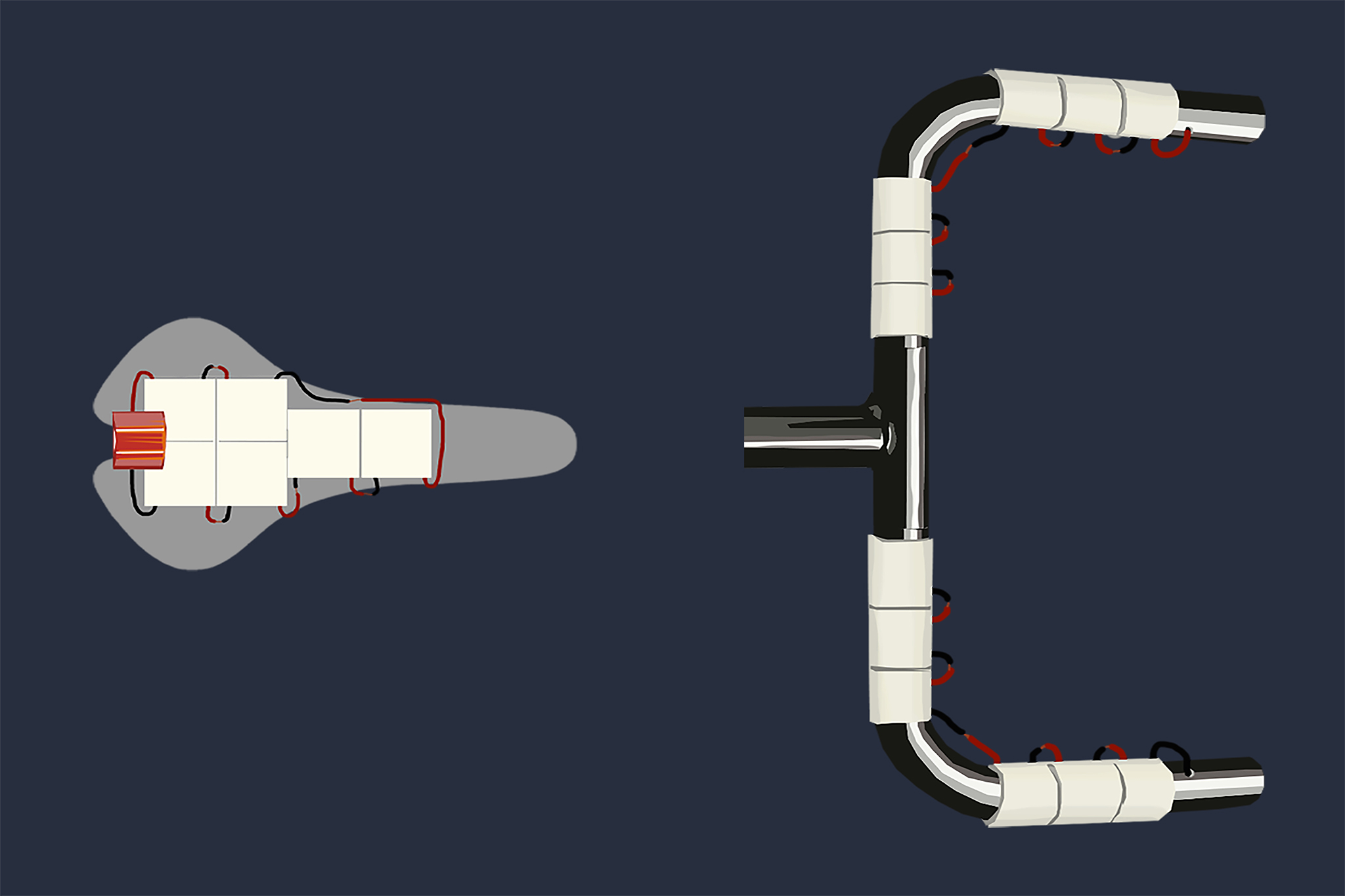 Drawing of construction_middle layer
Drawing of construction_middle layer
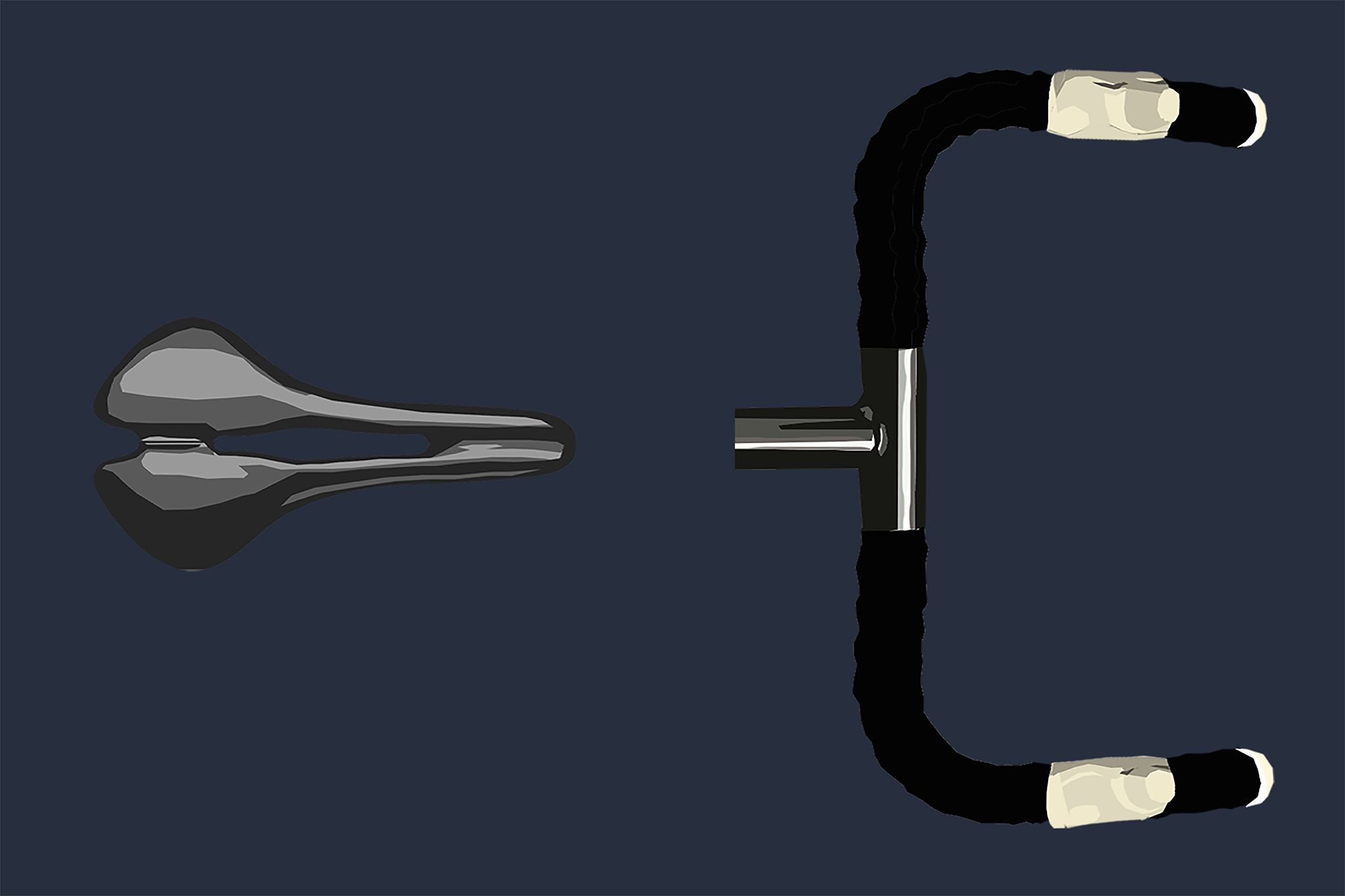 Drawing of construction_most outer layer
Drawing of construction_most outer layer
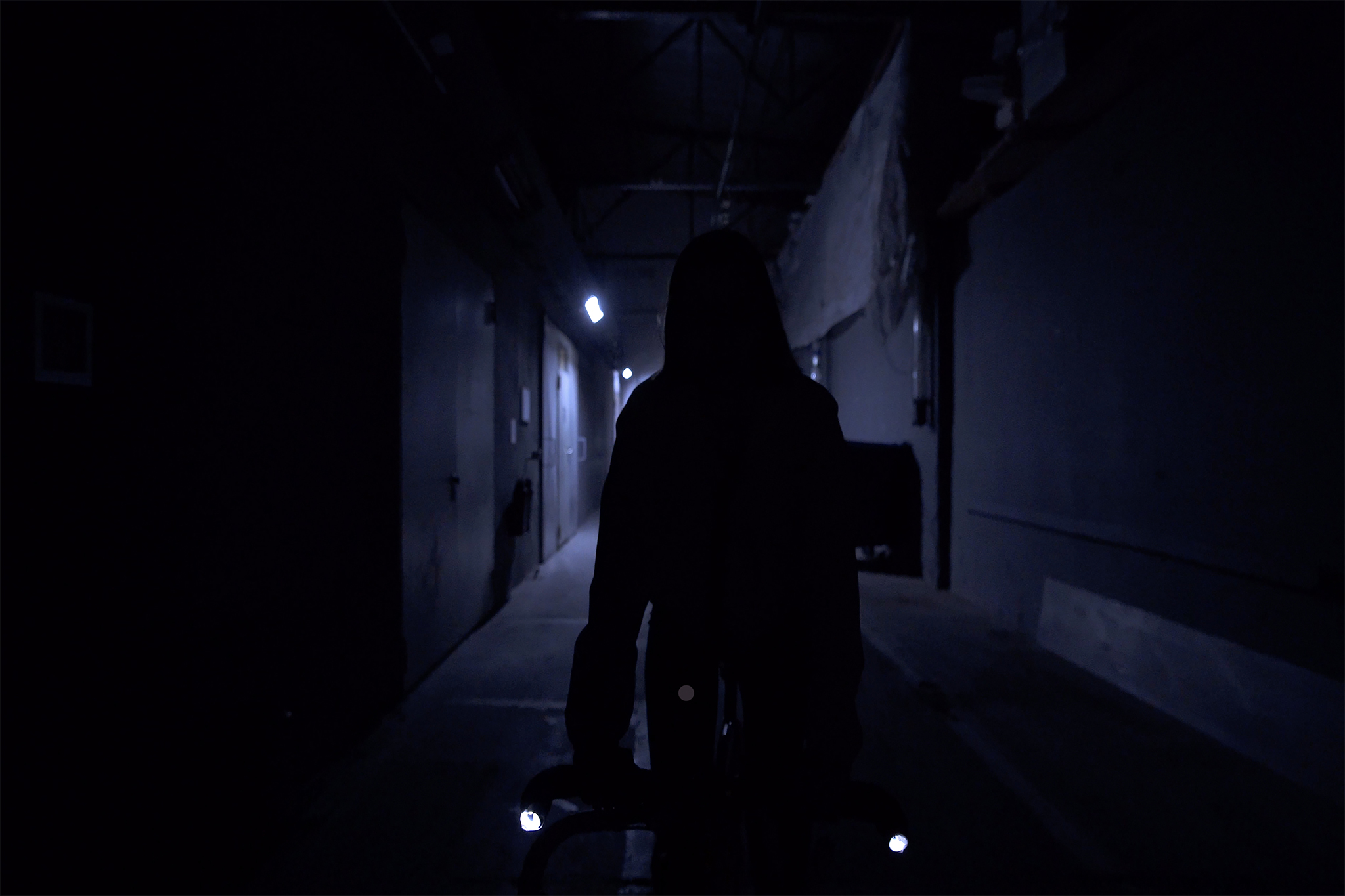
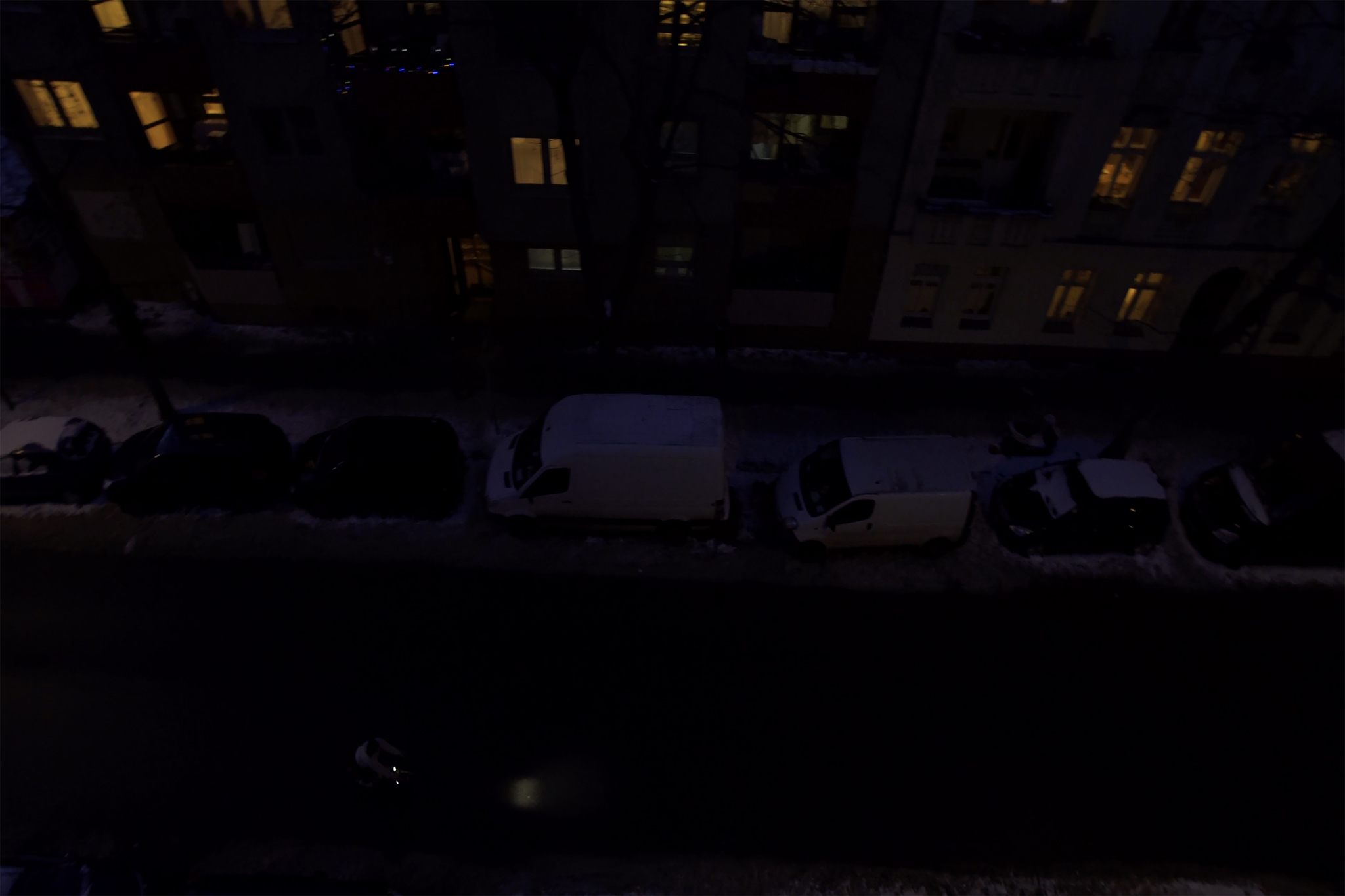 Person cycling through the nightly city
Person cycling through the nightly city
 Close up of handle with bike handle hand stopper
Close up of handle with bike handle hand stopper
 Rendering of handle bar plug, including lens, cut out for air circuit and place for LED (renderings by John Lörinci)
Rendering of handle bar plug, including lens, cut out for air circuit and place for LED (renderings by John Lörinci)
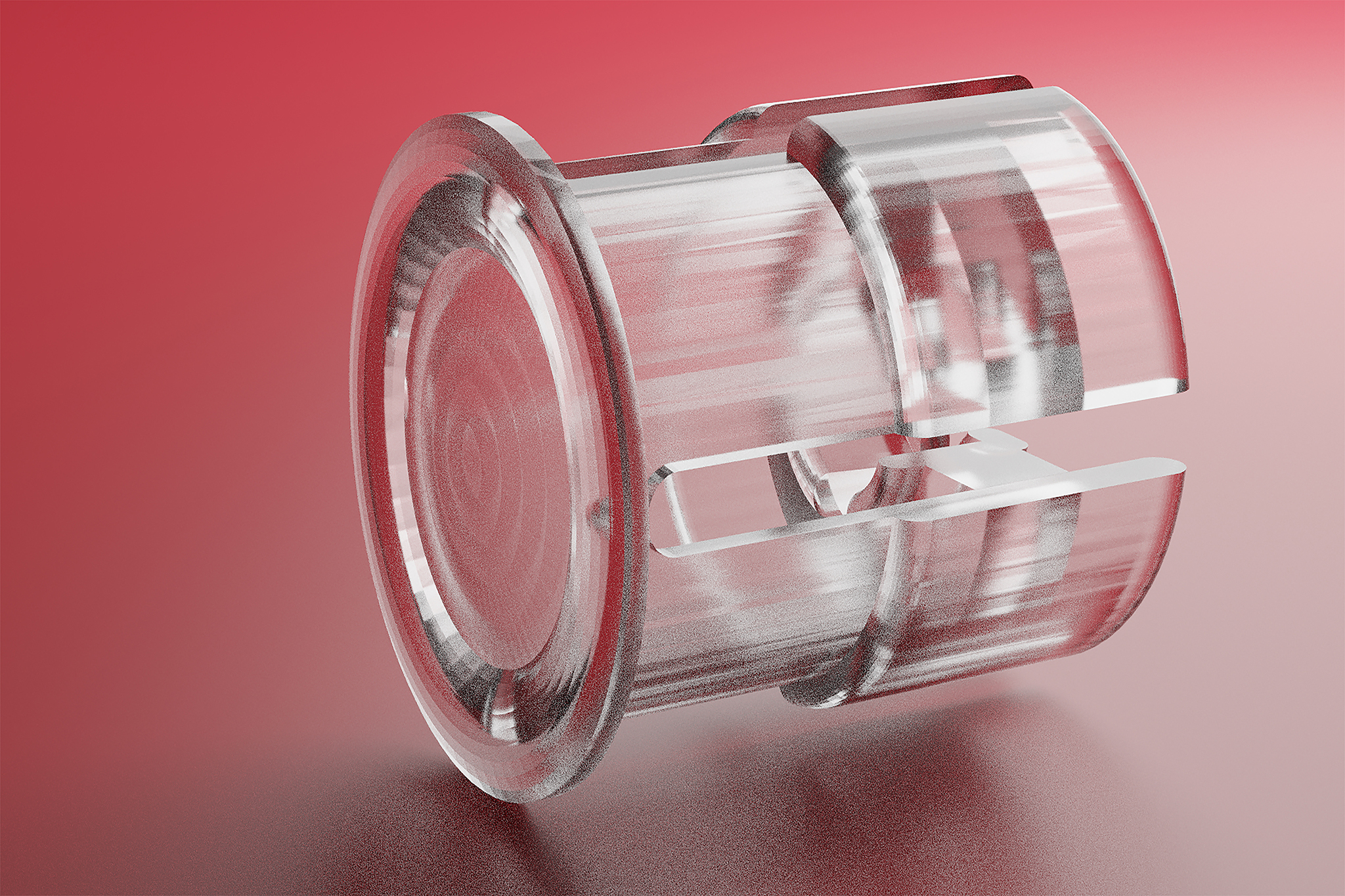 Rendering of handle bar plug, including lens, cut out for air circuit and place for LED (renderings by John Lörinci)
Rendering of handle bar plug, including lens, cut out for air circuit and place for LED (renderings by John Lörinci)
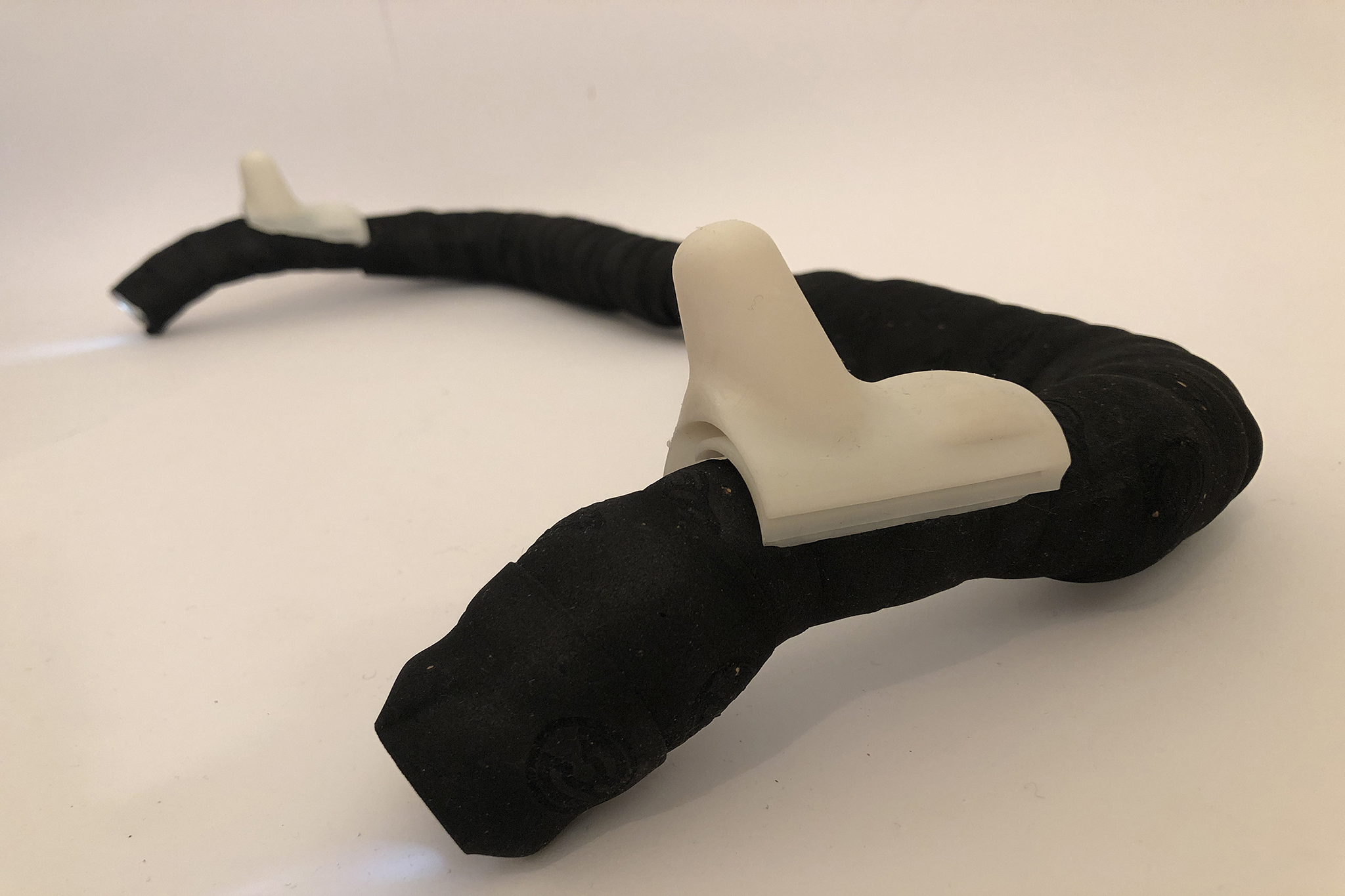 Bike handle hand stopper with lense and cut out
Bike handle hand stopper with lense and cut out
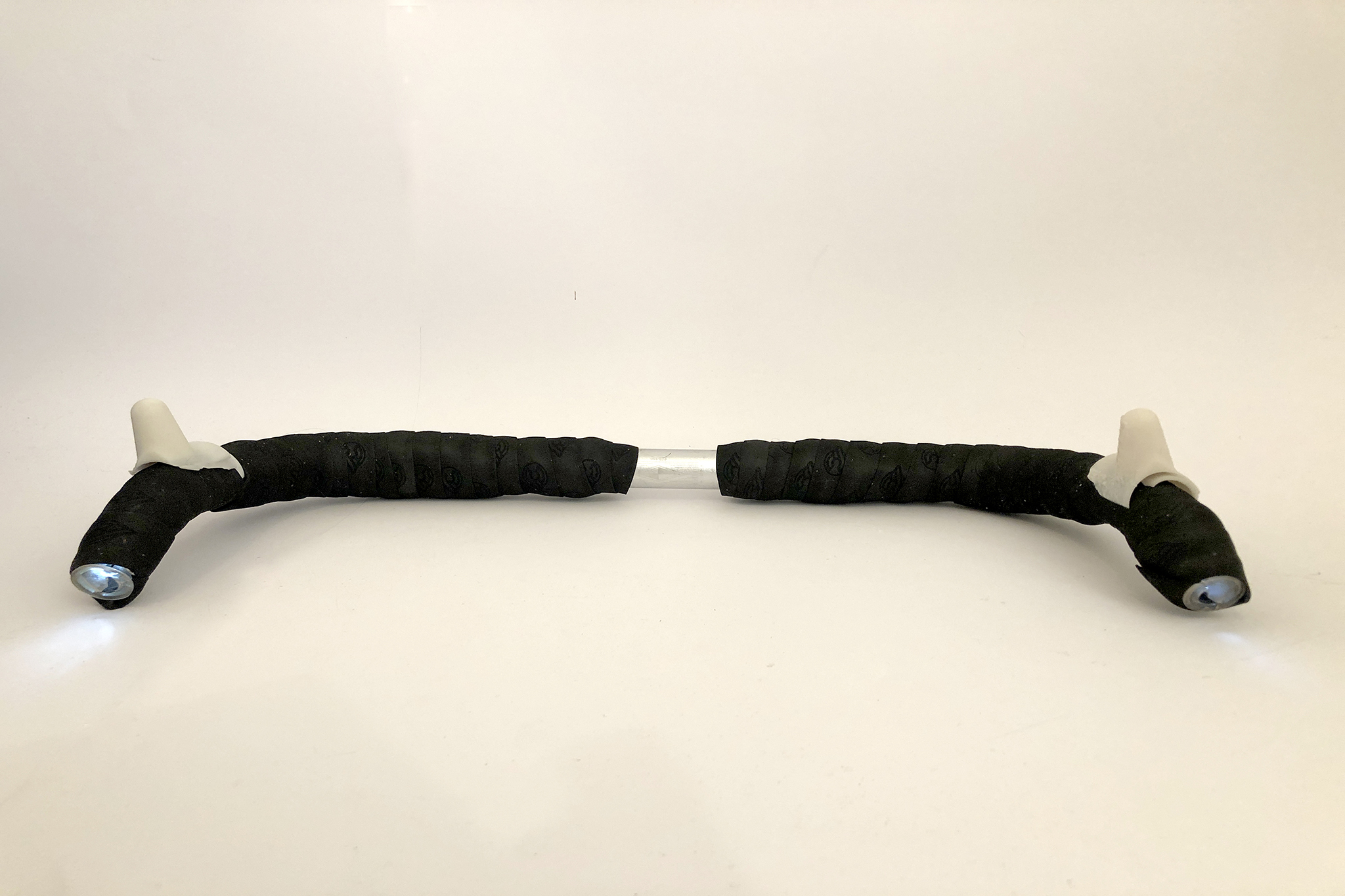 Handle bar with lit up handle bar plugs and bike handle hand stoppers
Handle bar with lit up handle bar plugs and bike handle hand stoppers
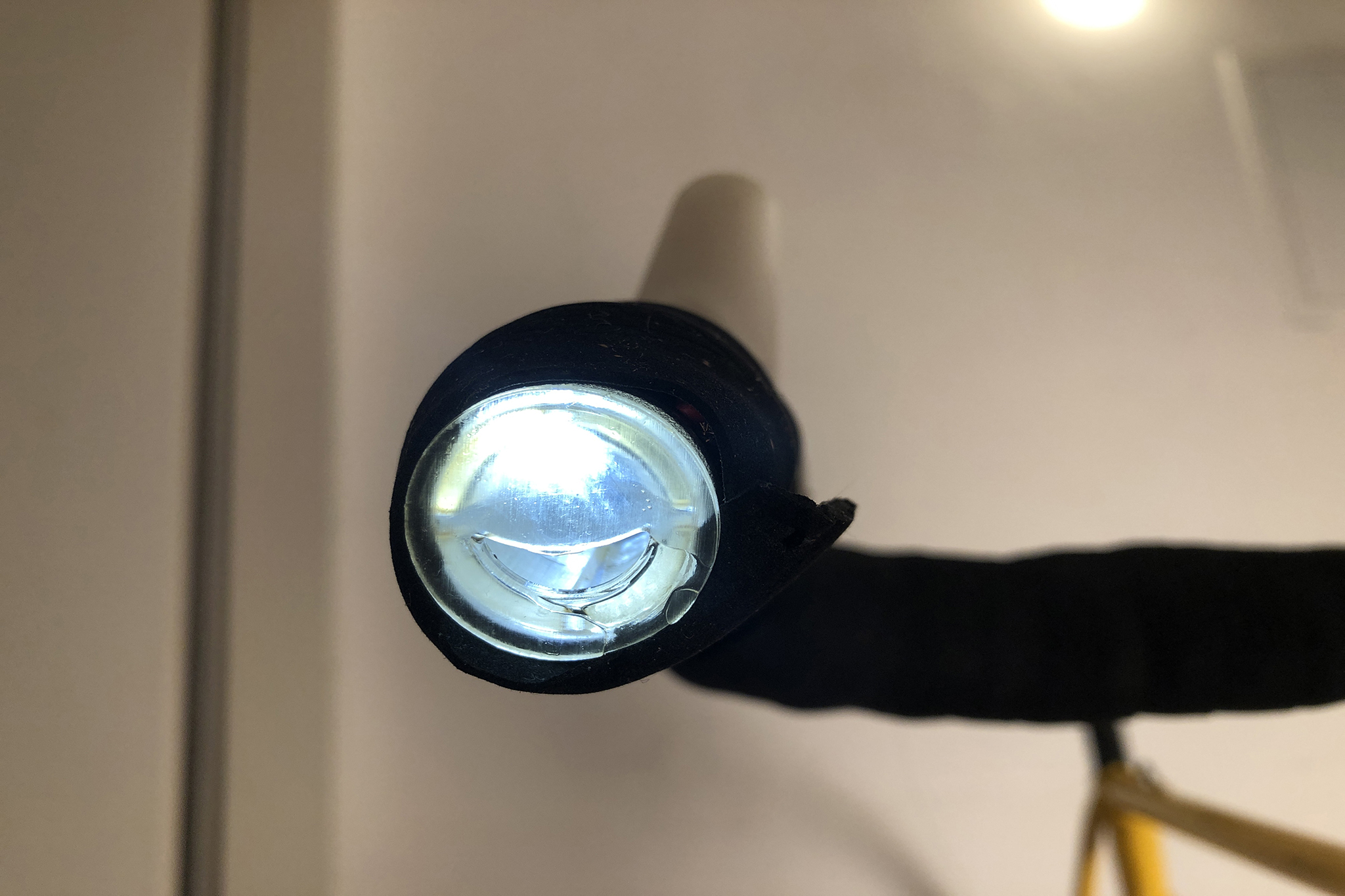 Bike handle hand stopper with lense
Bike handle hand stopper with lense
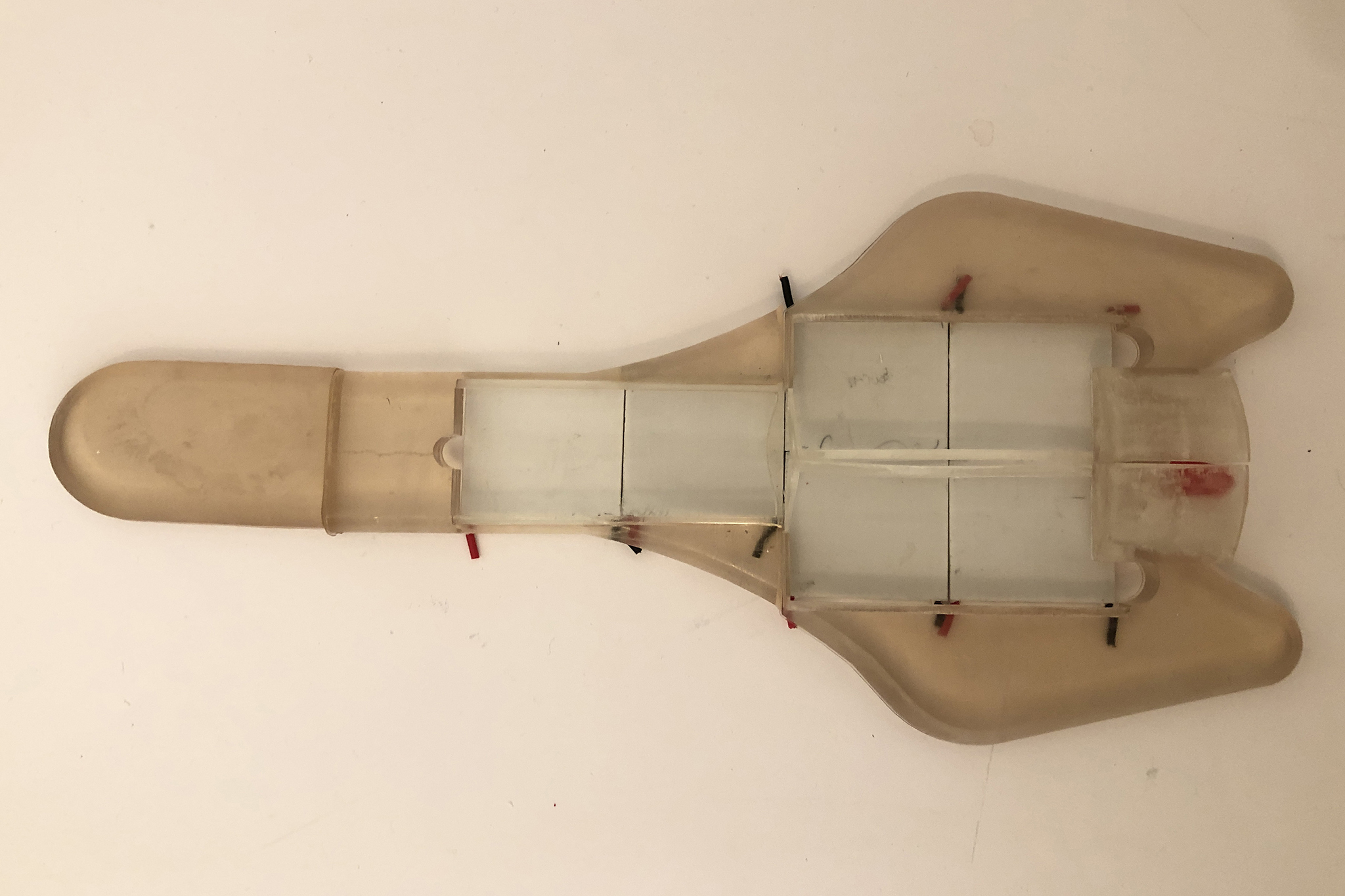
Saddle rendered and 3D printed parts
Process:
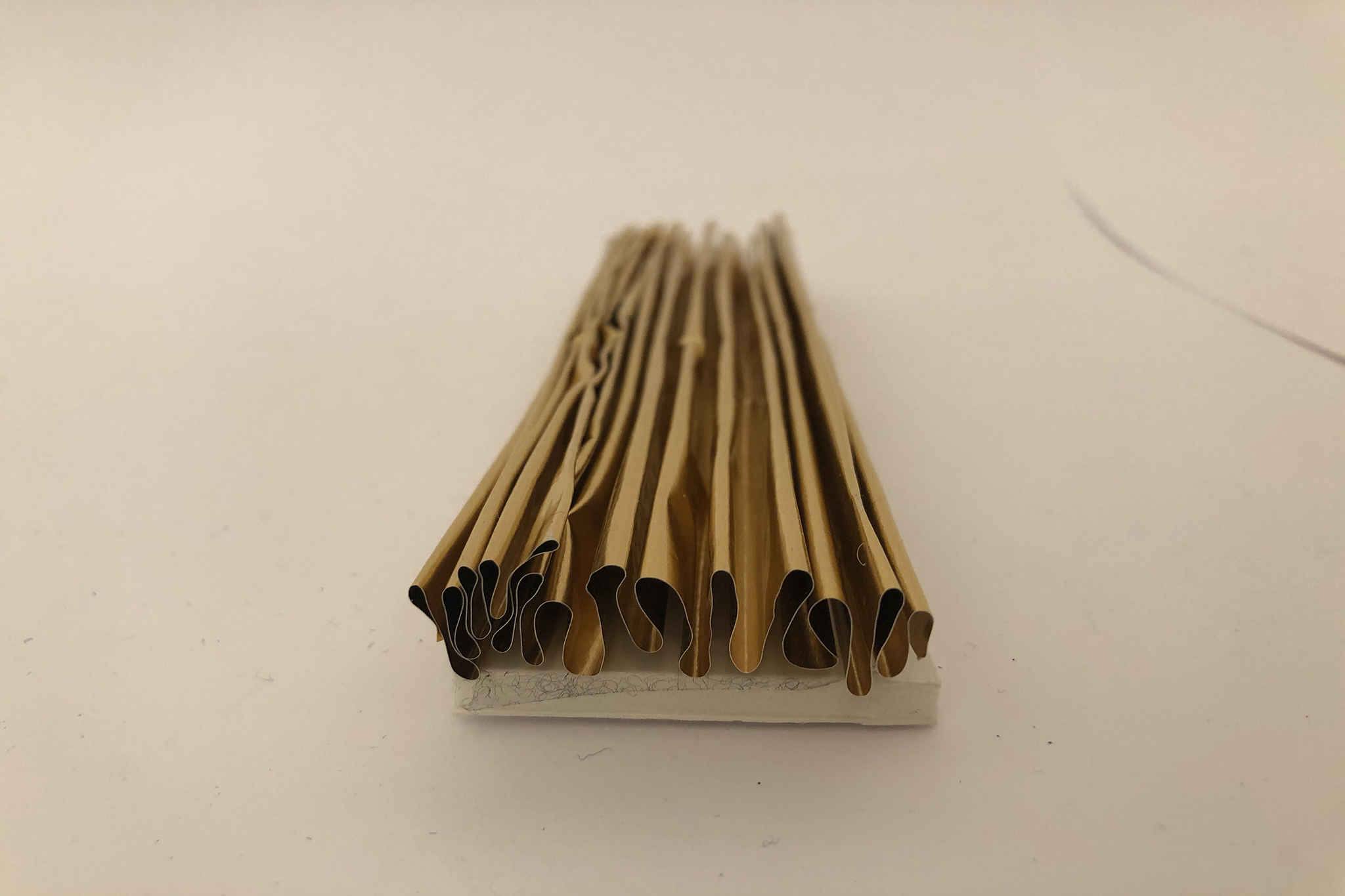 Mock Up cupper heat sink
Mock Up cupper heat sink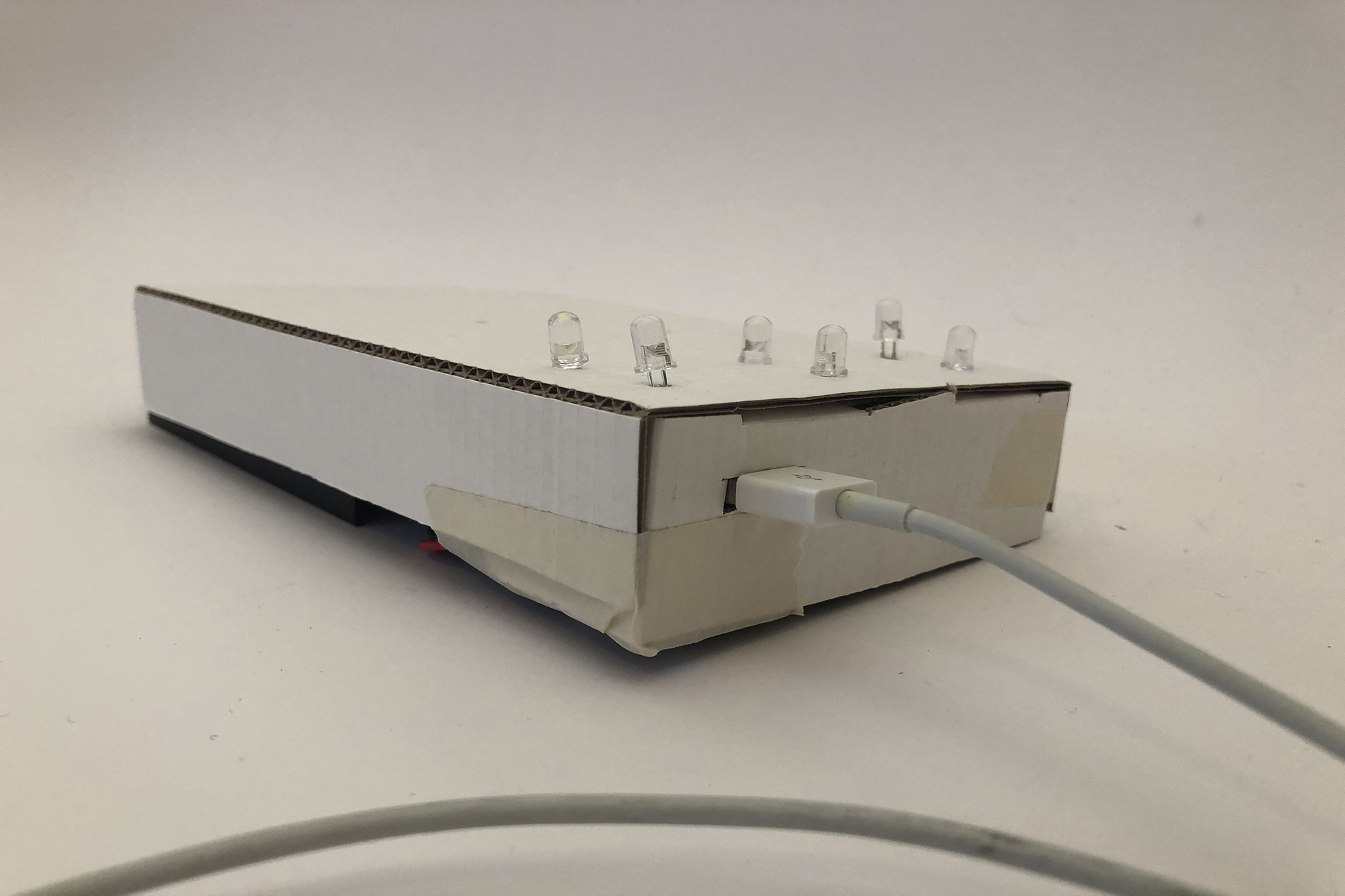 Mock up for battery package
Mock up for battery package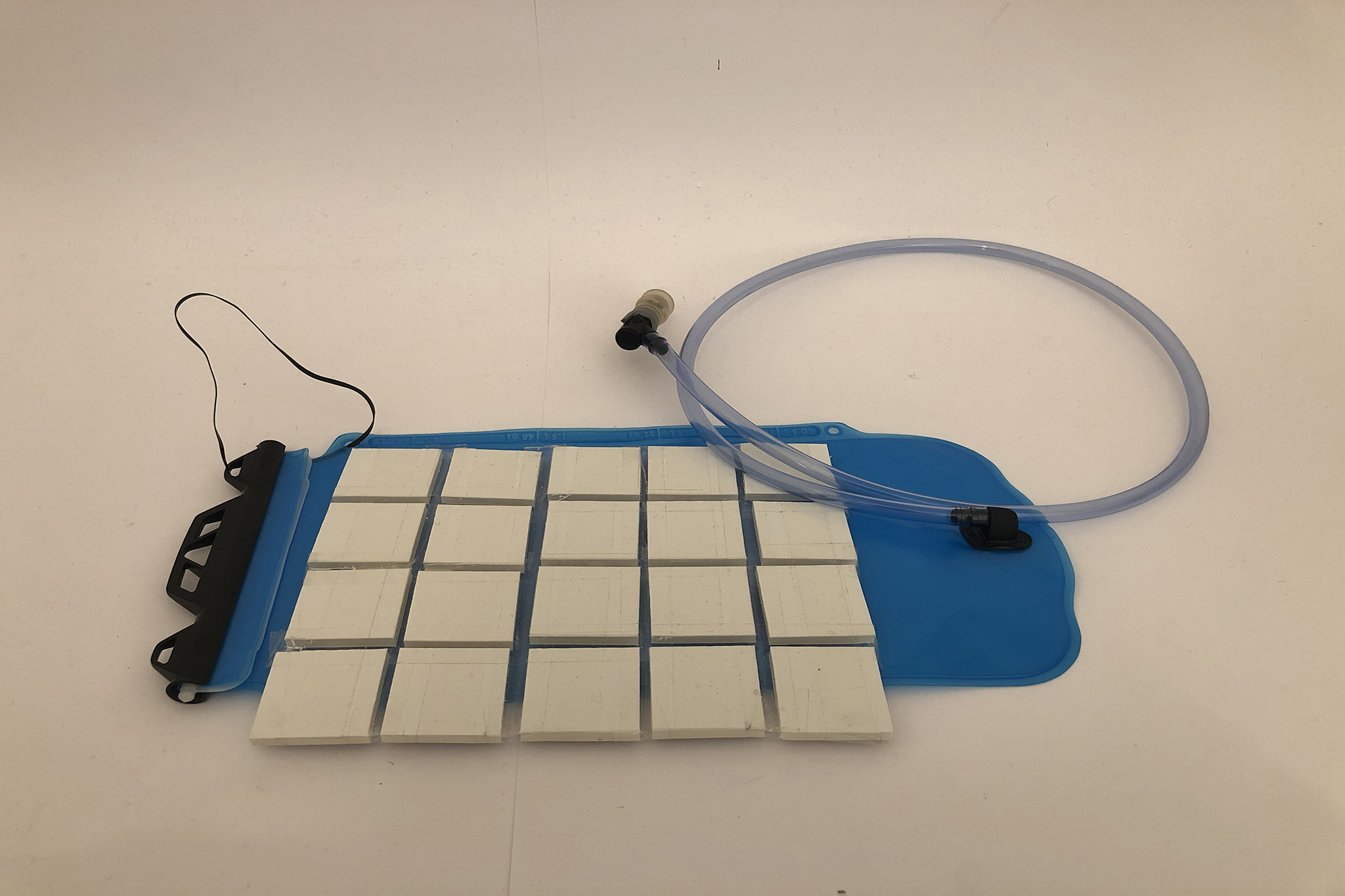 Modell with water tank
Modell with water tank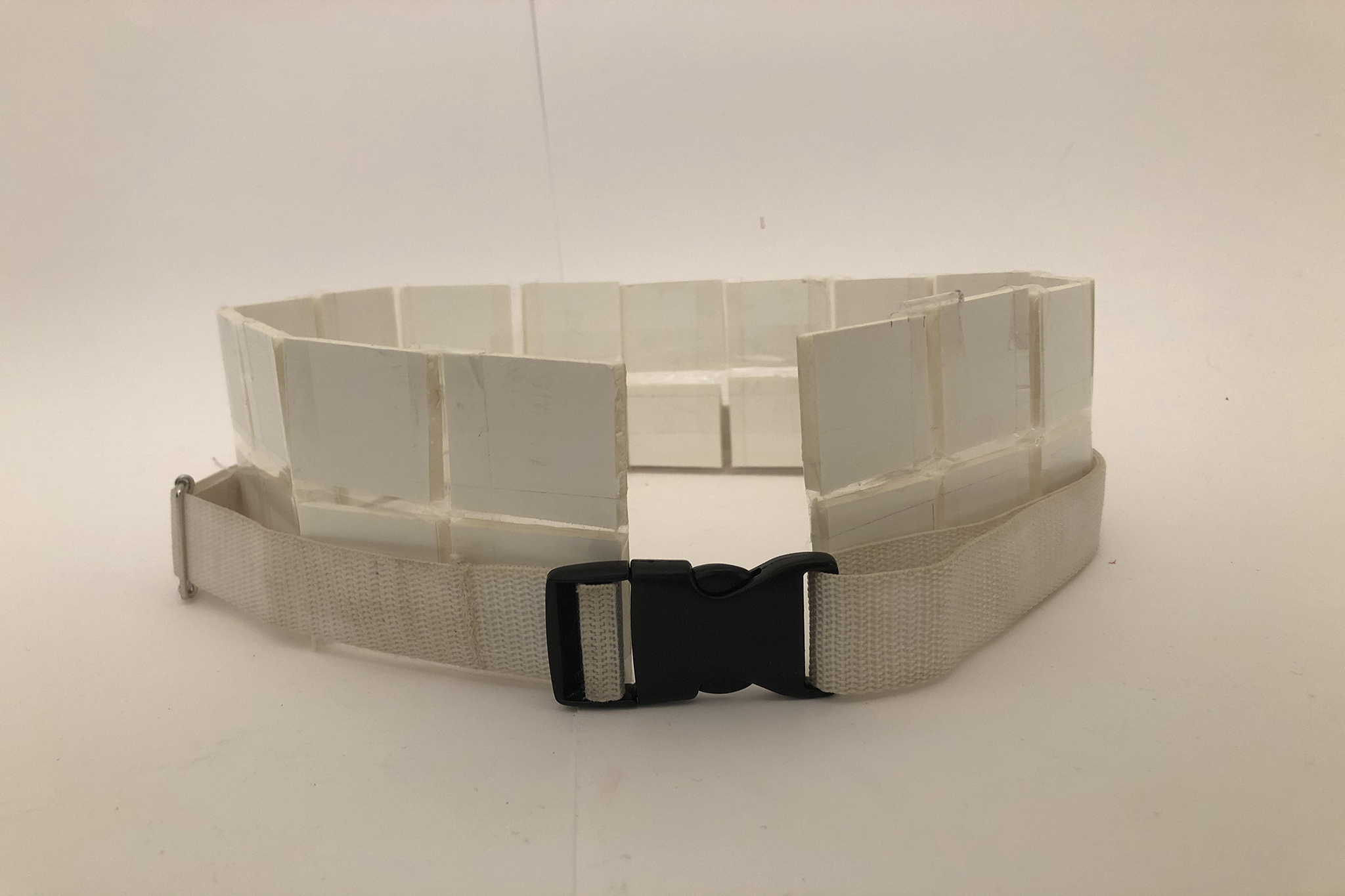 Mock Up running belt
Mock Up running belt
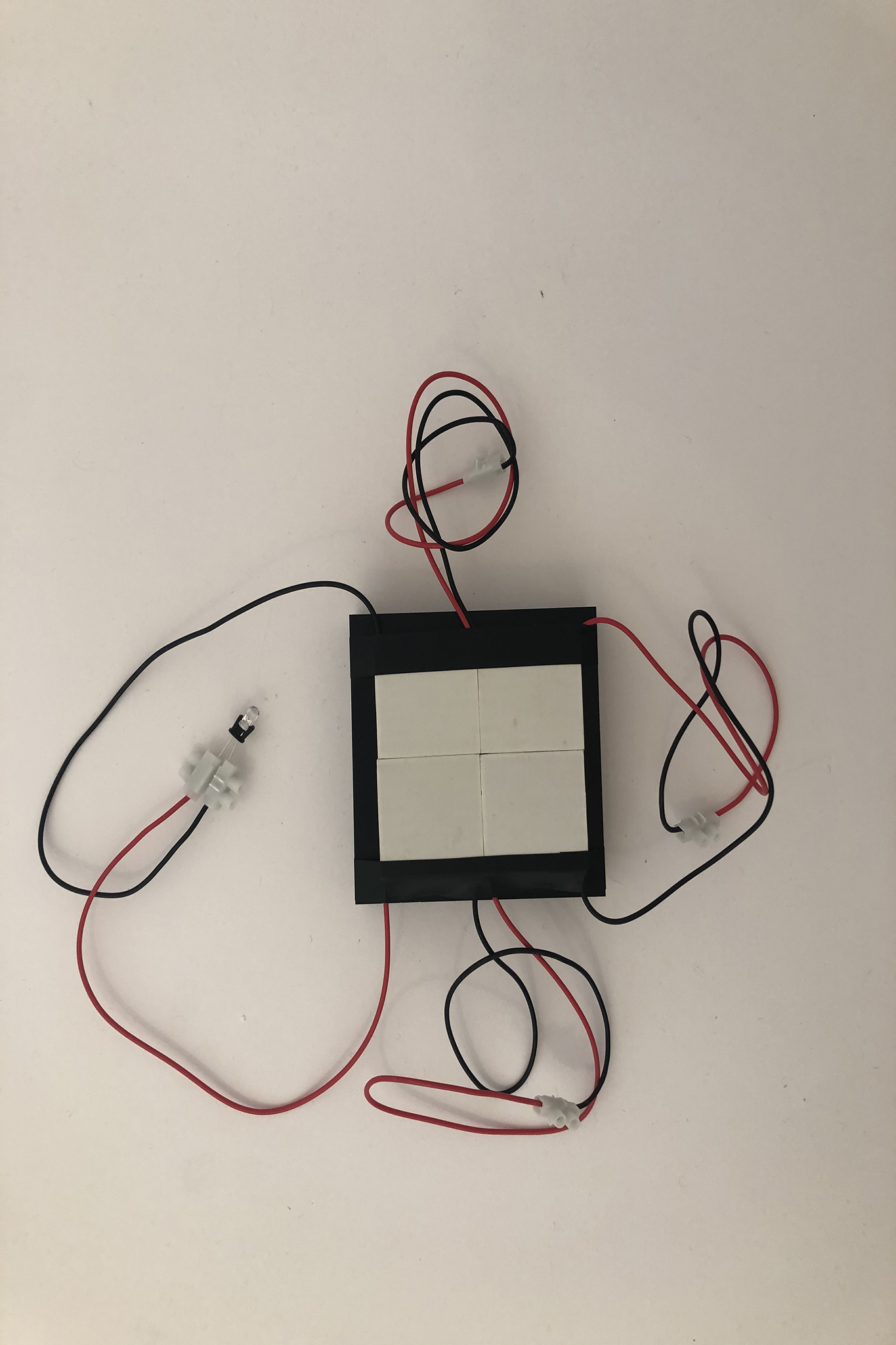 Trial circuit with small aluminium
Trial circuit with small aluminium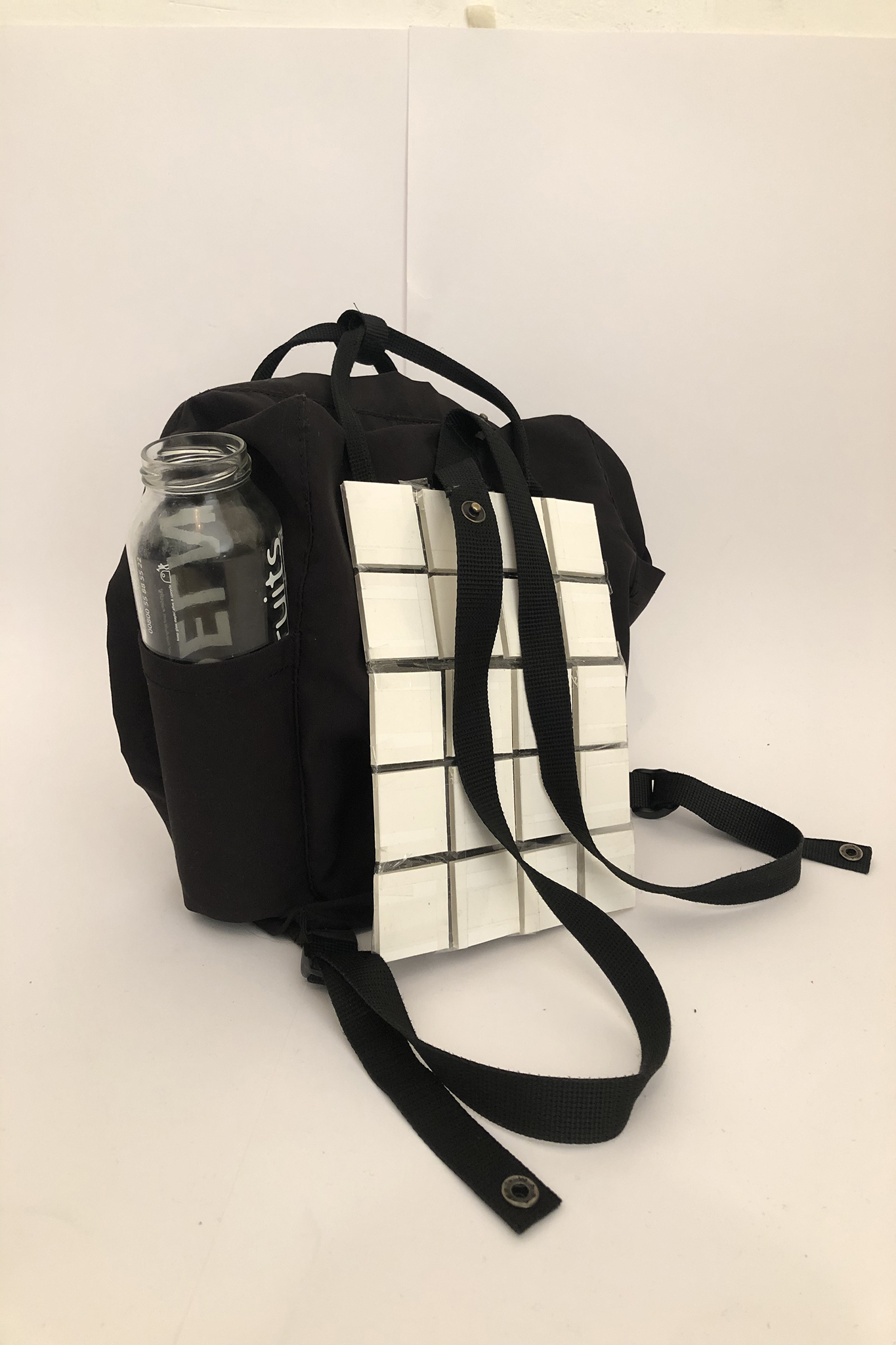 Model of hypothetical backpack
Model of hypothetical backpack
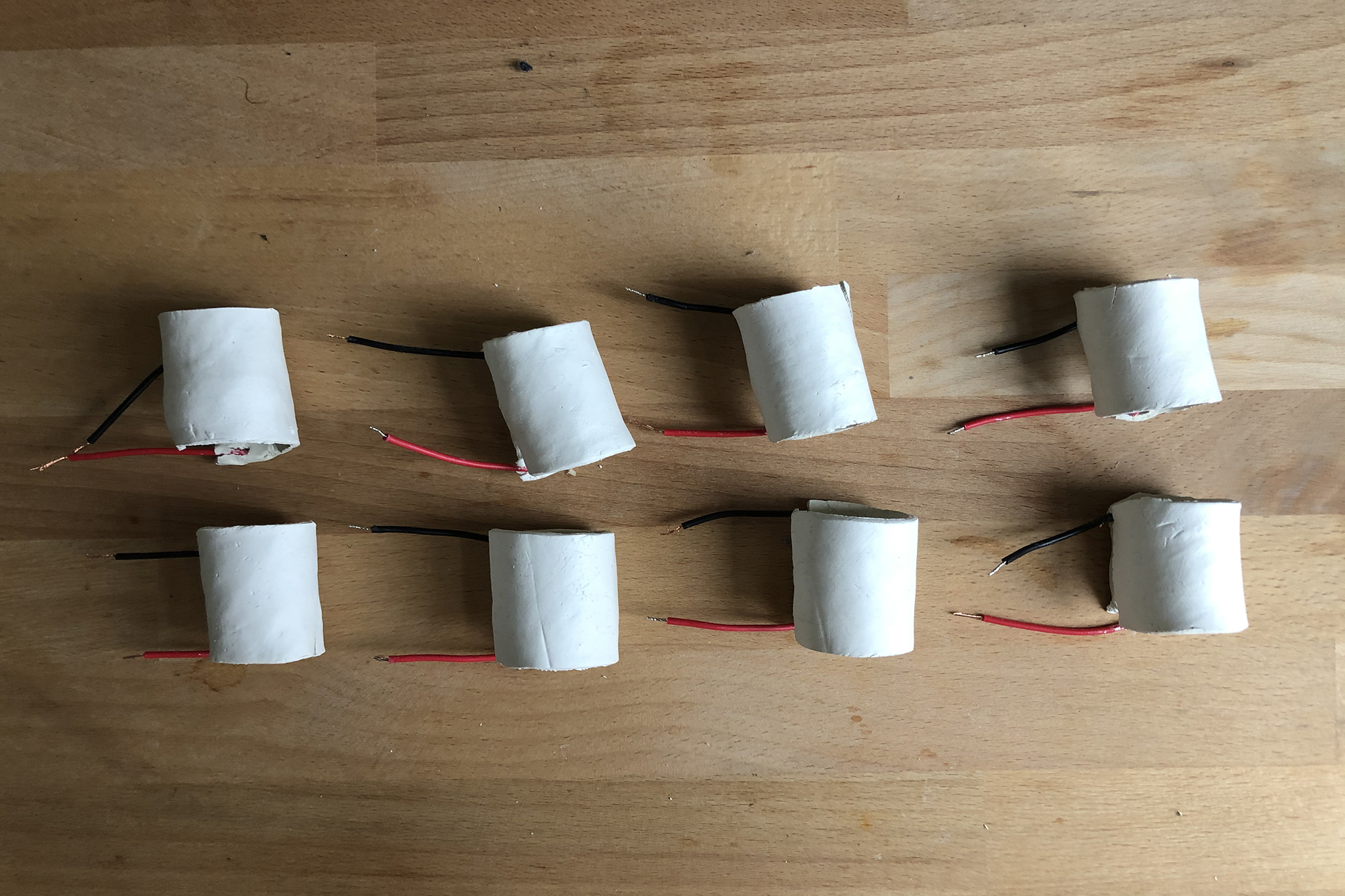 Peltier tile modells
Peltier tile modells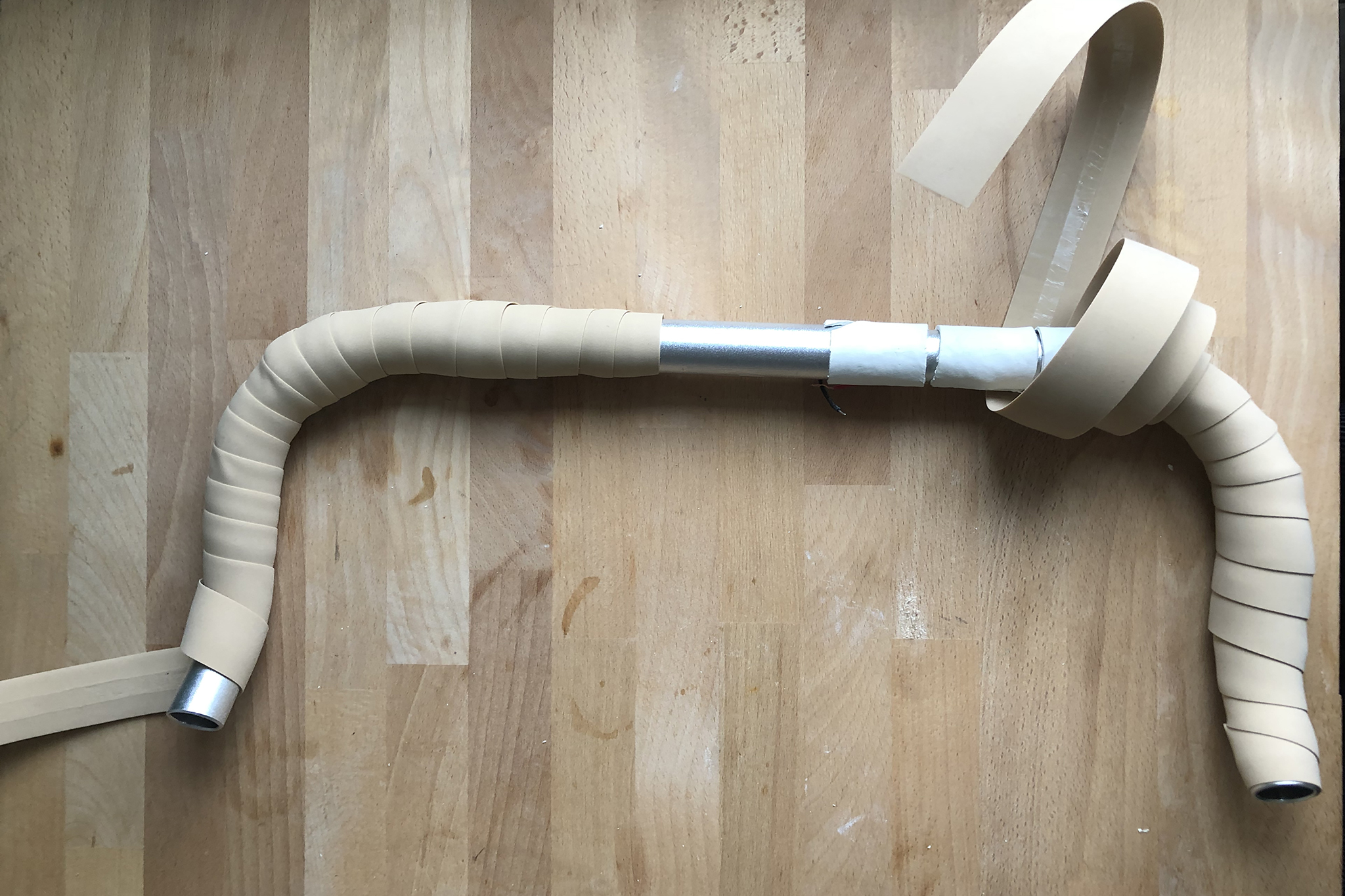 Handle bar with rounded Peltier tiles in the making
Handle bar with rounded Peltier tiles in the making
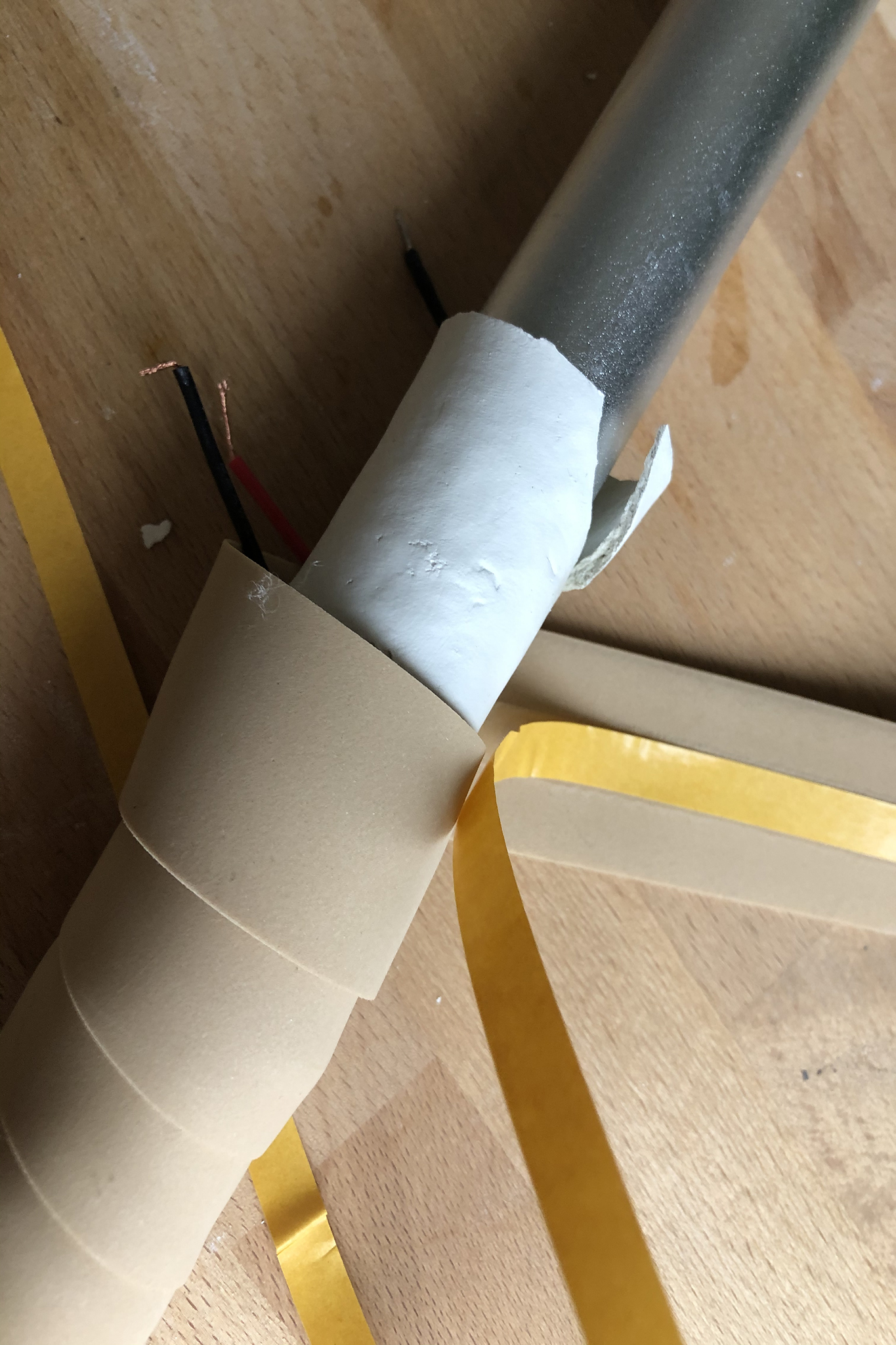 Tape for handle bar
Tape for handle bar
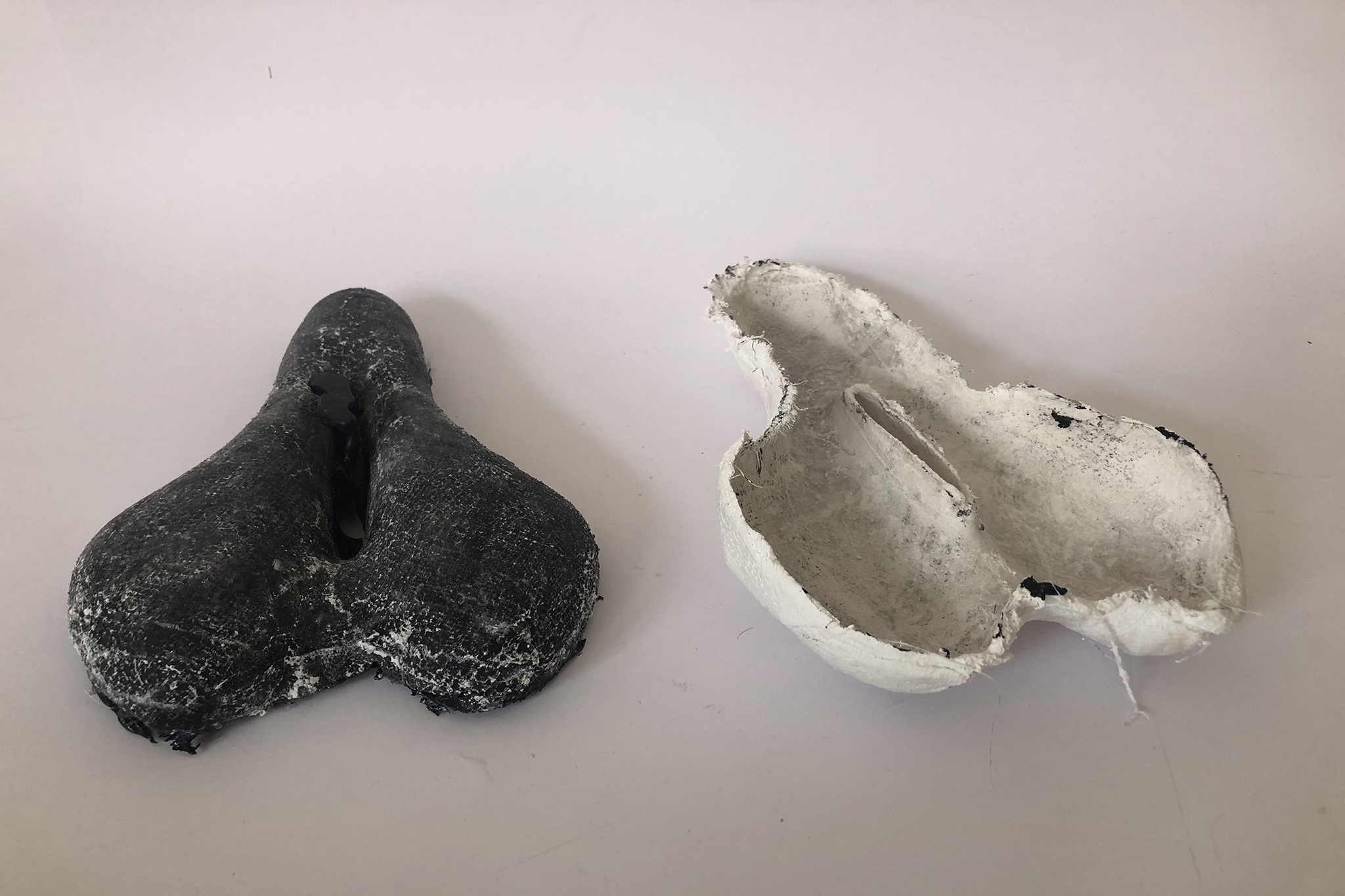 Saddle out of silicon with cast
Saddle out of silicon with cast
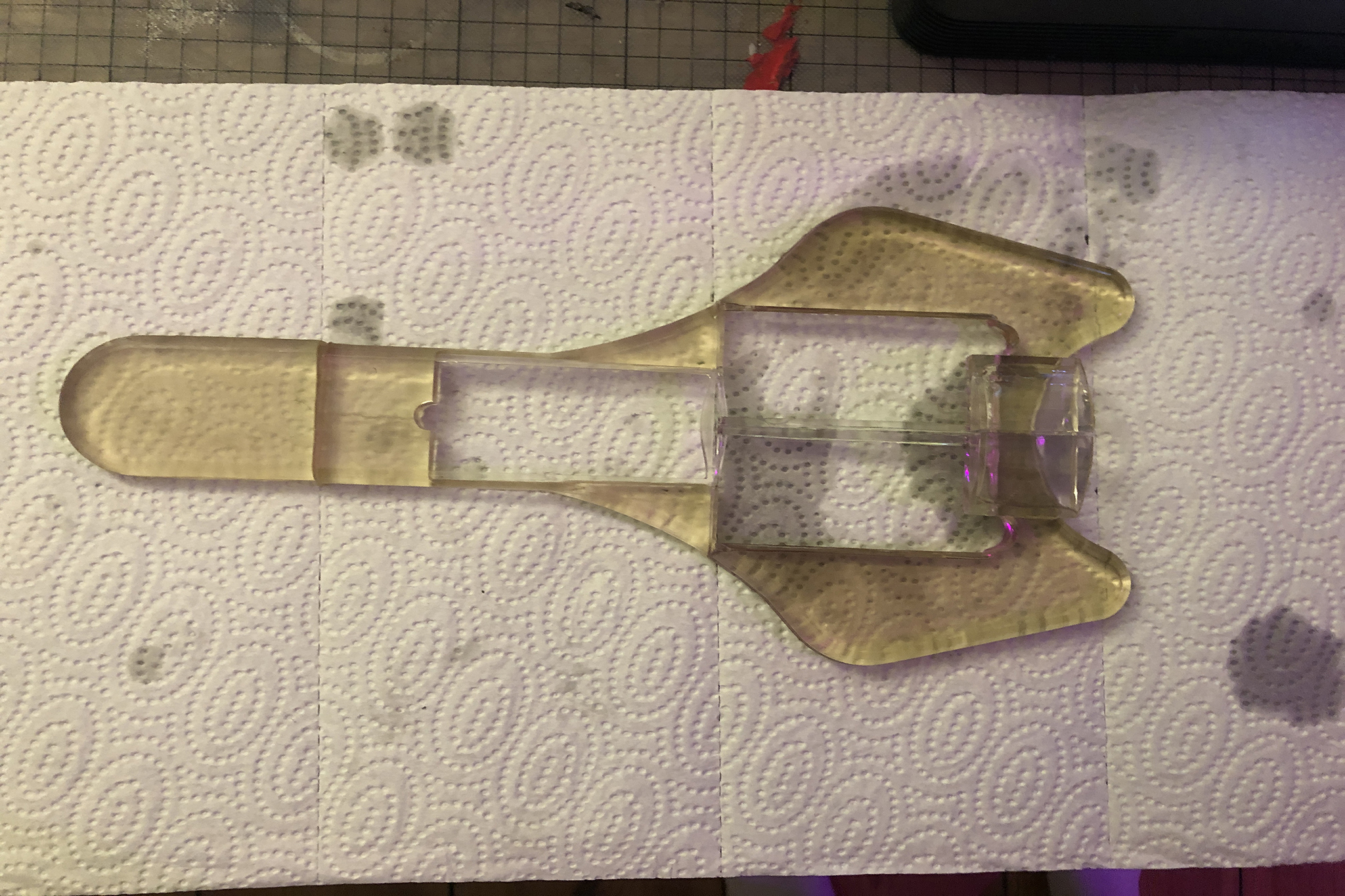 Saddle rendered and 3D printed parts
Saddle rendered and 3D printed parts
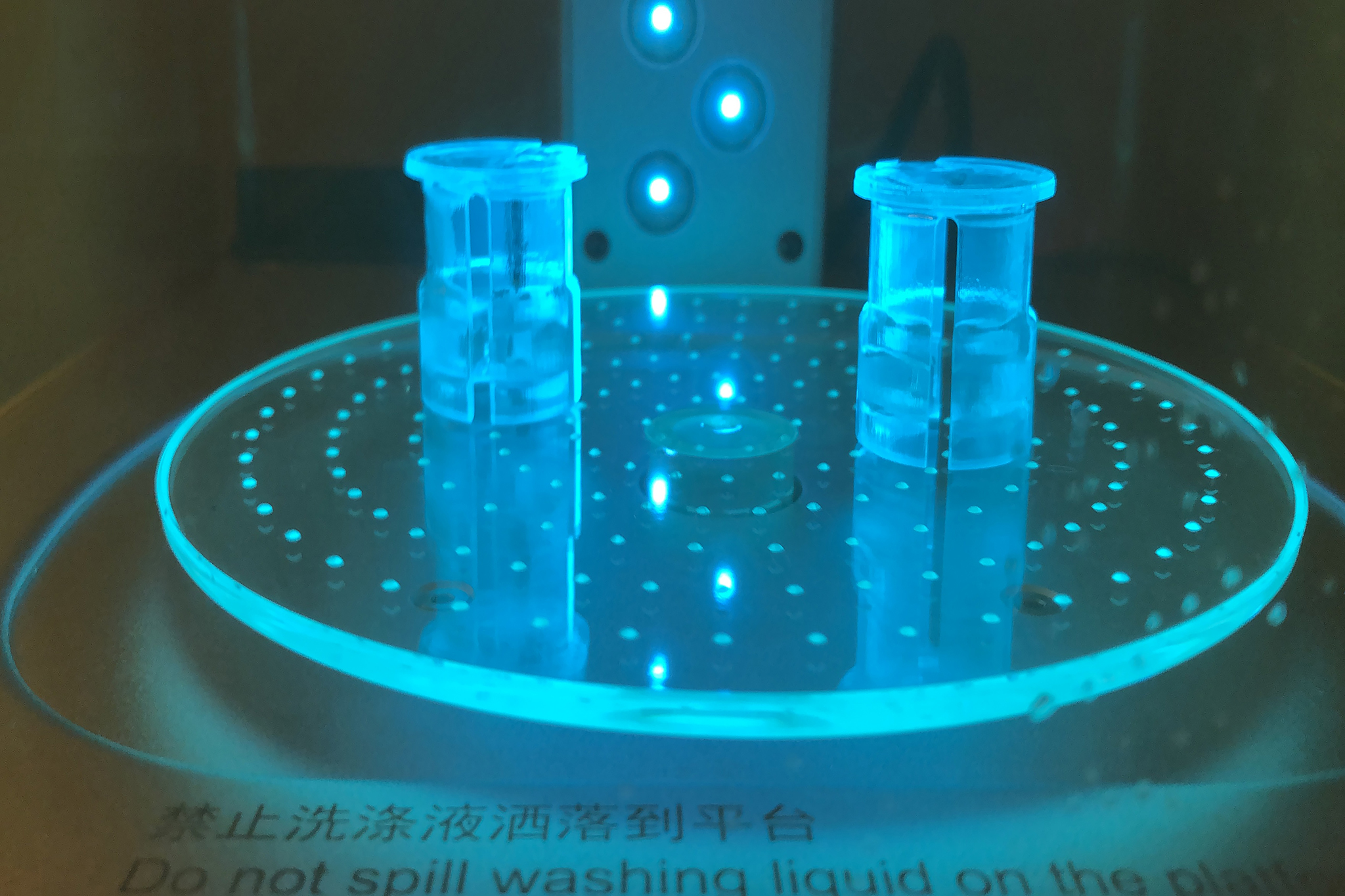 Handle bar plugs under UV light
Handle bar plugs under UV light
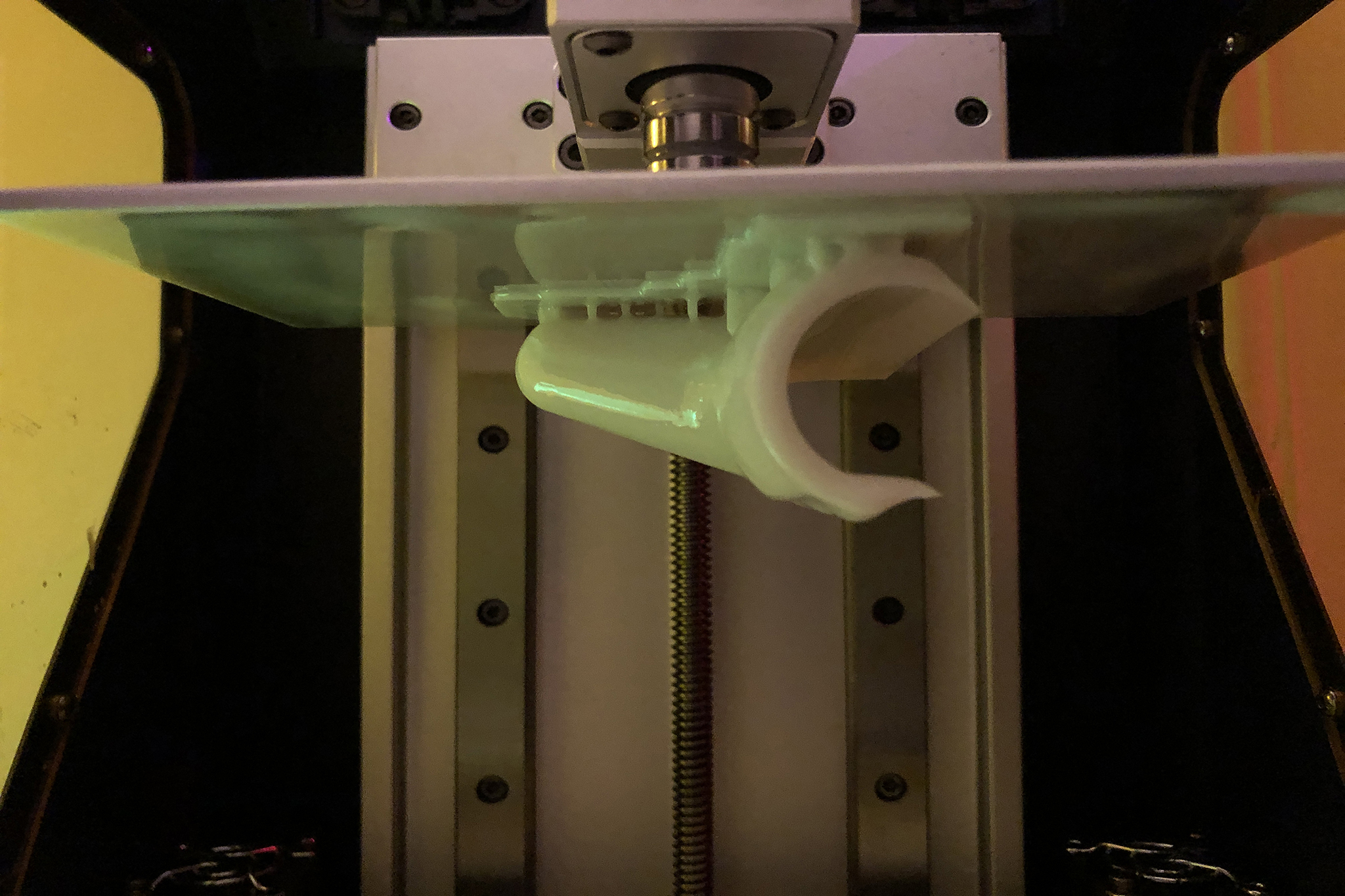 3D printing of handle bar
3D printing of handle bar
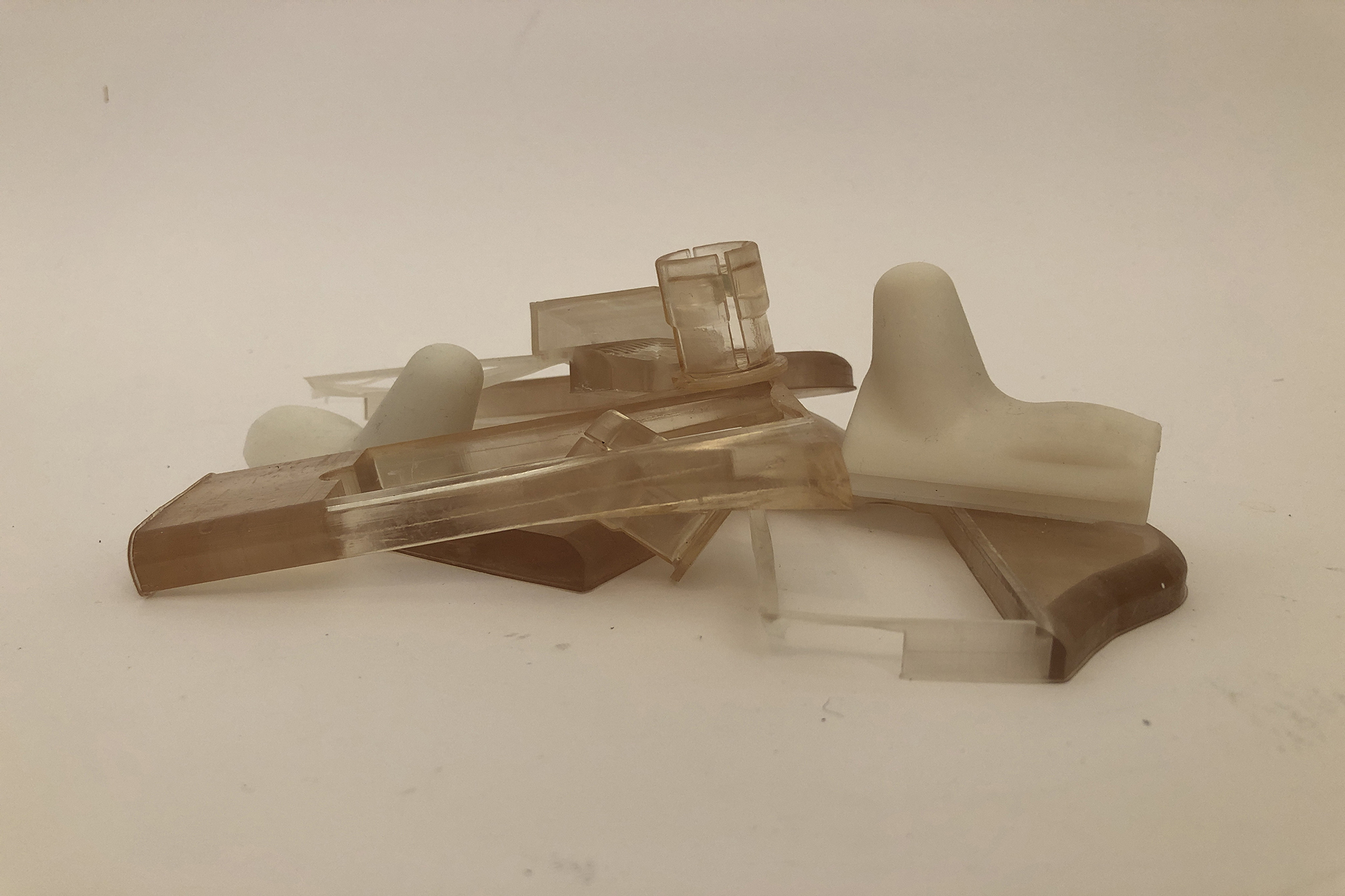 Pile of 3D prints in transparent and white
Pile of 3D prints in transparent and white
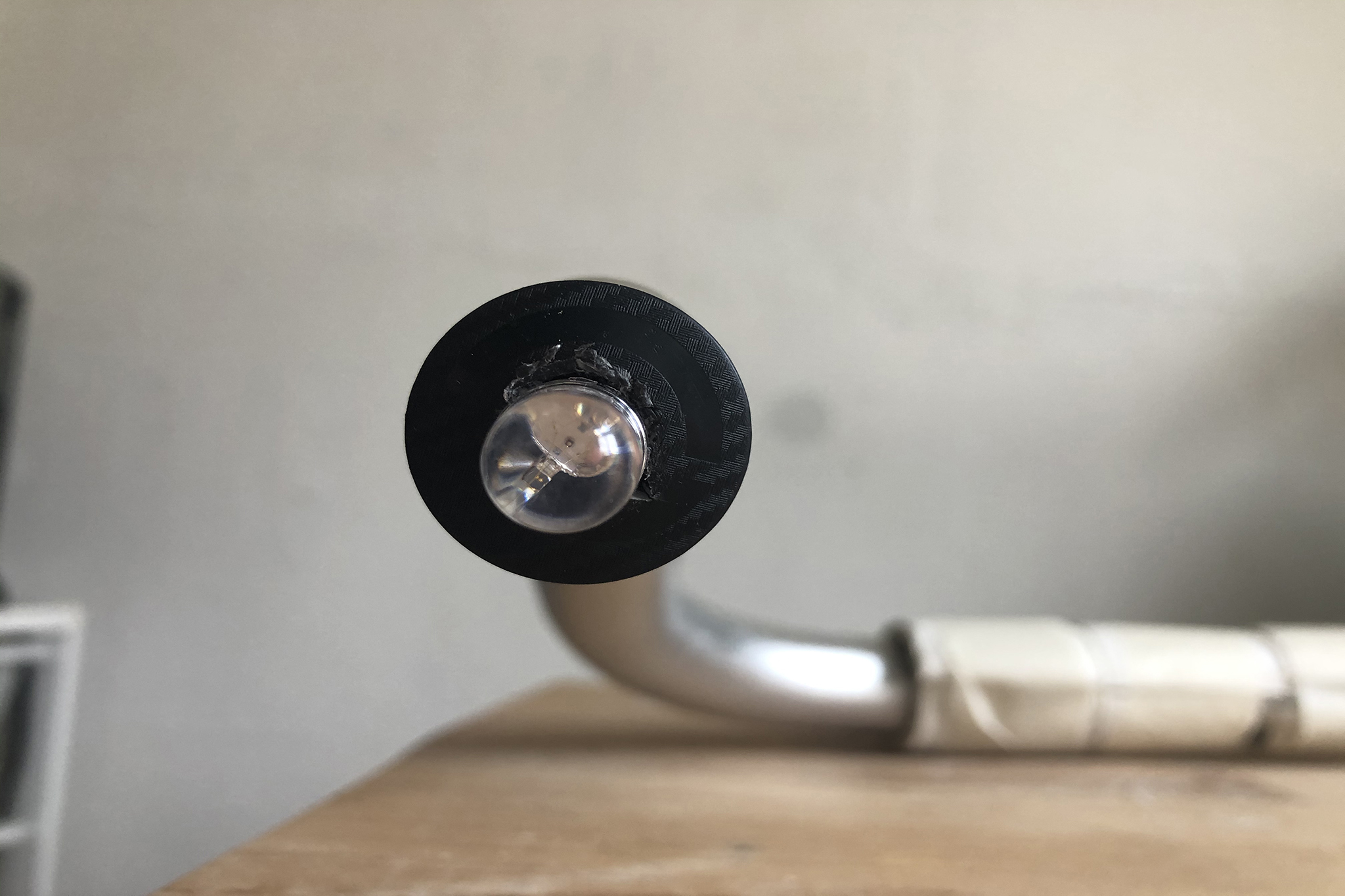 Mock Up front light
Mock Up front light
Guano is a potty with the function of composting that allows children to pee in nature when playing in the Kindergarden’s playground. It trains children to go to the bathroom in a peculiar way, by making it a game. That way future generations learn how taking care of nature can be fun.
FACT:
Scientific studies have shown urine is a safe and very effective fertilizer. Urine boasts a nitrogen-phosphorus-potassium, plus more modest amounts of the trace elements plants need to thrive. The nutrients in pee are highly available to plants.
Urine is usually sterile, and the chances of disease transmission from it on the household level are very, very small. And any slight odor dissipates almost immediately once it’s applied to the soil.
On the other hand, nitrogen pollution is a pressing problem for ecosystem health and the climate. Large shares of nitrogen applied to farms as synthetic fertilizer or manure wash into rivers — causing algal blooms and killing off marine life — and contribute to greenhouse gas emissions.
ACT:
Guano is a potty to be used in kindergarten’s playgrounds, it collects children pee to then get dissolved with water and used, by the kids, to fertilize the green areas around.
To pee is considered to be a private act that takes place in a predetermined environment, however for children is just something natural that comes when it does regardless of the place, time or people around.
Guano is a device that allows them to pee in nature and for nature. It trains children to go to the bathroom in a peculiar way, by making it a game, using a liquid that comes out of their bodies and would otherwise be flushed away with another5 liters of water. This way future generations learn how taking care of nature can be fun.
IMPACT:
Replacing synthetic fertilizers with urine would help to reduce nitrogen pollution, besides future generations are taught to care for natureand use eco friendlyalternatives instead of artificial products full of chemicalsthat damage our planet and our own health.
Skarlett Balto Sicneros, 3.sem WS 2020/21
Project:
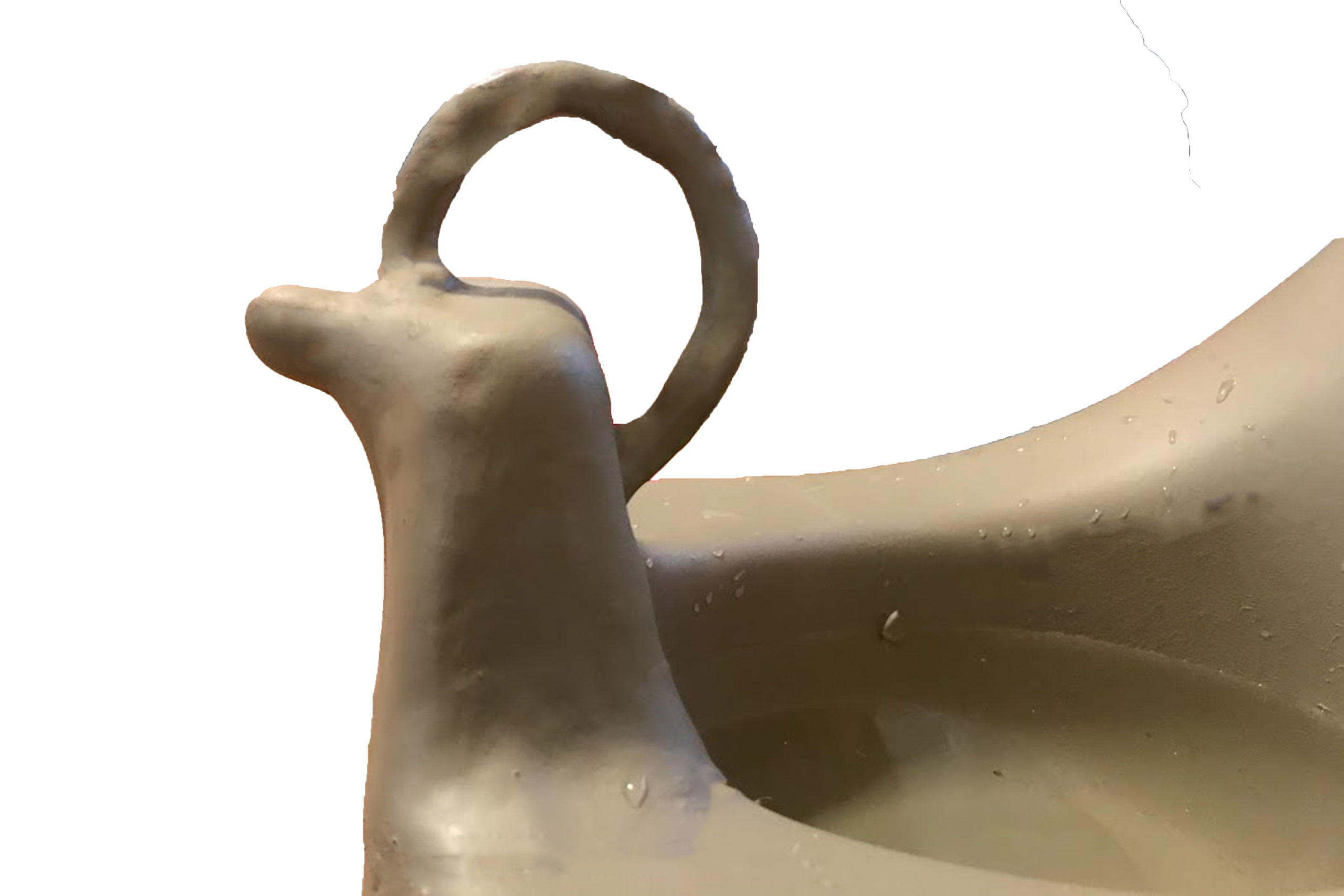
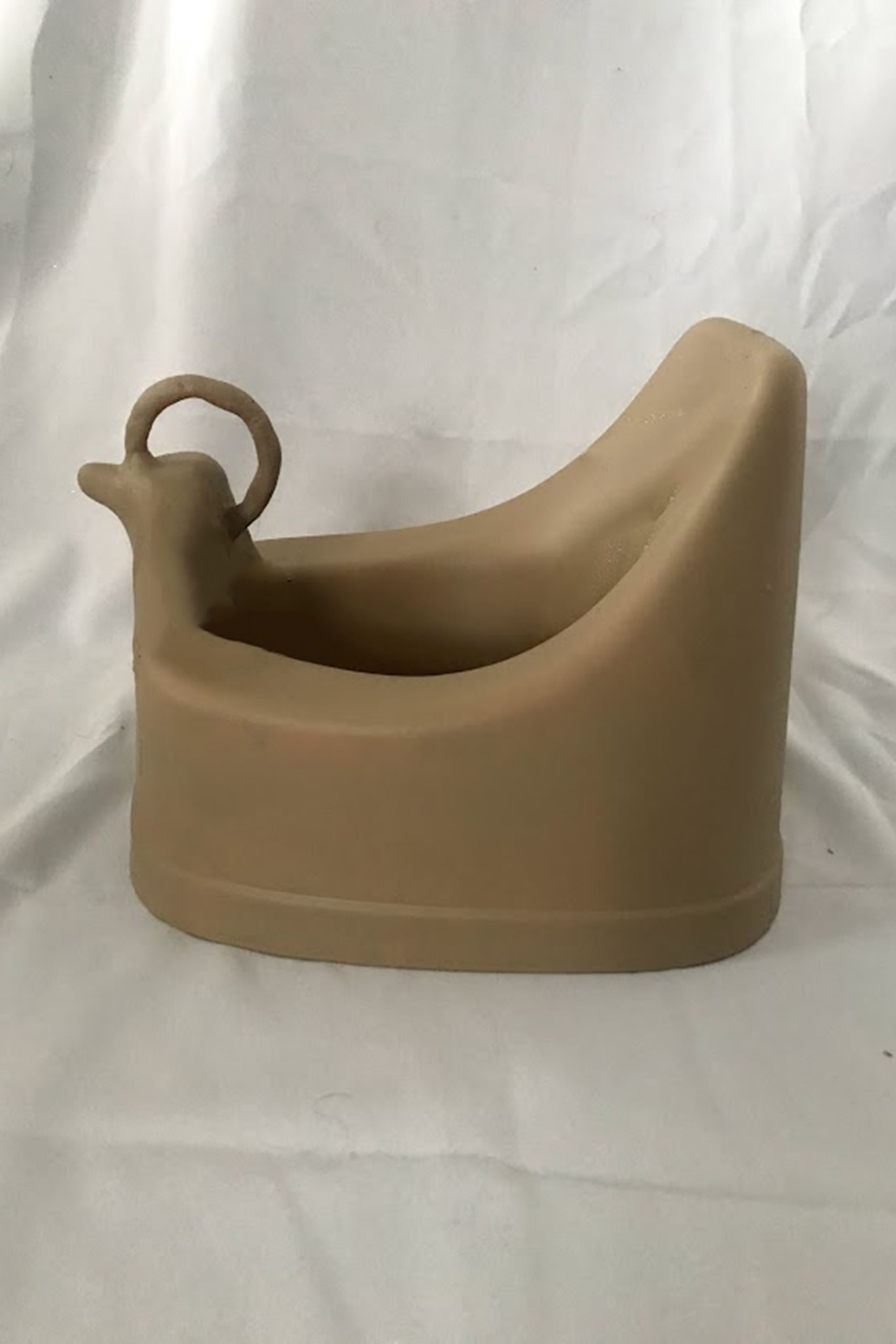
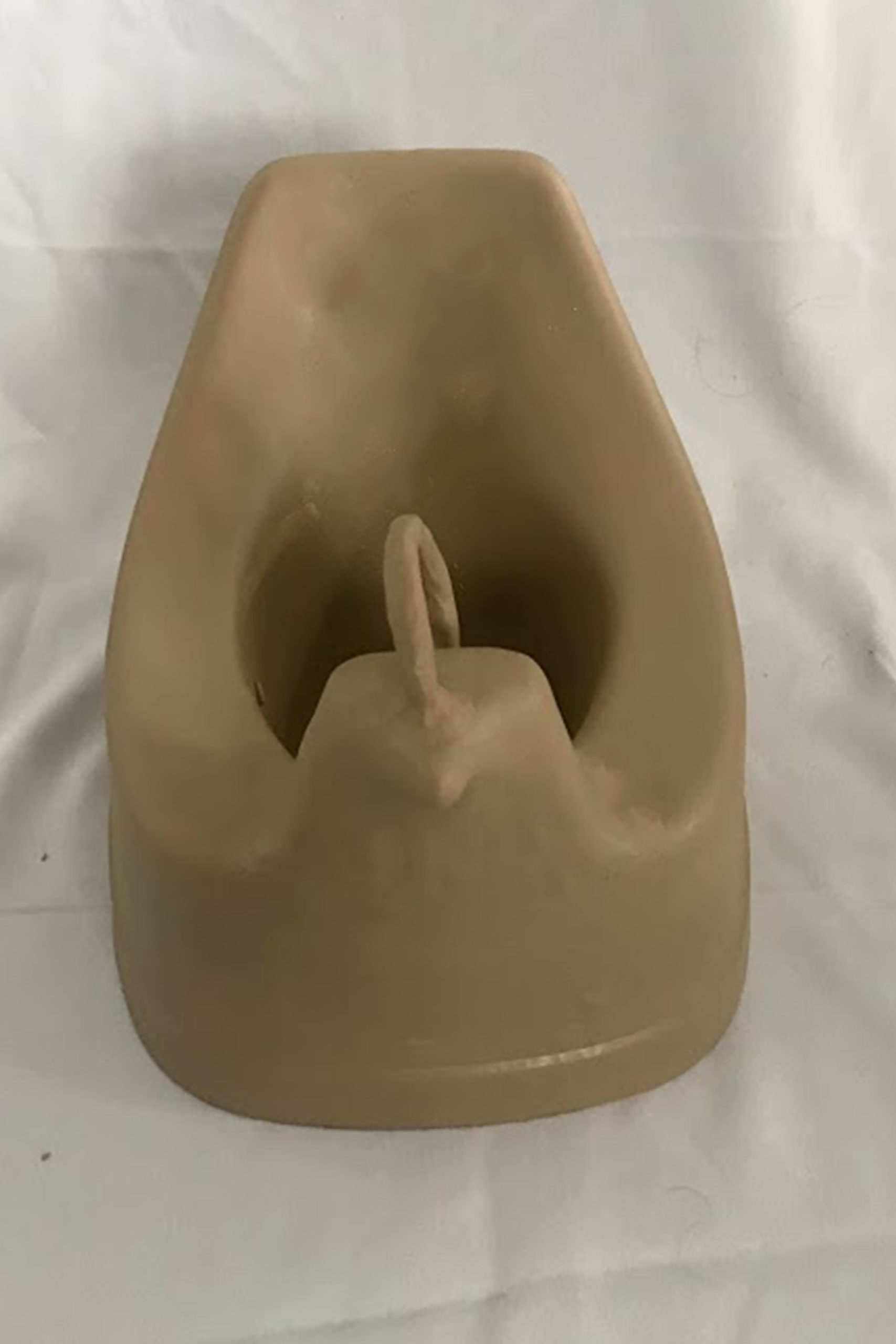
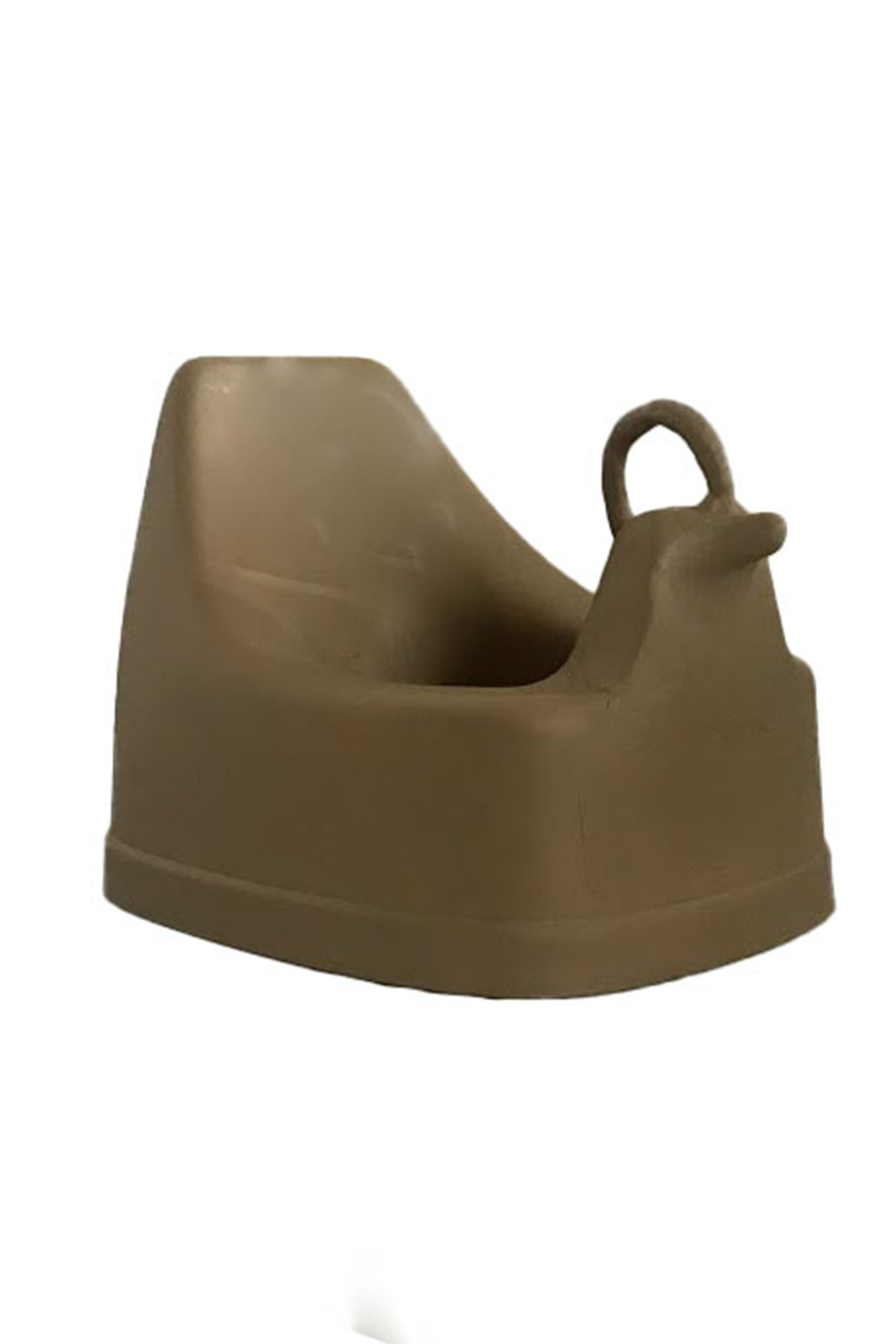
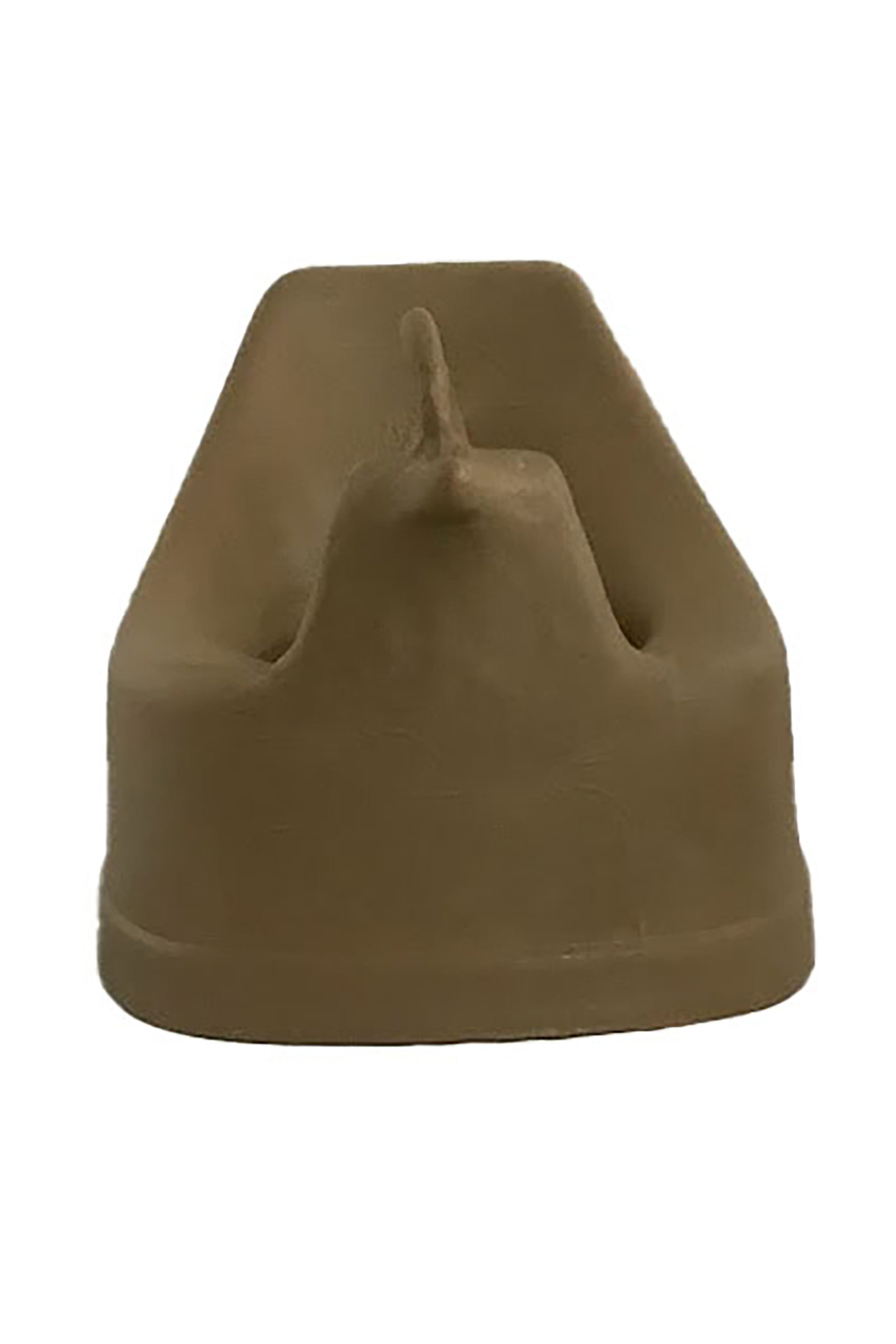
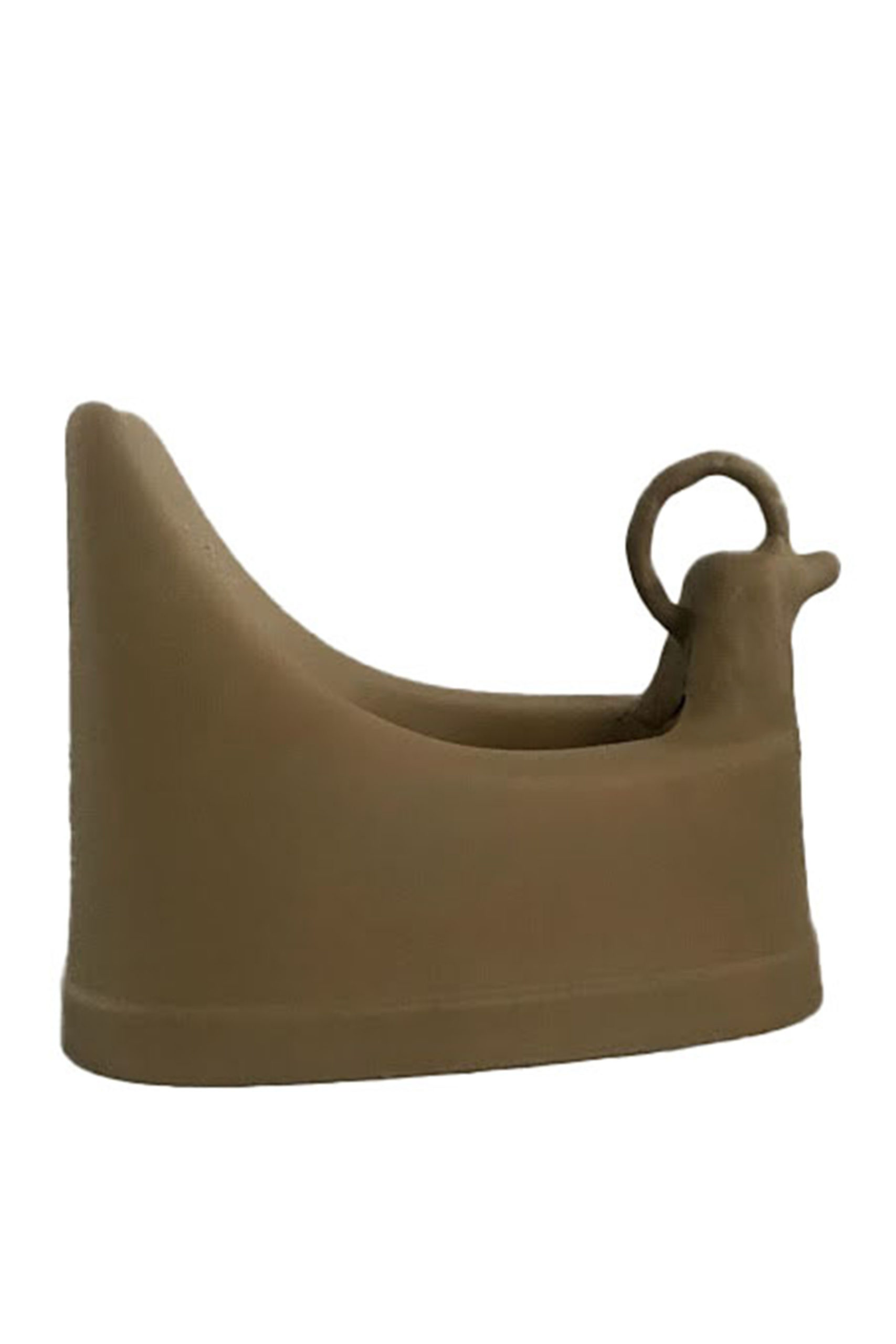
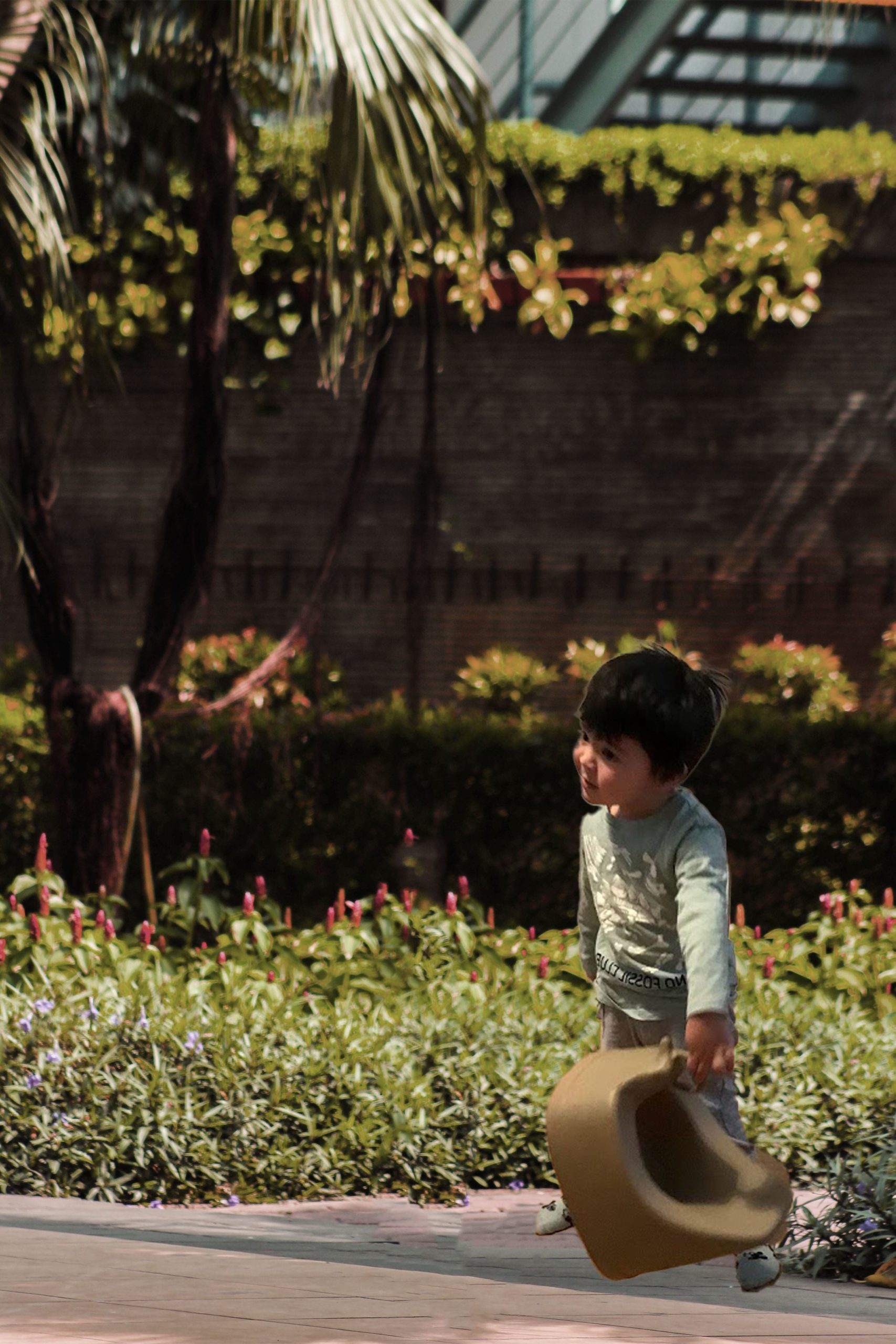

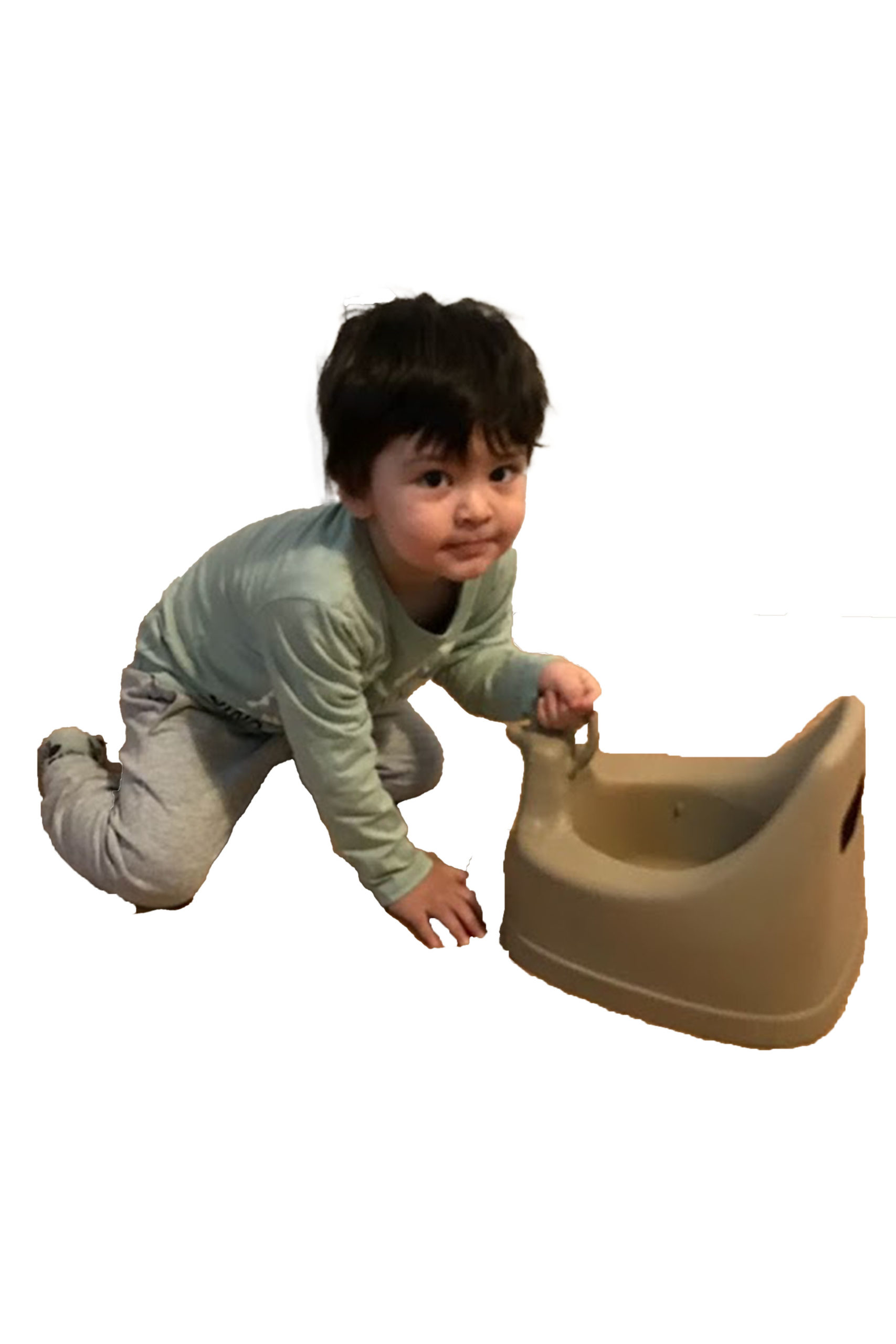
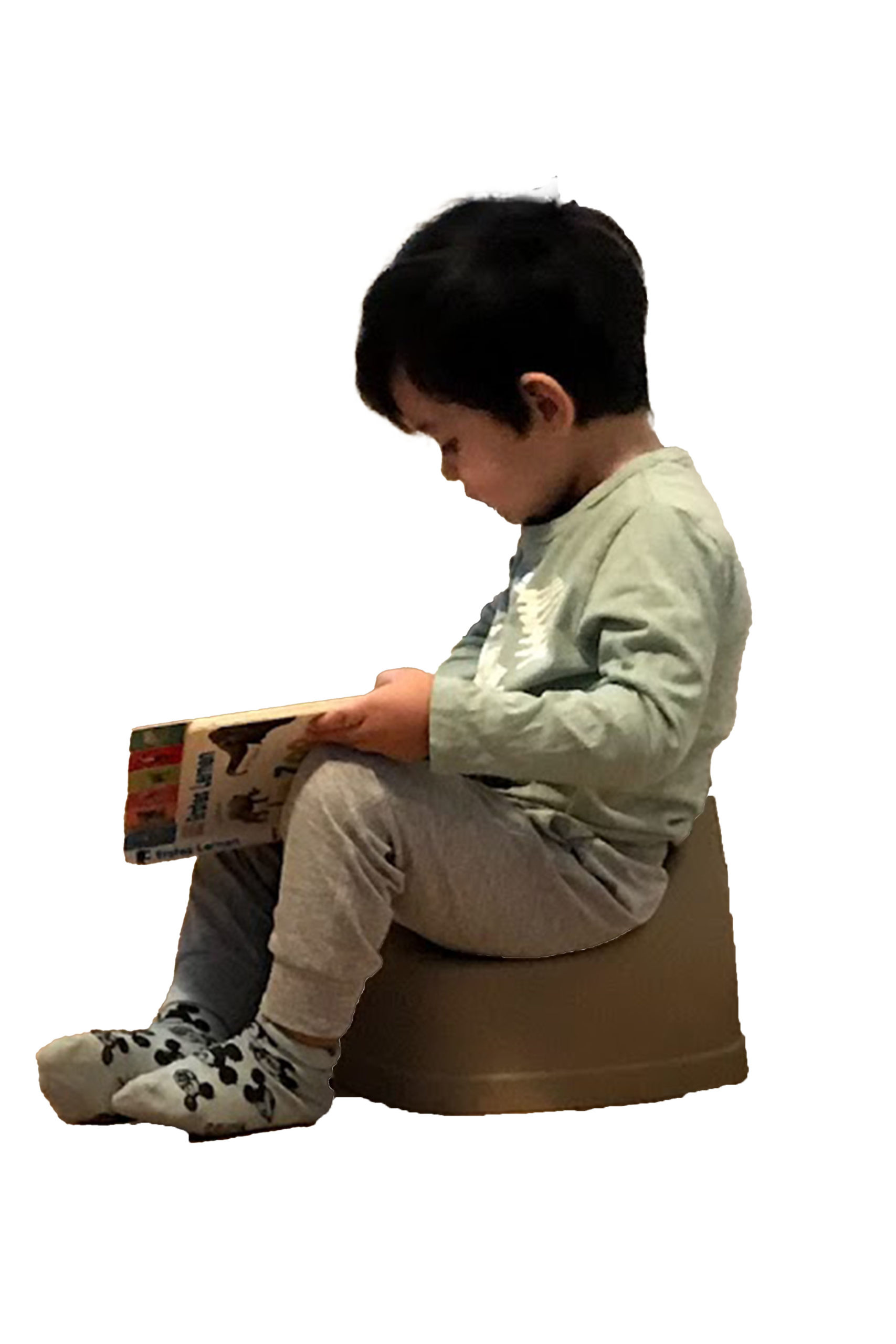
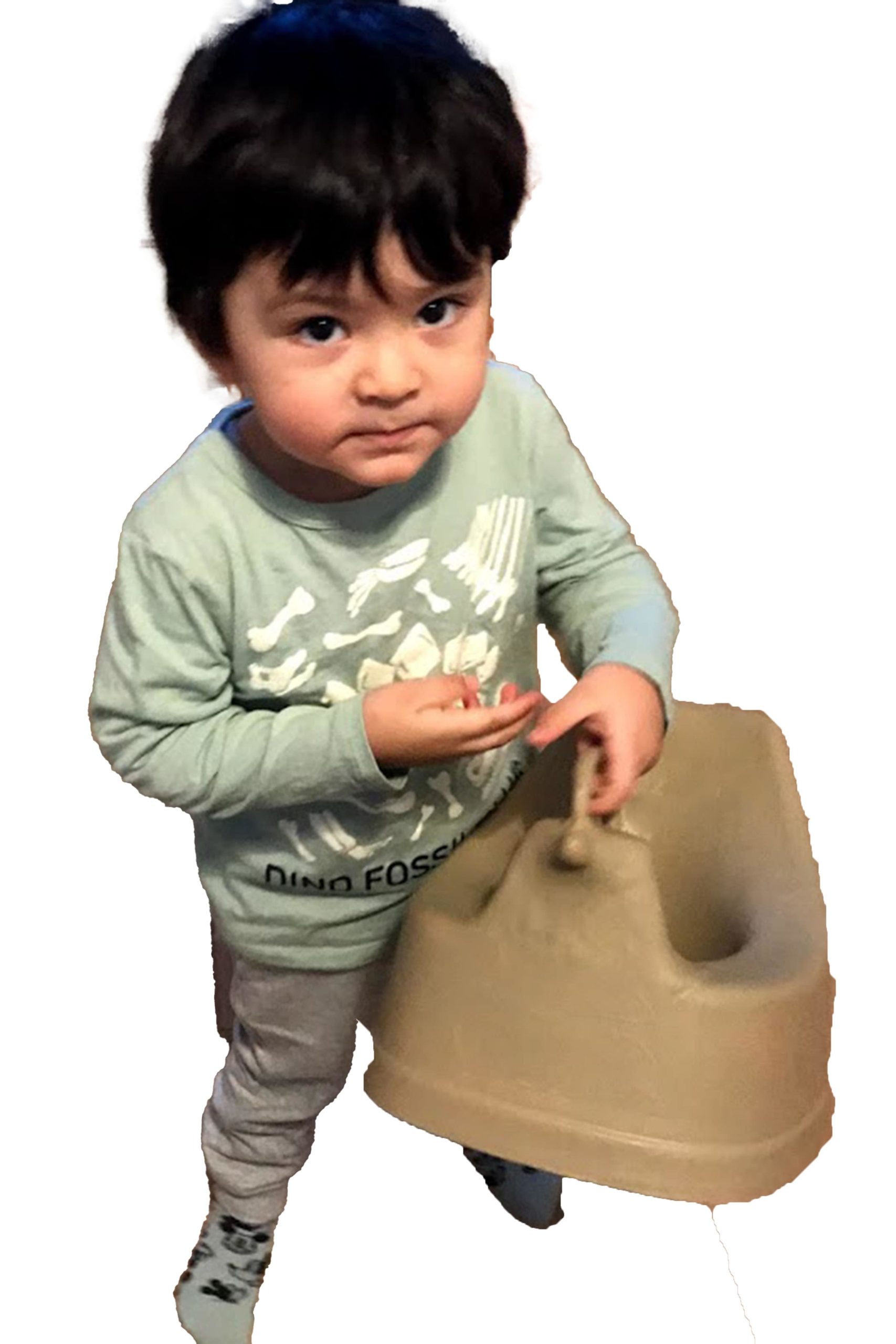
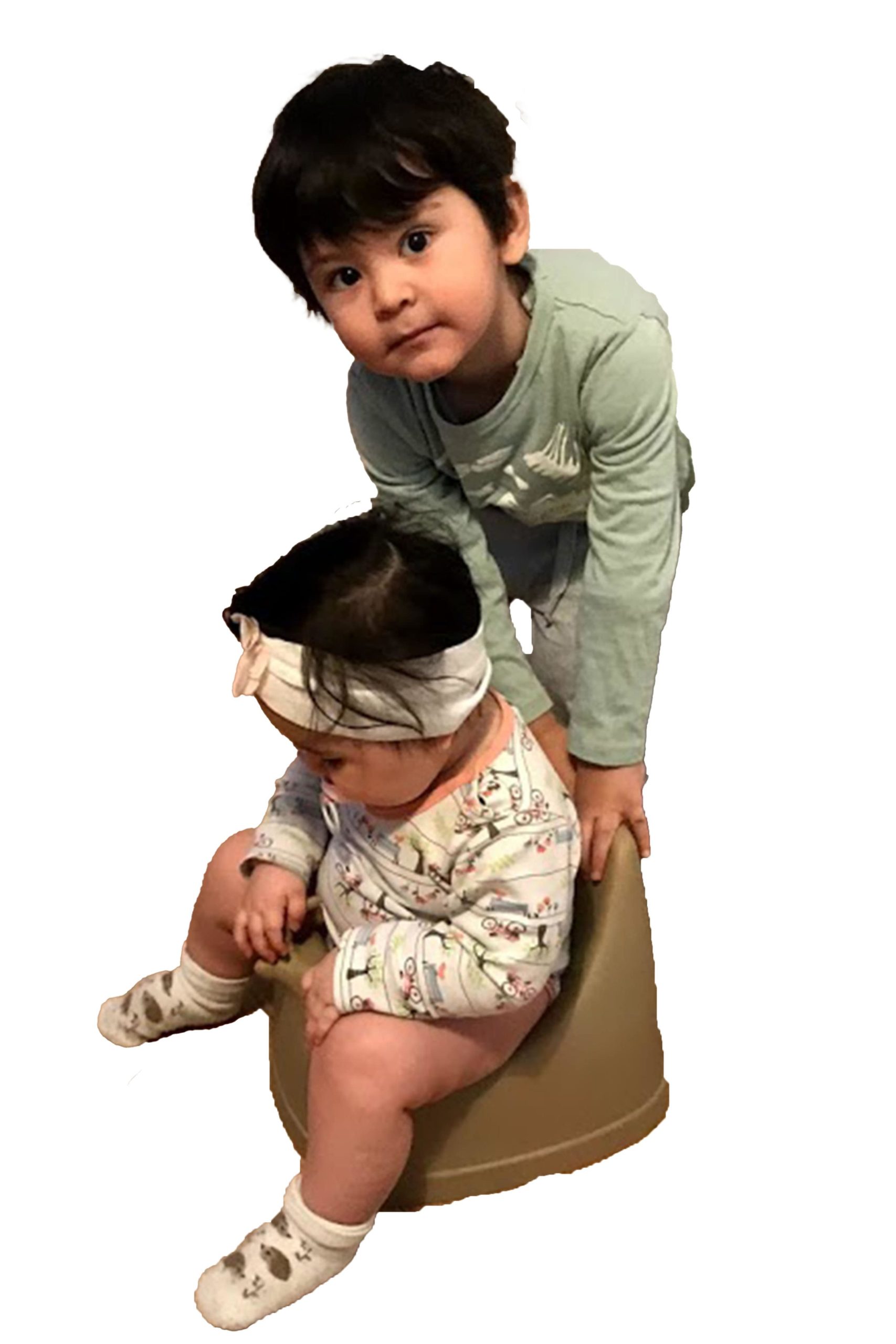
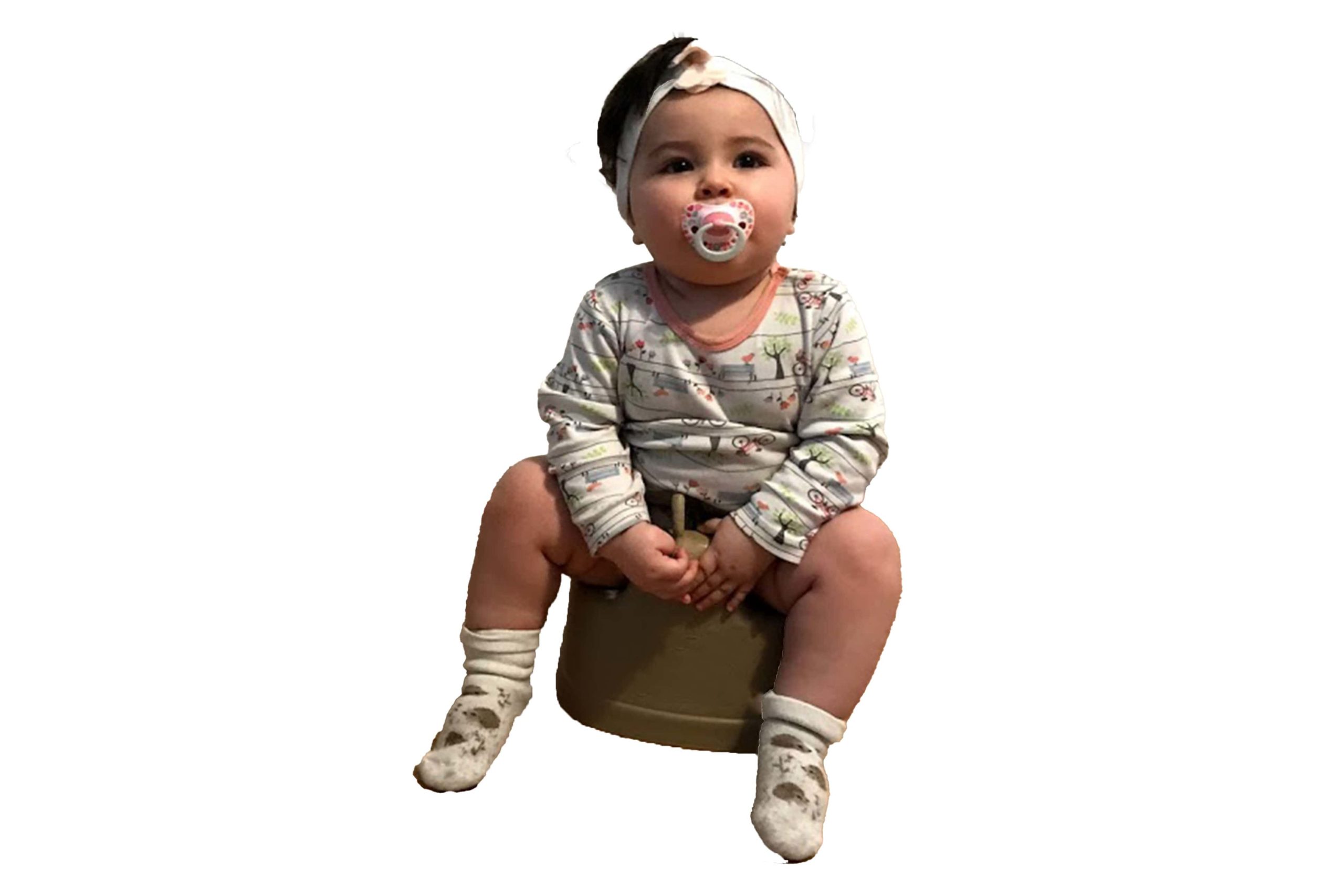
Process:
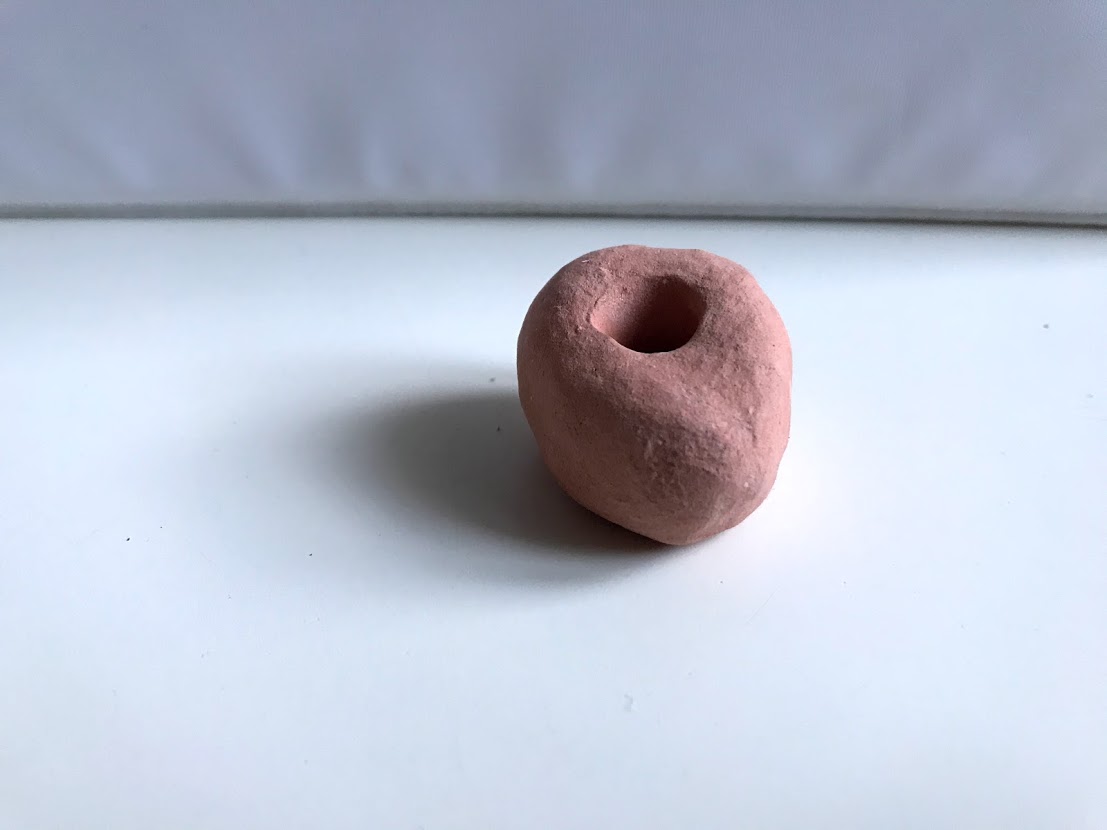
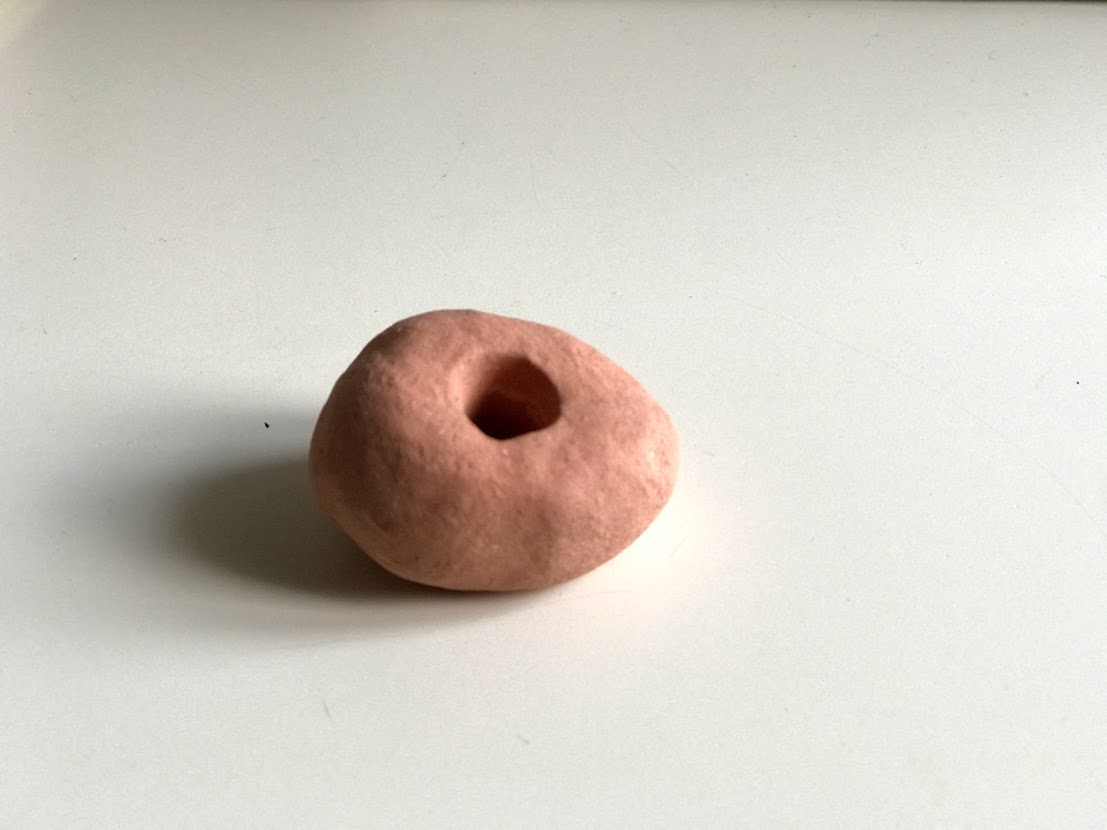
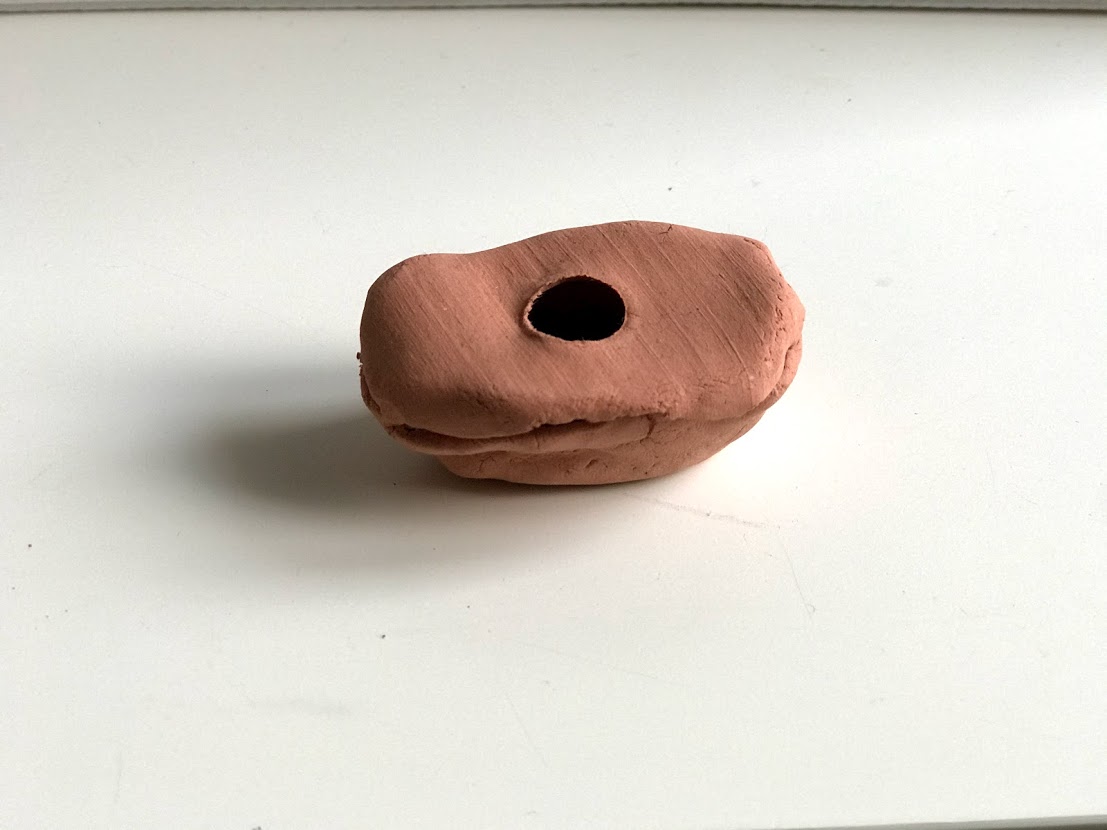
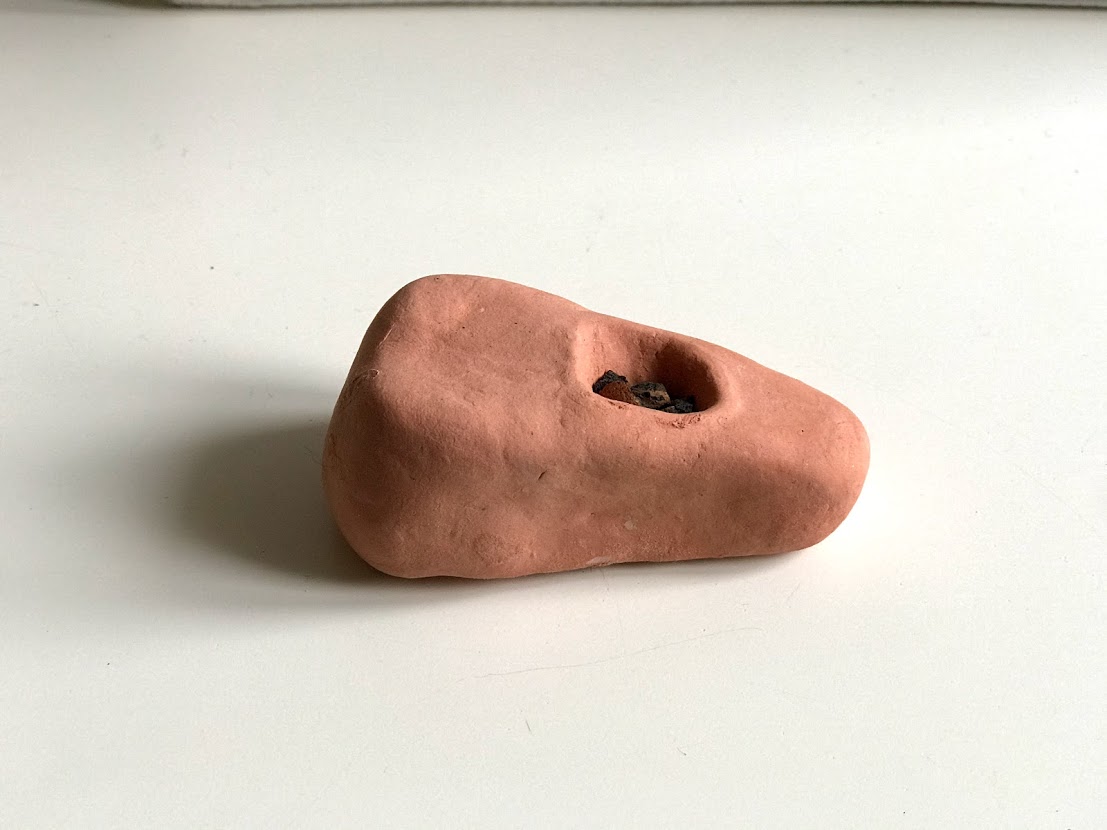
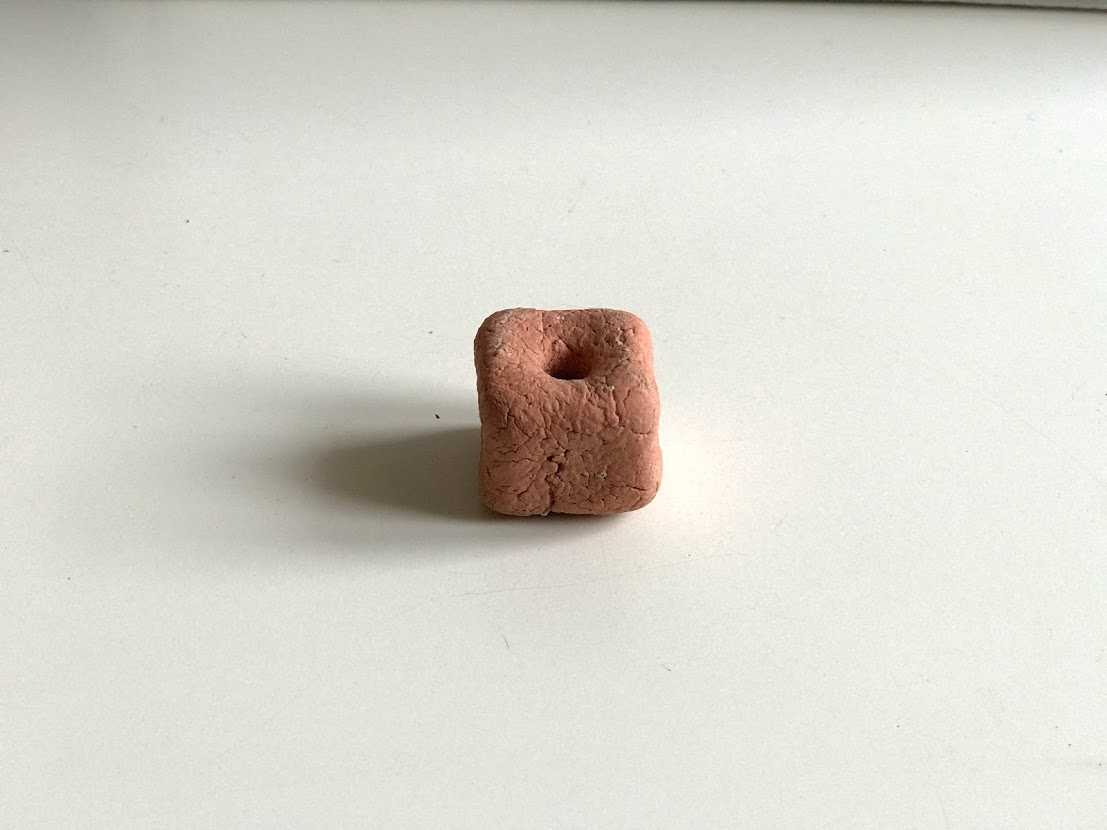
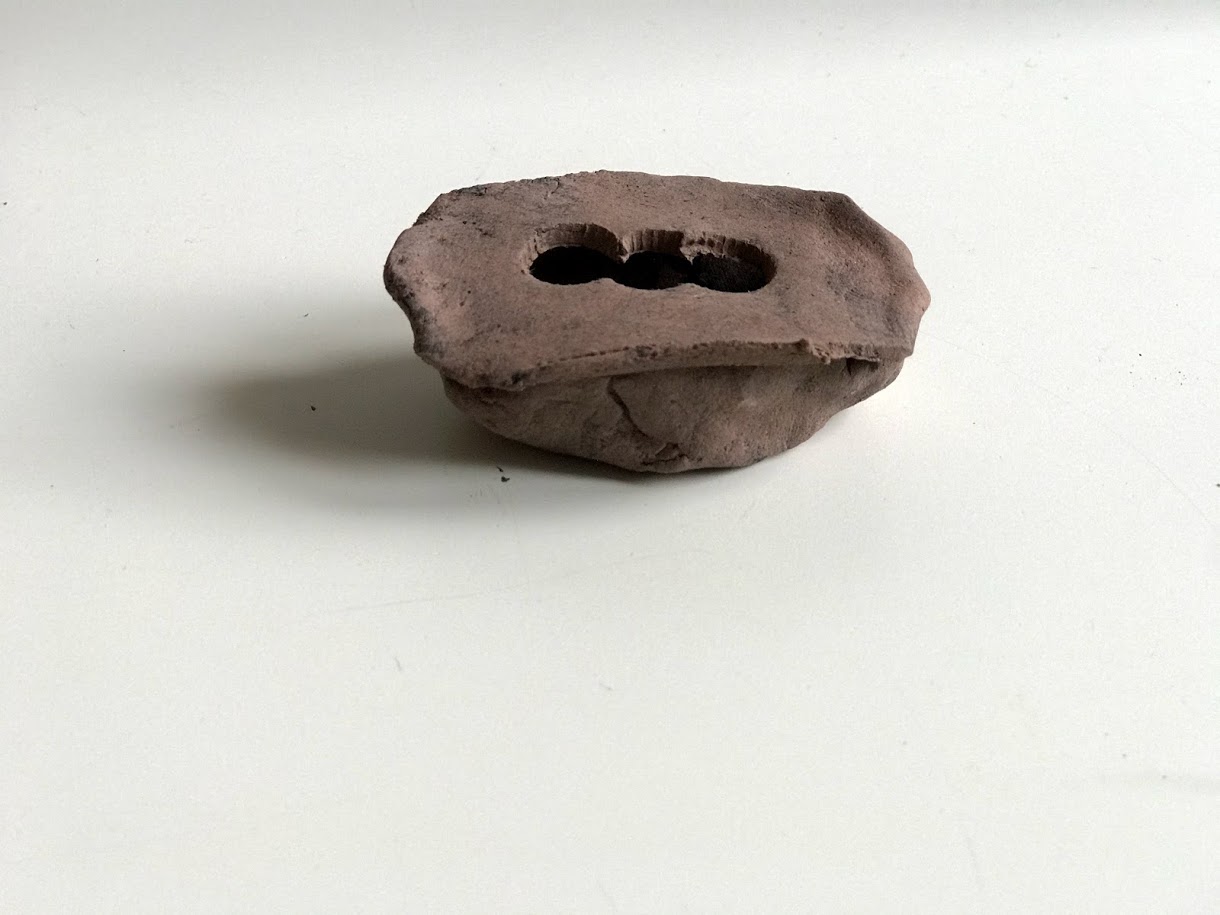
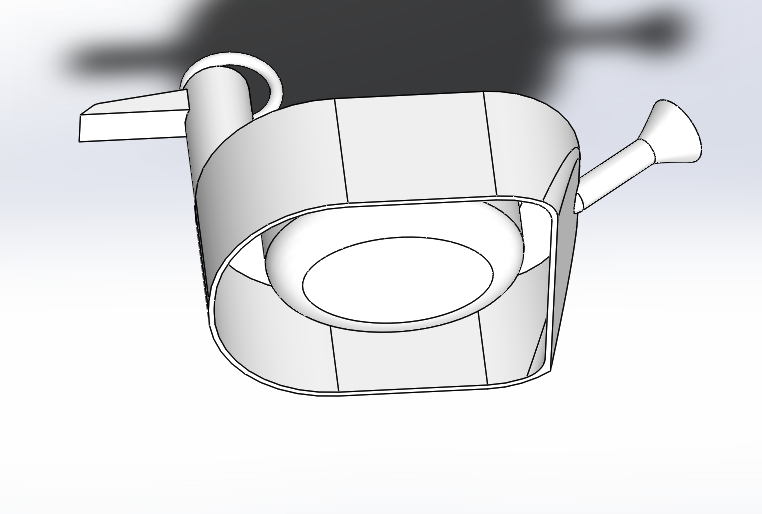

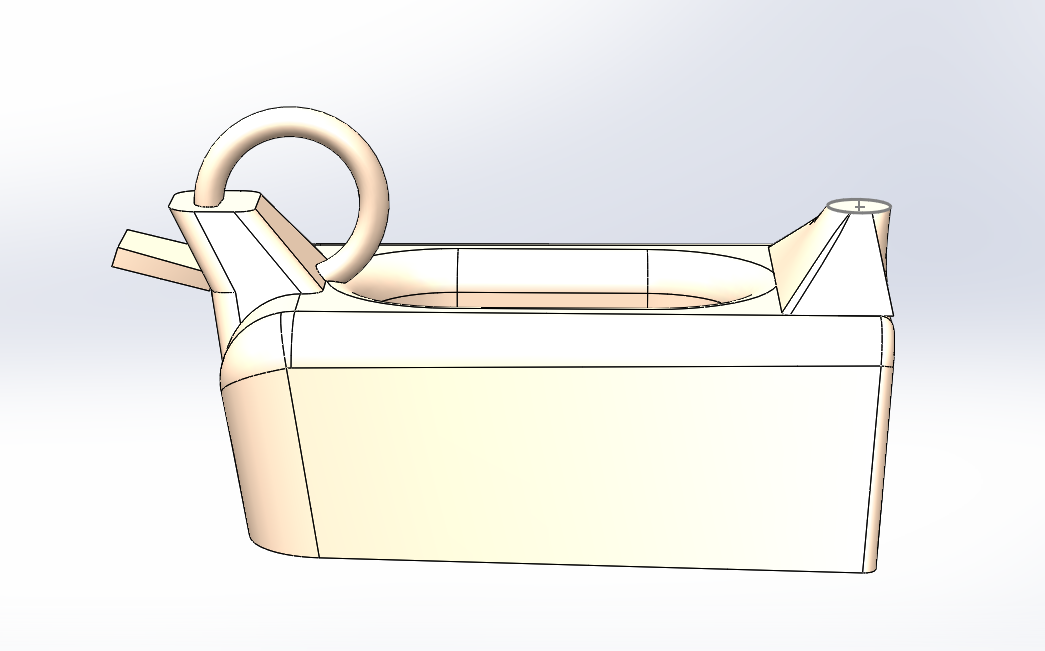
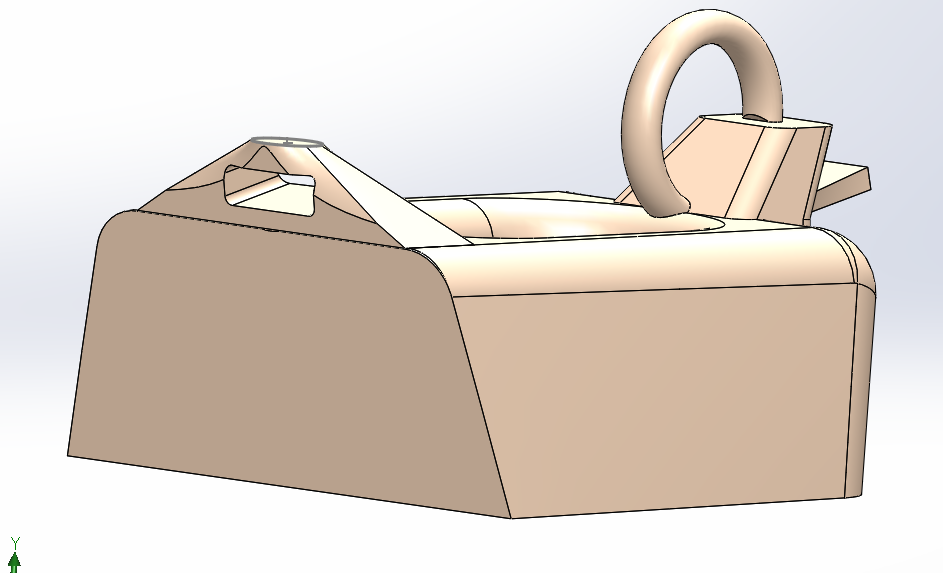
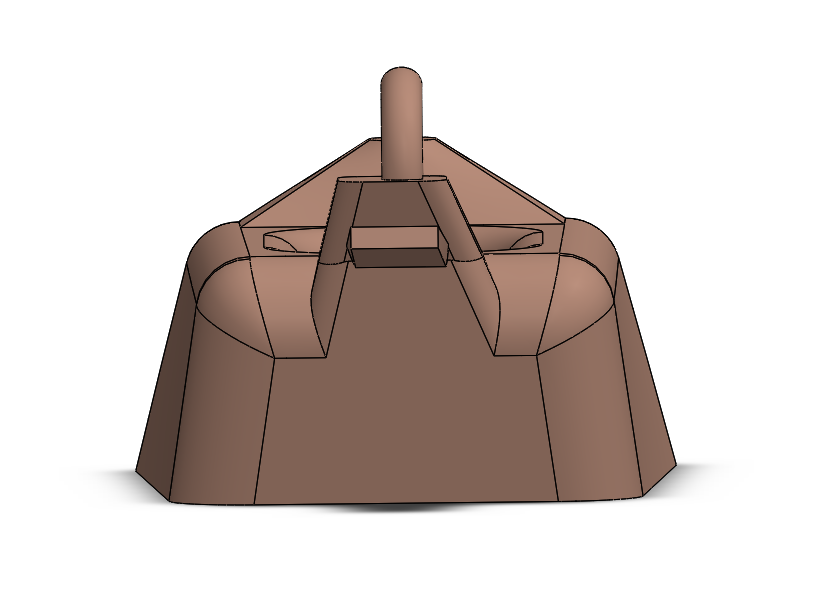
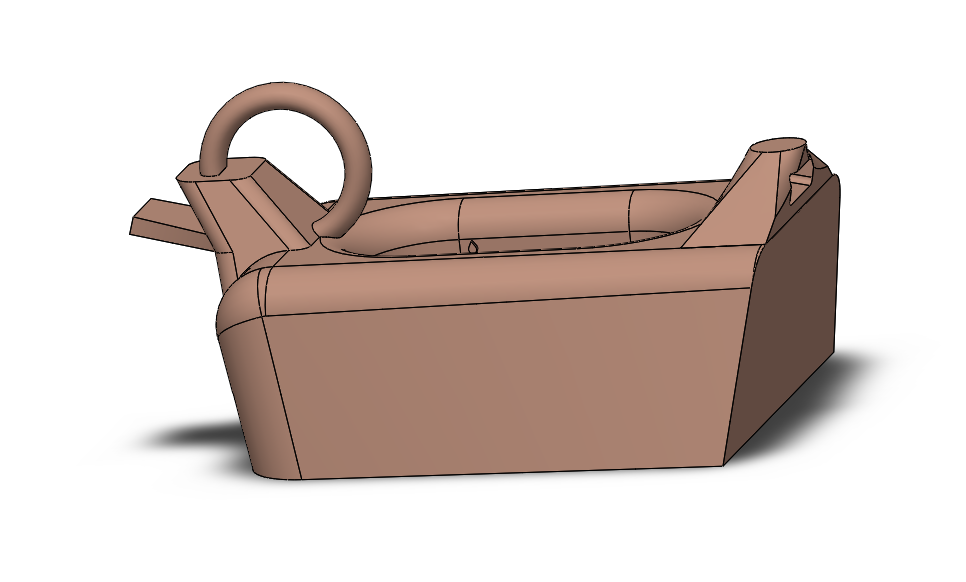
LOLLIPOP is a mobile trash bag dispenser.
It is set up in summer in highly frequented places in parks and on meadows by garbage workers and initiatives to encourage park visitors to remove their own garbage.
FACT / ACT / IMPACT:
The garbage infrastructure of a park is usually aligned with the paths. The main reason for this is that it makes it easier for the garbage workers to reach the garbage cans with their vehicles and empty them.
Another reason are various regulations. For example, sight lines must not be blocked by trash cans. However, the places where park visitors go in summer to picnic or barbecue are often off the paths or in the middle of the meadows of the parks – i.e. far away from public trash cans.
Studies have shown that the mere availability of trash cans influences one’s littering behavior. If there are trash cans nearby, I have a greater inhibition not to dispose of my trash properly.
LOLLIPOP, through its colorful appearance, aims to encourage people to take their trash behind them. It is placed at busy spots at peak times by garbage workers* or activists from the various initiatives. In the evening, it is collected again by park administration employees or cleaners during the trash can emptying that takes place several times a day to prevent vandalism.
Sebastian Müller-Tiburtius, 5.sem WS 2020/21
Project:
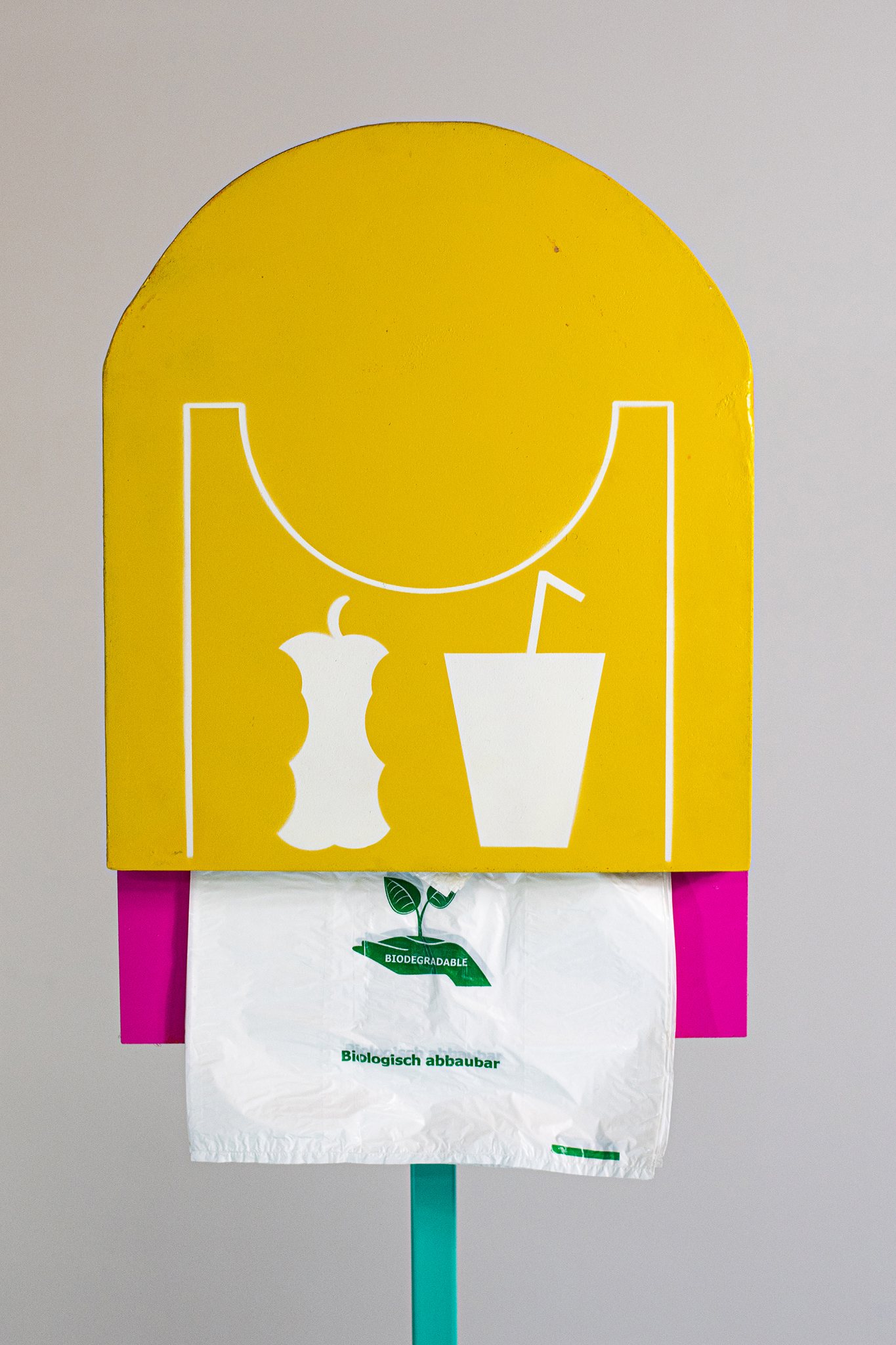
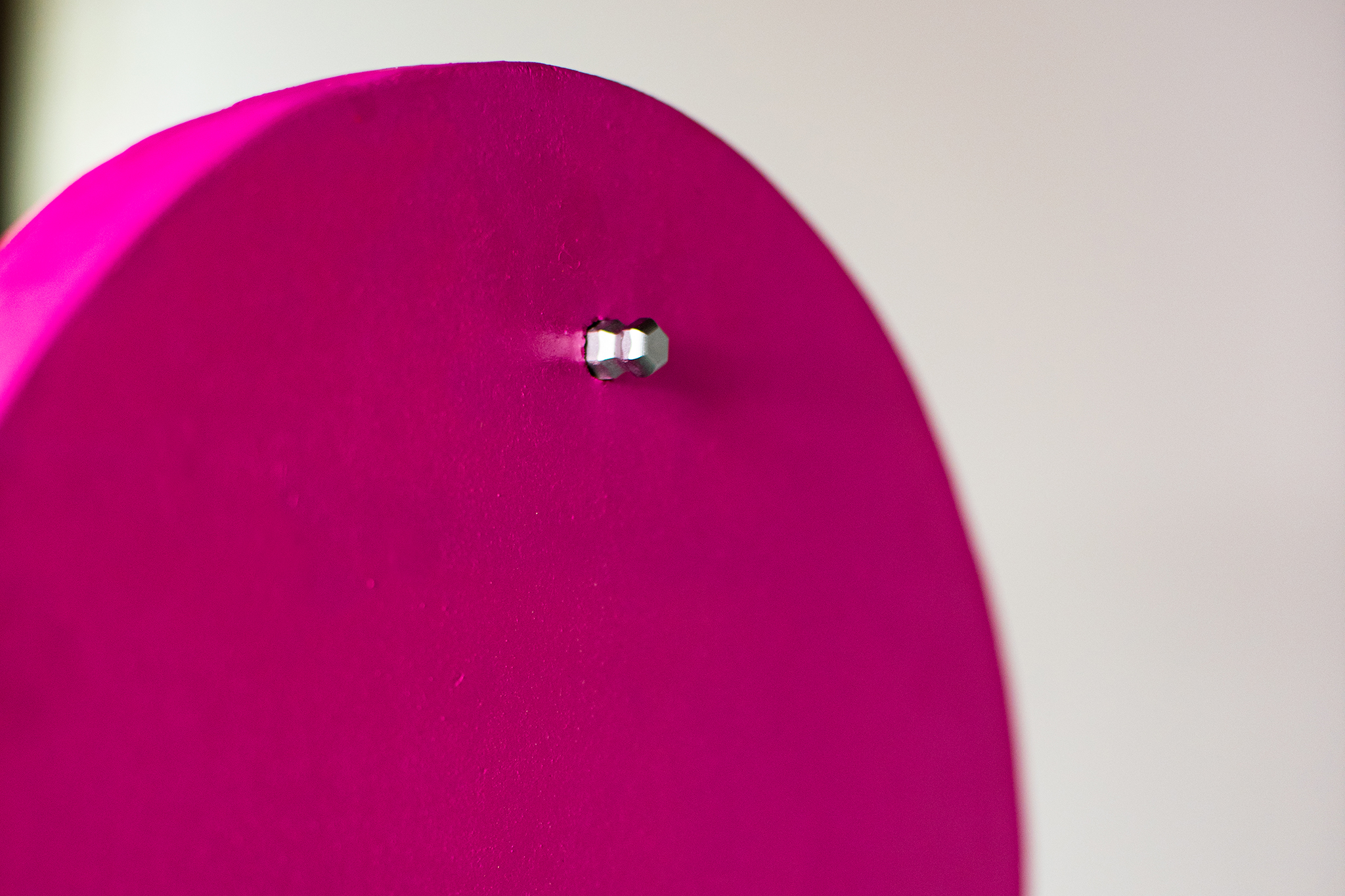
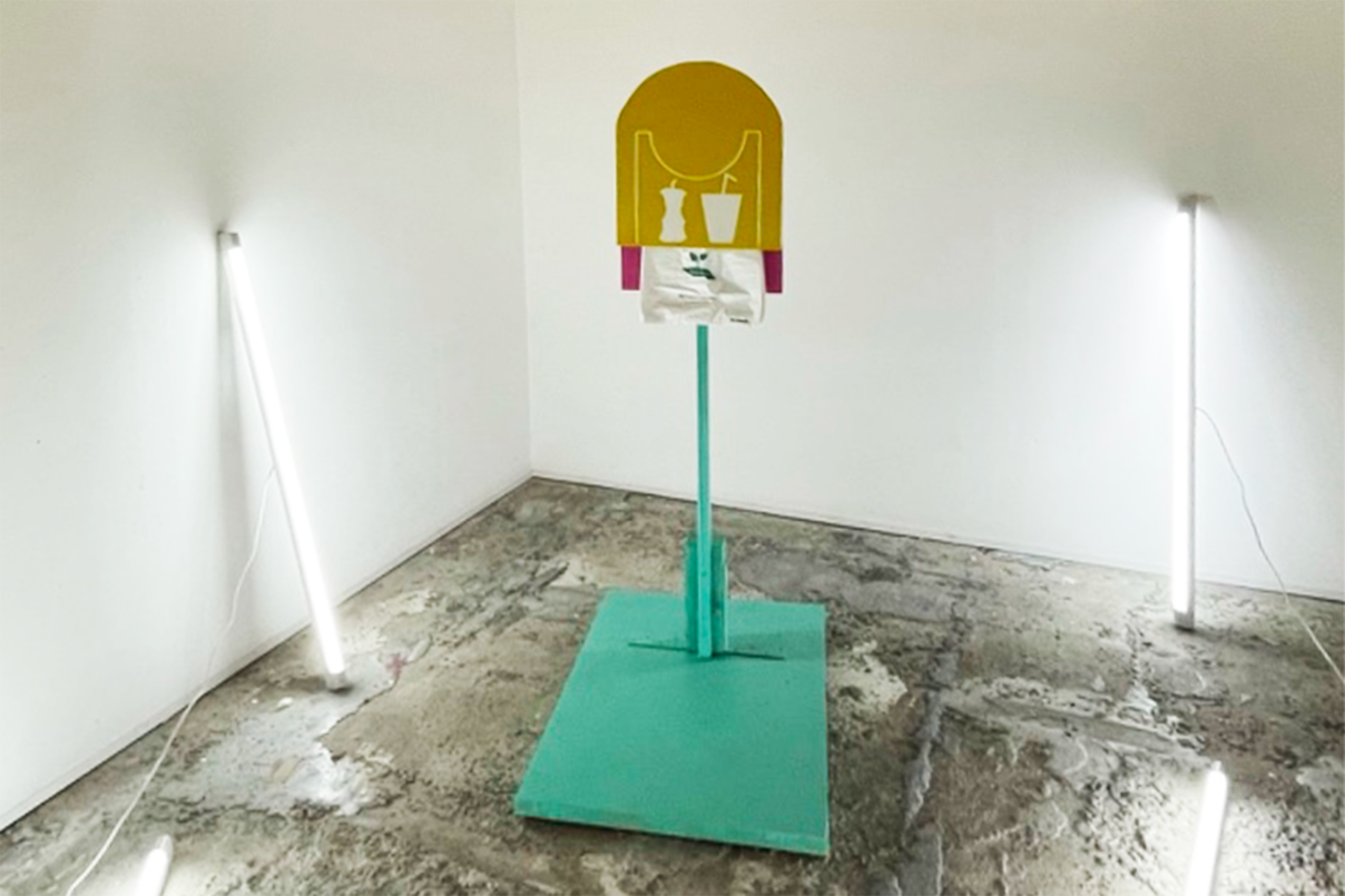
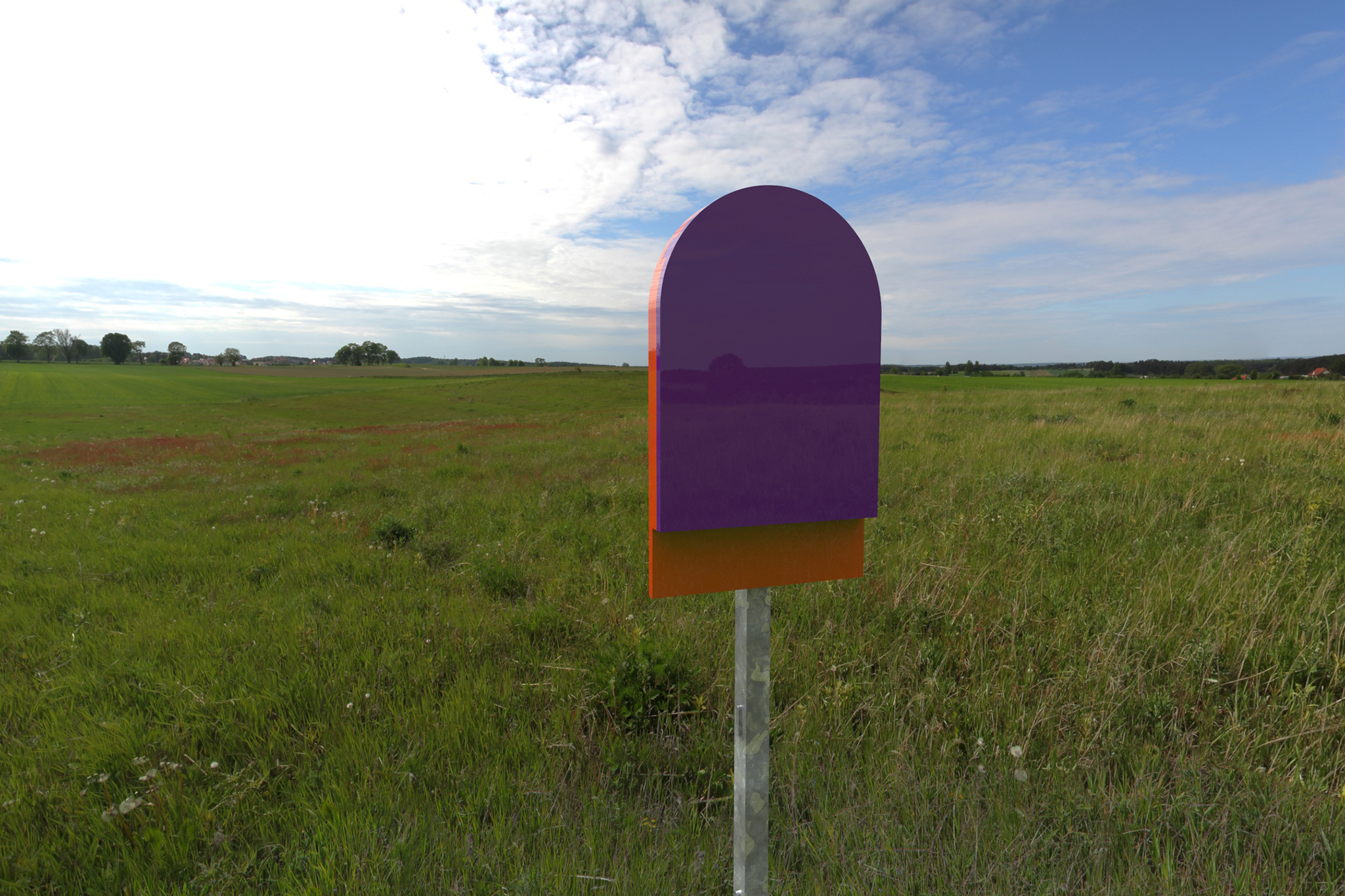
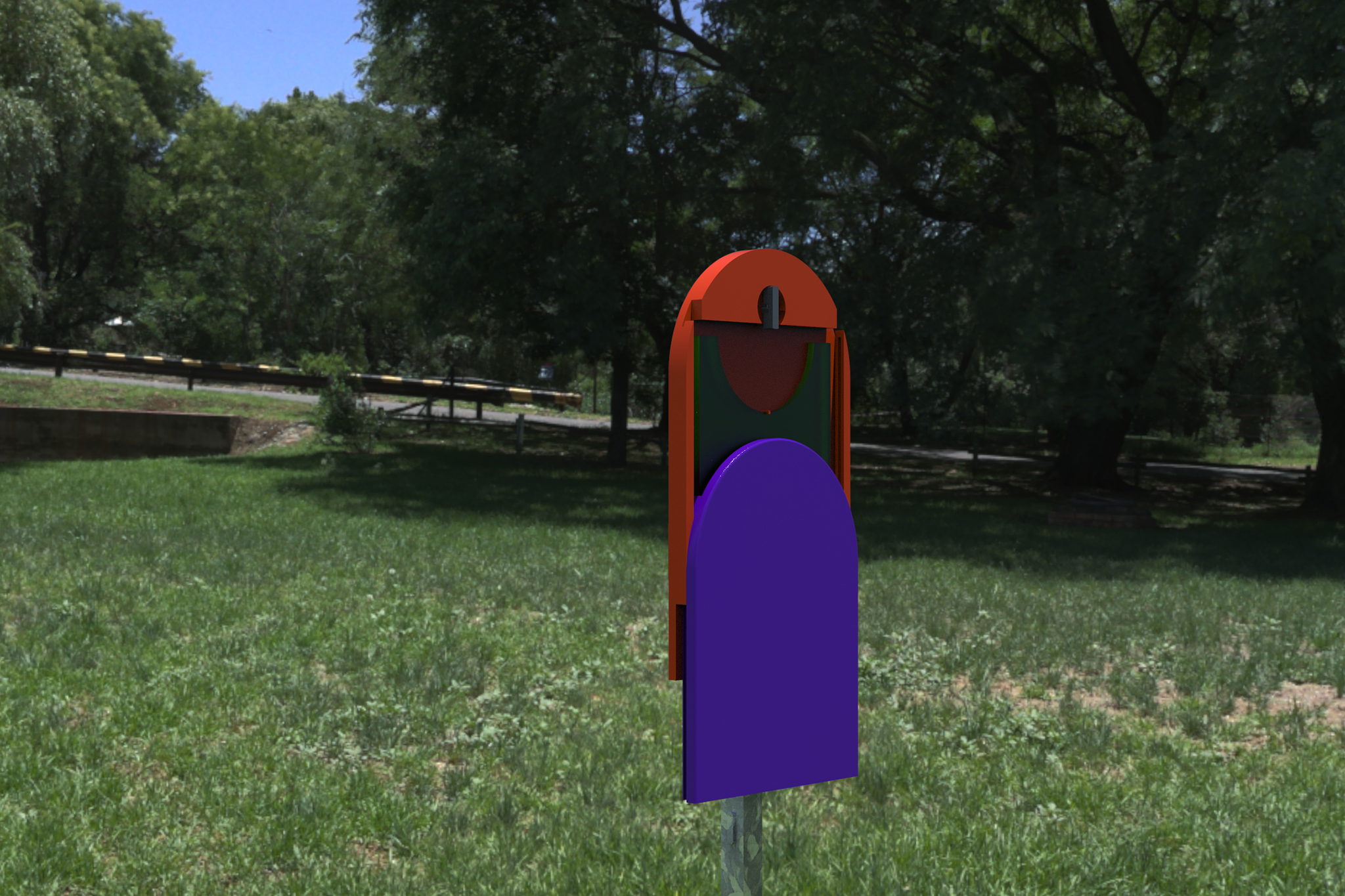
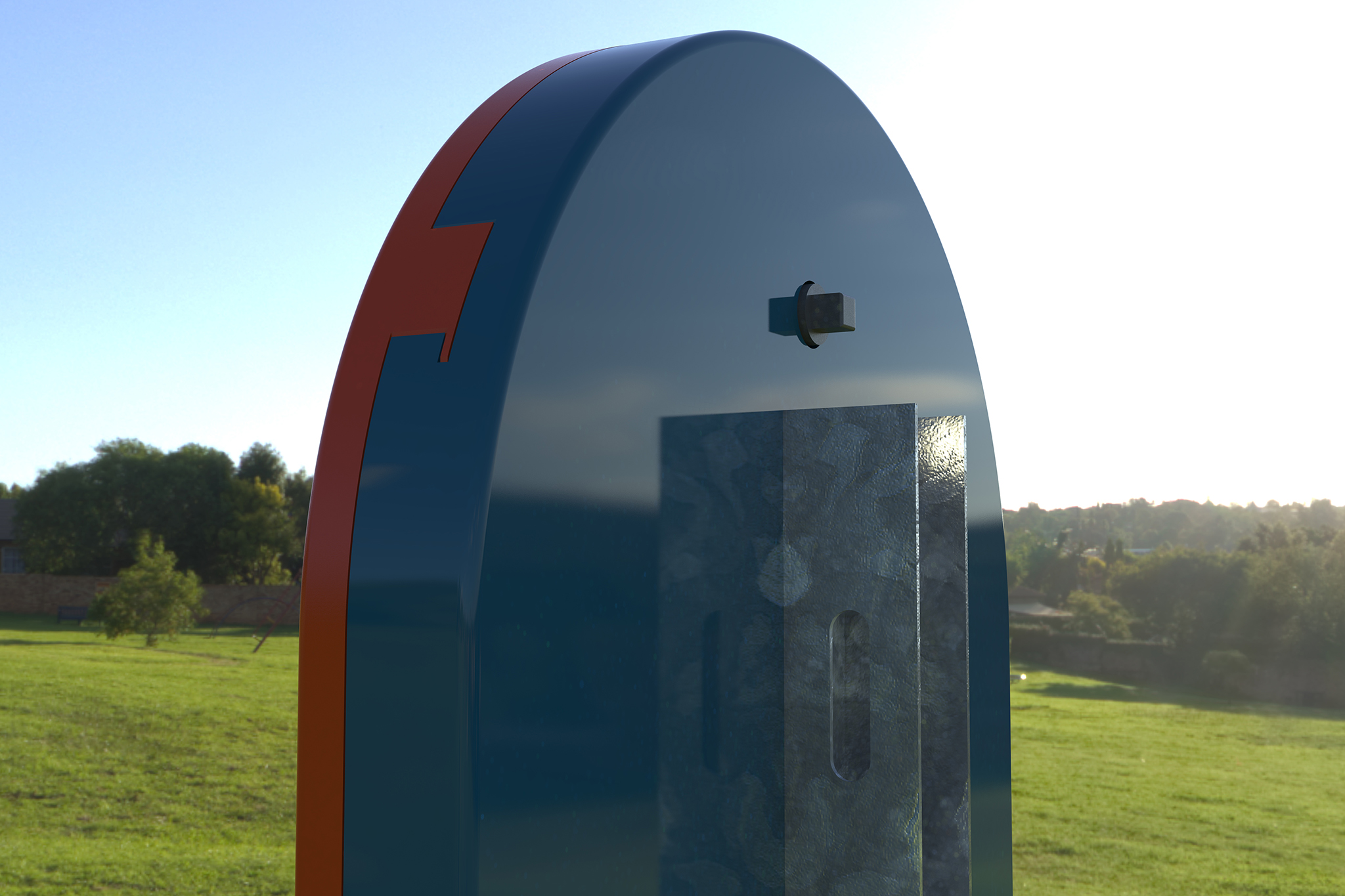
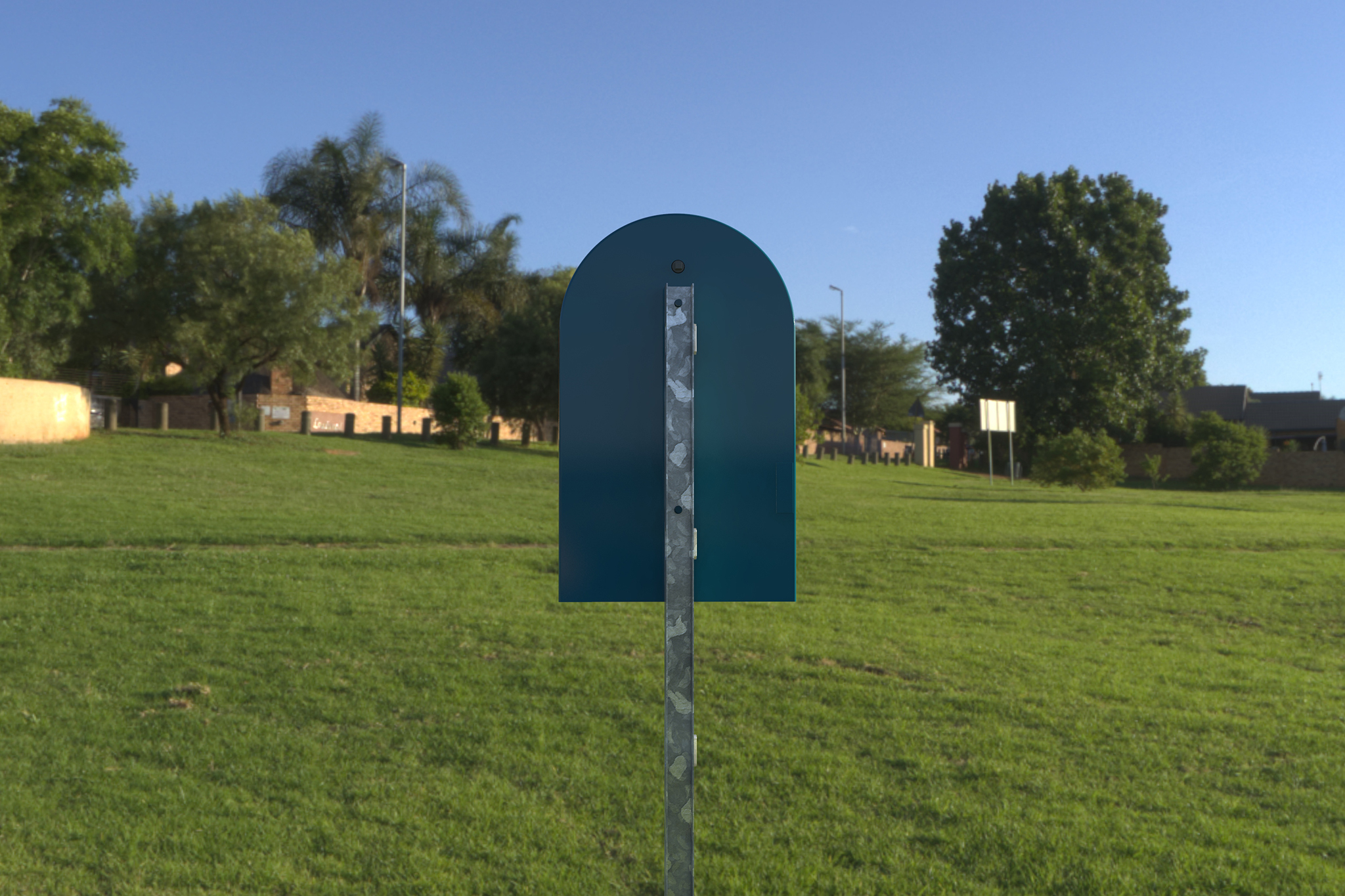
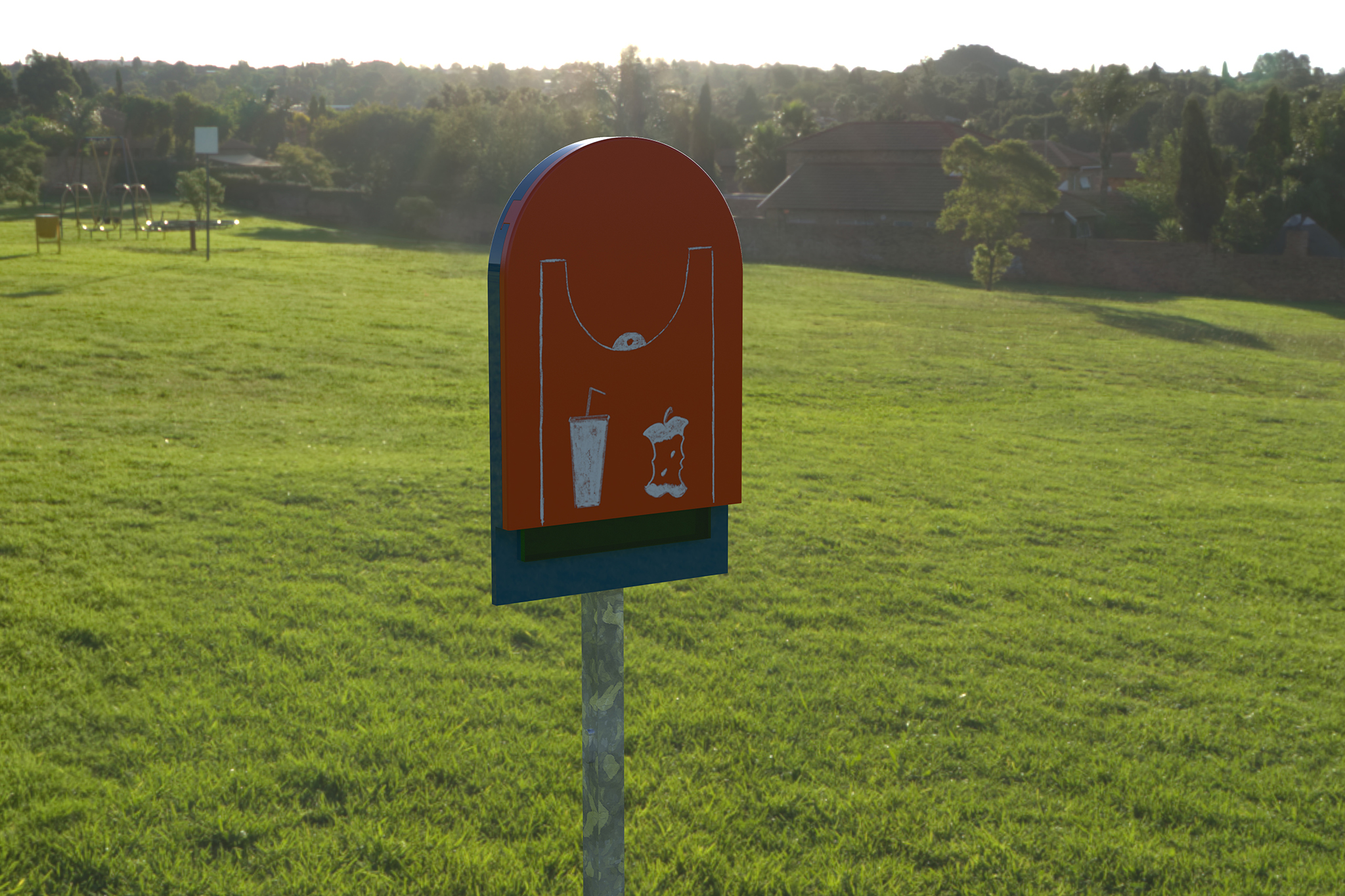
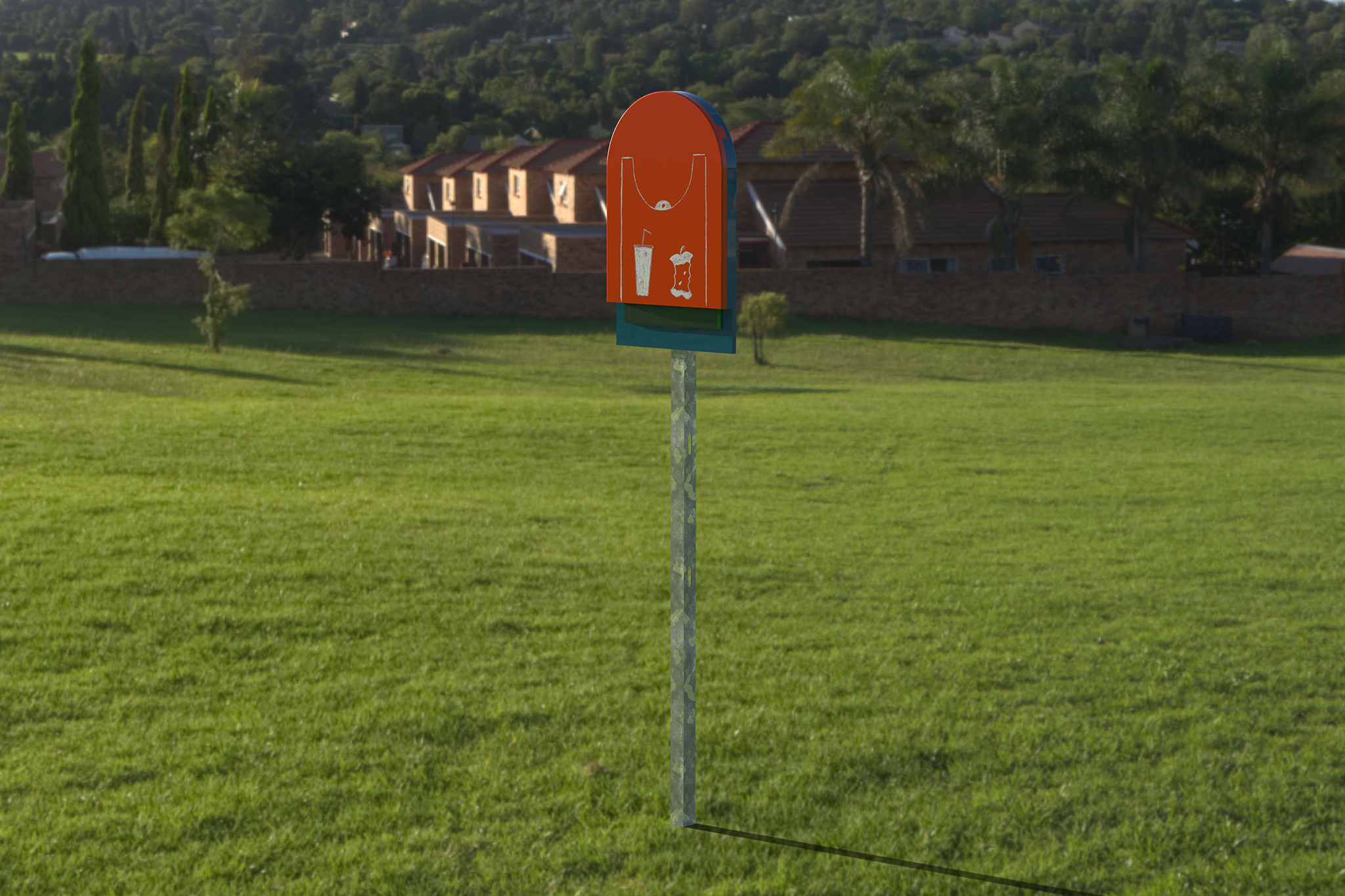
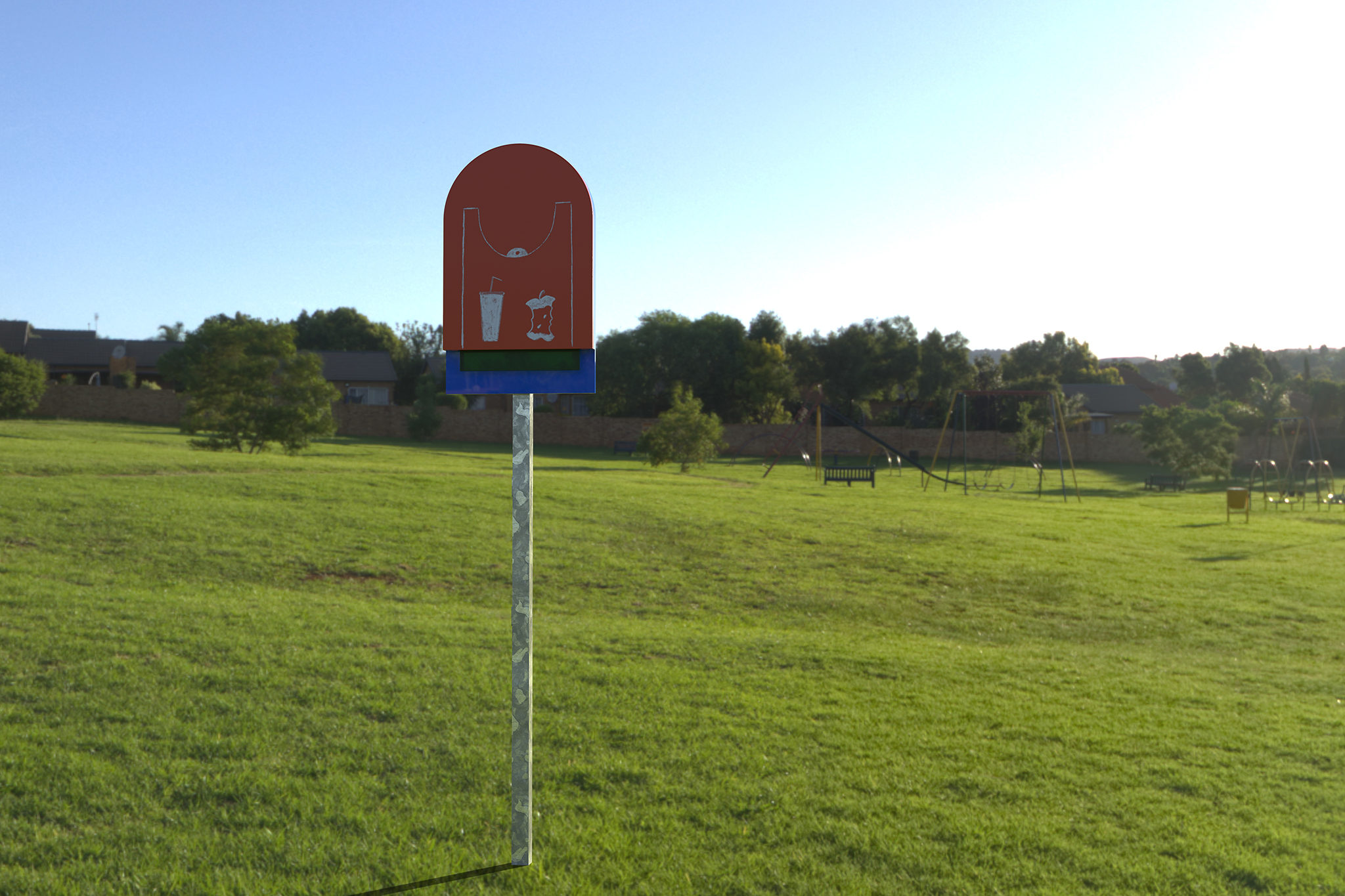
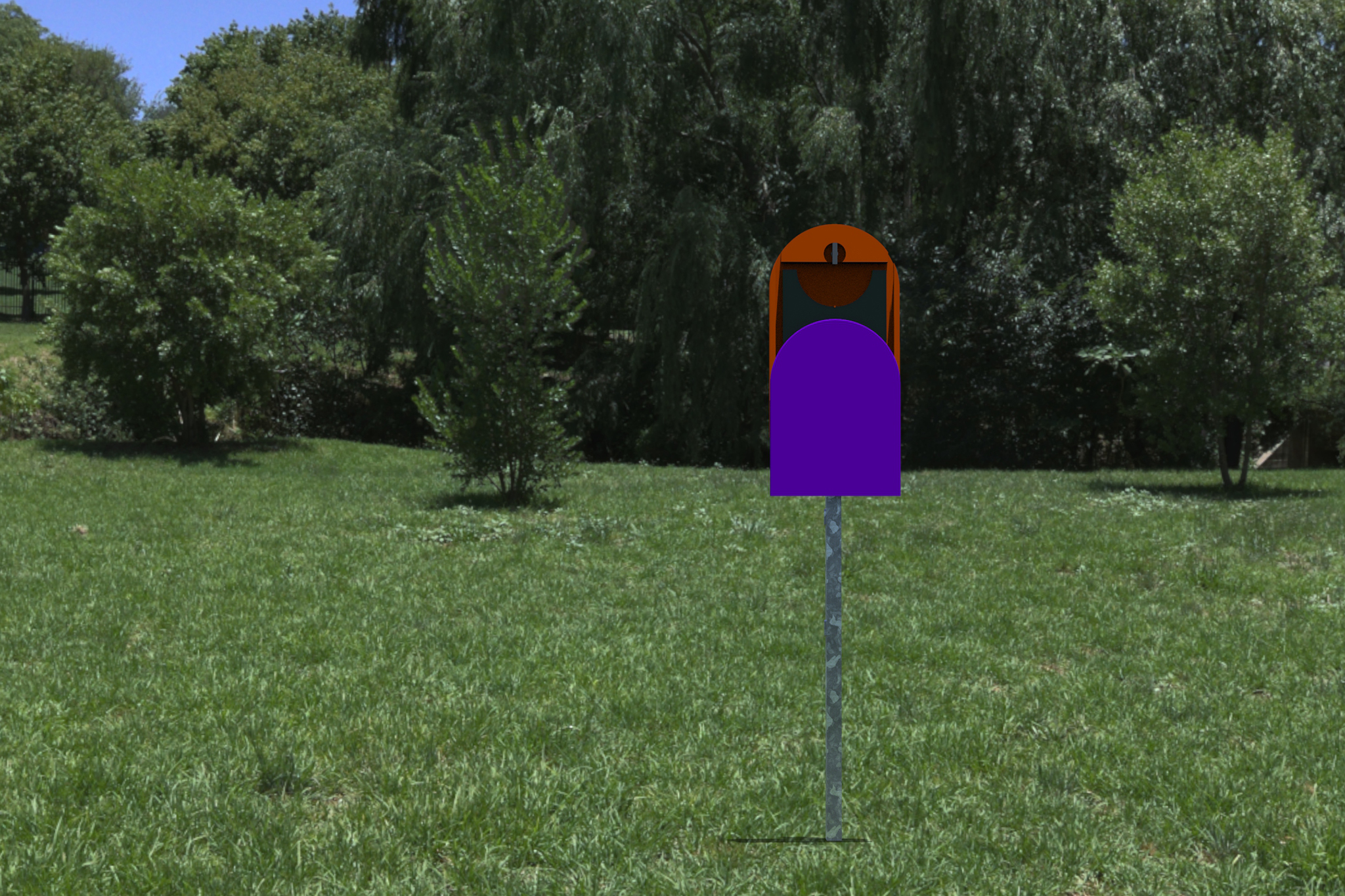
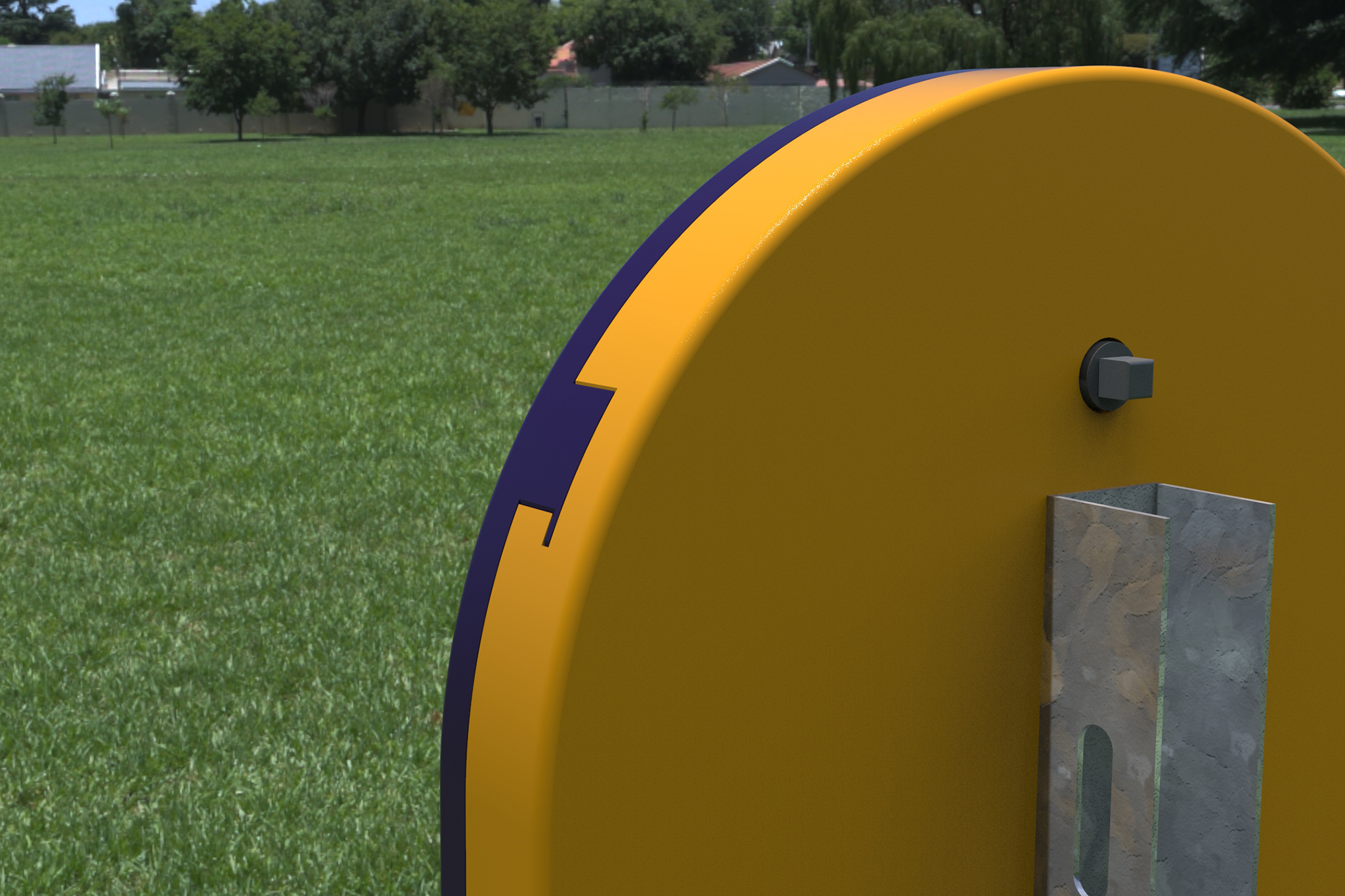
Process:
Mossy Pads are 100% natural menstrual pads, made from sphagnum moss. This moss has great absorbing qualities and is also known for helping skin issues. These pads are disposable in compost and the sphagnum moss can go back to life when it will meet the land eventually!
INSPIRATION:
First – in my arrival to Berlin – I had a trip to a forest outside the city. The big amount of moss that was there amazed me and made me very curious about this material. At the same time this project began and I started to think about how I can use this plant to make our urban life better and more sustainable.
After some research I found interesting FACTS:
• Dried Sphagnum can absorb up to twenty times its own volume of liquids, such as blood, pus, or antiseptic solution, and promotes antisepsis.
• Additionally, being commonly found throughout the UK, sphagnum moss was cheaper than the alternative of cotton wool dressings – which in World War One had been commandeered for the manufacture of munitions. The moss was often collected by women and children, and was sorted, dried, and packed into muslin bags.
The absorbent properties and abundance of Sphagnum make it the most used taxon among the bryophytes.
When I realised it I made a connection to another fact that always on my mind: Tampons, pads and panty liners along with their packaging and individual wrapping generate more than 200,000 tonnes of waste per year, and they all contain plastic – in fact, pads are around 90% plastic.
The average user throws away an astonishing 125 to 150kg of tampons, pads and applicators in their lifetime.
ACT:
In my process I searched for the right way to use the moss in the menstrual products world. I focused on the pad because they consist of much more plastic than tampons.
The first thing I tried was to grow the wet moss on some kinds of fabric. I hoped that the moss would connect the fibers of the textile. After a few weeks I saw there is no change, meanwhile, I started working with the dry sphagnum.
I used the dry moss, as a filling for pad-shaped pockets.
This product was practical as a reusable pad but then I understood that I wanted to focus on a disposable solution.
After some research about what organic materials can be combined with the moss to create new light flexible material that will have the absorbent properties of the sphagnum, I start cooking and pressing the moss with agar and glycerin.
When i got to the right shape and thickness that absorb the tested amount of liquid,
I looked for another material to wrap everything and make a softer feeling. For that I used the tea filter that was made from abaca pulp.
I also used wax to connect everything and make the edges a little bit stiffer.
IMPACT:
The impact of organic menstrual pads can be huge worldwide. The womens period is a silent field that started developing in the last few years to more sustainable solutions. In my choice of using cheap, fast growing materials I believe that this product can be more accessible to low socio-economic areas with less awareness of the climate change problem and the existing solutions.
Yali Paz, 5.sem exchange student Bezalel Jerusalem, WS 2020/21
Project:

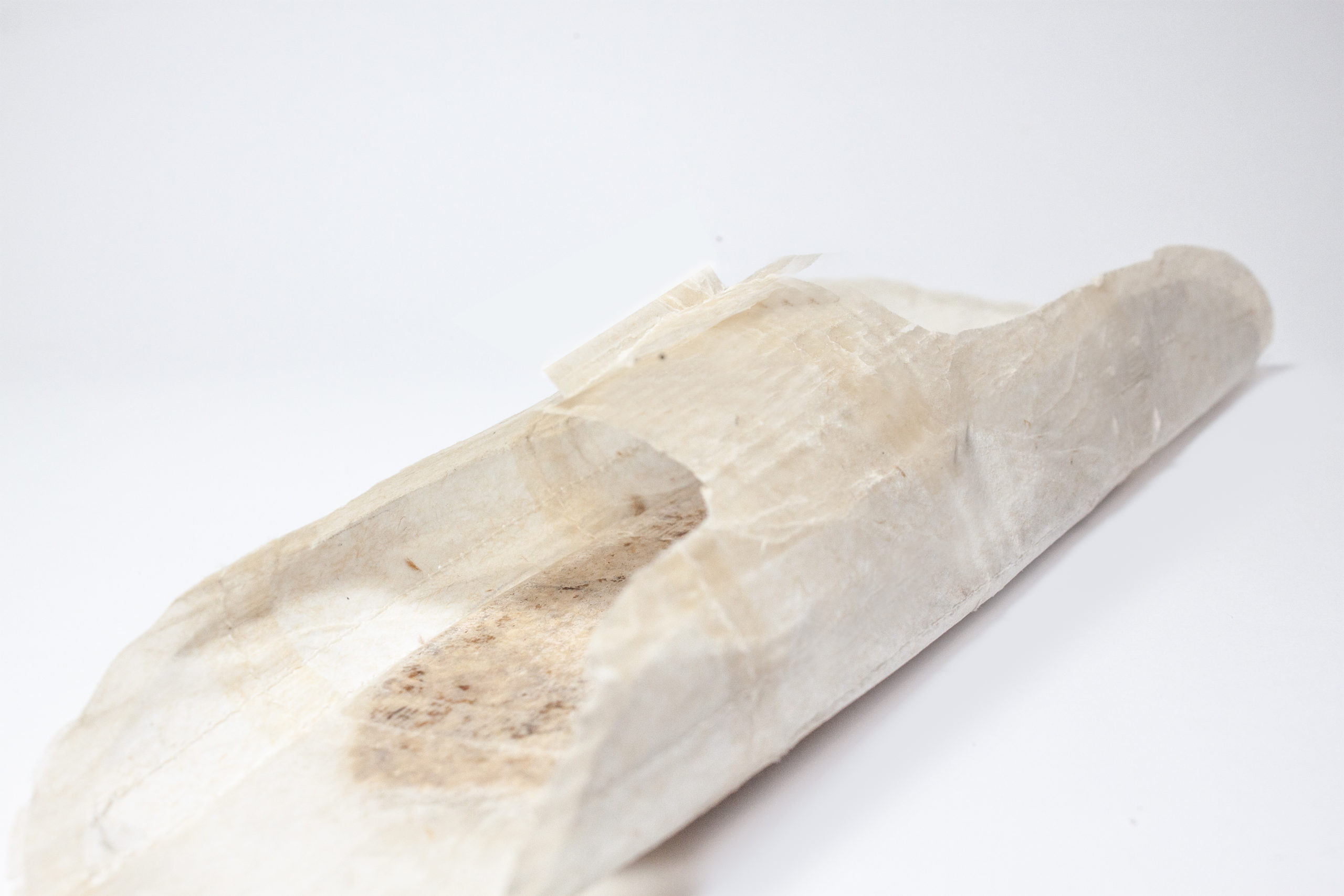
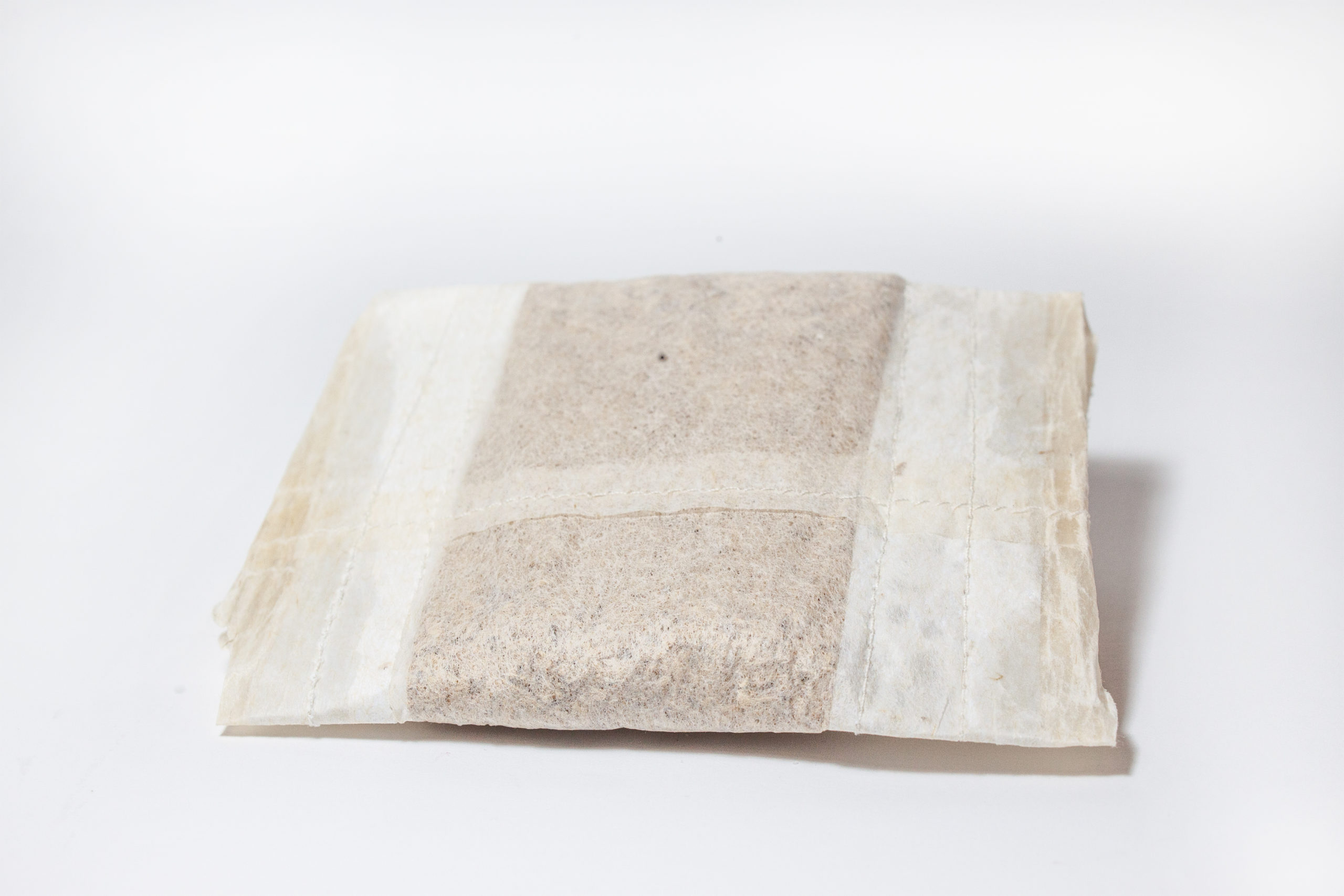
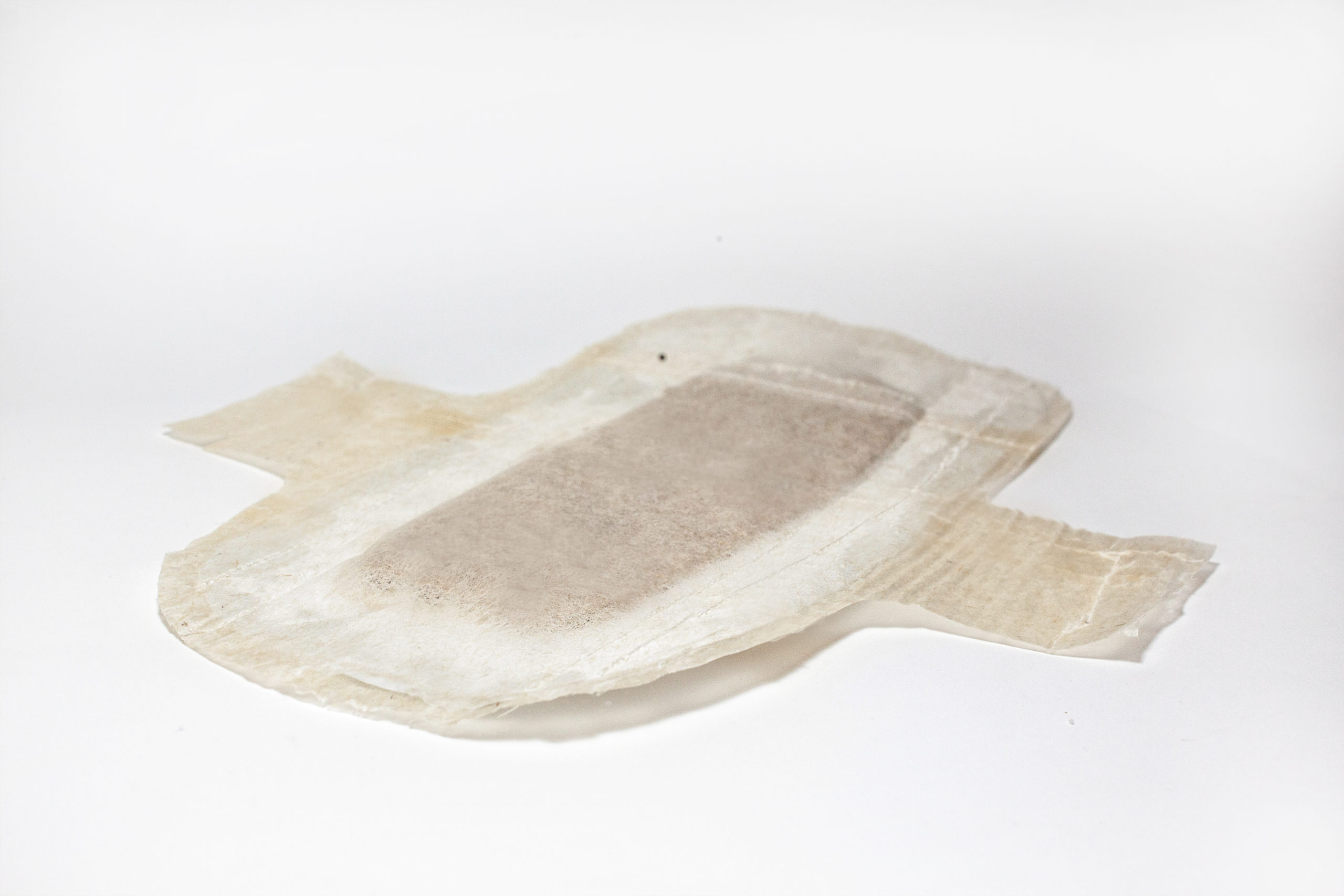
Process:
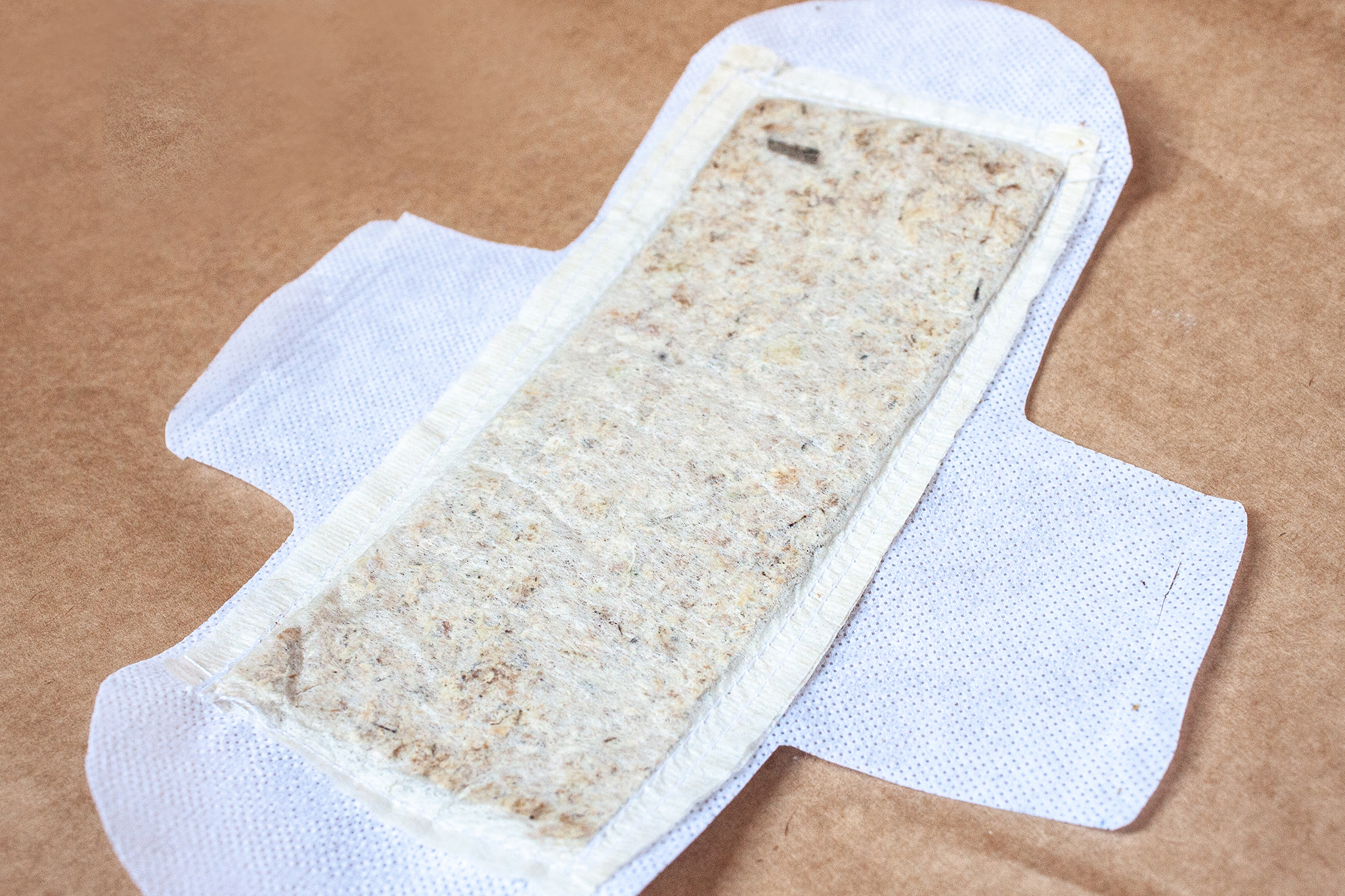
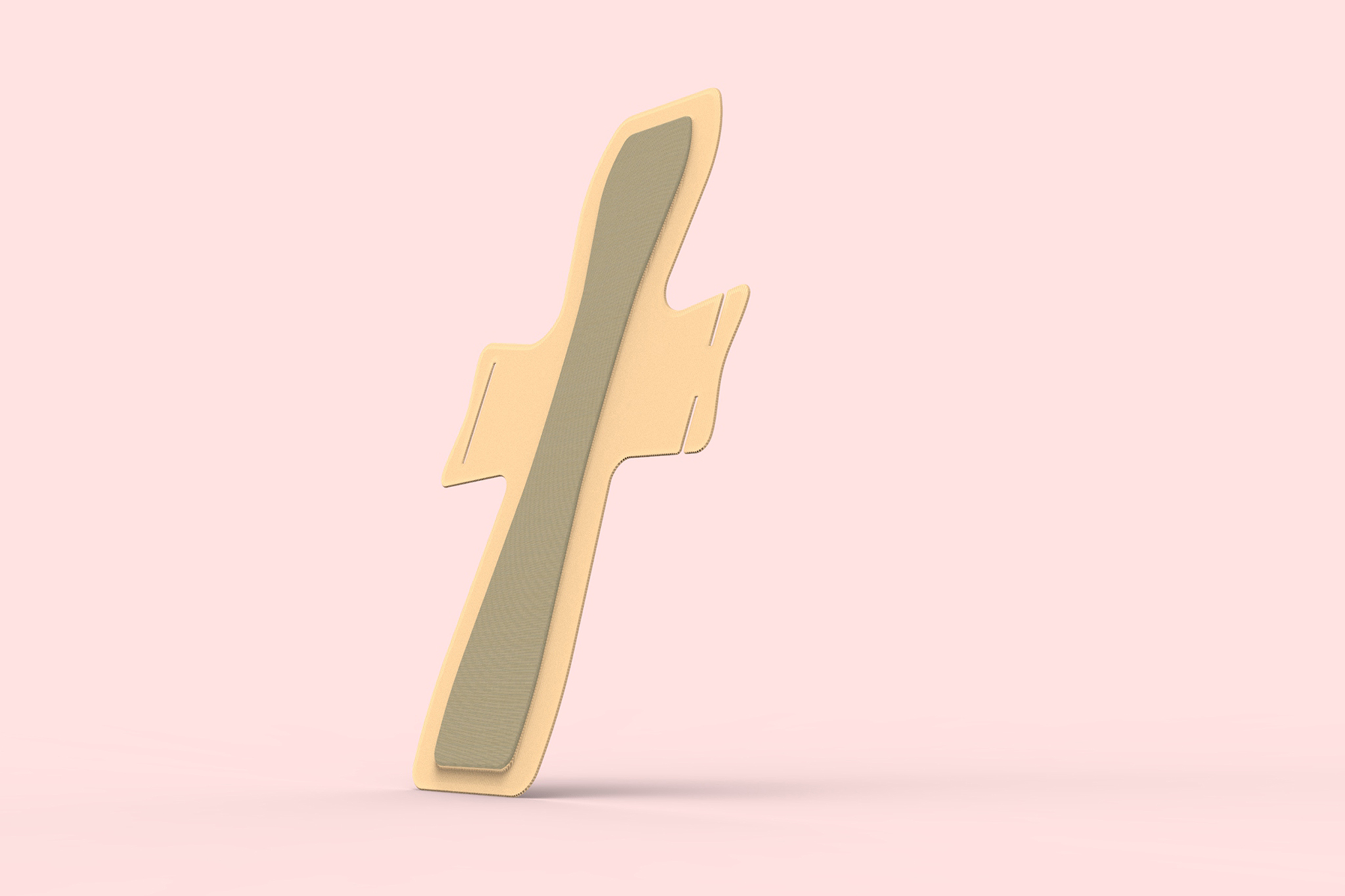
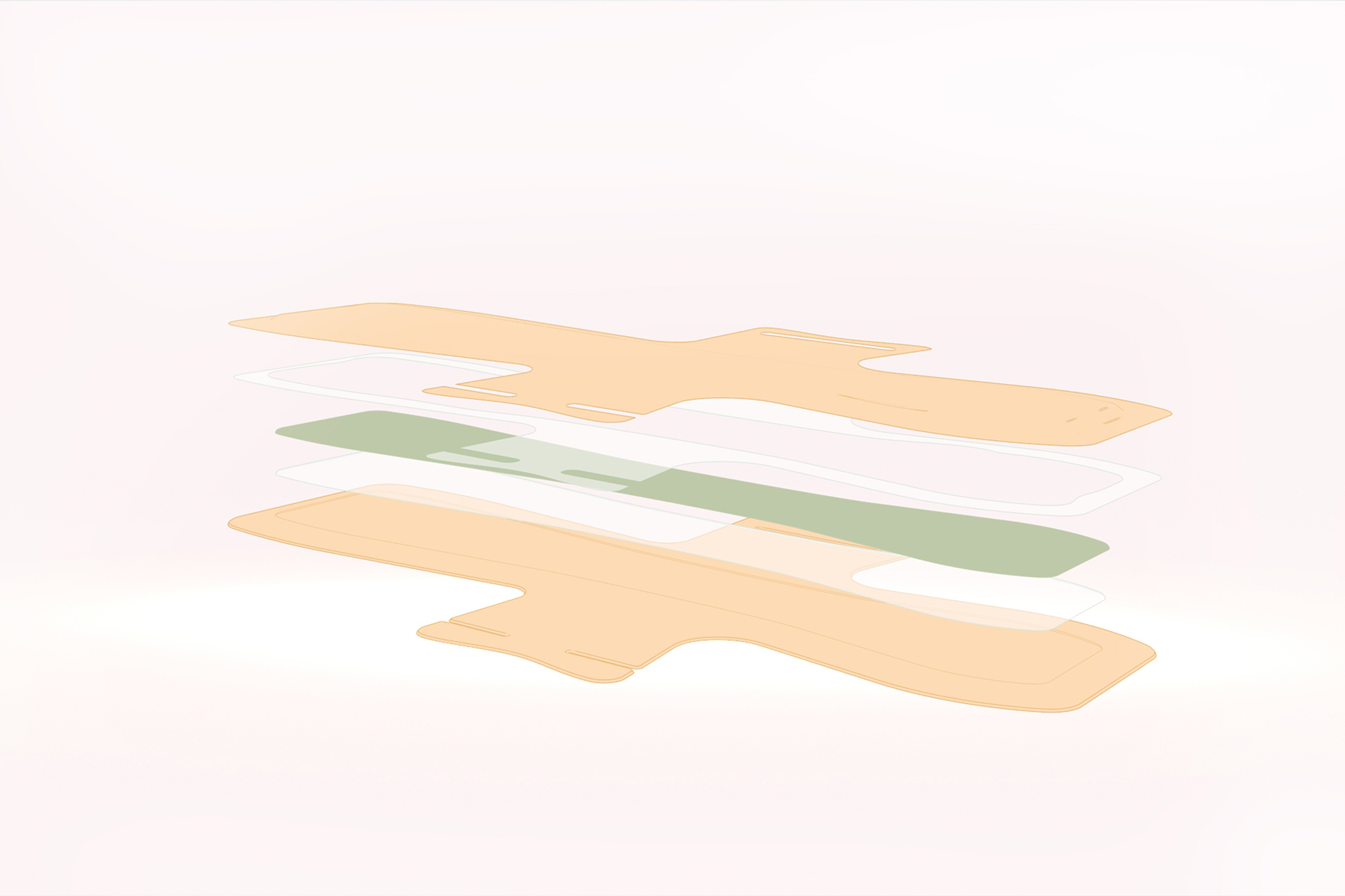

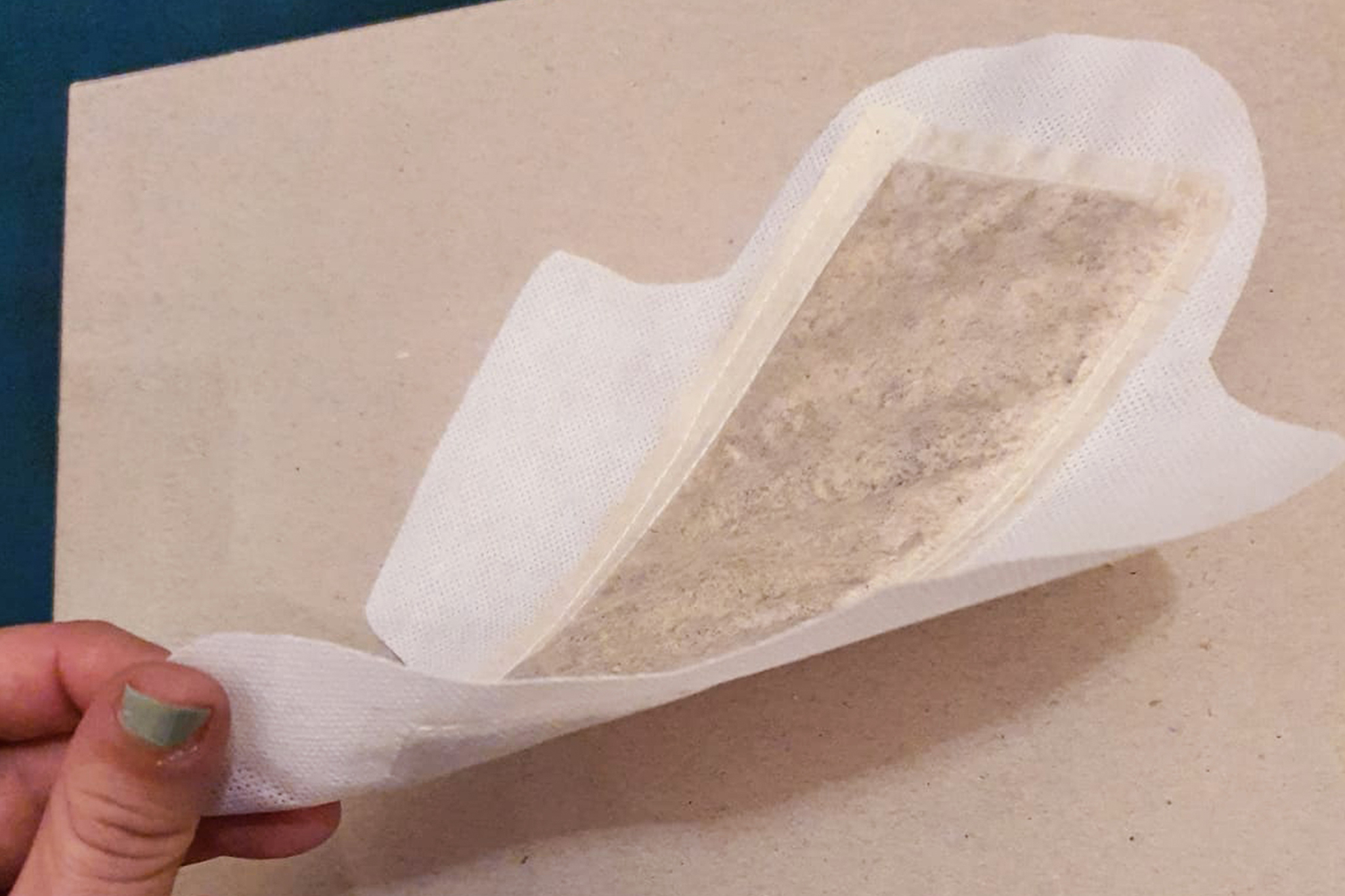
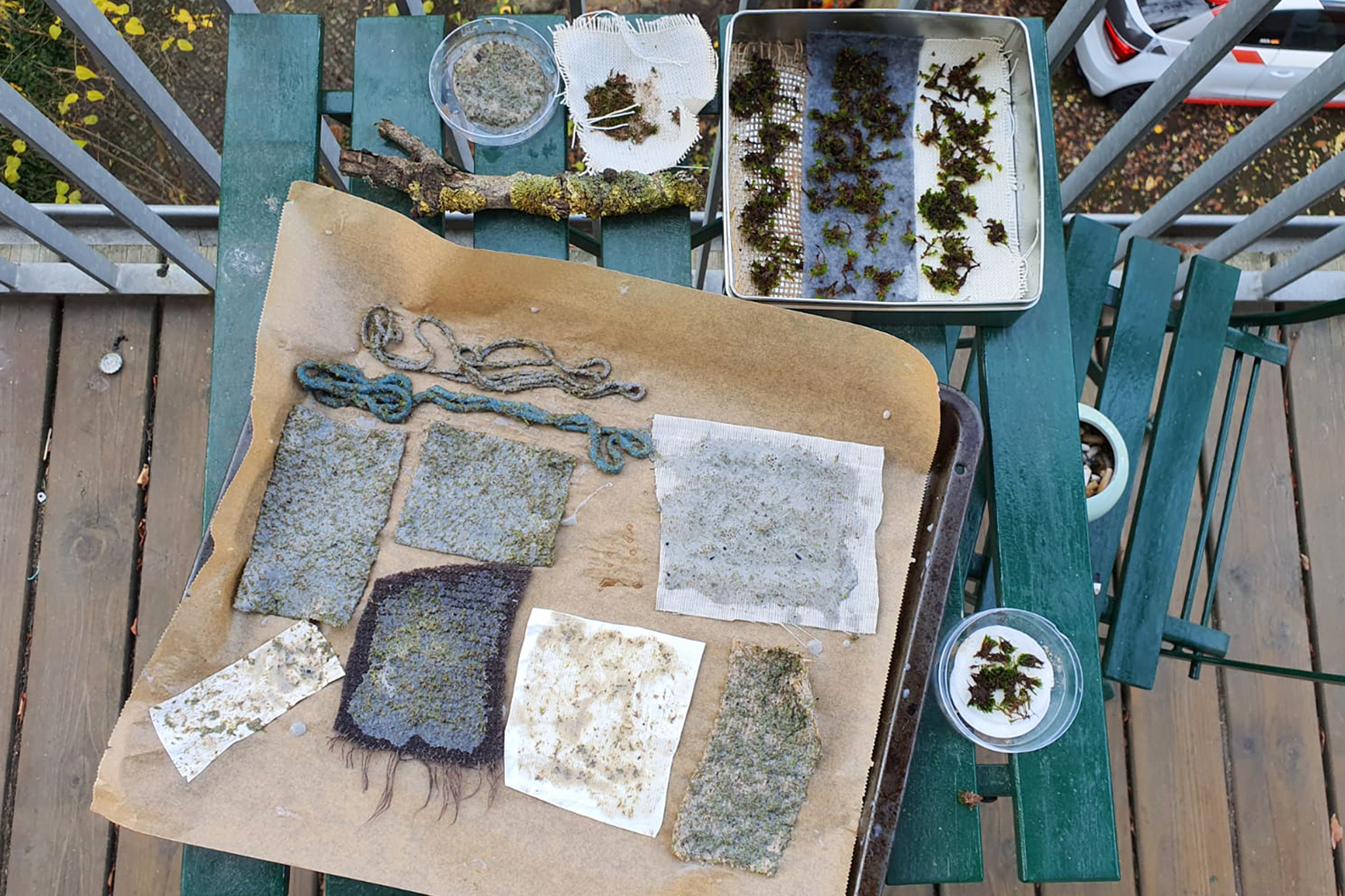
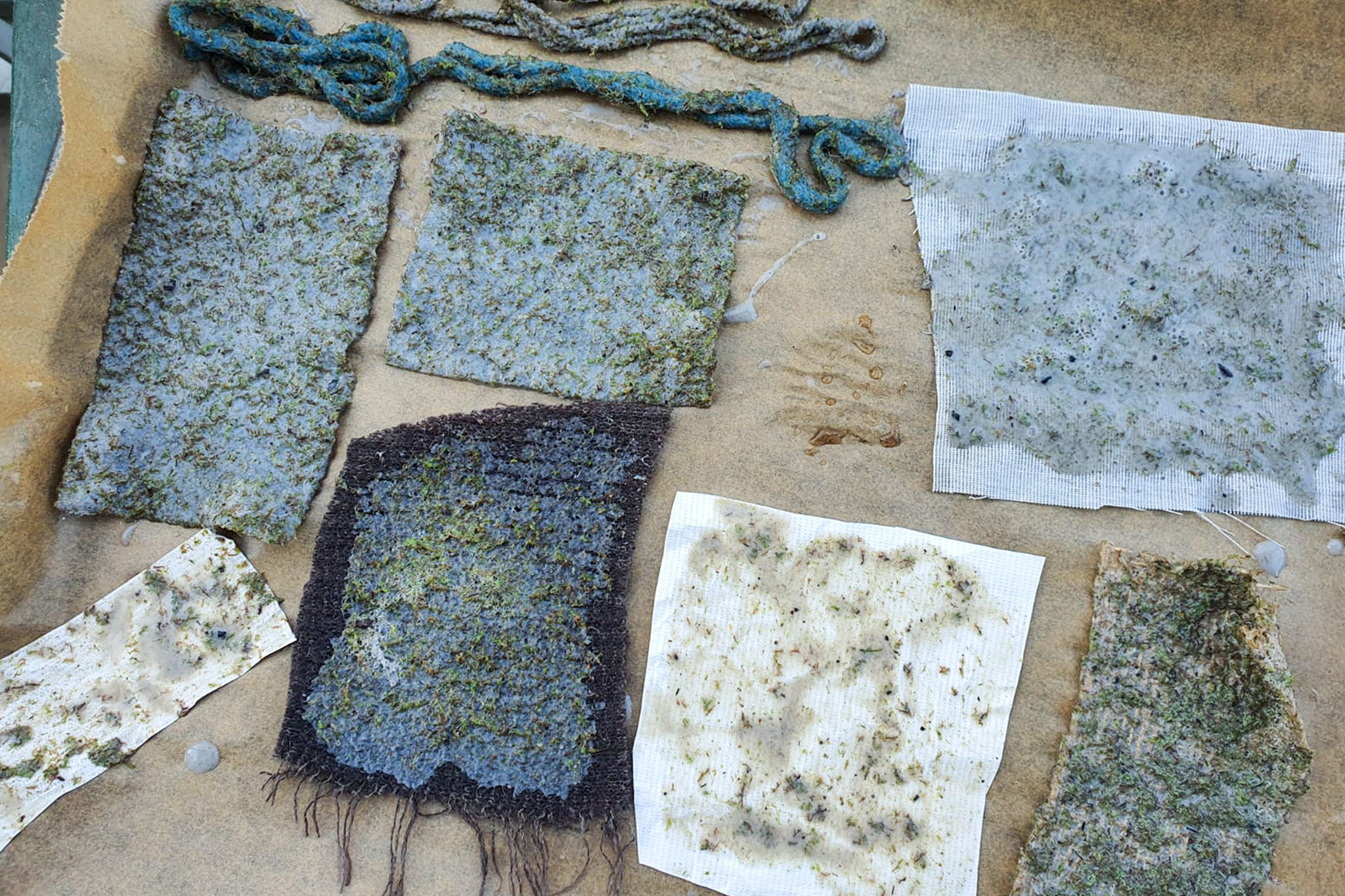
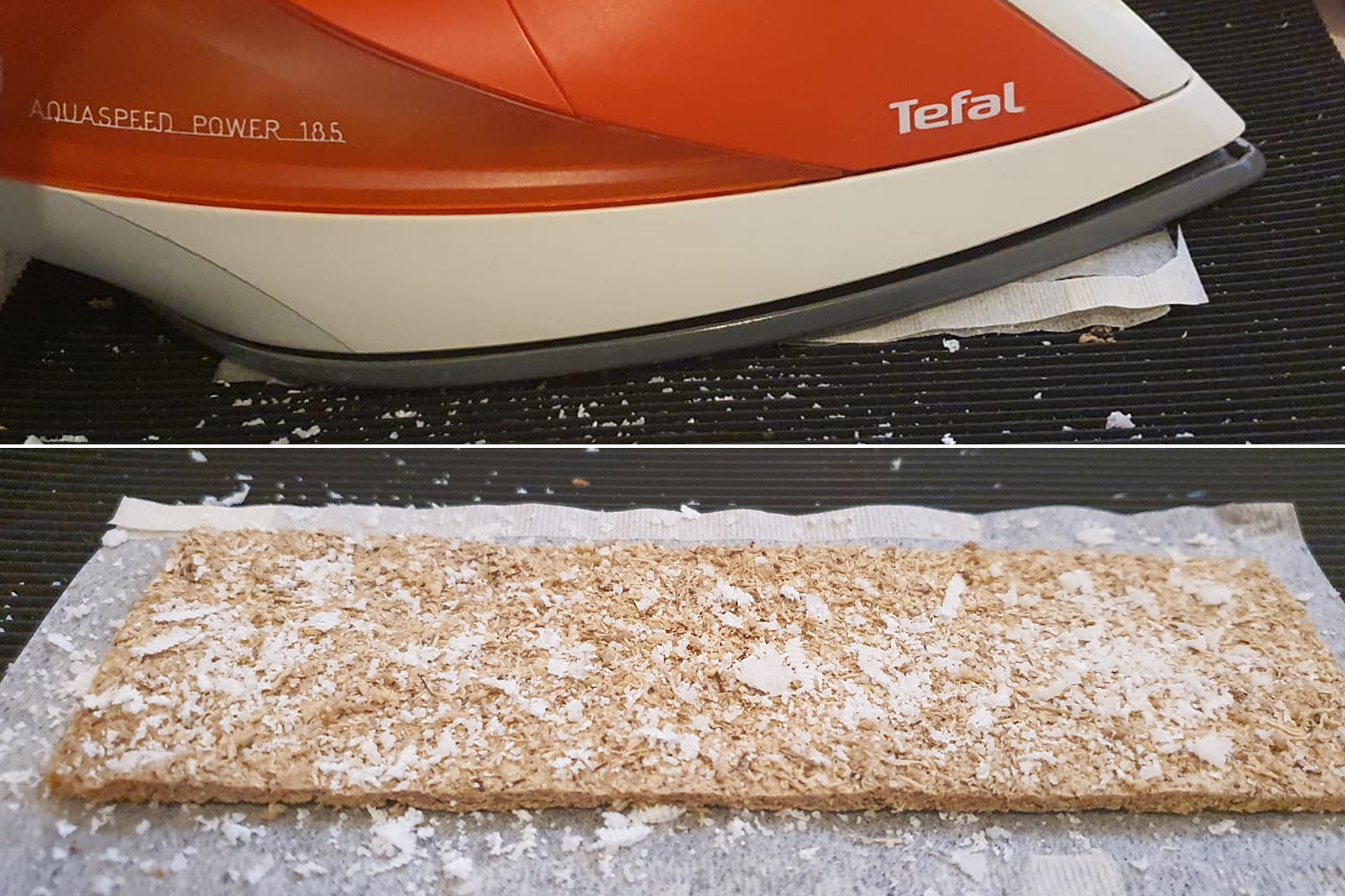
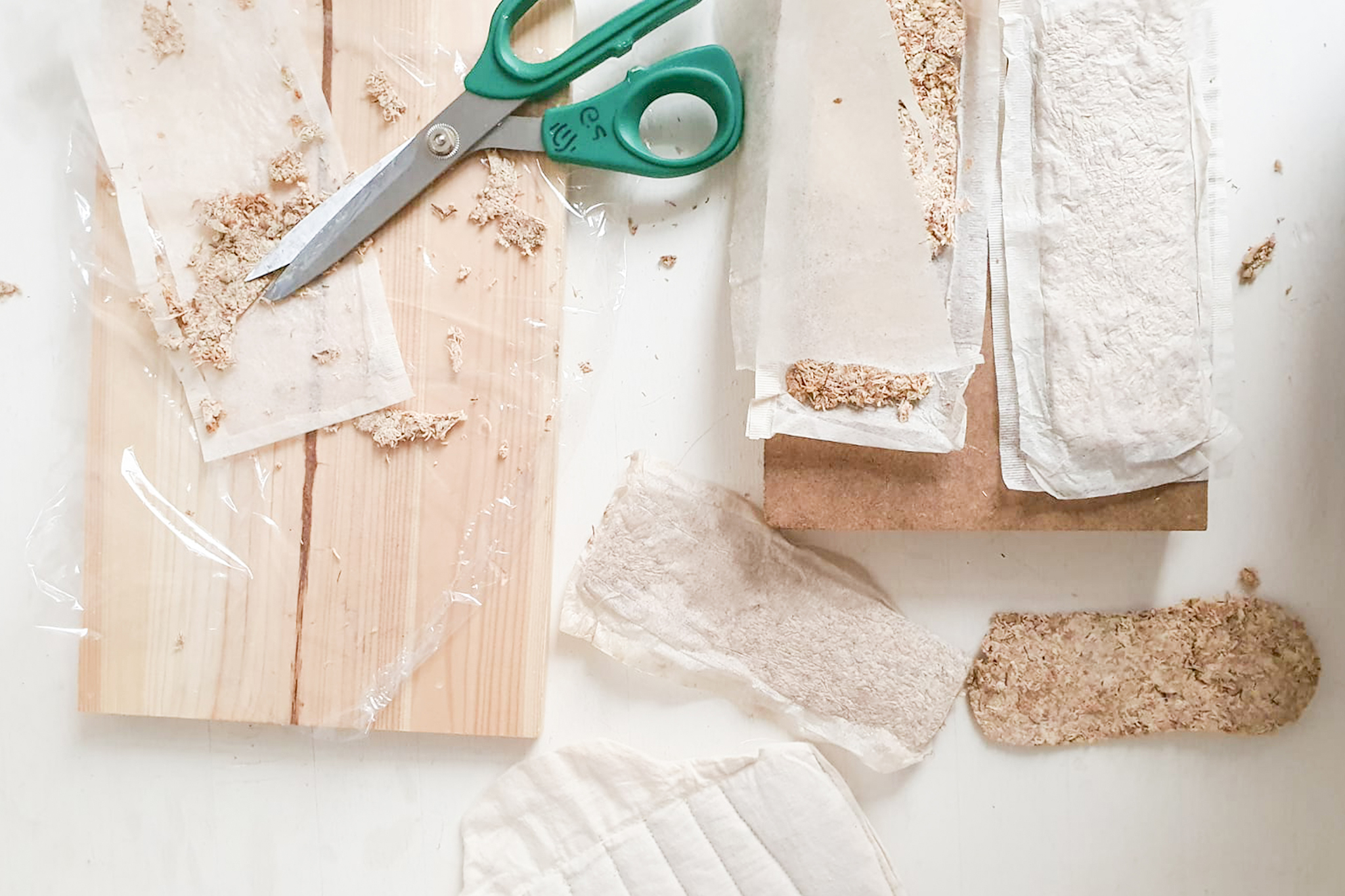
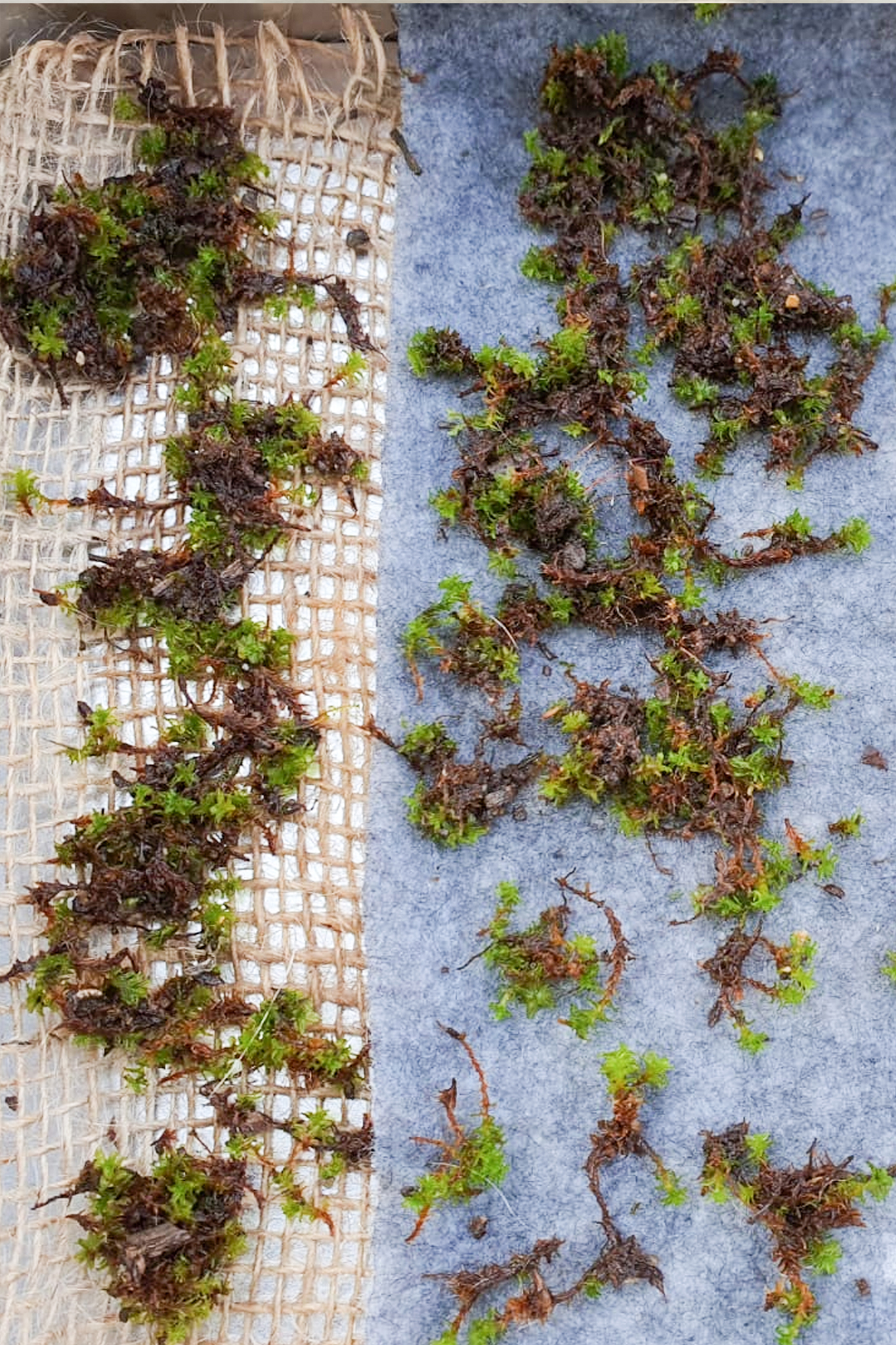
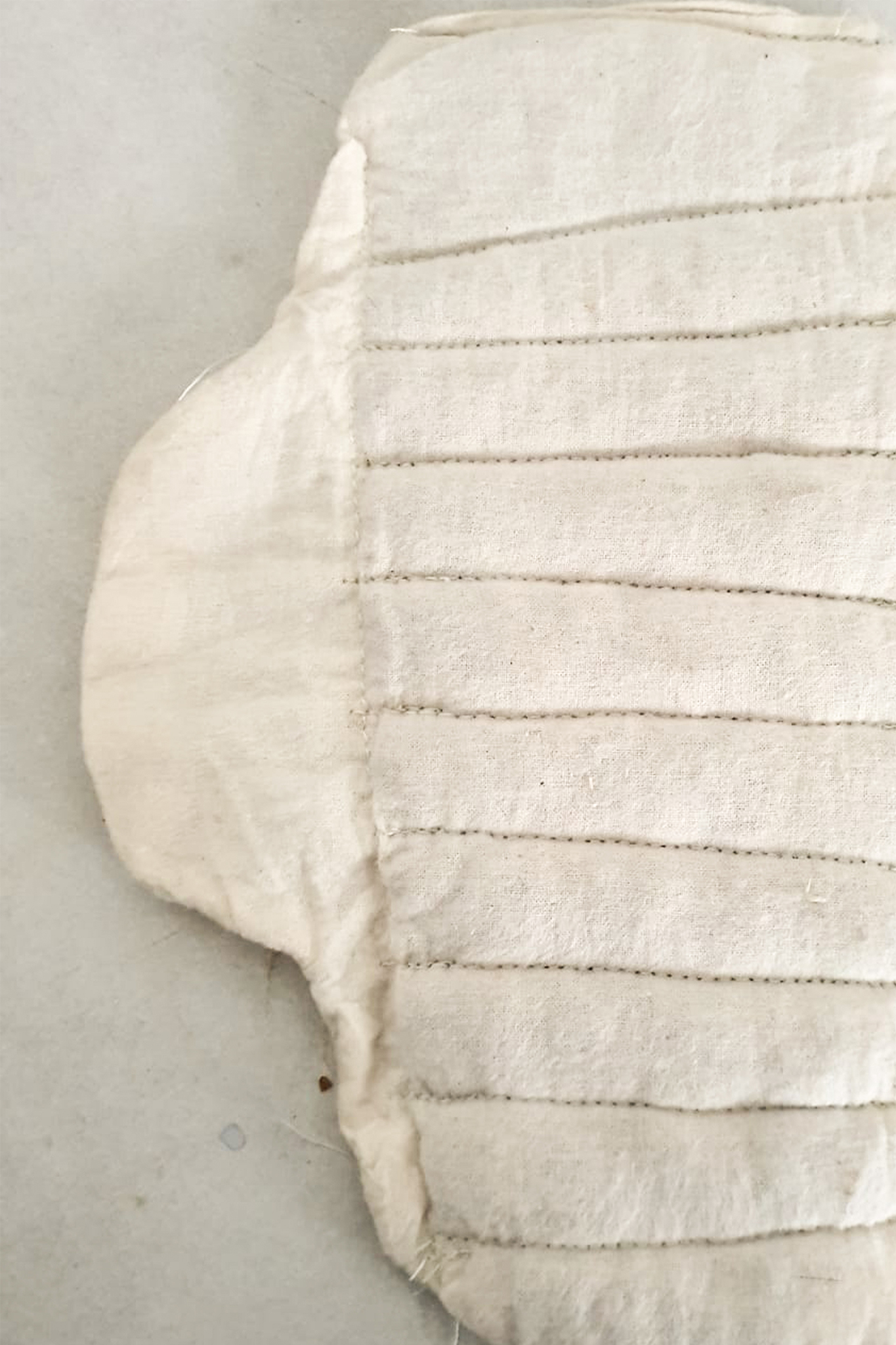

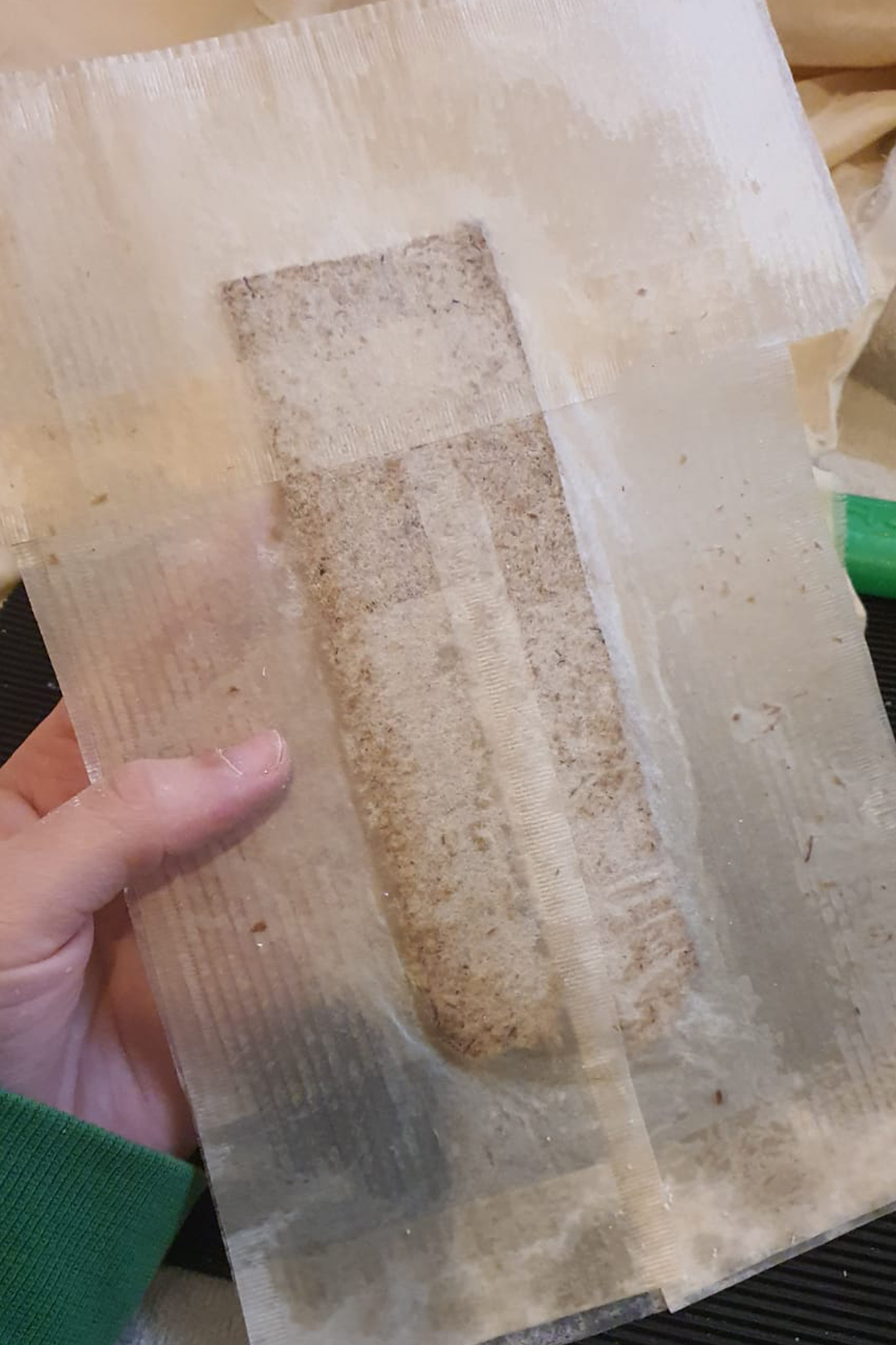
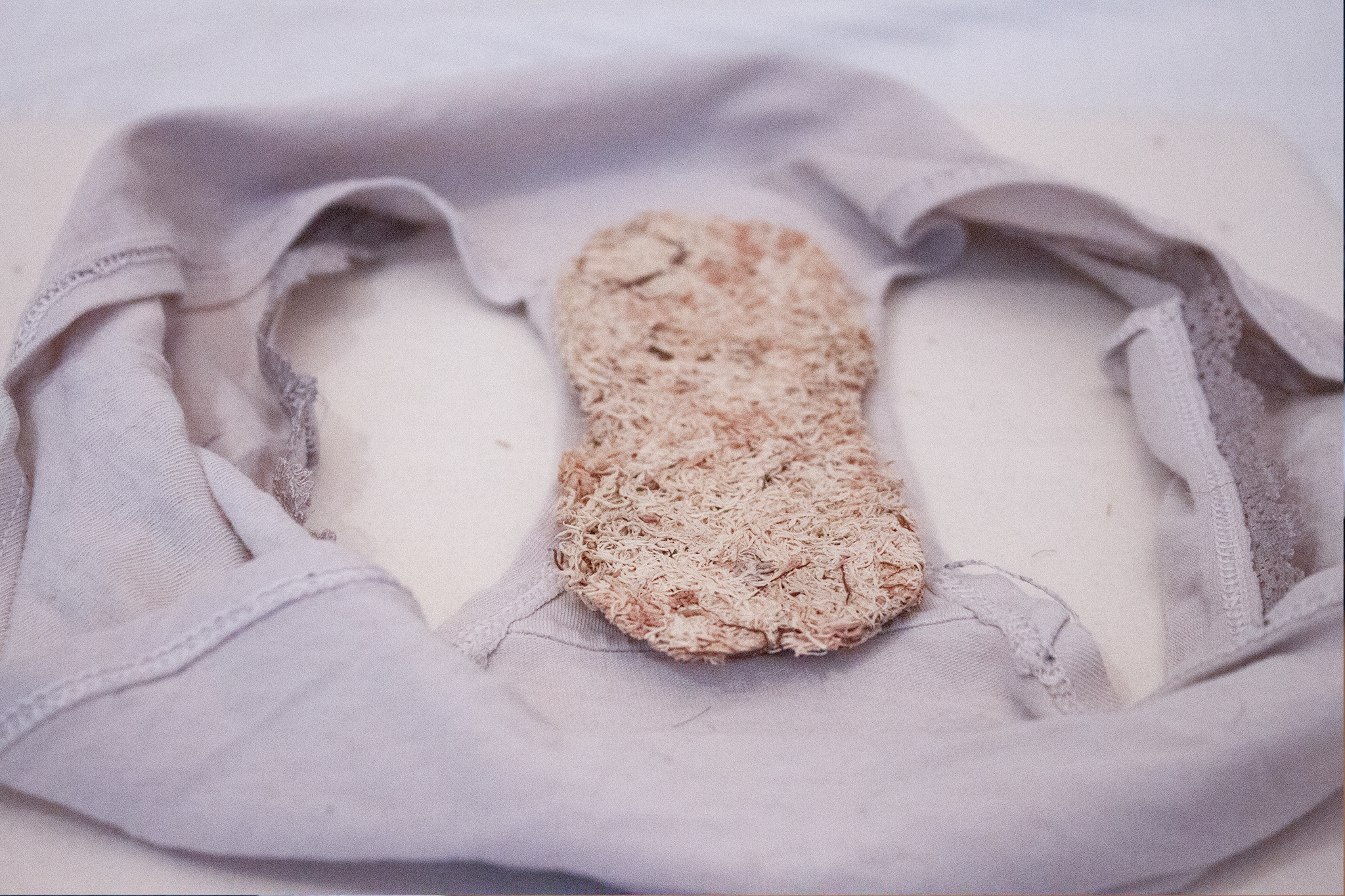
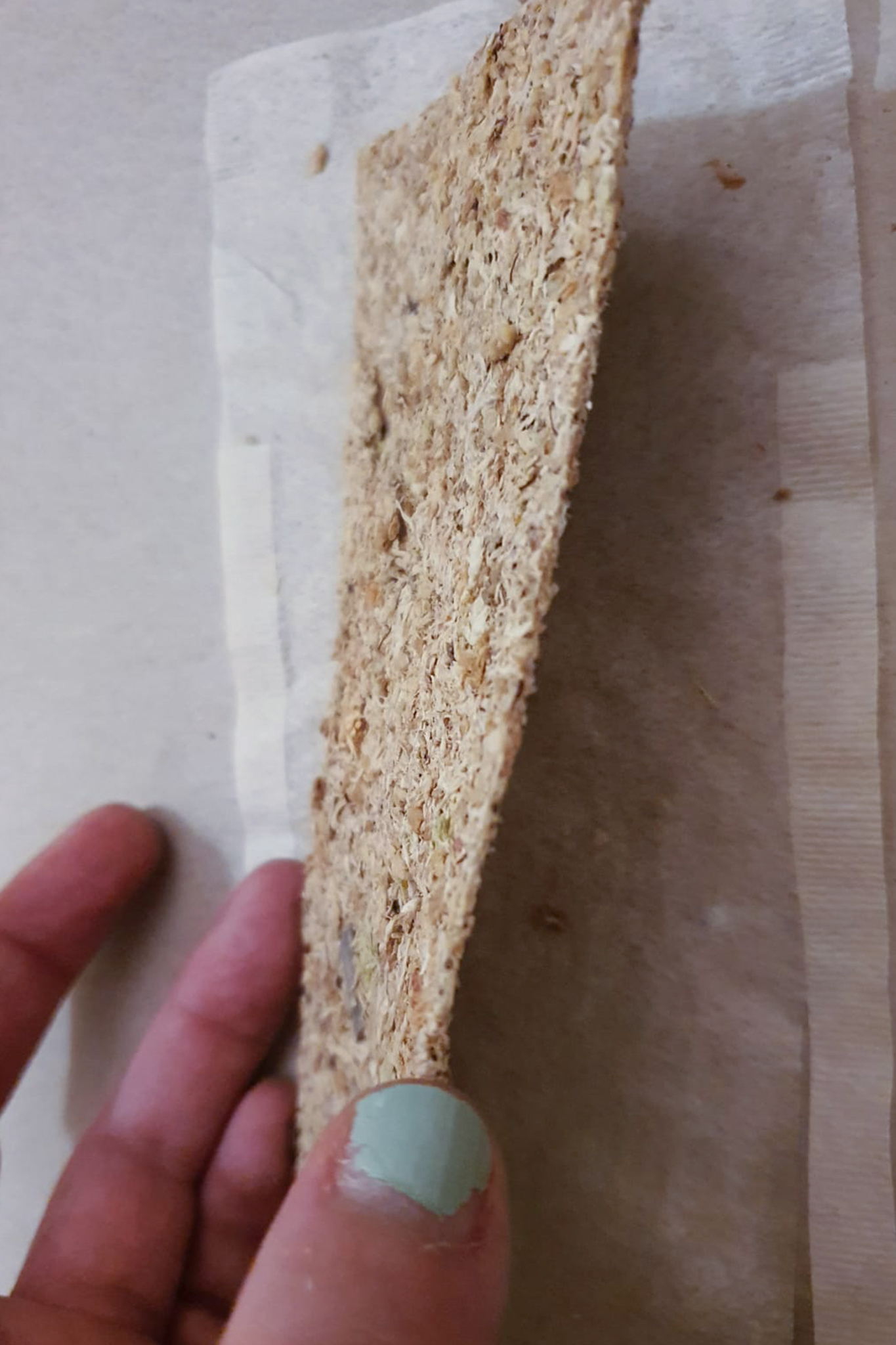
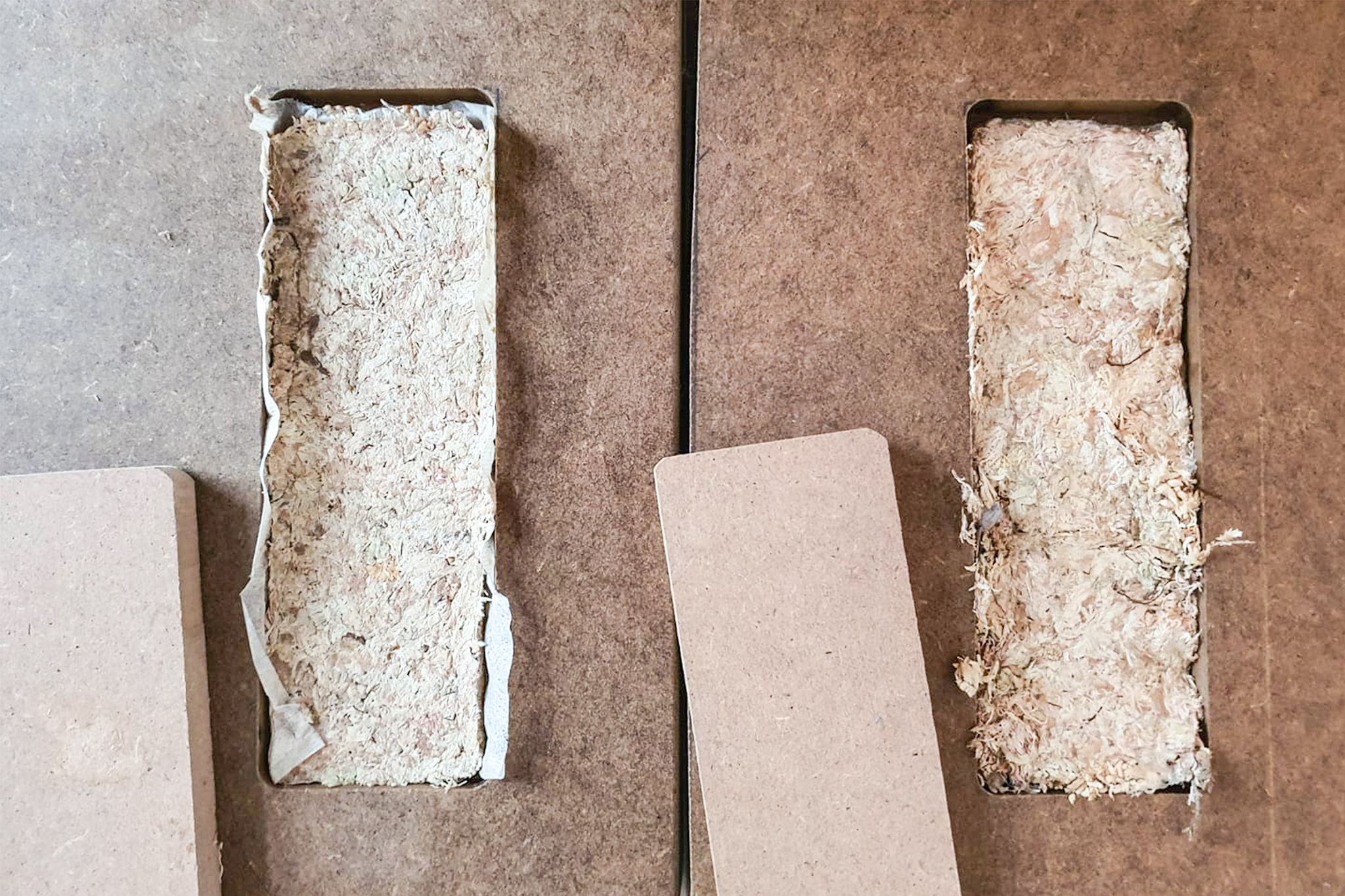
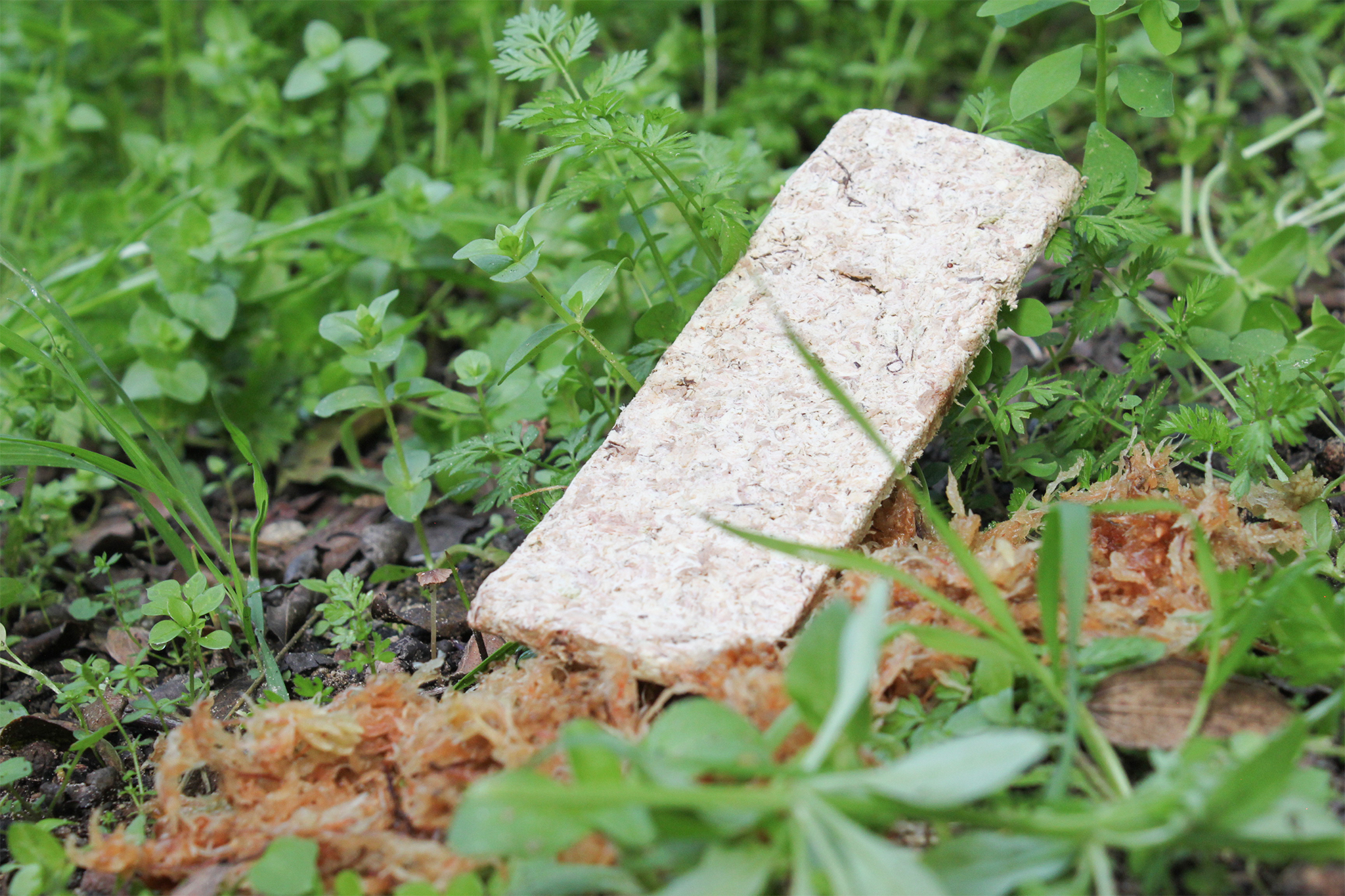
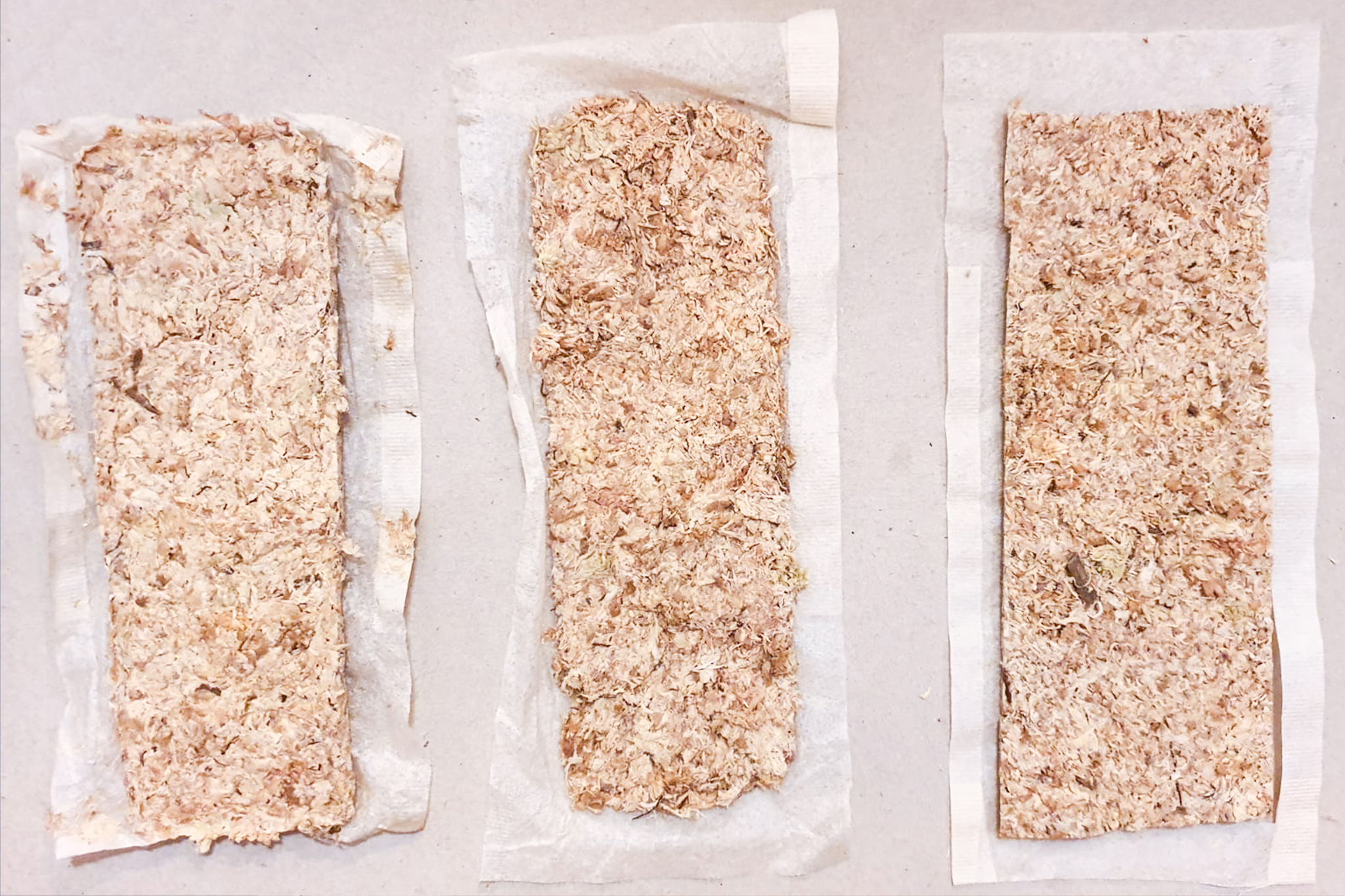
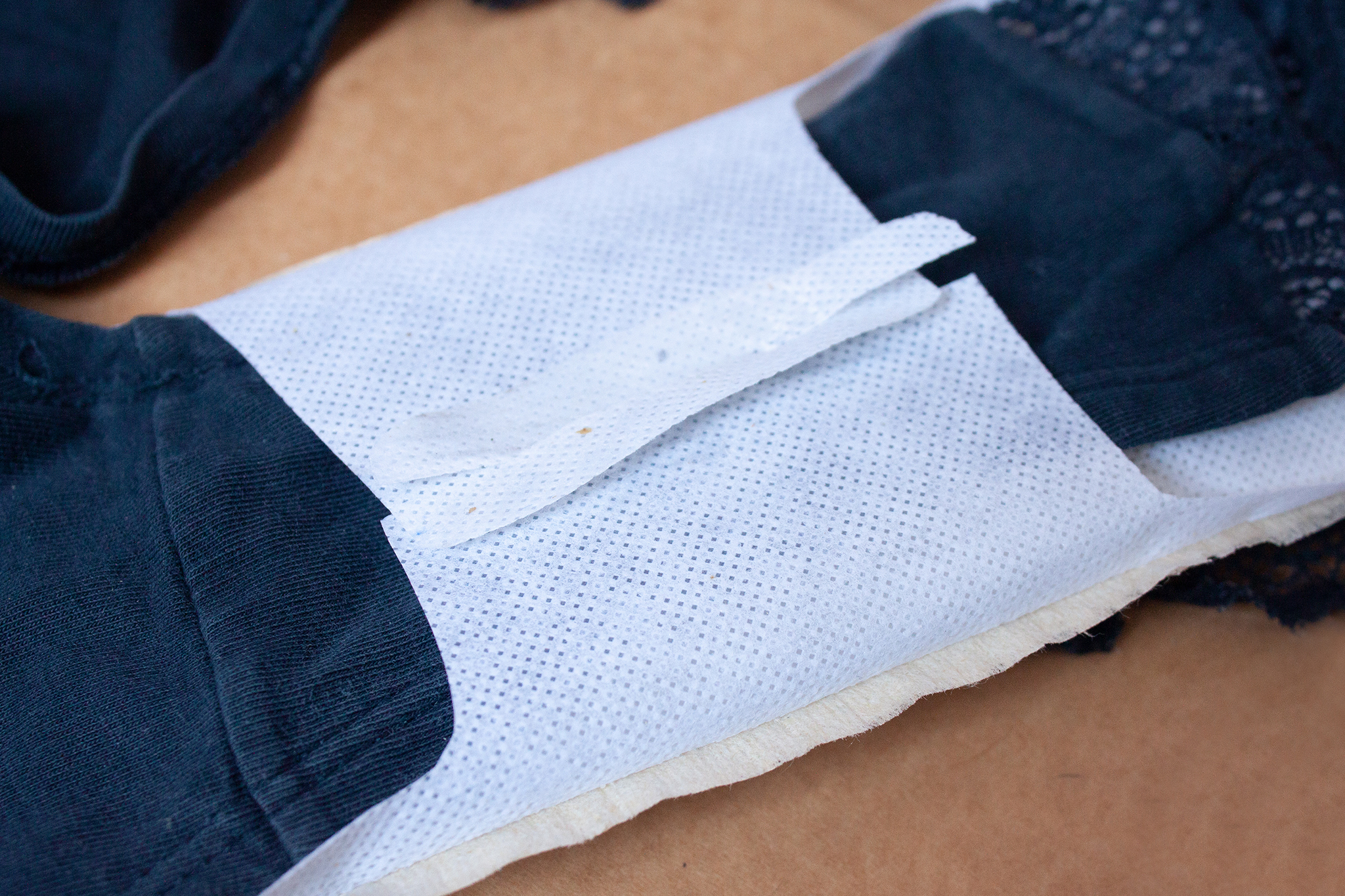
AMULA is a proposal on how to deal with rainwater in an urban context in the future. Collecting rain in a decentralized manner for local use, AMULA also aims to strengthen neighborhoods and raise awareness for the problems of the future.
FACT:
Climate change is no longer just a theory, a calculation by scientists about the possible effects of greenhouse gases on the global climate, it is now tangible, even if in Central Europe to a still modest extent. Nevertheless, it is getting hotter, year after year, and drier. The amount of precipitation is slowly but steadily decreasing. In 2019, for example, annual precipitation was 85% of the long-term average. This deficit is also having an impact on the city’s trees, and in the particularly dry years of 2018 and 2019, more than 7000 trees died in Berlin as result of a lack of water. Although the city already invests a lot of money in the irrigation of trees, especially young trees, it also needs the help of the population to provide the trees with sufficient water in summer.
ACT:
AMULA is a proposal to make this water supply easier. AMULA collects rainwater that would otherwise run off the roofs of residential buildings directly into the sewage system, where it would be mixed with regular wastewater, and makes it available directly at street level. In this way, the system makes it much easier to access water for watering trees, which can help encourage citizens to take more care of the trees in their neighbourhood. In addition, the rain barrels create a place to linger and relax, but also for gatherings and neighbourly exchanges, thanks to their shape as benches.
The intended material is stainless steel. Since the containers should remain filled with water even in winter, in order to store as much rain as possible for possible dry periods, and water expands when it freezes, the containers should be made of a resistant, durable material. In general, stainless steel is better suited to withstand all weather extremes than, for example, plastics, which would become brittle, especially with prolonged exposure to UV radiation.
To prevent the tanks from bursting in the event of freezing, the benches are designed with sloping sections so that the resulting pressure of the ice can be distributed. To ensure this, the tanks should also be filled to a maximum of 75% with water, which corresponds to about 300 litres of storage volume per bank.
The connection to the downpipe of the rain gutter is made by a so-called rain strainer, which can be connected to the first bank of a row via a flex pipe using a bayonet fitting. Due to the hollow concrete bases, the individual benches can be coupled to each other so that the water can be distributed evenly to all the connected tanks. The water is drawn off via a standard ¾-inch garden hose connection, which is equipped with a stop valve. This makes it possible to draw off the water simply by connecting a simple garden hose.
Hendrik Lucka, 5.sem WS 2020/21
Project:
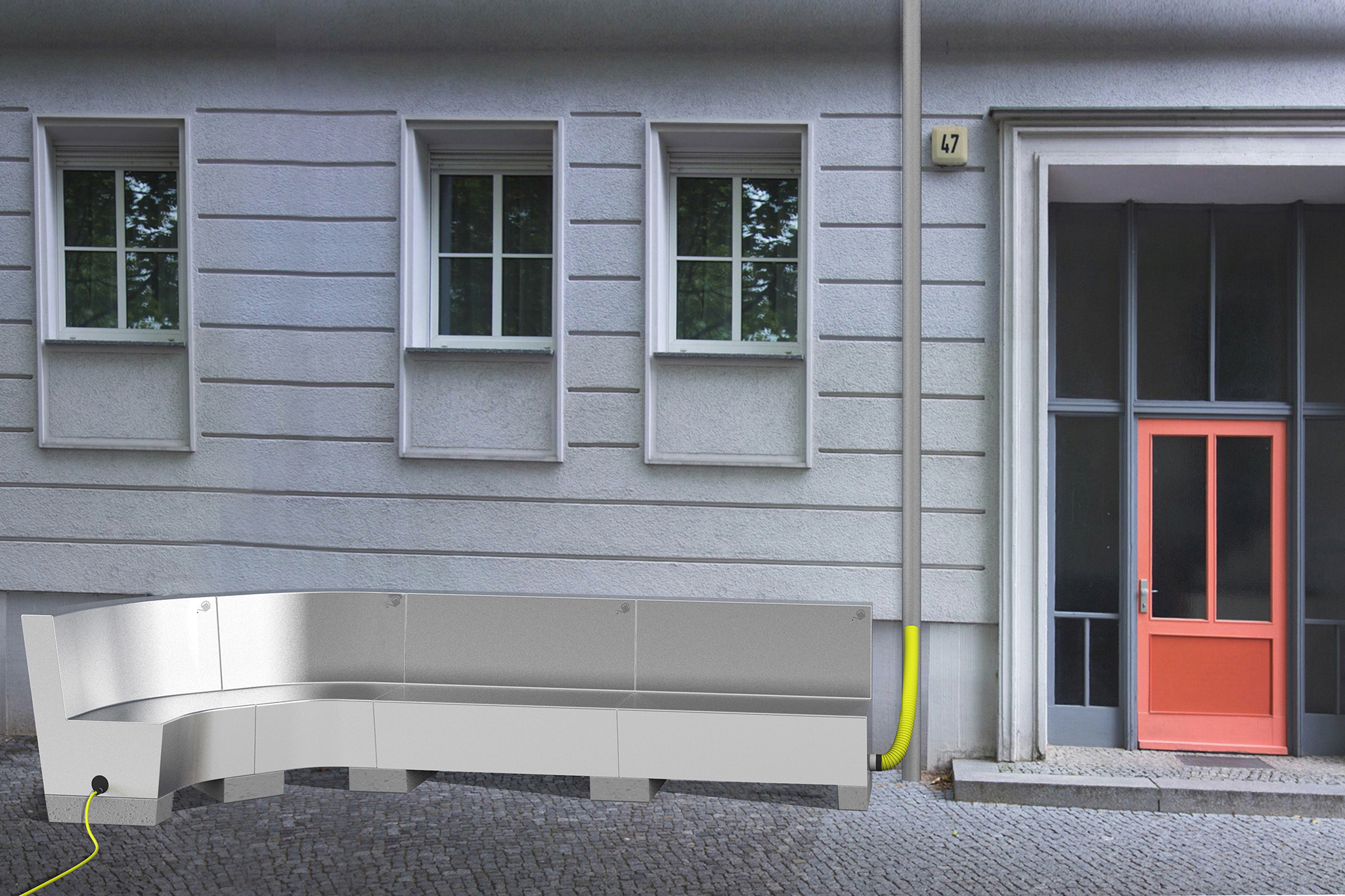
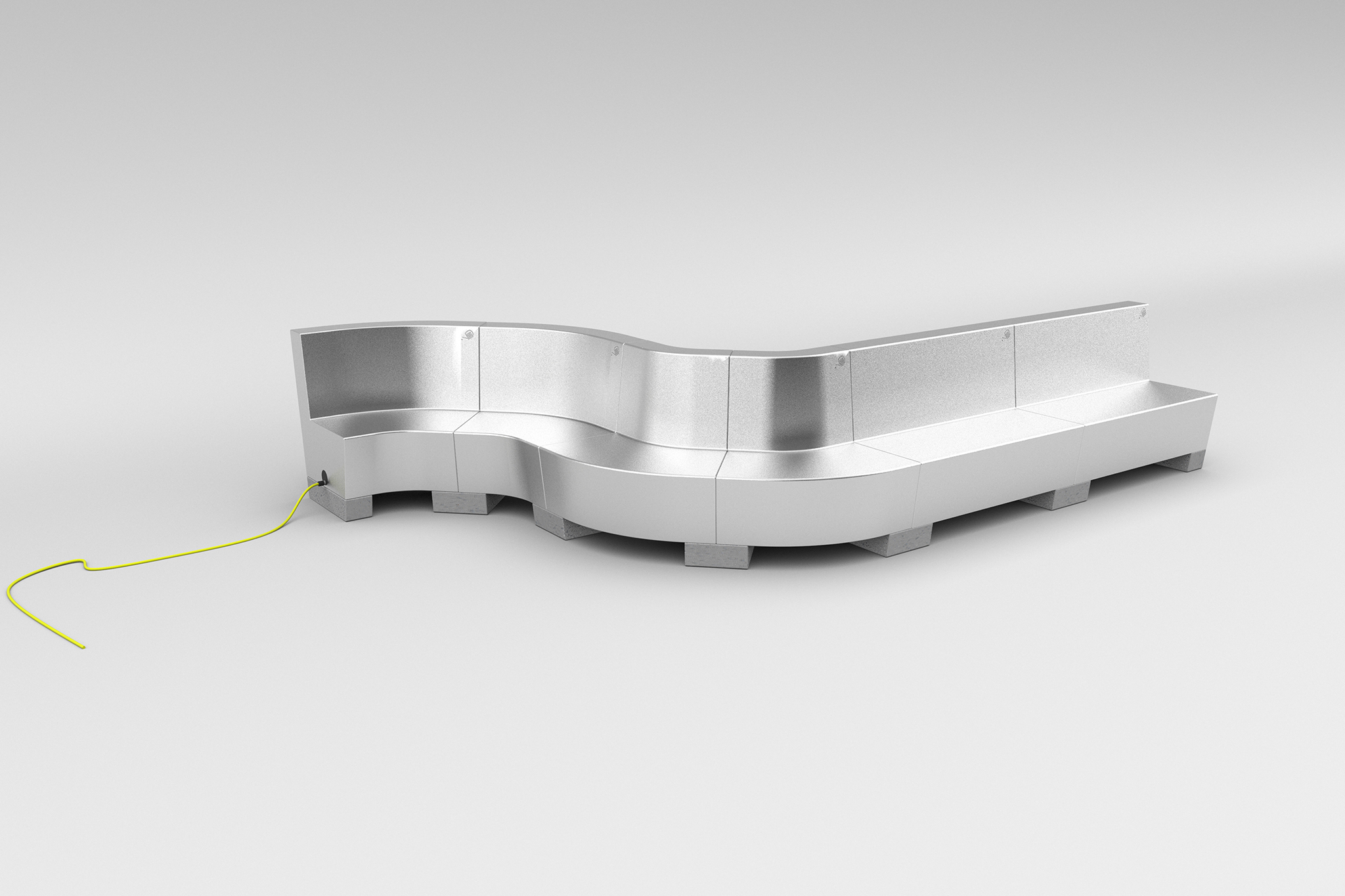
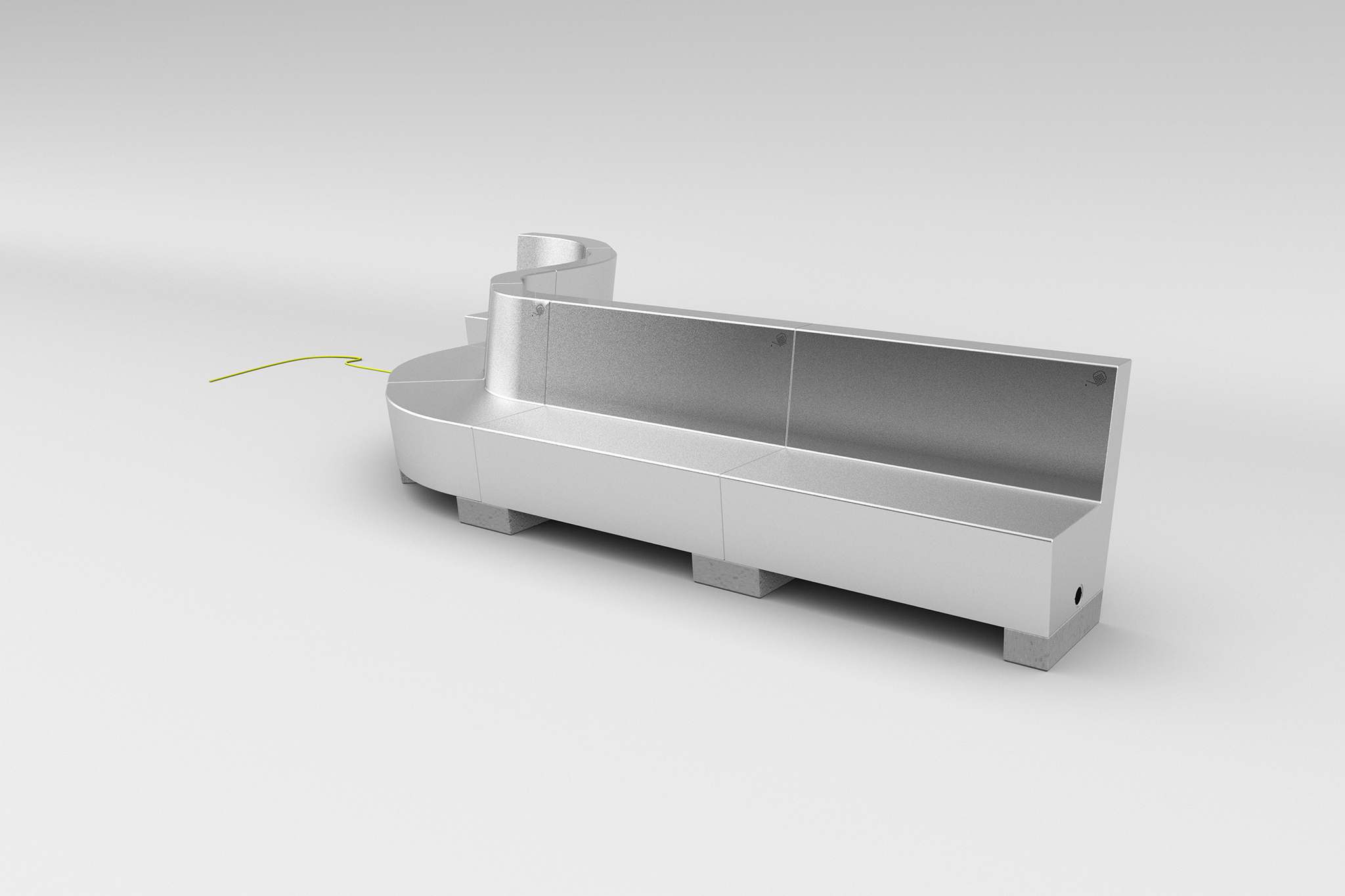

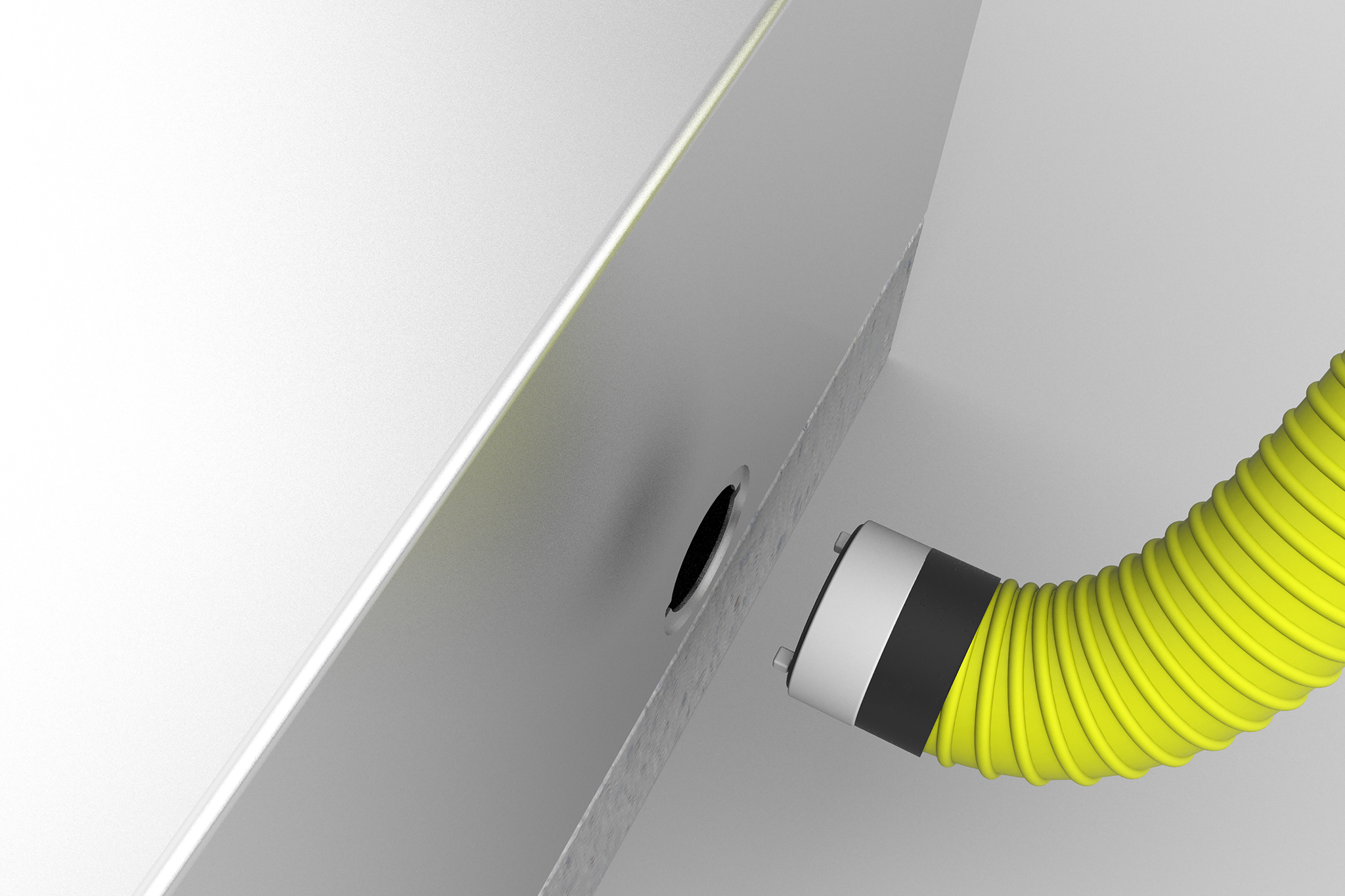
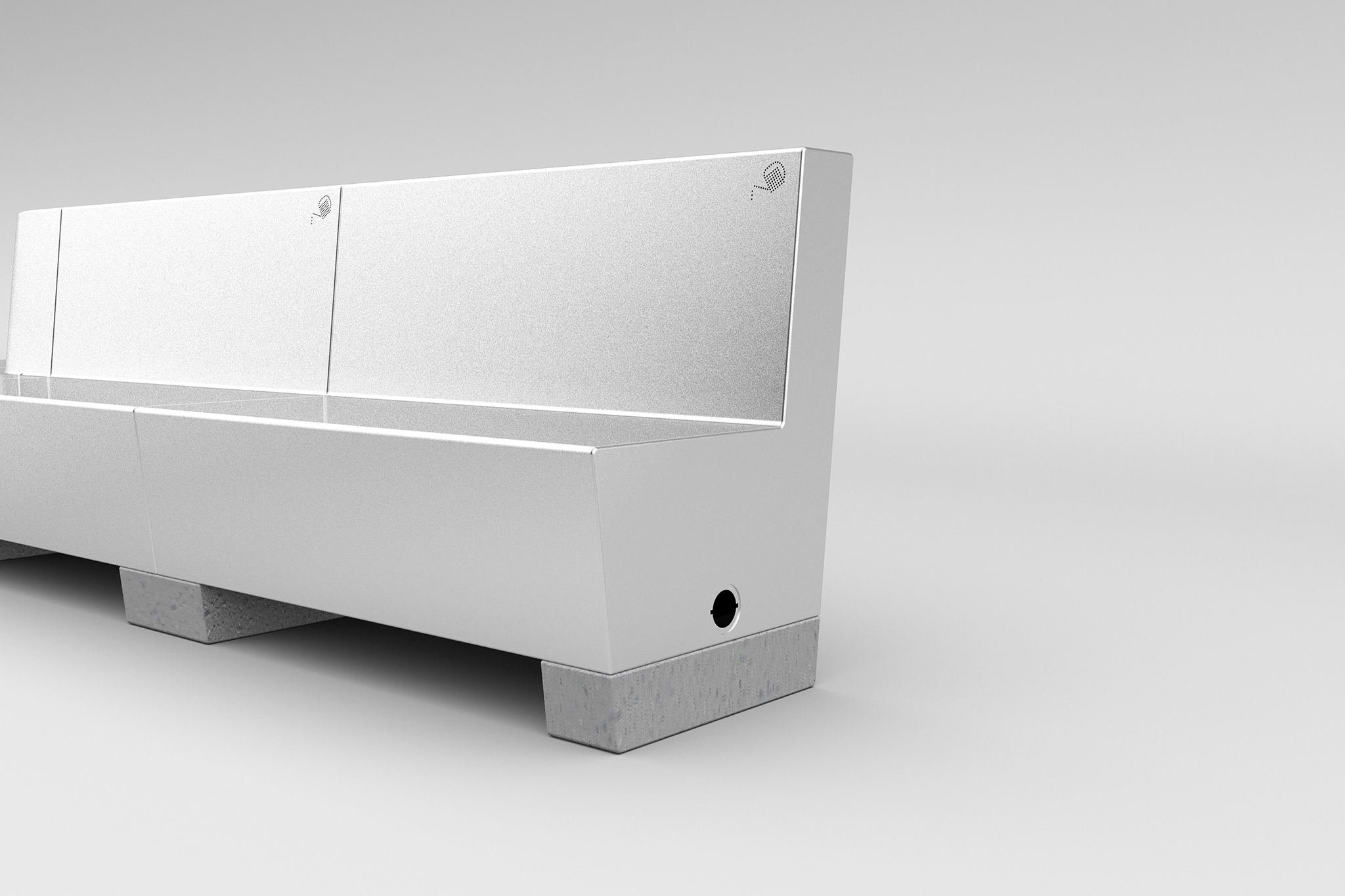
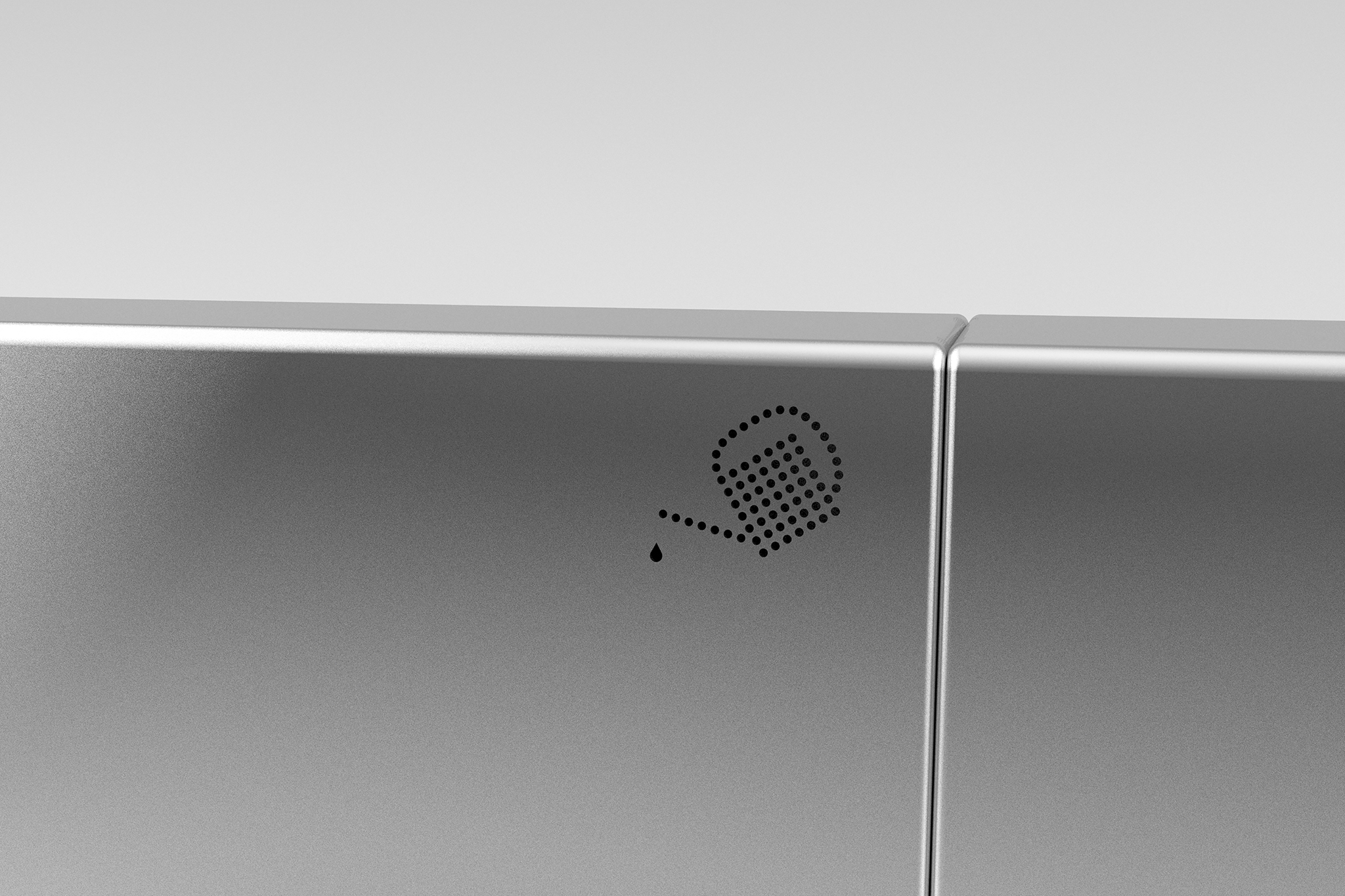
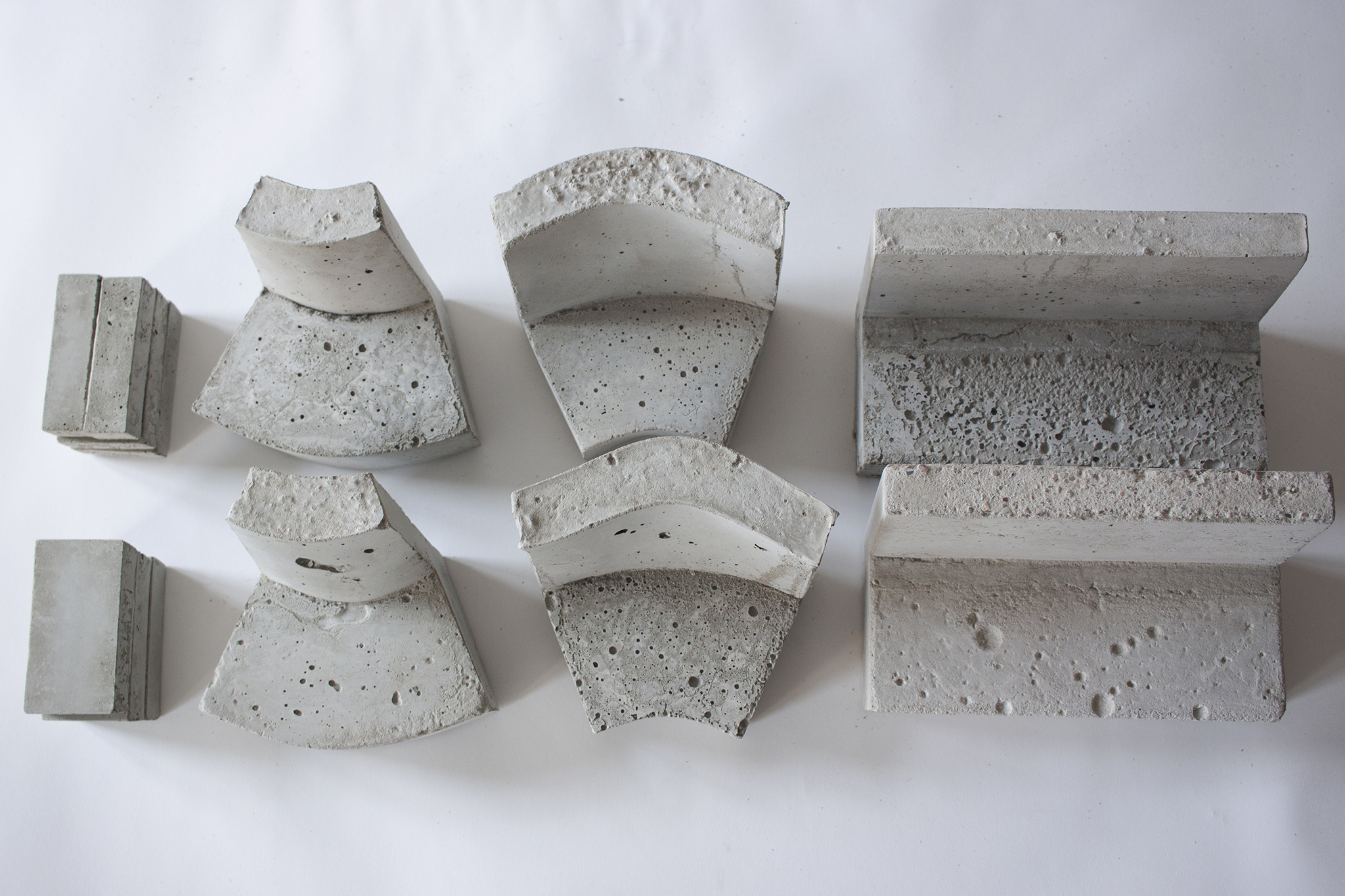
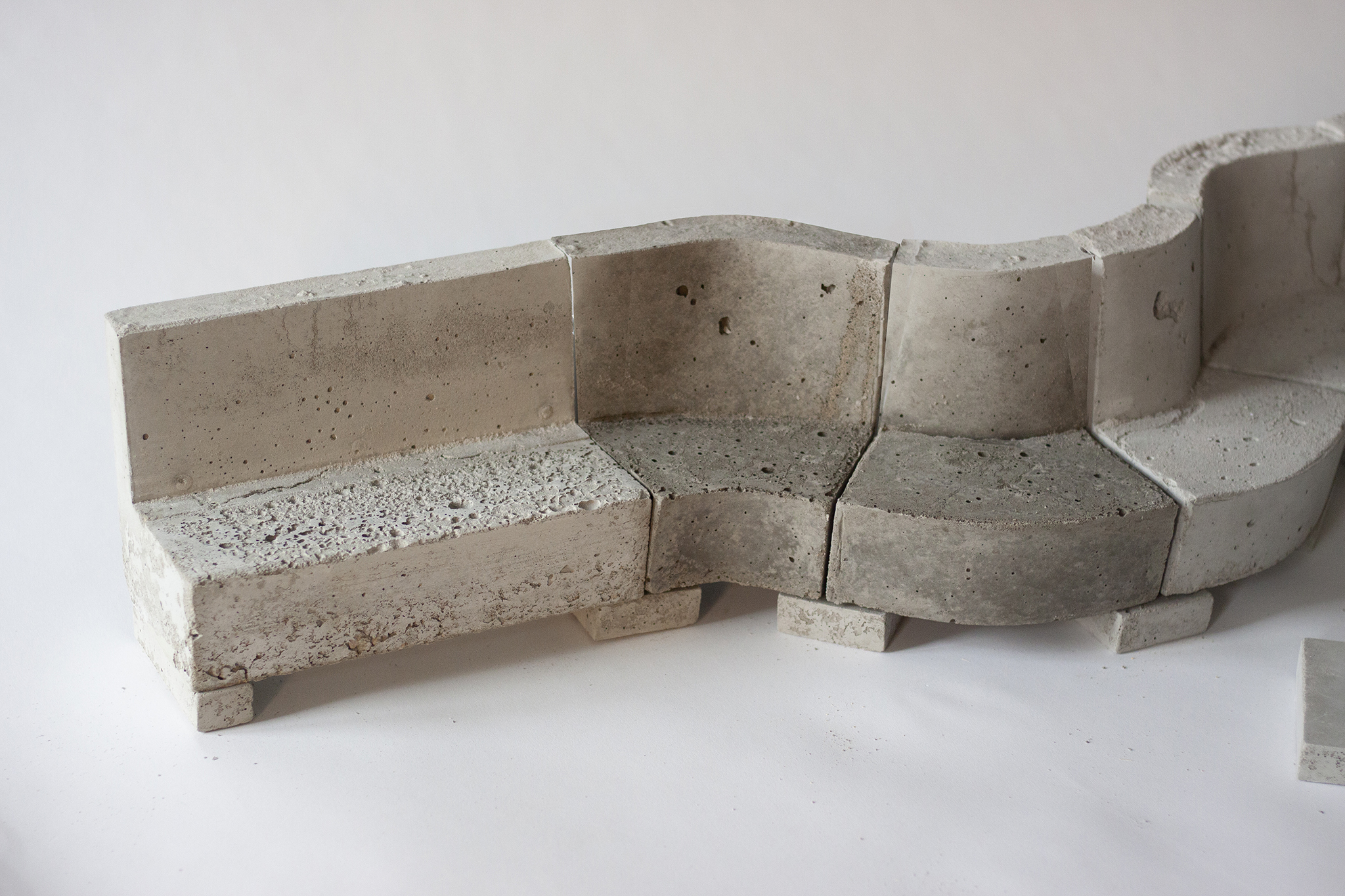
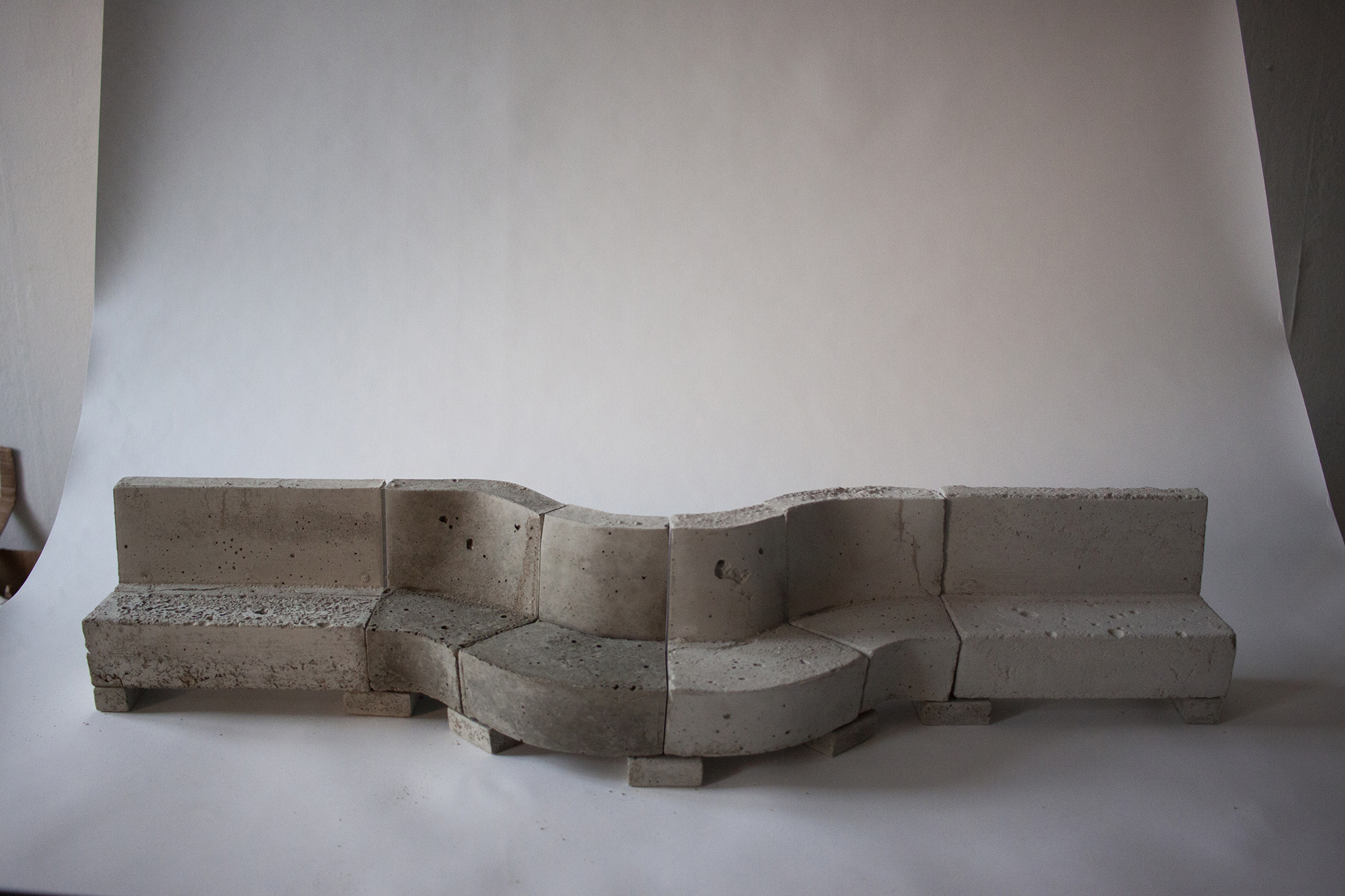
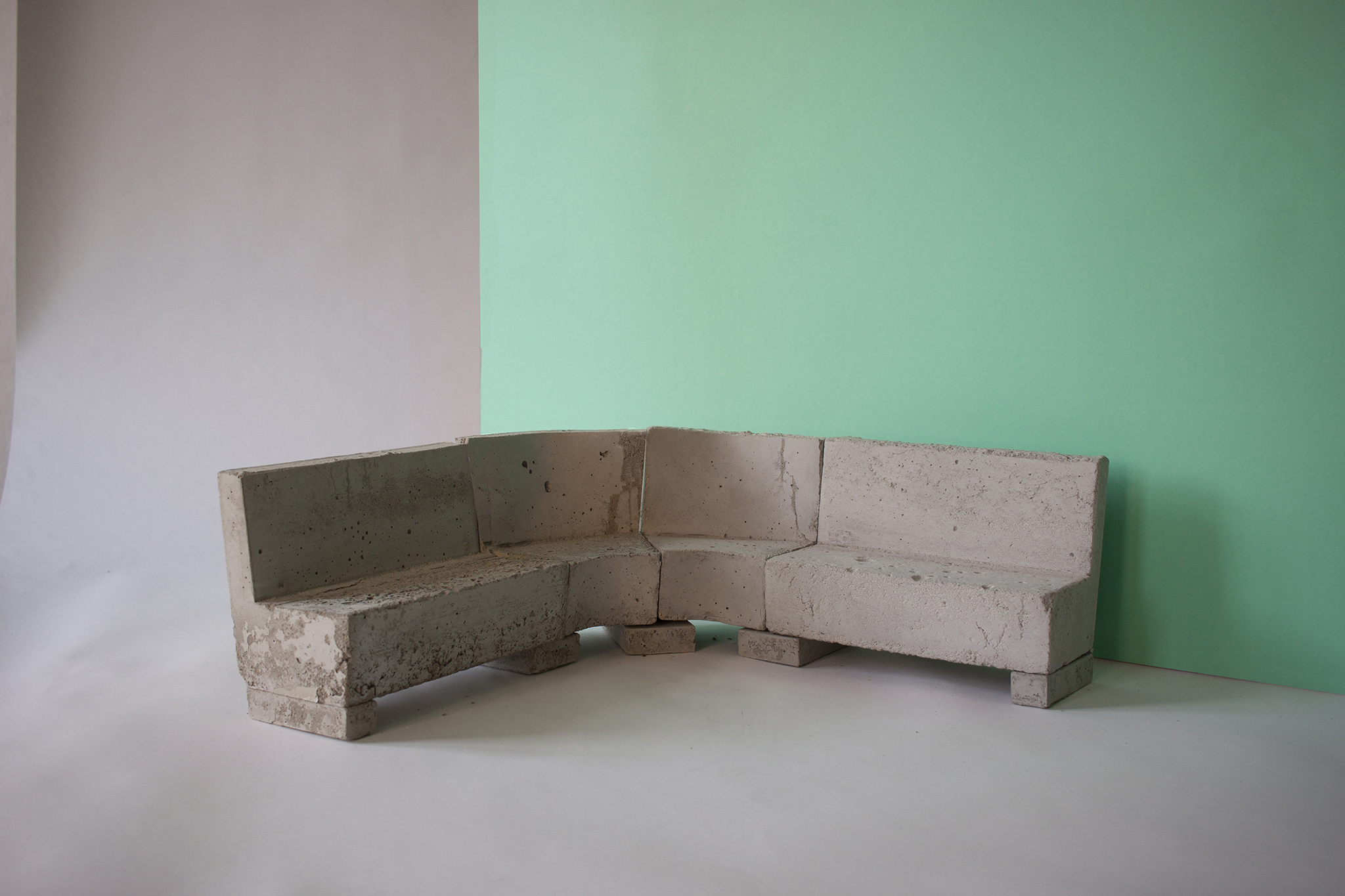
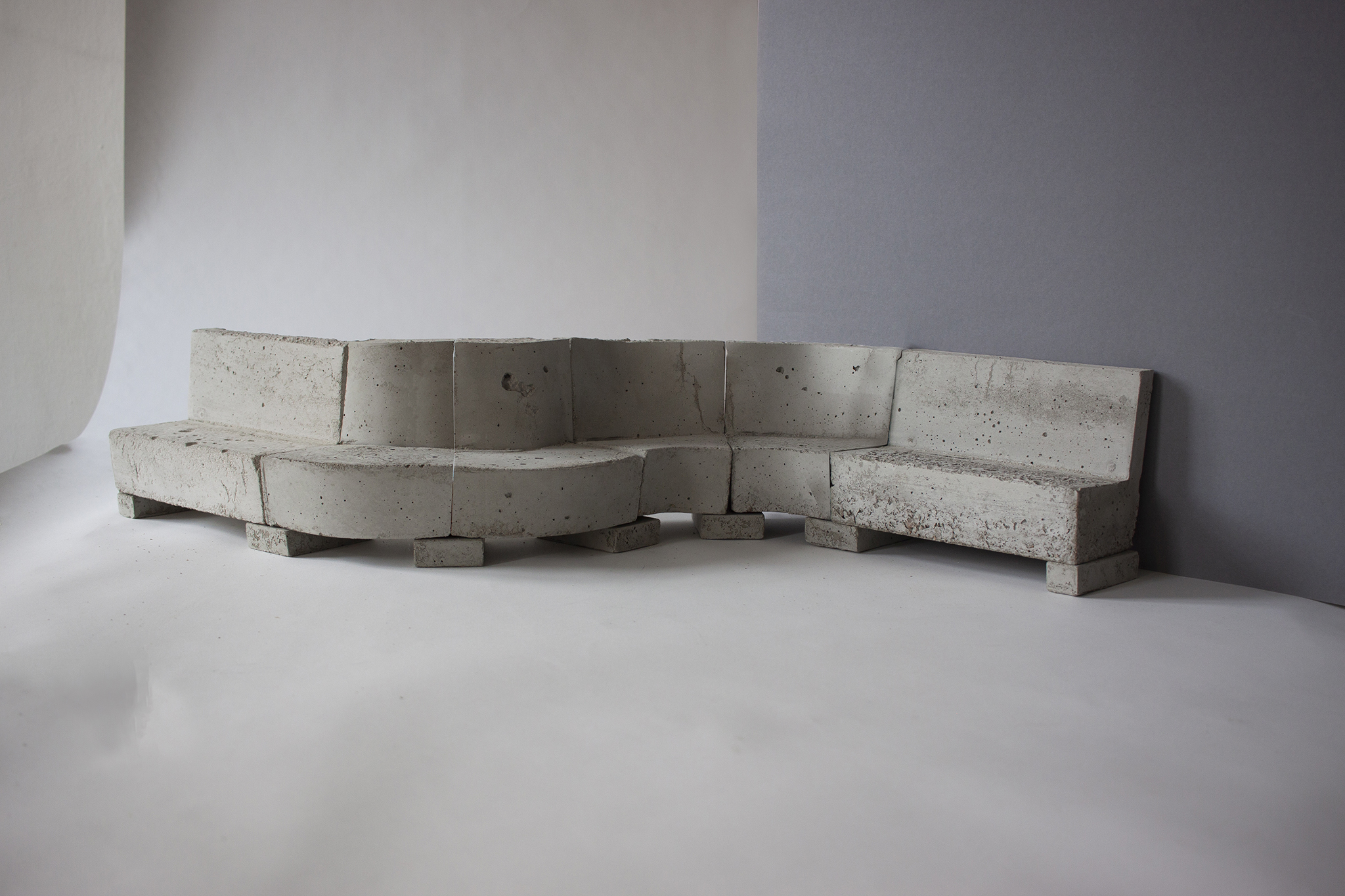
Process:
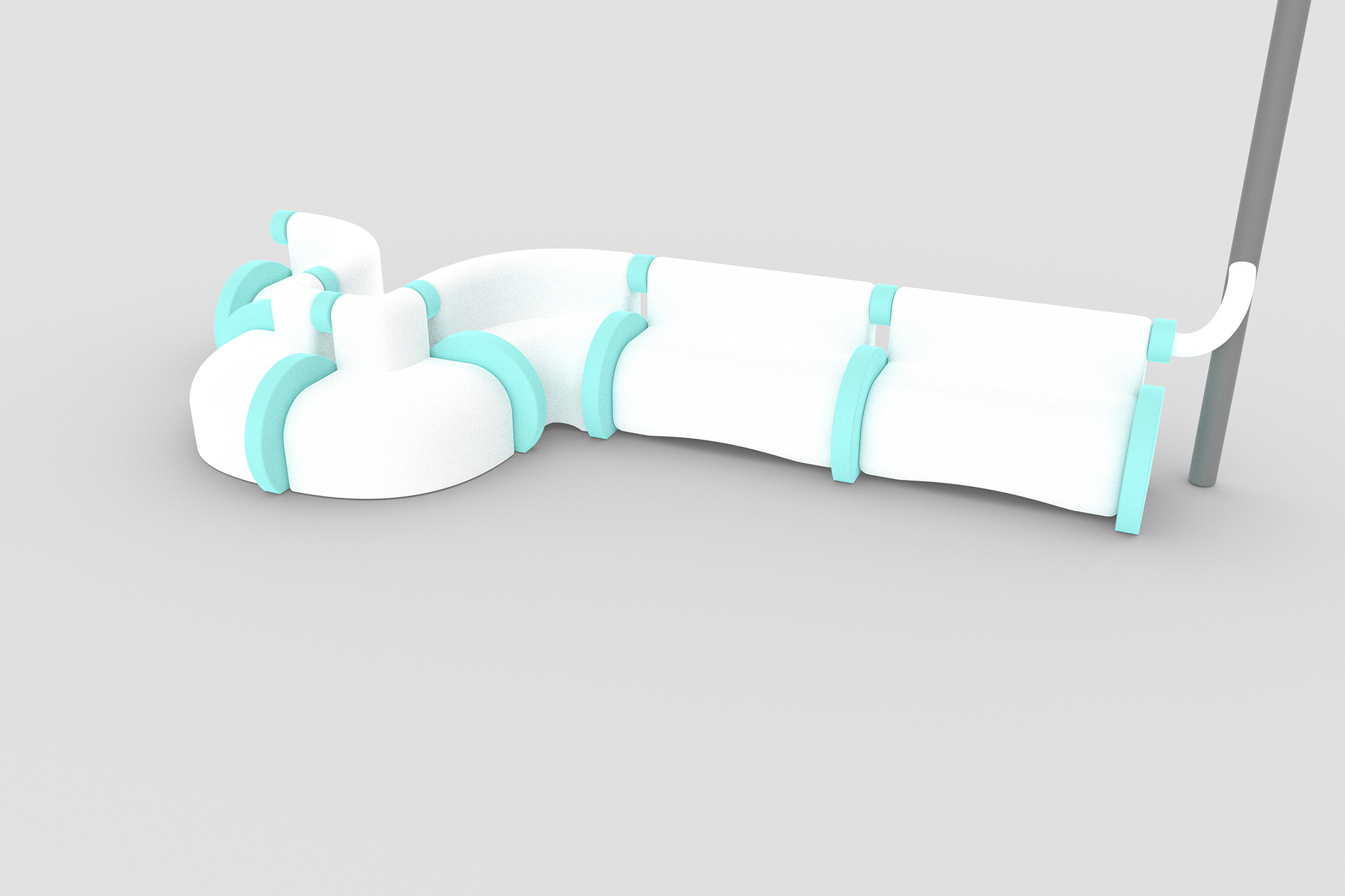
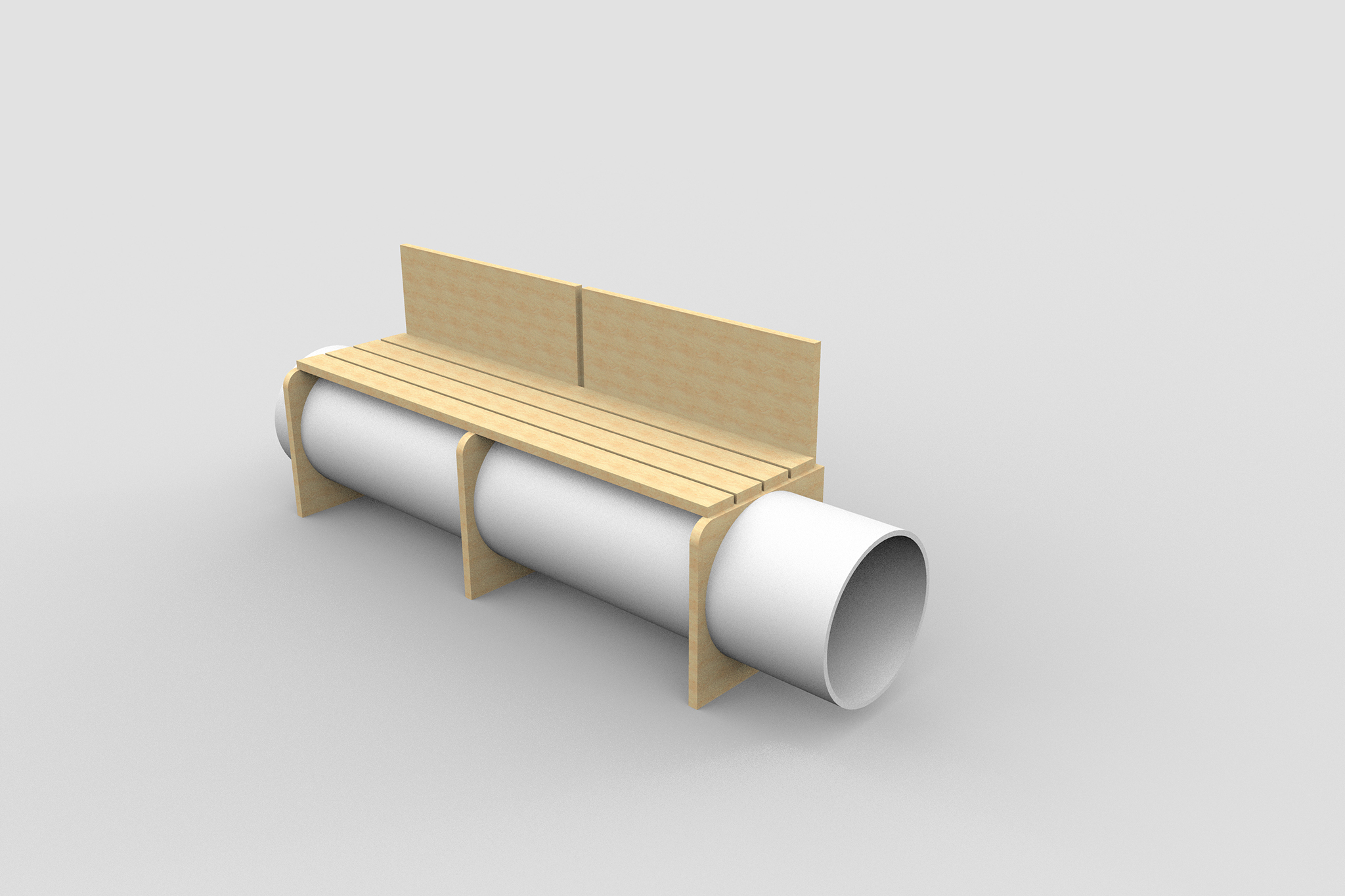

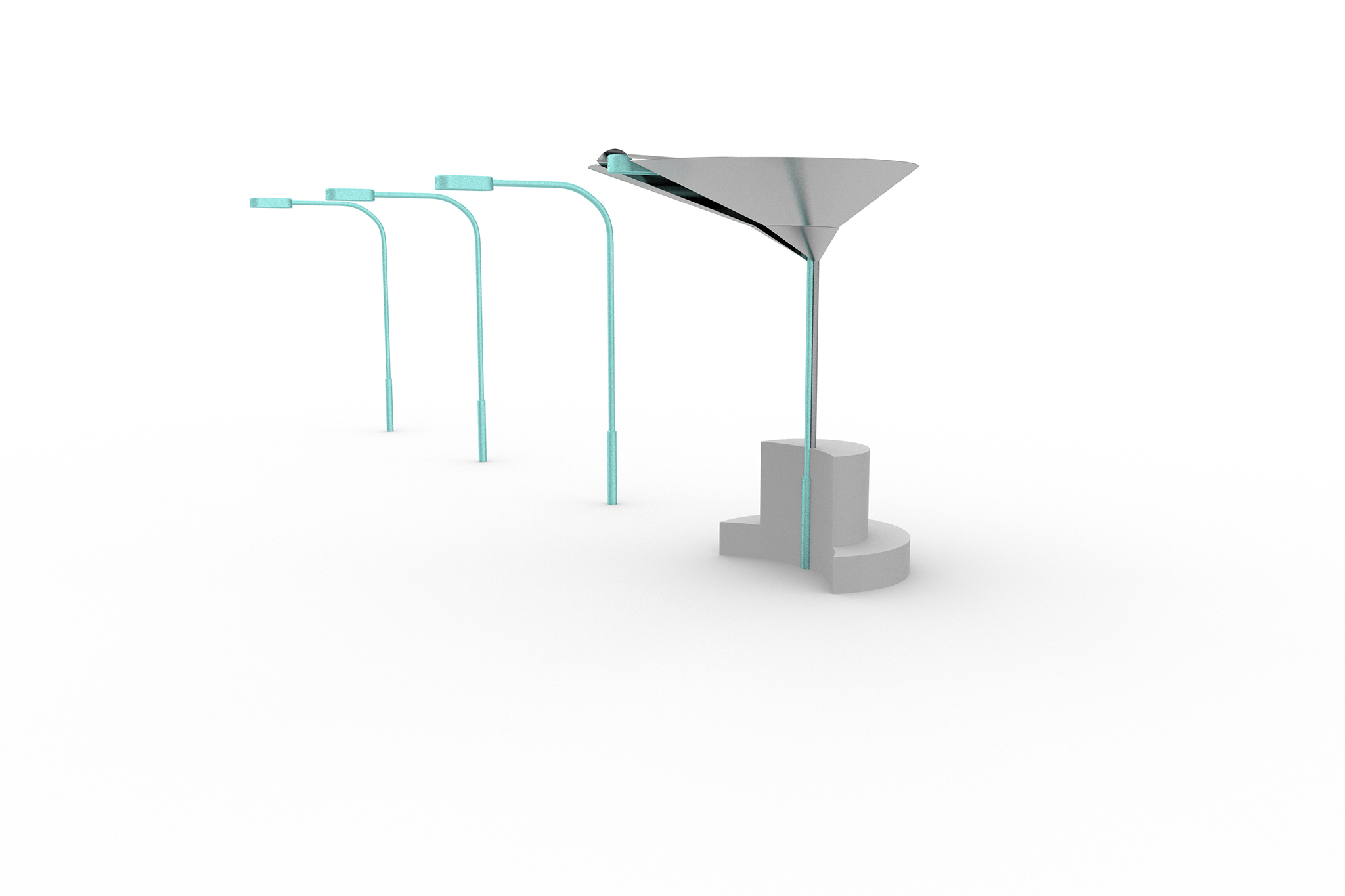
HUMAN POWER collects a series of objects, which allows to create energy through the movements of the human body.
In order to continue to enjoy our dependence on technology, humans will have to get involved from now on.
The video HUMAN POWER ironically denounces our world of consumption, which whatever the future may bring, seems inevitable …
Huseyin Altin, 5.sem exchange student ENSAD Paris WS 2020/21
Project:
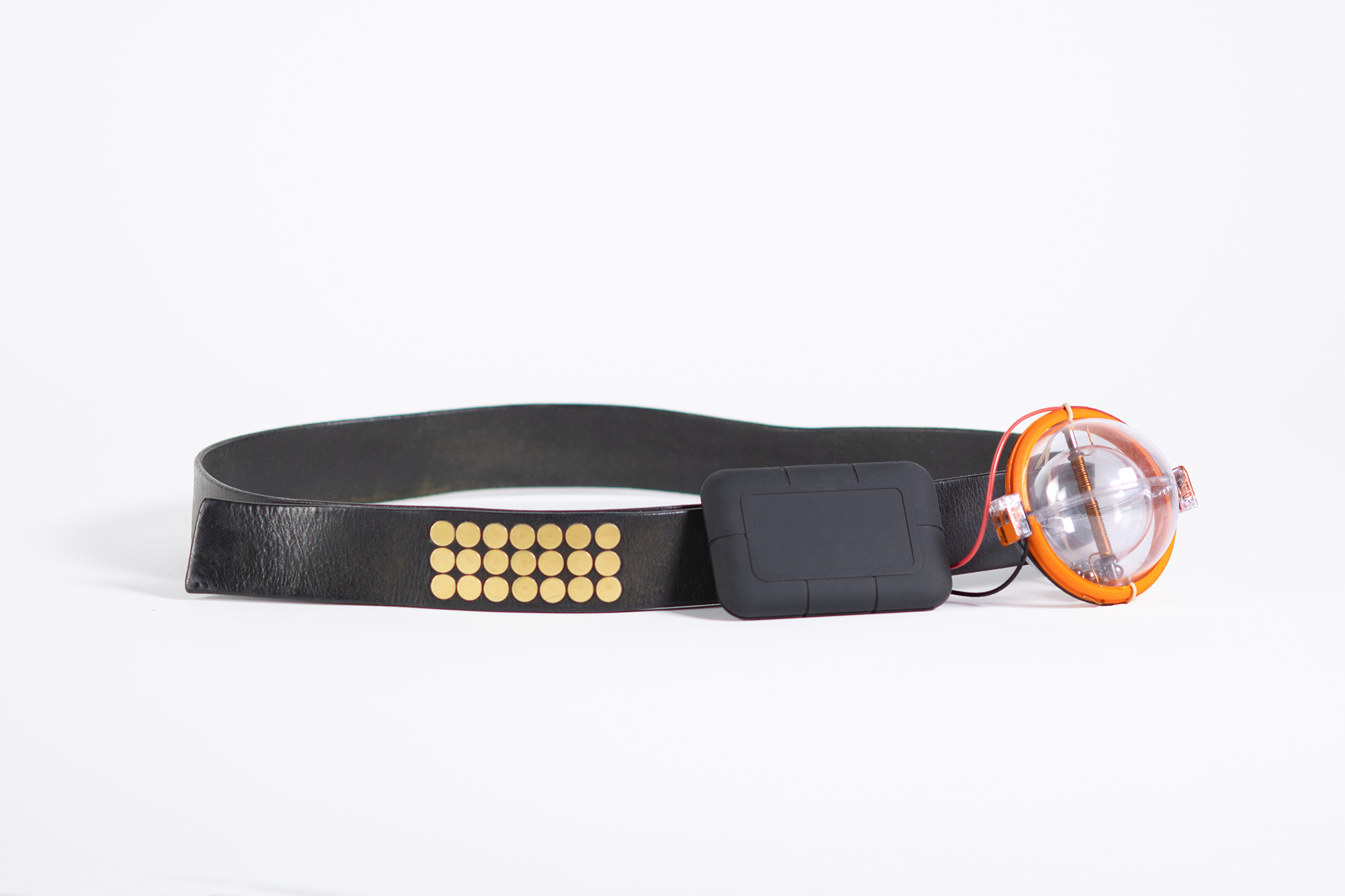
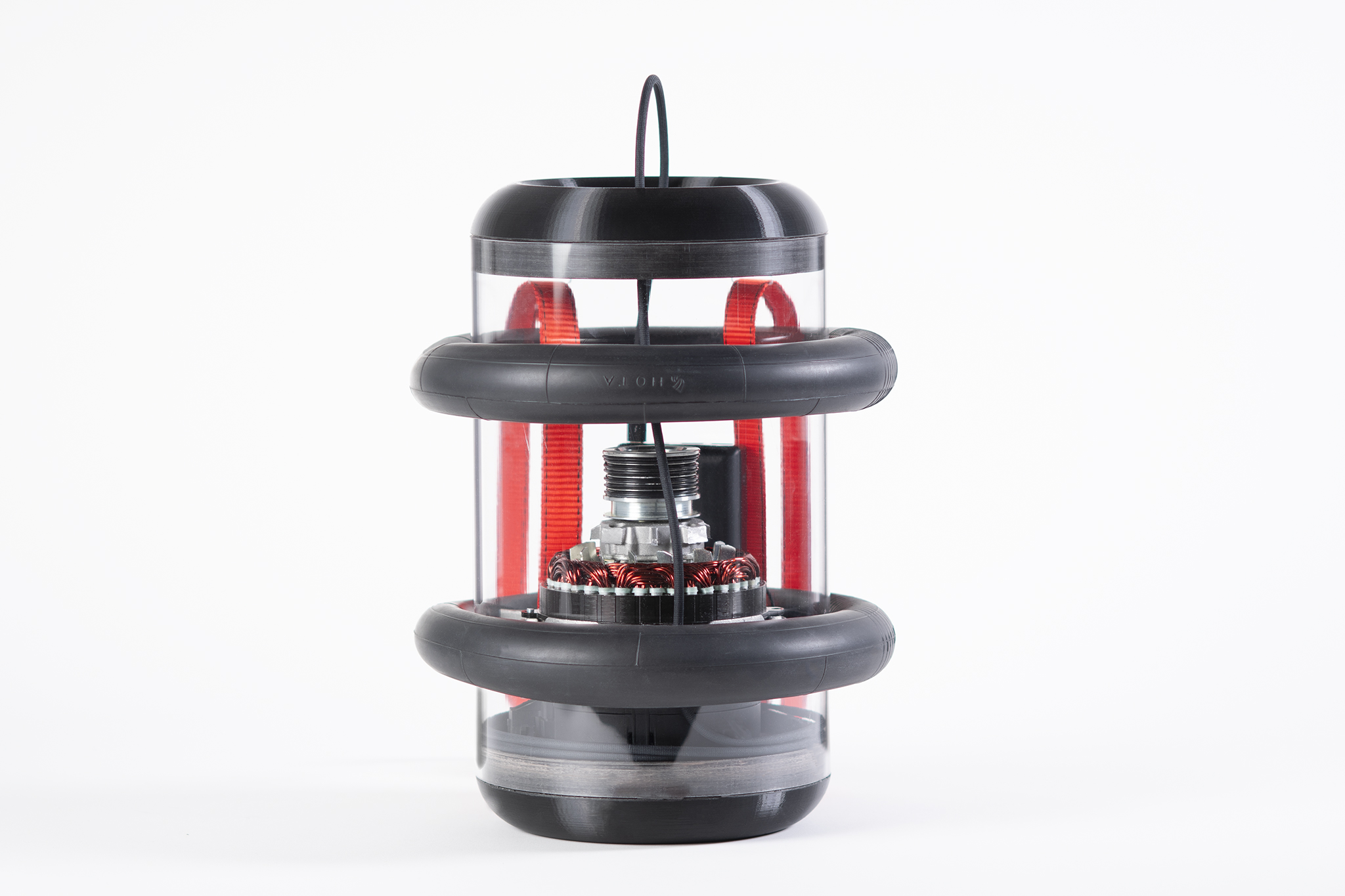
Low energy cooling element for urban public spaces.
Many European countries aren’t prepared for the rise in temperature which is predicted for the upcoming years. The WATERWALL is a low energy sheltering and cooling element for the urban public space. It is made out of terracotta bricks held by a metal frame. When activated, water from underground resources is poured on the top of the wall, wetting the bricks on its way down. The wet bricks create a cooling effect, which is spread to its surrounding, making it a pleasant place for people to sit by, as well as helping with the global effort for a more sustainable environment.
FACT:
• As one of the effects of global warming, the world is heating up around us year by year.
• According to various weather predictions, by the year 2050 the average temperature in Europe will rise in 1.8°c, and during the warmest month, it will likely increase by 6.1°c. Such a change will significantly effect the human’s way of life in these areas. The European countries, which until now had to deal mainly with cold weather, should prepare for warm summers. During the last few years the heating effect began to be noticed, and questions arise about the correct solution.
• In urban spaces there is a heating effect called ‘Heat Islands’, making it warmer than the surrounding countryside. The ‘Heat Island’ effect is caused by the urban structure, which absorbs the suns heat more than natural landscapes, and the lack of air flow, since it is blocked by the many buildings and structures un the city.
Common heating systems in the cities, such as various air-conditioning devices, consume high amounts of energy, hence sending us on a search for new cooling systems and mechanisms, which will be sustainable, low energy and healthy, for humans and for nature.
ACT:
In this project I want to propose the WATERWALL, a new sustainably cooling element, suitable for different public urban spaces.
The WETWALL will preform as a cooling element in two levels:
The WATERWALL is a brick wall, made out of terracotta clay, designed so that once when it is wet it will cool the air around it. This technology of cooling can often be seen in warmer regions of the world, where the people have used them for many years as cooling systems.
The bricks are made out of terracotta clay, a porous material, which is good for absorbing liquids and holding them for longer times. During the manufacturing of the bricks, small grains called ‘Shamot’ will be combined with the clay, making it more fit for the changing weather throughout the year.
Each brick will be created by casting, and will be square shaped with a conic opening going through it, enabling the air to go through it easily. These openings, among other things, will increase the surface area of each brick, and thus also its cooling efficiency.
The water source is in the municipal water system spread under the city. The water is led by a plastic water pipe to the top of the wall, where it is released and poured down the wall, wetting the bricks. Each brick is lined with horizontal grooves that help the liquid to spread effectively and efficiently on its surface.
At the bottom of the wall are openings that collect the remaining water, later routed back to the top of the wall for reusing.
As part of the wall, a bench and sunshade are included, giving the passers-by an option to stop and enjoy the cool feeling.
The flow of water will be activated during the summer and will be stopped during the winter, in order to prevent water from freezing inside the bricks.
IMPACT:
The assimilation of WATERWALL elements throughout the city is one small step among the many steps required to cool down the city and make it a more sustainable and wholesome space. In addition to taking part in the urban cooling effort, the WATERWALL will be new element in the public space, which will invite passers-by to stop next to it, cool down and relax.
Alma Abrahamson, 5.sem exchange student Bezalel Jerusalem, WS 2020/21
Project:
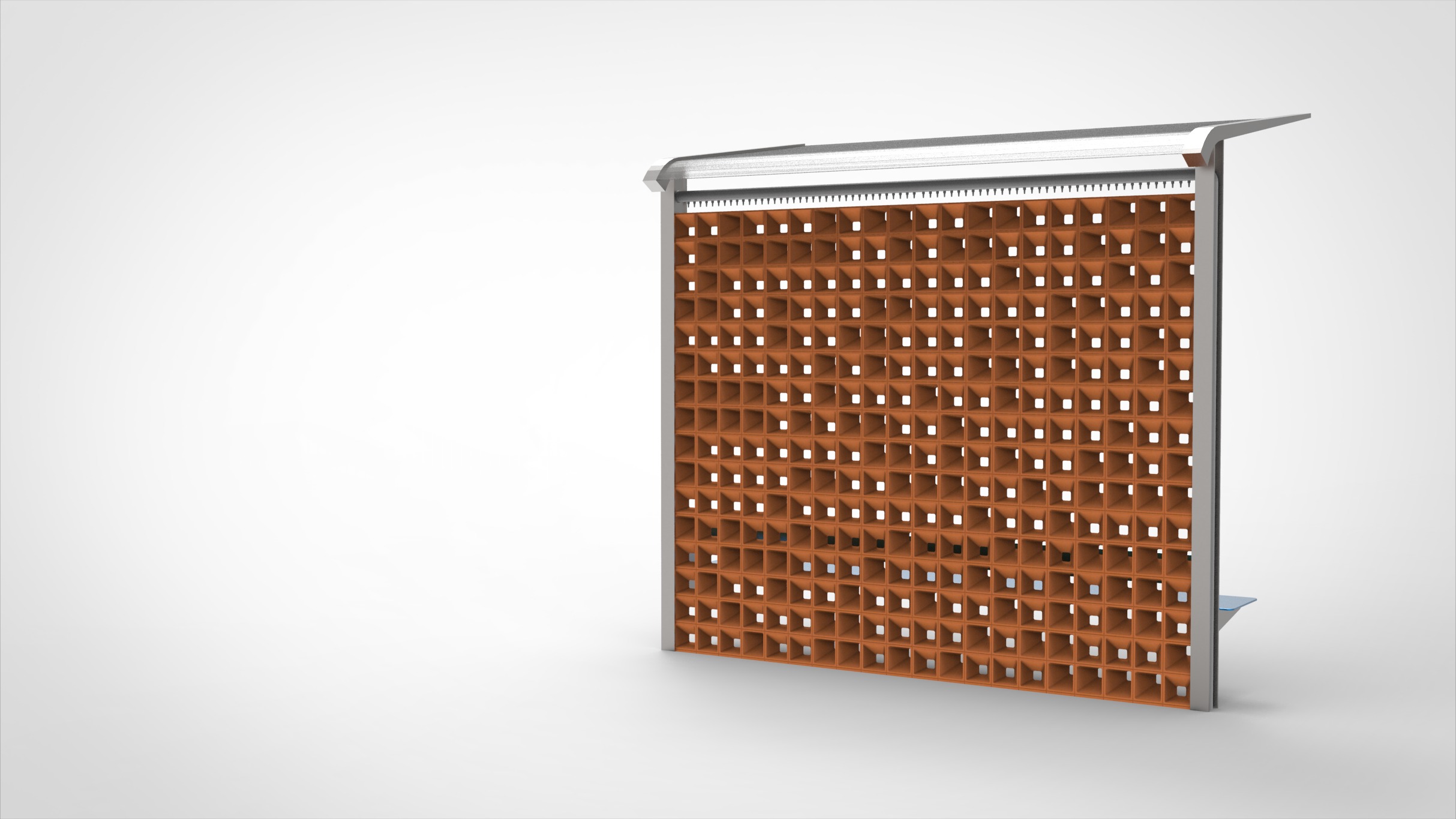 WATERWALL, back view
WATERWALL, back view
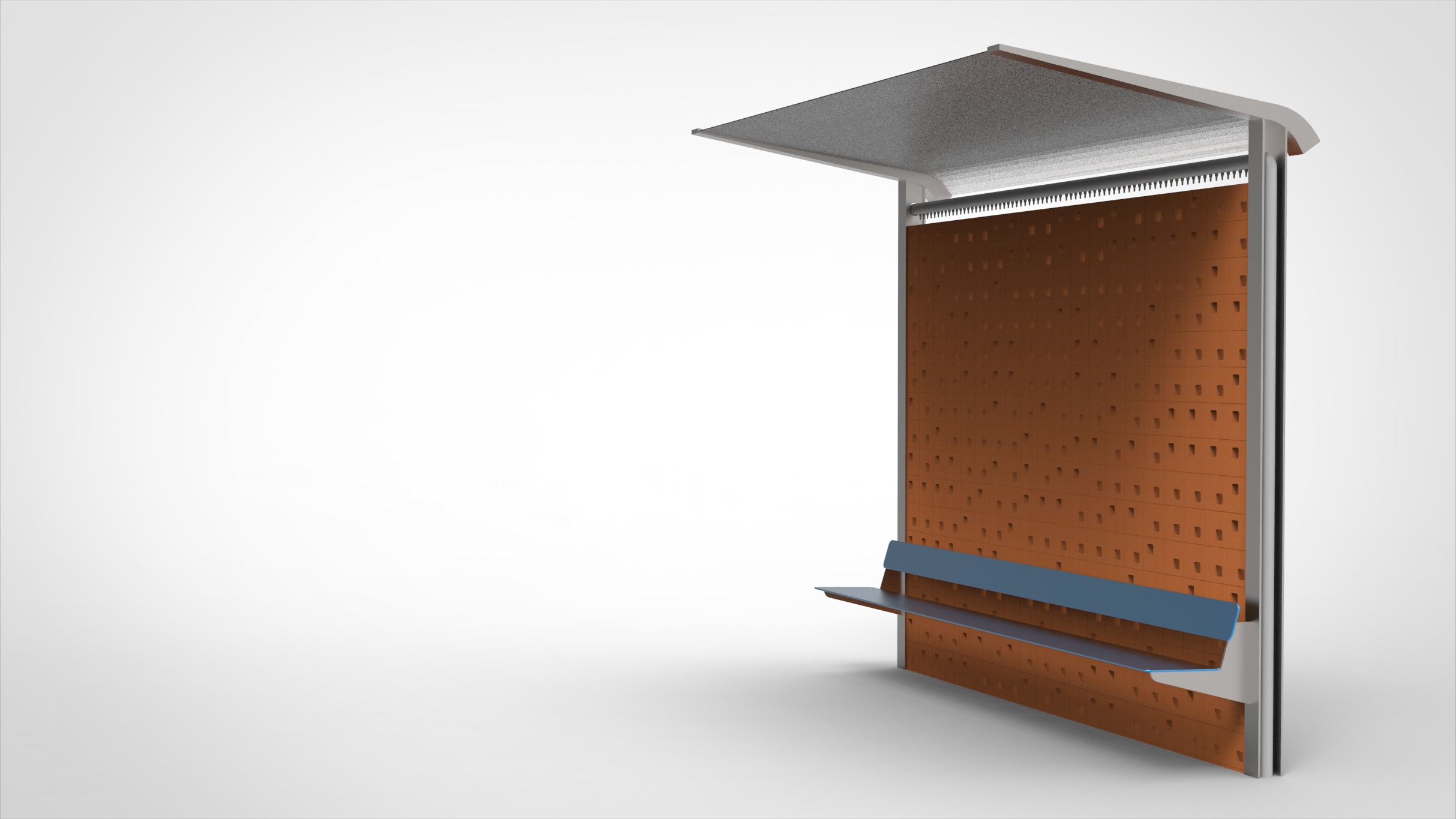 WATERWALL, front view
WATERWALL, front view
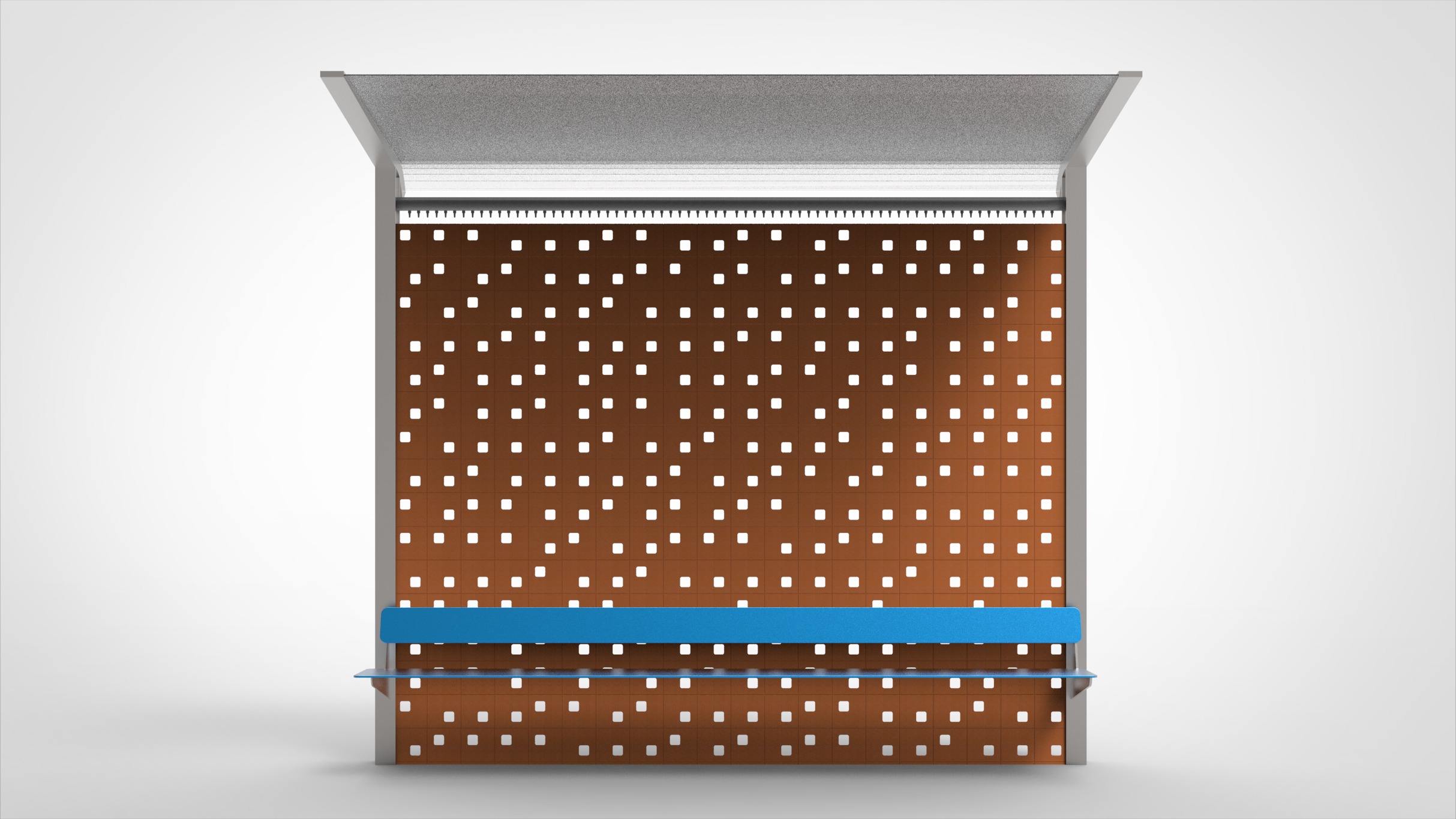 WATERWALL, perspective view
WATERWALL, perspective view
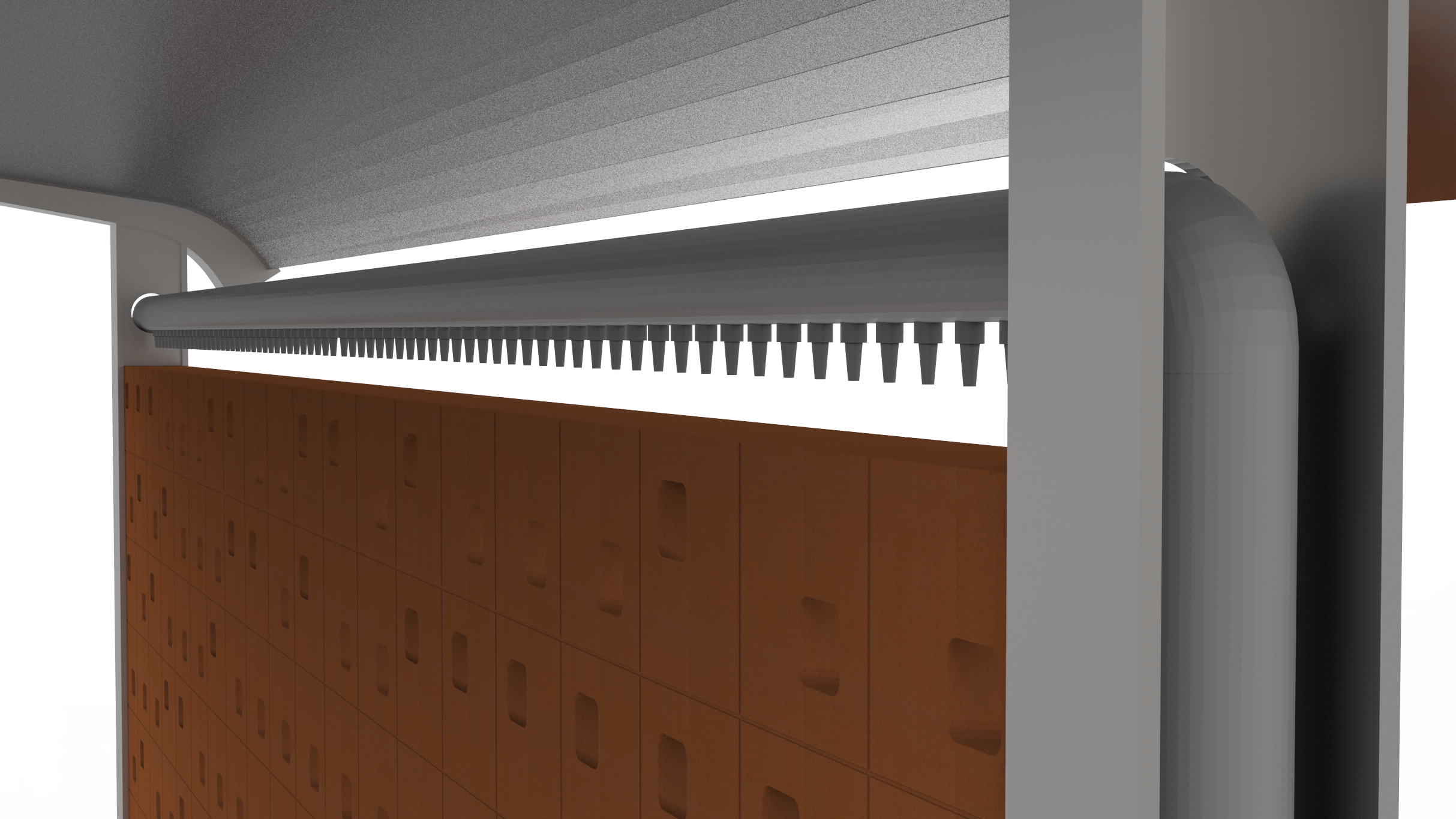 WATERWALL, pipe side view
WATERWALL, pipe side view
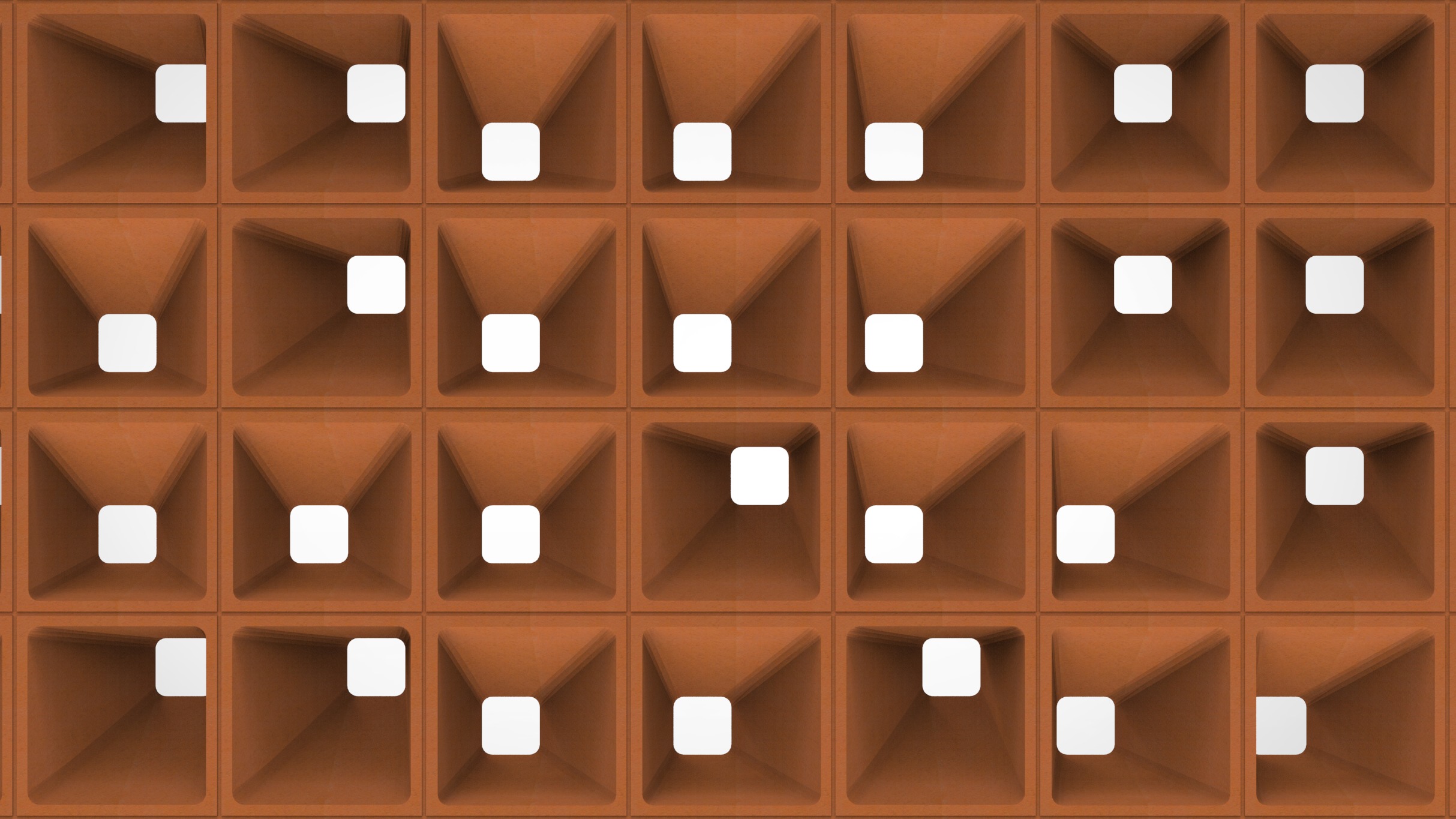 WATERWALL, brick pattern close-up
WATERWALL, brick pattern close-up
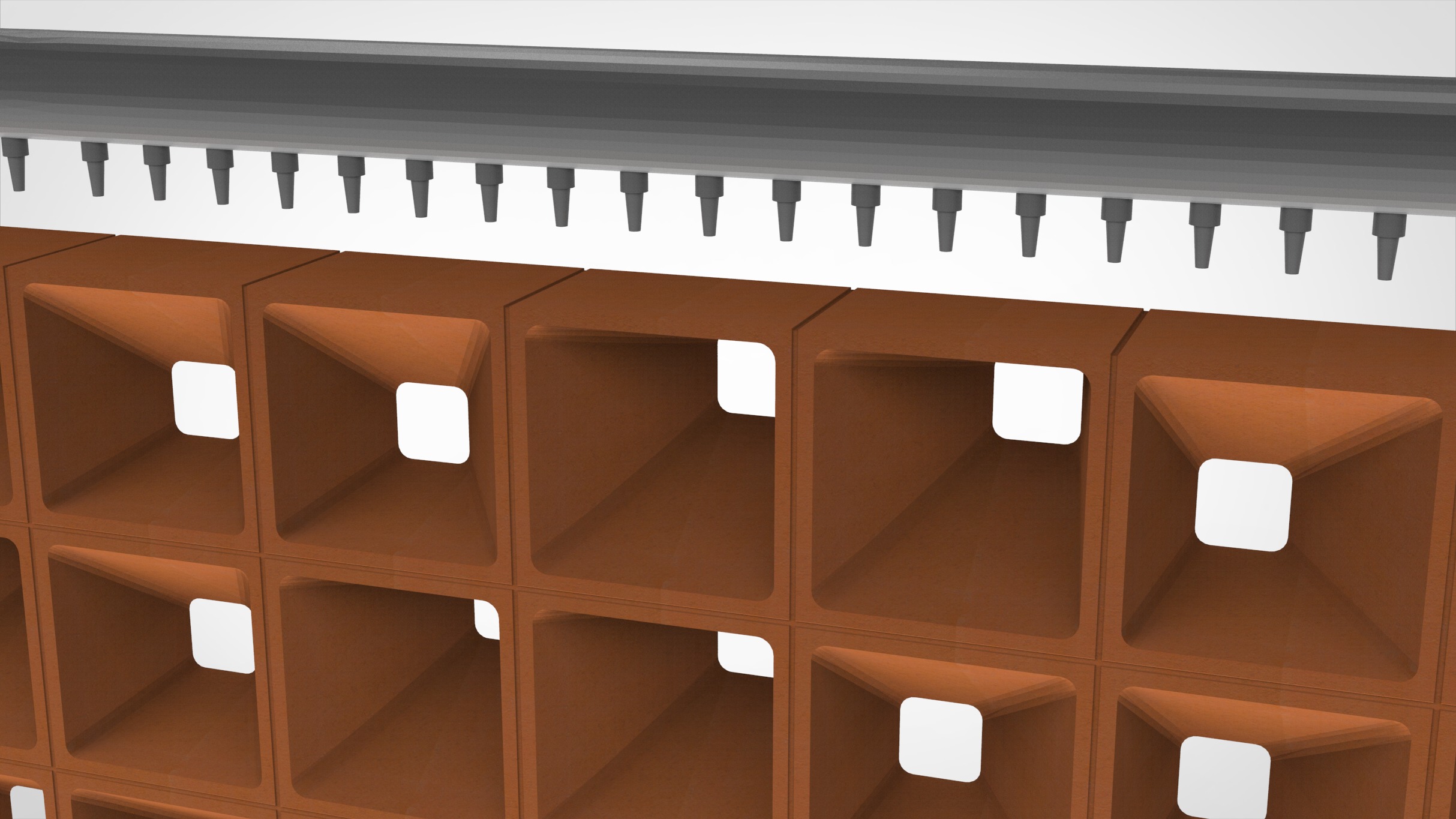 WATERWALL, pipe water nozzles
WATERWALL, pipe water nozzles
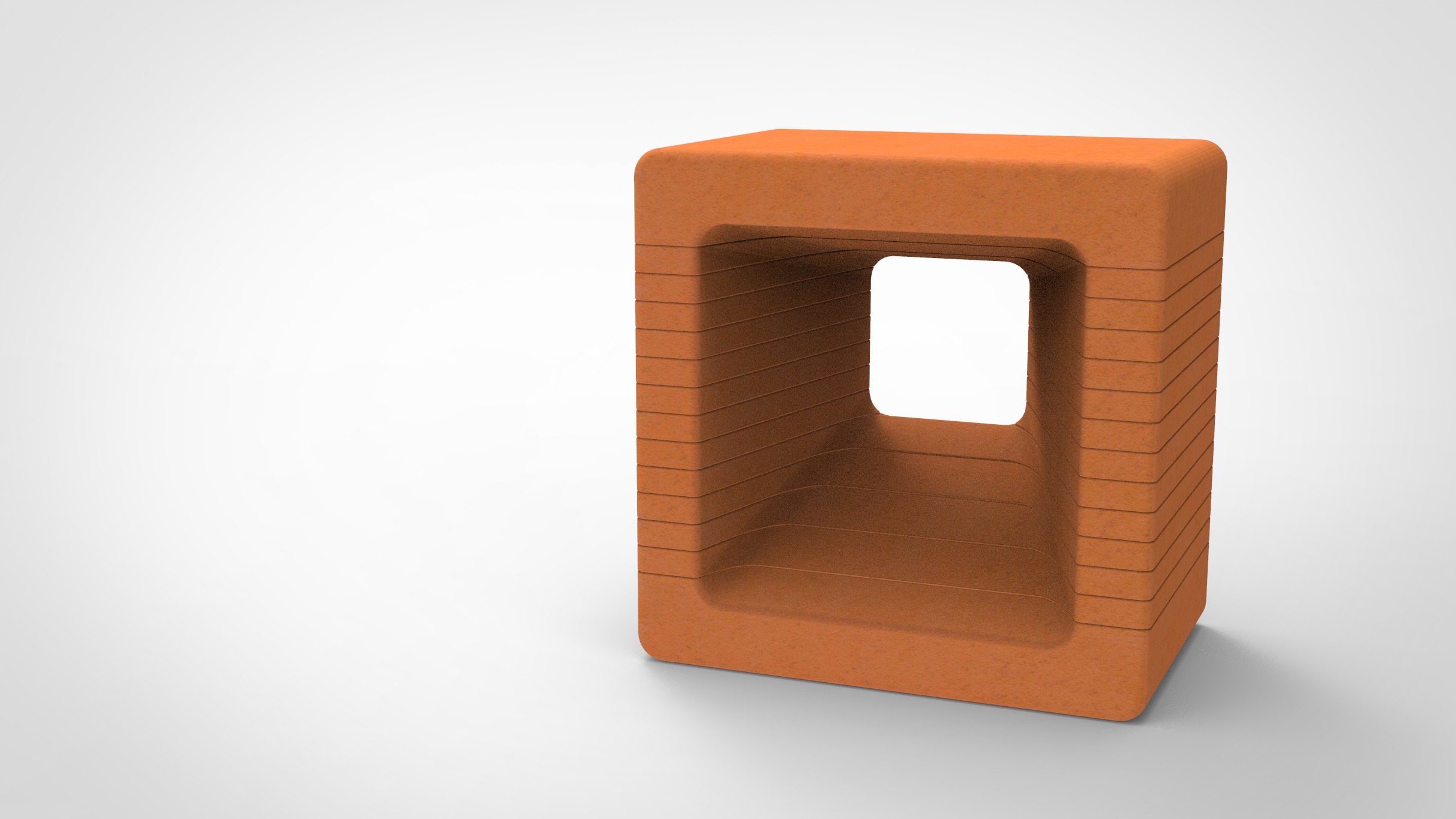 WATERWALL, brick
WATERWALL, brick
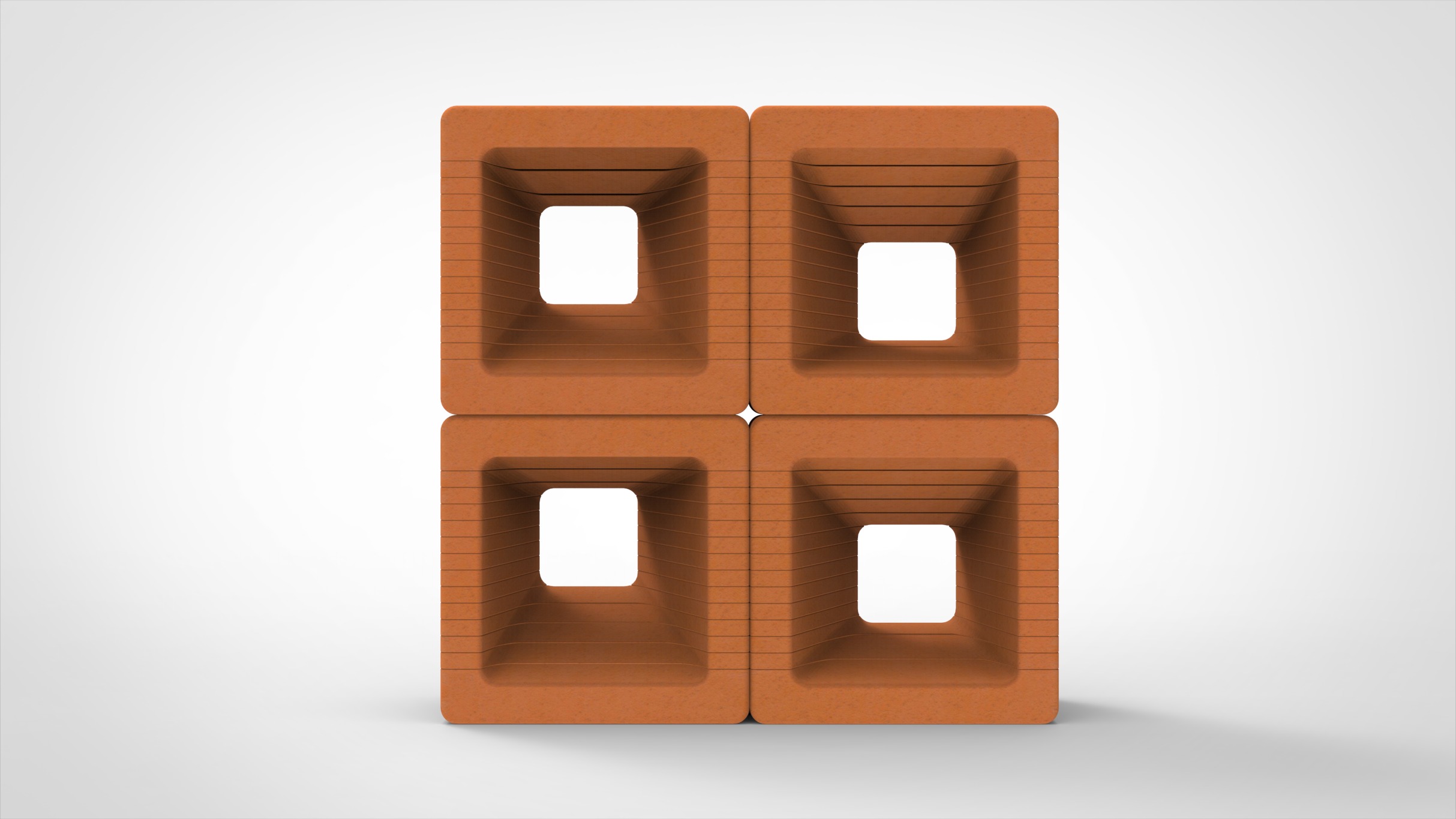 WATERWALL, constellation
WATERWALL, constellation
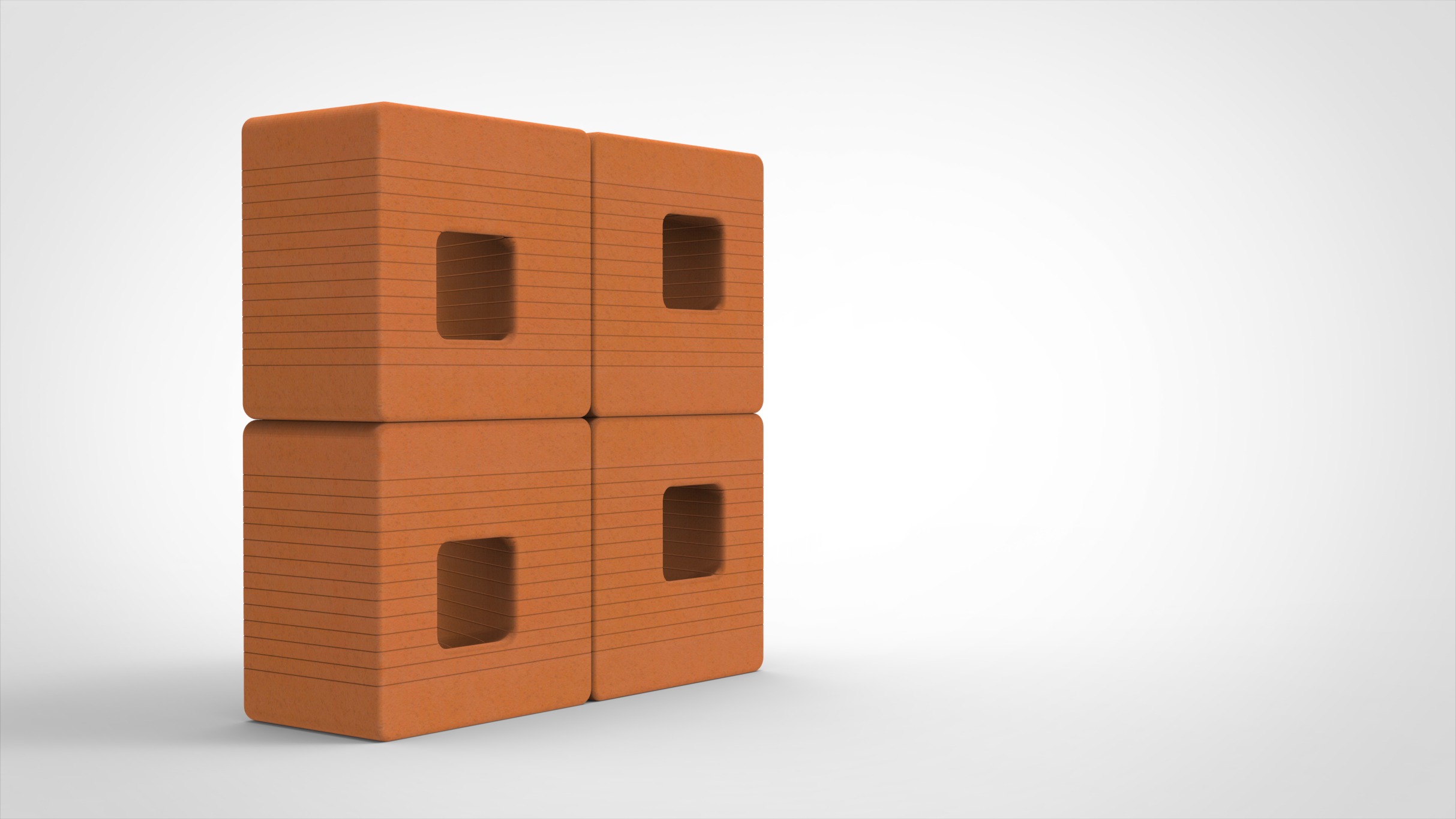 WATERWALL, constellation back
WATERWALL, constellation back
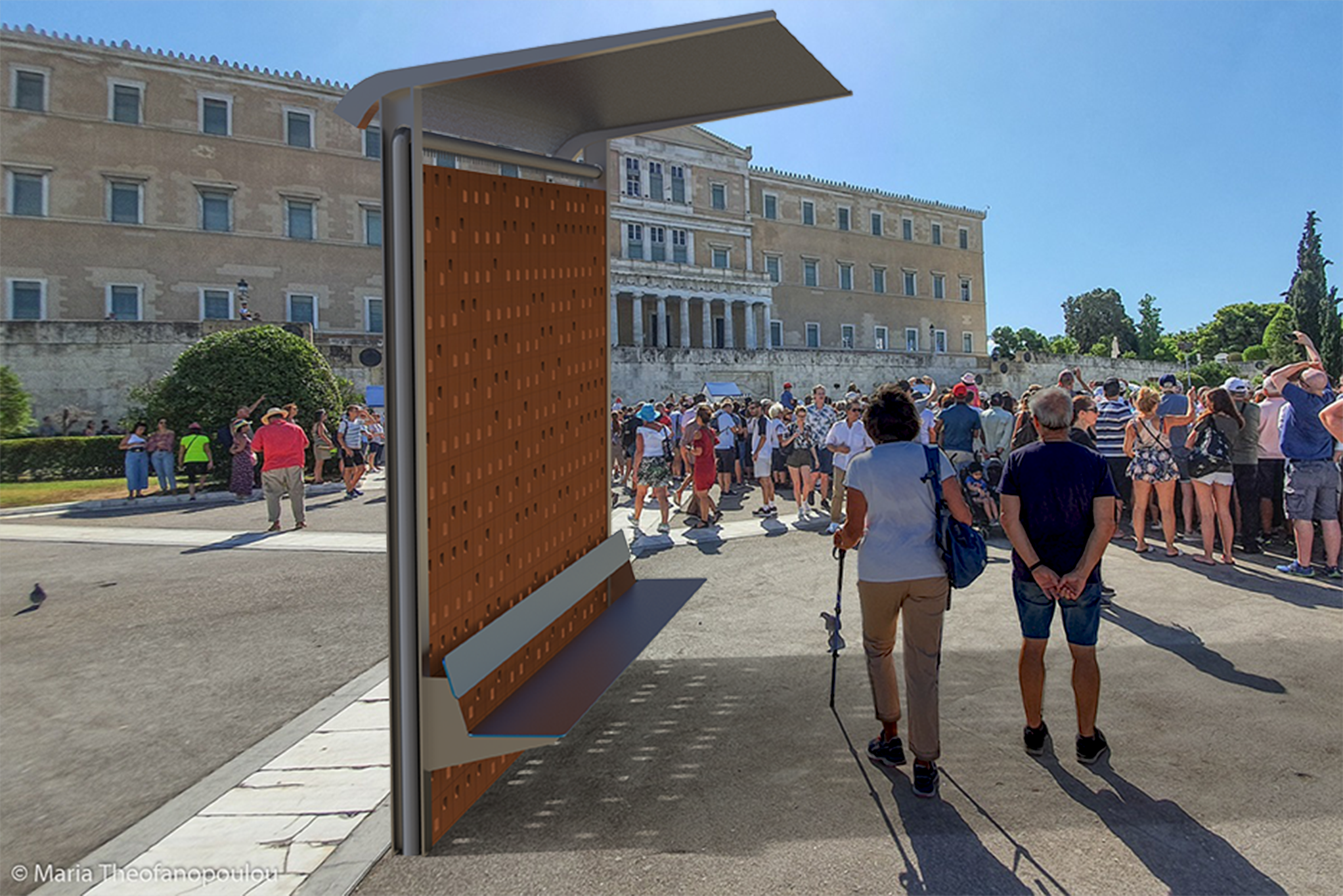 WATERWALL, in urban environment
WATERWALL, in urban environment
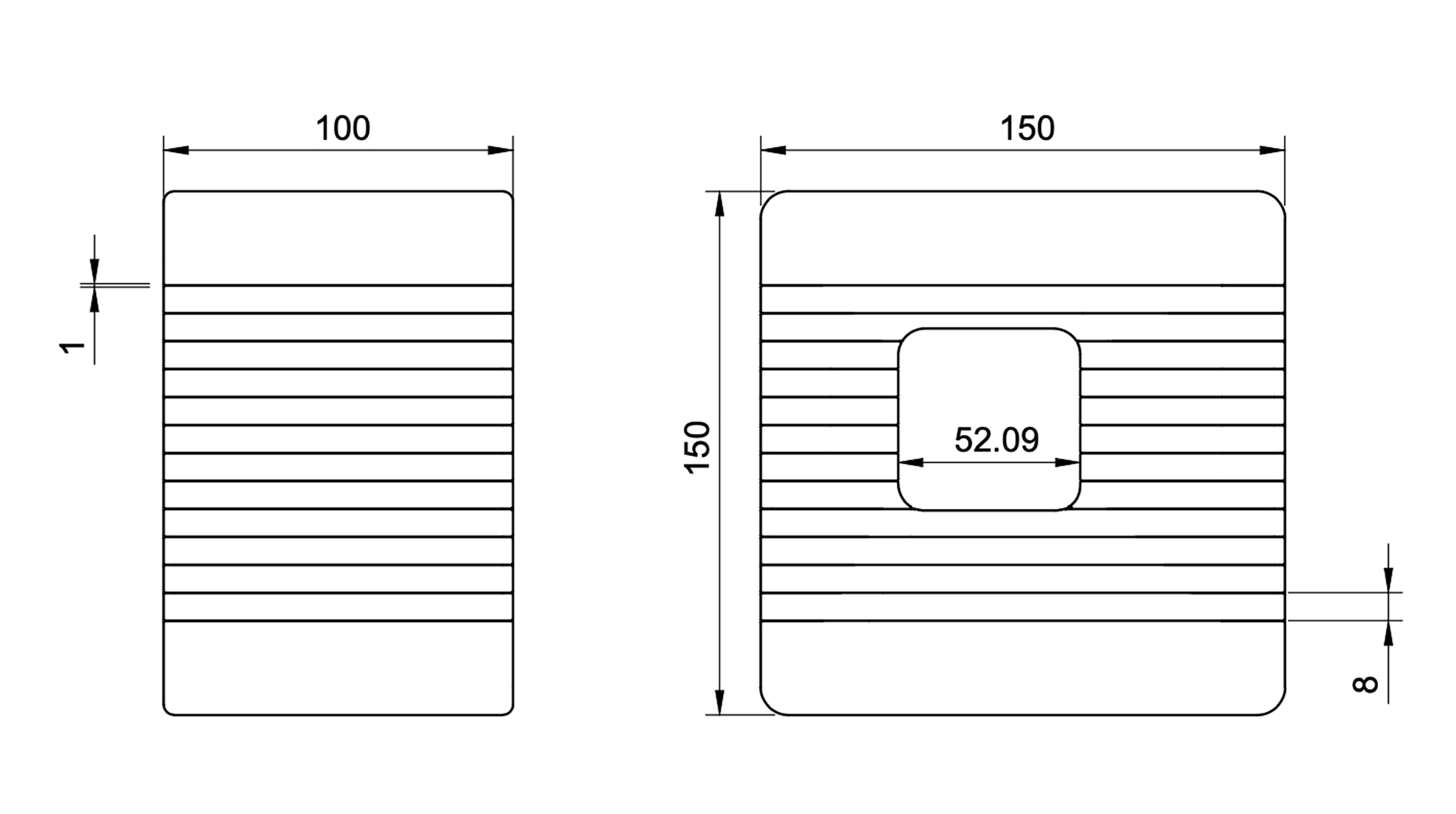 WATERWALL, brick dimensions
WATERWALL, brick dimensions
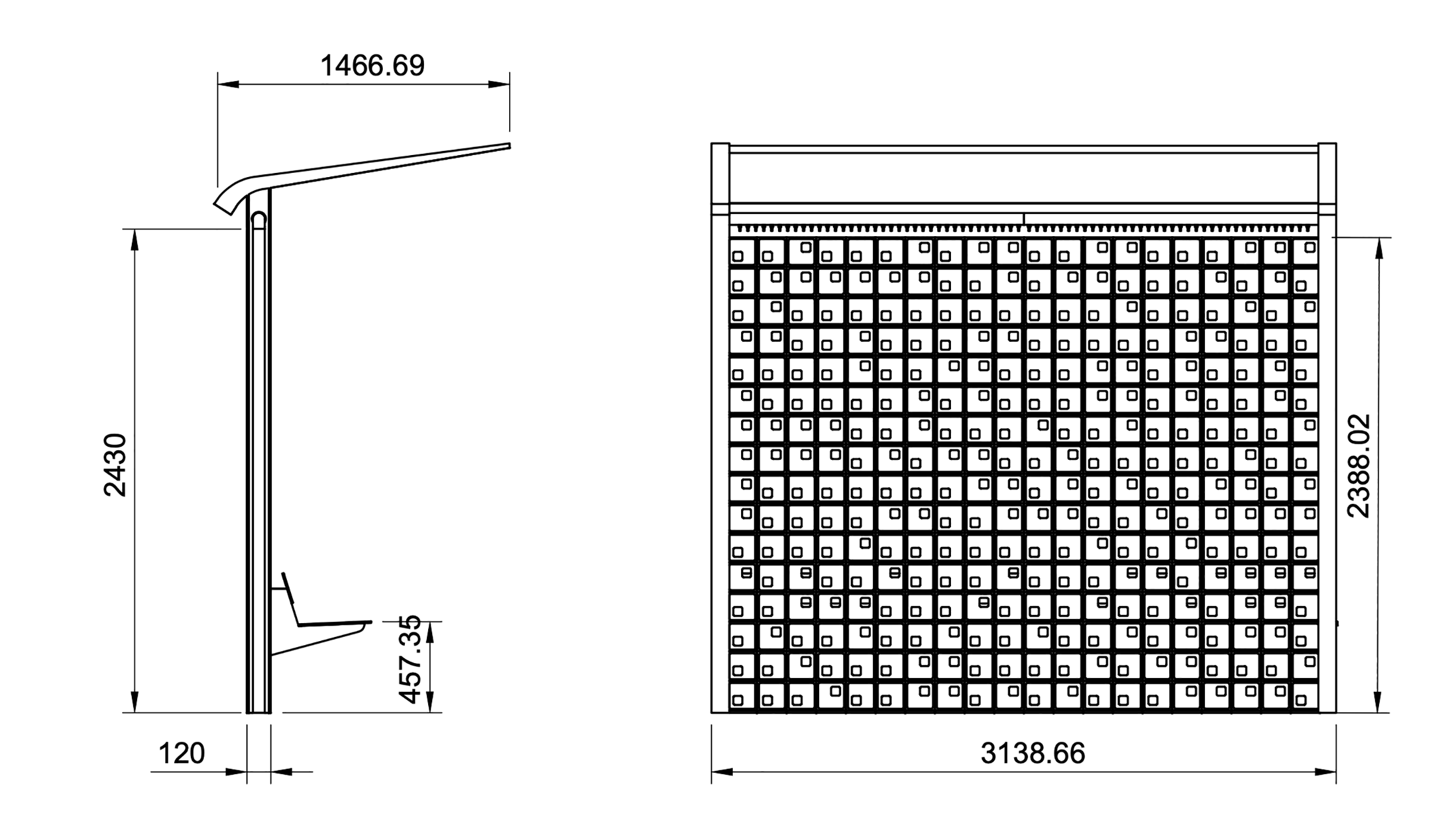 WATERWALL, wall dimensions
WATERWALL, wall dimensions
Process:
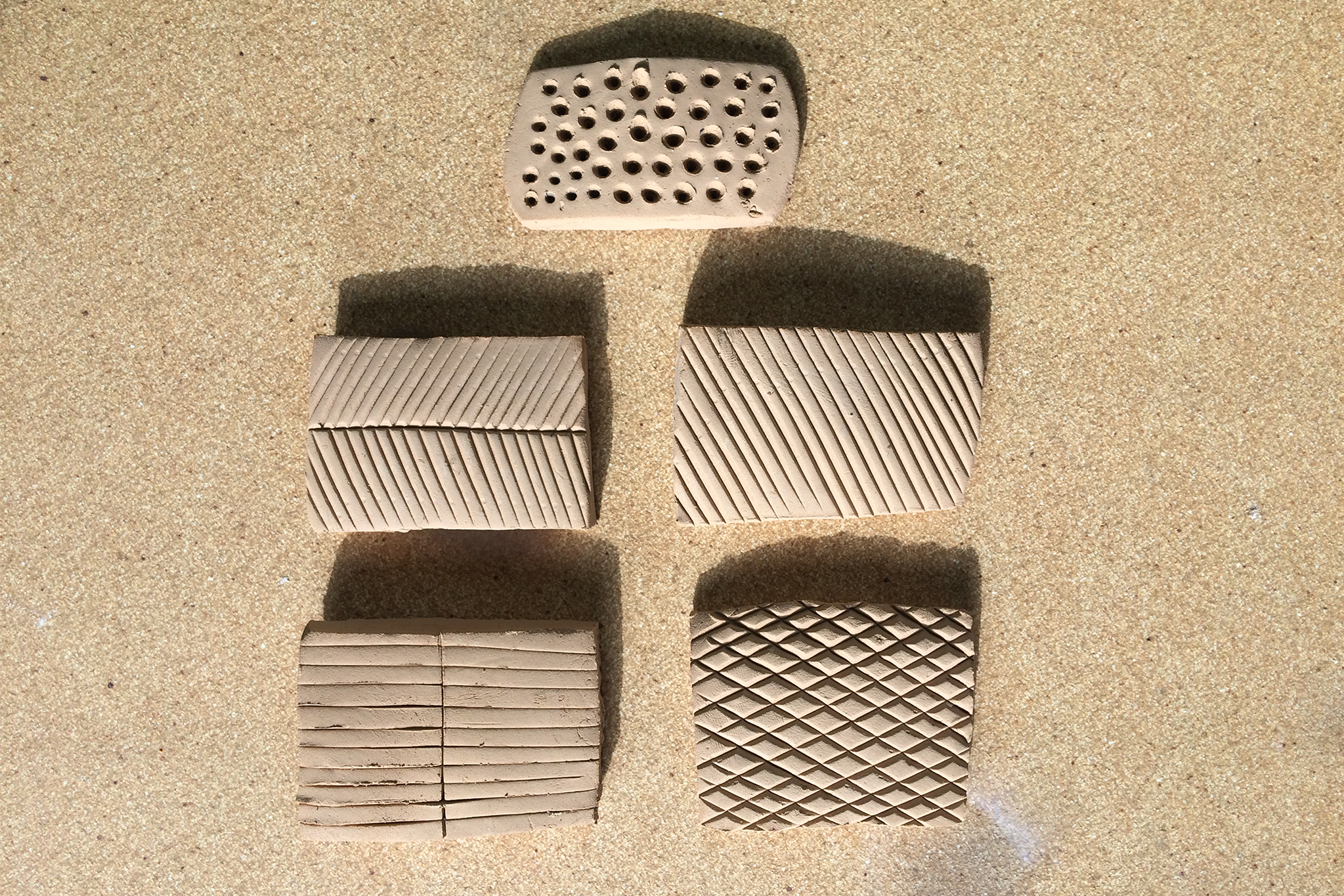 Ribbed clay samples
Ribbed clay samples
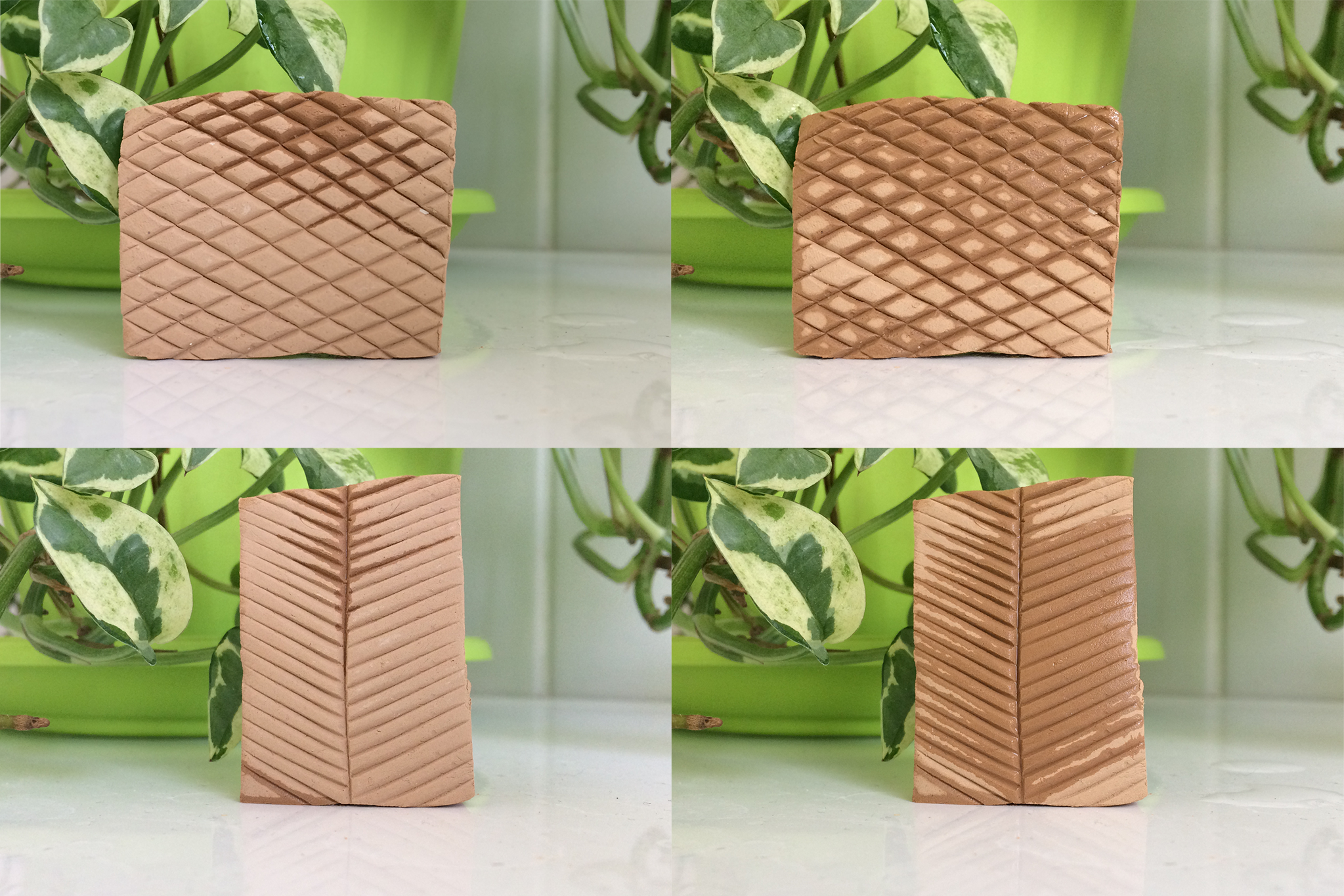 Ribbed clay samples, water testing
Ribbed clay samples, water testing
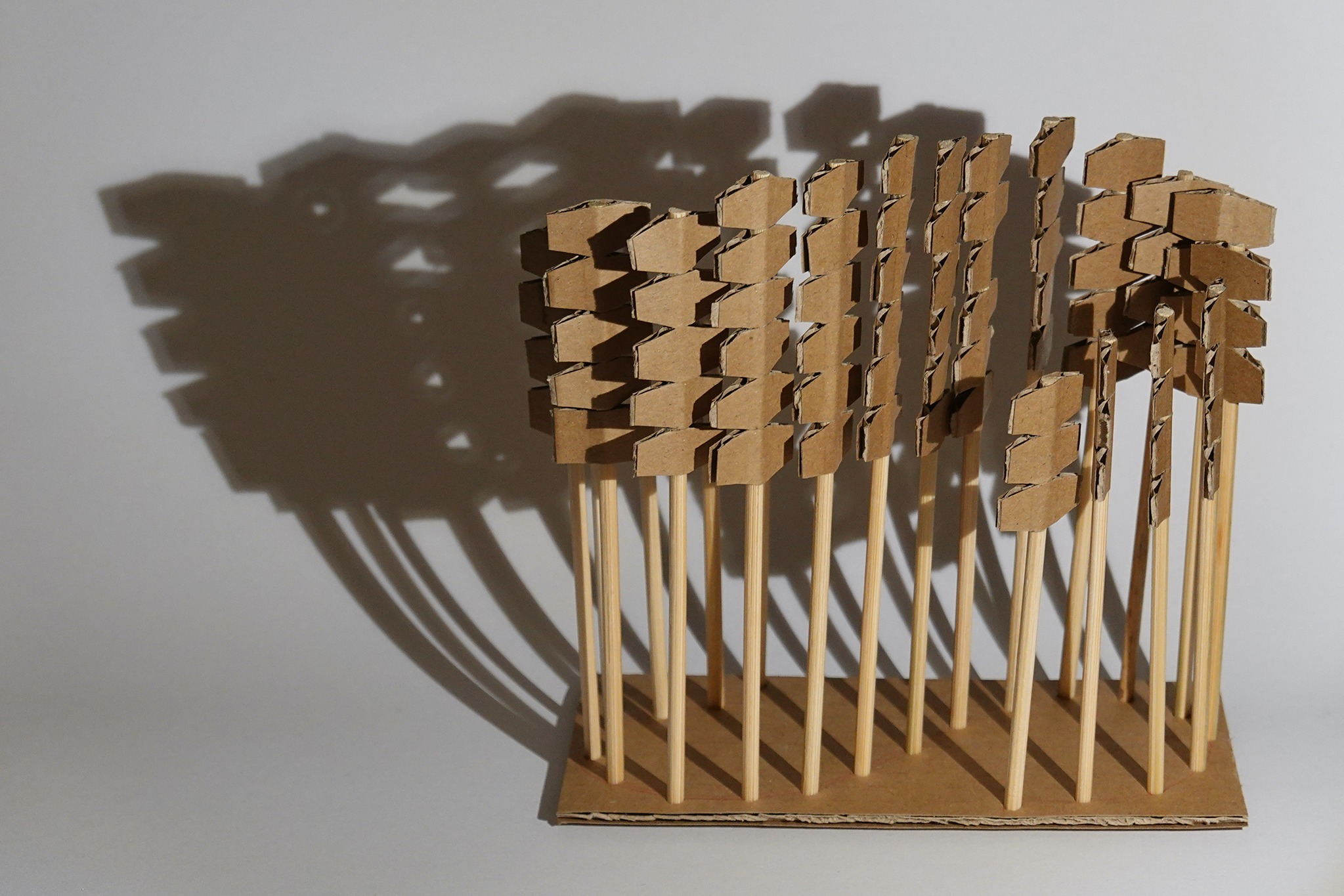 Mid-semester presentation
Mid-semester presentation
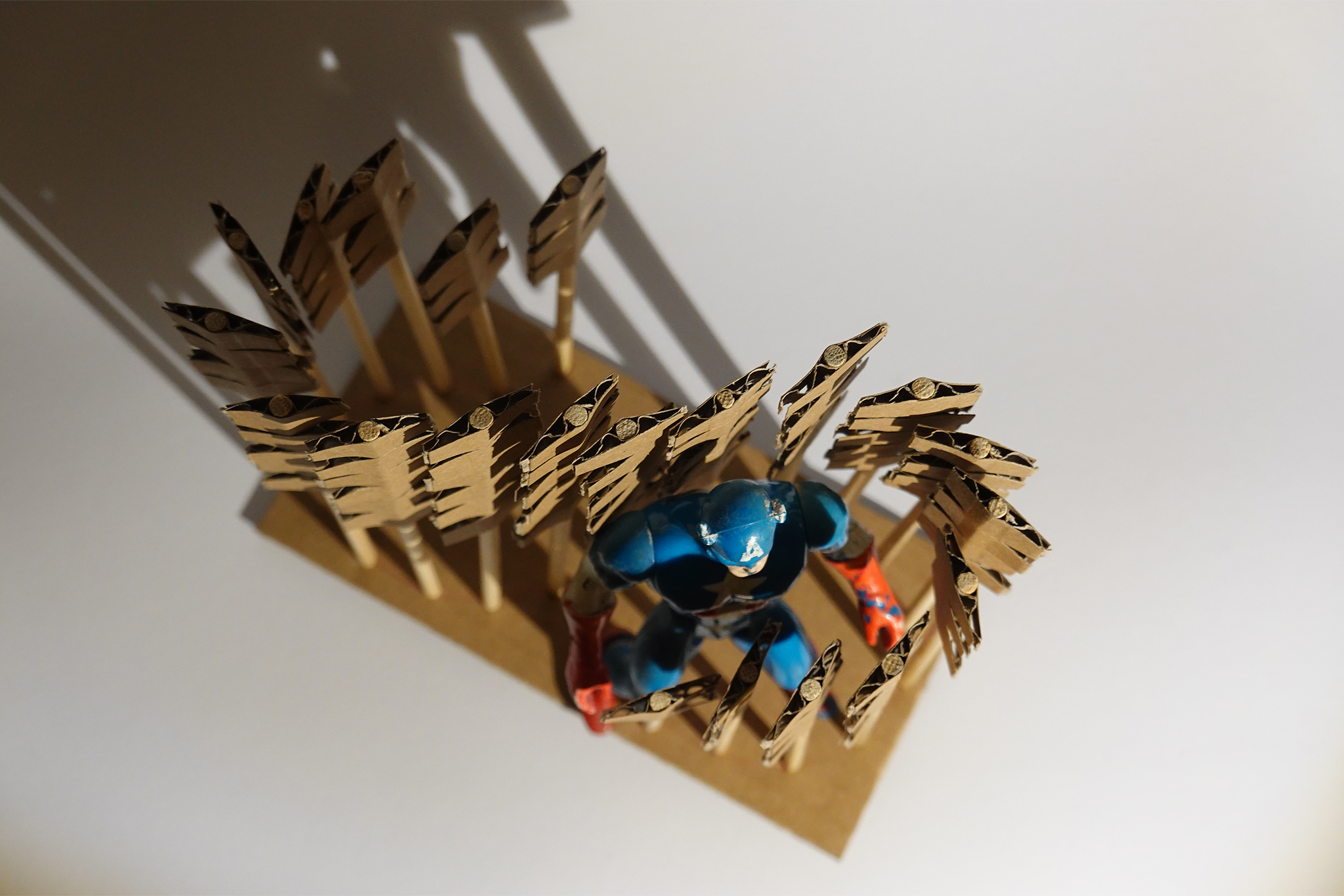 Mid-semester presentation, with person
Mid-semester presentation, with person
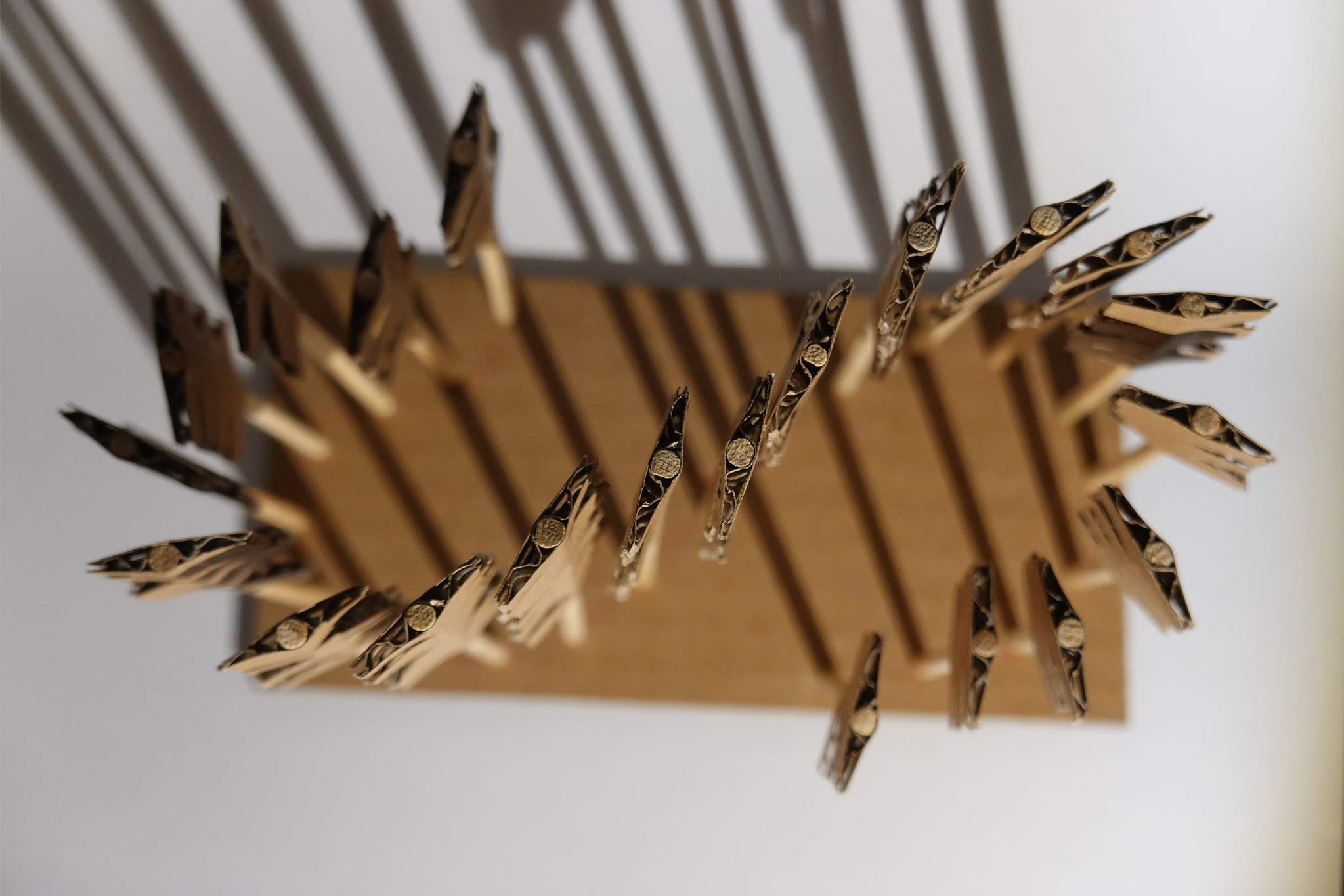 Mid-semester presentation, top-view
Mid-semester presentation, top-view
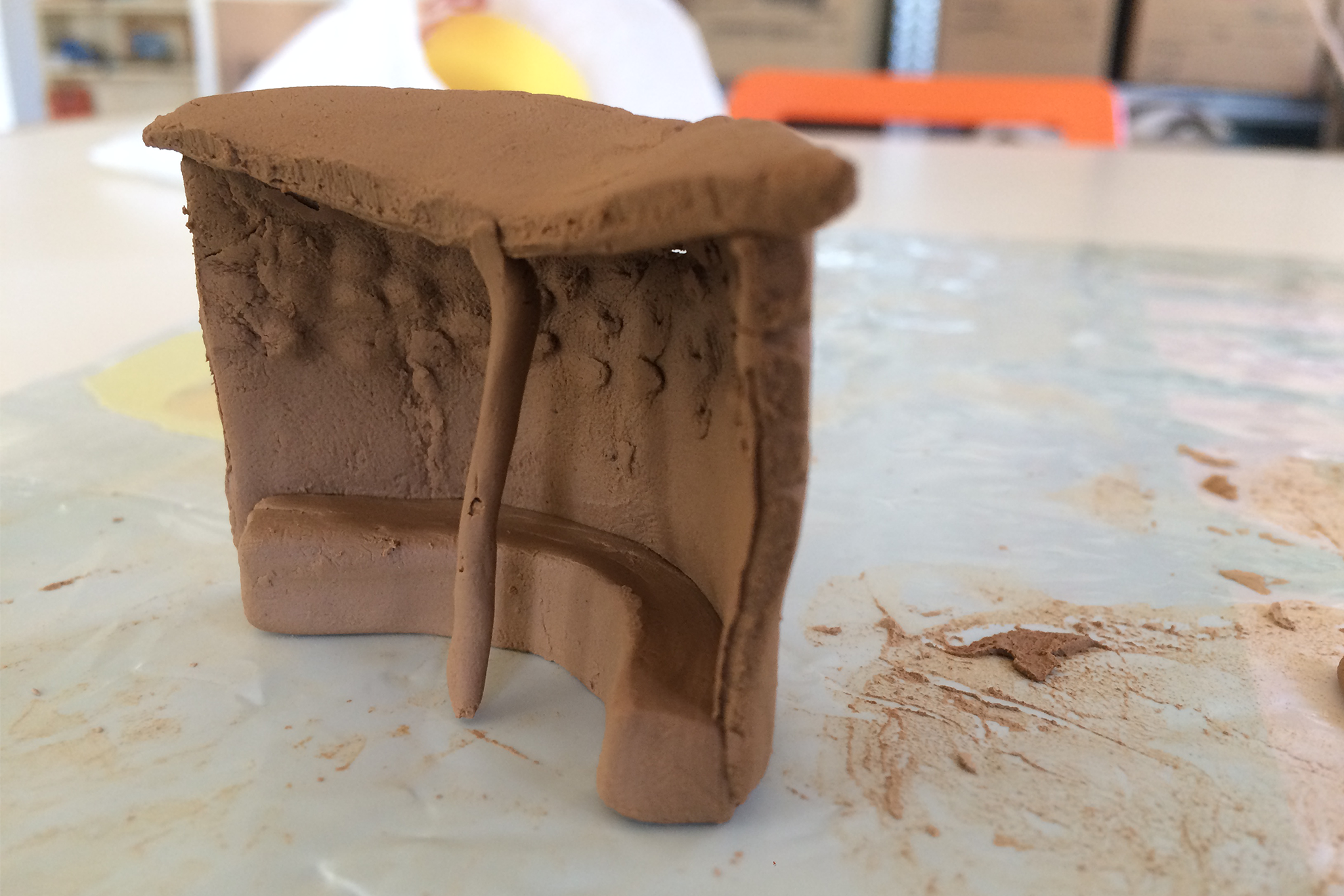 Clay test model
Clay test model
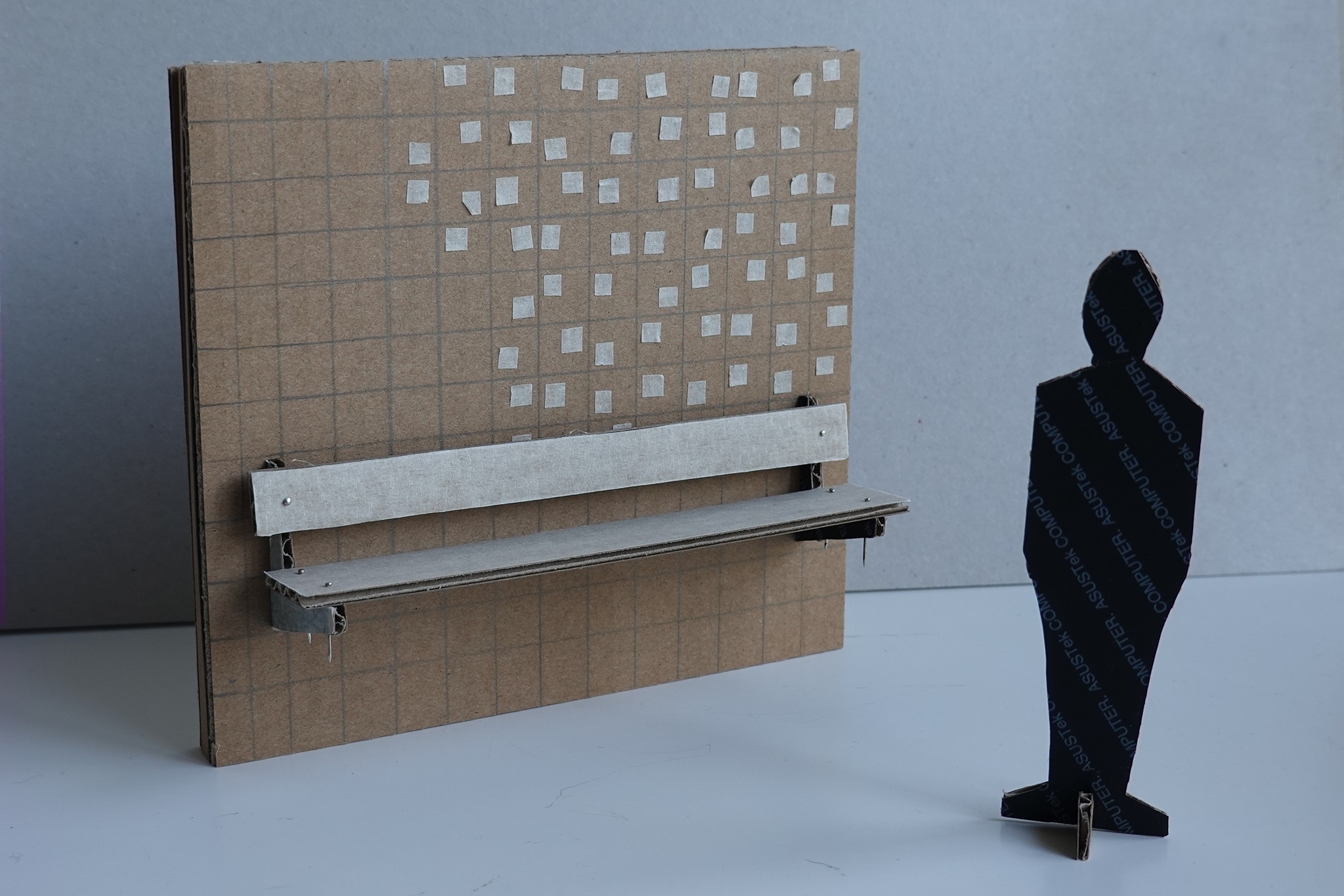 Cardboard test model
Cardboard test model
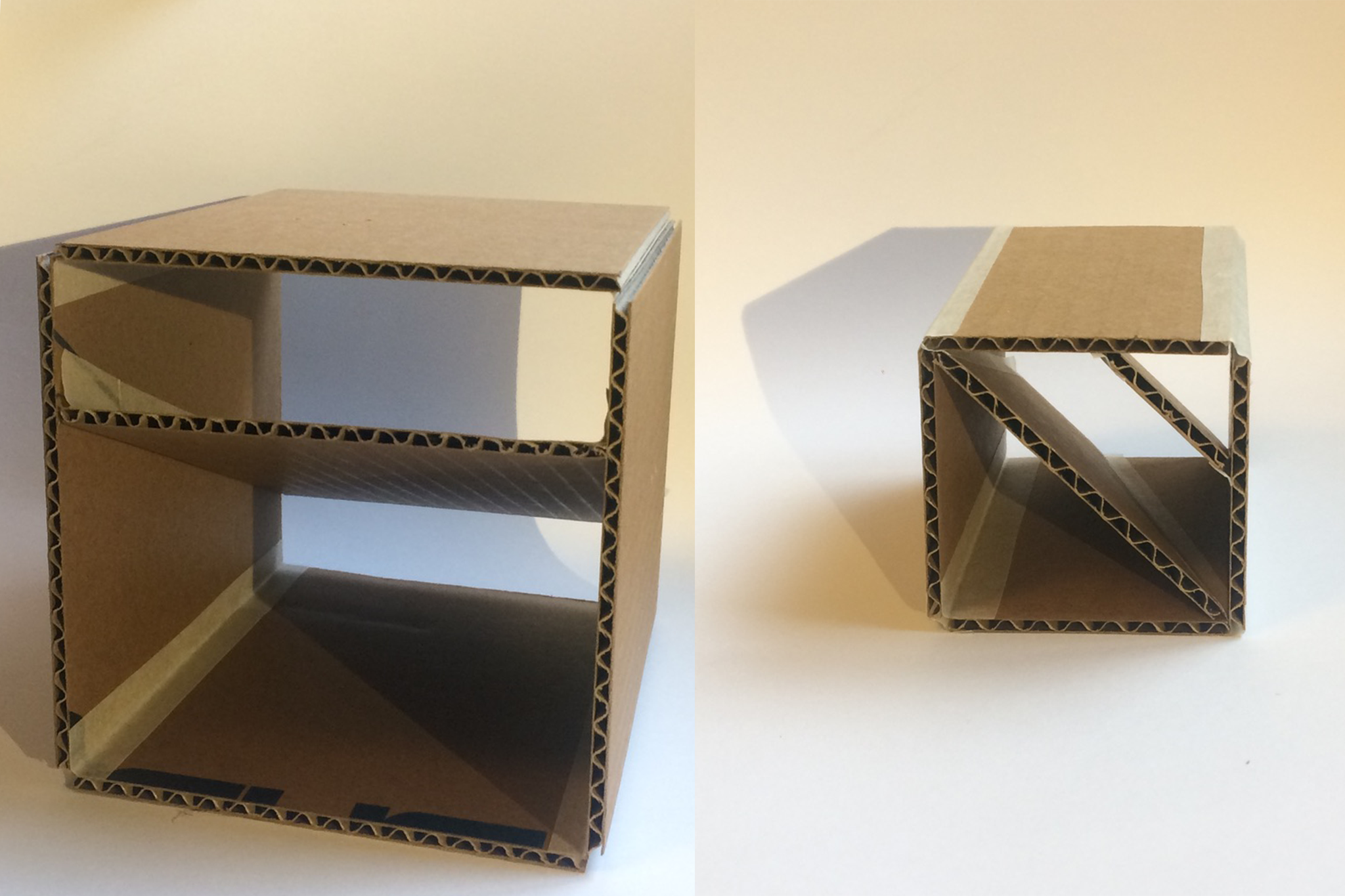 Cardboard brick test model
Cardboard brick test model
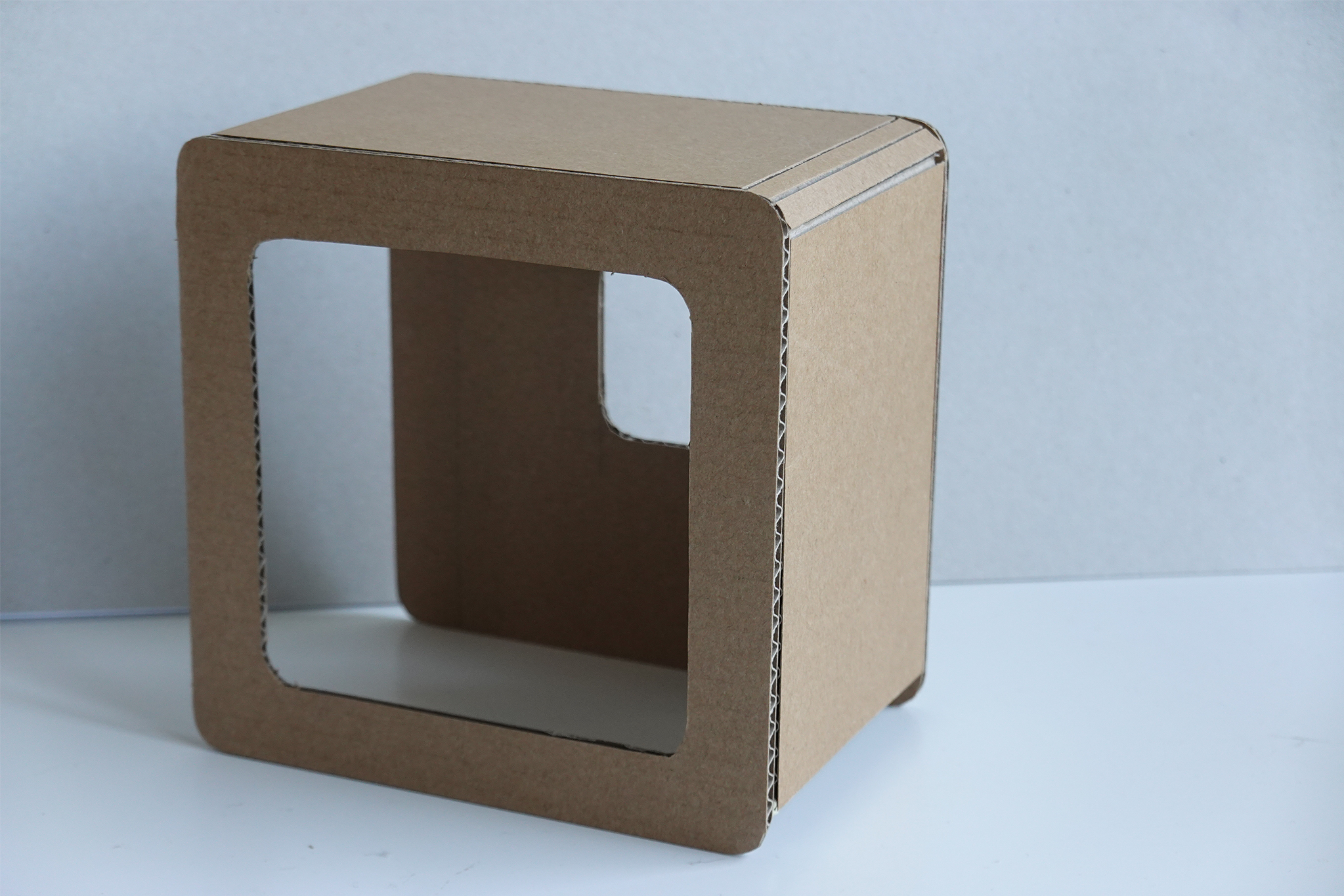 Cardboard brick test model
Cardboard brick test model
Ever tried raccoon meat?
This guide will teach you everything you need to know to get your hands on a raccoon.
It shows a satirical approach on how we could profit from an animal that is otherwise hunted and killed in great numbers, from catching one to cooking it.
FACT:
There are around one million raccoons in Germany right now.
Since they were introduced in the 1930s into the wild they have multiplied in great numbers and are now a danger to many local animals. They hunt and kill small birds, salamanders, they raid nests, and much more. They even started attacking a small German type of turtles.
The damage they cause in cities is equally as big, they live in parks, raid trashcans and sometimes they make their way into houses and start living in the attic or destroy our living spaces. Just another problem that we and our environment don’t need.
Recently the European Union has classified the raccoon as an unwanted species. Since then it is hunted in great numbers, in twelve months from April 2019 to March 2020 around 200.000 raccoons were killed by hunters. The problem is that most of them are then simply thrown away, as most people don’t really know what to do with them or how.
In the twentieth century raccoon fur was highly sought after, nowadays it has become difficult to find, meanwhile the meat is regularly eaten in America where they originally came from whereas it is very rare that someone from Germany has ever tried raccoon meat, even though it is no more problematic to eat than common pig meat. Once it has been checked for Trichinae like any kind of pig or boar it can be simply prepared the same way as deer.
ACT:
This guide wants to show what we are surrounded with all the time and what we could do about it and even profit from it. Some of the steps might seem rather brutal, meanwhile others are very much possible and some are not as problematic as one might think. Why should we not eat an animal that is killed in big numbers instead of throwing it out for example?
This is one of the questions this project wants to raise and make you think. And maybe there isn’t even a real answer to that except for ‚I don’t like the taste if it’.
Though you should first ask a hunter if they might be willing to get some raccoon meat for you so you can try it yourself.
Lukas Dilger, 3.sem WS 2020/21
Project:
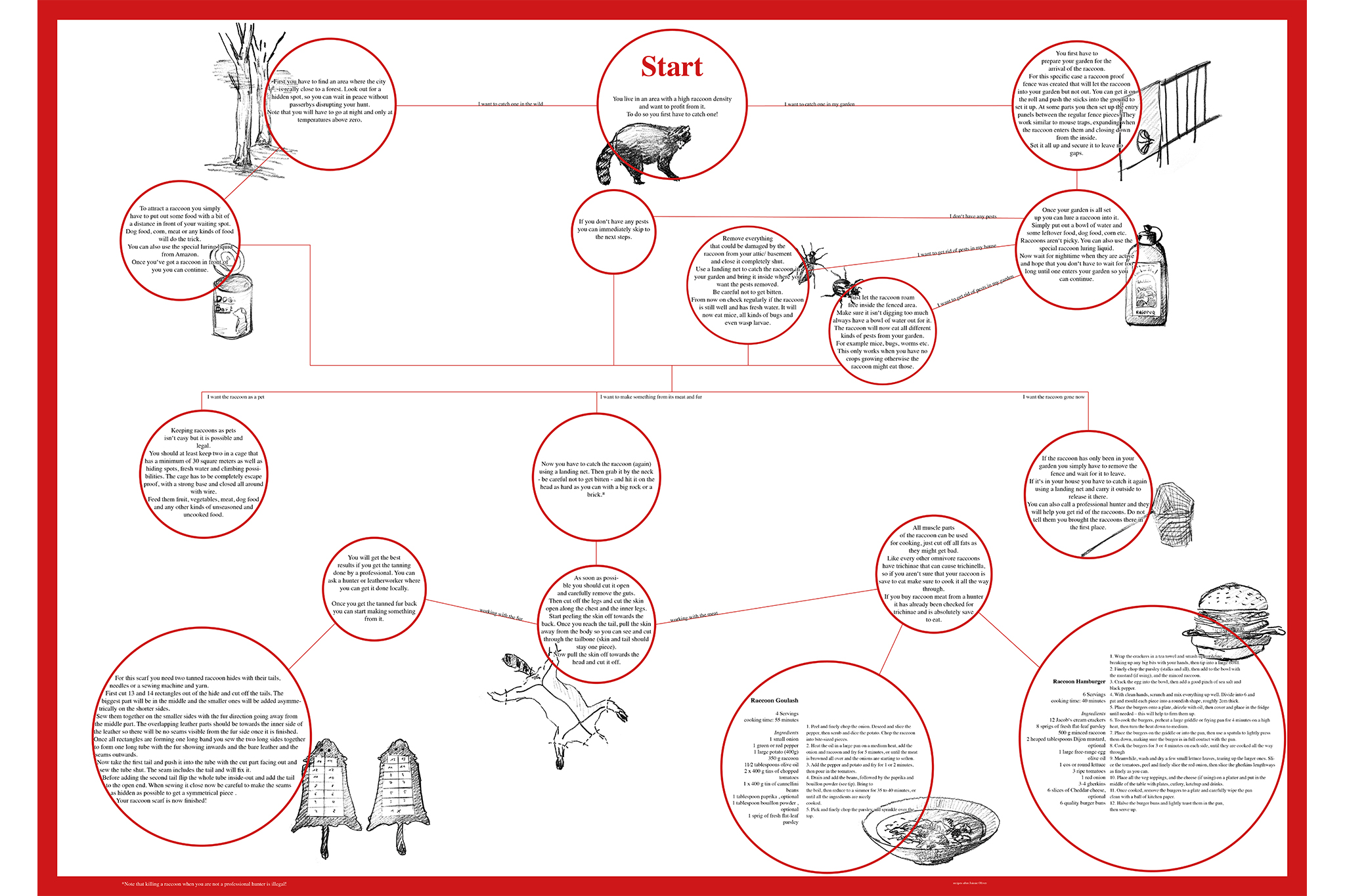 The complete and final raccoon guide in form of one big sheet
The complete and final raccoon guide in form of one big sheet
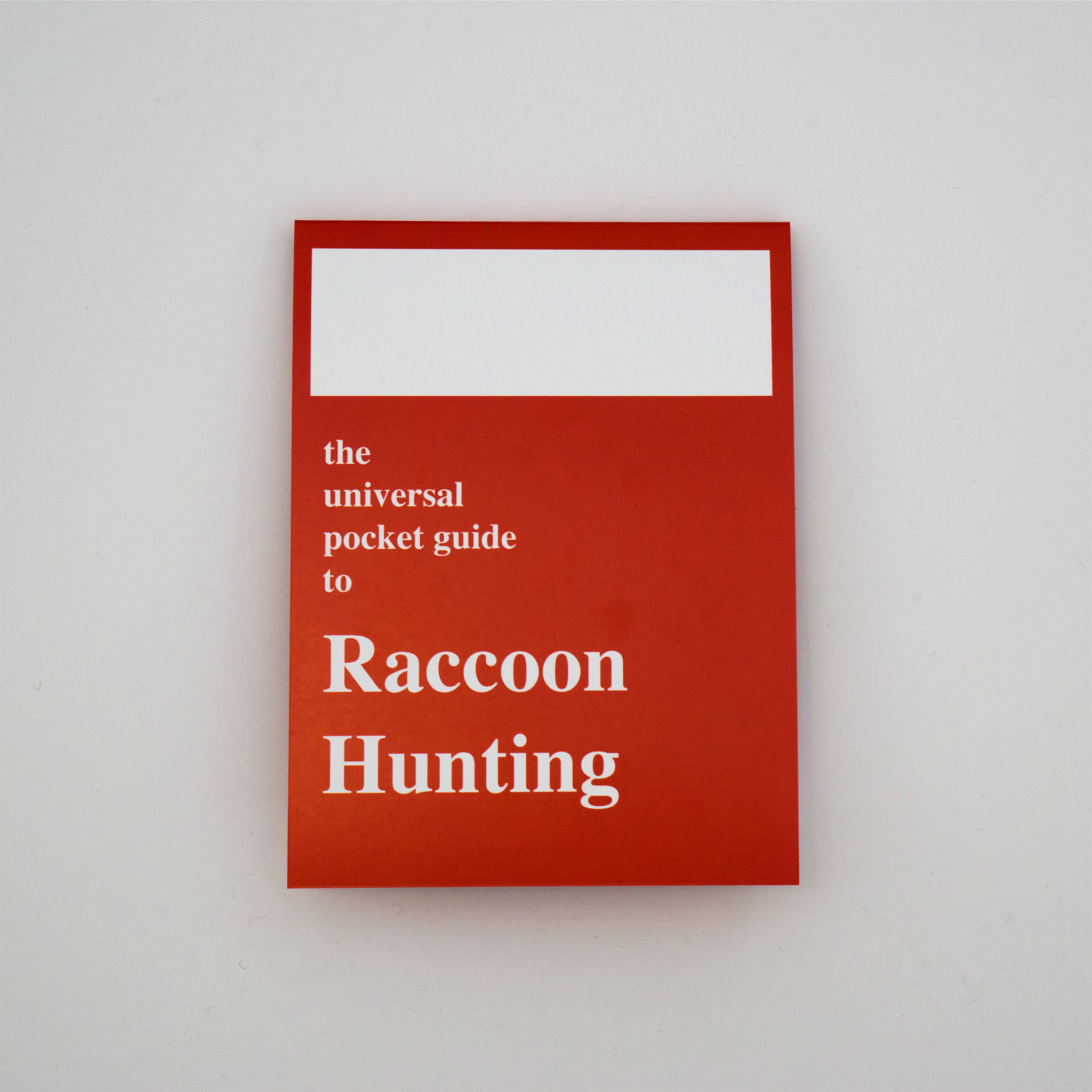 The cover of the folded guide
The cover of the folded guide
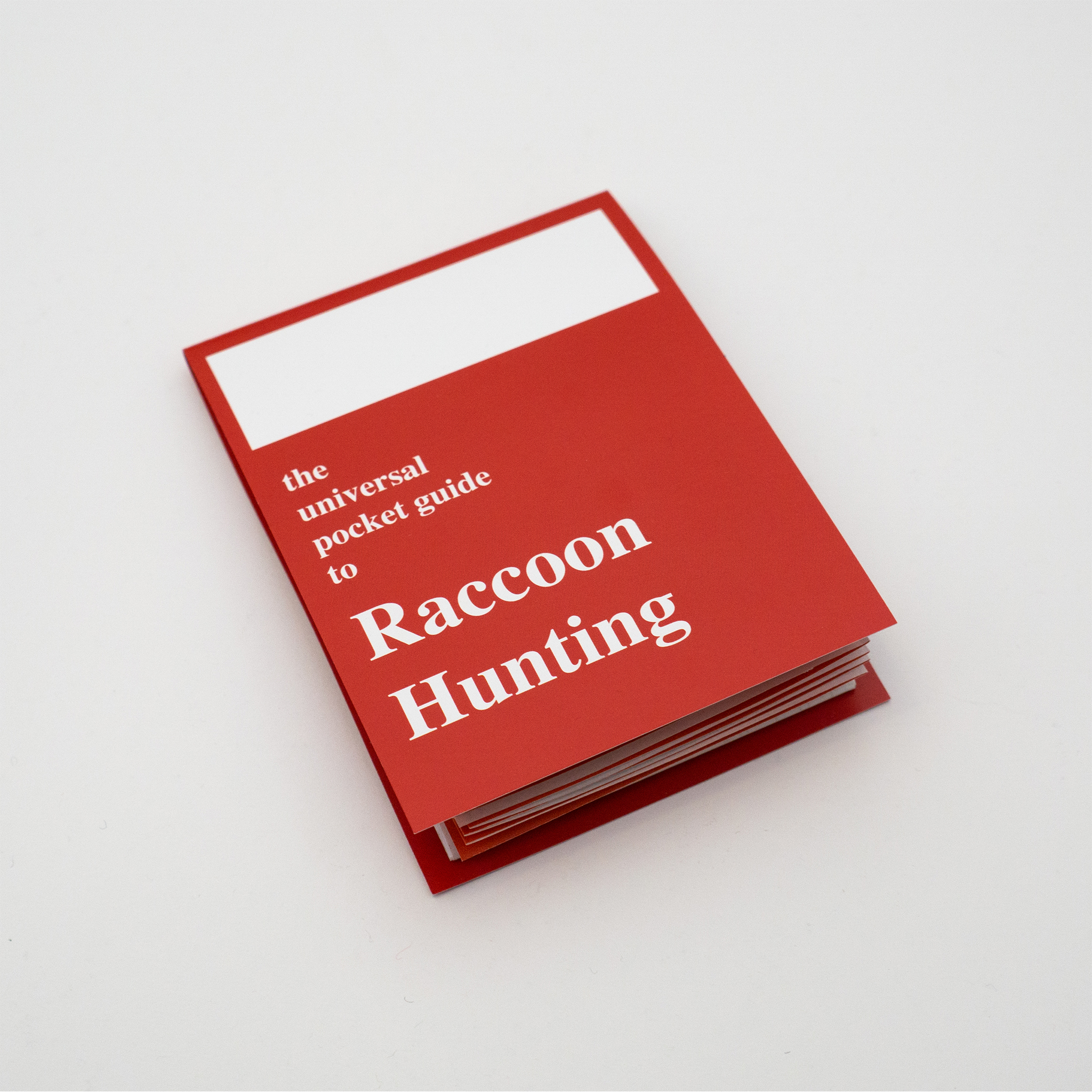
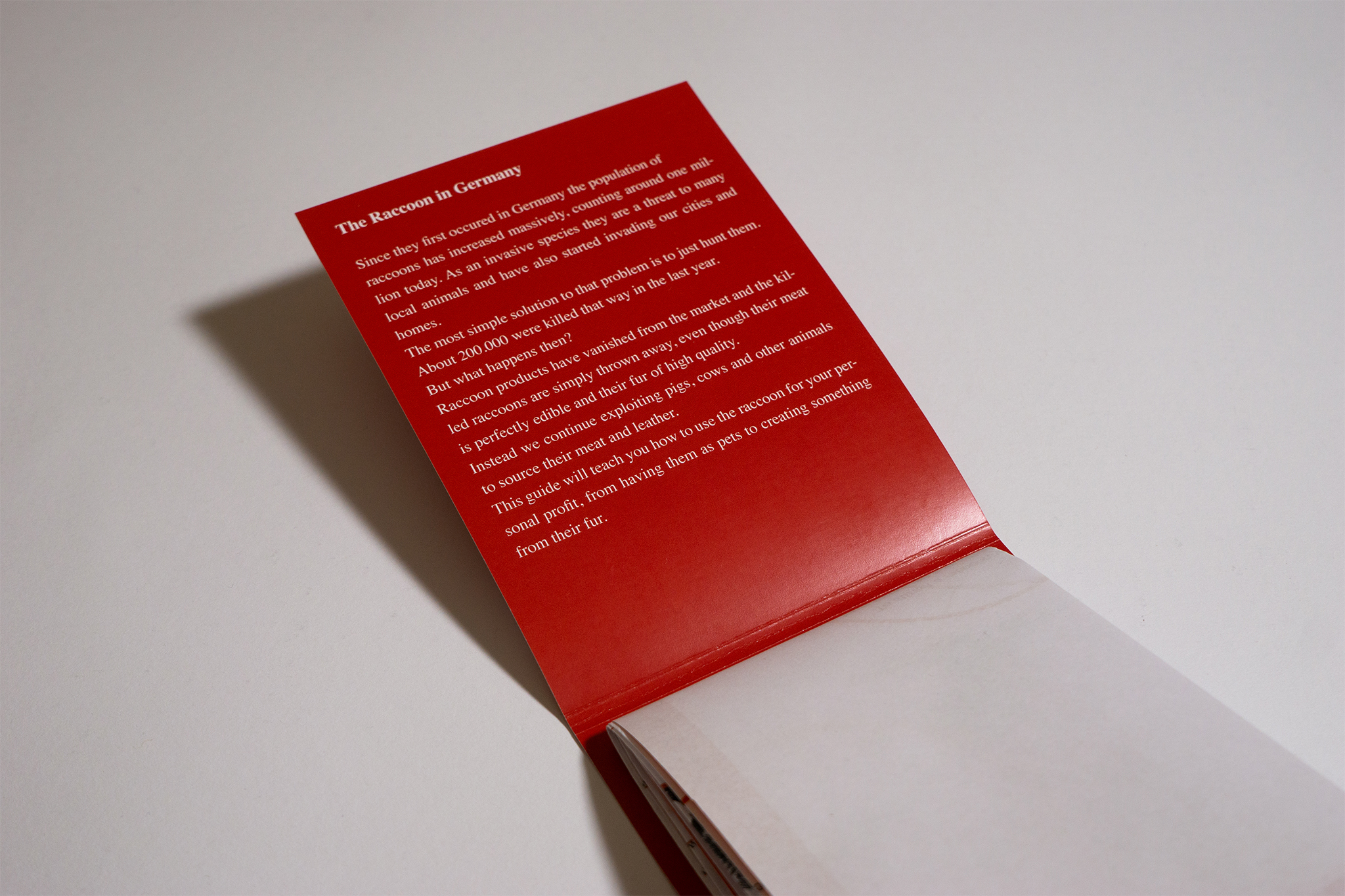 The inside of the Cover stating facts about the raccoon in Germany and what this guide wants to do
The inside of the Cover stating facts about the raccoon in Germany and what this guide wants to do
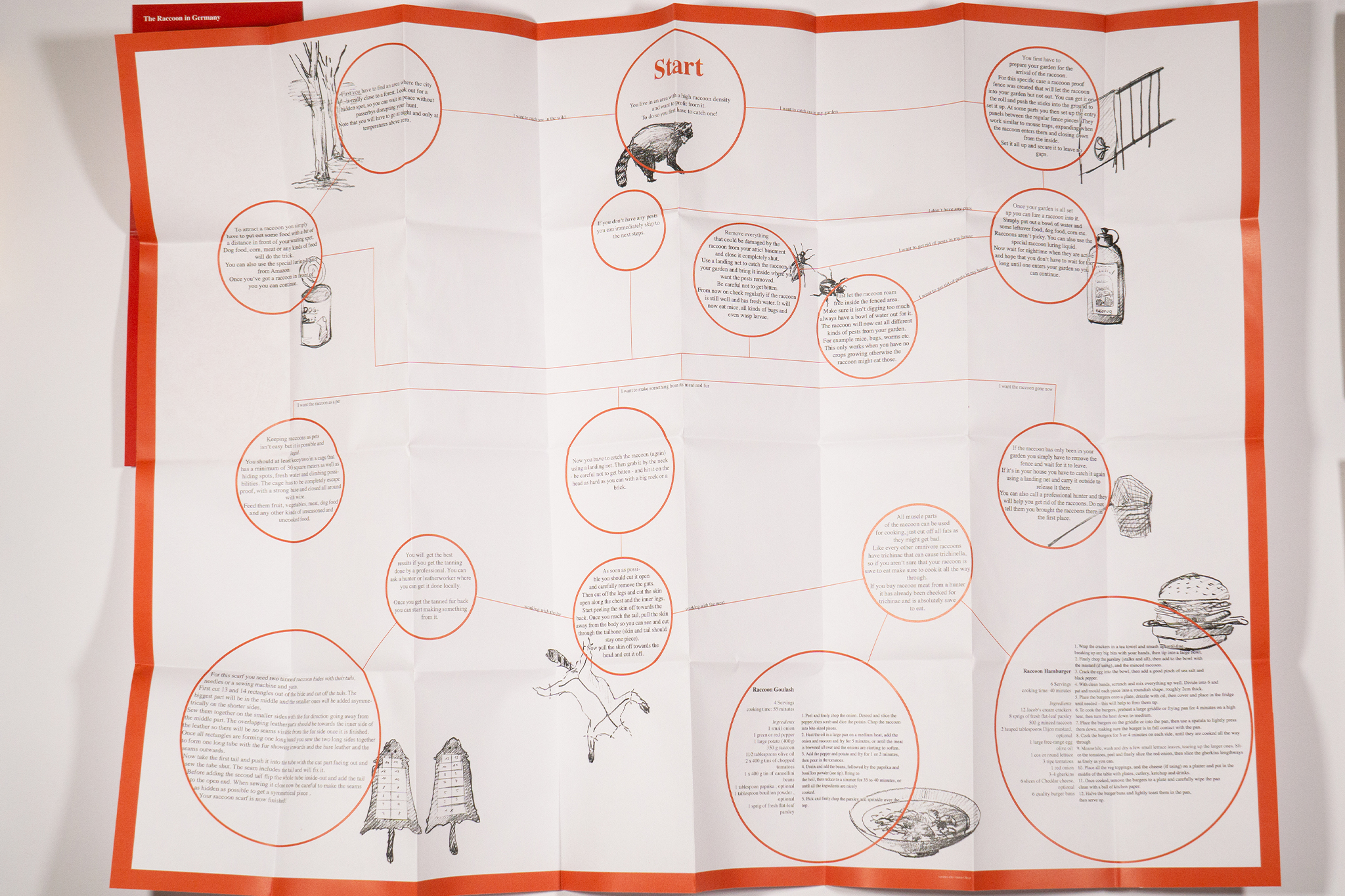 The fully folded out guide
The fully folded out guide
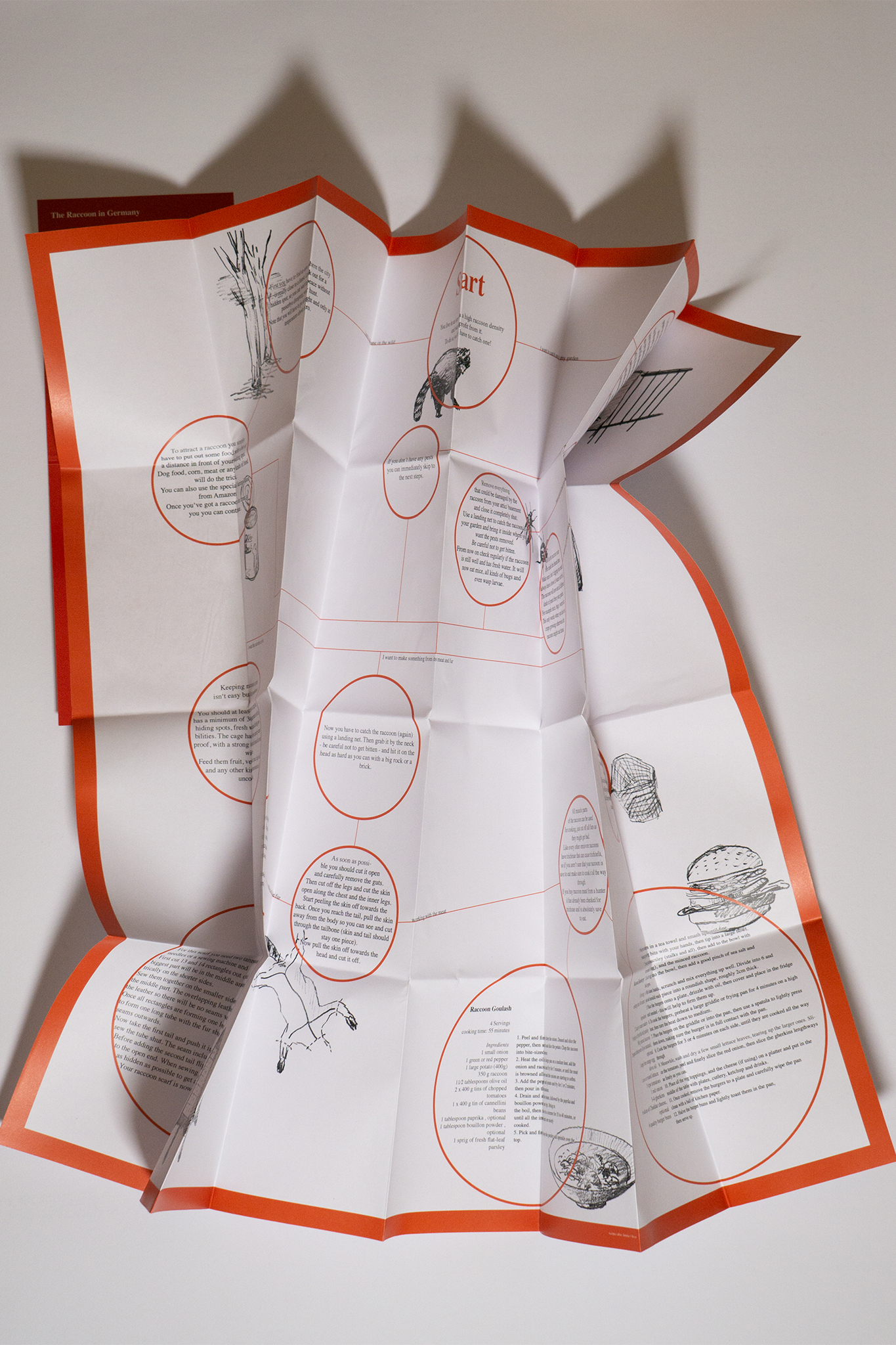 Inside is the guide in A1 format and can be folded out.
Inside is the guide in A1 format and can be folded out.

The QR-Code to view the complete guide online, or find the guide online HERE, Created by Andreas Bauer
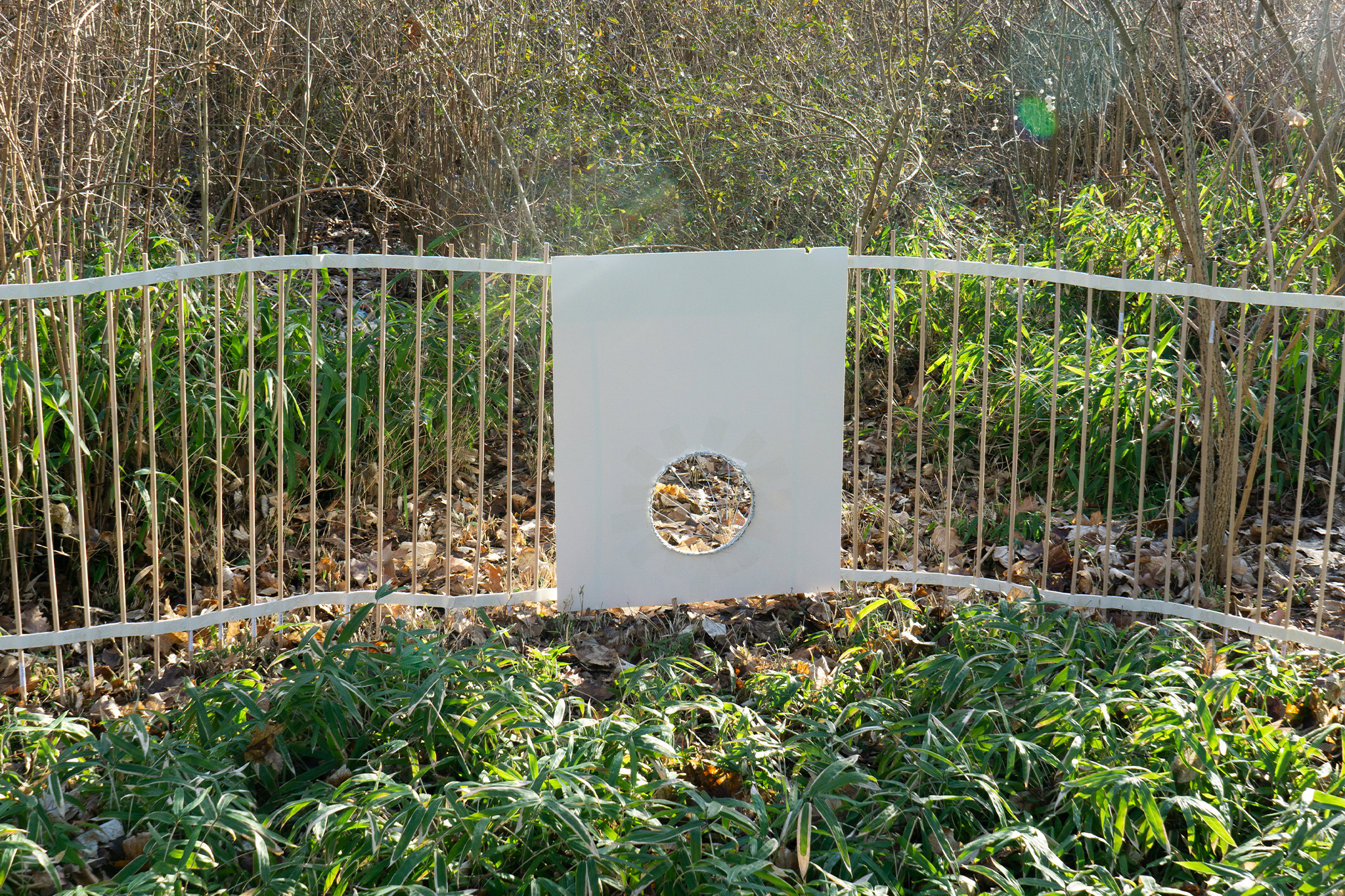 The full scale model of the fence to capture the raccoon together with an entry piece set up in the garden
The full scale model of the fence to capture the raccoon together with an entry piece set up in the garden
 The entry piece from inside the garden
The entry piece from inside the garden
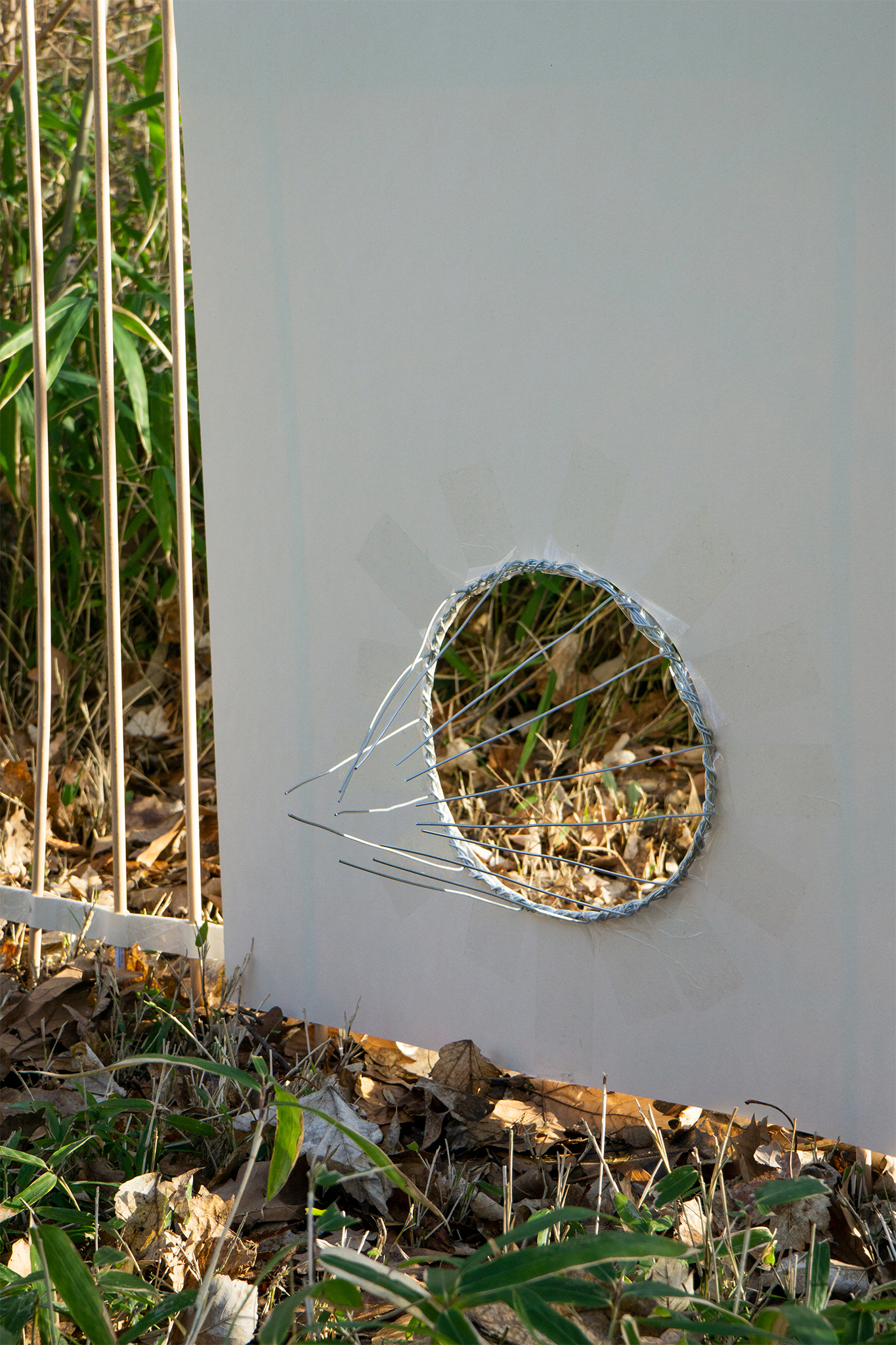 Detail of the entry. The raccoon cannot pass it from this side
Detail of the entry. The raccoon cannot pass it from this side
 The regular fence part from the roll set up in the garden
The regular fence part from the roll set up in the garden
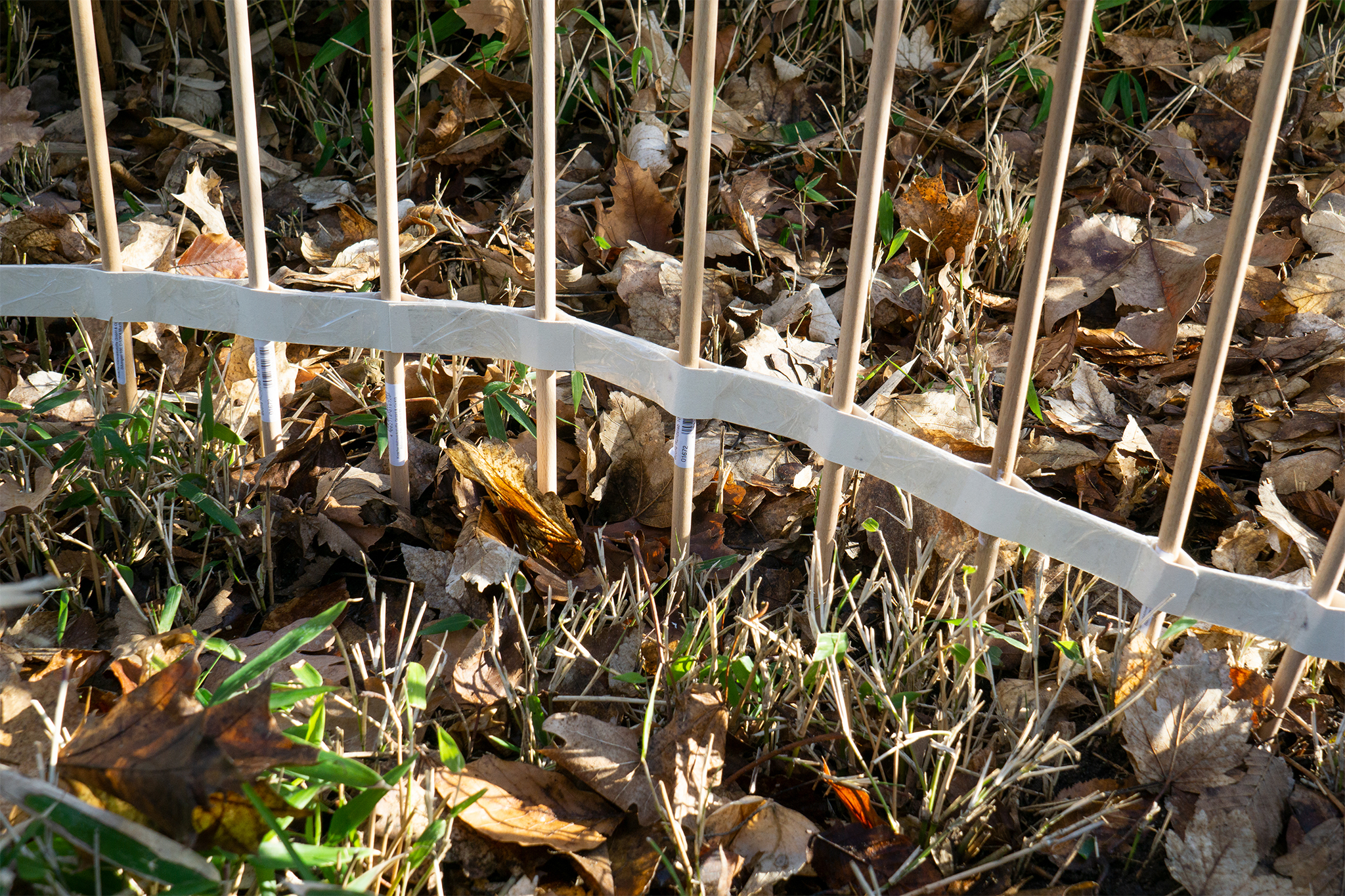 Detail of the regular fence part sticked into the ground
Detail of the regular fence part sticked into the ground
Process:
Thanks to PCM technology, “second skin” keeps the skin within its thermal comfort zone. The t-shirts have a cooling and the sweaters a warming effect. They help reduce our dependency on heaters and air conditioners. Consequently, reducing our energy consumption indoors.
FACT:
There were two facts that fuelled our project.
• Firstly, heating and cooling account for half of the final energy consumption in buildings in the European Union. The energy demand increases during summer and winter, were people depend on indoor climate systems to keep the body cool or warm when temperatures outside reach uncomfortable levels. • Secondly, the skin temperature has an average of 33ºC — if it differs by ± 4.5ºC, the body feels discomfort.
Reducing energy consumption in buildings can aid in the transition towards more sustainable cities,which prompts the question: how can our skin temperature be regulated without depending on energy?
ACT:
Phase Change Materials (PCMs) release or absorb energy when going through a phase change. In a warm environment they melt and absorb energy, thus transmit a cooling sensation. In a cold environment, they solidify again and release the stored heat, causing a feeling of warmth. This process is infinitely reversible.
There are various types of PCMs with many different melting and solidifying temperatures. They come in a powder form or diluted in water. We chose to work with two different melting temperatures, both within the range of our skin temperature. The PCM 35 releases its warmth when the skin temperature drops below 35ºC because of cold air indoors. On the other hand a PCM 28 would melt at 28ºC or above and provide a cooling effect during summer.
The PCM has to be in close contact with the skin to be able to feel its effect. Thus we decided to make two clothing items which integrated the qualities of the material.
To be able to integrate PCMs into textiles, they have to be micro-encapsulated first, which means small, protective shells are formed around the material. Thus when the material changes of state, it remains inside the shell both in liquid and solid form. The shells also make it possible for the textile to be washed, protecting it from detergents.
A company named Mikrocaps provided us with the micro-encapsulated PCMs and binders needed to integrate it into a textile. We made a mixture of the PCM, a binder and water. This mixture was applied to the textile using a paint roller. It was then left to dry for an hour and cured in the oven for 4min at 150ºC.
We decided to use two clothing items that are already commonly used: a t-shirt for the summer and a sweater for winter. Implementing this technology into everyday clothing items makes the material available for widespread usage. To add to the skin’s comfort, the clothes are made of soft cotton.
The t-shirts with light colours represent the cooling effect of the material within. The darker-coloured sweaters represent the warming effect.
IMPACT:
Both clothing items help keep the skin within its thermal comfort zone (29-34ºC) during temperature fluctuations. We can therefore become less dependent on heaters and air-conditioners, therefore reducing energy consumption indoors.
Katharina Sauter, 5.sem WS 2020/21
Gloriana Valverde, 3.sem WS 2020/21
Project:
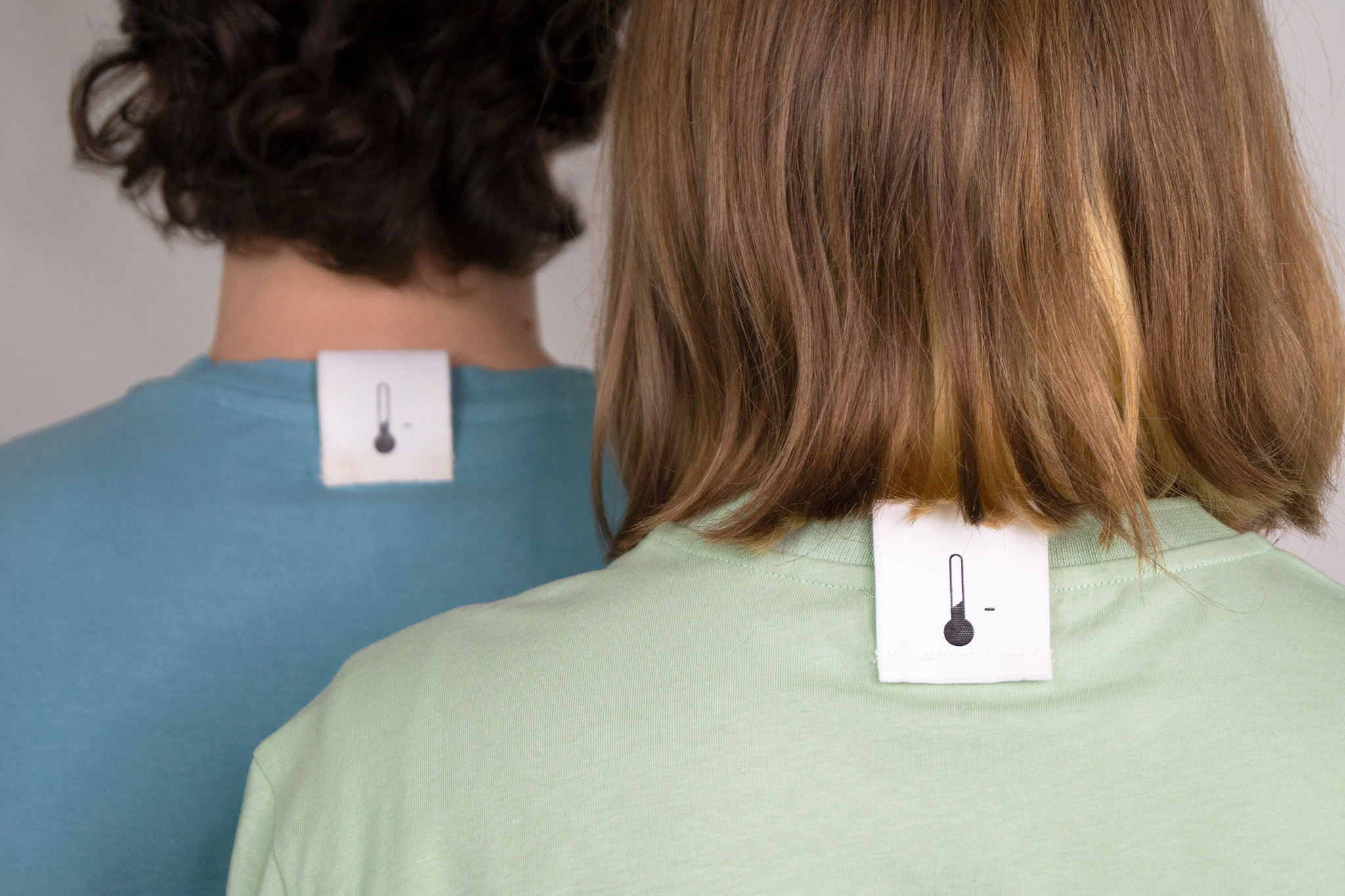
PCM 35ºC – heating you up in winter
|
V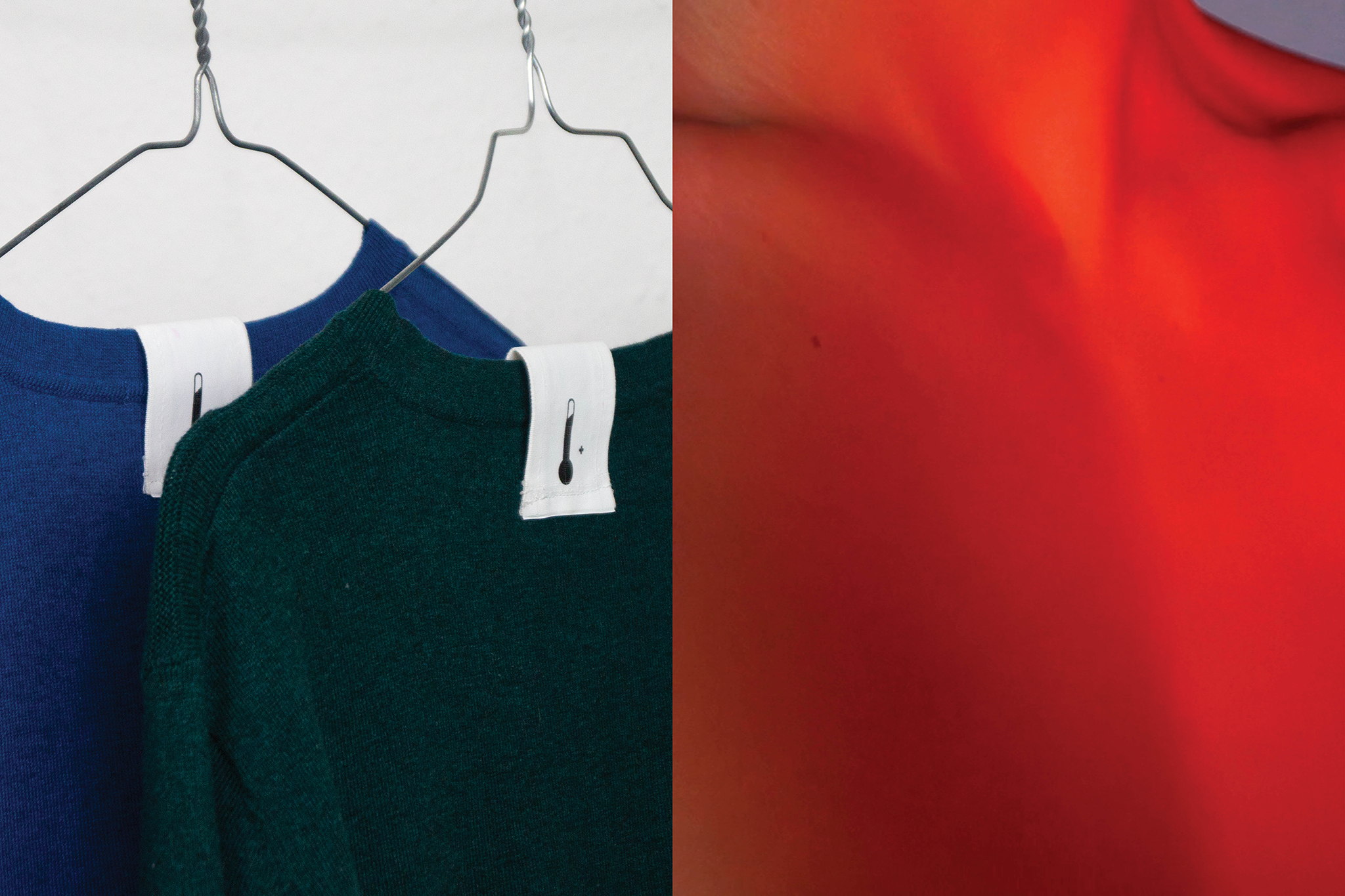

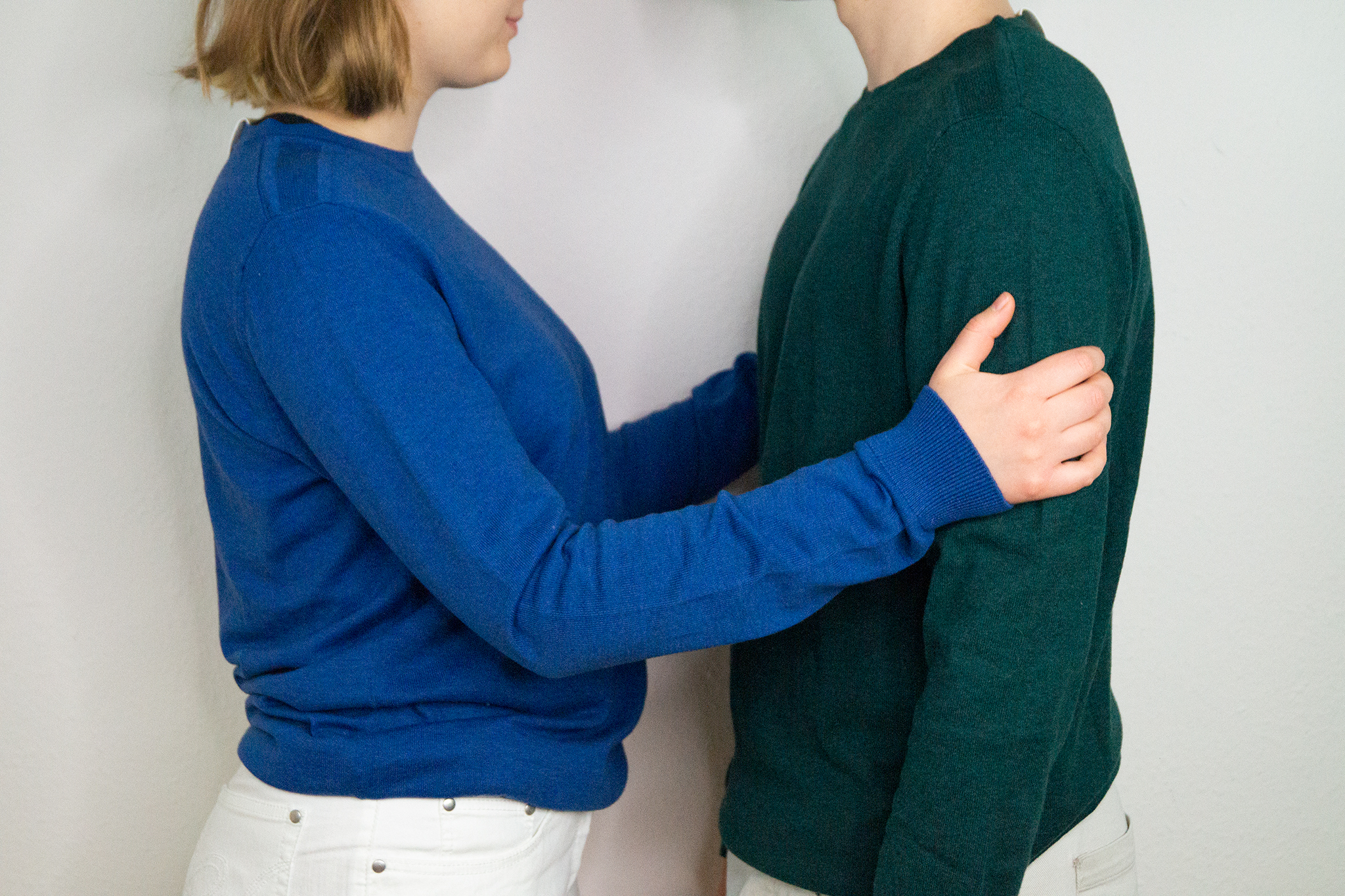
PCM 28ºC – cooling you down in summer
|
V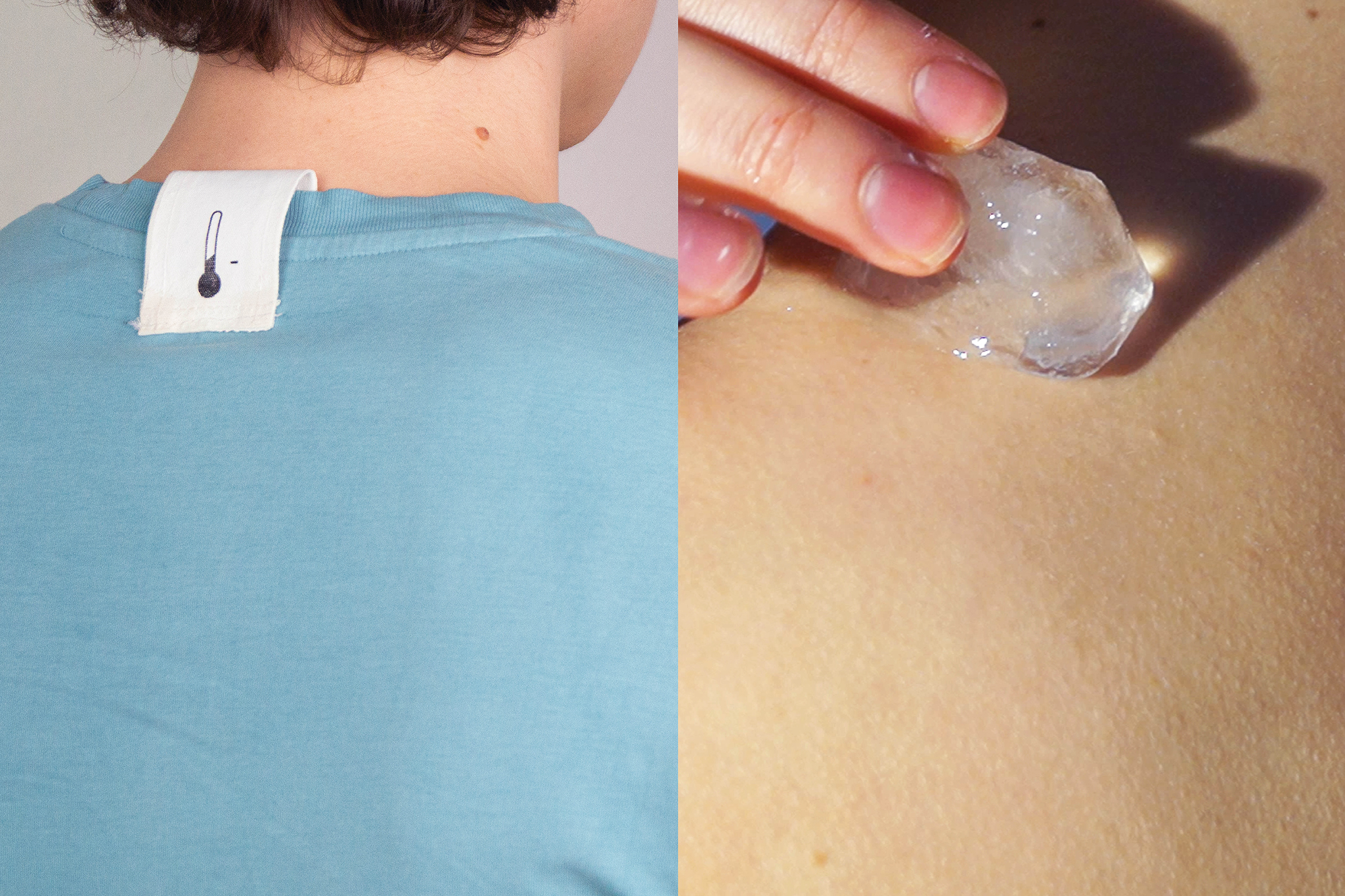
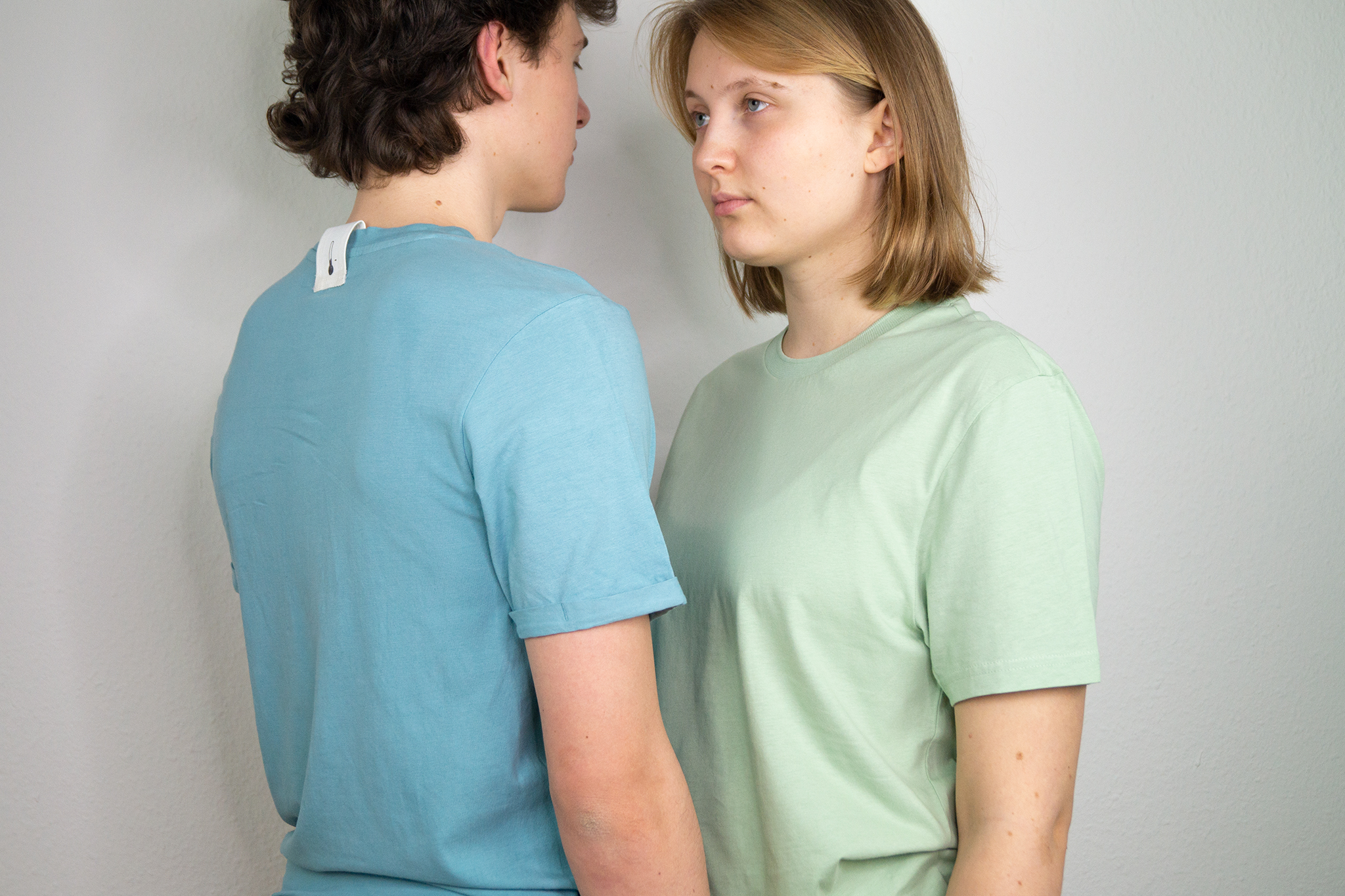
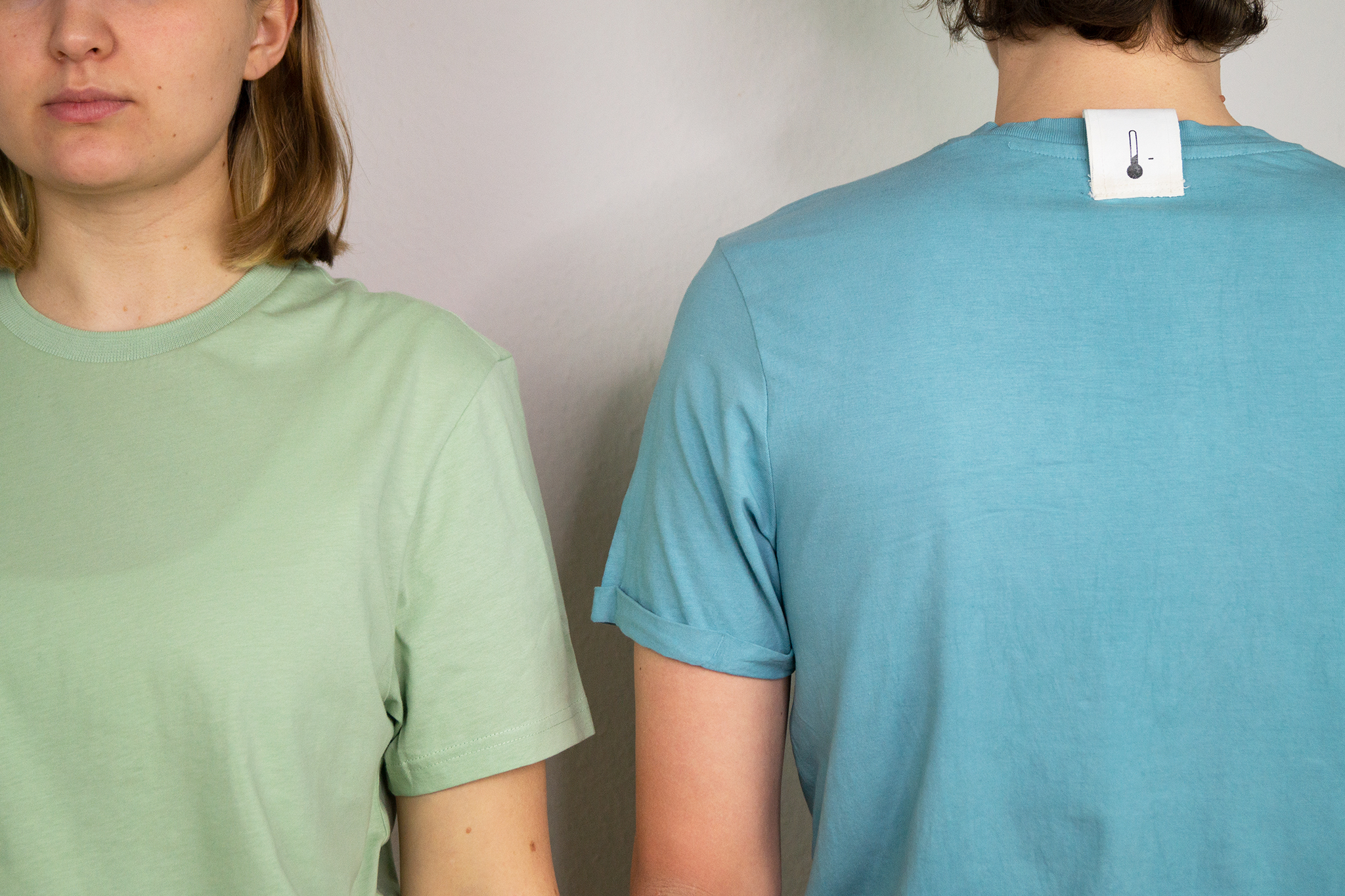
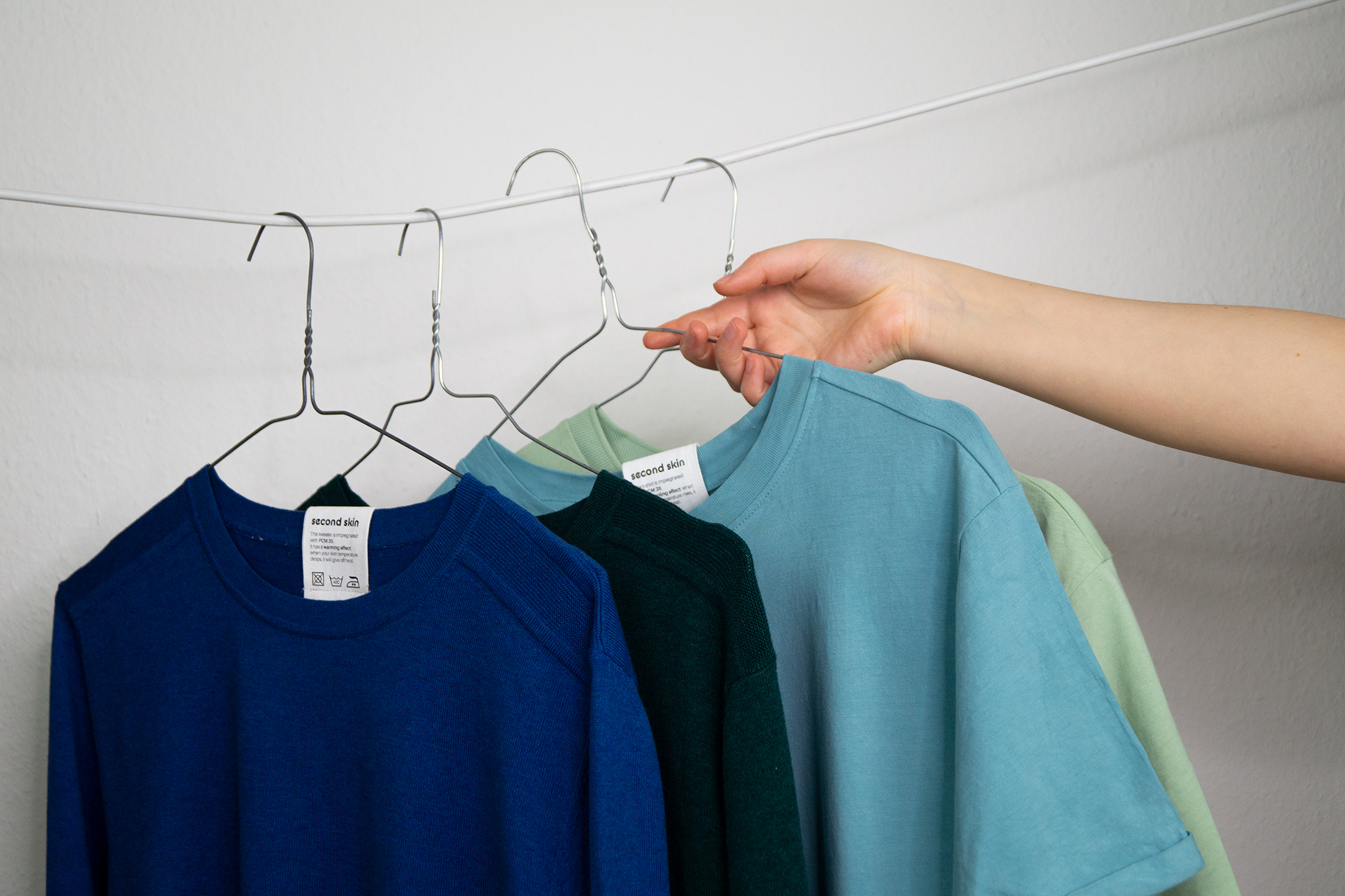
Process:
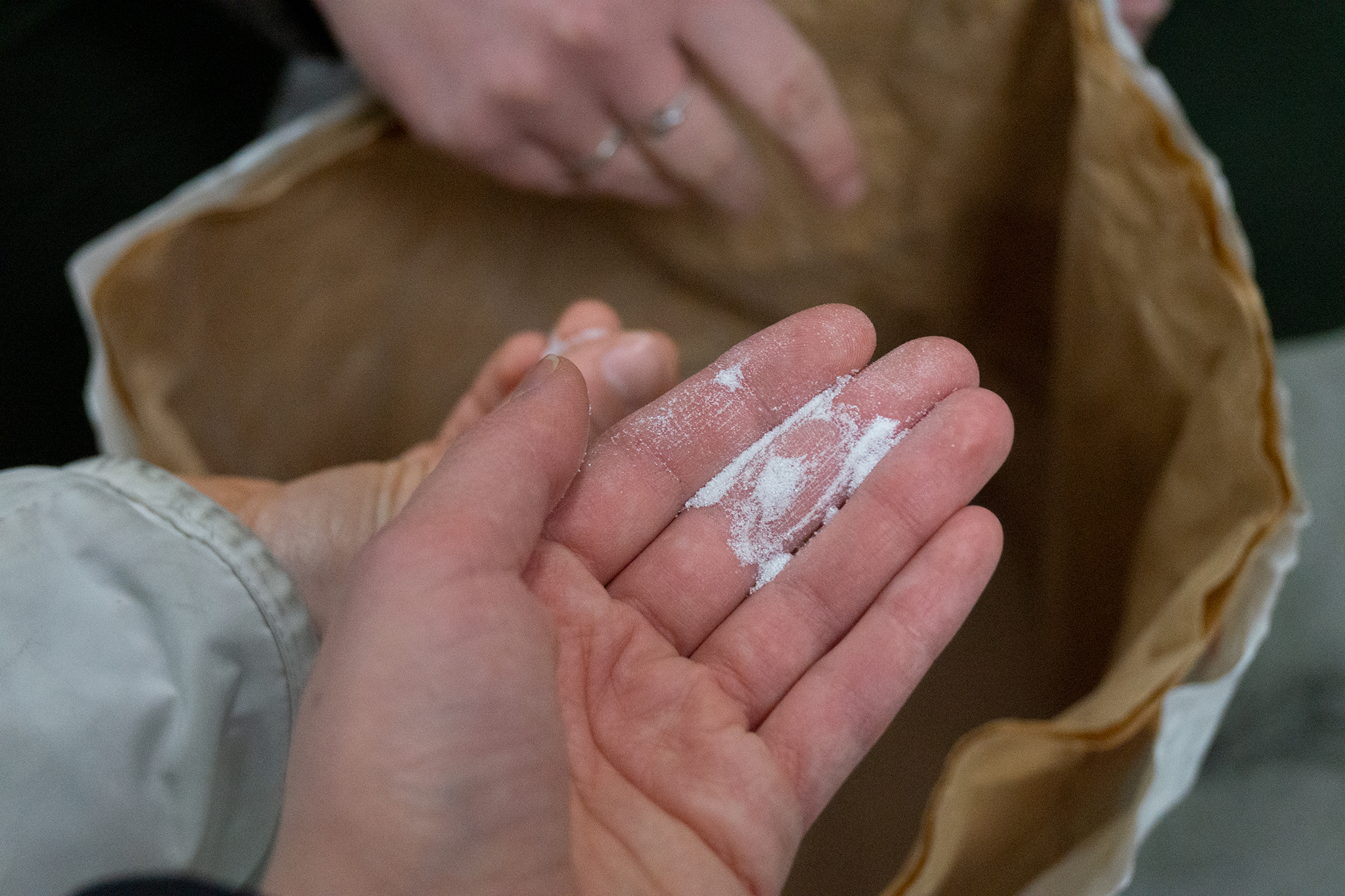
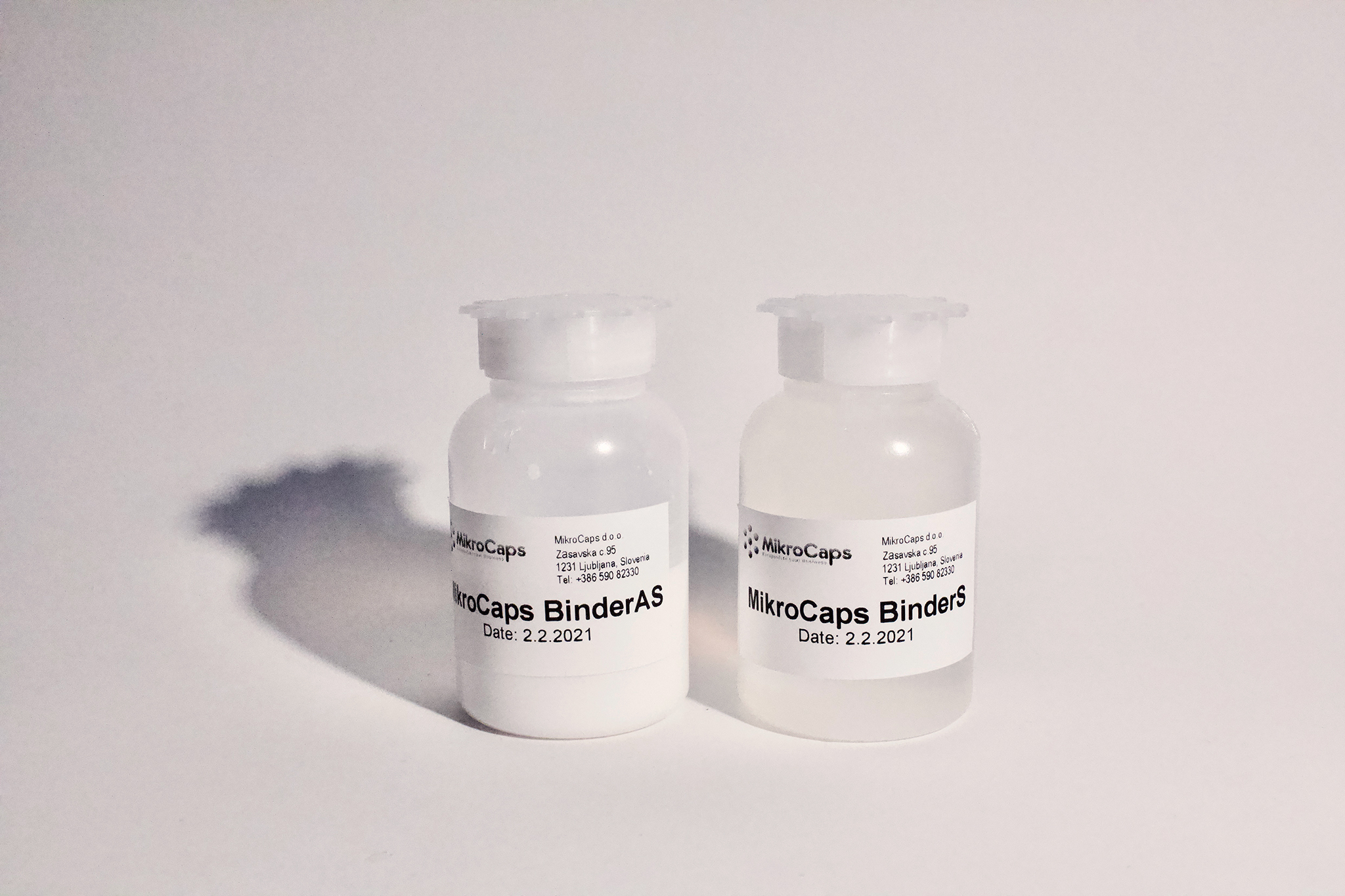
PCM 35ºC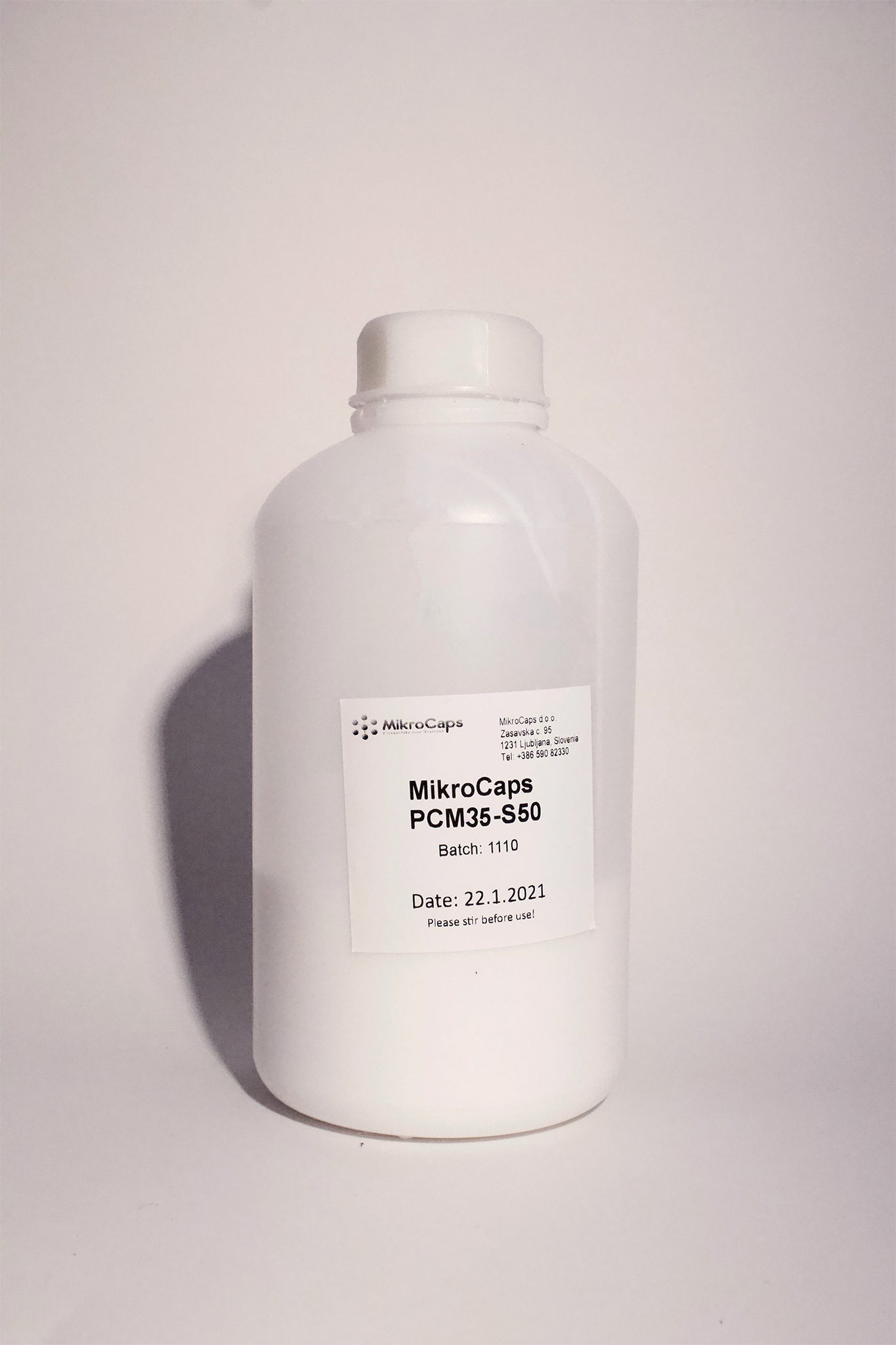
PCM 28ºC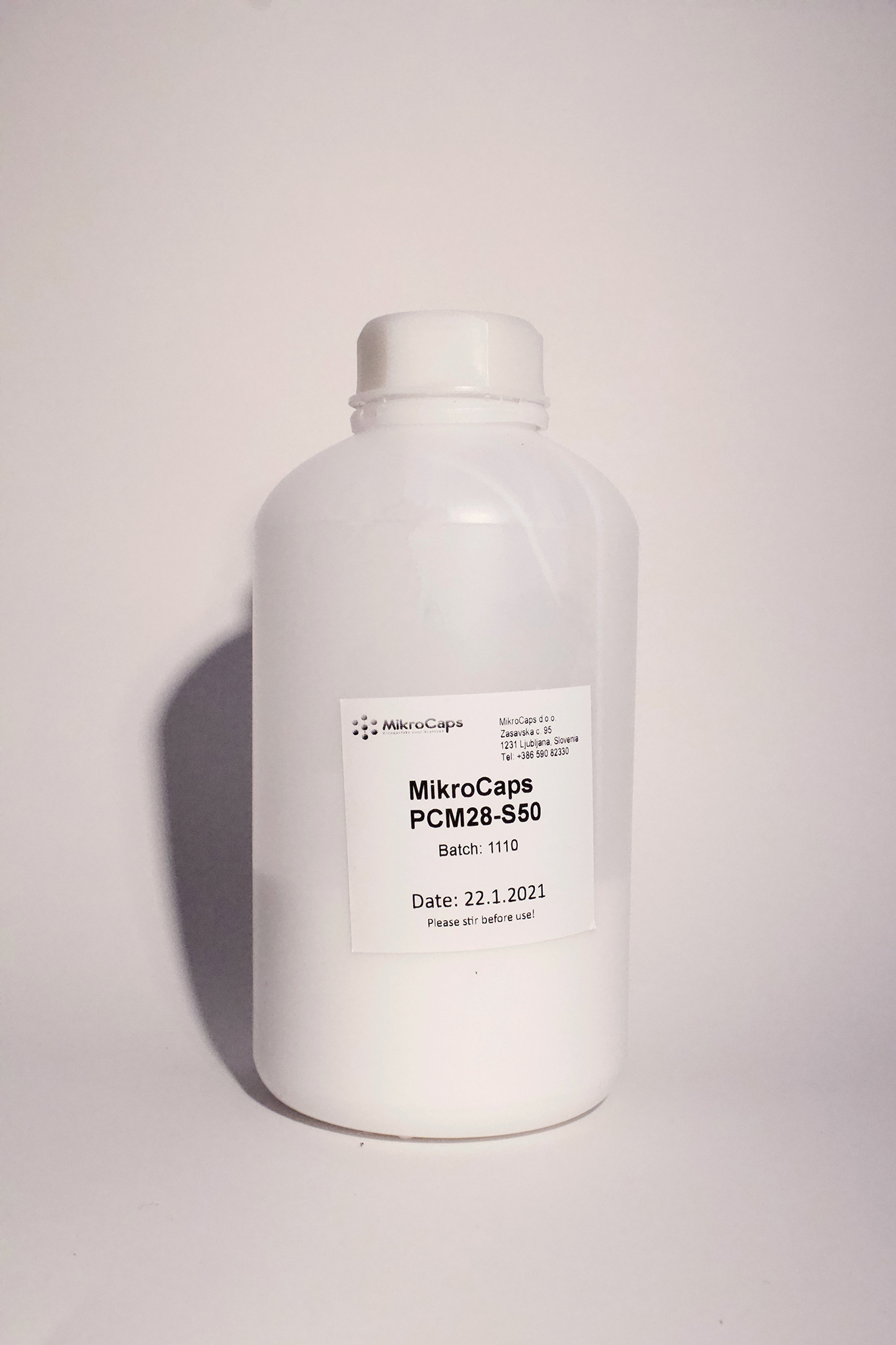
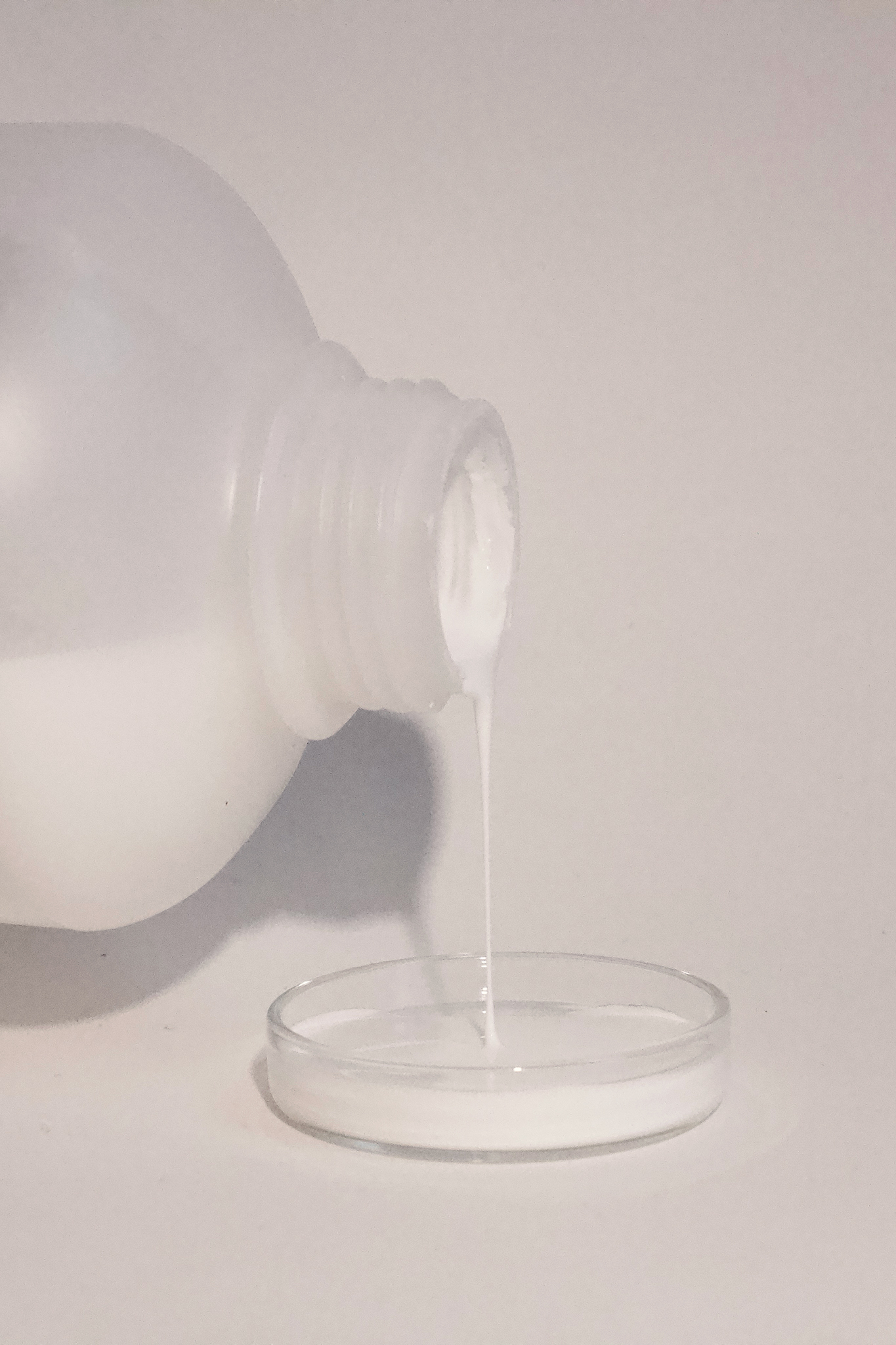

I want to use the algaes to capture CO2, working against the air pollution in the city. The Spirulina Microalgae is one of the best materials for that. So I created a “Floating Algae Island” to have a container which makes it possible to grow the algaes on water. In one year two of my designed containers would capture as much CO2as a fully grown tree. The air in the city can be cleaned in a new way.
FACT / ACT / IMPACT:
I want to use the algae to capture CO2, working against the air pollution in the city. We are trying to reduce our emissions but still, the air pollution is constantly rising. The earth is getting warmer and warmer and we are far to slow working against this problem. Over the last years the number of trees who dried out increased exponentially. Because of the extreme hot and dry summers they are not able to survive alone anymore, especially in urban areas.
Over my research I tried to find new ways of CO2 binding materials or plants and realised that the Spirulina Cyanobacterias/ Microalgaes are one of the best methods to clean the air. The algaes can grow only under special conditions. To grow they need the right temperature, fresh air and a fertiliser, which you have to add to the startculture of the Spirulina algaes. If they float on the river, it will help to hold the temperature during summer and guarantee a constant movement to mix them up while growing.
A second reason to install them on the river is to disturb no other existing and functioning infrastructure in the city. In the case of Berlin I chose the “Urbanhaven” in Kreuzberg. There is a very big unused water area. That is why I created a “Floating Algae Island” to have a container which makes it possible to grow the algaes on water.
After 25 days they are fully grown you can harvest them with a fine sieve, which is already integrated in my design. The containers are planned for summer because the algaes also need enough sunlight and warmth. During the winter they are intended just to look at or as an sitting area. Additionally I thought to use a after glow acrylic paint to colour the steel parts, that they glow by night. It could be a meeting point for people, sitting next to them on the riverside or a mark for ships. Also you could sit, stand or lie on them, when you need a break of your boat tour or when you harvest the algaes you could rest a moment.
Another positive aspect is that they are food or a fertiliser for other plants. You can easily dry them for storage or eat them directly. They are an interesting and a very healthy ingredient for many different dishes. In Berlin there are already many people who are trying to grow their own food, for example „Prinzessinengärten“. They would also have a new space to grow algaes and harvest them or share them with other interested people. Humans who get in touch with the containers will realise that we have to think about new ways of air cleaning and foodproduction for our future.
Anna-Maria Argmann, 3.sem WS 2020/21
Project:

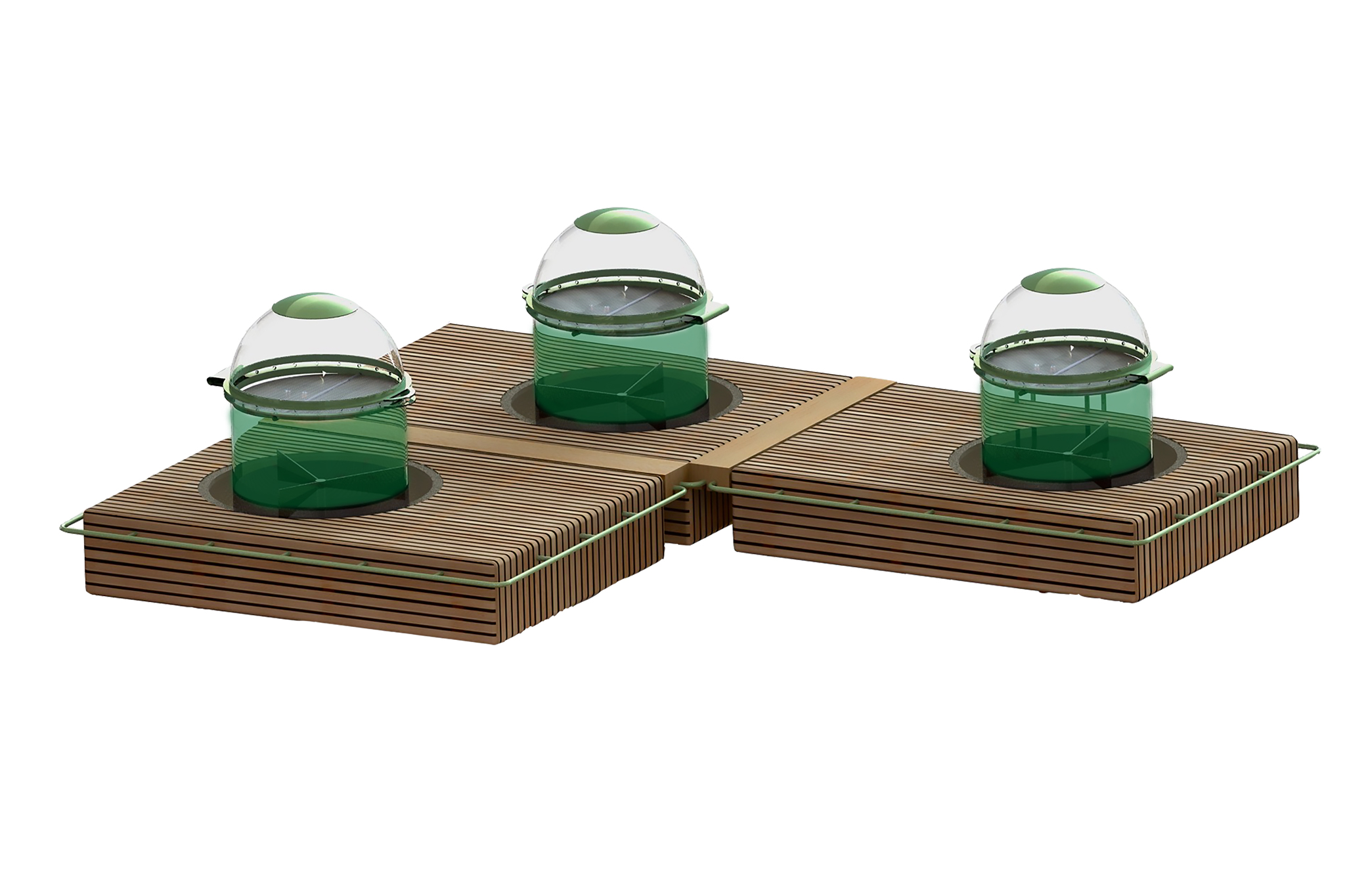
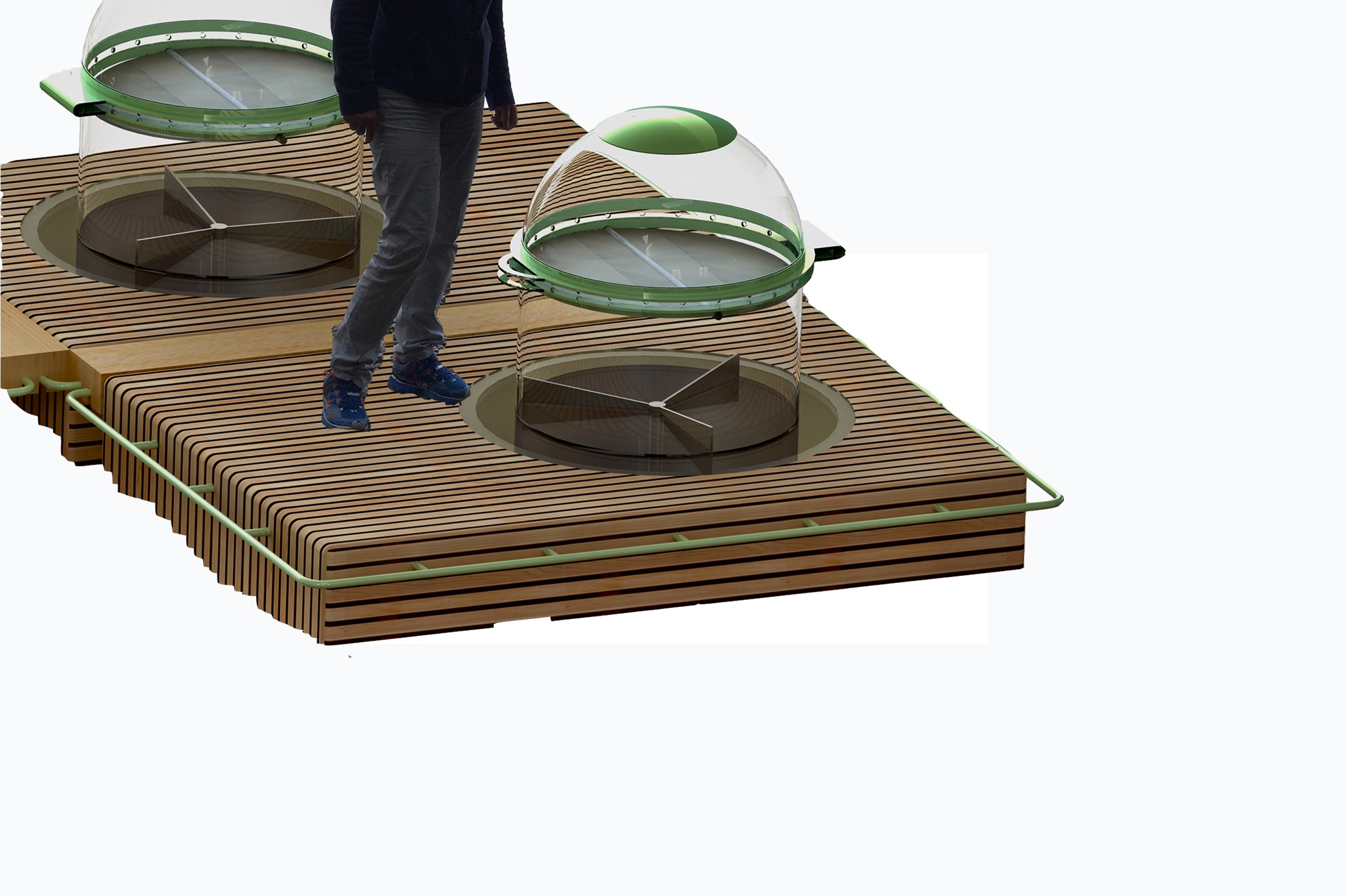
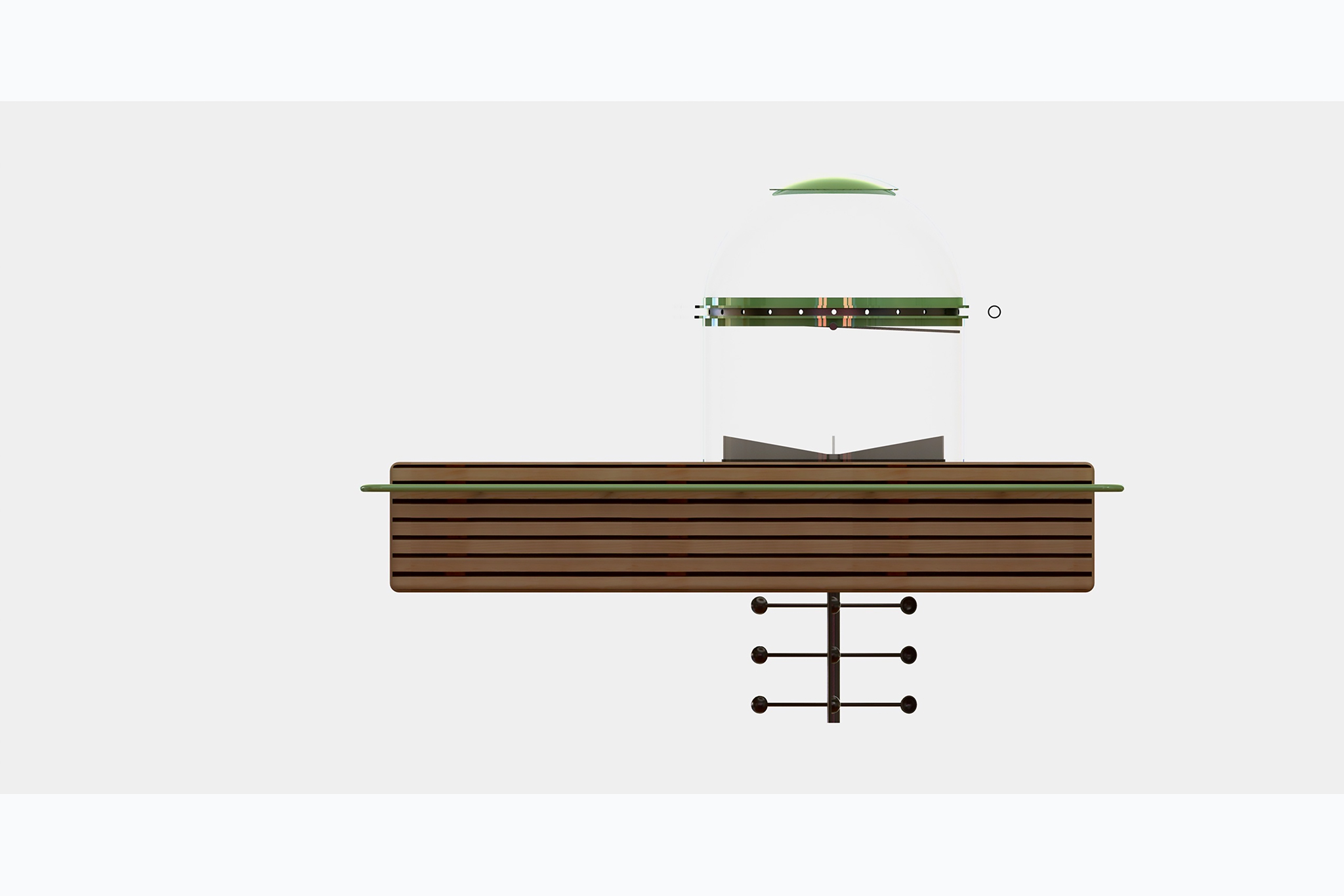
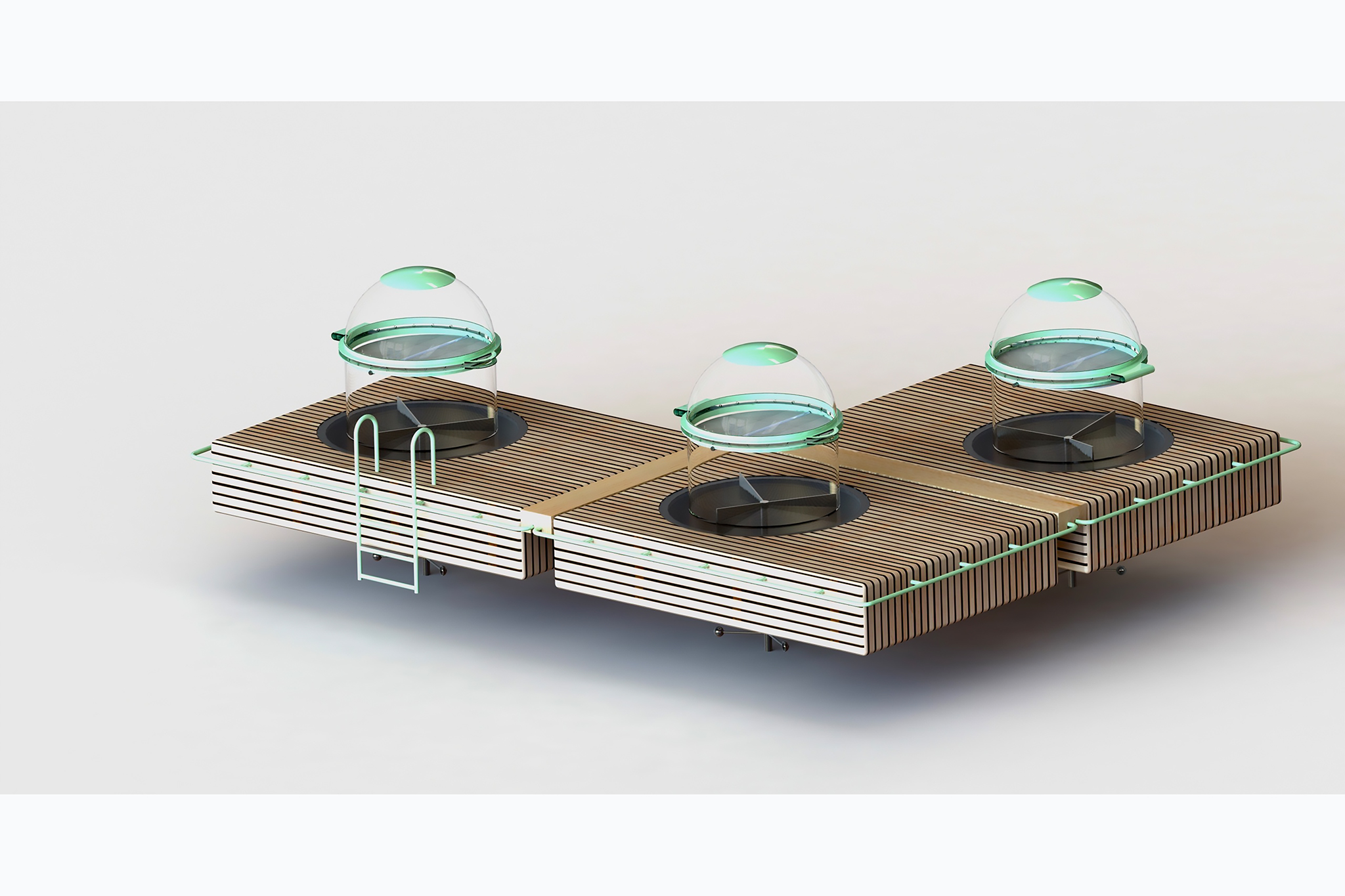
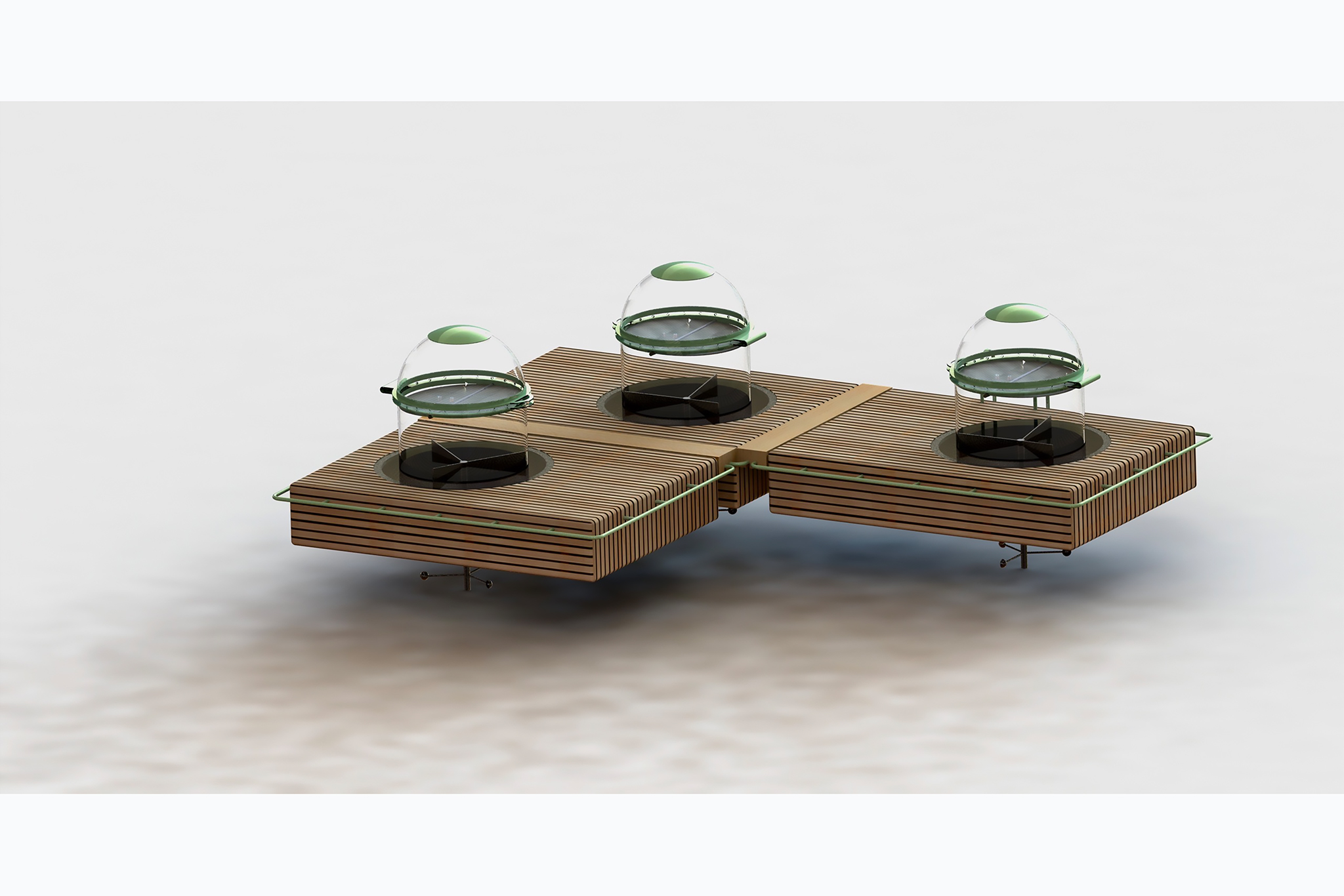
Process:
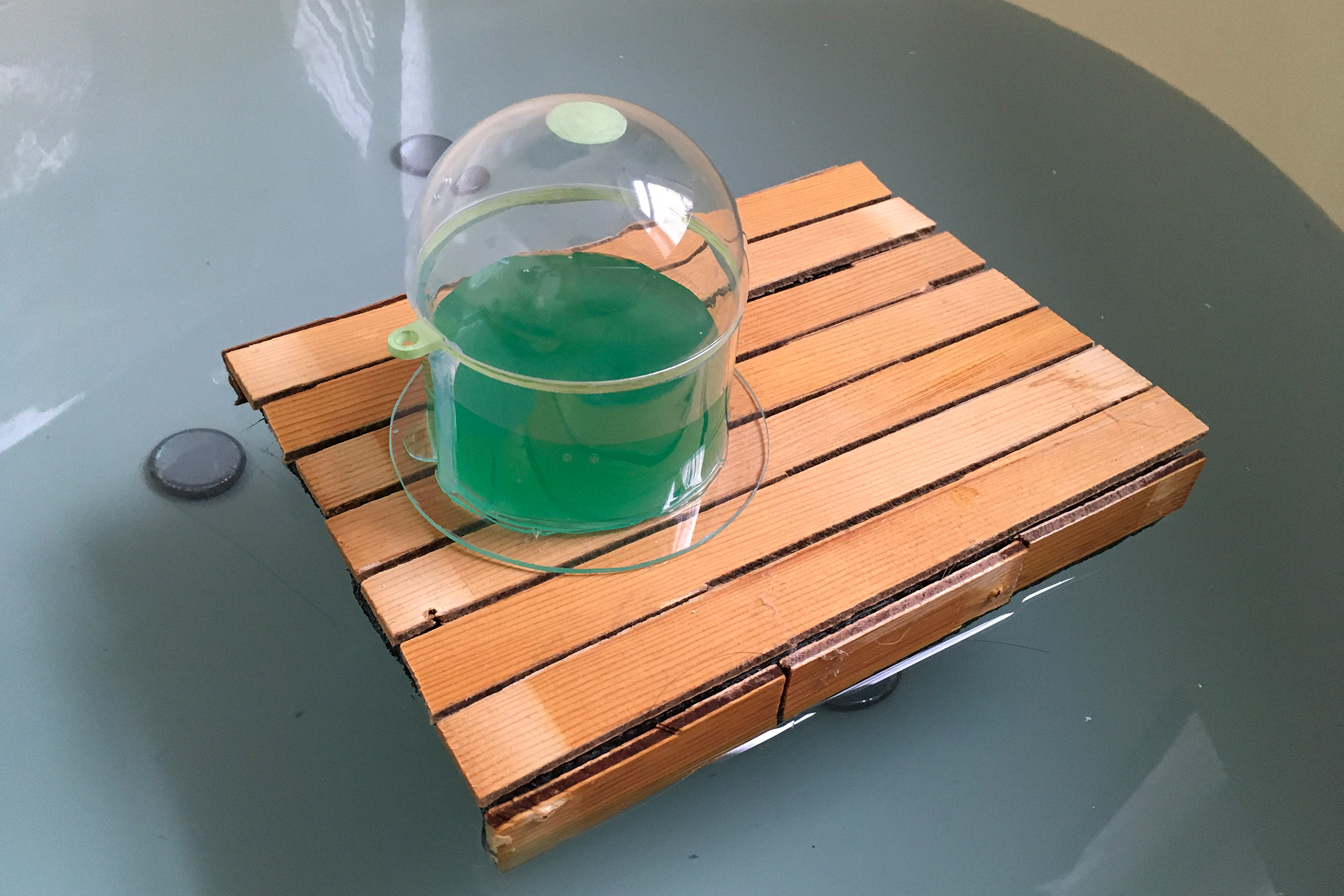
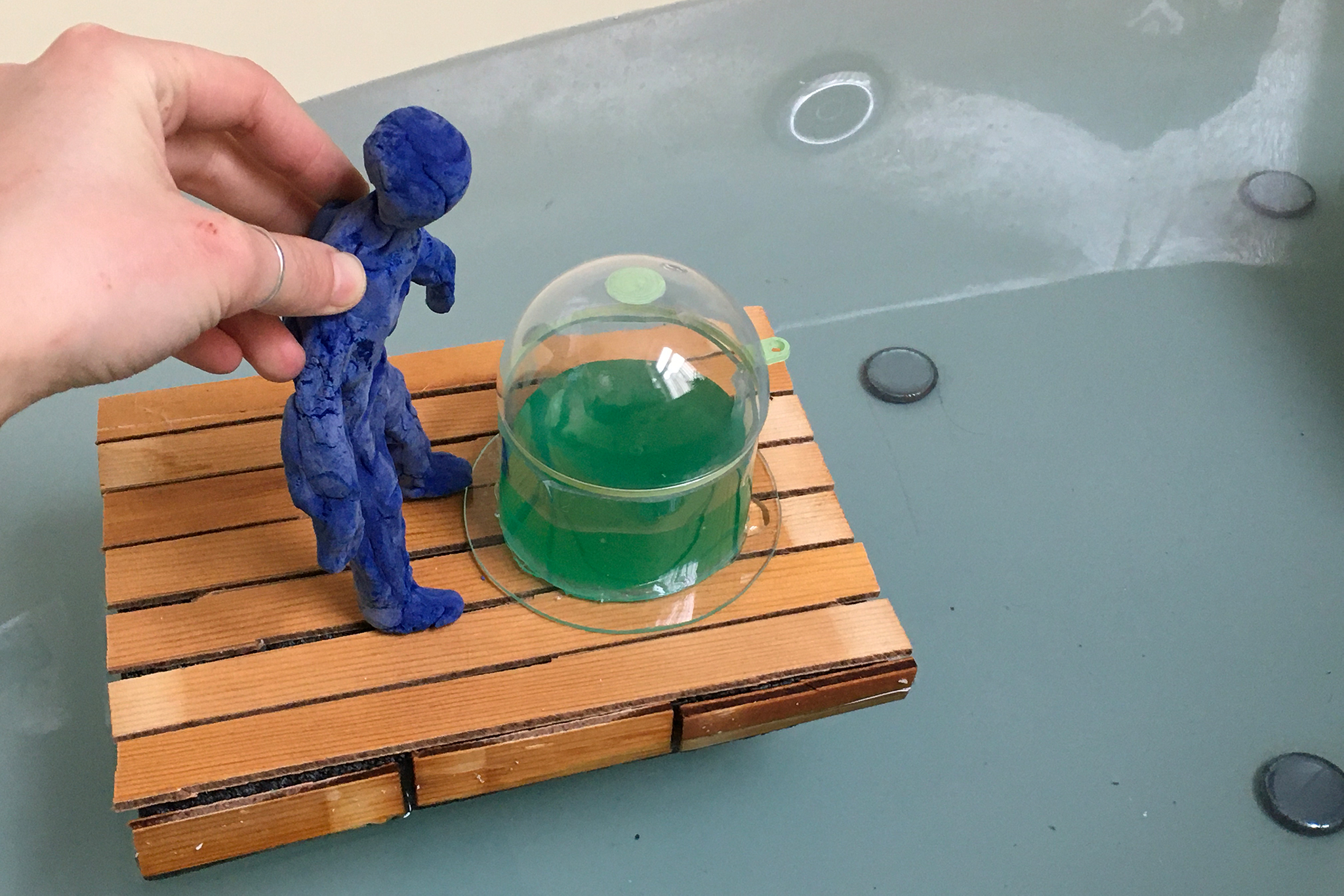
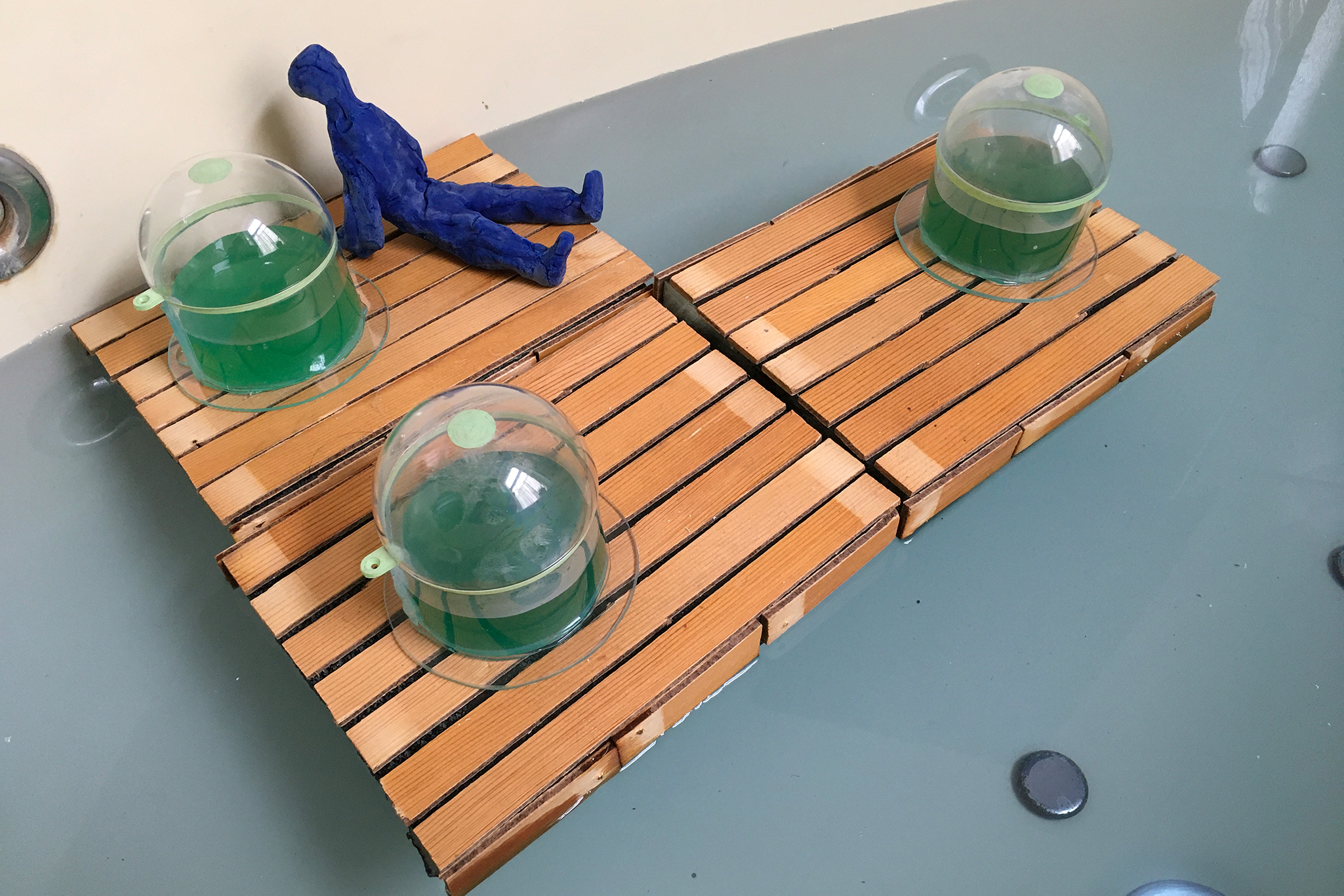

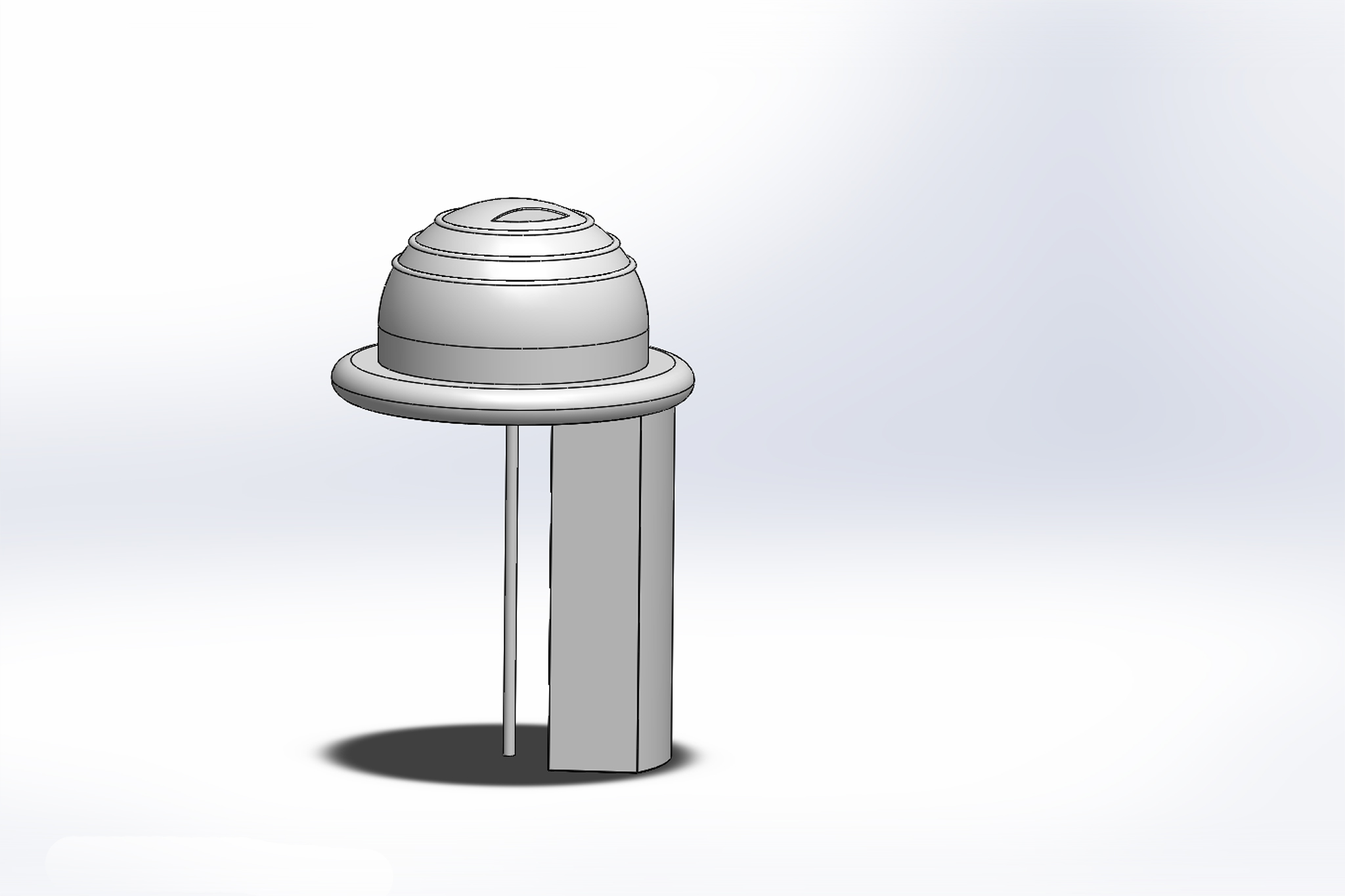
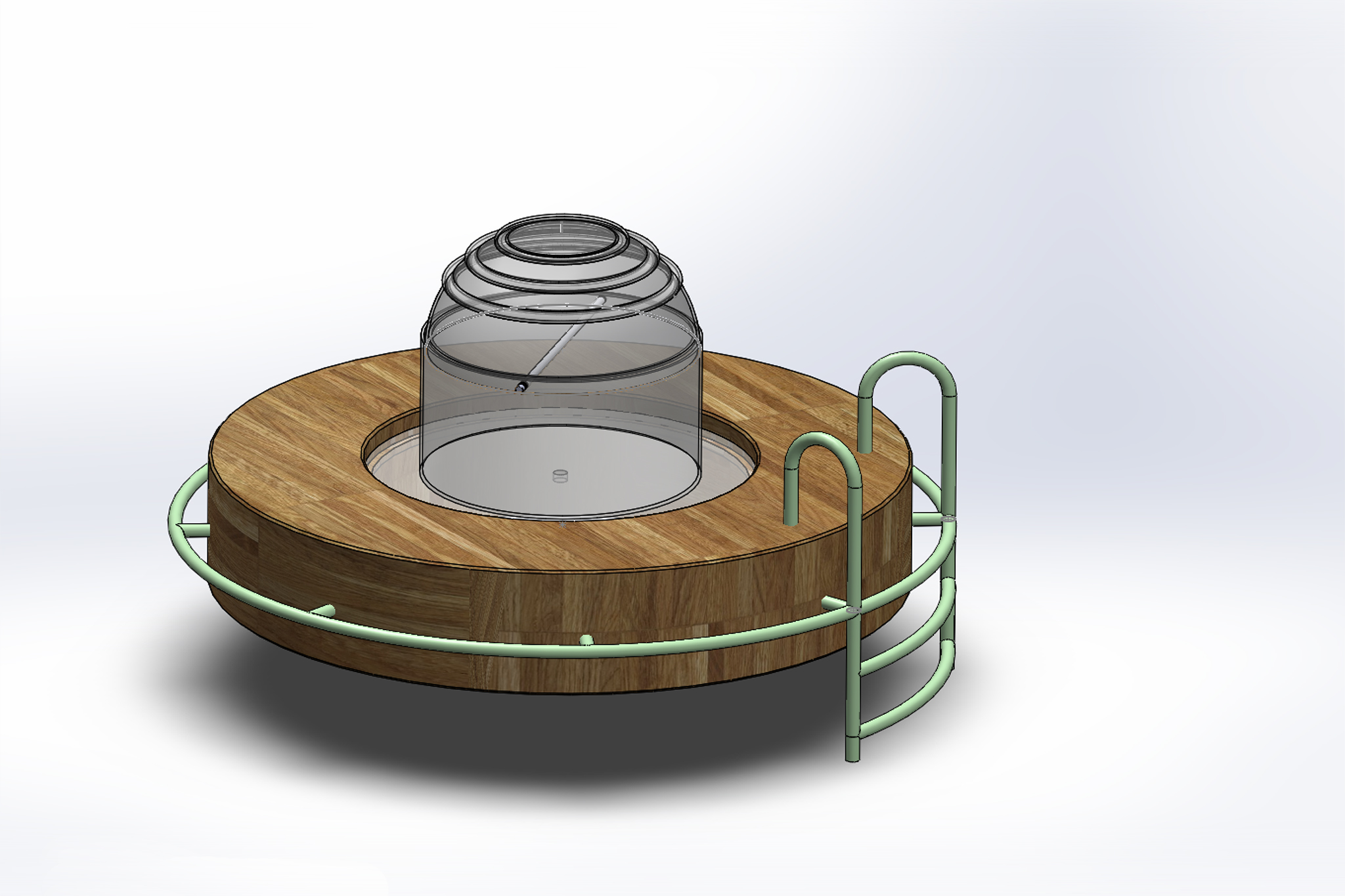
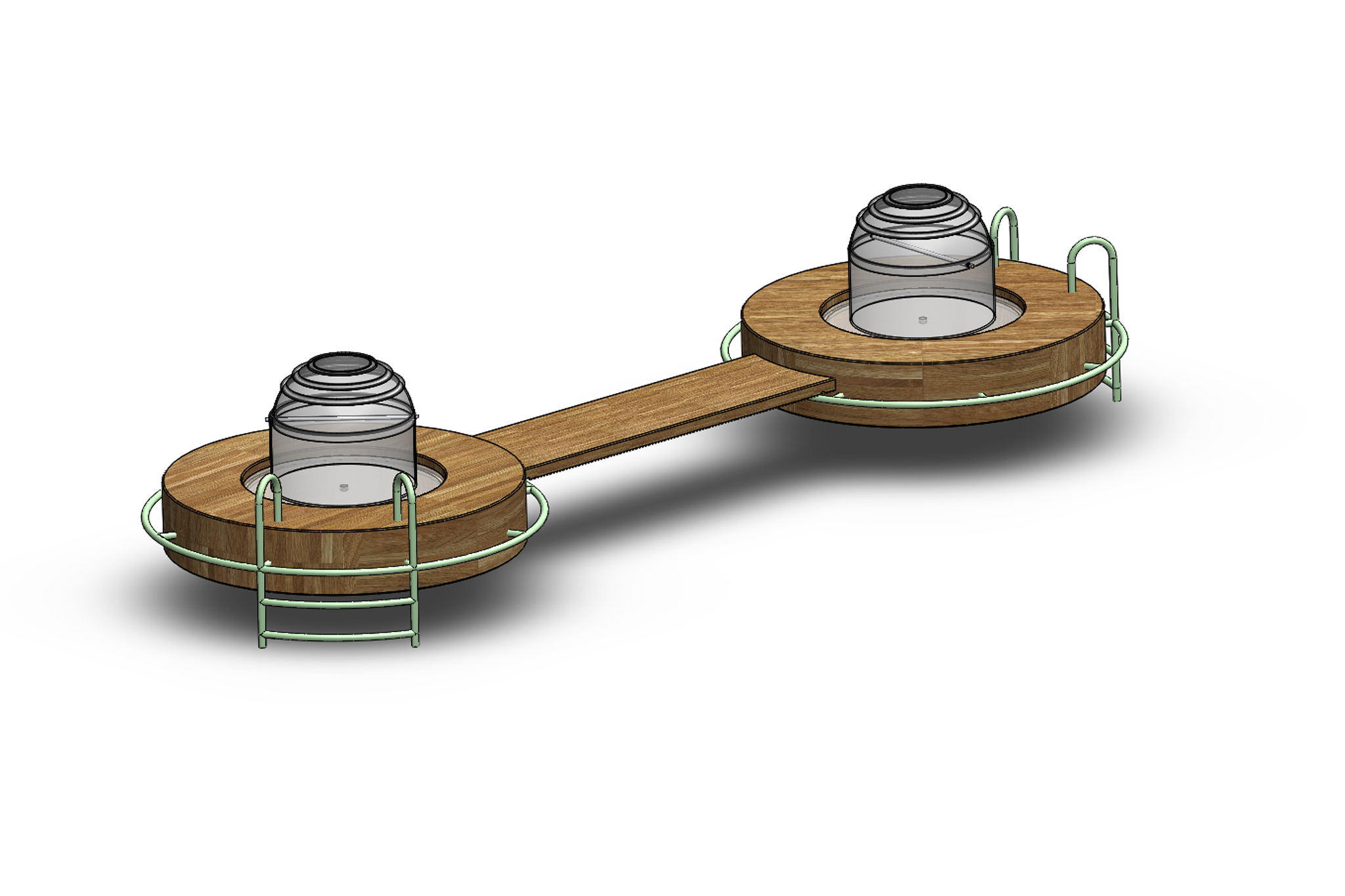
Interim presentation:
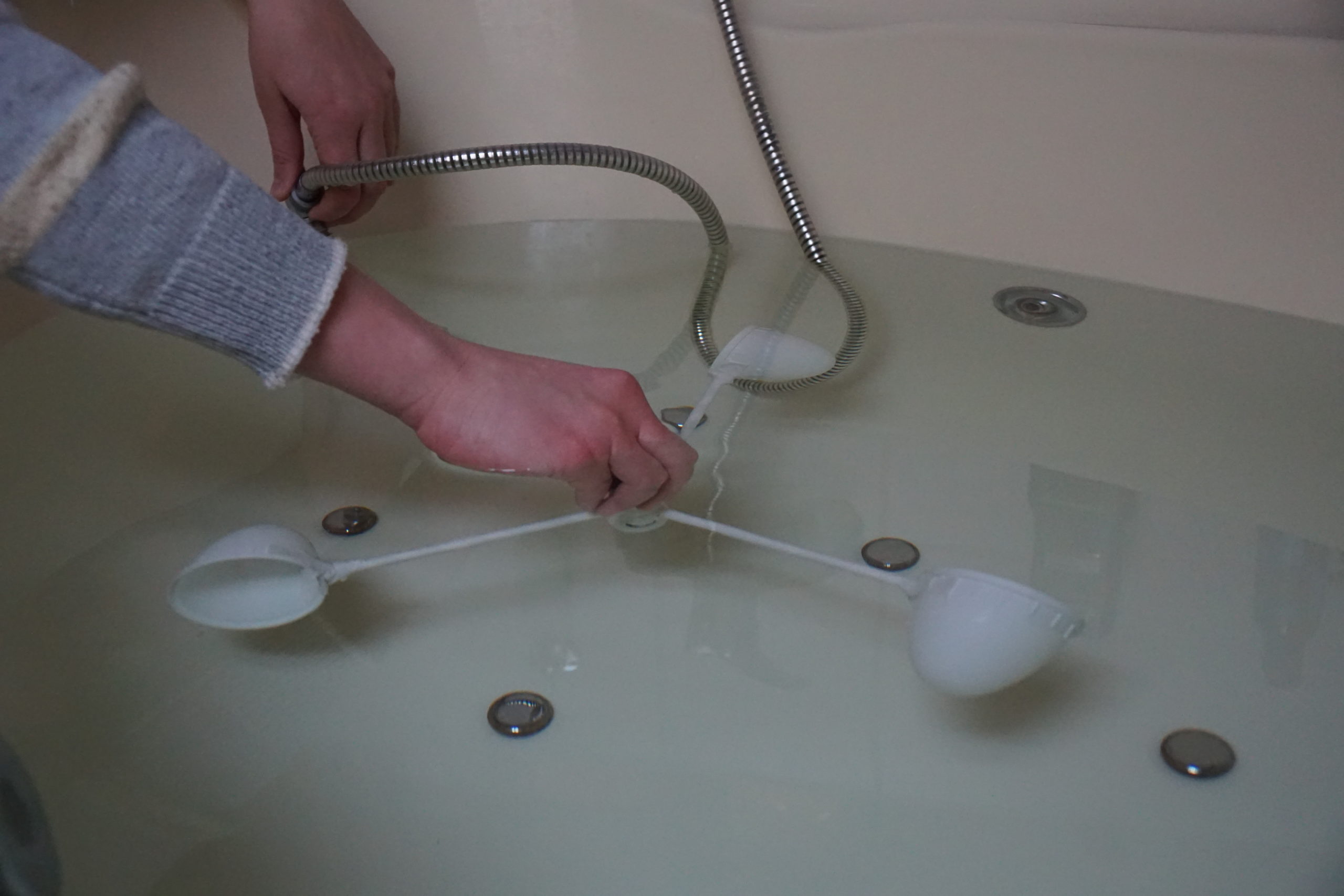
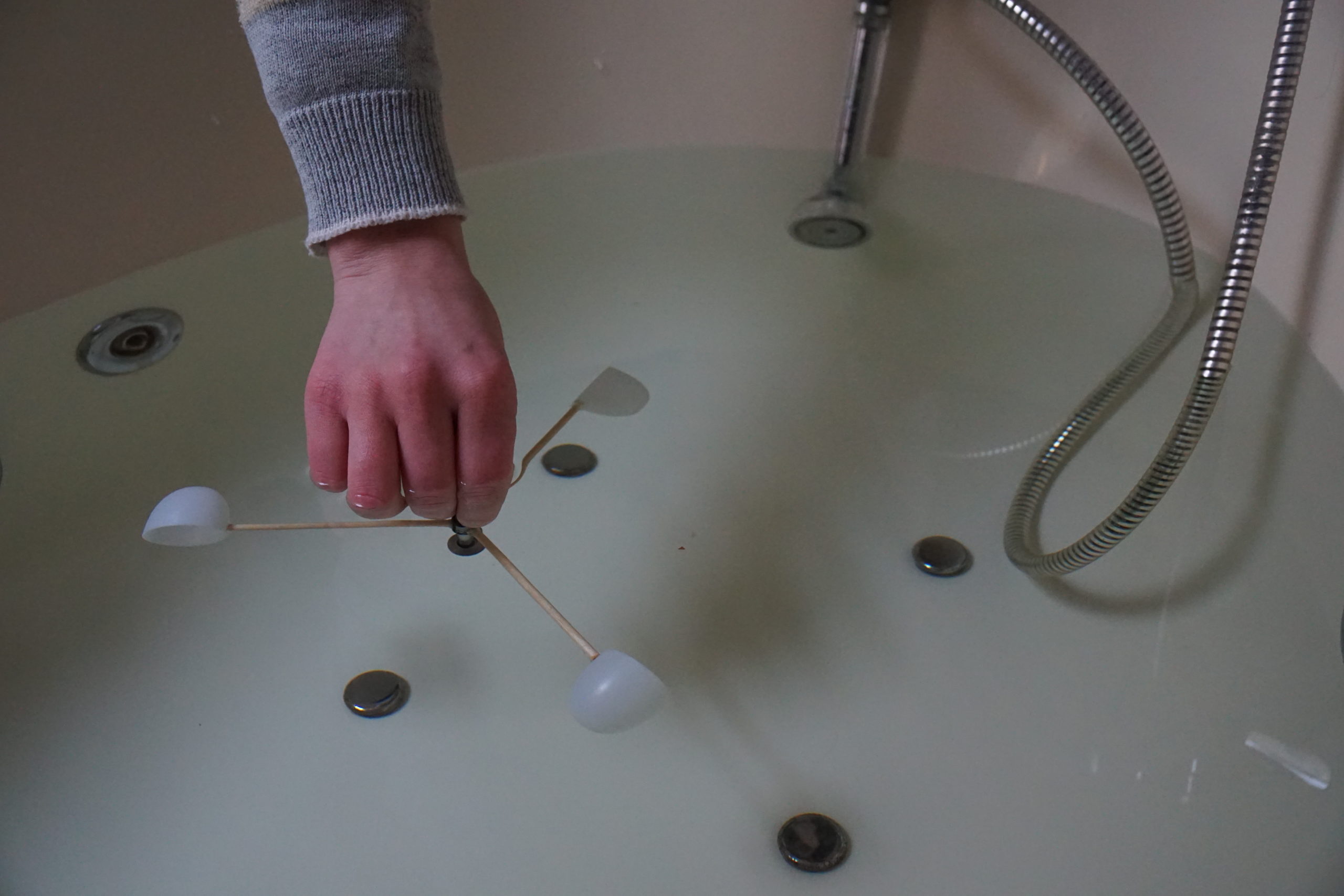

Mycodrain is a decentered cleaning system for polluted streetwater that runs on the biological process of fungi mycelium.
The burlap sacks, filled with substrate and oyster mycelium, are placed into the muddbuckets beneath the drainage, that are cleaned by the BSR.
With low maintanance and costs the mycelium can break down contaminated streetwater so that it can be led back safely into the water bodies of Berlin. The Mycobags could prohibit high polution in lakes and rivers and ensure the wellbeeing of waterbound species. While working underground, it is part of the progress of integrating nature and non-humans into the landscape of our city and educating about their potential.
FACT:
• In Berlin the pollution of rivers and other waterbodies is mainly caused by the shortcomings of the Berlin sewer systems. In the city center, where underground space is very limited, rainwater and wastewater from households run through one sewer. During heavy rainfall rain spillway basins, that normally lead to the treatment plants, spill over and waste- and rainwater runs directly into the rivers. This happens 20 to 30 times a year.
• In the outskirts of the city, wastewater and rainwater flow in separated sewers. The rainwater is often led directly into the rivers. But the water carries dust, air pollutants, particles from car tires, oil, leaves, animal excrements, and metals. Especially in smaller, standing waters this leads to fish dying after heavier rainfall. Rain filter beds are used to filter water from bigger streets but their capabilities are limited and there are not enough areas available.
• 90% of the rainwater that needs treatment comes from traffic areas.Still, in the drainage rainwater with very different amounts of pollution is drained together, this leads to mixed rainwater in large amounts with middling pollution. Treating this high amount of rainwater is expensive and not very effective.
• Therefore a decentered cleaning system, that could filter the streetwater on the spot, before it flowed into the sewer system, made the most sense.
ACT:
During my research, I came across the astonishing properties of mushroom mycelium; Fungi have been proven to be a very cheap, effective and environmentally sound way for helping to remove a wide array of toxins from damaged environments or wastewater. They can break down hydrocarbons in oil up to 98 percent and digests and neutralize bacteria like E.coli.
Oyster mushrooms have been used in oil spills and around farms to break down oil, bacteria and other pollutants. This method is called Mycofiltration. In my experiments I was able to filter streetwater back to normal rainwater quality just by running it through mycelium inoculated substrate.
To implement my decentered cleaning system I decided to hack into an existing one: the mud bucket system. Mud buckets are installed beneath the drain and filter bigger parts of dirt out of the water. They are cleaned at least once a year by the BSR. The Mycobag, I propose, is made out of hessian, which is a natural fiber, eco-friendly and biodegradable. The mycelium needs a 40 day period to grow inside the bags, then they can be transported and easily installed. Mycelium can withstand high levels of water and is able to overwinter in the cold. The bags would need to be exchanged by the BSR twice a year.
IMPACT:
With low maintenance and costs the Mycobags could break down contaminated street water so that it could be led back safely into the water bodies of Berlin. The Mycobags could prohibit high pollution in lakes and rivers and ensure the wellbeing of local species.
While working underground, it could part of the progress of integrating nature and non-humans into the landscape of our city and educating about their potential.
Lilli Kern, 5.sem WS 2020/21
Project:
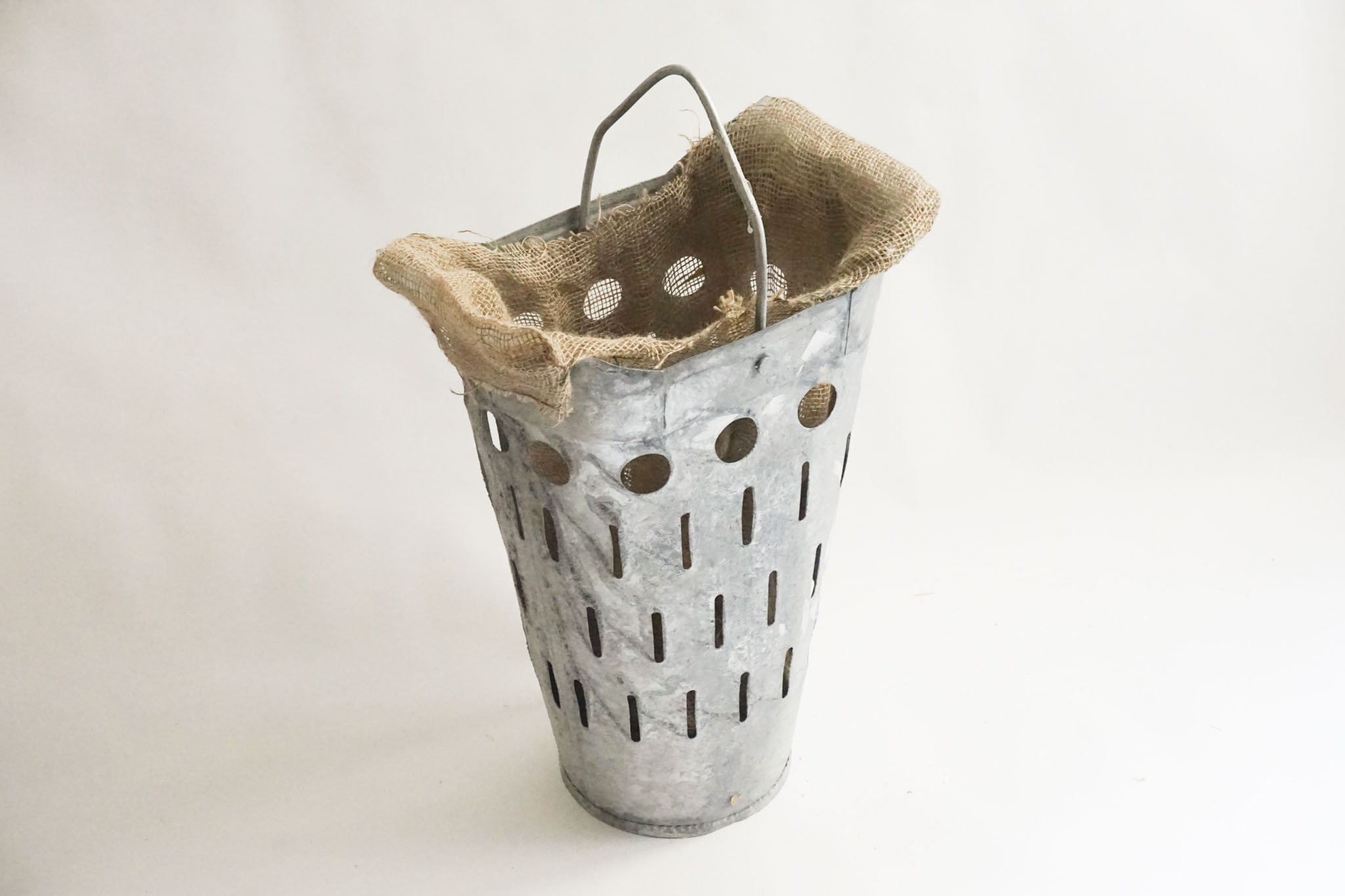 Mycobag installed in mud bucket
Mycobag installed in mud bucket
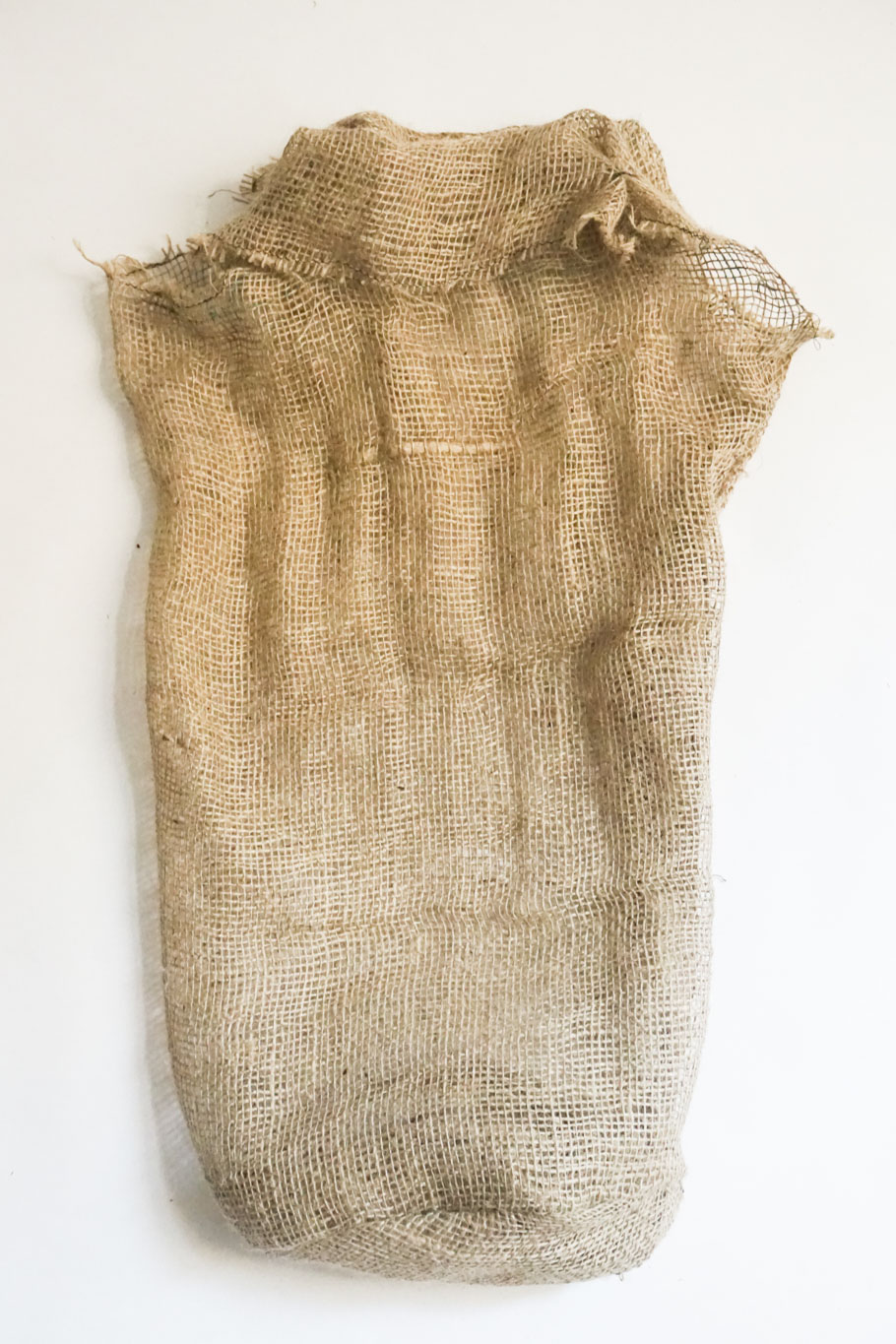 Mycobag
Mycobag
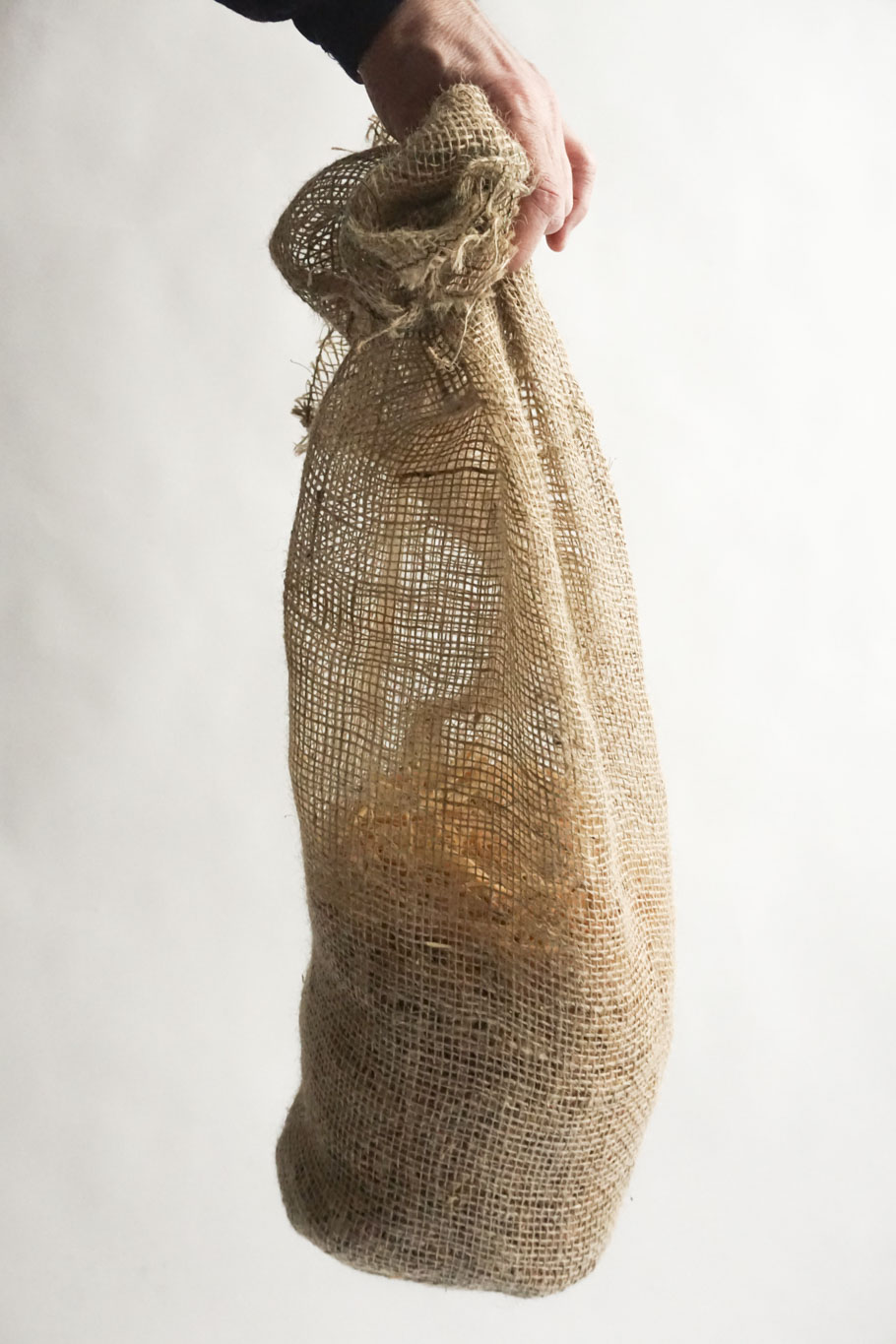 Mycobag out of hessian filled with substrate and mycelium
Mycobag out of hessian filled with substrate and mycelium
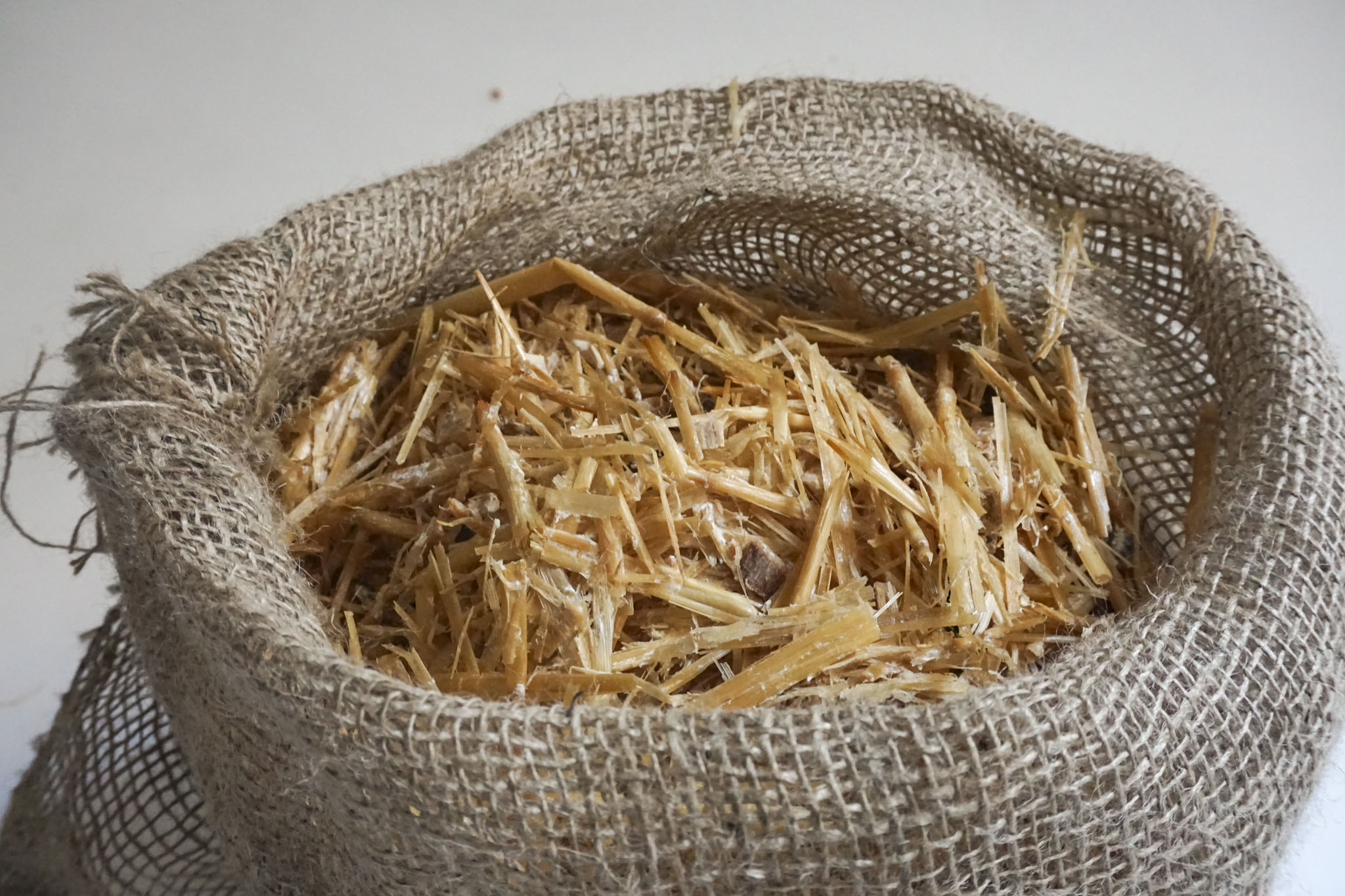
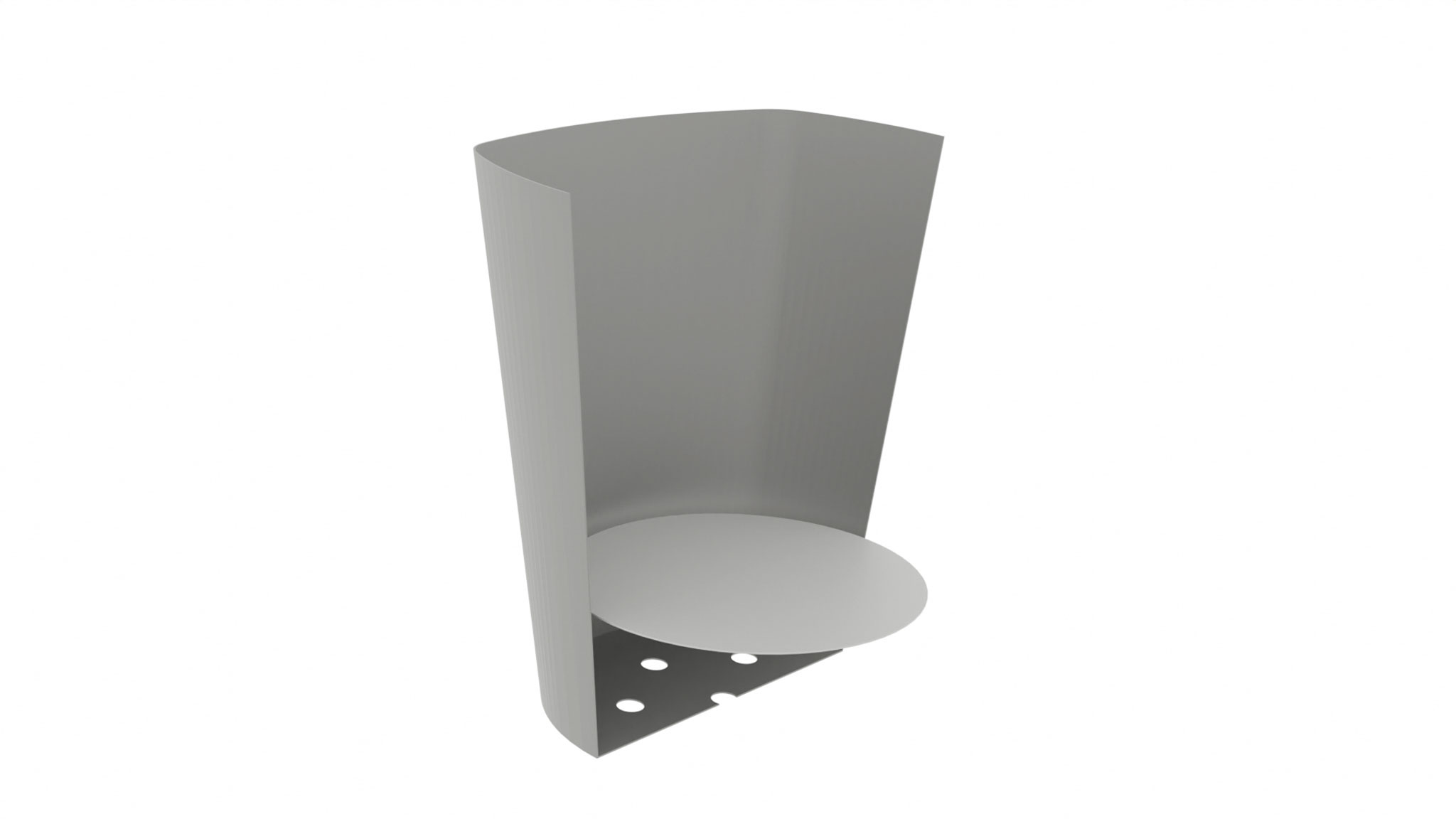 Steel plate covers holes at the bottom of the bucket to maintain a consistent water level for mushroom growth
Steel plate covers holes at the bottom of the bucket to maintain a consistent water level for mushroom growth
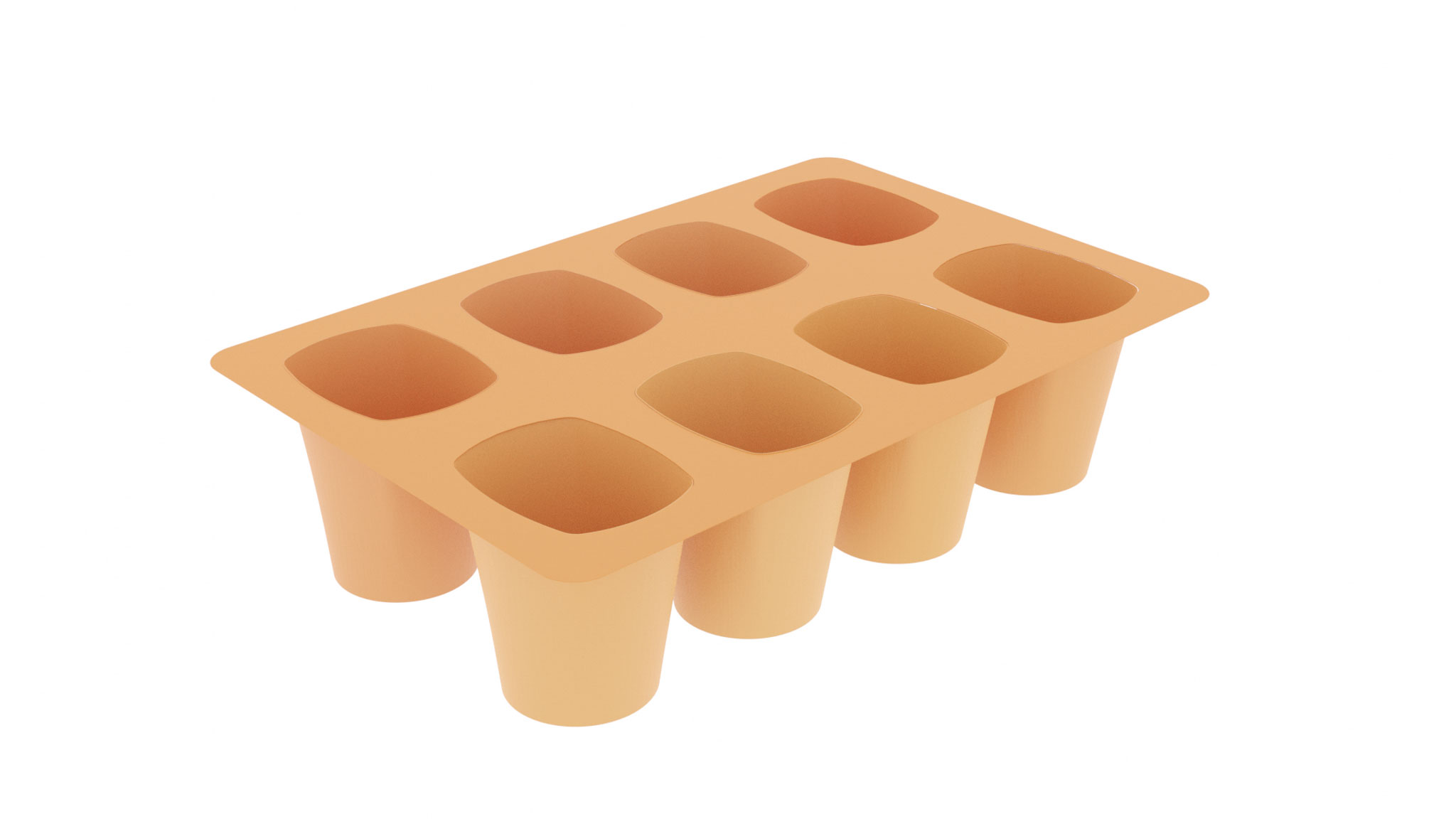 Containers for the mushroom growth period and the transport
Containers for the mushroom growth period and the transport
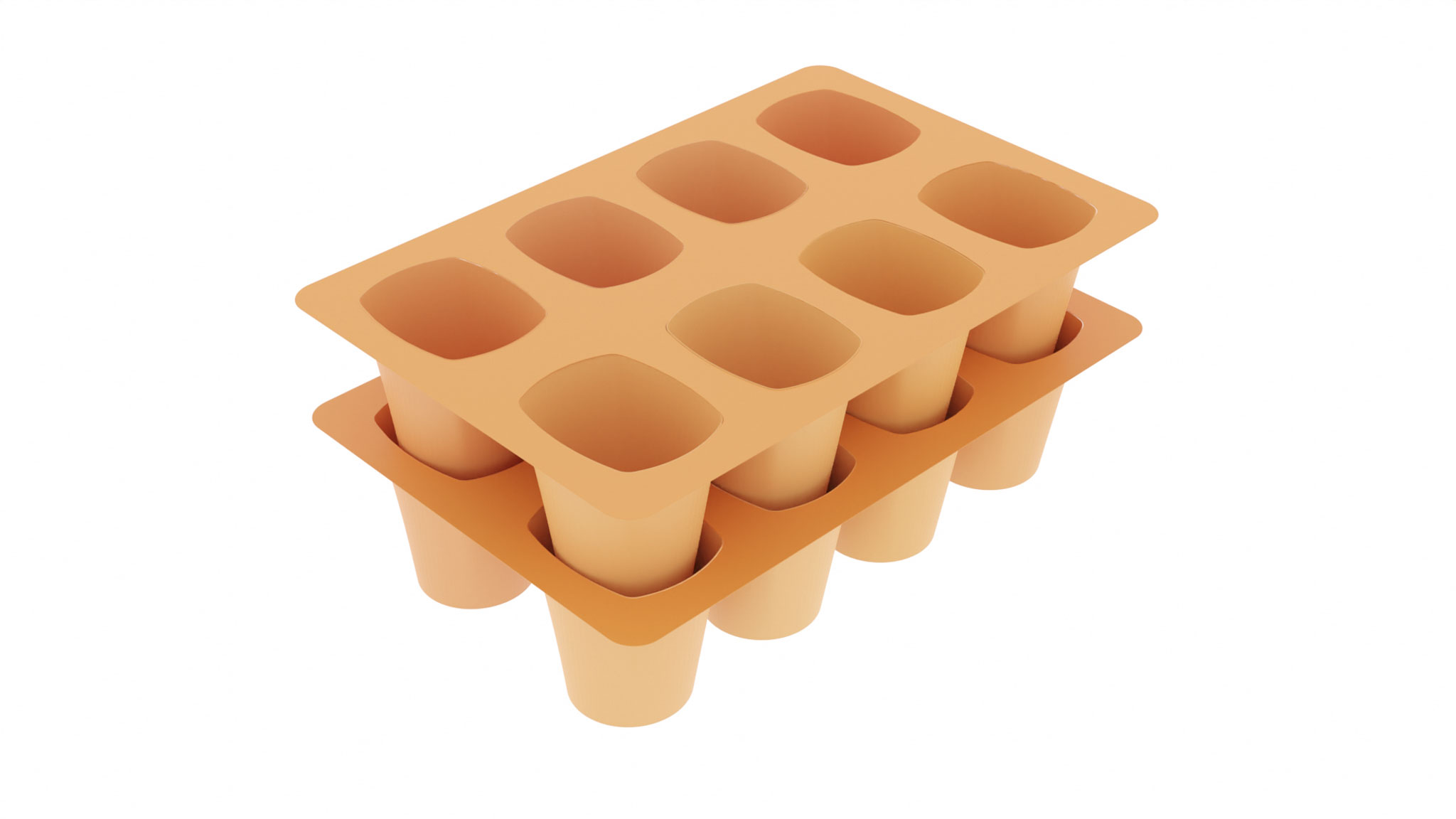 Stacked containers
Stacked containers
Process:
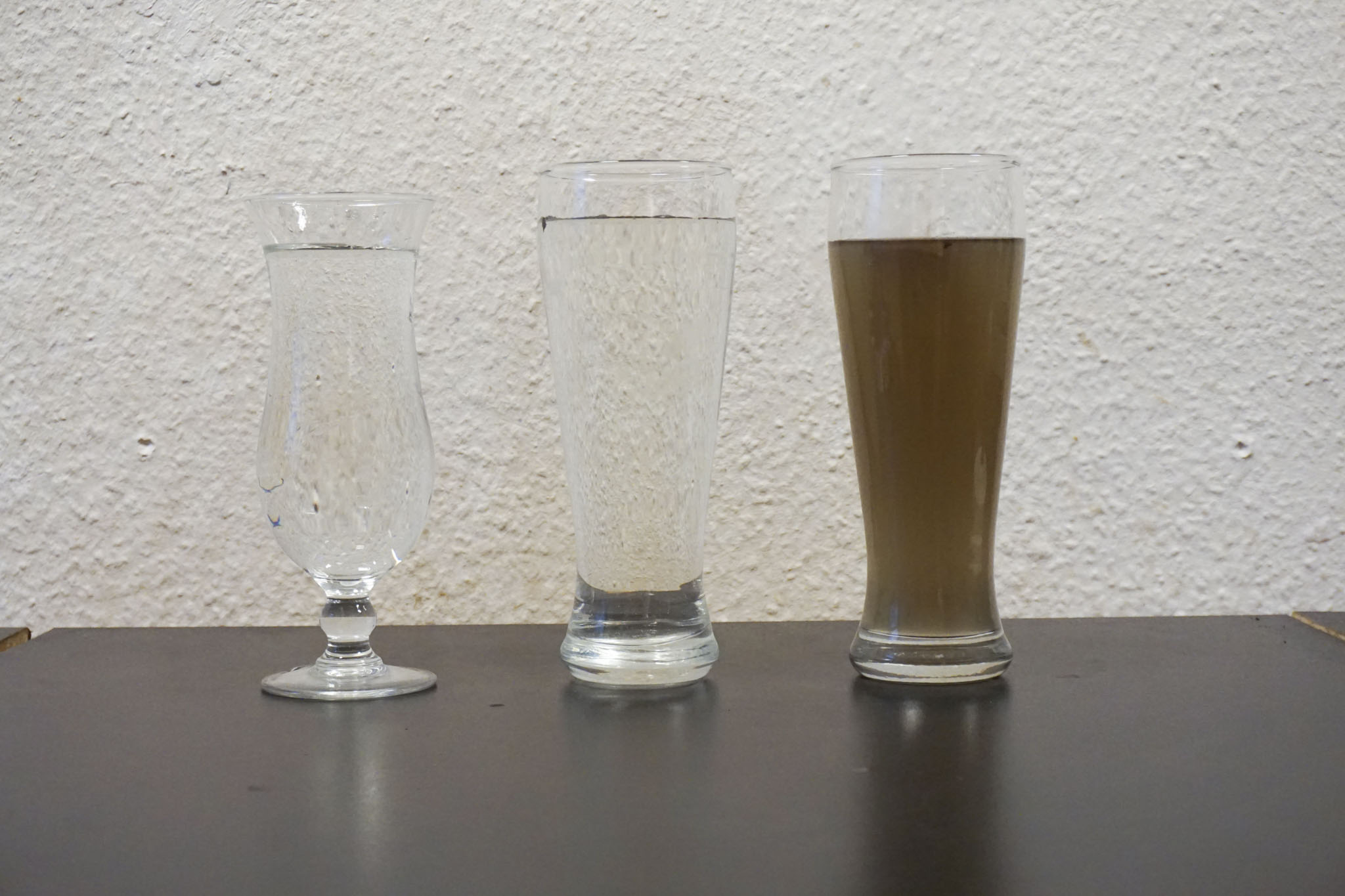 left: tap water, middle: rainwater, right: street water
left: tap water, middle: rainwater, right: street water
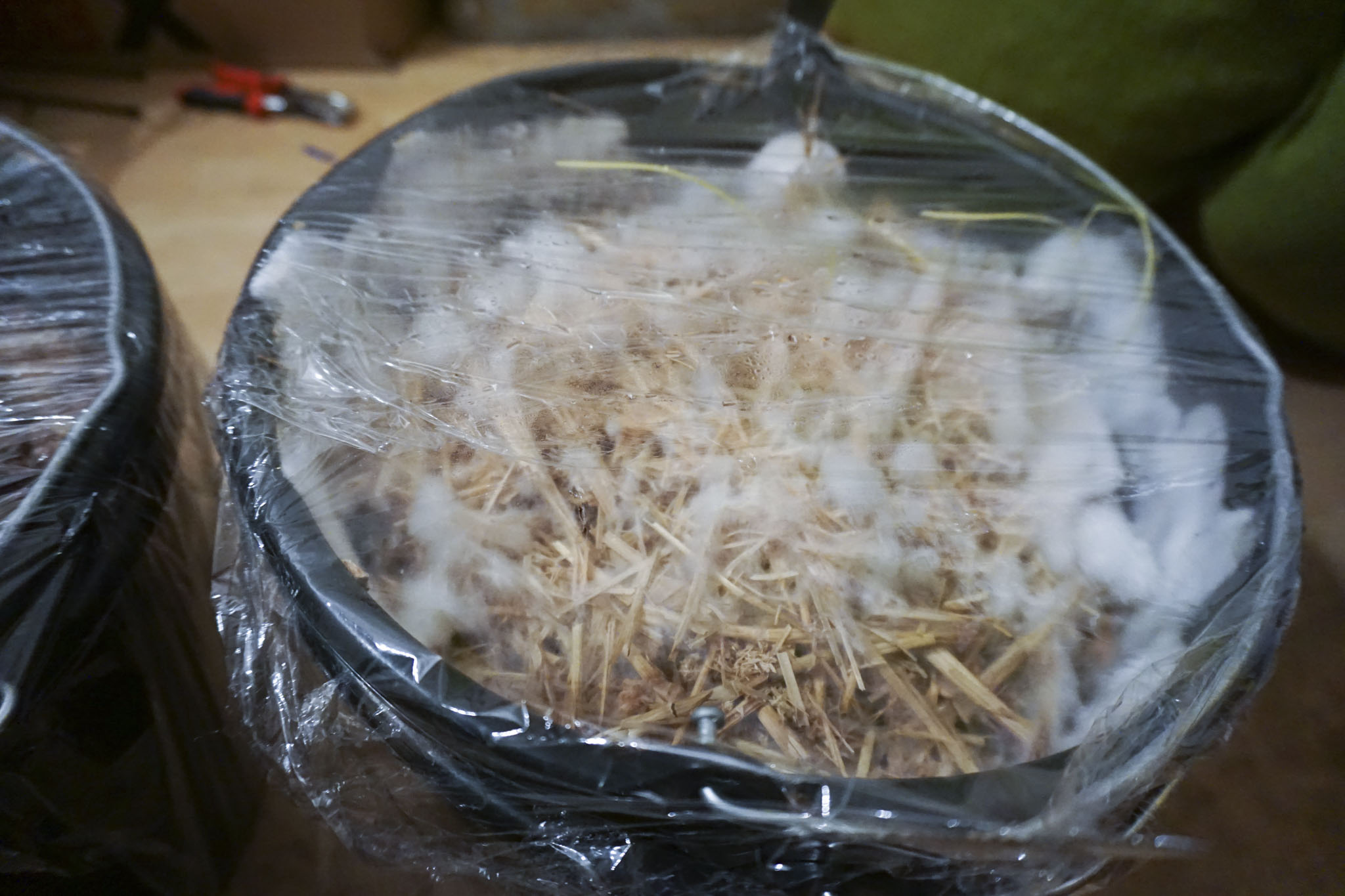 oyster mycelium on straw
oyster mycelium on straw
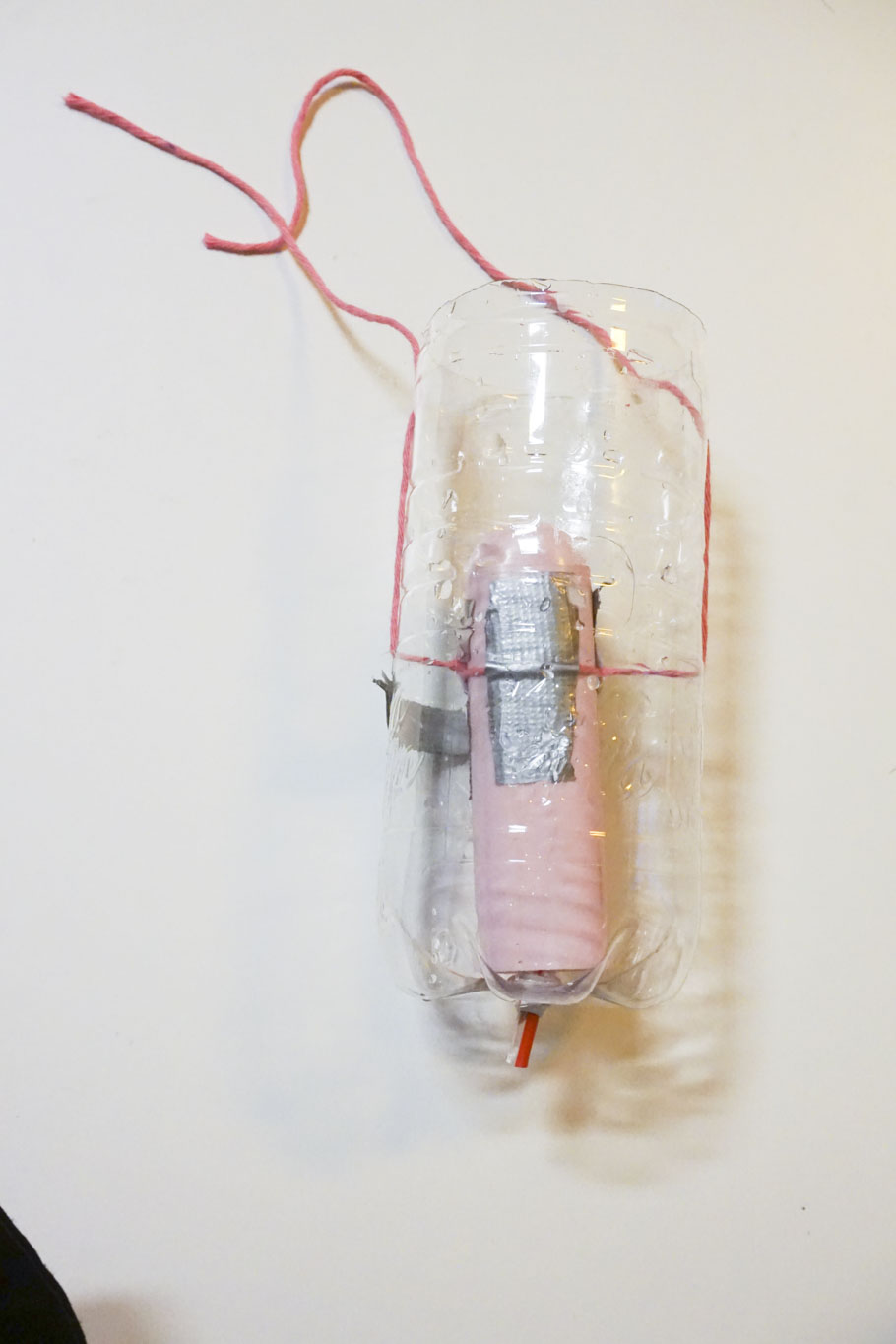 testing water flow systems; greedy cup
testing water flow systems; greedy cup
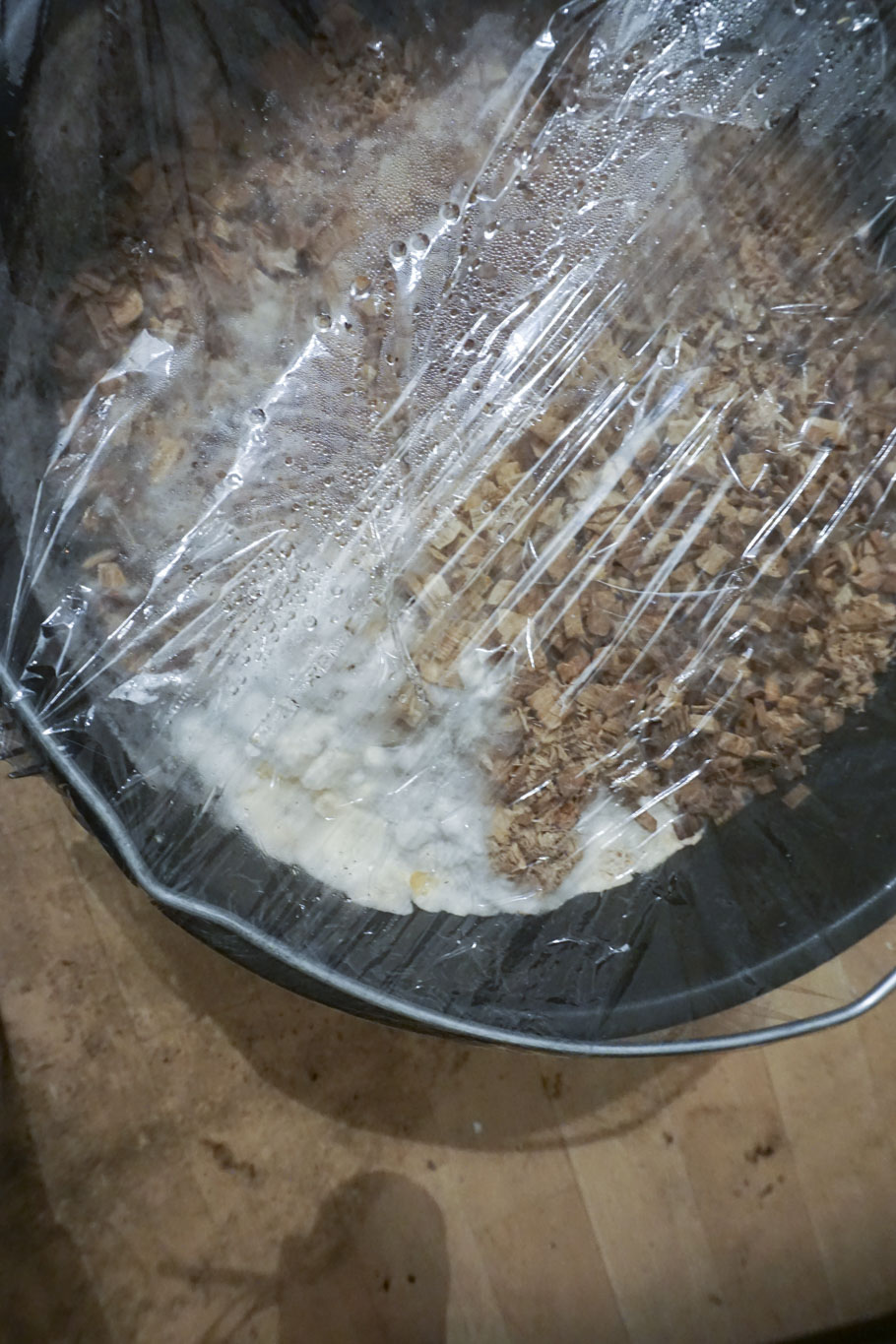 oyster mycelium on wood chips
oyster mycelium on wood chips
 tests with different water levels
tests with different water levels
SATELIGHT light system helps people who lack natural sunlight to gain more of it, with the help of a receiver and a lamp.
FACT:
My starting point of this project was the fact that many people are moving in the past years to live in underground places, such as basements, shelters, or just other places that lack windows and therefore lack natural sunlight.
This type of living, where people don’t receive enough sunlight results in negative effects, such as depression, mental problems, and other unwanted disorders.
ACT:
To prevent this, I have tried to find a way to deliver natural sunlight to this type of places.
I came up with certains ideas, for example using mirrors and other stuff. In the end, I have gotten to put my hands on optic fibers, and those can deliver light in a great and quality way, no matter what stands in their way. SATELIGHT light system uses the most quality glass fibers that can deliver light in the best way to just about anywhere.
The first concept was to try to implant the optic fibers in a suited system, I have checked telescopic systems that can “steal” lights from the street and from the sky, light infrastructures system that can be found inside the walls and the ceiling of a building and is becoming an architecture project on its own.
After a lot of thought, I have decided to leave the architecture project to a different aside and I have decided to design a system, a small one, that includes a receiver and a lamp. Between those two, a bunch of optic fibers – warped up together – are connected.
The light will be delivered after it penetrates and is focused by a large magnifying glass which lays on the top of the receiver, underneath it, the optic fibers’ edges are to be found.
This system is meant to be friendly, easy to use, efficient, functional and aesthetic.
Everyone who suffers from lack of sunlight can put the SATELIGHT system in their dark place, and get more sunlight.
The optic fibers can be detachable and replaced to other lengths, if it is too short for a specific location of a person.
IMPACT:
Anyone using this system is adding more quality of life for his living. The SATELIGHT system fibers are designed like roots, or like a flower, to show that those need also sunlight for living. It is to be placed on the table, shelf, or even on the floor.
Another possibility is to have many receivers and lamps and to gain a much much larger effect in the room.
I have enjoyed working on this project and I think it will be useful for many people who live in sunny cities, but dark rooms.
Omri Ron, 5.sem exchange student Shenkar Ramat Gan/Tel Aviv, WS 2020/21
Project:
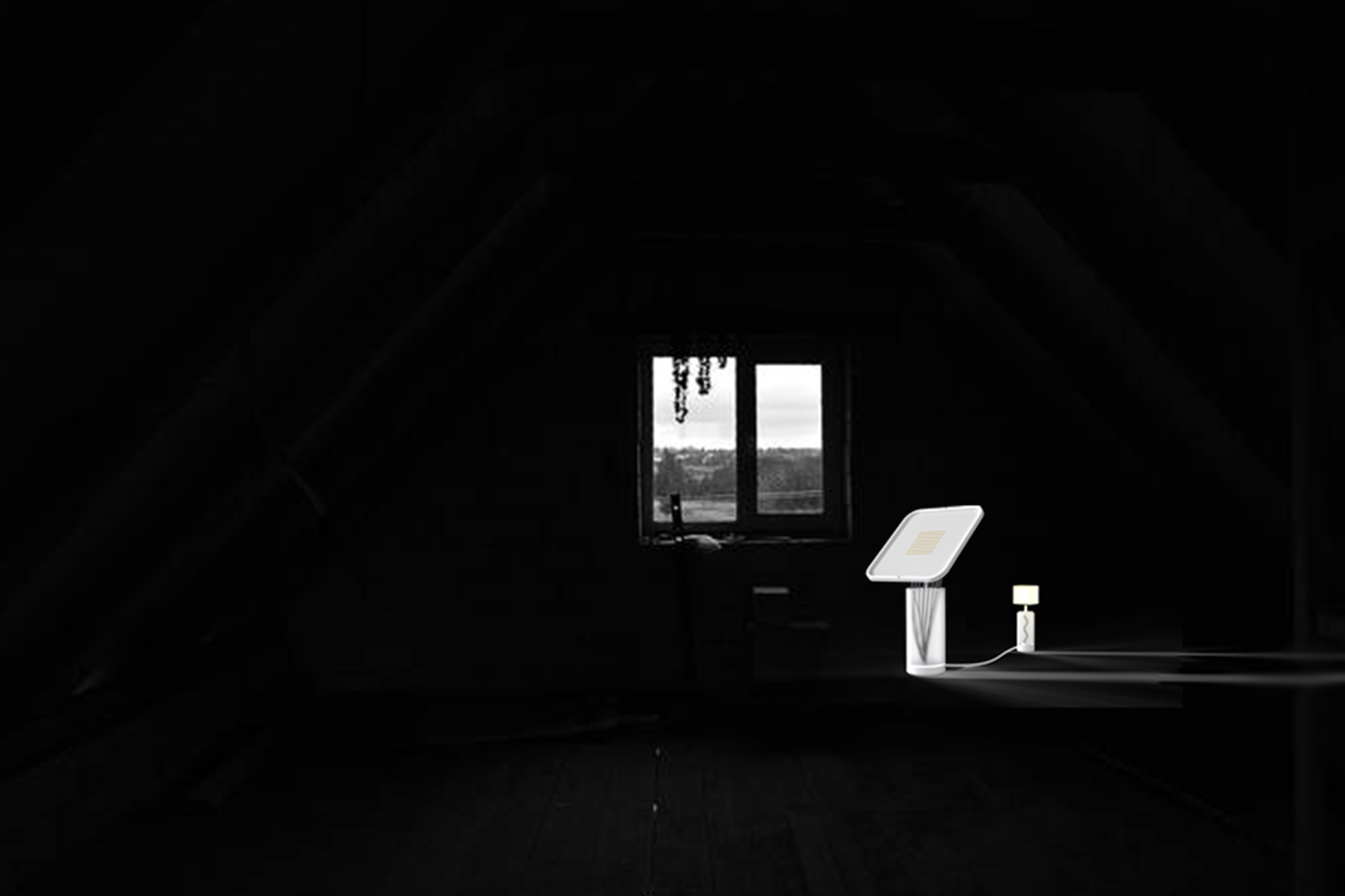
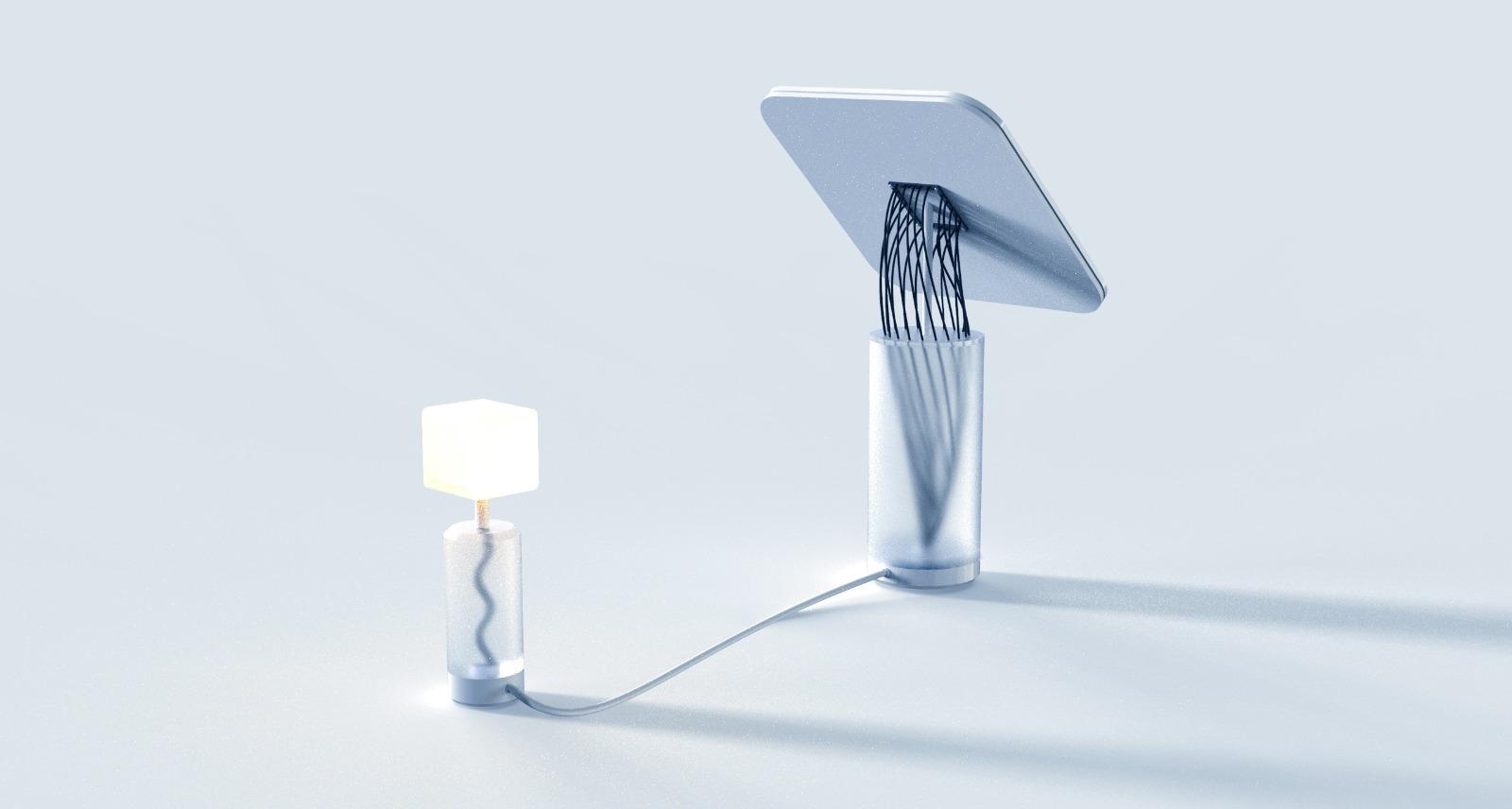
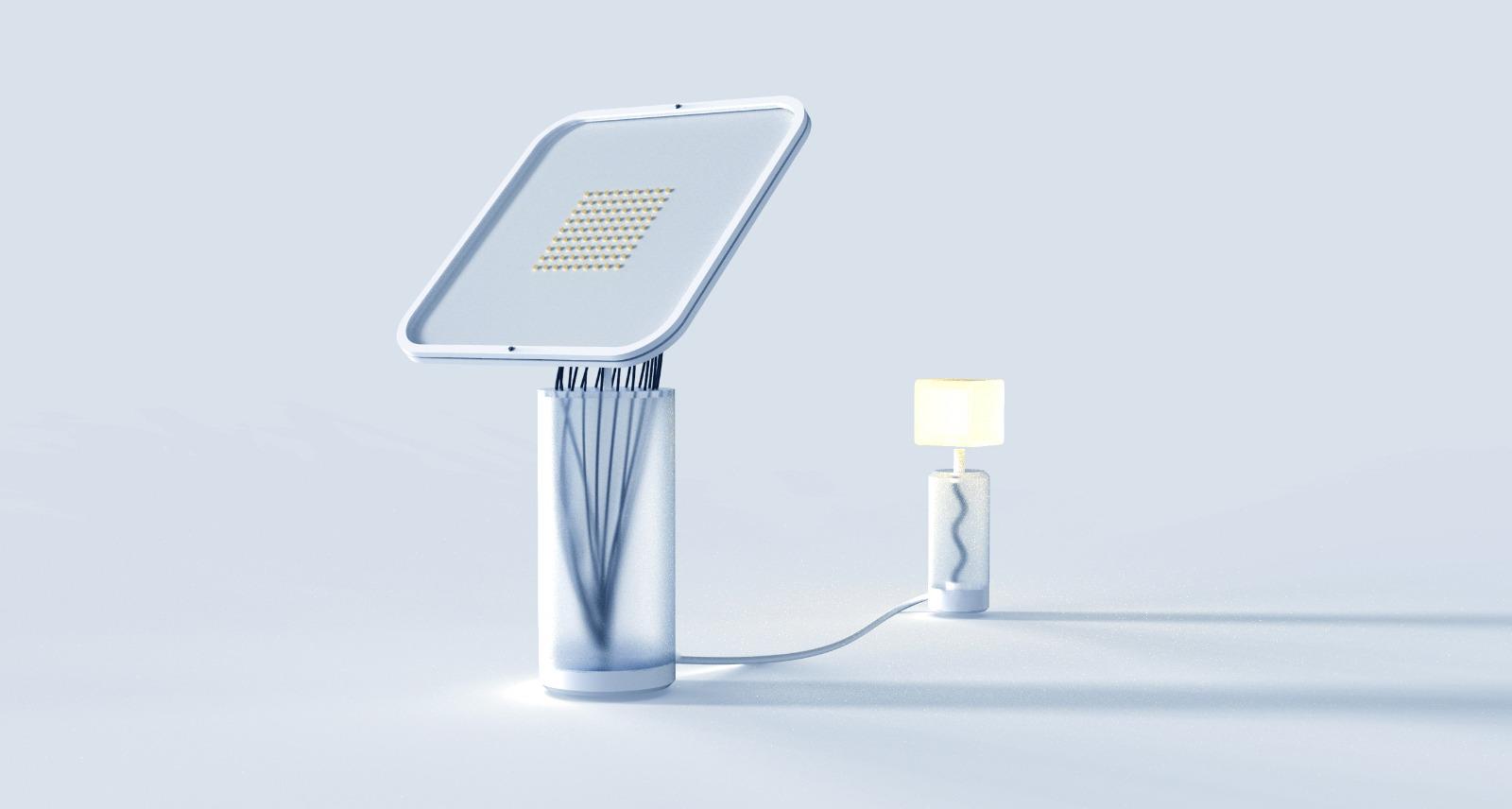
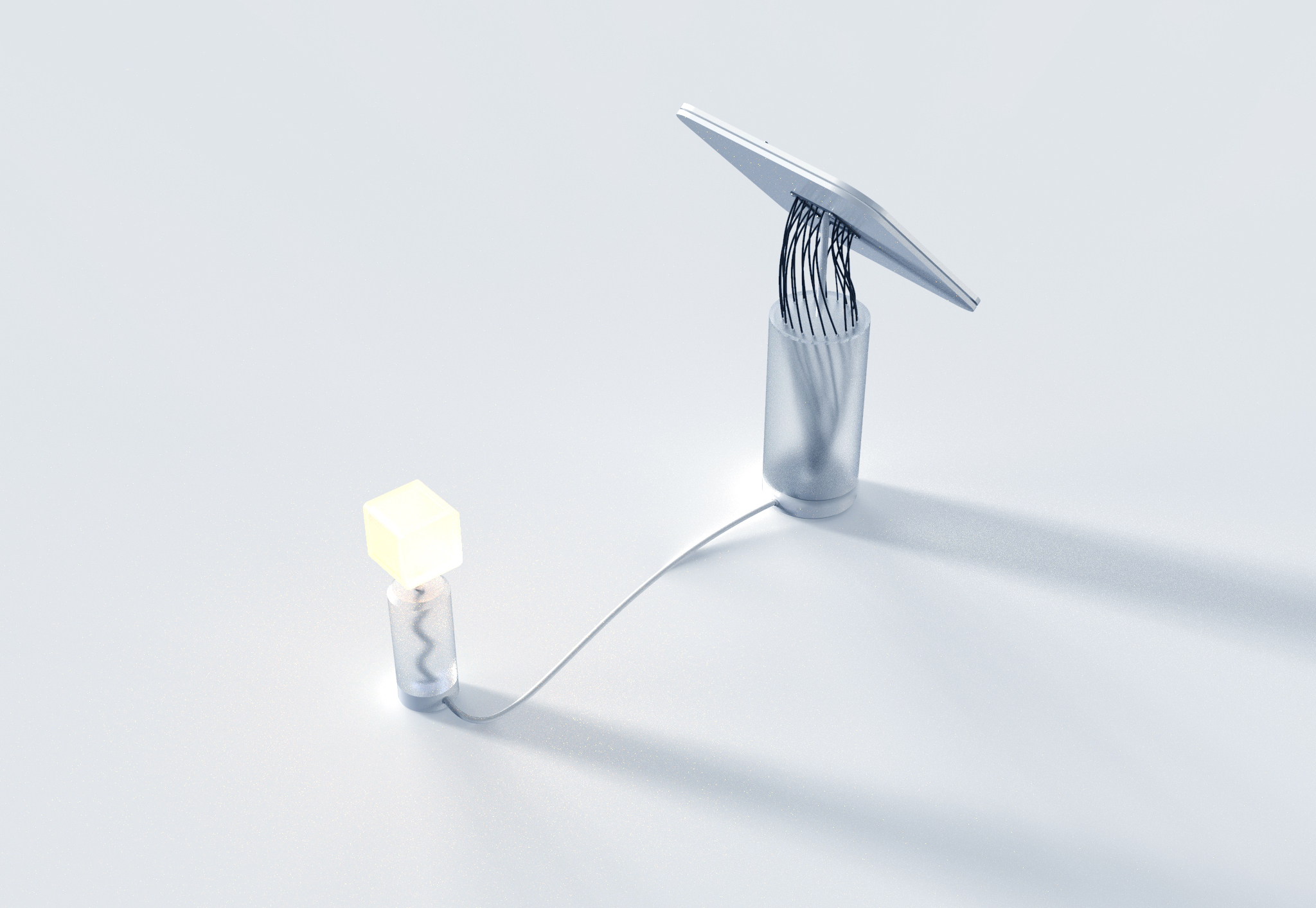
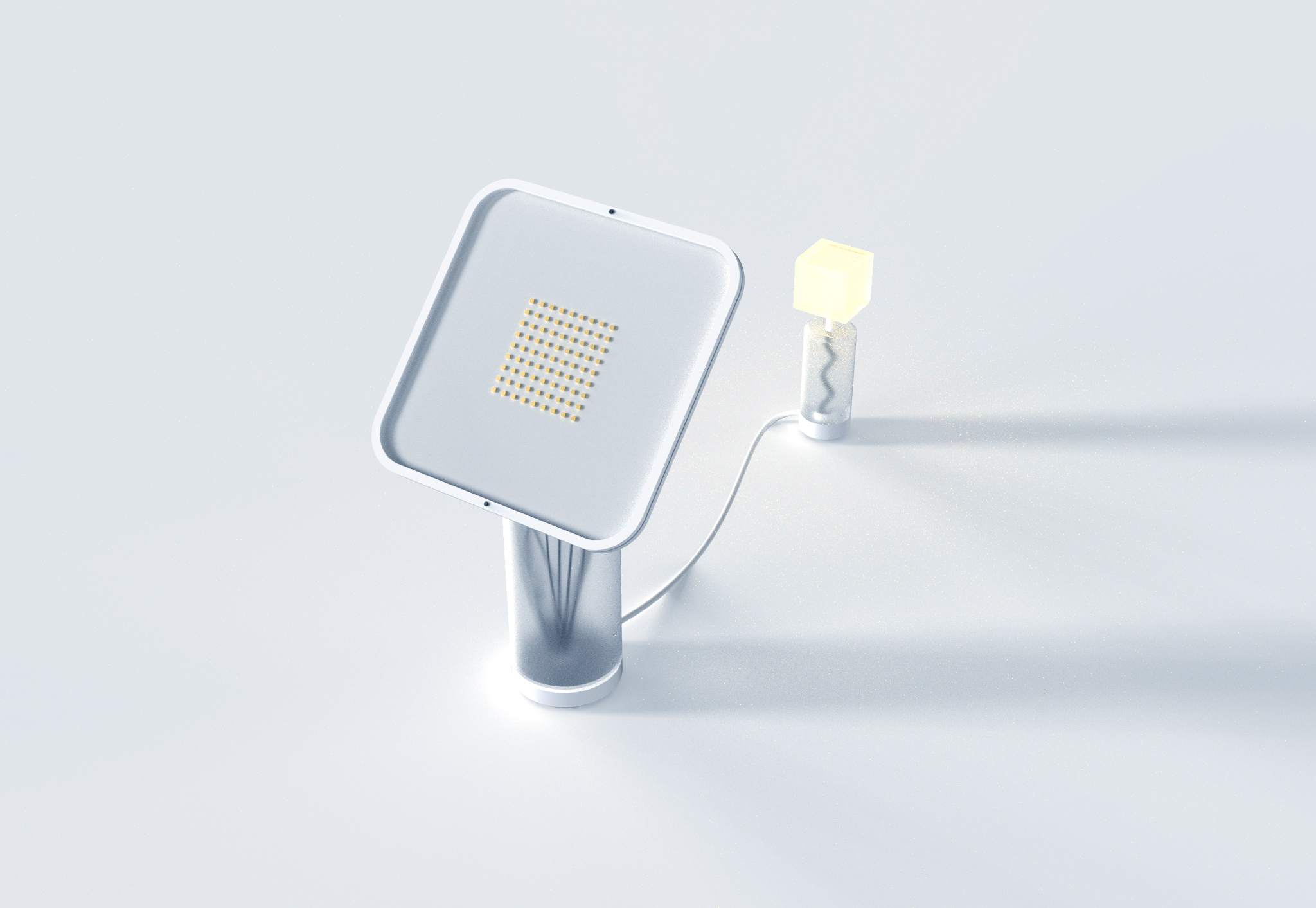
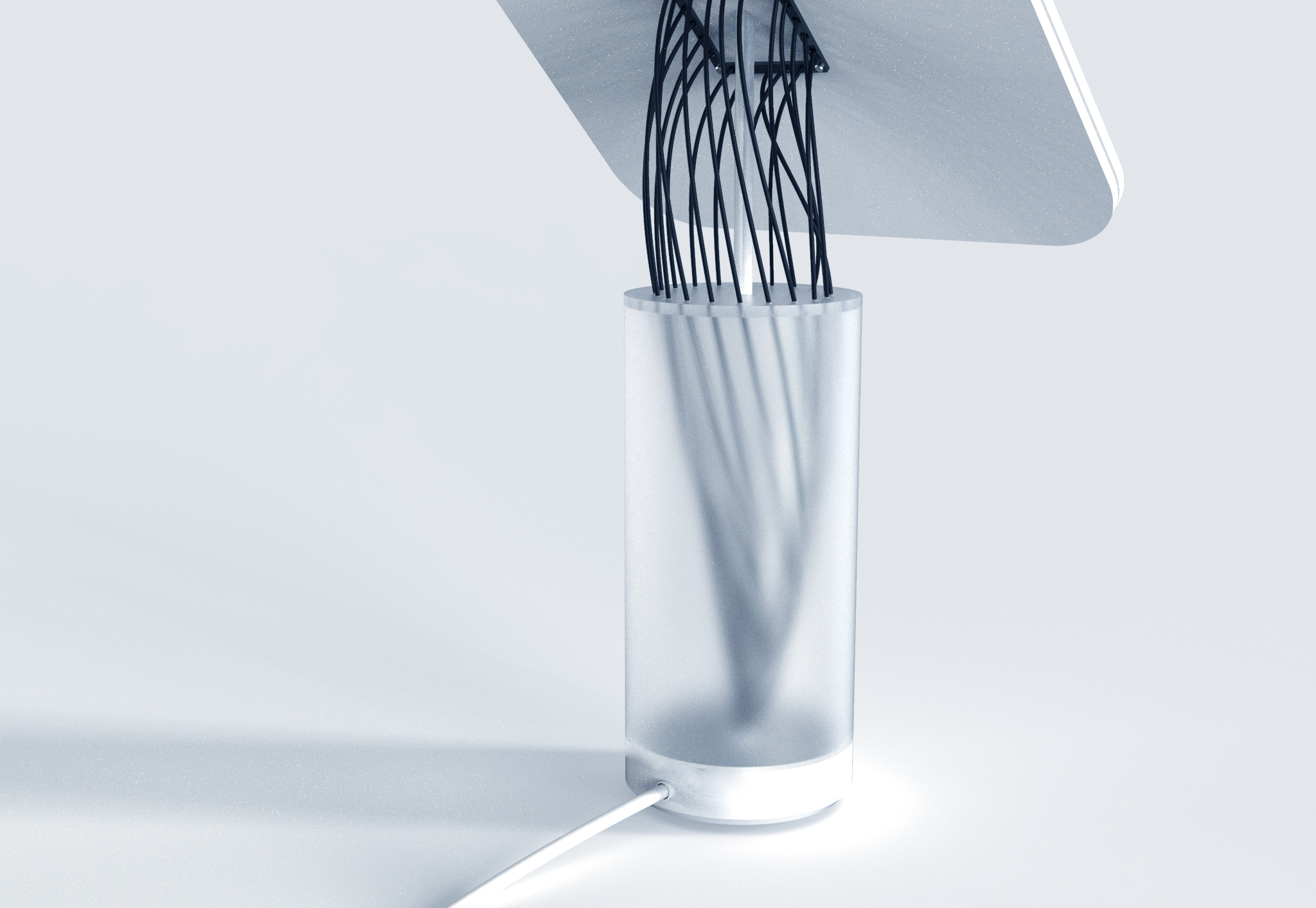
Process:
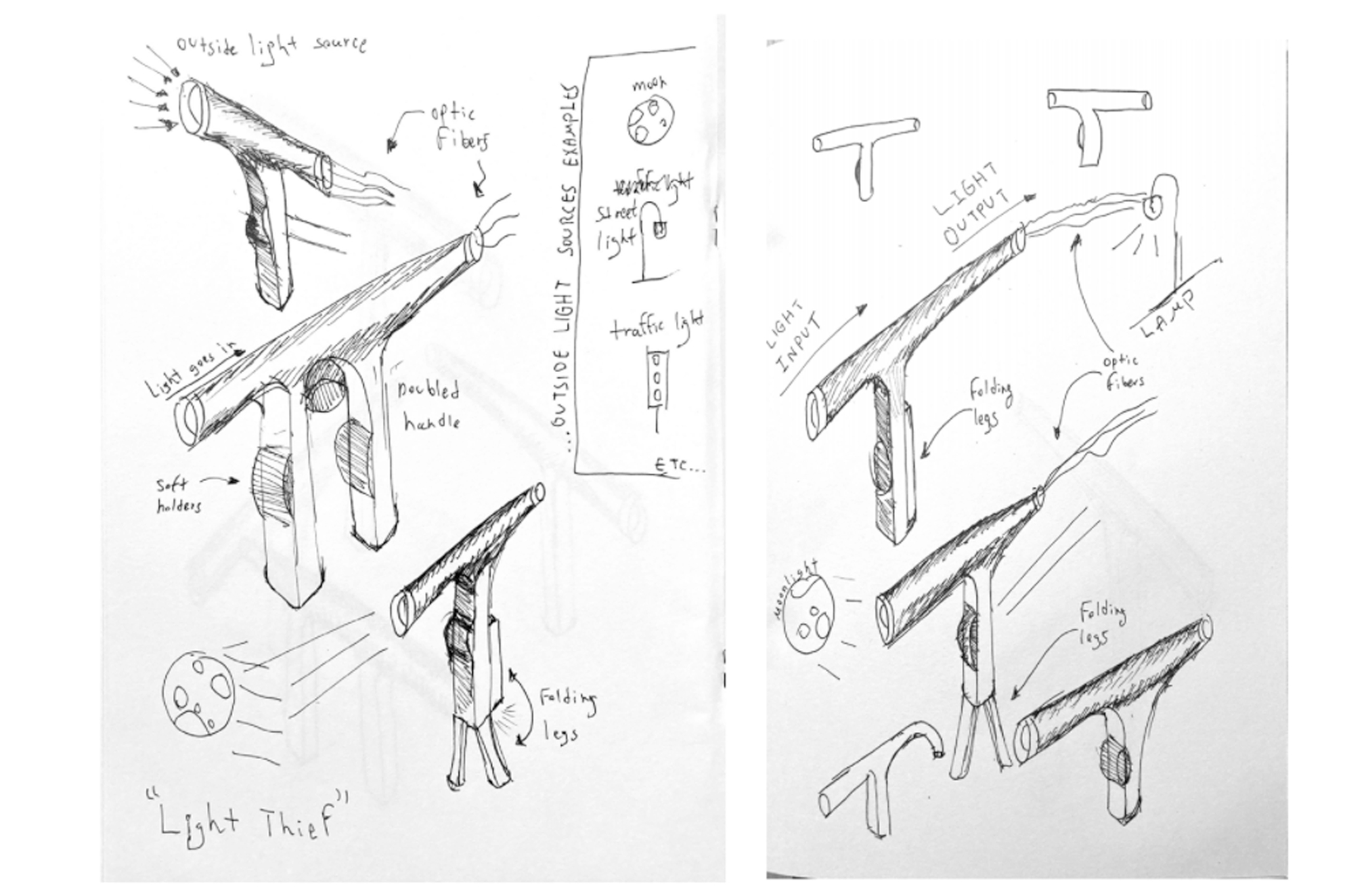
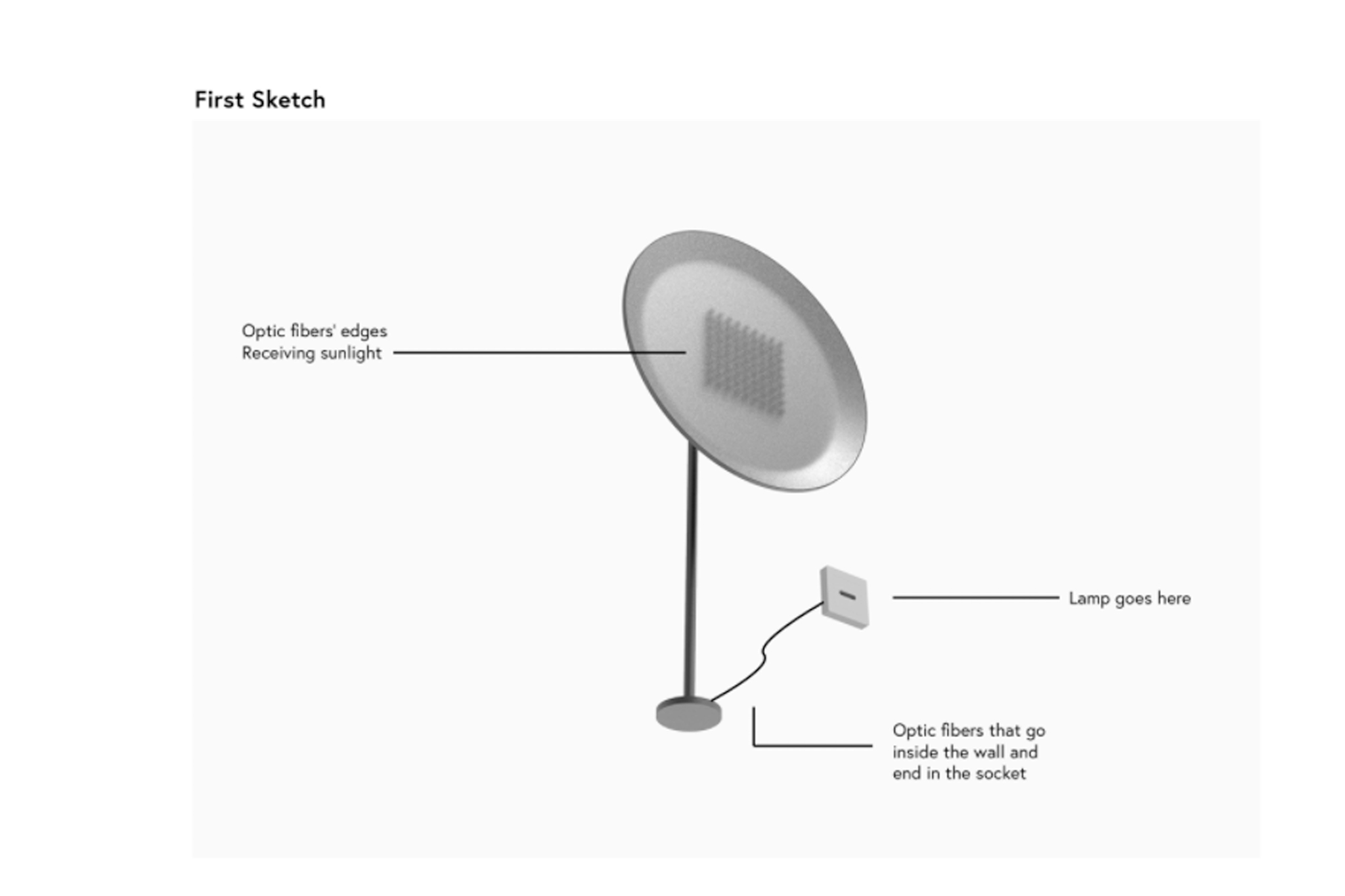
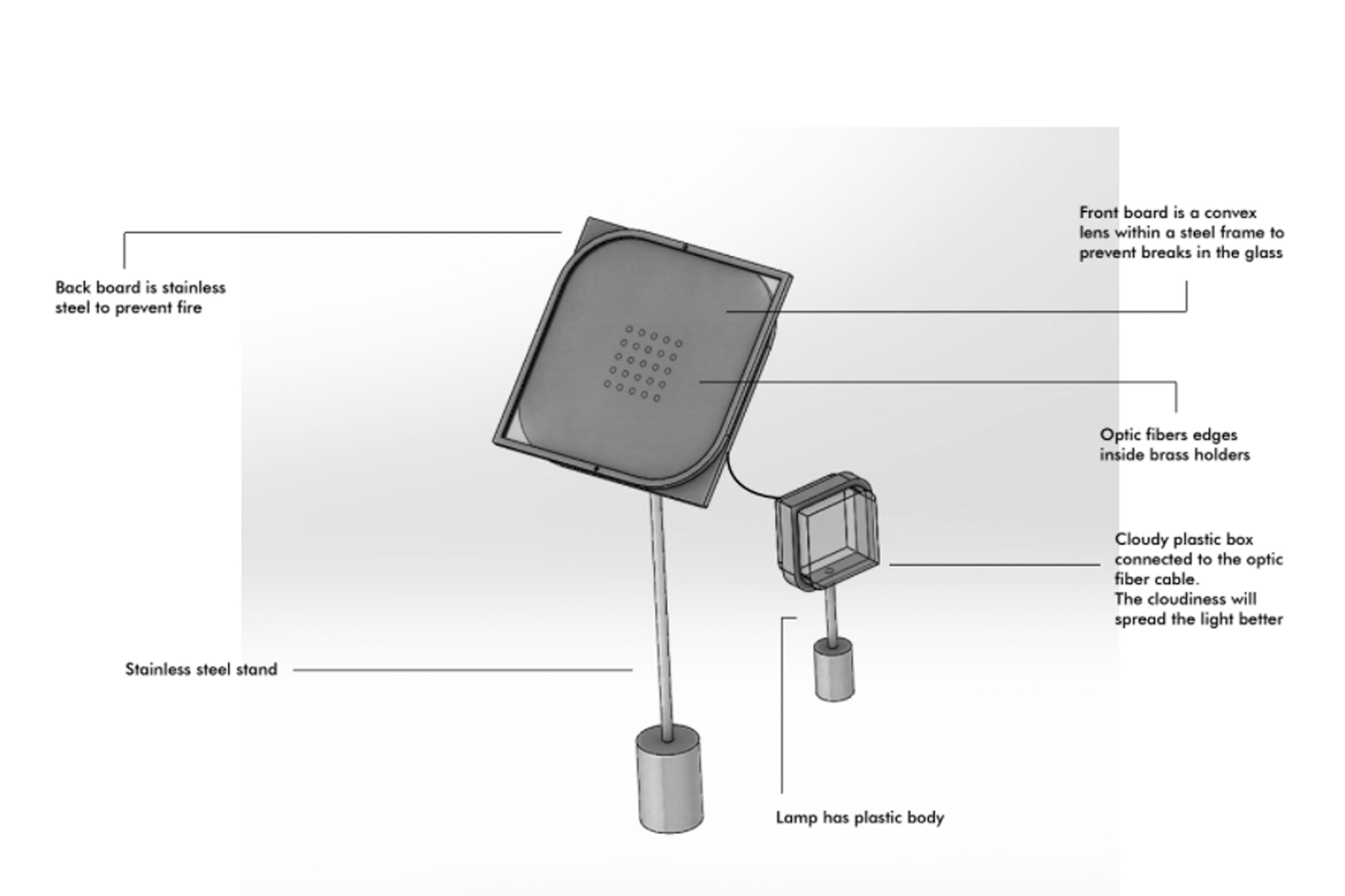
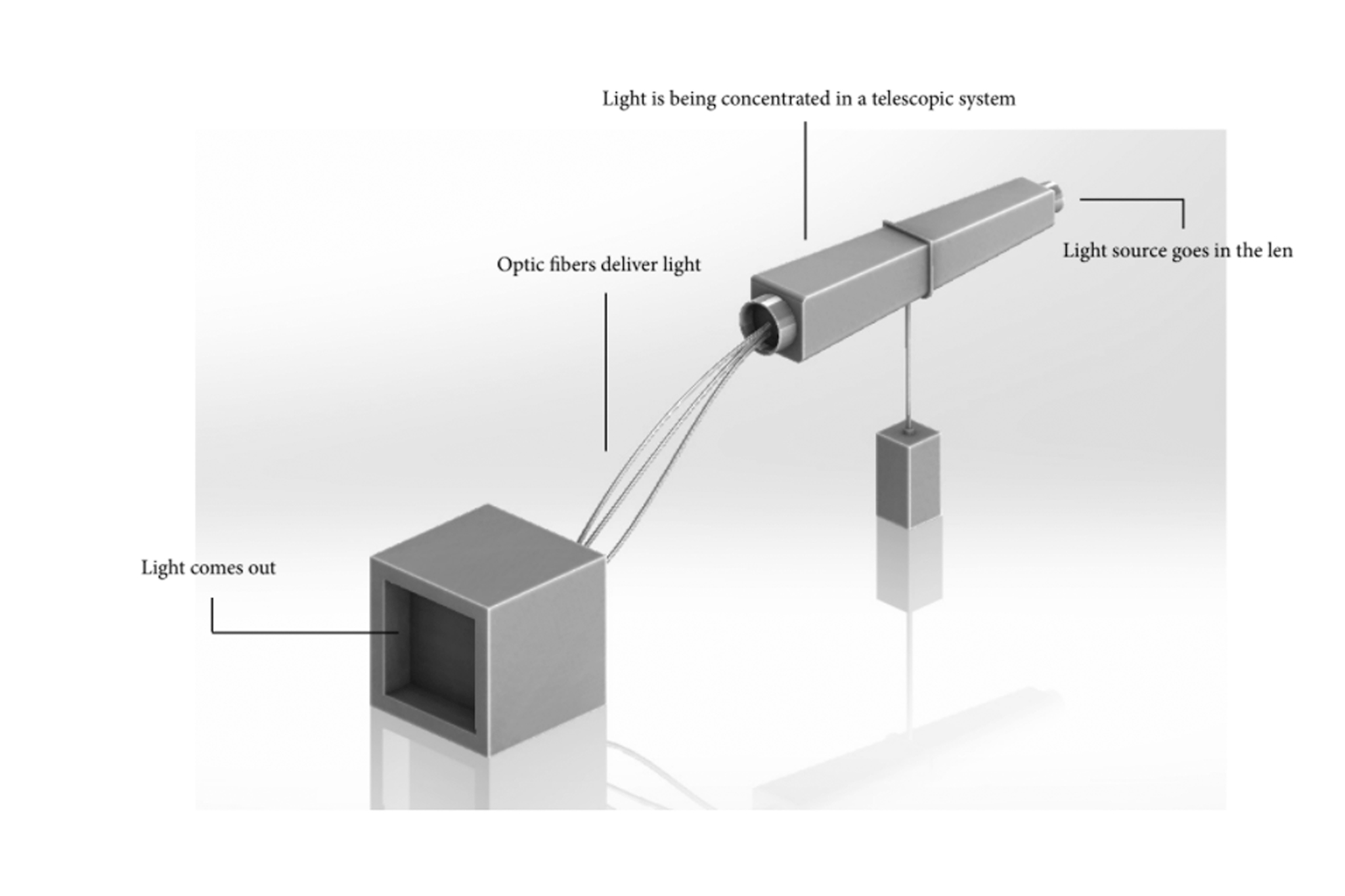
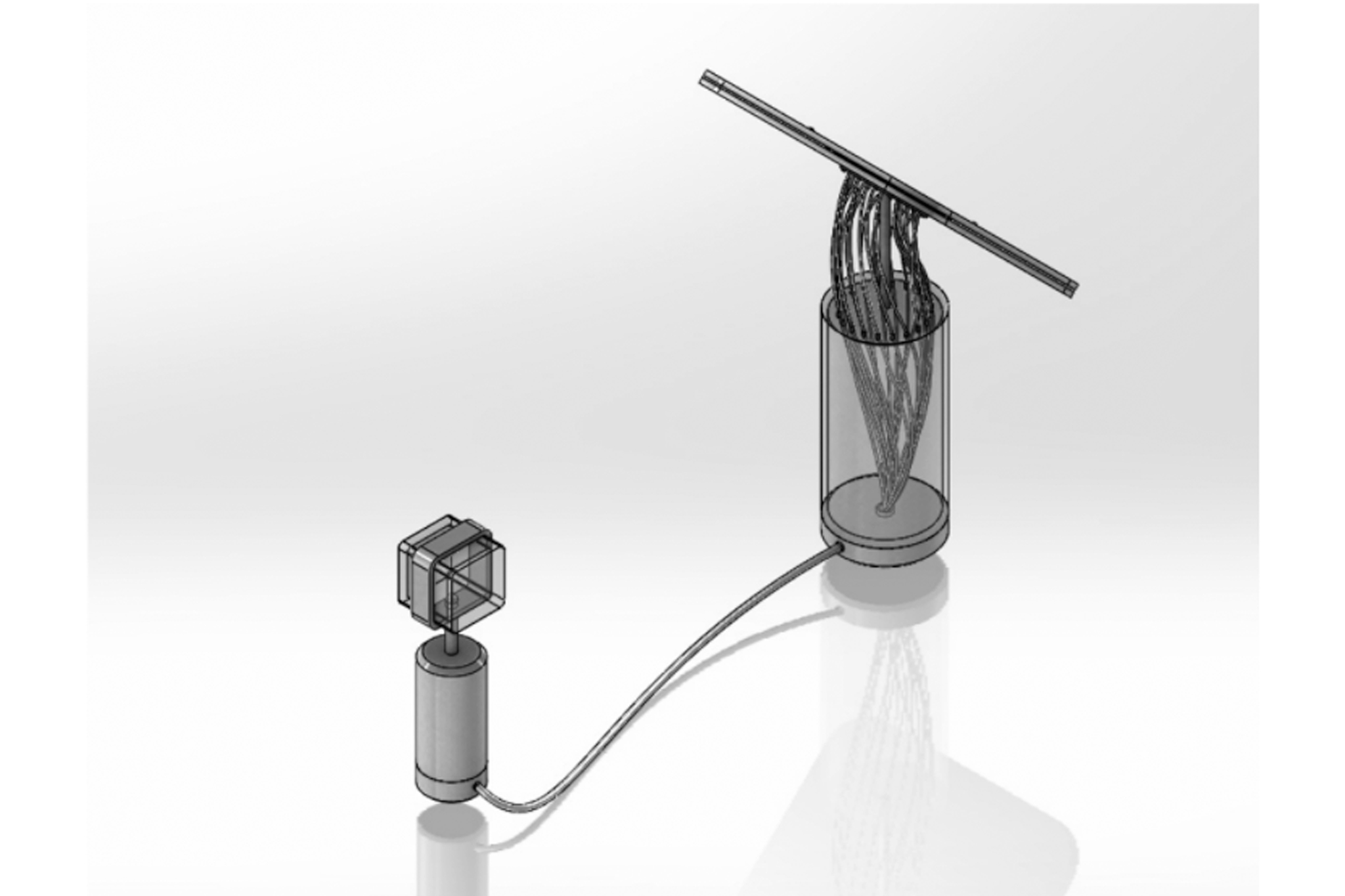
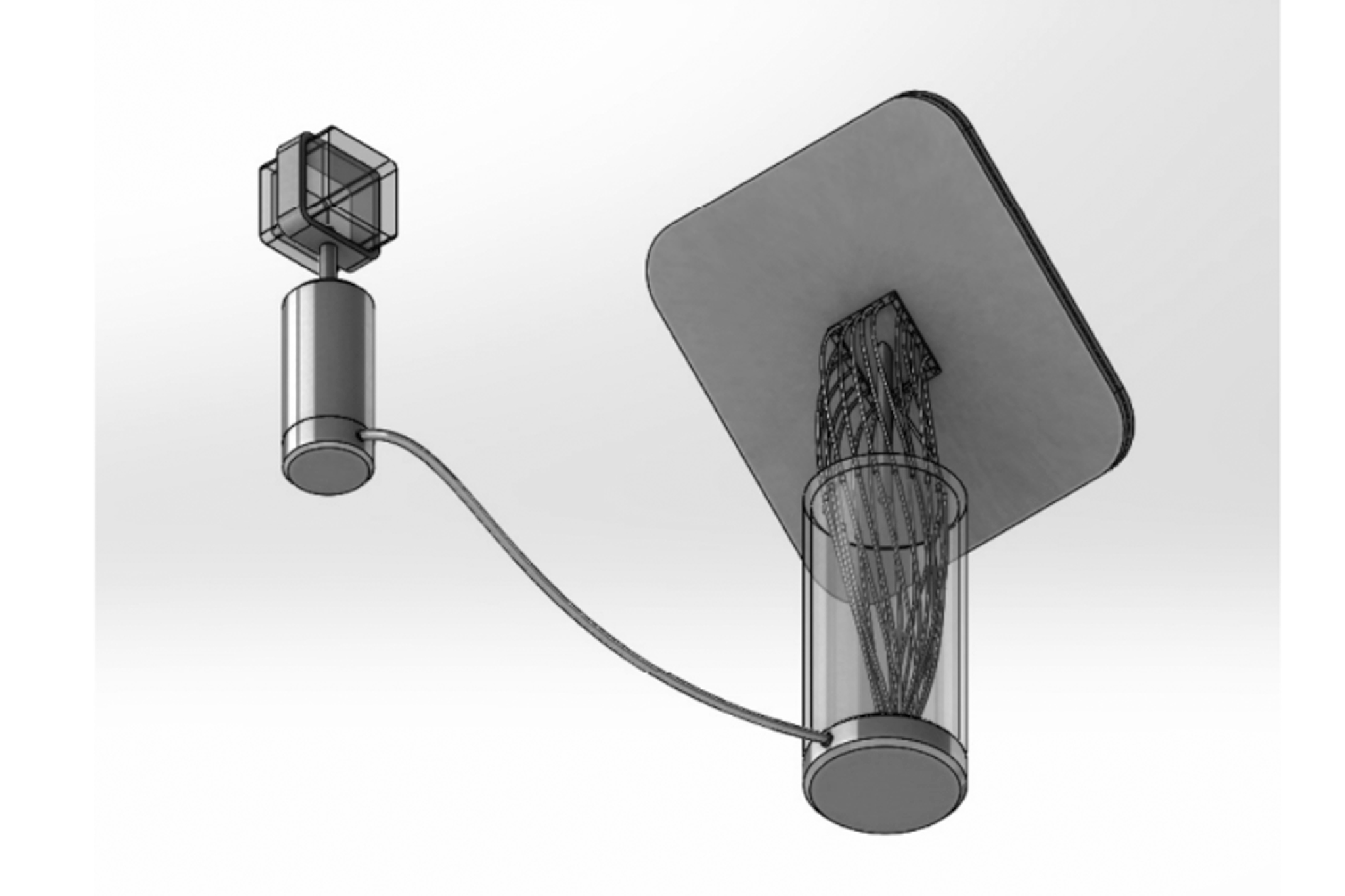
Large cities are warmer in summer than the surrounding (urban-heat-island). brick 47° is a flat-roof ceramictile that cools in summer because it’s illuminated by the white side and warms in winter because of the black side. The sun angle of incidence differs by 47° between summer and winter.
FACT:
• Large cities such as Berlin are considered as Urban Heat Islands (UHI) because the temperature there is about 6°C higher than in the surrounding area.
• Even relatively small temperature differences have a significant impact on the number of heat deaths (Germany: 2005 – Ø17.75°C = 1,600 heat deaths; 2018: Ø 19.82°C 20,200 heat deaths). Scientists expect air conditioning to double by 2030 if temperatures continue to rise, which is assumed.
• Air conditioners do massive damage to the environment through energy consumption and leaking fluorocarbons (greenhouse effect 23,000 times higher than Co2) and contribute directly to climate change.
• An alternative could, for example, be urban planning and building technology measures. Building density, building height, but also colors and materials of urban surfaces contribute significantly to the overheating of cities.
• Many surfaces, such as roofs and streets, are dark, heat up when exposed to sunlight, and release this heat into their surroundings. What is beneficial in the winter months becomes a problem in the summer.
• White roof surfaces, as is common in Greece or Spain, reflect sunlight and heat up less.
ACT:
On this basis, I have designed the flat rooftile: brick 47°. I use the physical fact that the sun is higher in summer than in winter, with an angle difference of exactly 47°. The black side must be oriented towards the south, so that the summer sun hits the white reflecting side and the winter sun hits the black, warming side.
Brick 47° is made of ceramic, because this building material has a high stability, adds enough weight, offers freedom in color and shape design and has a balanced heat balance. Due to the special angle, the design is limited, because many other aspects had to be taken into account. The bricks are hollow and have a wall thickness of one centimeter. They overlap at the ends and interlock to provide protection from wind drifts.
Since I’m referring to existing roofs, brick 47°is adapted to existing drainage systems. Rain flows through an opening at the top onto the pre-existing substrate, can move freely through the four-sided openings between the bricks, and eventually run off.
A glaze is designed to protect the brick from dirt buildup and make it easier to clean. Also, the elevation on the back surface serves cleaning and prevention of plant growth. The size of 13.5 cm in height, 30 cm in length and width allows good handling. The tile weighs between 8 and 12 kilograms.
IMPACT:
If large areas of flat roofs are covered with brick 47°, heating savings can be expected in winter and cooling 2°C in summer, since roofs influence the UHI effect on 33%.
Esther Betz, 3.sem WS 2020/21
Project:
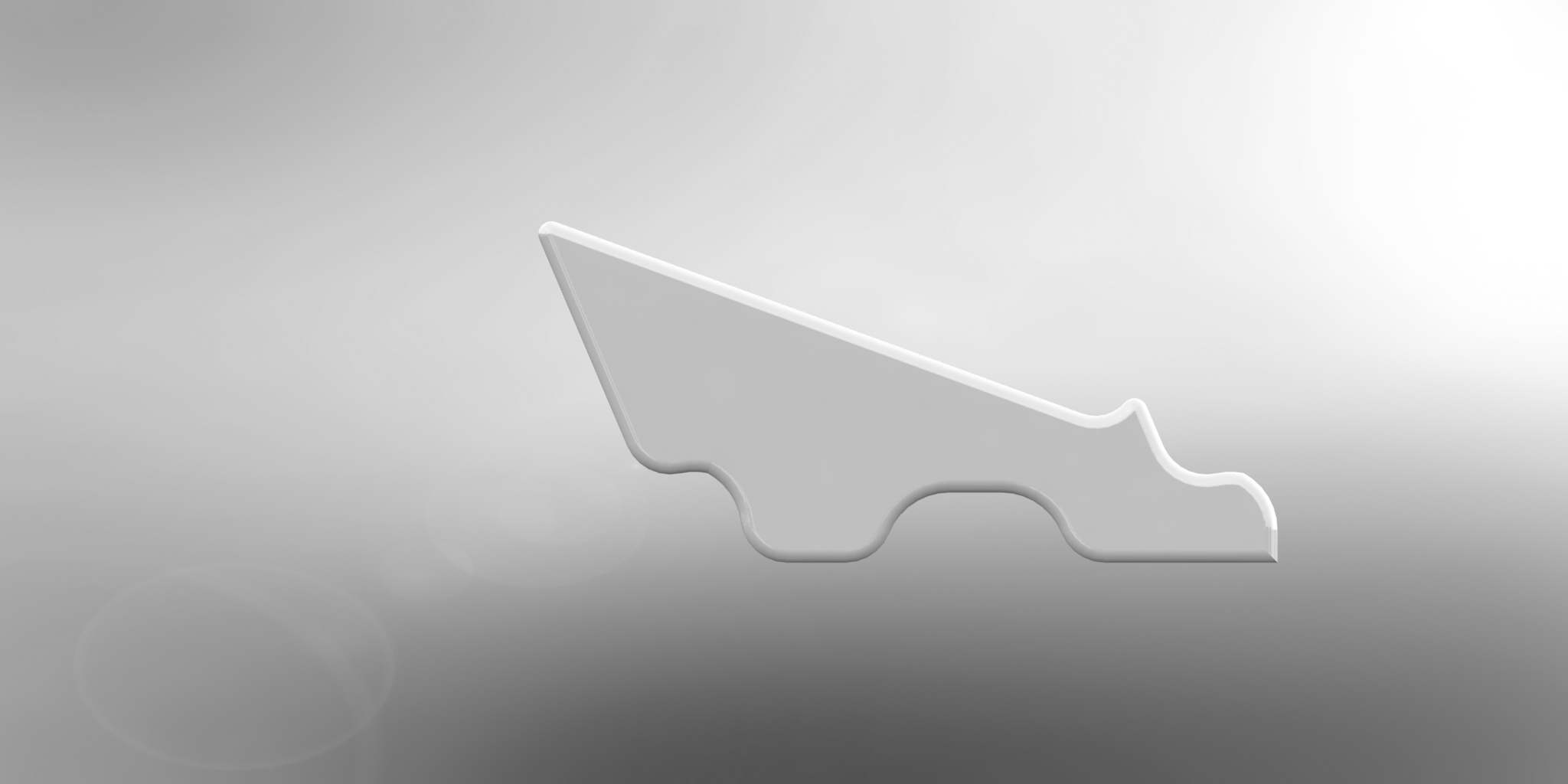
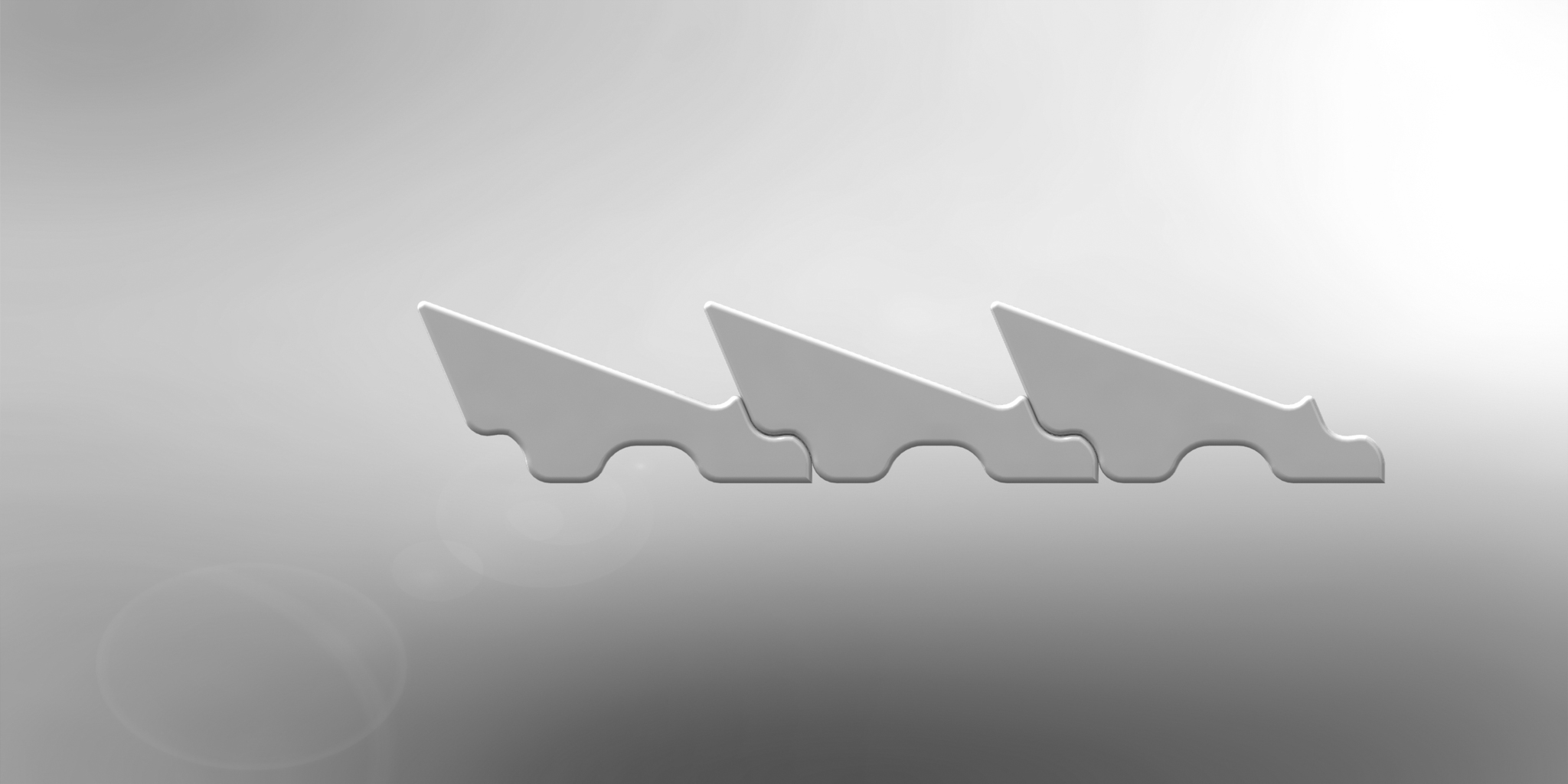

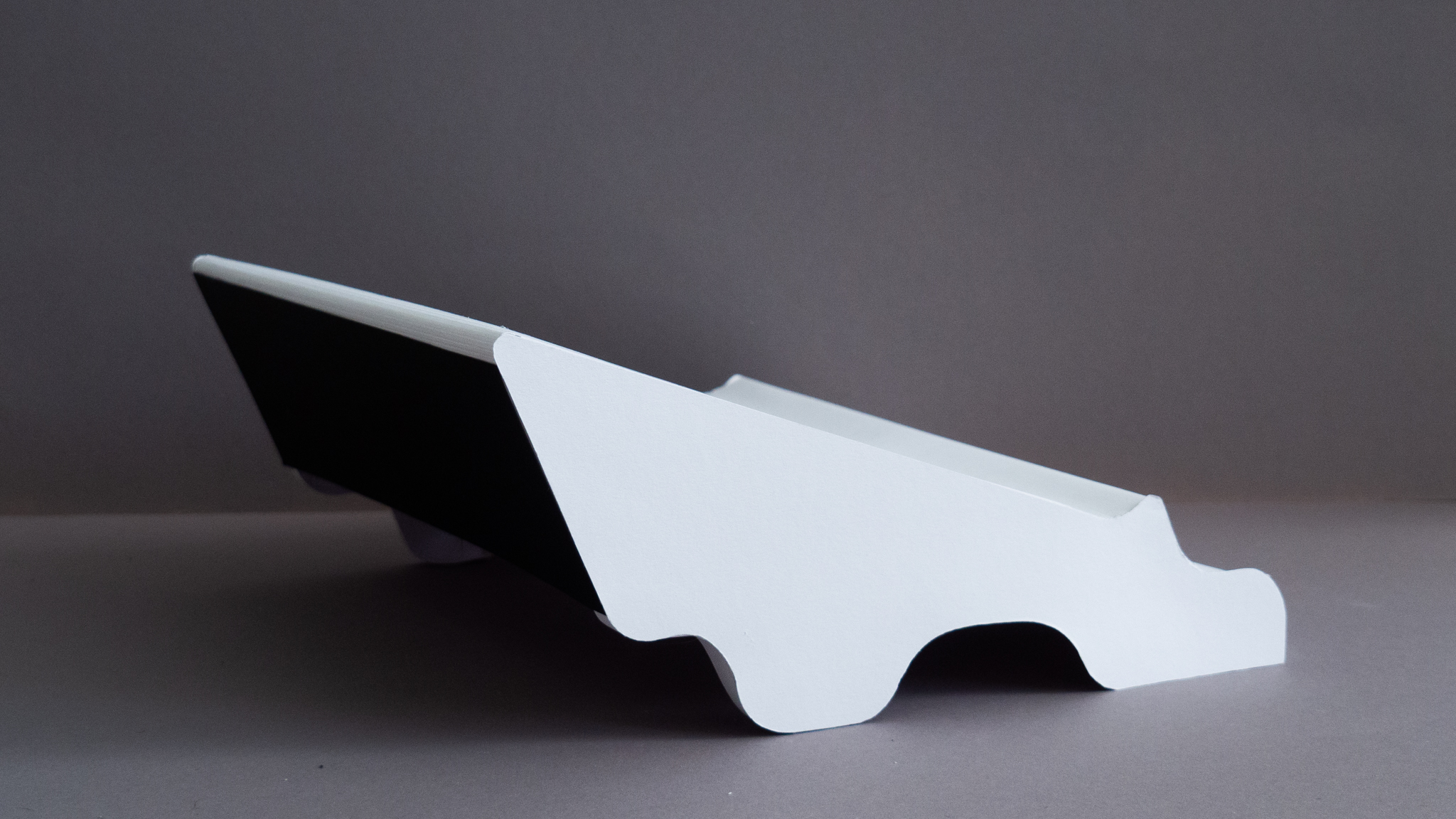
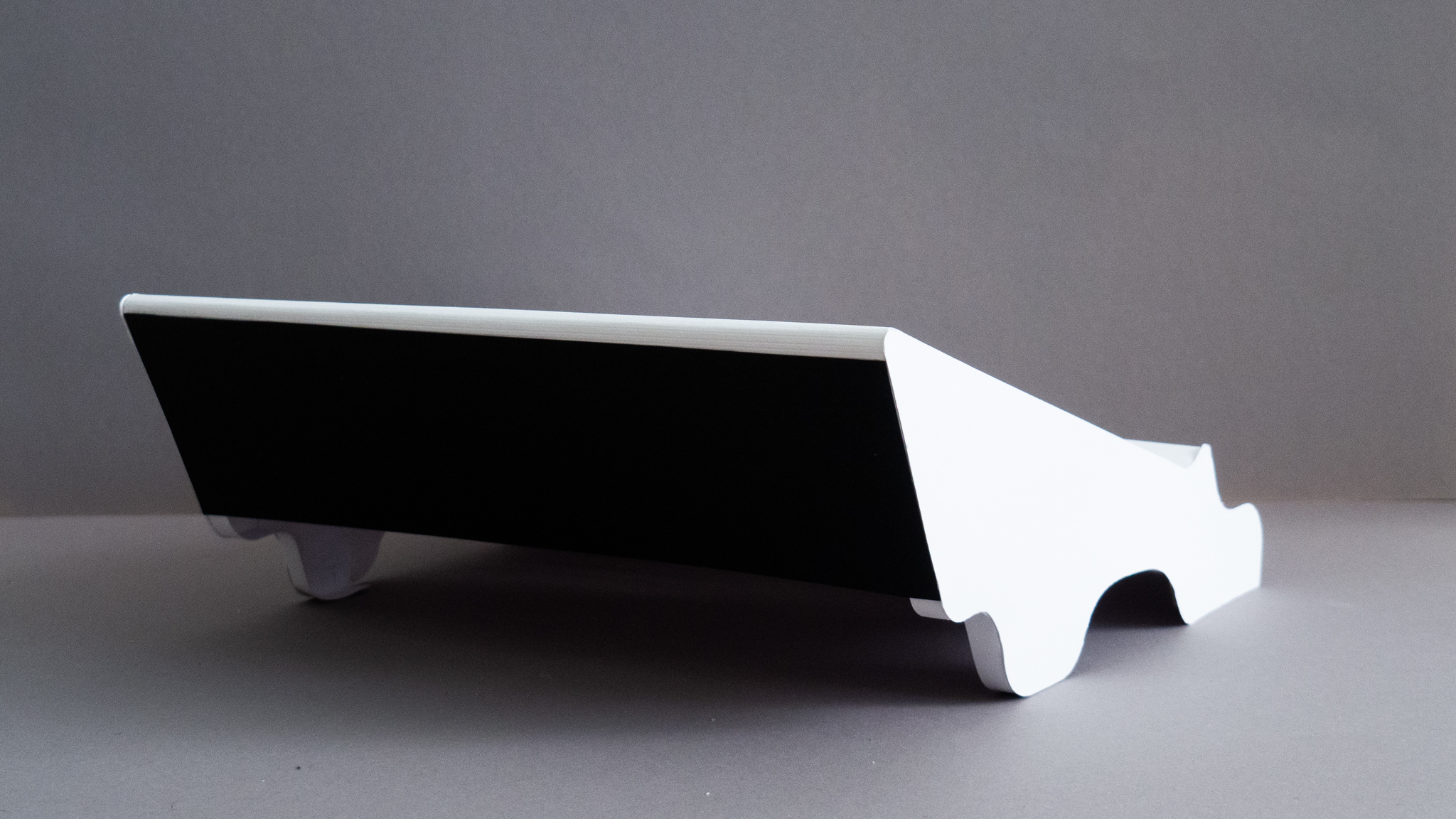
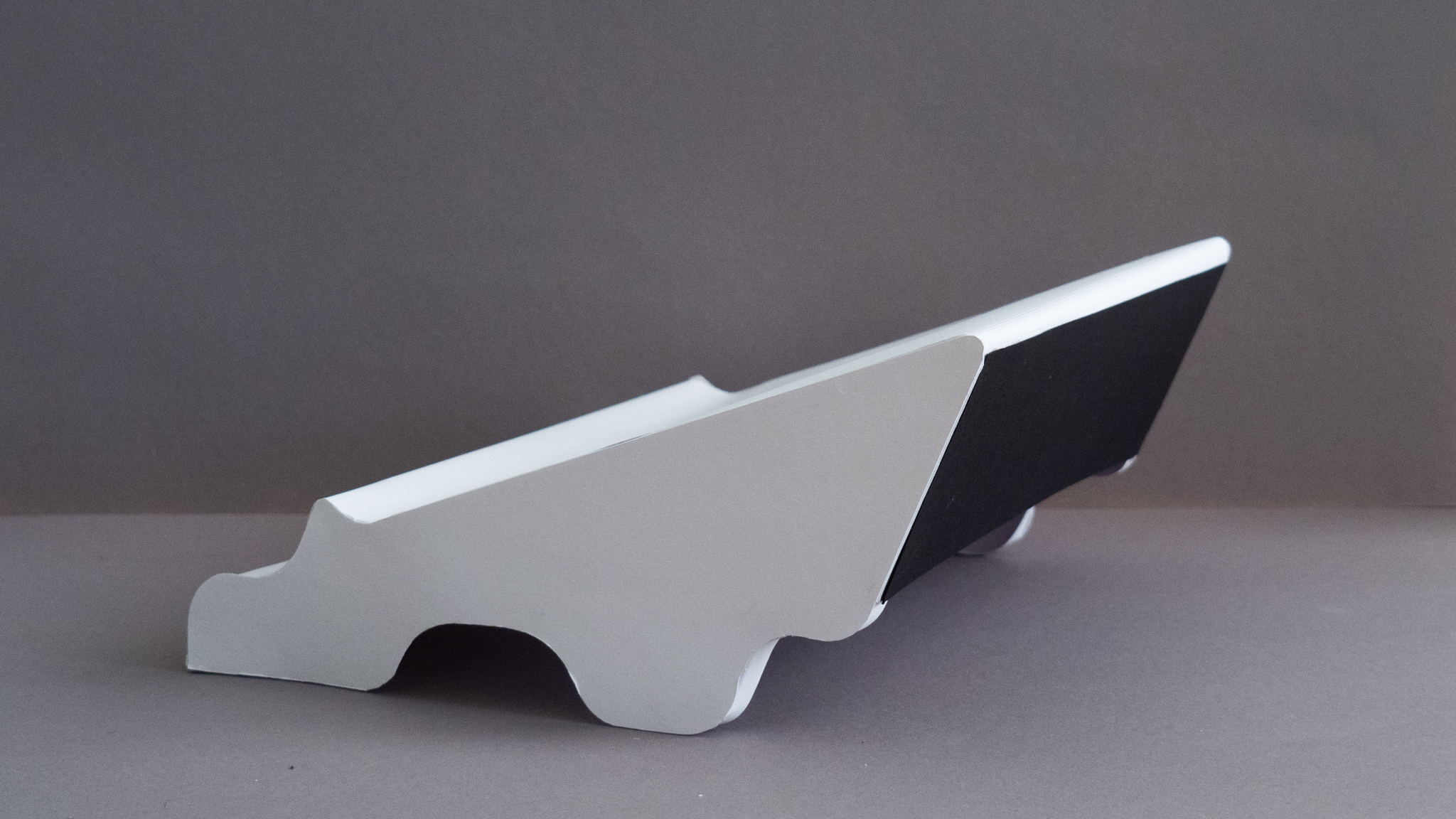
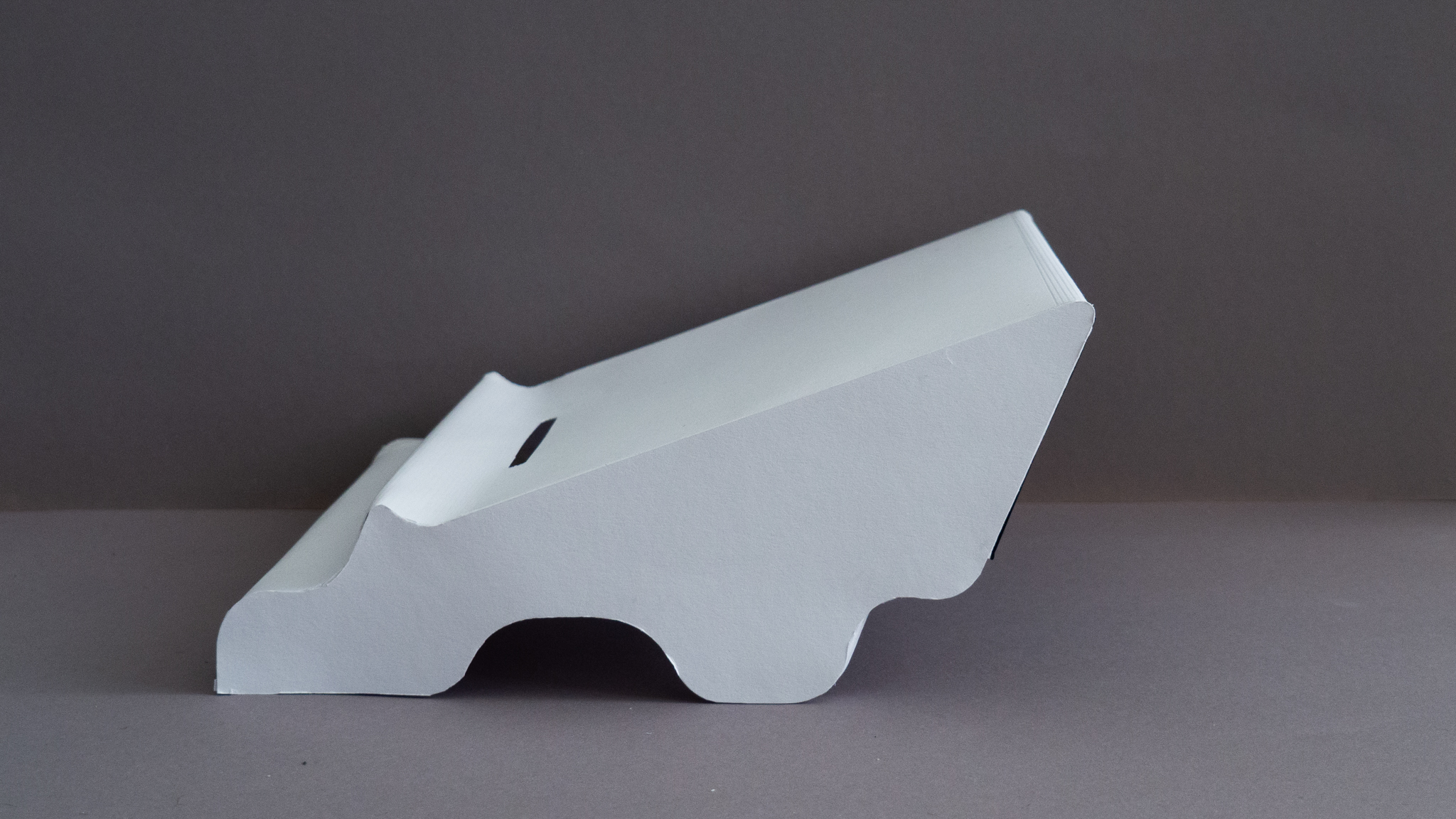
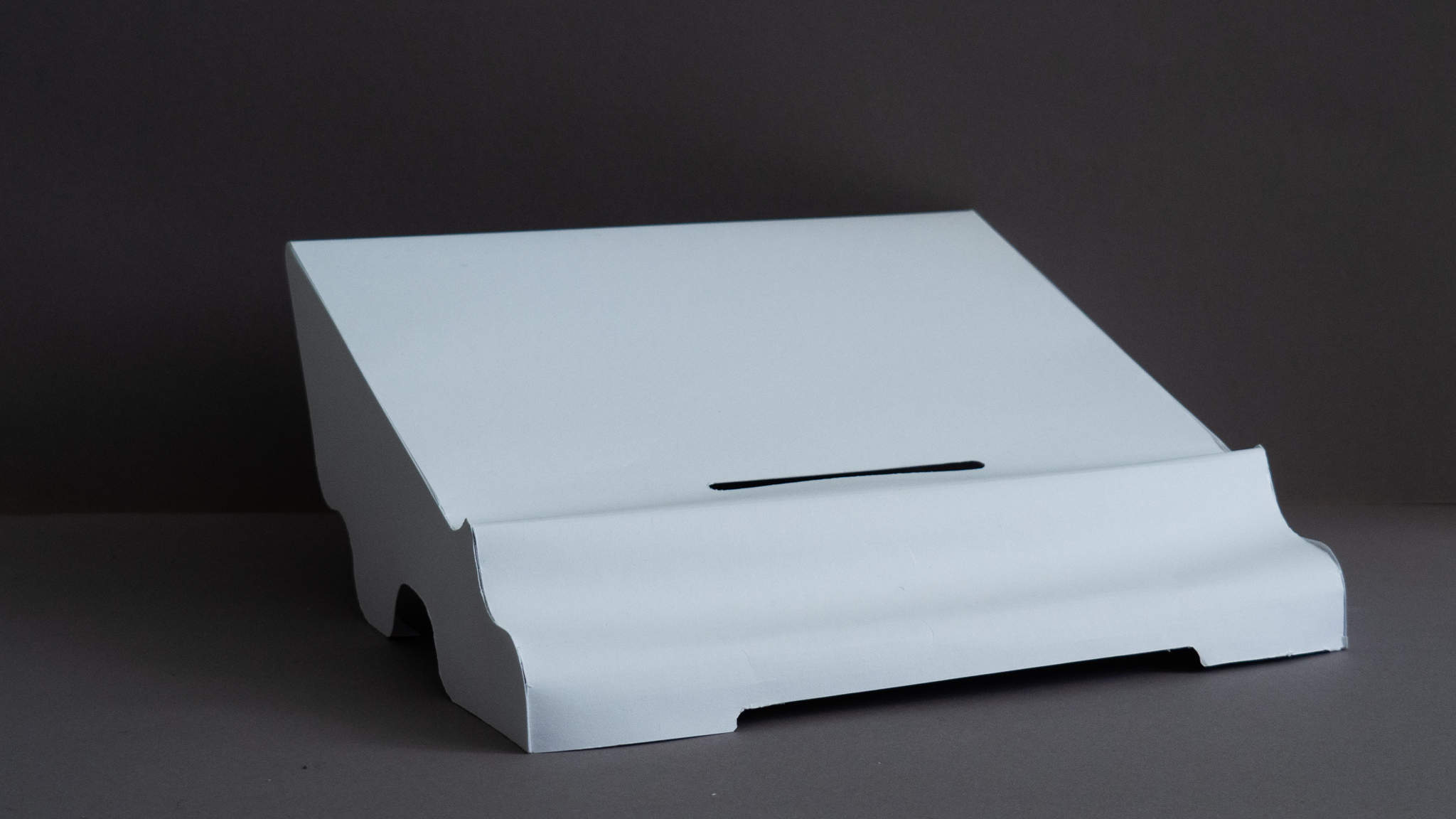


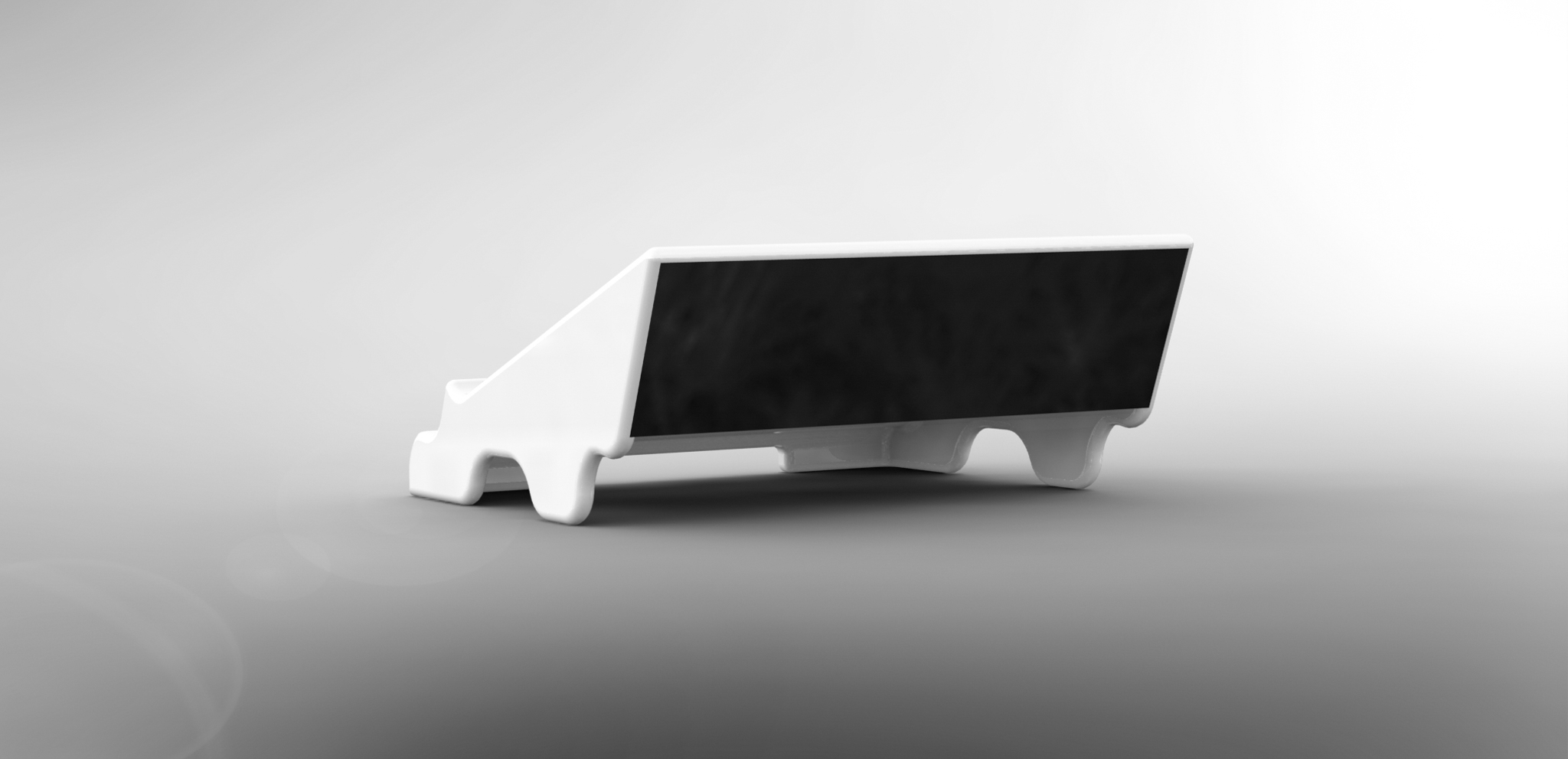
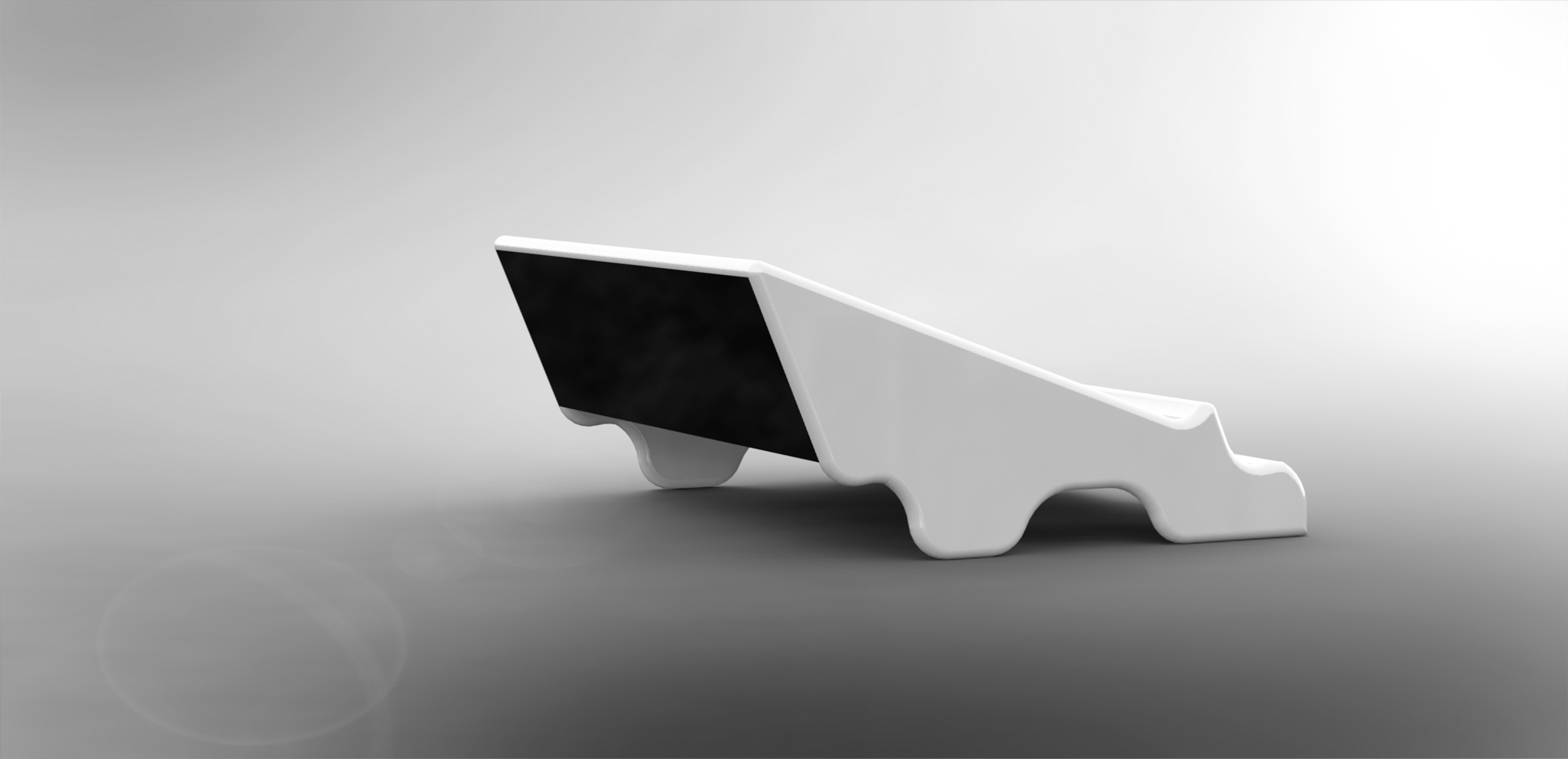
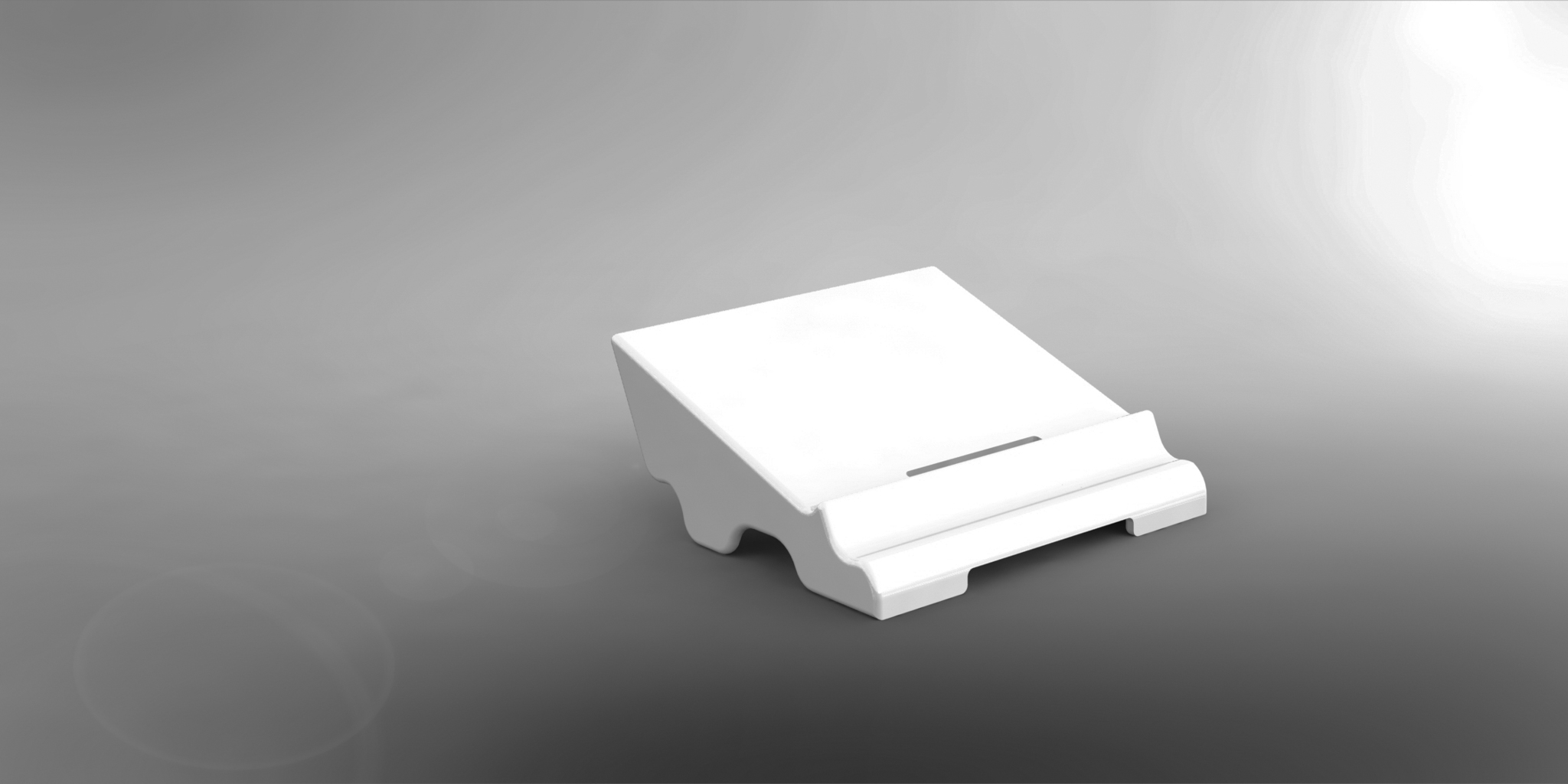

Process:
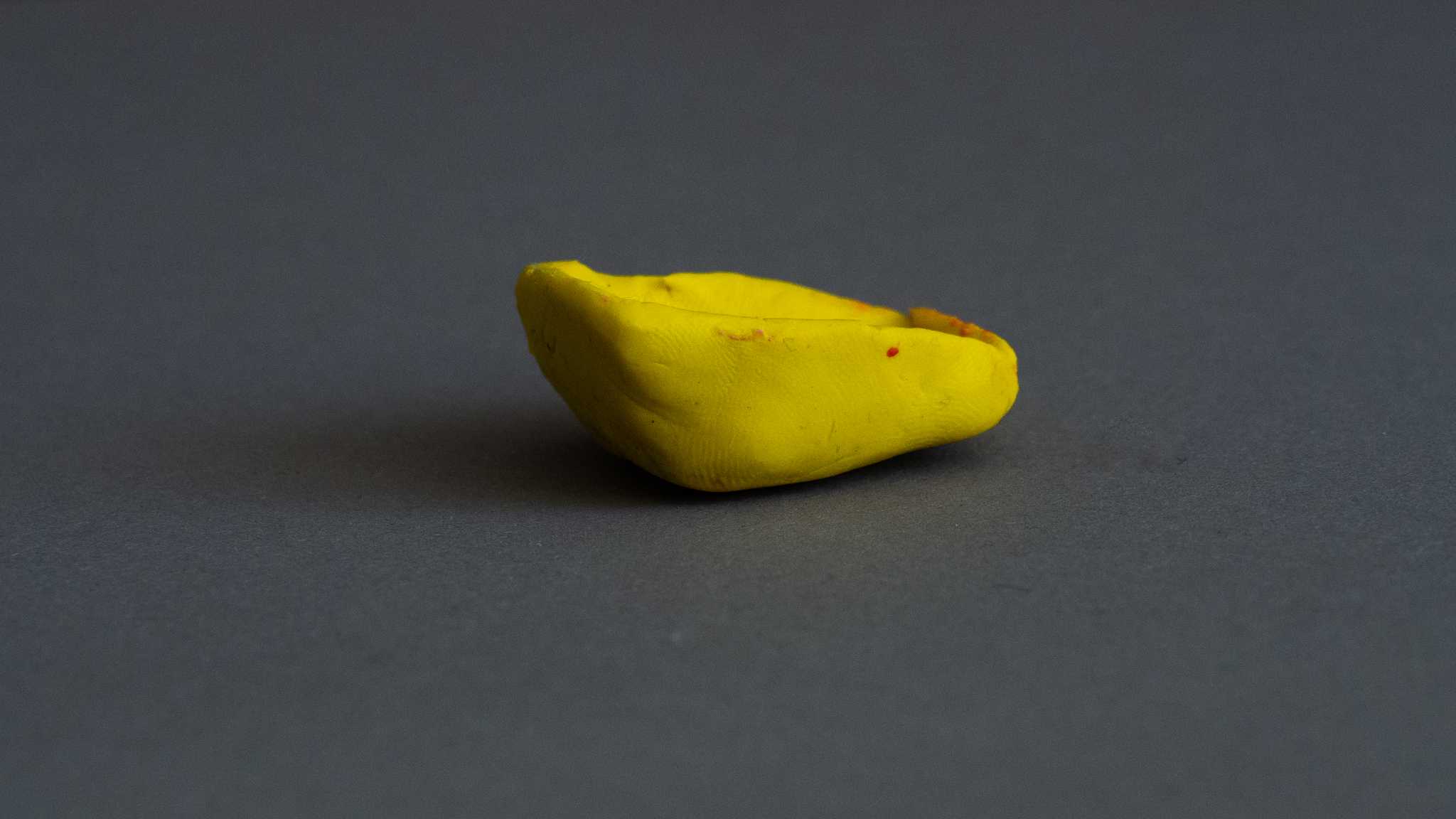
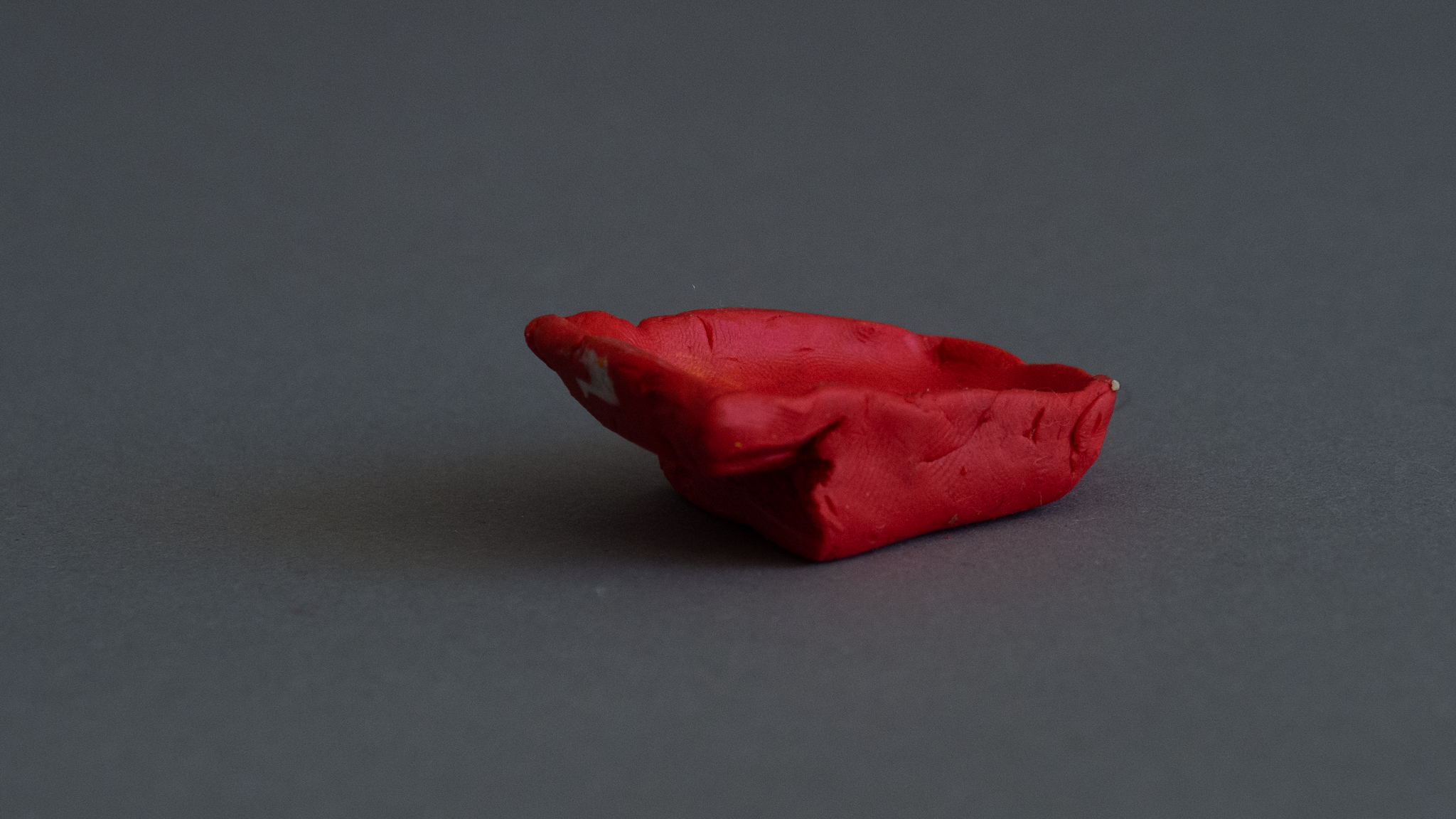
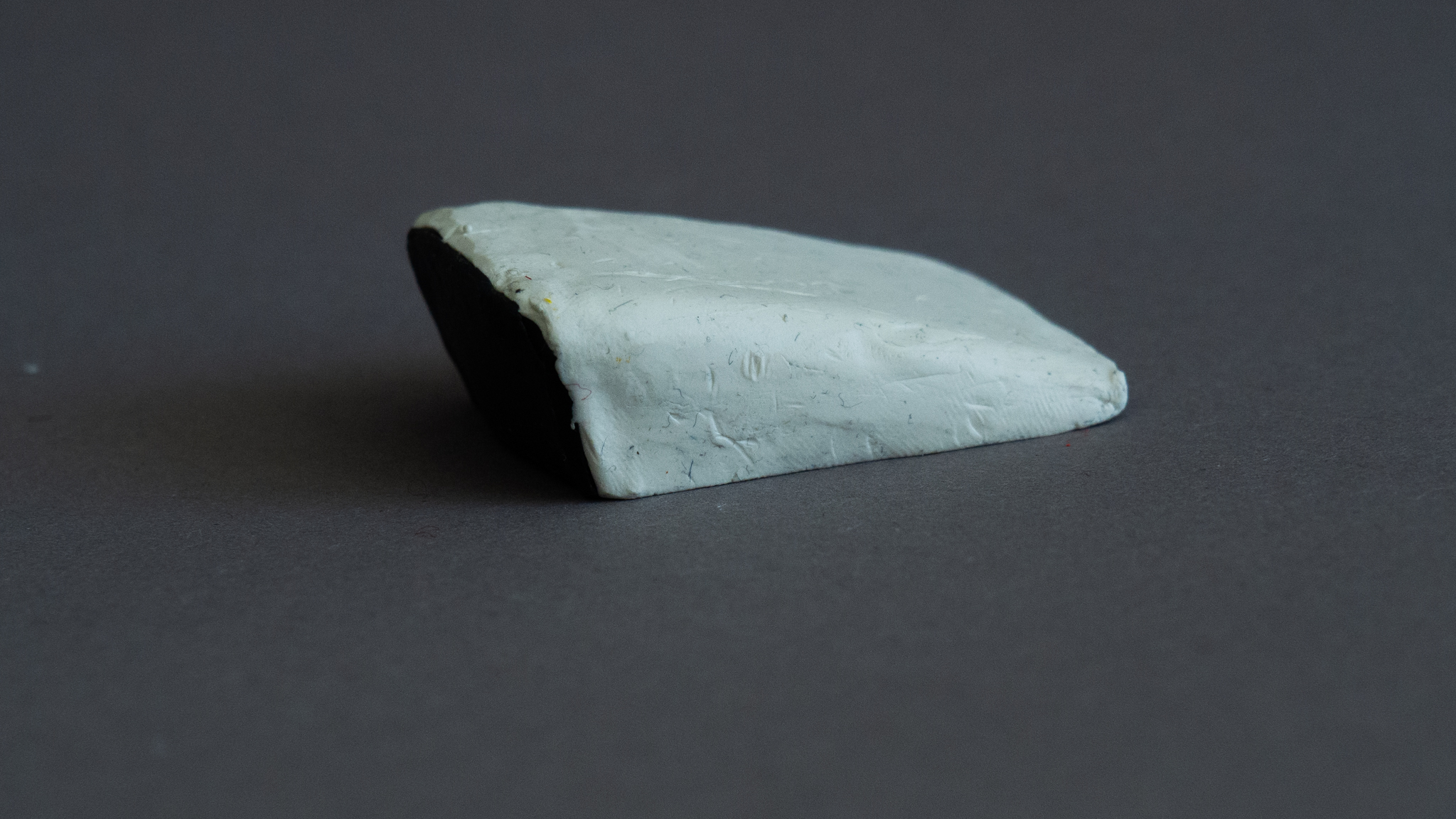
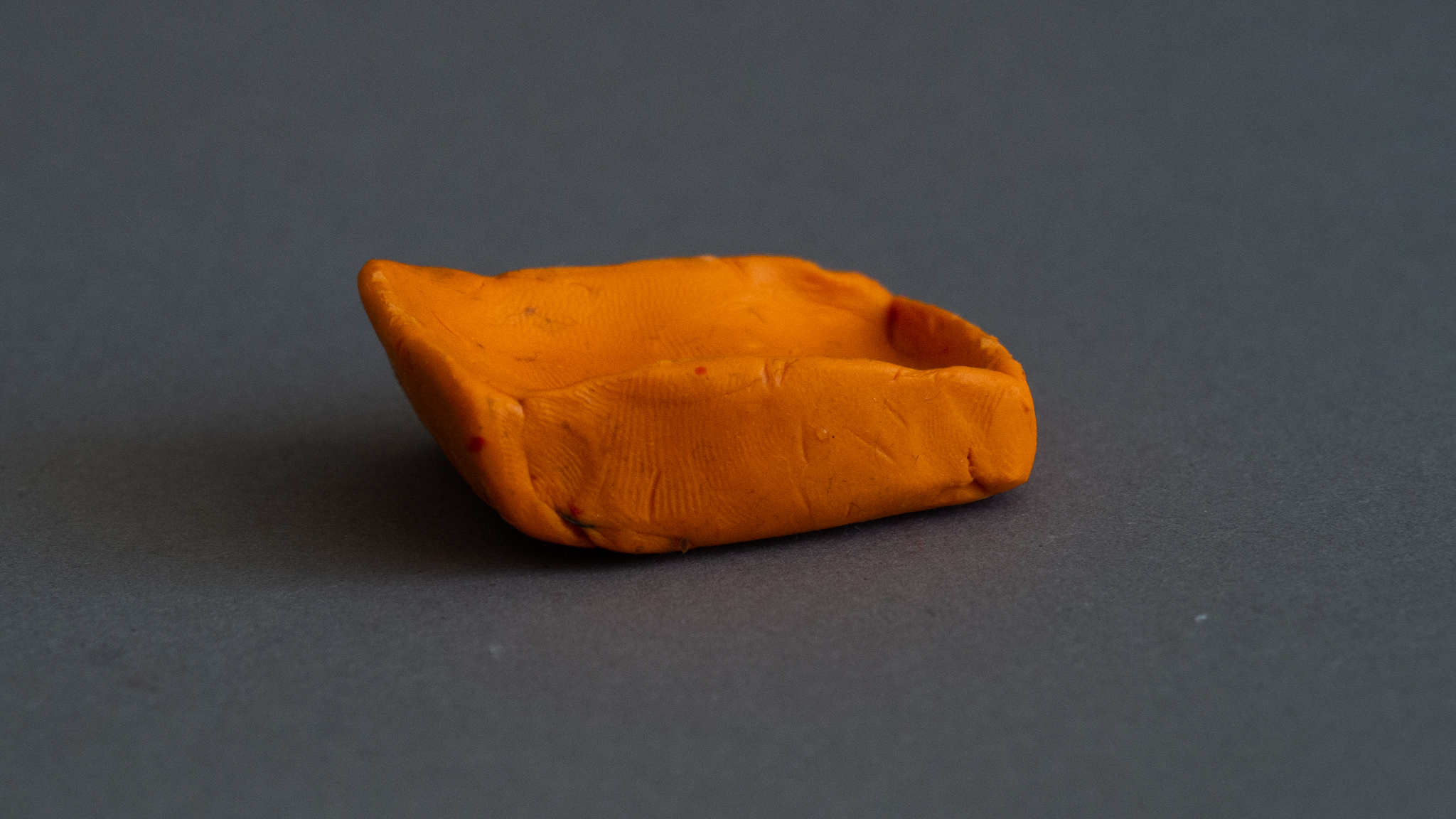
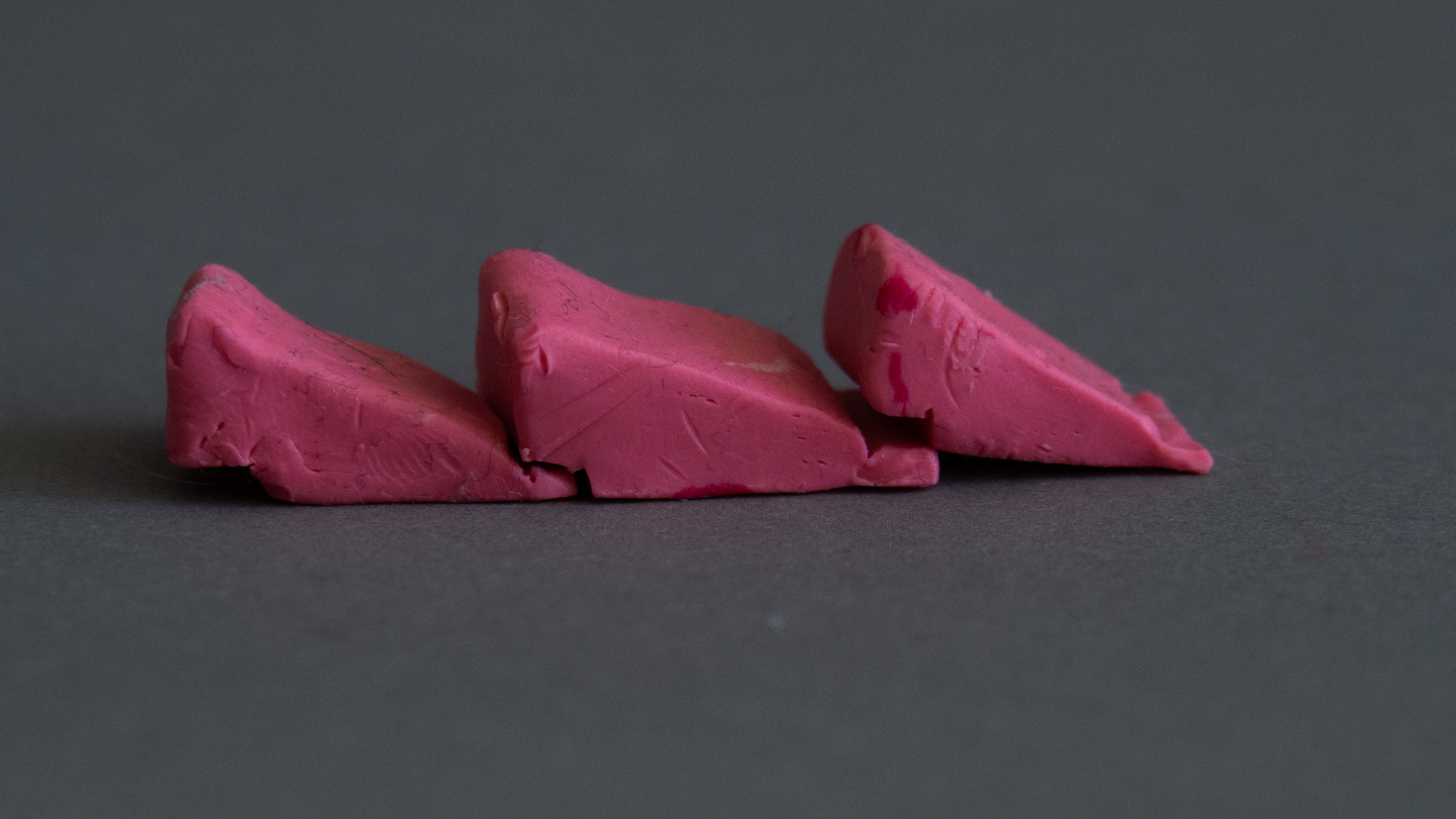
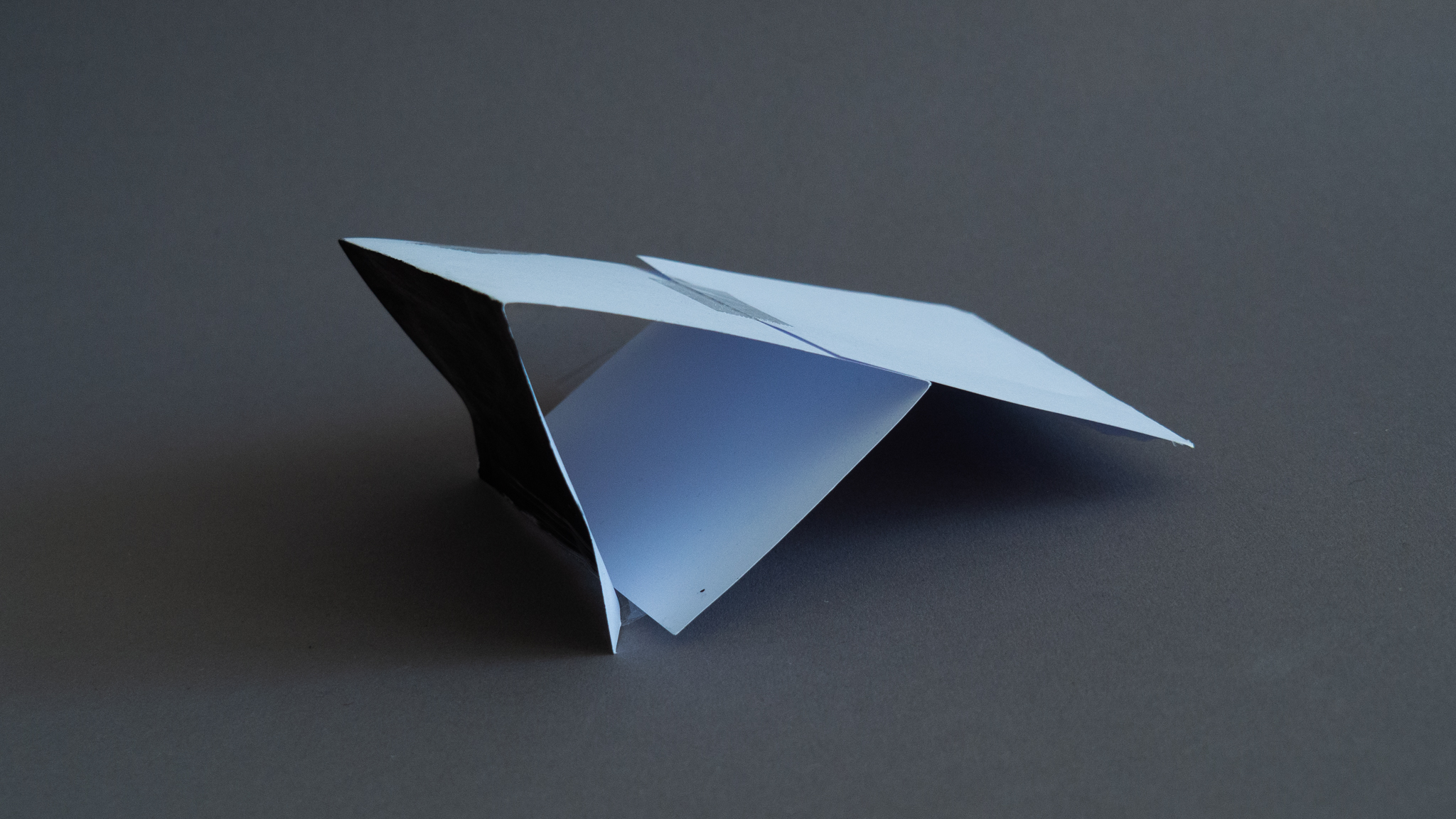
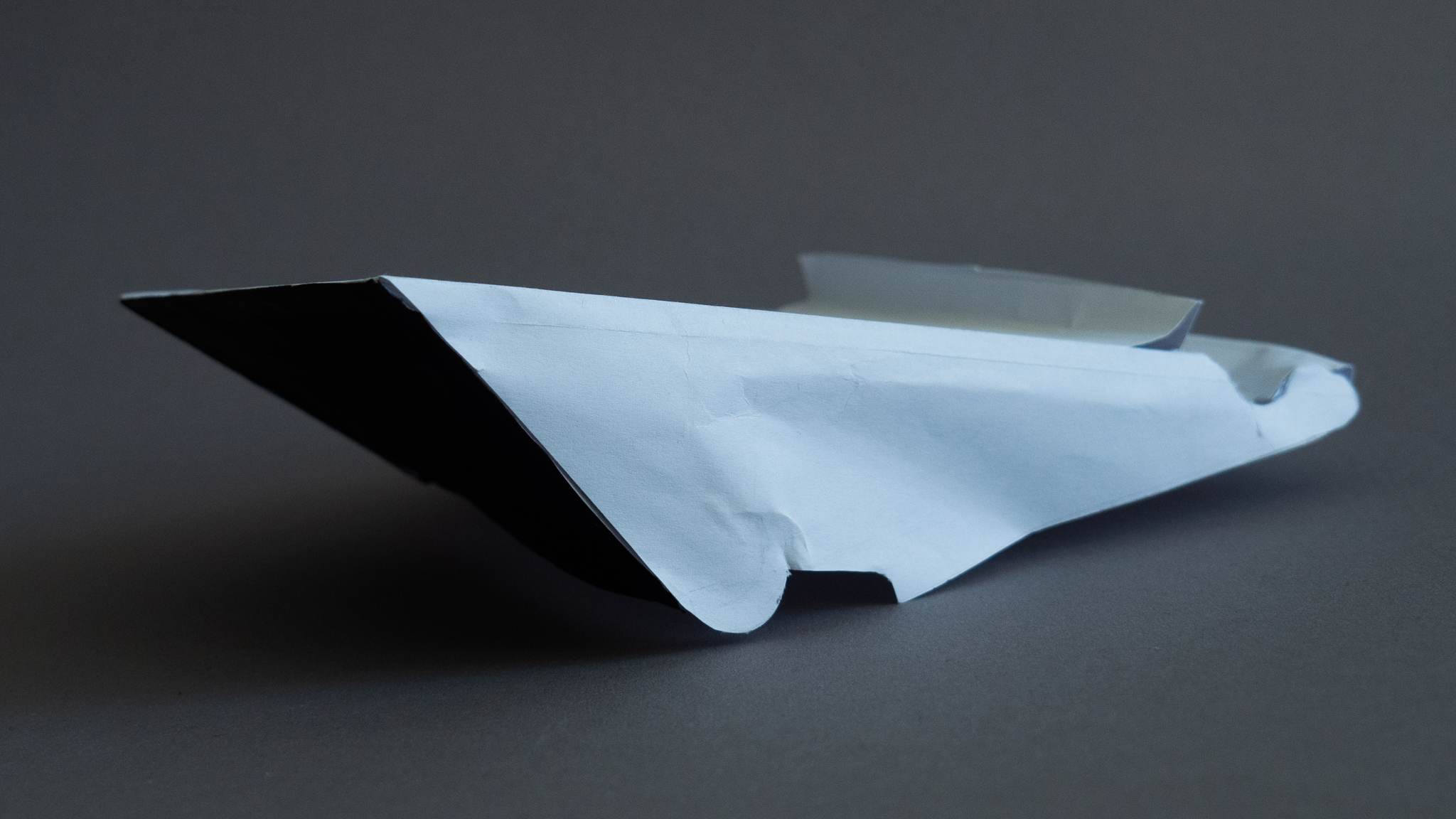
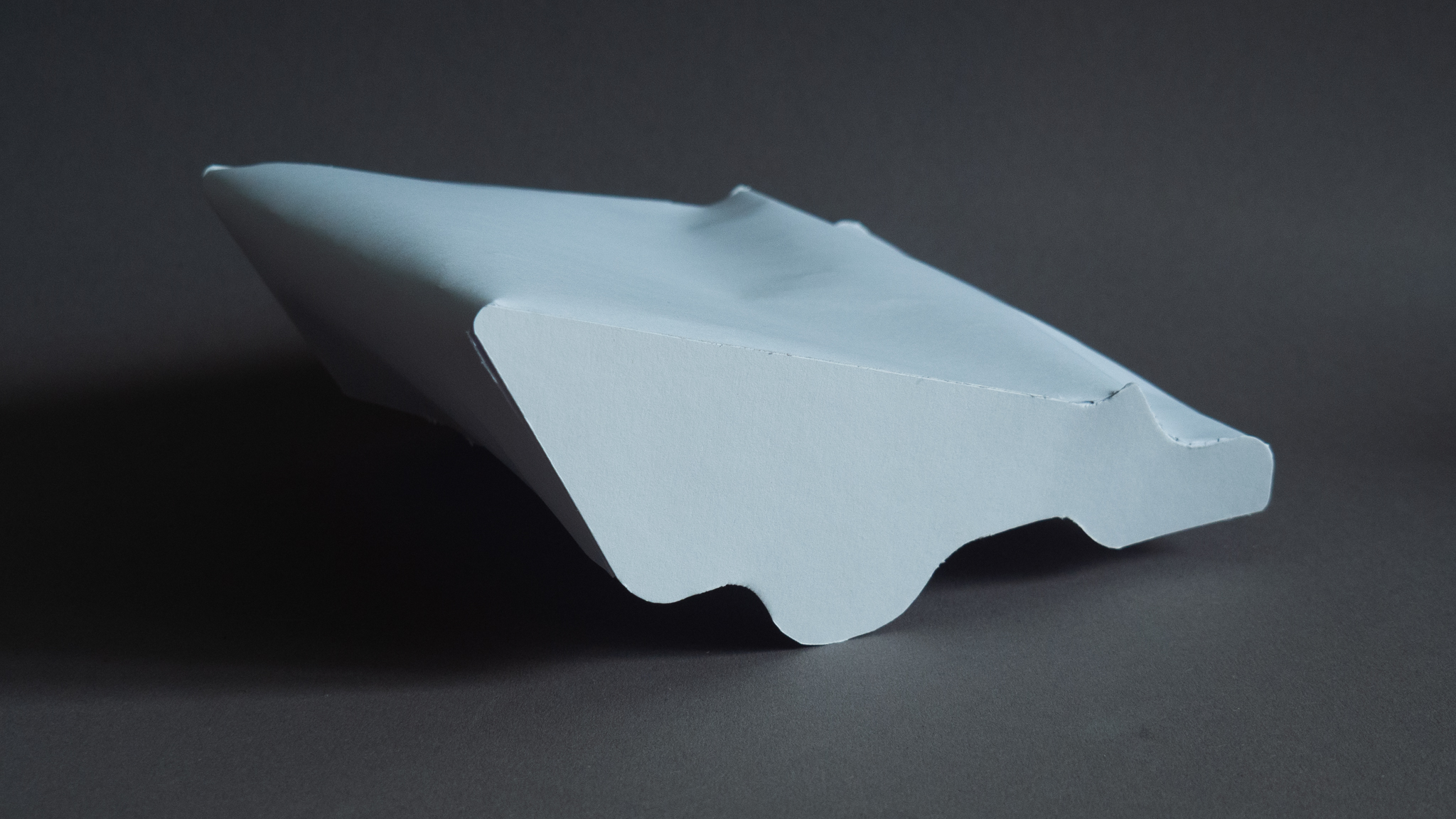
Can’t we give our trees a hand?
NESSI contributes to the saving of urban greens tackling the draught of city trees with an irrigation system on pavements that makes use of the existing infrastructure of hydrants.
FACT:
• There is an enormous public demand for cities to have a high-quality and sufficiently dimensioned green infrastructure as greens counteract the urban heat-island effect and provide fresh air particularly to dense areas.
• In Berlin, 430 000 city trees are located. Over the last two years, 7000 of these trees have died as a consequence of drought.
• Too small tree grates are a significant reason for city tree drought. The down seeping water flows through the surface to the roots. In Berlin, tree grates typically only measure 1.50 by 1.50m. Forest trees, by comparison, have the area of their crowns irrigated when raining– this is around 10 times greater.
• Under these circumstances, city trees, on pavements especially, are only able to store minimal water and can’t photosynthesise properly. The additional burden of climate change, like more frequent heat waves, leads to decreased biomass and leaves and subsequently to the death of the trees…
• At the same time, there is a functioning water cycle system under Berlin’s pavements. Underground hydrants provide access to the supply lines and are located next to the trees. To stay fit, the city’s water cycle system and hydrants should be used regularly.
ACT:
Can’t we give our trees a hand?
• NESSI hacks the existing system of pavement hydrants that have direct access to the water supply lines.
• To share the water, NESSI docks to a hydrant and winds its way through Berlin’s streets from bottom to top.
• From the hydrant, water is directed automatically to the trees through NESSI’s pipeline that lies under the pavement and pops up by the trees.
• NESSI marks the trees that are part of the network with colourful steel tube objects that offer various usage possibilities for us residents.
• Regardless of accidental or purposeful damage, once installed, the objects can easily be mounted and changed.
IMPACT:
• Thanks to NESSI, hydrants are well maintained, and continue to provide easy access for firefighters when needed.
• NESSI contributes to the saving of urban greens tackling the draught of city trees with a simple irrigation system on pavements that makes use of the existing infrastructure of hydrants.
• Watering city trees with small water reservoirs optimized, regularly and self sufficiently, NESSI keeps them healthy. Especially in phases of growth, NESSI can be a support for urban greens.
• Additional impact: Making use of the existing infrastructure of hydrants, NESSI keeps hydrants always well flushed and therefor in good condition.
Kim Kuhl, MA Anp.Studium, WS 2020/21
Project:
 NESSI objects
NESSI objects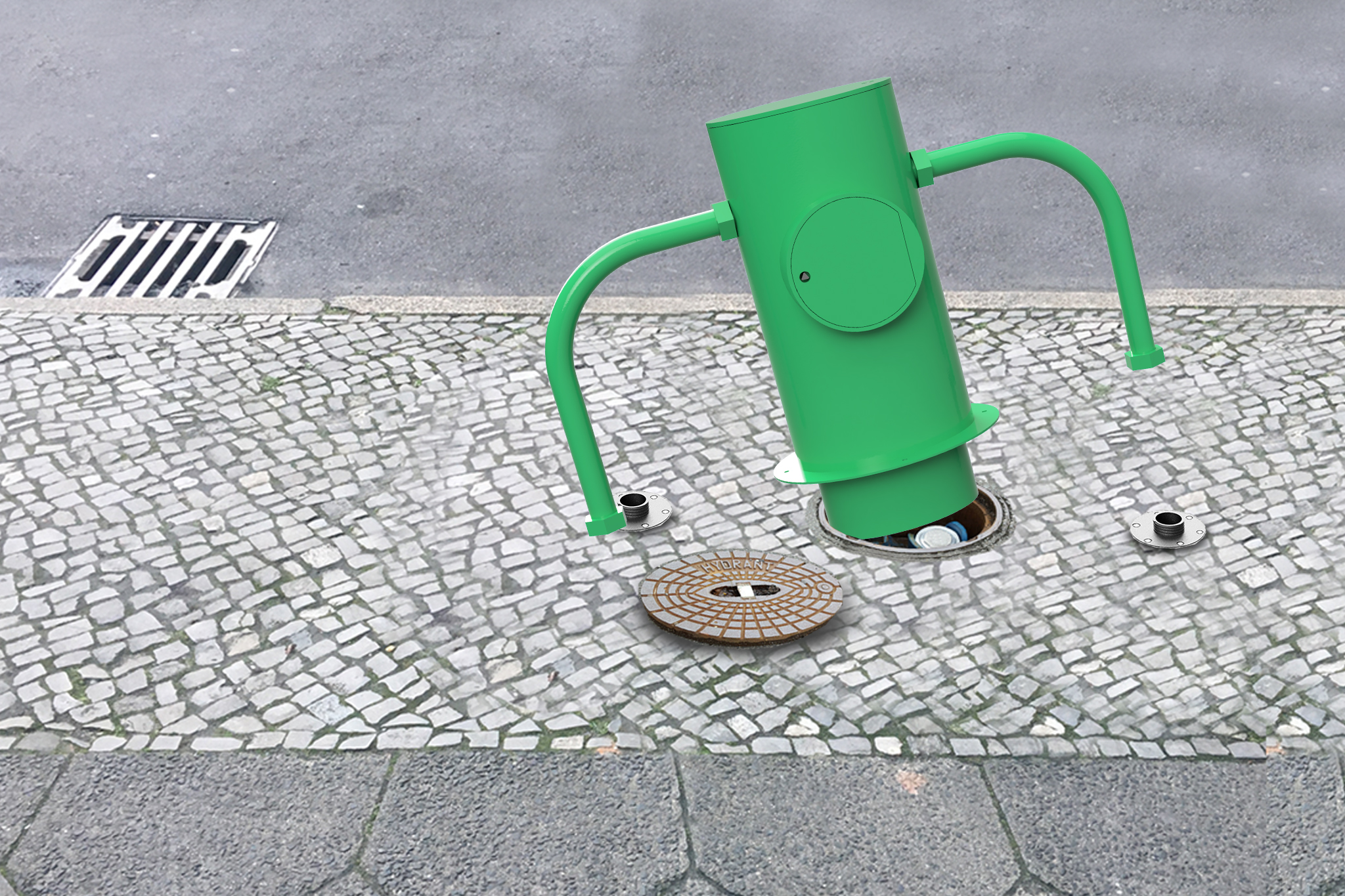 NESSI docking to a hydrant
NESSI docking to a hydrant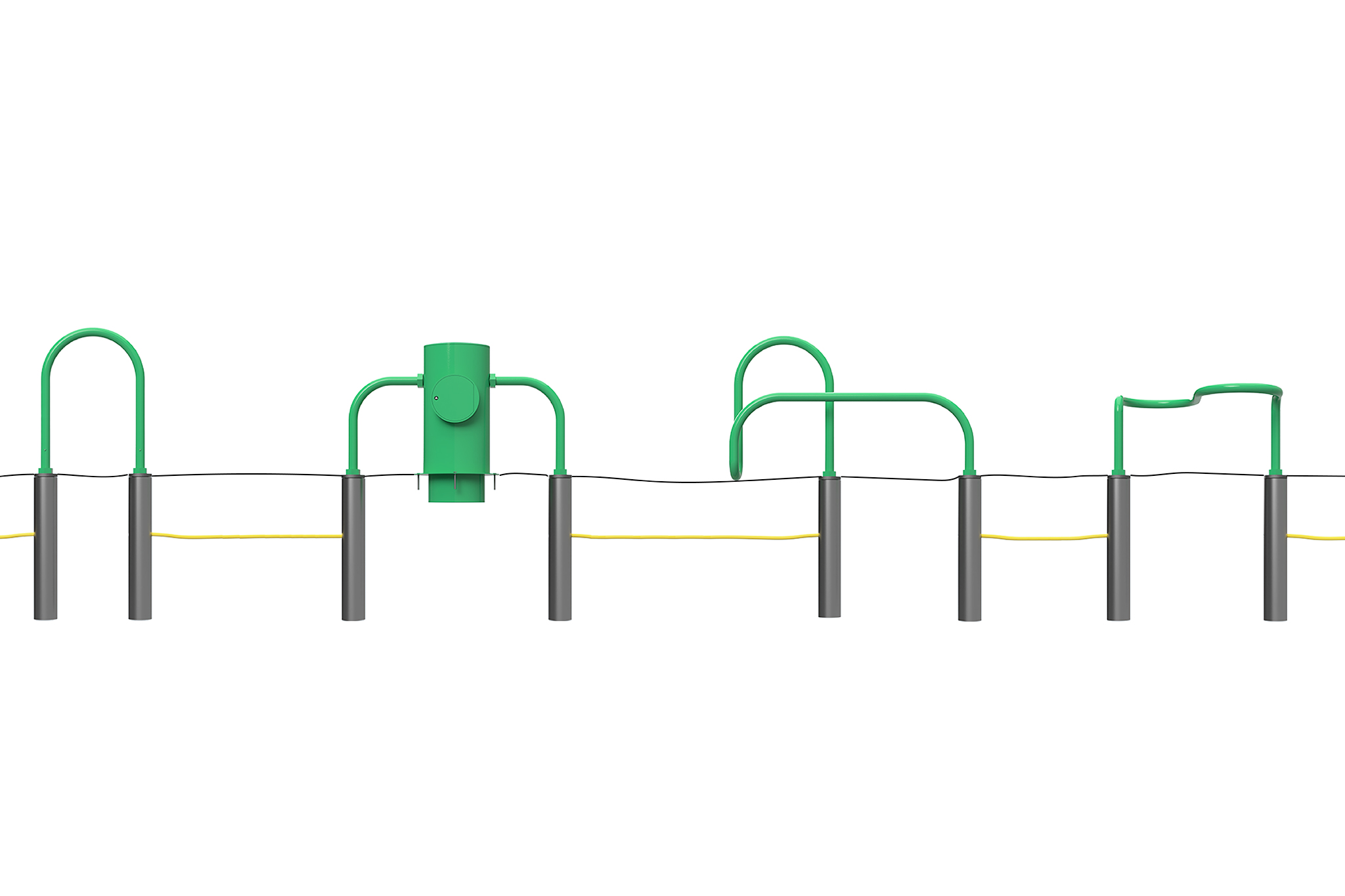 NESSI system
NESSI system
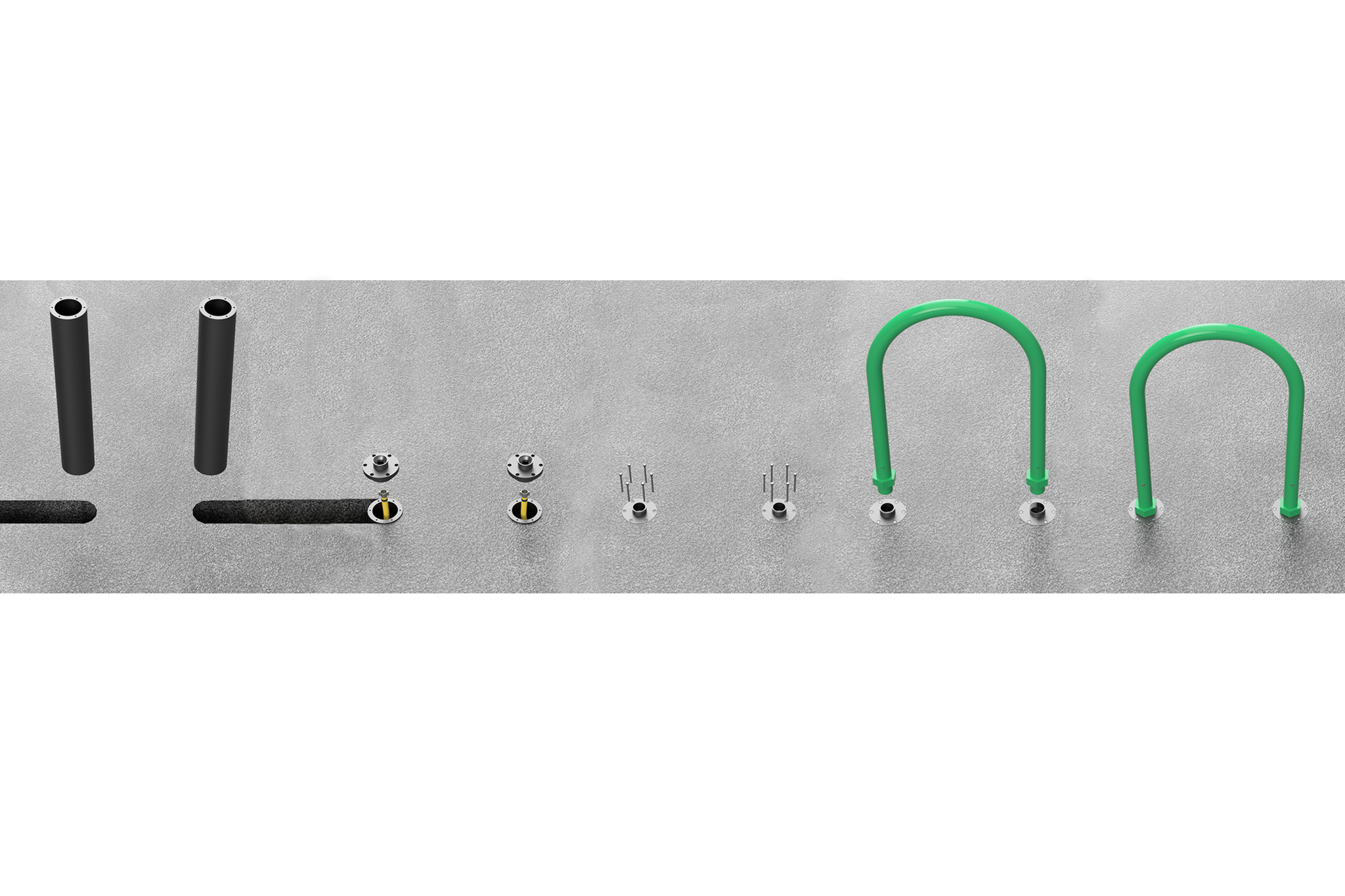 NESSI installation
NESSI installation
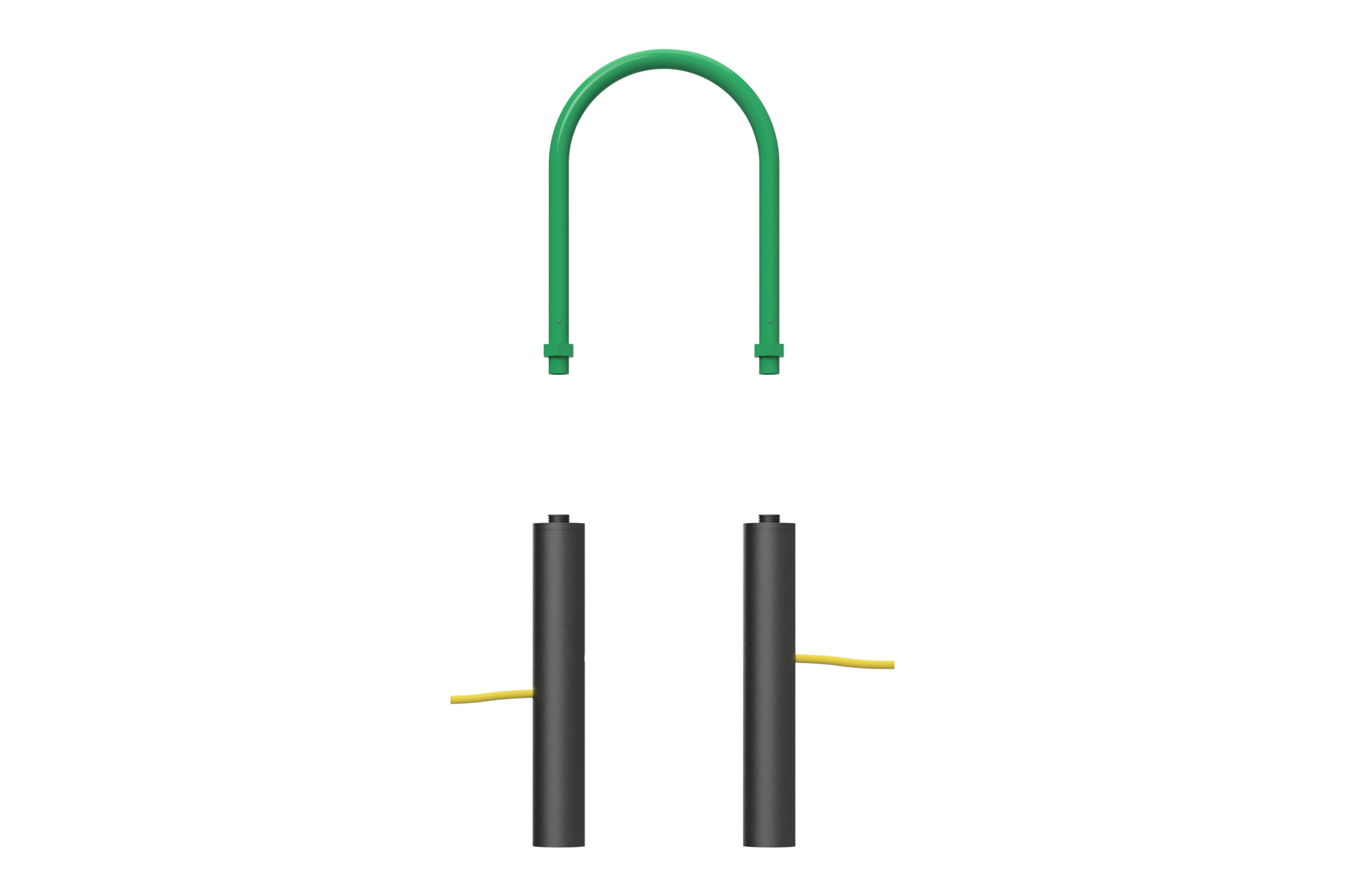 NESSI mounting
NESSI mounting
 NESSI underground construction
NESSI underground construction
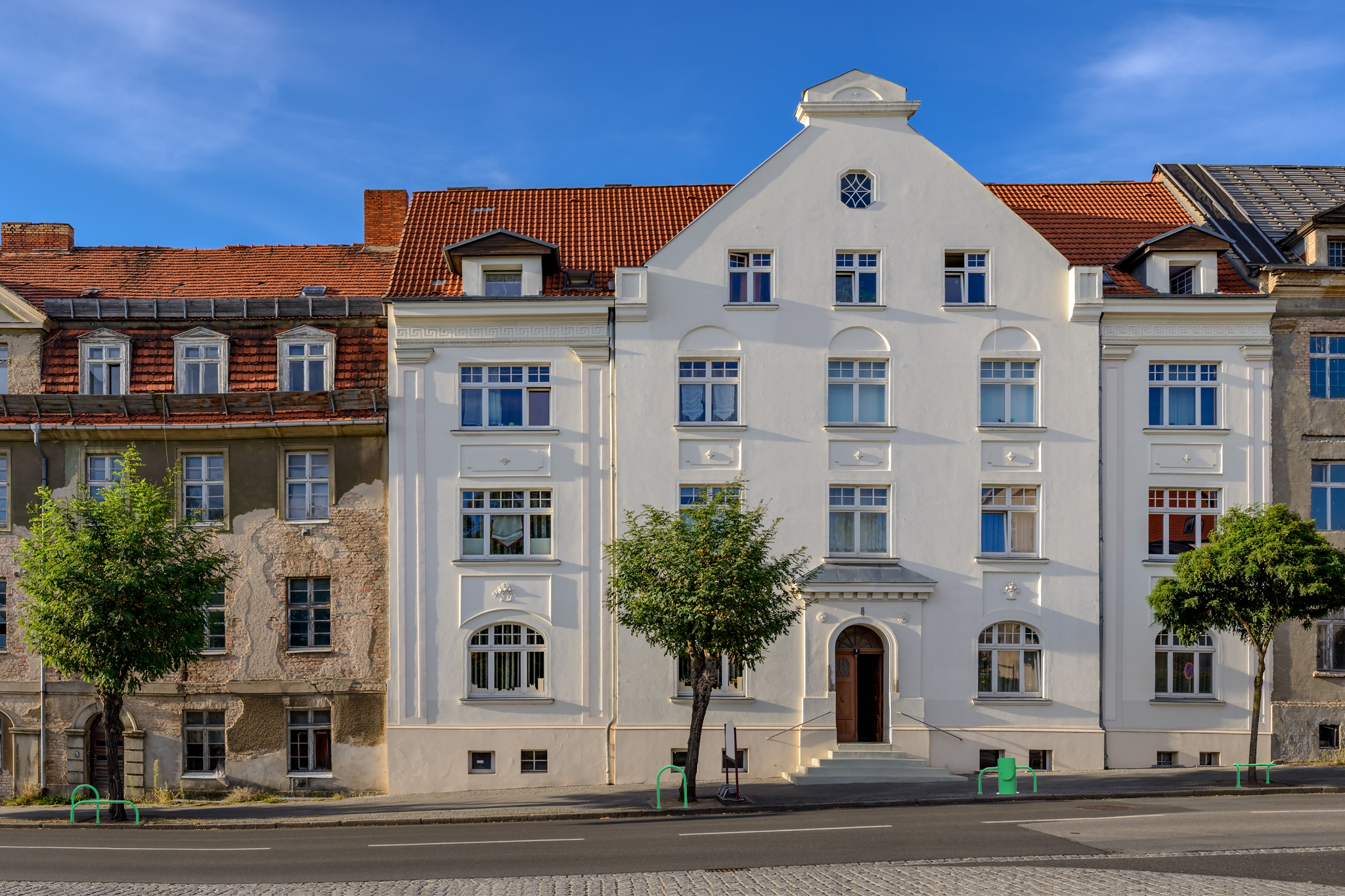 NESSI winds its way from bottom to top
NESSI winds its way from bottom to top
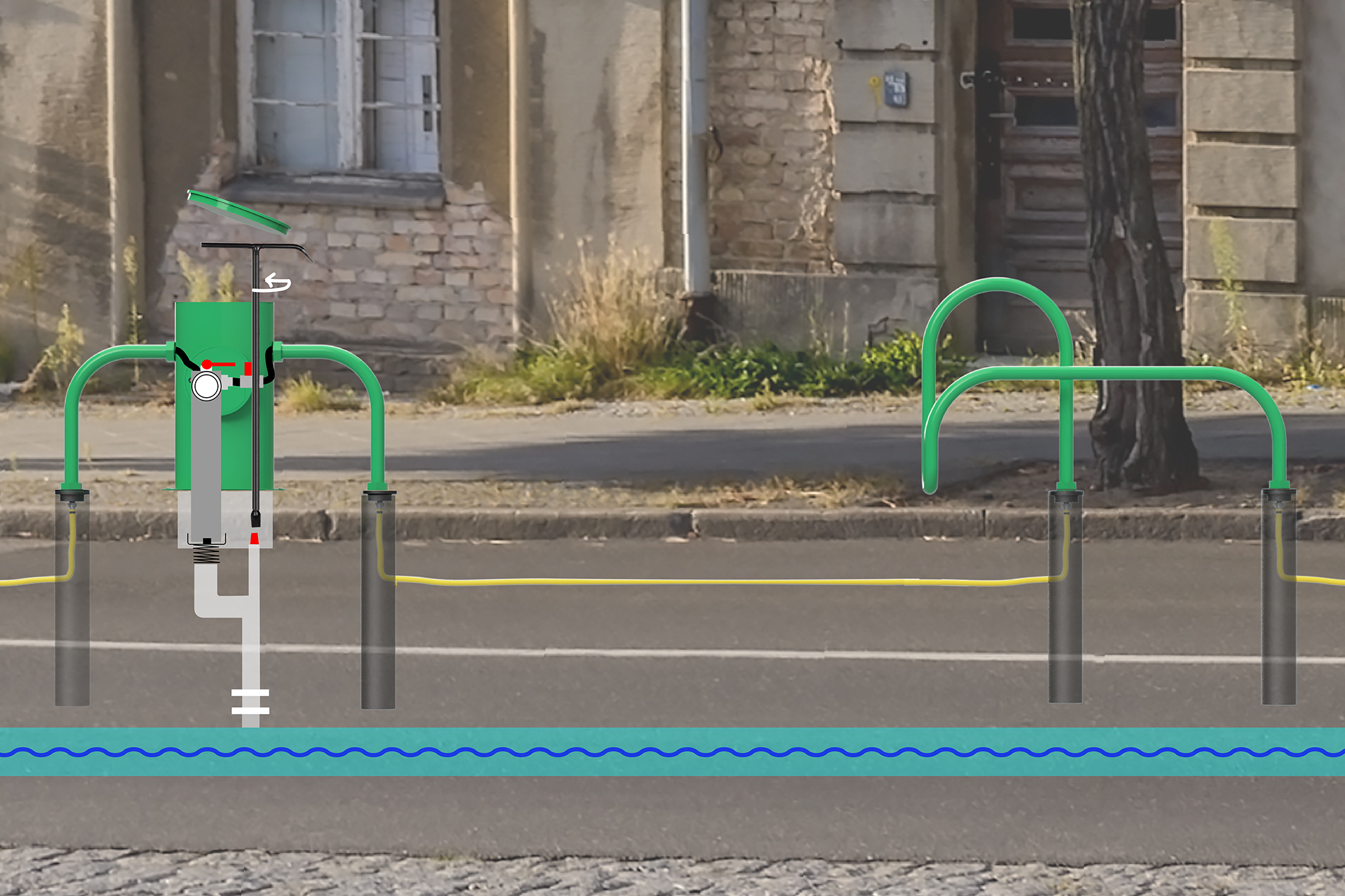 NESSI system: turning on/off with hydrant wrench, maintaining
NESSI system: turning on/off with hydrant wrench, maintaining
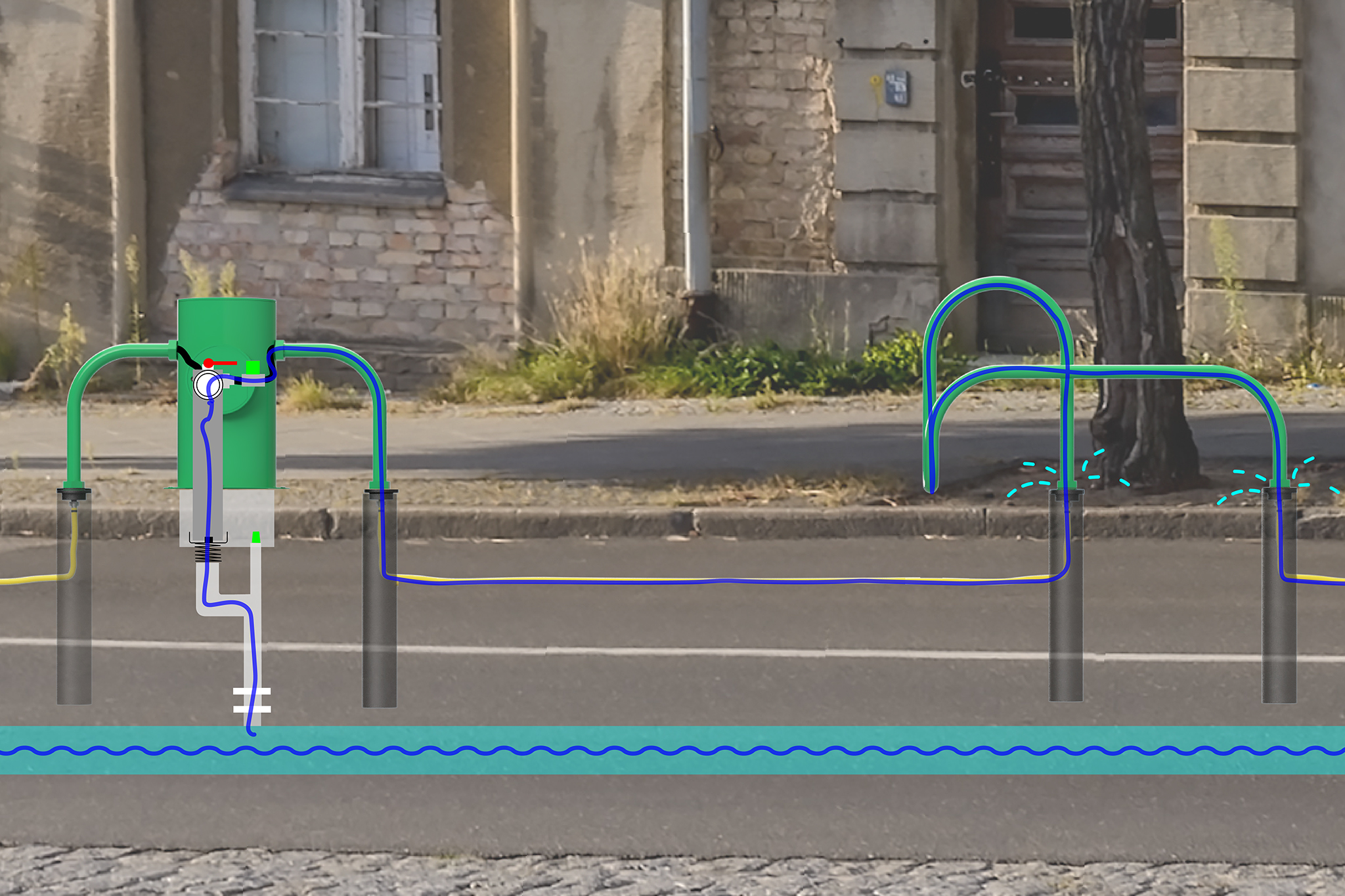 NESSI system: irrigating
NESSI system: irrigating
 NESSI system: access for fire brigade
NESSI system: access for fire brigade
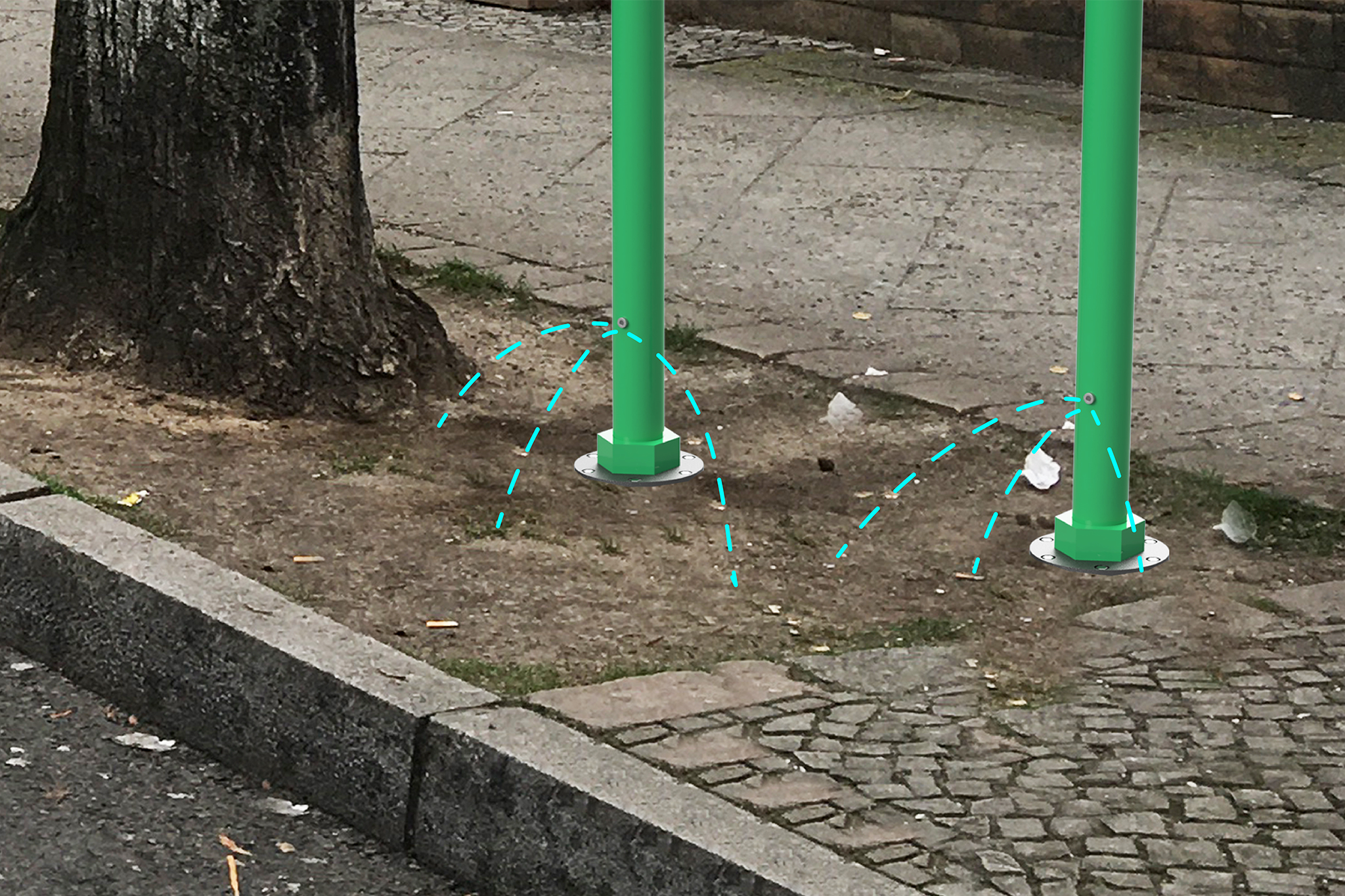 NESSI watering
NESSI watering
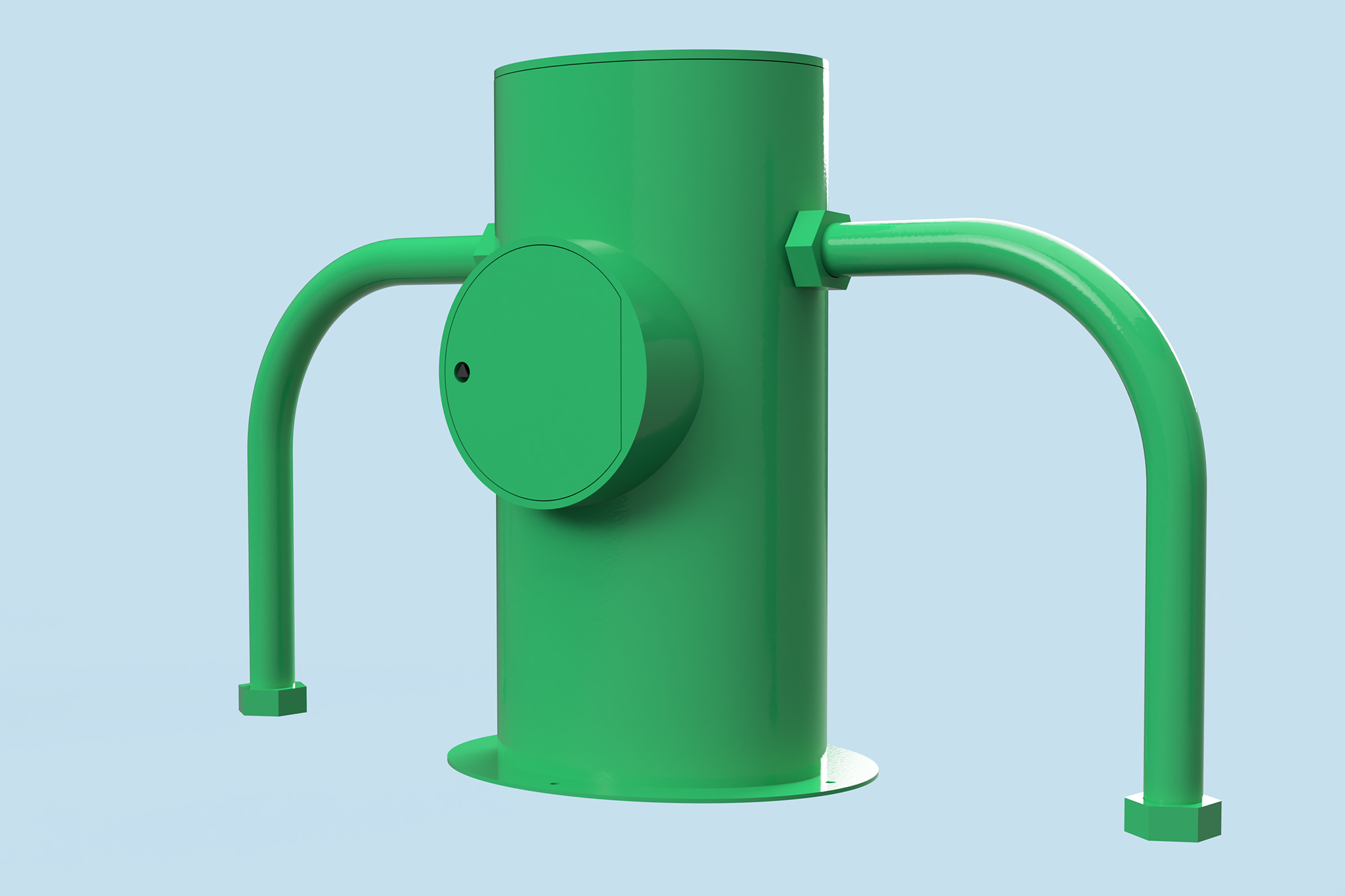 NESSI object 0
NESSI object 0
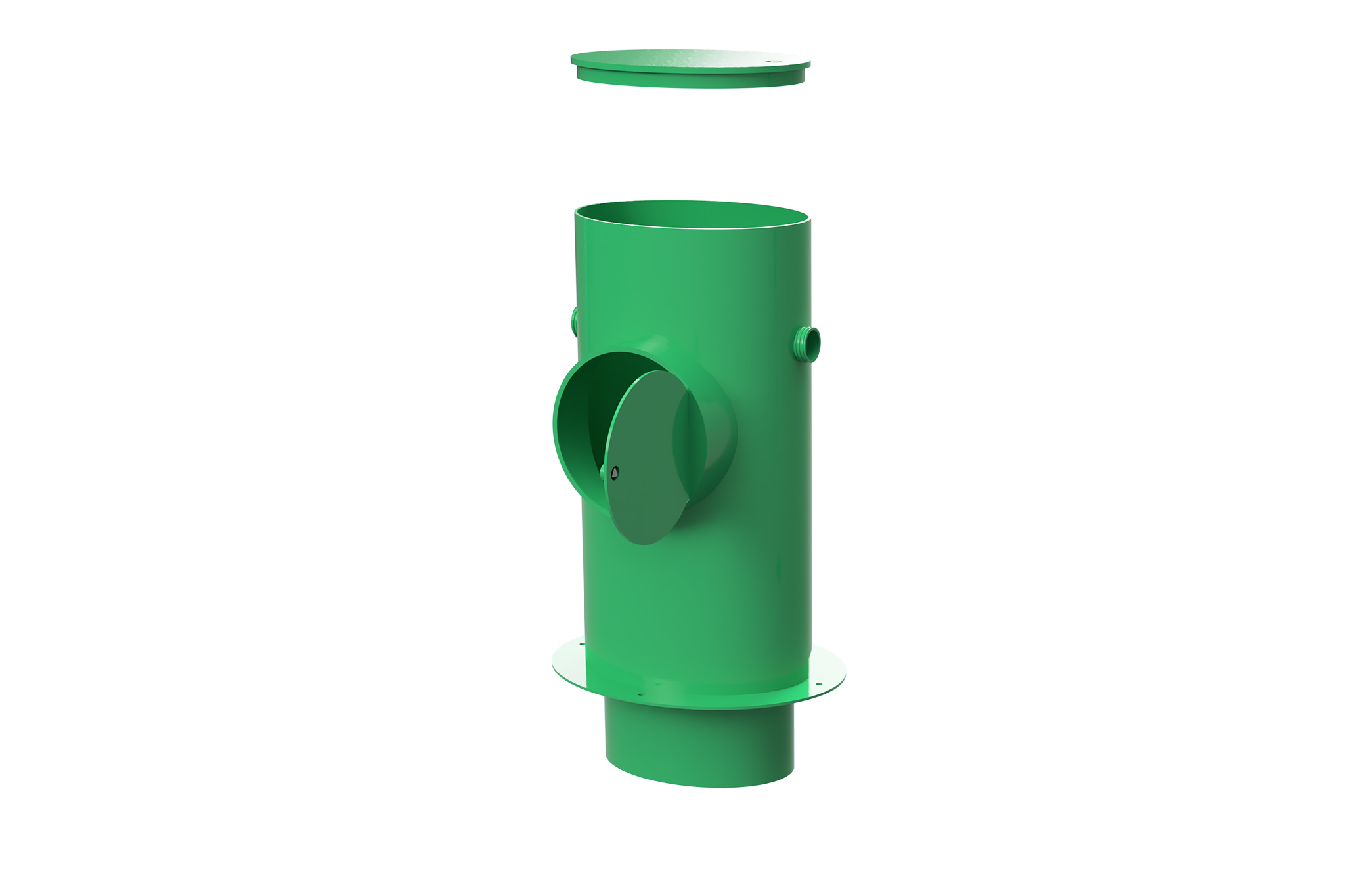 NESSI object 0 without arms
NESSI object 0 without arms
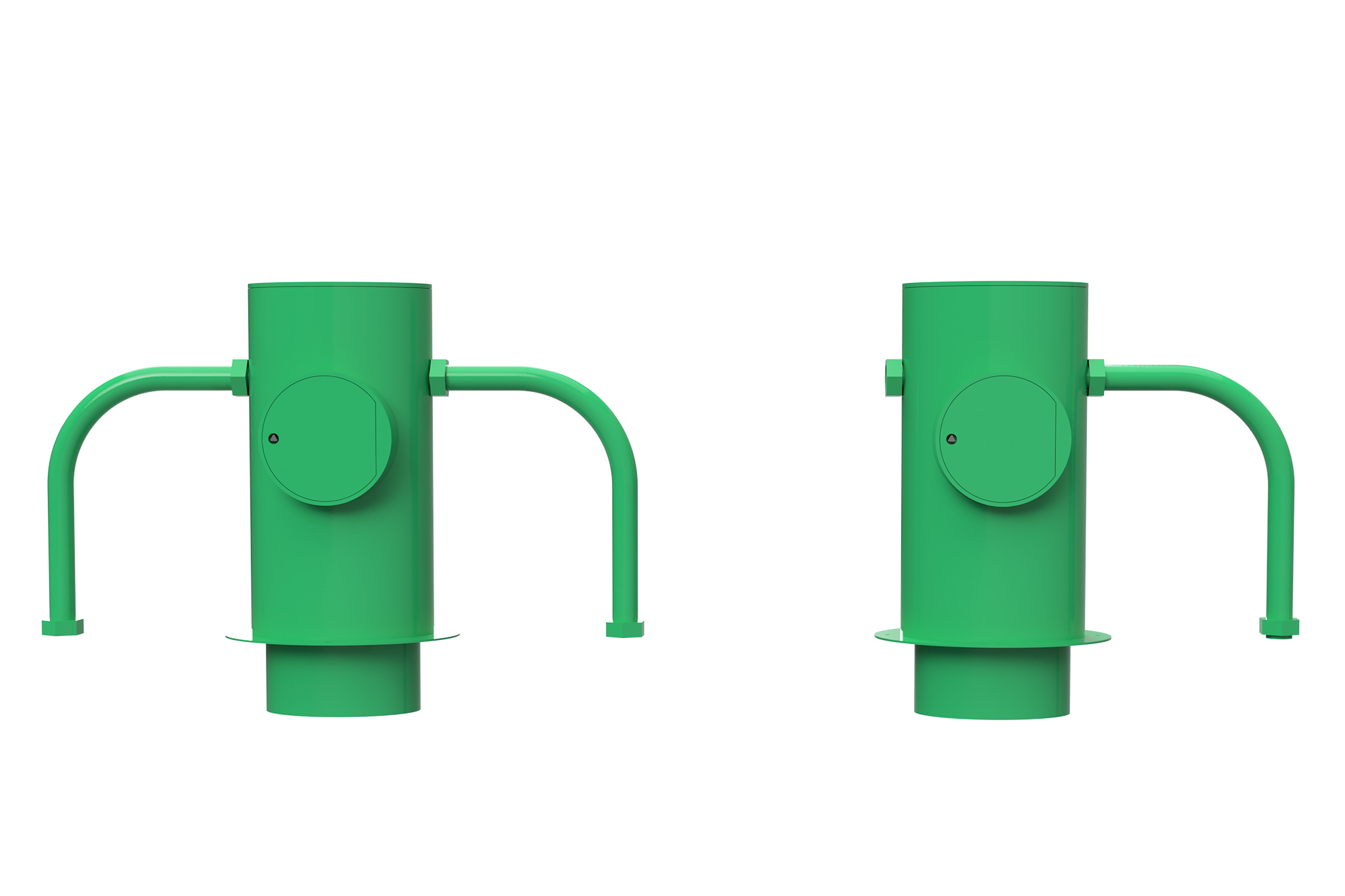 NESSI object 0 with two and one arm
NESSI object 0 with two and one arm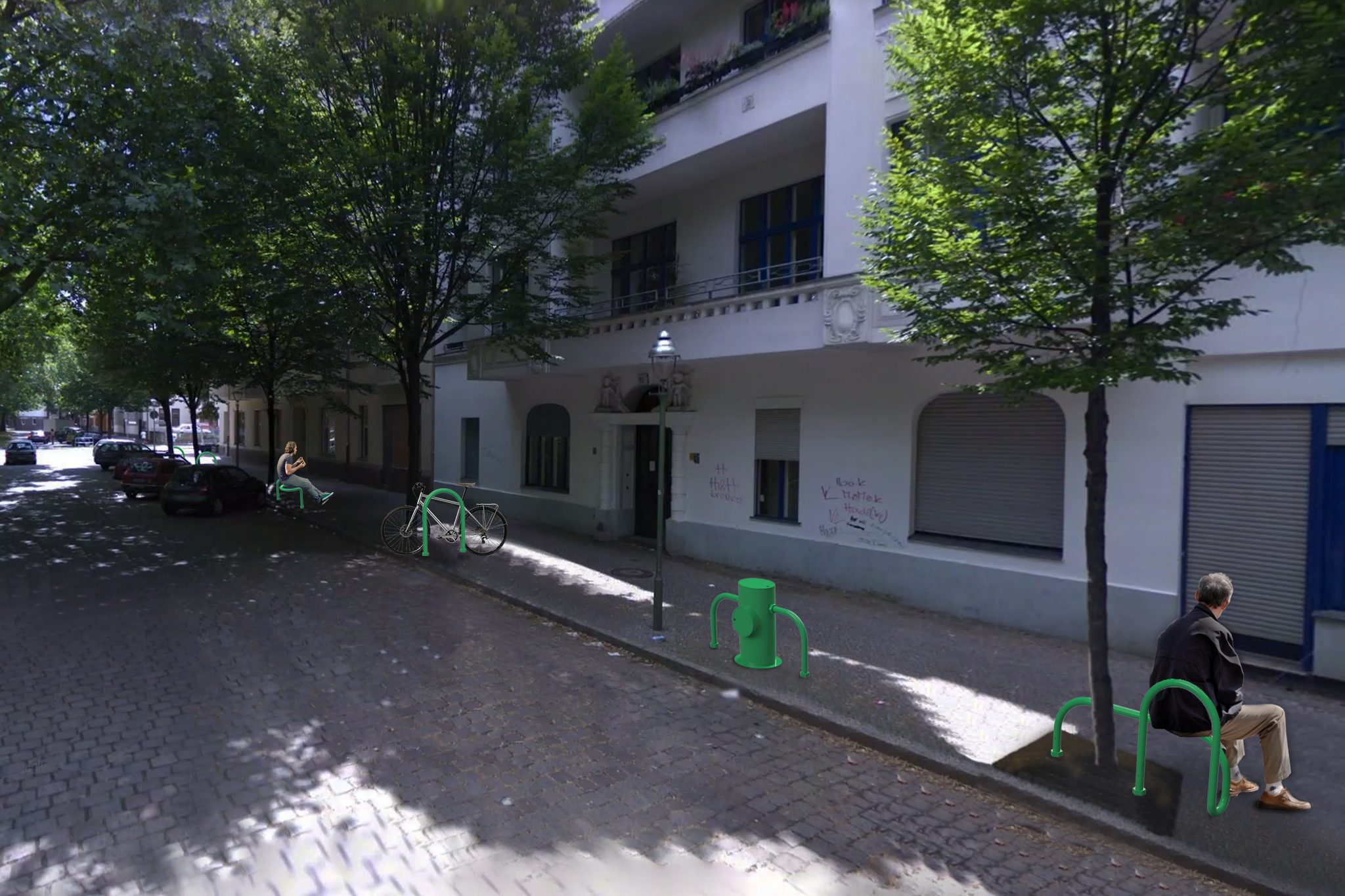 NESSI in Berlin street
NESSI in Berlin street
Process:
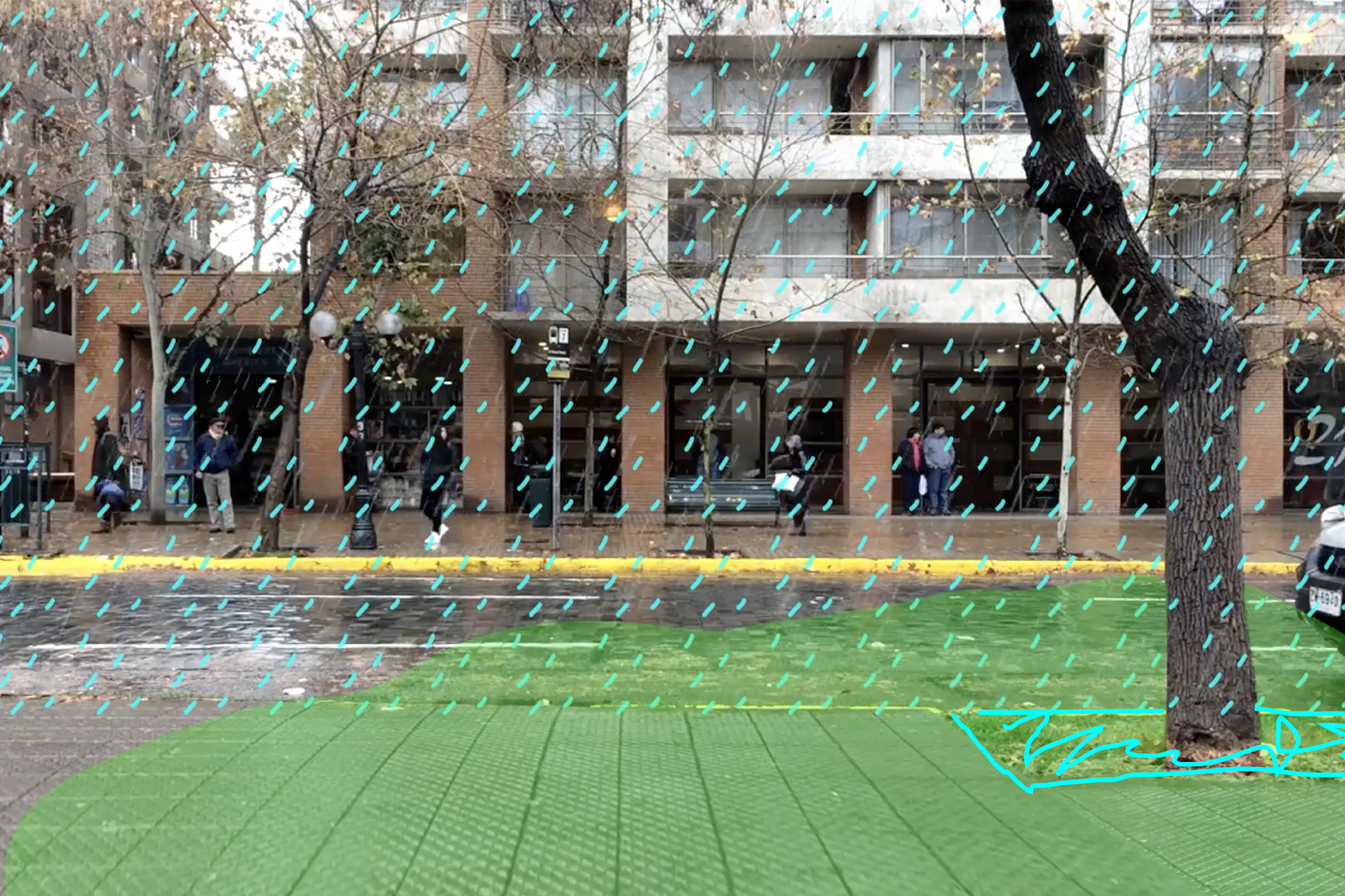 forest trees vs city trees
forest trees vs city trees
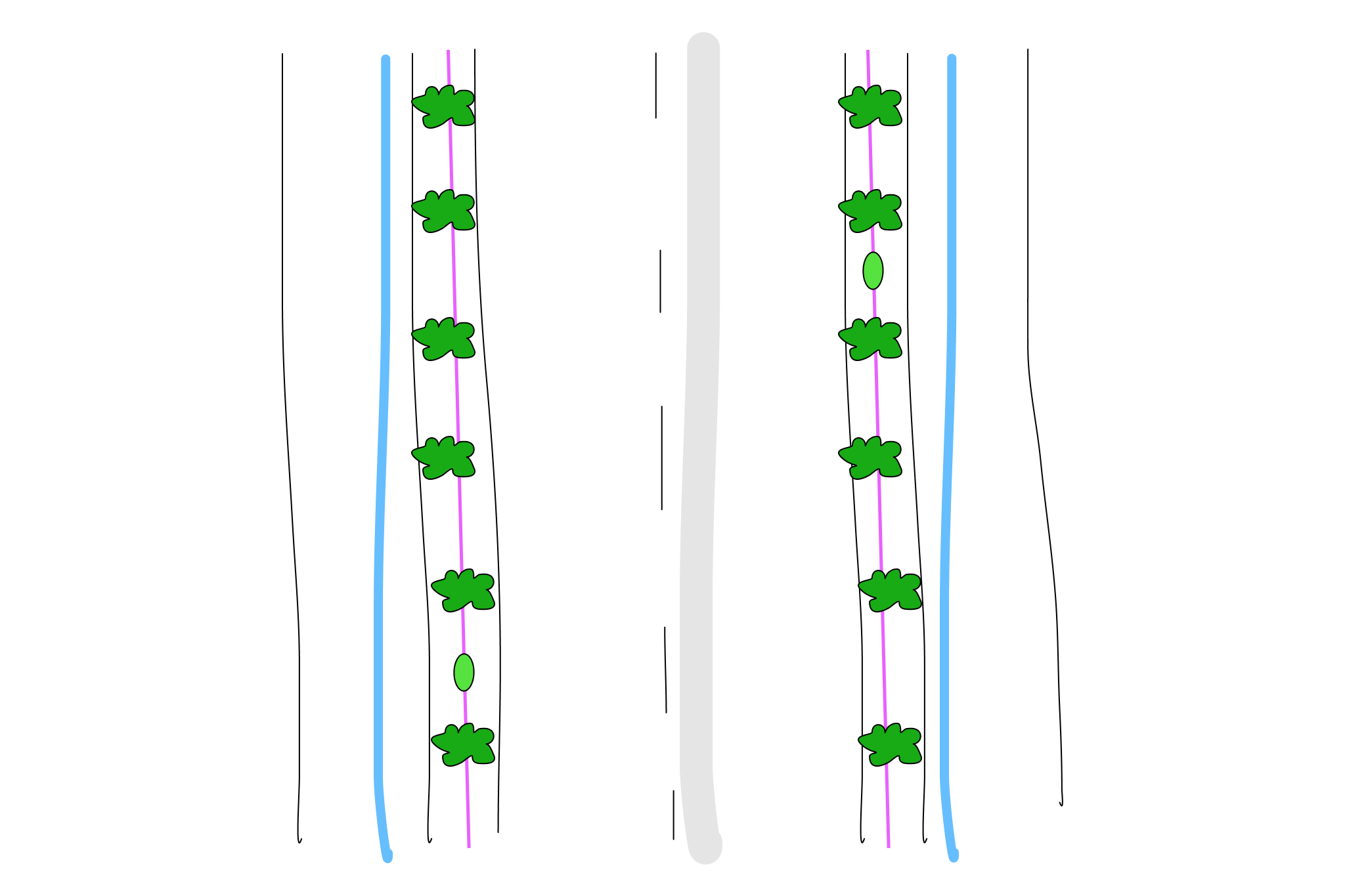 pipeline for trees
pipeline for trees
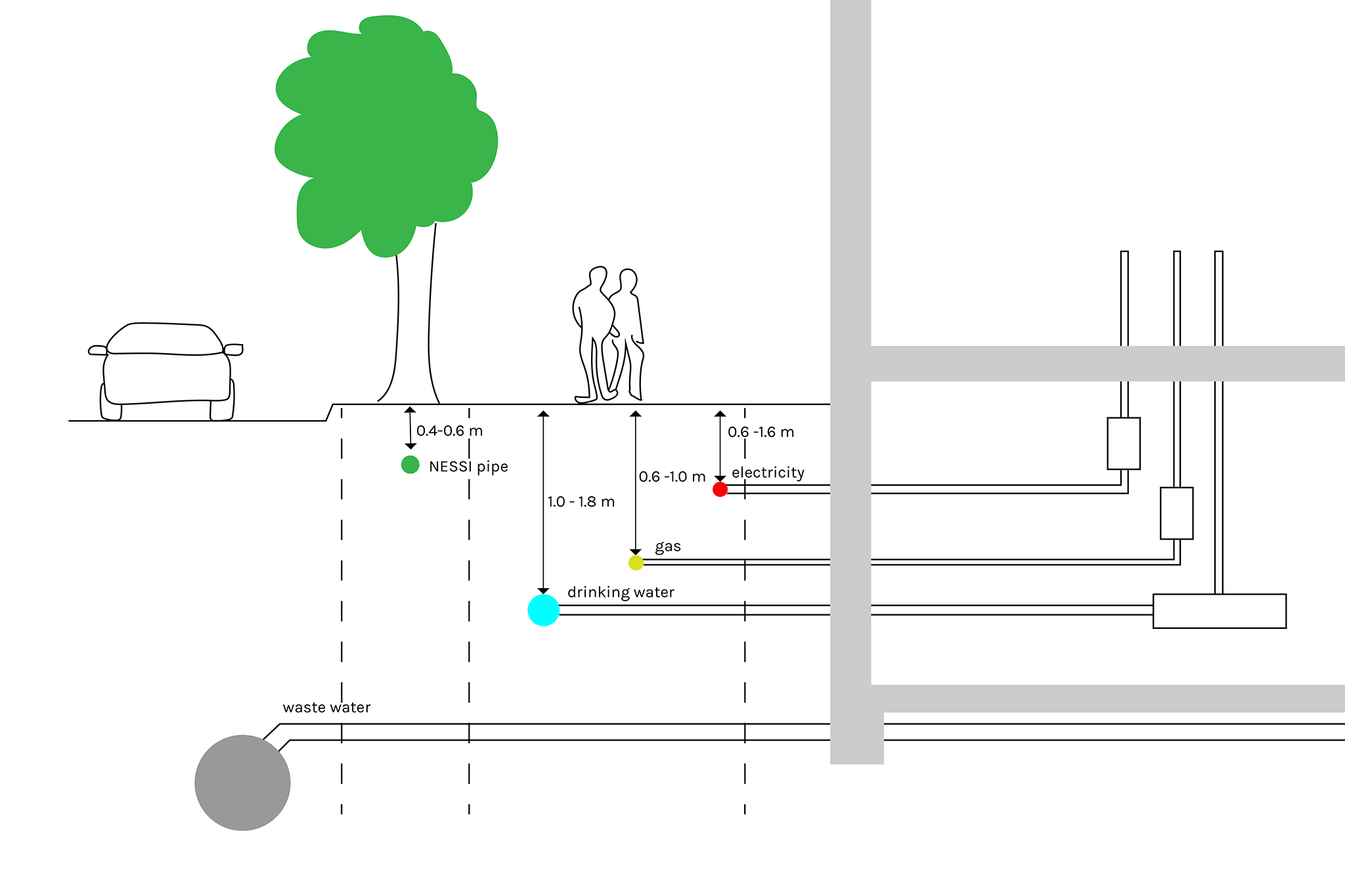 possible pipe location
possible pipe location
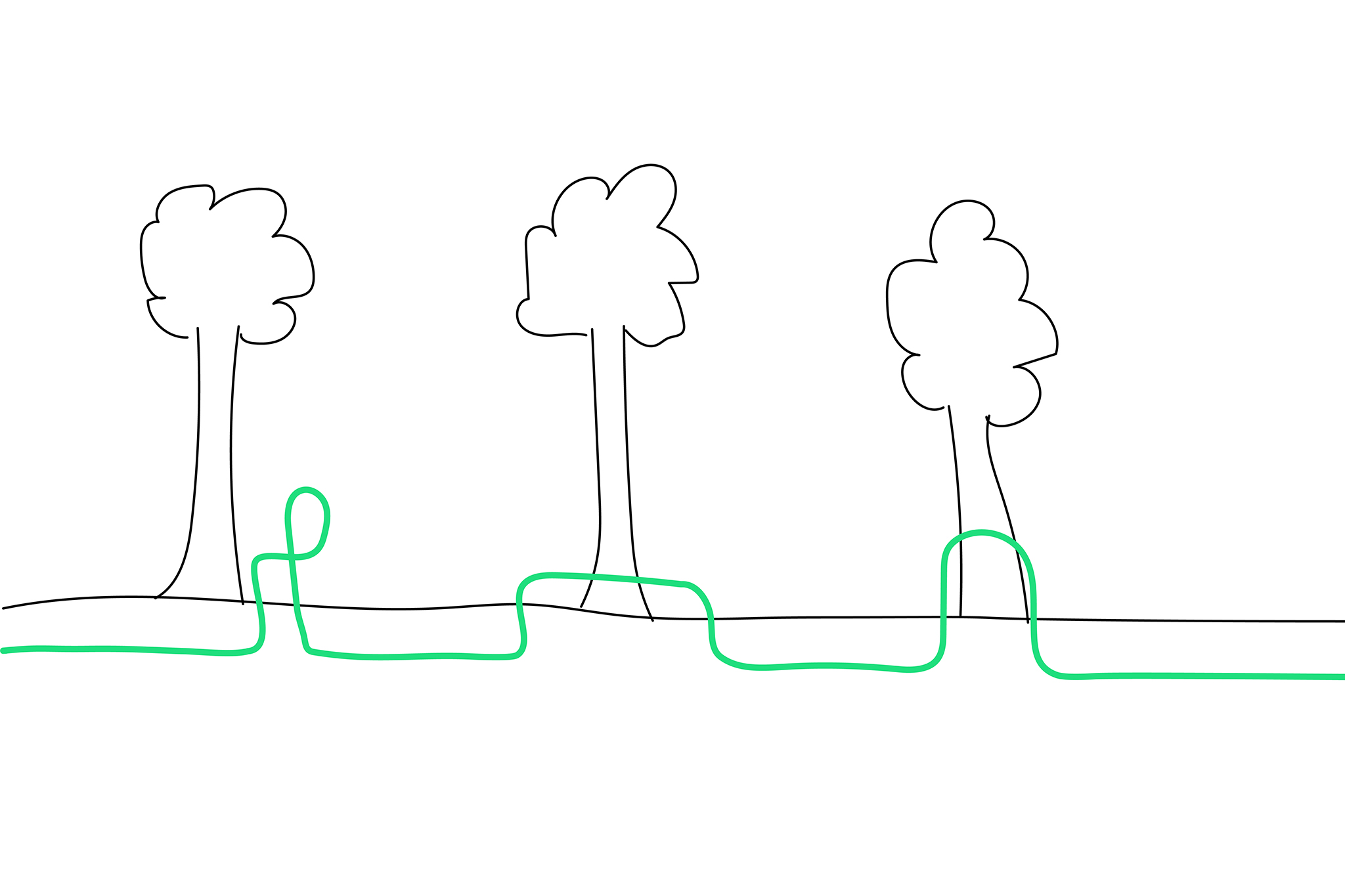 concept Loch Ness monster
concept Loch Ness monster
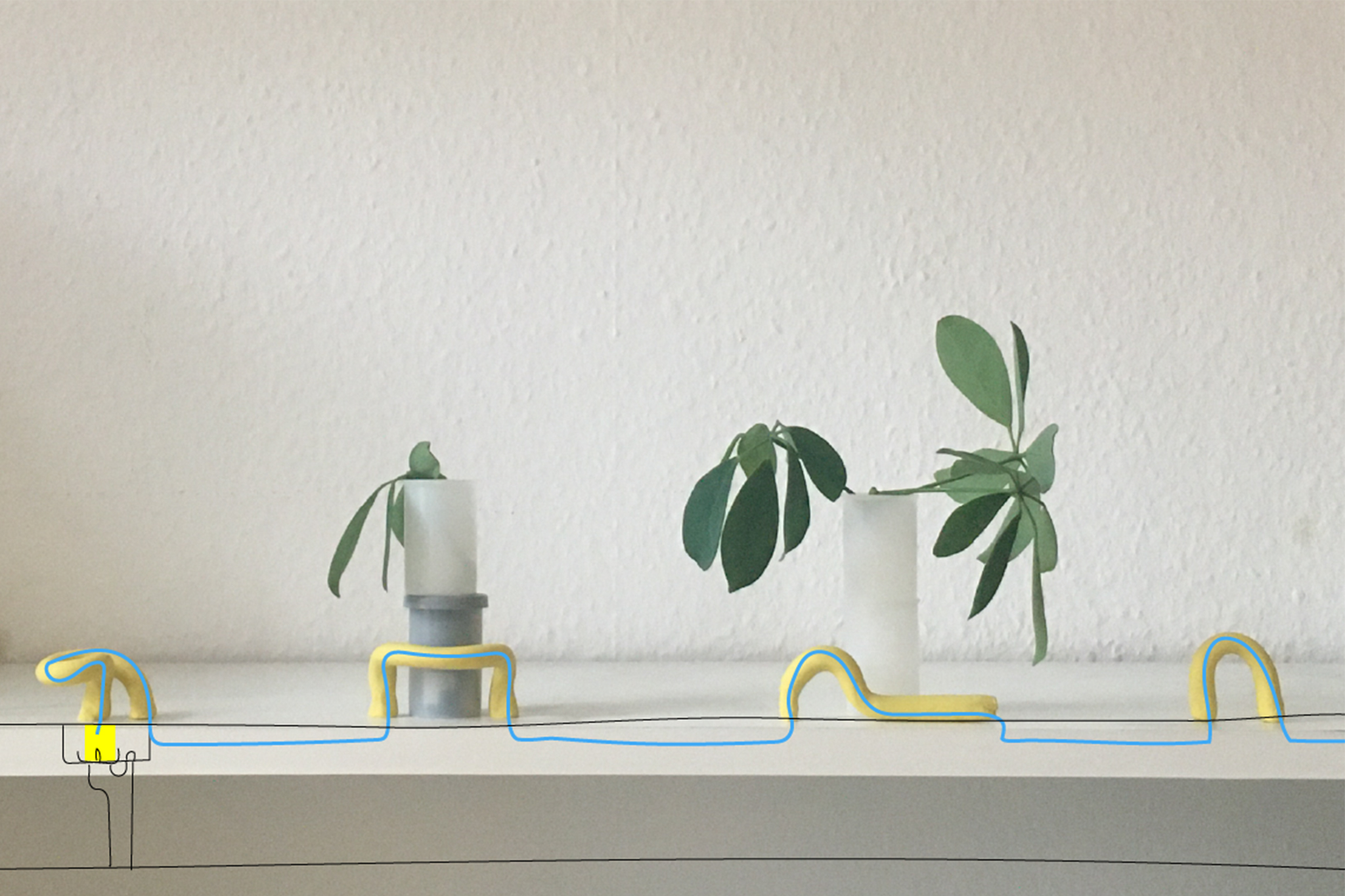 model modelling clay
model modelling clay
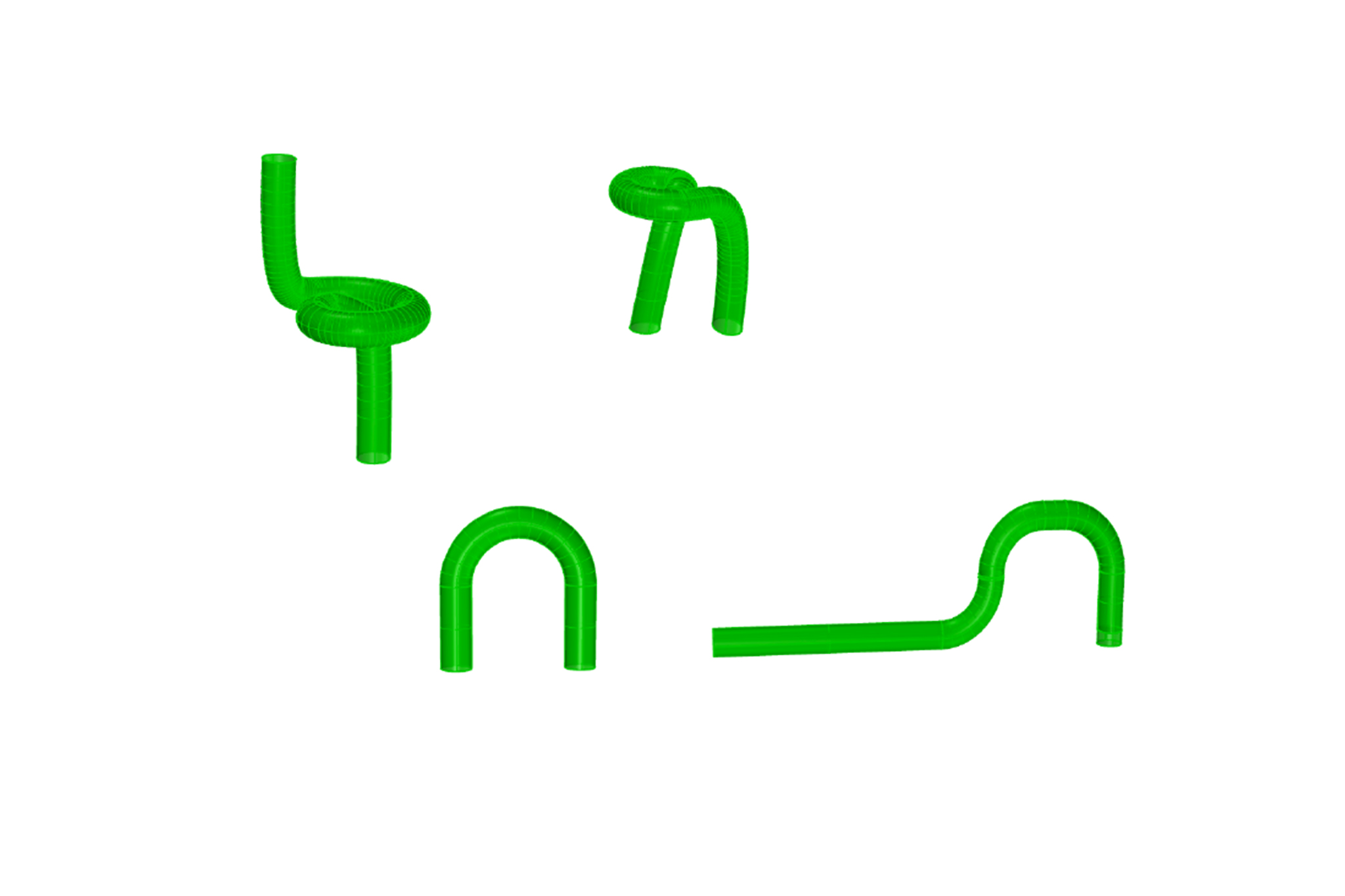 modelling 3D
modelling 3D
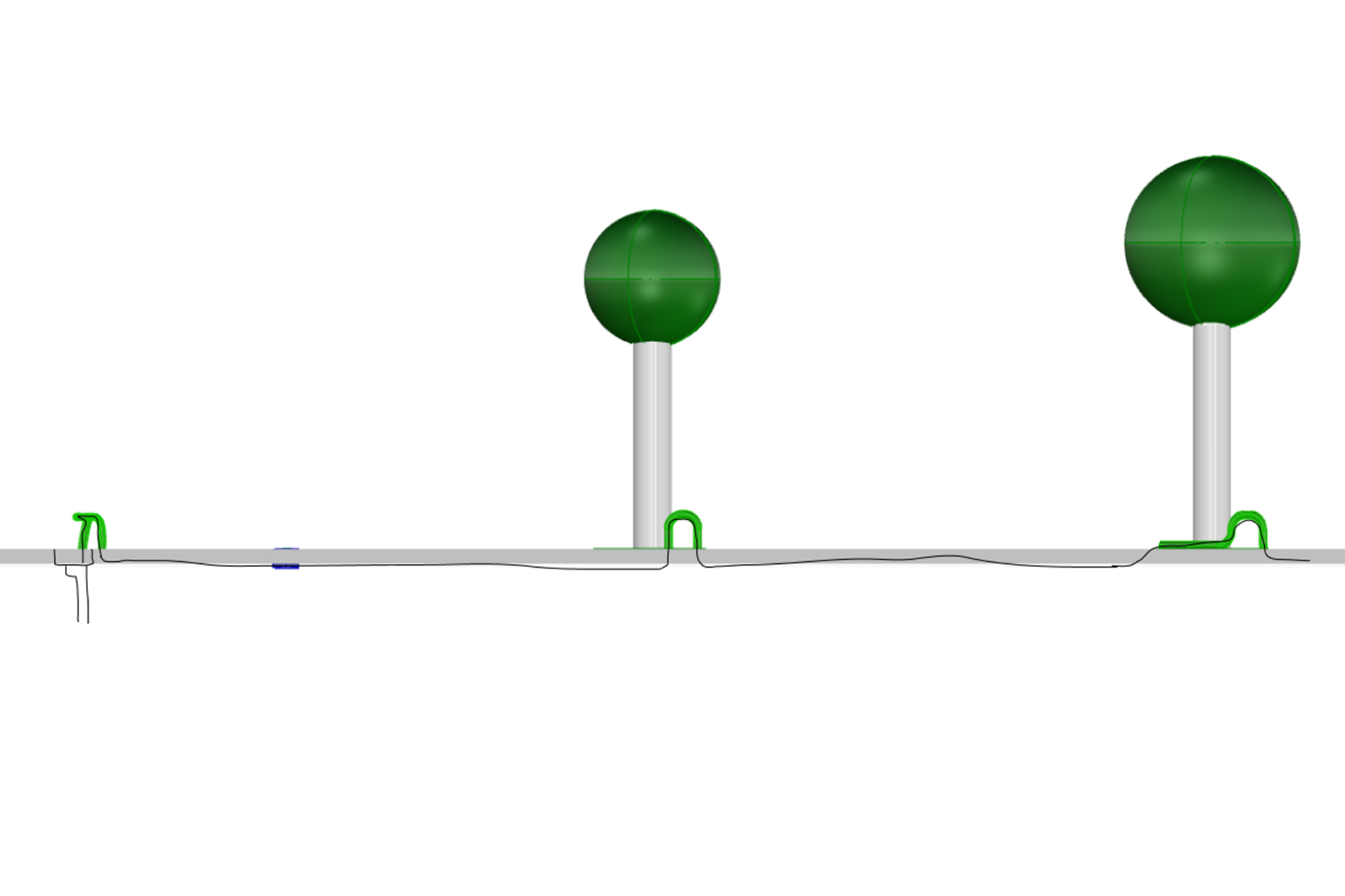 concept Loch Ness Monster 3D
concept Loch Ness Monster 3D
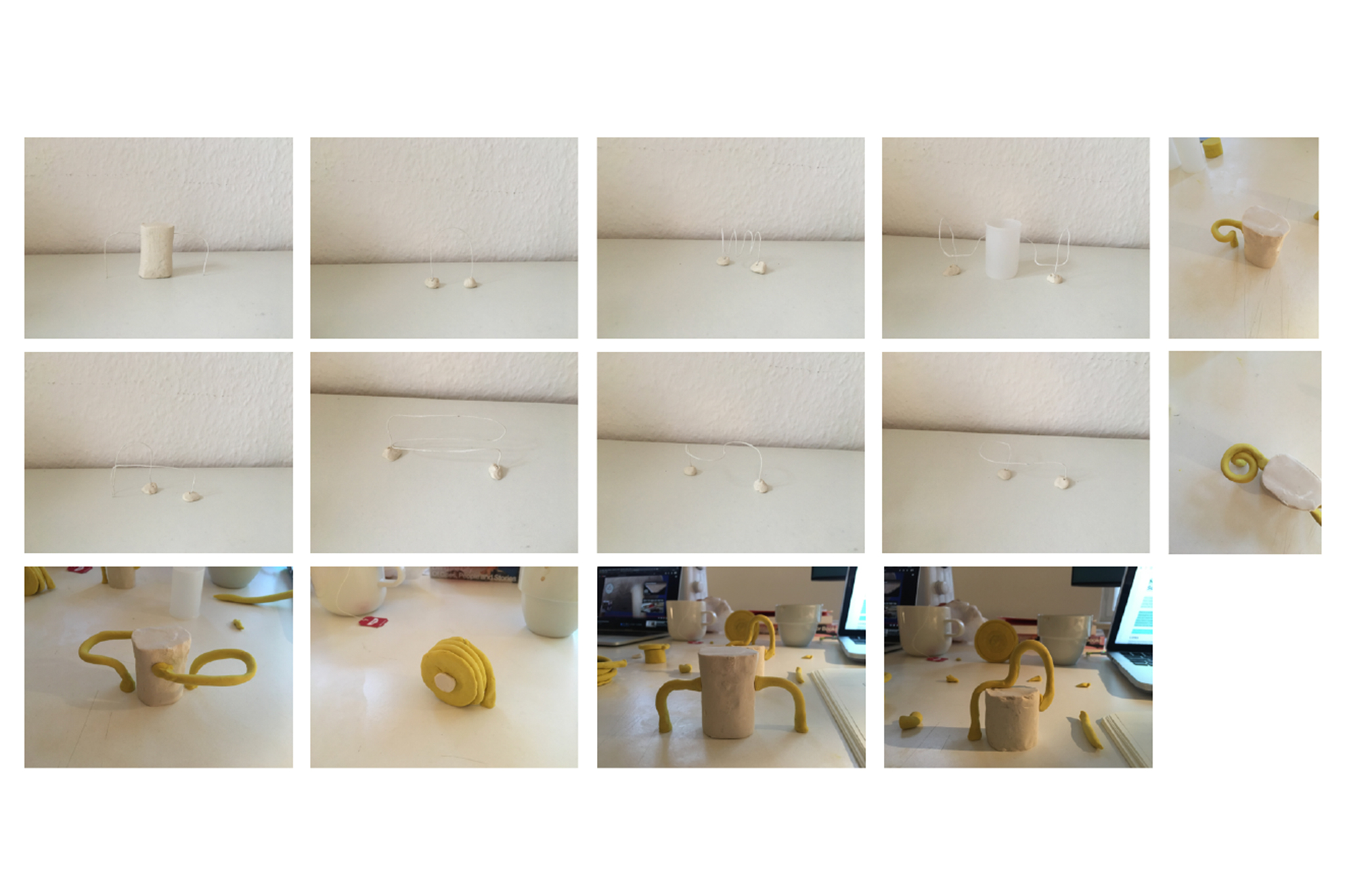 form finding with wire and modelling clay
form finding with wire and modelling clay
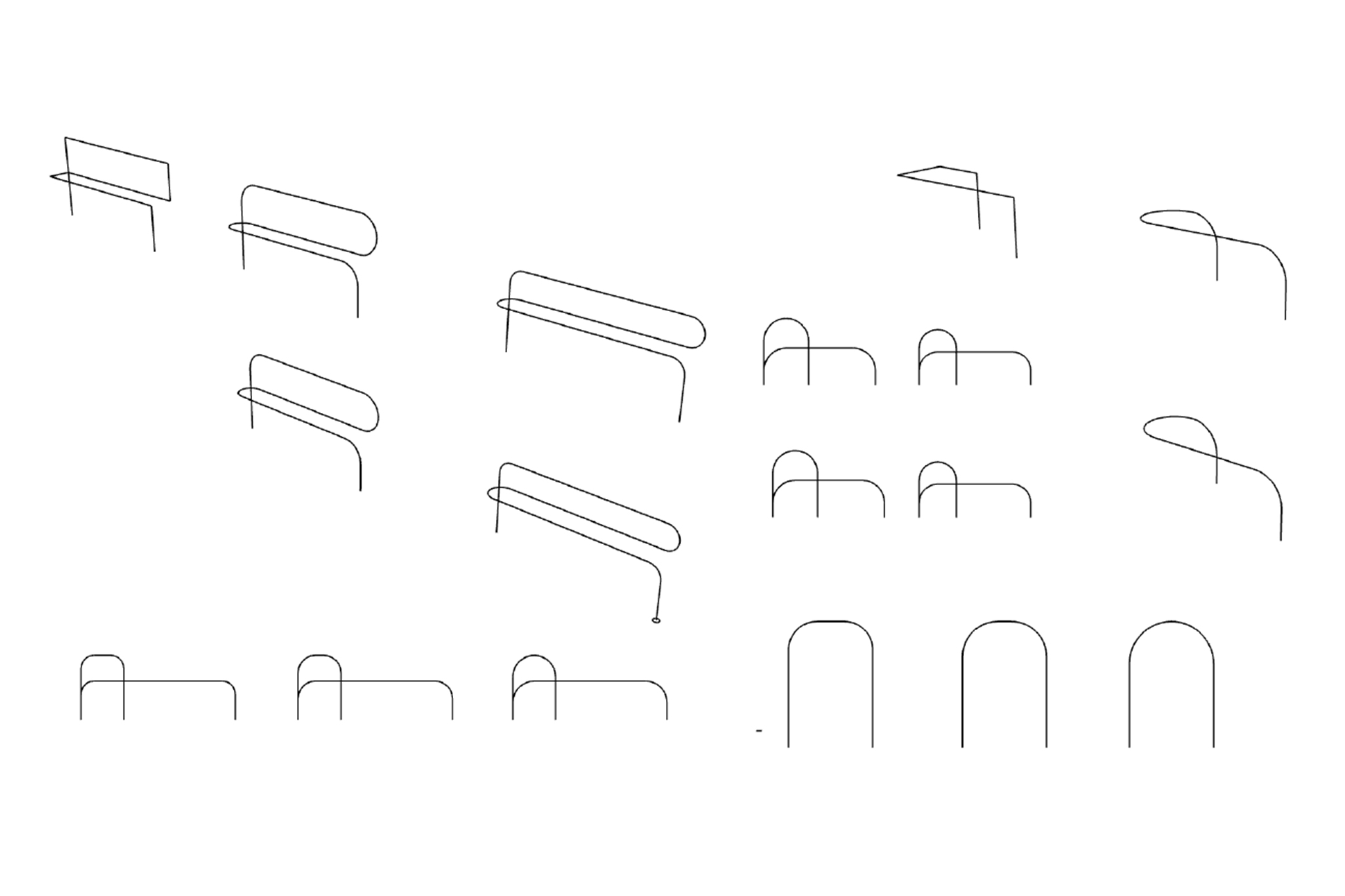 form finding lines
form finding lines
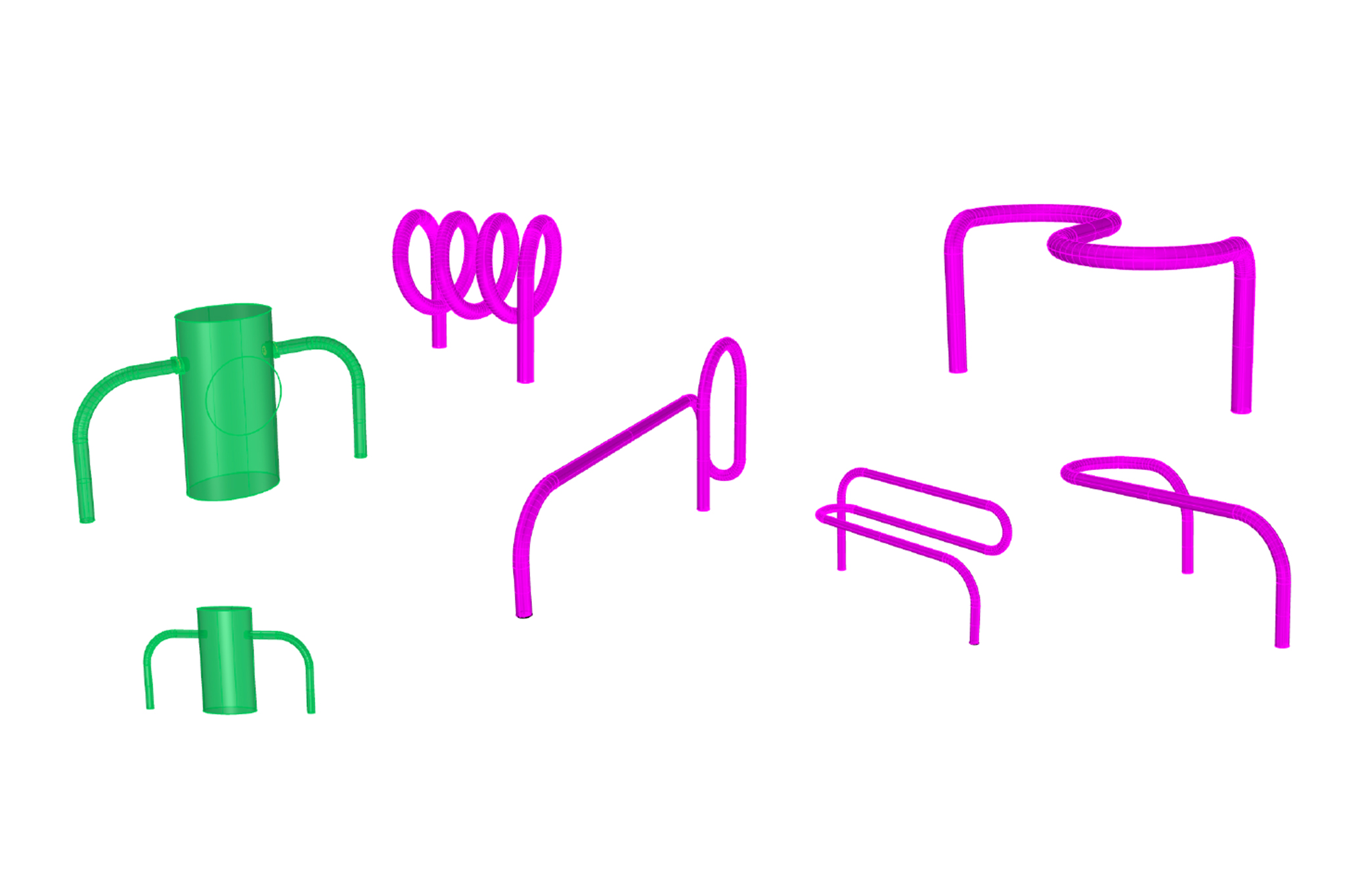 form finding 3D
form finding 3D
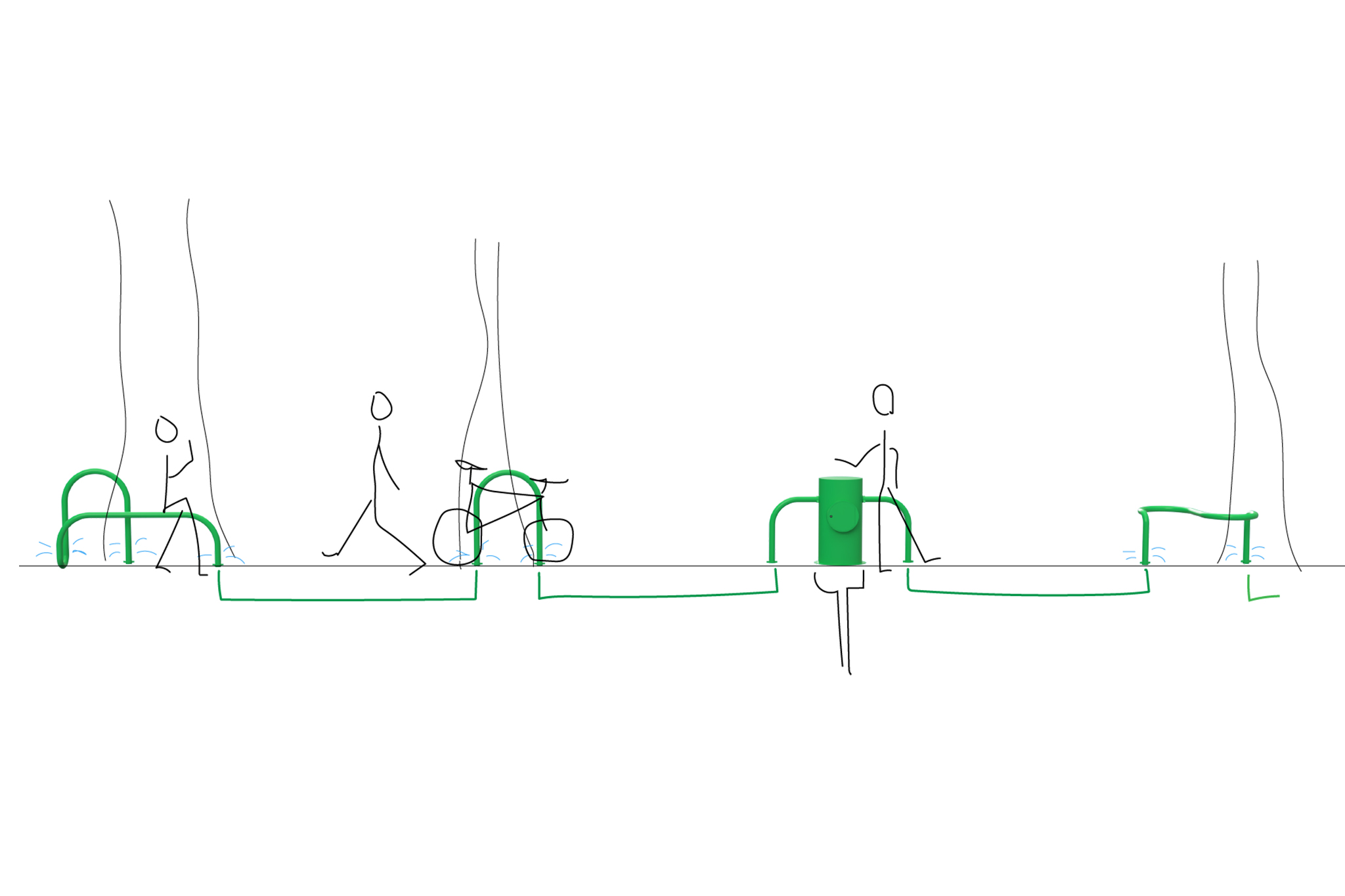 sketch: interaction with residents
sketch: interaction with residents
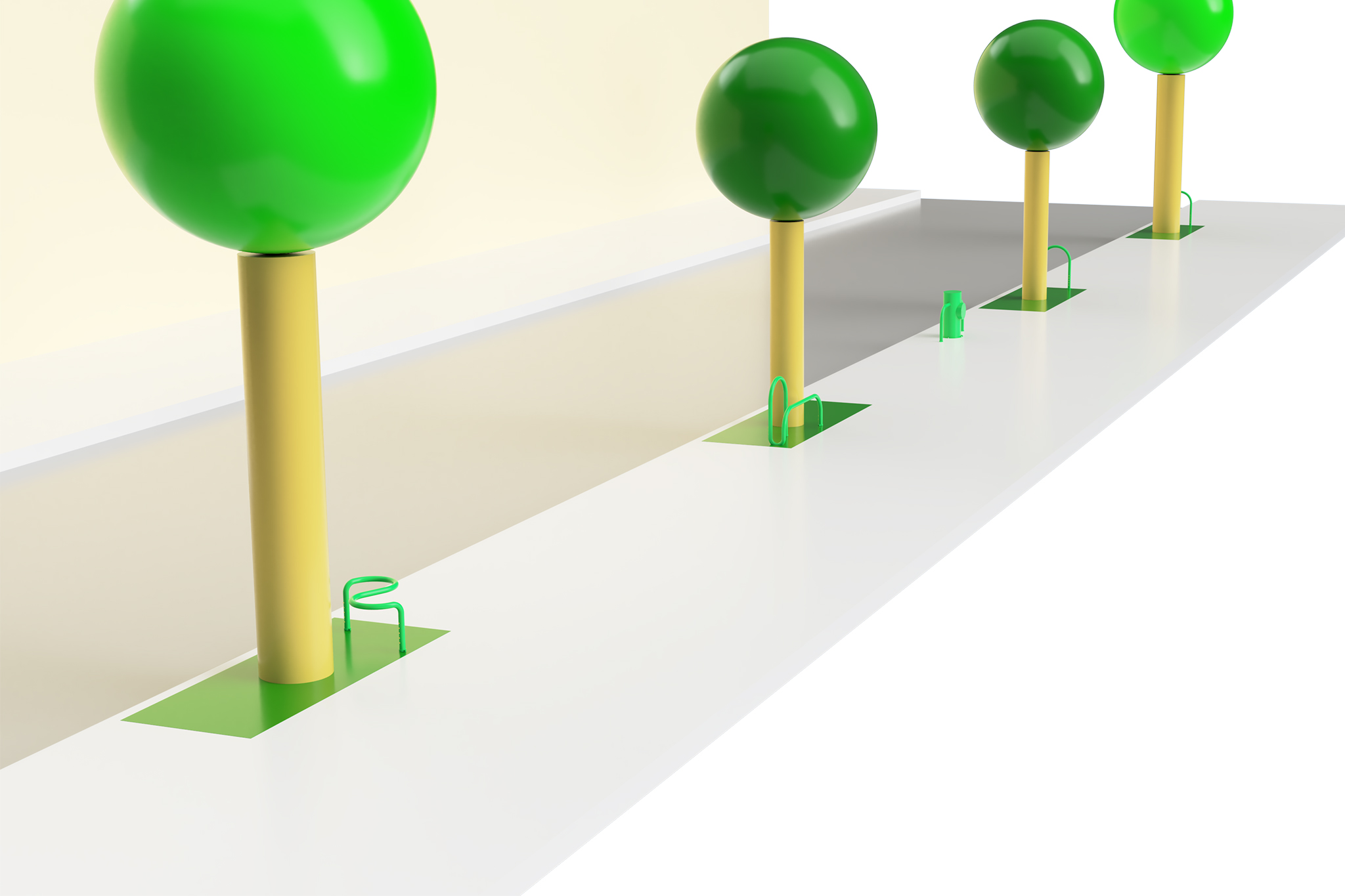 objects in the street
objects in the street
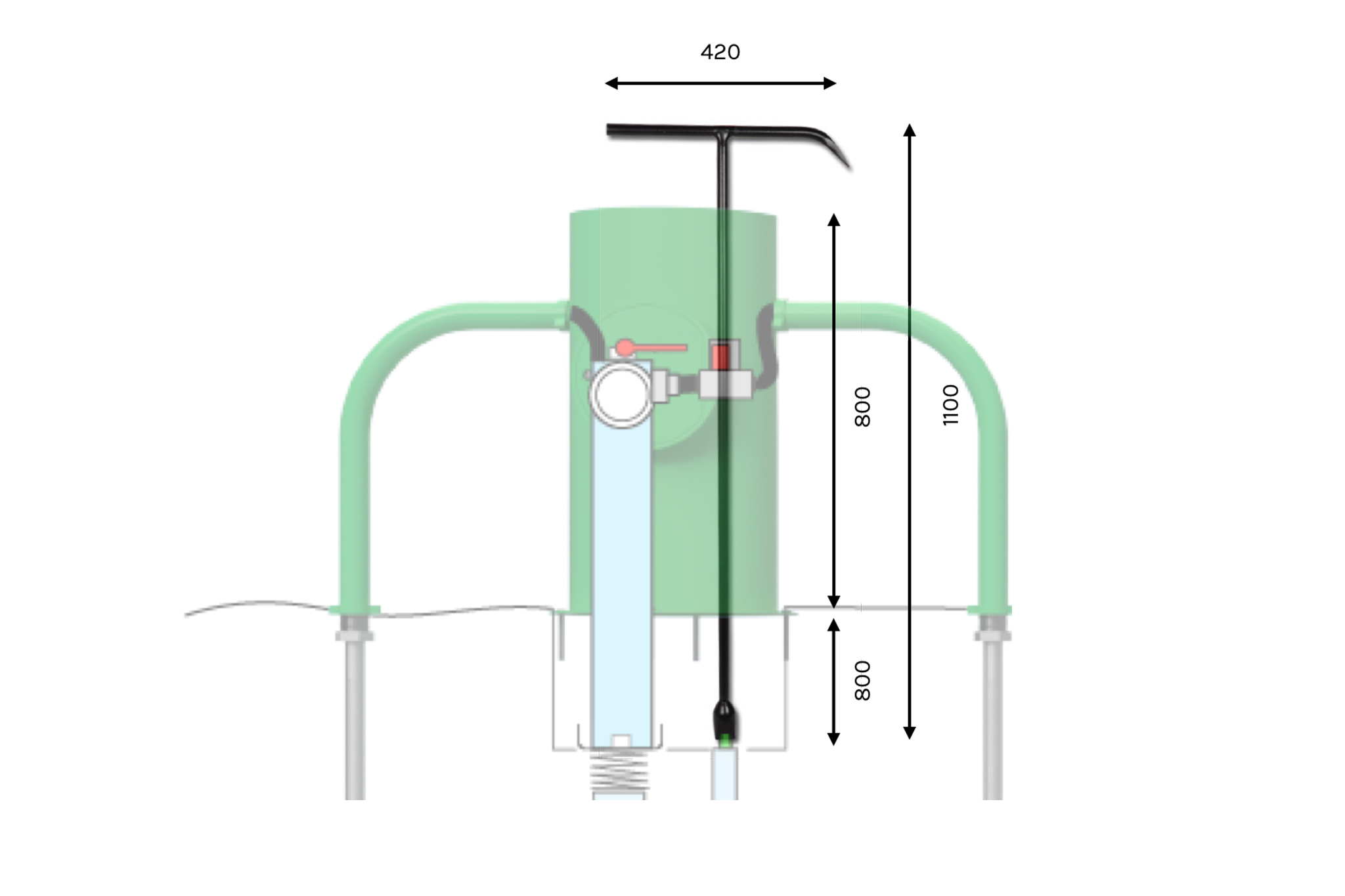 object 0 fitting with hydrant wrench
object 0 fitting with hydrant wrench
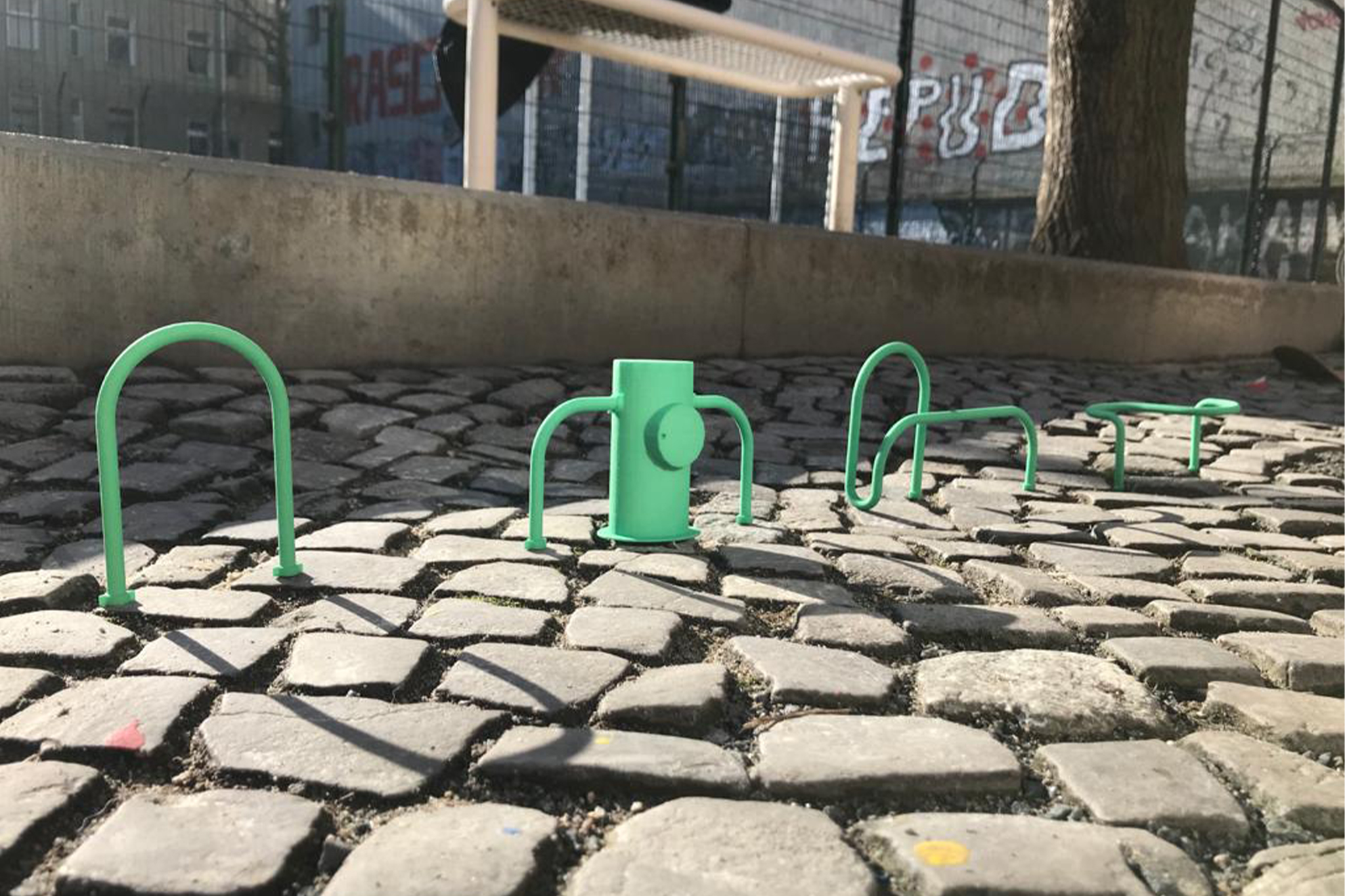 model 1:10, 3D printed
model 1:10, 3D printed
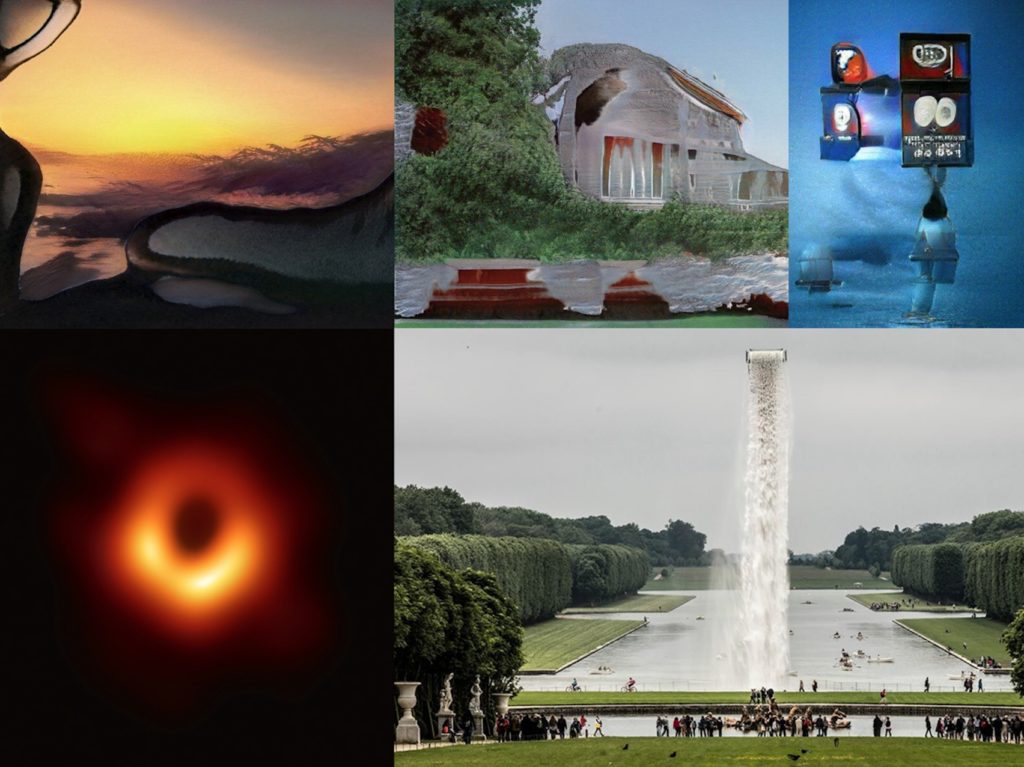
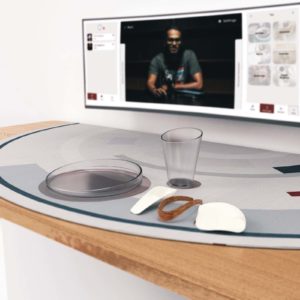
Team:
75 participants from 5 continents
working in groups of 8 students
in 2 tracks, each 6 weeks long.
UdK Students:
Atasayar, Destina
Stefan Damnig
Dain, Park
Dirk Erdmann
Dietz, Janik
Loebach Dennis
Asamoah, Marek
Aleksander Luczak
Identify and address any societal issue of great impact. This can be of any type or scale but must require immediate investigation and intervention for civic needs, opportunities, and possibilities for people across the world. Projects ranging from the massive (identification, review of, and preparation for the cataclysmic) to the intimate (handheld objects, digital/apps, graphics and communications), including investigations into living systems and the built environment, policy positioning for government, economic systems, and ways of ownership may be studied, designed and presented as design deliverables. Designed deliverables are required to holistically address project specifics, including the physical, mental, emotional, economic, scientific, and social aspects.
Links
https://www.globallywedesign.com/2020-gel-lab-design-studio
https://www.instagram.com/_glowd/
Convergence | Urban Plastic Guide
Im Rahmen unseres Projekts „Convergence“ haben wir eine Website, „Urban plastic guide“ erstellt, welche über den Plastikverbrauch, die Verwendung von Plastik sowie über das Material selbst und seine Einsatzmöglichkeiten informiert. Der Schwerpunkt auf unserer Website liegt bei der Verwendung des Materials anhand von Recycling-möglichkeiten. Dafür haben wir eine Anleitung erstellt, welche über das Pressen von recycelten Plastikplatten zuhause aufklärt. Dazu haben wir DIY-Baupläne angefertigt, welche detailliert darstelle, wie man einen Bienenstock oder ein Vogel-Brutkasten aus den recycelten Platten baut. Um weitere Verarbeitungsmöglichkeiten darzustellen, haben wir eine Bildergalerie angelegt, die für Inspiration sorgen soll und dem Betrachter eine Auswahl an Möglichkeiten zeigt, wofür der Kunststoff sich einsetzten lässt. Abschließend haben wir auf einige Communities hingewiesen, bei denen man Plastic recyceln kann, Erfahrungen austauschen kann und engagierte Individuen trifft, mit denen man sich vernetzten kann.
As part of our project „Convergence“ we have created a website, „Urban plastic guide“, which informs about plastic consumption, the use of plastic as well as the material itself and its possible uses. The focus on our website is on the use of the material based on recycling possibilities. For this, we created a tutorial that educates about pressing recycled plastic sheets at home. In addition, we have created DIY construction plans that show in detail how to build a beehive or a bird incubator from the recycled sheets. In order to show further processing possibilities, we have created a picture gallery, which should provide inspiration and show the viewer a selection of possibilities, for which the plastic can be used. Finally, we have pointed out some communities where you can recycle plastic, share experiences and meet dedicated individuals with whom you can network.
Prozess
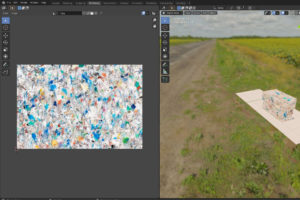
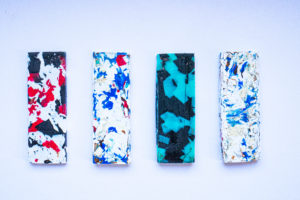
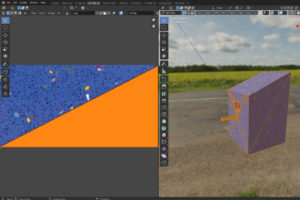
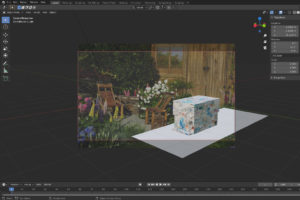
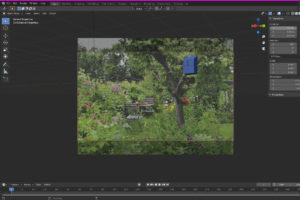
Decoupled
Atem ist eine natürliche Eigenschaft von Lebewesen, ein gemeinsamer Nenner zwischen uns allen. Es ist aber auch etwas, das wir mit unserem Verstand nicht ganz erfassen können, geschweige denn mit Worten. Atem ist etwas, das uns so nahe ist, aber gleichzeitig auch so weit von unserem Bewusstsein entfernt sein kann. Gelegentlich fühlt es sich sogar wie ein ganz von uns entkoppeltes Lebewesen an, das unsere Brust in einem Rhythmus hebt und senkt, den wir nur selten selbst kontrollieren können.
Wir wollten dieses Konzept aufnehmen und versuchen, es in ein physisches Objekt zu verpacken, welches Atem auf alternative Art und Weise erfahrbar macht.
Wir begannen Varianten dieser atmenden Objekte zu bauen und begannen mit einem dreidimensionalen, das sich zwischen verschiedenen Gestalten verformen würde. Diese führten leider noch nicht so weit wie wir wollten, weshalb wir nach weiterer Konzeptarbeit auf die finale Variante stießen die wir gerne im angehängten Video ohne weitere Kommentierung vorstellen möchten.
Breathing is a most natural trait of living beings, a common denominator between us all but also something we‘re not quite able to grasp with our minds, let alone words. Breathing is something that is so close to us but at the same time can also be so far from our minds. Sometimes, it might even feel like a decoupled living being inside of us, making our chest rise and fall in a rhythm we are not always there to control ourselves.
We wanted to dissect this concept and try to pour it into a physical object that one could experience.
We set out to create this breathing object and started with a three dimensional one that would morph between different shapes. It not yet quite being where we wanted it to go, we collected suggestions and came up with our final idea that we would like to present you in the attached video without any further commentary.
Prozess
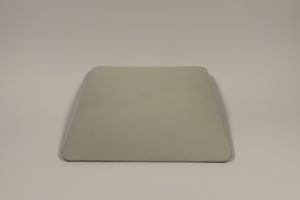
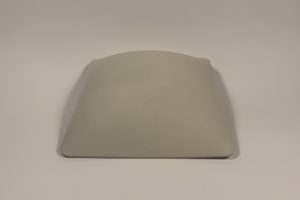
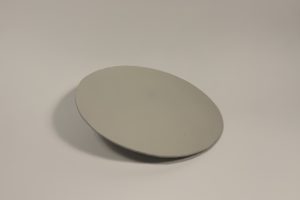
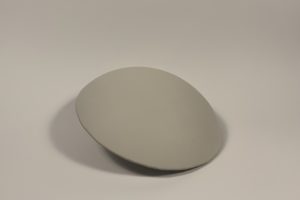
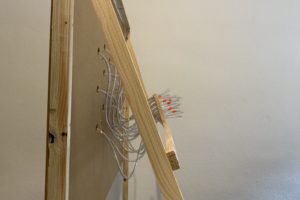
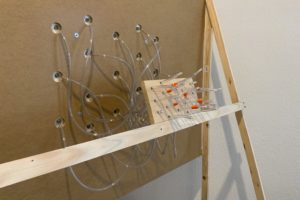
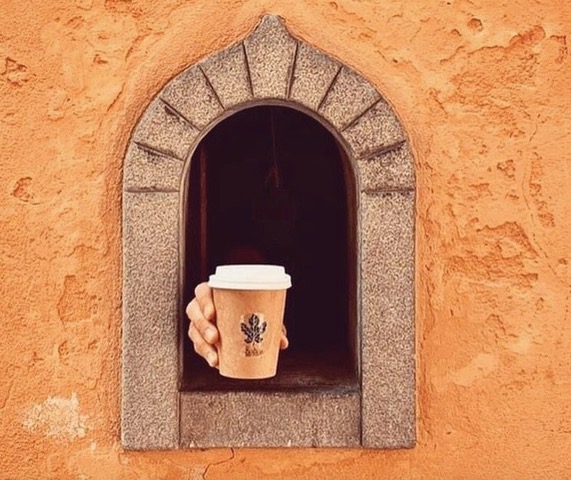
Framcall
Im Rahme der Möglichkeiten
Videoanrufe sind durch die Einschränkungen der aktuellen Pandemie zu einem enorm wichtigen Mittel geworden, um Menschen miteinander zu verbinden.
Für viele von uns gibt es kaum noch andere Wege, sich den Menschen die uns nahe stehen, auch nah zu fühlen. Die visuelle Ebene der Kommunikation, kann Emotionen schließlich wesentlich besser vermitteln als eine rein klangliche.
Wer in dieser aktuellen Situation jedoch noch viel zu kurz kommt, sind ältere Menschen.
Vielen fehlt die Vertrautheit mit den technischen Mitteln und viele wollen sich mit gutem Recht einfach nicht damit auseinandersetzen müssen, während aber gerade sie besonders isoliert sind.
Deshalb erwartet Framecall das von niemandem.
Mit einem Tippen geht es los und das Bild von Freund/in oder Familie erwacht zum Leben.
Mit nur einer einzigen Funktion, bietet es keine Möglichkeit etwas falsch zu machen.
Es muss nicht schwer sein in Kontakt zu bleiben.
Framecall
within the possibilities
Videocalls have developed into a tool of great importance, allowing people to connect in times of a global pandemic.
Most of us barely find other ways to feel close to the ones closest to us.
Afterall the visual dimension of communication can transport emotions much better than a simply tonally one.
The ones who are left behind in this situation, are our elders.
Many of them missing the technical skills, while just as many, simply and rightfully, don’t want to have to deal with them, even tough they are the most isolated.
That’s why Framecall doesn’t need that.
With one tap, the picture of your friend or family member comes to life.
Having only one function, you can’t do anything wrong.
It doesn’t have to be hard to stay in touch.
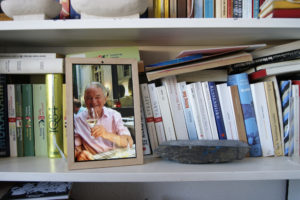
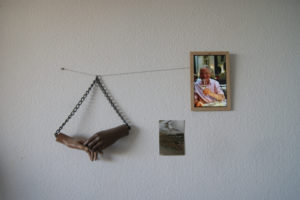
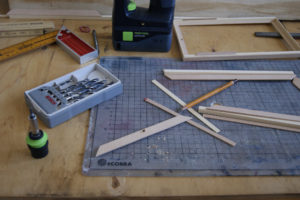

Let’s meet up
Die Plötzlichkeit der Epidemie hat dazu geführt, dass die Menschen Masken aufgesetzt und sich durch 1,5 Meter voneinander getrennt haben. Aber selbst unter diesen Umständen wollten wir durch Design den Kontakt zueinander wiederherstellen.
Let’s Meet Up ist eine Picknick-Decke, die in bestimmten Situationen eingesetzt werden kann. Wenn der Benutzer allein ist, ist es eine herkömmliche Matte. Wenn jedoch viele Personen sie gleichzeitig benutzen, ermöglichen die Markierungen den Benutzern, sich schnell durch einen Sicherheitsabstand von 1,5 Metern zu trennen.
Die Anzahl der Personen spielt bei Let’s Meet Up keine Rolle. Jede Person hat eine eigene Decke und kann gleichzeitig kombiniert werden. Auch die Kombination ist einfach: Die beiden verschiedenfarbigen Kreise werden richtig verbunden.
Let’s meet up
The suddenness of the epidemic has led to people putting on masks and separating themselves from each other by 1,5 meters. But even in these circumstances, we wanted to restore contact with each other through design.
Let’s Meet Up is a picnic blanket that can be used in particular situations. When the user is alone, it is a conventional mat. Still, when many people are using it simultaneously, the markings allow the users to separate themselves by a safe distance of 1,5 meters quickly.
The number of people does not control Let’s Meet Up. Each person has a separate blanket and can be combined at the same time. The combination is also straightforward: the two different colored circles are connected correctly.
Xueqi Huangfu
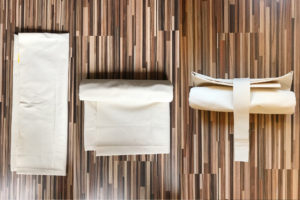
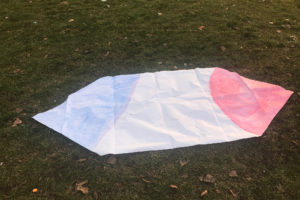
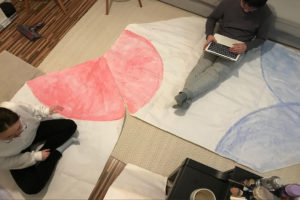
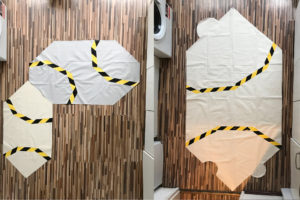


Isolation Nation
Der mit der gegenwärtigen Krise einhergehende Lockdown stellt große mentale und physische Herausforderungen an die Gesellschaft. Studien zeigen, dass Menschen, die ihre gemeinsamen Aktivitäten mit anderen verringern, Verluste in ihrer subjektiven und funktionalen Gesundheit erleben. Gerade soziale Aktivitäten und der alltägliche Kontakt zu Menschen sind enorm wichtig, um Gefühlen von Isolation, Einsamkeit und Langeweile entgegenzugehen.
Daher hat sich seit dem Lockdown und der vielen zu Hause verbachten Zeit deutschlandweit eine außergewöhnlich starke Nachfrage nach Gesellschaftsspielen gezeigt.
Während sich bisherige Spiele-Klassiker erneut als zeitlose Hits erweisen, gibt es wenige innovativ interaktive Spiele, die Nutzen von modernen, zugänglichen Technologien machen oder zumindest einfache „Gimmicks“ integrieren.
ISOLATION NATION ist eine Neuinterpretation traditioneller Gesellschaftsspiele mit humorvoller Covid-Thematik.
Die Besonderheit des Spiels liegt in der Nutzung von NFC-basierten Spielkarten und einem LED-gesteuerten „Hotspot“-Brett.
Isolation Nation
The lockdown that accompanies the current crisis poses great mental and physical challenges to society.
Studies show that people who decrease their joint activities with others experience losses in their subjective and functional health.
Especially social activities and everyday contact are extremely important in order to counter feelings of isolation, loneliness and boredom.
Therefore, since the lockdown and the many time spent at home, there has been an extraordinarily strong demand for board games across Germany.
While previous classic games are proving to be timeless hits again, there are few innovative interactive games that make use of modern, accessible technologies or at least integrate simple „gimmicks“.
ISOLATION NATION is a reinterpretation of traditional board games with a humorous Covid theme.
The specialty of the game lies in the use of NFC-based playing cards and an LED-controlled „hotspot“ board.
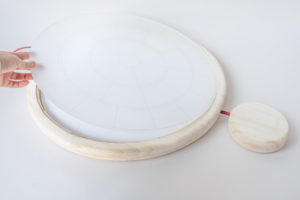
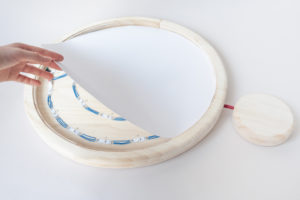
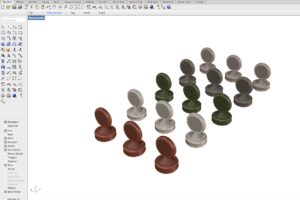
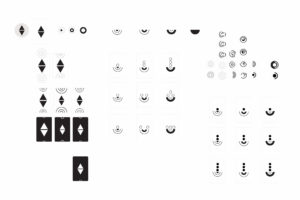
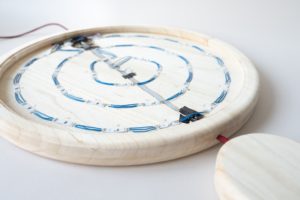
Projekt 45/90
In dieser besonderen Situation haben wir uns das Ziel gesetzt mit minimalem Budget, einfachen technischen und leicht verfügbaren Mitteln zu arbeiten.
In einem Gestaltungsprozess, der bewusst sehr lange offen und experimentell gehalten wurde, entstand eine Konstruktionsprinzip, dessen Stabilität ausschließlich durch Stecken und Verkeilen von einfach bearbeiteten Hölzern entsteht.
Durch dieses lässt sich eine Vielfalt von Möbeln realisieren – Bettgestelle, Bänke und Tische – alles lässt sich individuell gestalten und basiert einfachen, wieder lösbaren Verbindungen. Ein ganzes Ensemble an Möbeln lässt sich damit ohne zusätzliche Hilfsmittel aufbauen, zerlegen und auf ein minimales Packmaß reduzieren.
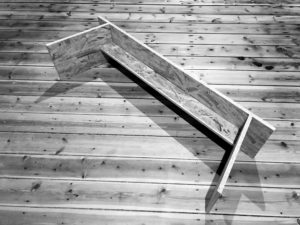
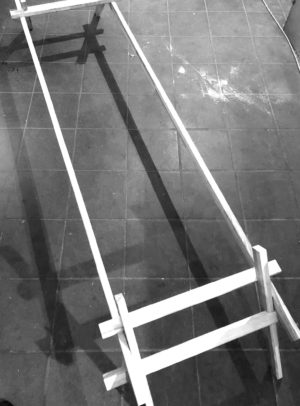
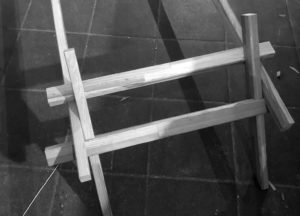
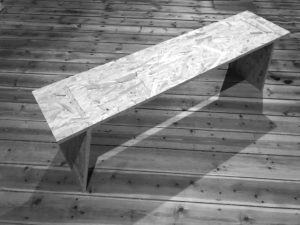

Fieldfiller
Der menschliche Körper besteht zu mehr als 70 % aus Wasser. Nur 2,5 % der gesamten Wasservorräte der Erde sind Süßwasser. Doch viele der Süßwasserressourcen sind durch den Menschen verschmutzt. Diese Verschmutzung und der Mangel an sauberem Wasser verursachen vor allem in den armen Gebieten der Welt ernsthafte Gesundheitsprobleme.
Aber warum nutzen wir nicht einfach die natürlichen Ressourcen um verschmutztes Wasser trinkbar zu machen? Etwa ein Drittel der Landfläche der Erde ist von Wüsten und Halbwüsten bedeckt. Diese Gebiete sind reich an Sand und trockenen Pflanzen.
Kleine Steine, Gräser und Sand können zum Filtern von verschmutztem Wasser verwendet werden. Das mit Schwebstoffen verunreinigte Wasser wird durch den Filter gegossen. Die natürlichen Materialien im Inneren des Filters halten die Schwebstoffe im Wasser zurück.
Es wird nur klares Wasser gewonnen. Das klare Wasser kann in die Sonne gelegt und durch die solare Sonnendesinfektion gereinigt werden, so dass es nach nur 8 Stunden intensiver Sonneneinstrahlung trinkbar ist. Der Filter ist tragbar, nachhaltig und kann jederzeit und beliebig oft wiederverwendet werden.
Fieldfiller
The human body consists of more than 70% water. Only 2.5 % of the earth’s total water supply is fresh water. But many of the freshwater resources are polluted by humans. This pollution and the lack of clean water causes serious health problems especially in poor areas of the world.
But why don’t we just use the natural resources on site to make polluted water drinkable? About one third of the earth’s land area is covered by deserts and semi-deserts. These areas are rich in sand and dry plants.
Small stones, grasses and sand can be used for filtering dirty water. Water contaminated with suspended matter is poured through the filter. The natural materials inside the filter retain the suspended solids in the water.
Only clear water will be obtained. The clear water can be placed in the sun and purified by the solar sun disinfection, so that it is drinkable after only 8 hours of intensive sun exposure. The filter is portable, sustainable and can be reused any time as often as you want.
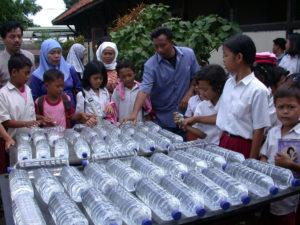
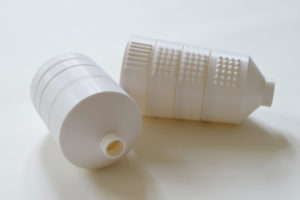
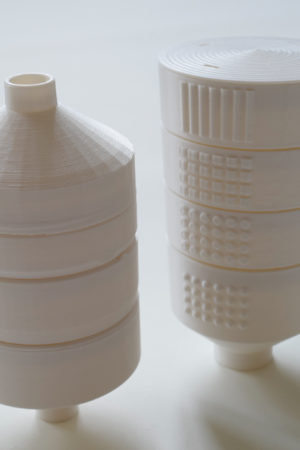
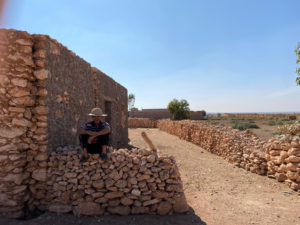
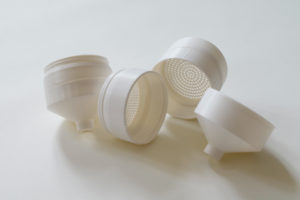
Ray
Ray ist eine Tote Bag, die sich deinen Bedürfnissen anpasst. Formal puristisch und dabei technisch überraschend innovativ.
Fährst du mit dem Fahrrad zum See, kannst du den Erweiterungsgurt nutzen, um Ray in eine Messenger Bag zu verwandeln. Am See angekommen wird sie zur aufblasbaren Dry Bag und der Erweiterungsgurt zu deinem Befestigungsgürtel. Nimm deine Sachen einfach mit, wenn du schwimmen gehst. So bleiben sie trocken und sicher vor Dieben. TPU beschichtetes Ripstop Nylon bildet dabei die Basis für einen aufblasbaren und wasserdichten Schwimmkörper und eine Rettungspfeife hilft dir, falls du mal in Not geraten solltest. Zurück an Land kannst du Ray als Kopfkissen oder Sitzpolster verwenden.
Mit einem Gewicht von nur 218 Gramm wird Ray zu deiner ständigen Begleiterin. Falls du sie mal nicht brauchst, kann sie gerollt, komprimiert und in der Jackentasche verstaut werden. Dem Einkauf am Ende deines nächsten Spazierganges steht also nichts mehr im Weg.
Zwei verschließbare Taschen bieten genug Platz für Laptop, Sonnenbrille und alles, was du im Alltag brauchst. Wenn du die Henkel greifst und anhebst, schnürt sich Ray zu und faltet sich zusammen. So kannst du in der halb offenen Mitteltasche zum Beispiel deine Yogamatte, deinen Chihuahua, eine Jacke, größere Pakete oder eine ganze Menge Schallplatten transportieren. Diese werden automatisch fixiert, ohne dabei Platz in den Außentaschen zu blockieren. Bei zusätzlichem Sicherungsbedarf kannst du außerdem den Erweiterungsgurt als Spanngurt benutzen.
Ray ist nicht einfach nur Tasche, sie wird zu einer vielseitigen Begleitung, die kleine Krisen ein wenig angenehmer macht.
Ray
Ray is a tote bag that adapts to your needs. Formally puristic and at the same time surprisingly technically innovative.
If you ride your bike to the lake, you can use the extension strap to turn Ray into a messenger bag. When you arrive, it provides to be an inflatable dry bag and the extension turns into your fastening belt. Just take your things with you when you go swimming. This way they stay dry and safe from thieves. Coated ripstop nylon forms the basis for an inflatable and waterproof float. A integrated rescue whistle will help you in case you get into an emergency. Back on land, you can use Ray as a pillow or seat pad.
With a weight of only 218 grams, Ray will be your daily companion. If you do not ever need, it can be rolled, compressed and stored in the pocket easily. So nothing stands in the way of shopping at the end of your next walk.
Two lockable pockets offer enough space for a laptop, sunglasses and everything you need in everyday life. If you grab the handles and lift them up, Ray will lace and fold together. So you can carry your yoga mat, your Chihuahua, a jacket, larger packages or a whole lot of records in the half-open middle pocket while, things get locked automatically without blocking space in the outer pockets. If you need even more stability, you can also use the extension belt to create tension.
Ray is not just a bag, it becomes a versatile friend that makes small crises a little more pleasant.
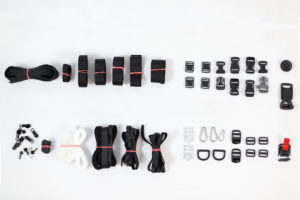
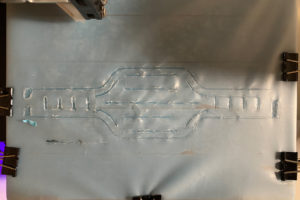
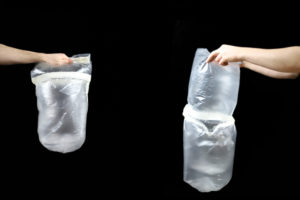
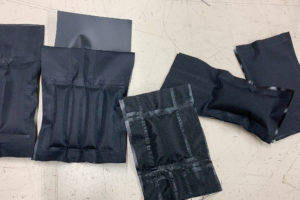
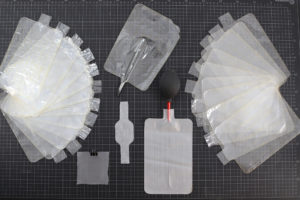

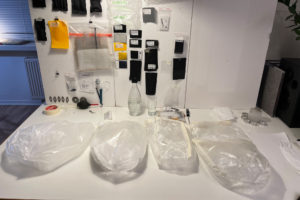
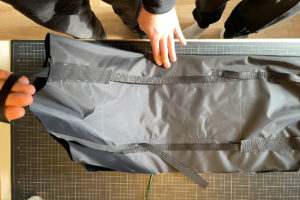
Matrix
Die geltenden Kontaktbeschränkungen habe ich wörtlich genommen und die Möglichkeiten kontaktloser Interaktion durch Gesten untersucht. Dabei stellen sich verschiedene Herausforderungen. Welche Kategorien von Gesten lassen sich finden. Wie eindeutig, zugänglich, direkt, verständlich, erlernbar sind Gesten. Lässt sich daraus eine Hierarchie für Befehle ableiten. Wie funktioniert der Wechsel zwischen verschiedenen Gesten und wann fängt die Steuerung an, wann endet sie. Am Beispiel eines Lichtobjektes habe ich einen Einstieg in die Welt der Gestensteuerung genommen.
Matrix
Social distancing at its best. Meaning no physical contact at all. This led me to investigating the perspective of non-contact interfaces particularly gesture control. In the process I was facing several challenges. Namely, which kind of gestures are there, how accessible and how easy to understand are they. Which ones offer selective qualities or rather direct control and a continuous experience. Is there a deductive hierarchy or how to switch between functions. And most basically how to start and stop control. The light object is an exemplary use case to make ‘tangible’ observations and experiences.
HUG
Der Arbeitsplatz, ob im Großraumbüro, zuhause, in der Schule oder der Uni kann manchmal ein einsamer oder gar ein kalter Platz sein, die Corona-Pandemie hat diese Situation noch zusätzlich verschärft. Vielleicht braucht man aber genau an diesem Ort manchmal ein wenig Zuneigung, eine Umarmung. Dafür ist HUG da, die transportable, universell verwendbare Umarmung, sie besteht aus Filz und ist mit weicher Watte gefüllt. HUG lässt sich durch den großen Gummizug an verschiedenste Sitzmöglichkeiten anbringen und ist dazu noch größenverstellbar um verschiedene Positionen einnehmen zu können und um für Menschen egal welcher Größe und Alters zu funktionieren. Dank der integrierten einfach zu verwendenden Kirschkernkissen kann diese Umarmung zusätzlich noch warm sein.
HUG- eine Umarmung wann immer du sie brauchst.
HUG
The working space either in your office, home, at school or at university can be a lonely and sometimes even a cold place. The pandemic even made that situation worse, but maybe you need some affection especially in this places, a hug. Thats what HUG is there for, a transportable, for universal use hug, made from felt and filled with soft cotton wool. Because of the wide elastic band HUG is easily attachable to different chairs or other seats. Also it is adjustable in size to not only be able to bend in different positions but also to fit people of all sizes or ages. In audition HUG also has to integrated, easily to handle cherry stone pillows, so your hug can be a warm one.
HUG- a hug whenever you need it.
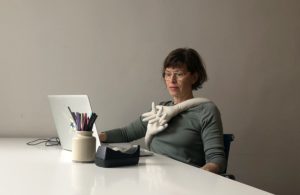
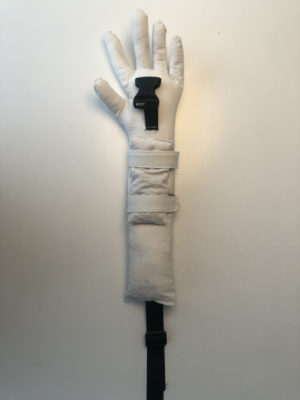
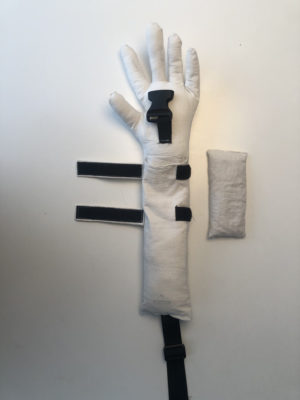
Capsule
Zu Beginn des ersten Lockdowns fand ich die Vorstellung von zu Hause zu arbeiten schön. Der Weg zur Uni fällt weg. Ich kann, wann immer ich will, mir etwas zu Essen machen und kann länger schlafen. Klingt erst mal toll, oder? In der Praxis hat sich für mich dann aber herausgestellt, dass es sich für mich eher anfühlt als würde ich im Studio auch noch wohnen.
Morgentliche Rituale die den Tag einleiten fallen weg, wie zur Uni fahren oder zum Bäcker gehen.
Der Schreibtisch, mit Laptop und allen Dingen die ich für das Studium brauche, steht im Blickfeld von meinem Bett. Es gibt auch keinen Moment der ein klarer Schnitt im Tagesablauf ist der zeigt: „Das war es für heute jetzt ist Feierabend.“ Wie zum Beispiel das durchatmen nach dem man das Unigebäude verlassen hat oder das Abschließen eines Büroraums. So sitze ich fast jeden Abend bis um Mitternacht am Laptop mit der Begründung: „das kann ich ja noch schnell machen“.
Capsule ist ein Schreibtisch der, samt allem was sich auf der Platte befindet, an die Wand geklappt werden kann. Möglich macht das der Schaumstoff der sich im Deckel befindet und bei zusammendrücken von Platte und Deckel die Gegenstände an den Tisch presst.
Das zu – und an-die-Wand-klappen stellt so einen Abschluss eines Arbeitstages dar.
Der Schreibtisch verschwindet aus deinem Blickfeld und erinnert dich nicht an die Arbeit die du noch erledigen müsstest während du auf dem Weg bist einen Snack zu holen um deinen Abend mit einem Streaminganbieter zu verbringen, sondern ist dazu noch platzsparend, so kann der Wohnbereich optimal genutzt werden. Ein mühsames Aufräumen seiner sorgsam aufgebauten Zettelmindmap ist auch nicht nötig. Man kann an exakt der gleichen Stelle weiterarbeiten wo man am Vortag aufgehört hat.
Capsule
At the beginning of the first Lockdown I imagined that it would be great working from home. I do not have to get to Uni, I can sleep longer and can make myself food whenever I want. Sounds great, doesn‘t it? In real life it turned out to feel more like living in my office. Rituals i had in the morning were cut short, like riding my bike to uni or going to the bakery. My desk, that contains everything that I need for University is visible from my bed. There is no clear cut in my daily routine that shows the end of a working day, like taking a deep breath after leaving the building where you work or locking the door of your office. So I end up working until midnight because „ok i‘ll do that quickly“
Capsule is a desk that can be folded against the wall but keeps everything on the surface as it was.
That is possible because of the foam that is located in the cover wich presses everything to the surfache of the desk.
The closing and folding simulates a moment of ending a days Work. It does not only hide away your work so you dont have to walk past it on your way to get snacks for your evening with some streaming service, but it is also a space saving solution for small apartements. A cleaning up of your desk also is not necessary and you can start your day with the exact set up you ended your work yesterday.
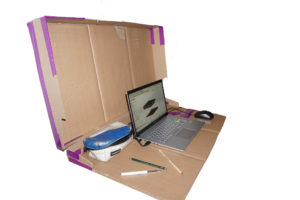
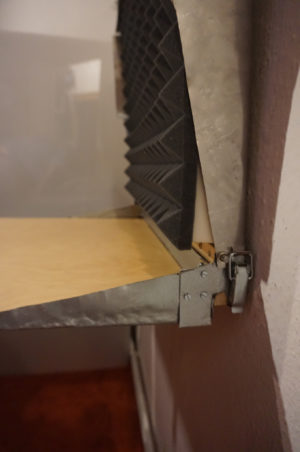
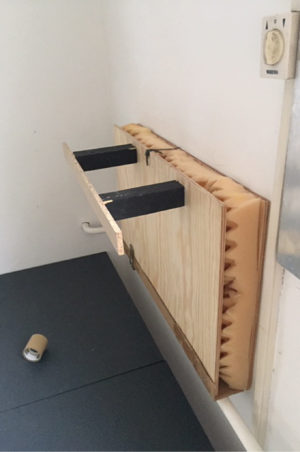
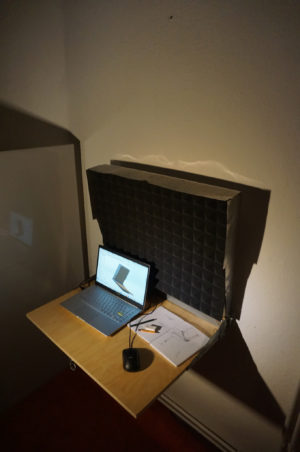

Fold
Ein leichter und flexibler Paravent, der Raum für konzentriertes Arbeiten schafft
Die Corona-Krise hat die Digitalisierung in Unternehmen enorm beschleunigt und damit flexiblere Arbeitsmodelle ermöglicht. Arbeitnehmer unterschiedlichster Branchen können heute und auch in Zukunft flexibel zwischen dem Arbeiten im Büro und im Home-Office wählen. Besonders die Erfahrungen im Home-Office haben verdeutlicht, wie wichtig ein Arbeitsplatz ist, an dem man ungestört arbeiten kann.
In den vergangenen Monaten wurde das Internet überschwemmt mit unterhaltsamen Clips von Videokonferenzen, in denen Menschen ungewollt in das Bild stolperten und für einen Lacher sorgten, allerdings auch das Meeting störten. Darüber hinaus weiß jeder, der schon in einem Großraumbüro gearbeitet hat, wie schwer es fällt, in Ruhe und konzentriert an seinem Platz zu arbeiten. Dabei lenken einen nicht nur die Geräusche, sondern vor allem die „netten“ KollegInnen, die ständig etwas von einem wollen, ab.
FOLD ist ein leichter und flexibler Paravent, der Raum für konzentriertes und ungestörtes Arbeiten im Home oder Office schafft. Aus robustem Tyvek lässt sich FOLD einfach aus- und auffalten. Transparente Fenster fungieren als Faltkante, öffnen den Blick nach Außen und sorgen für natürliches Licht. Die Wabenstruktur lässt ein flexibles Variieren in der Länge zu und bietet einen neutralen Hintergrund für Videokonferenzen. Das leichte Gewicht und eine kompakte Packgröße machen FOLD zum praktischen Begleiter in einer neuen, fluiden Arbeitswelt.
Fold
A light and flexible wall to create a focus-friendly workspace
The Corona crisis has enormously accelerated digitization in companies and thus enabled more flexible working models. Employees in a wide range of industries can now choose more easily between working in the office and in the home office. Home office work in particular has shown how important it is to have a workplace where you can work undisturbed.
In recent months, the Internet has been swamped with entertaining clips of video conferences where people unintentionally crashed a conference and caused a laugh, but also disrupted the meeting. Moreover, anyone who has worked in an open-plan office knows how difficult it is to work undisturbed and concentrated at one’s desk. It’s not just the noise that distracts you, but also all the “friendly” colleagues who constantly want something from you.
FOLD is a light and flexible wall that creates space for an undisturbed and focus-friendly workspace at home or in the office. Made of strong Tyvek, FOLD is easy to unfold. Transparent windows act as folding edges, opening the view to the outside and providing natural light. The honeycomb structure allows for flexible variation in length and provides a neutral background for video conferences. Light weight and a compact pack size make FOLD a practical companion in a new, fluid working environment.

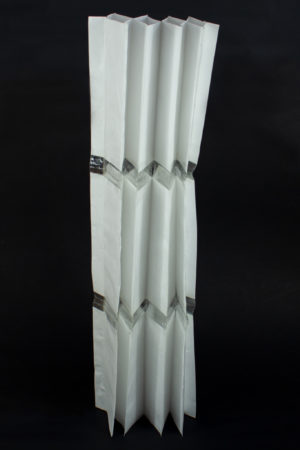
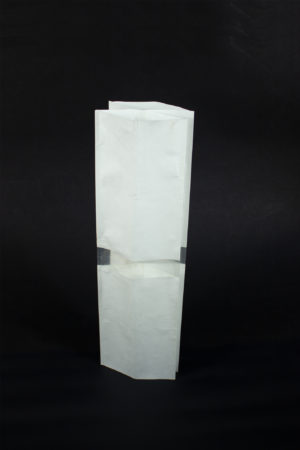
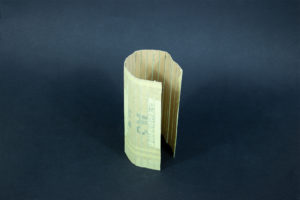
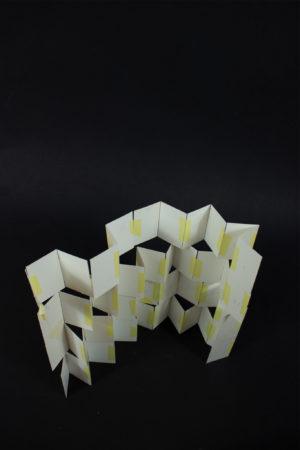
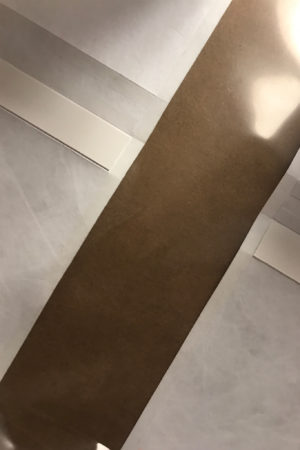
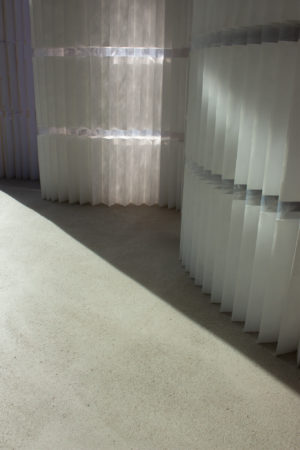
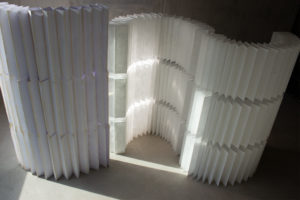

Service tray
Durch die Pandemie wurden viele Arbeitsplätze in unseren häuslichen Rahmen verlegt, wodurch sich Privat und Arbeit noch mehr vermischen. Hieraus resultierte mein Interesse ein für meine Bedürfnisse und Interessen angepasstes Homeoffice zu entwerfen.
Am meisten hat mich an meinem aktuellen Schreibtisch gestört, dass er meine Flexibilität gleichzeitig an unterschiedlichen Projekten zu arbeiten und zwischen diesen zu wechseln, ohne die vorige Arbeit zur Seite schieben zu müssen, einschränkt. Um mehrere Arbeiten auf meinem Tisch zu bewältigen, war ich demnach gezwungen das Chaos erst zu beseitigen.
Um dieses Problem zu lösen habe ich eine Werkbank gestaltet, welche alle Bedingungen für eine komfortable Arbeitsweise erfüllt. Service Tray bietet mehrere Tischflächen mit verschiedenen Funktionen. Während eine Fläche als Schneide-Platte fungiert, enthält die andere Lichter in der Tischplatte, was beispielsweise das Kopieren von Skizzen vereinfacht, indem das Licht von unten die daraufliegenden Papiere beleuchtet. Durch den Tablett-Mechanismus kann der Nutzer an einem Projekt arbeiten und ohne Hindernisse eine zweite Tischplatte herausziehen, um die erste Tischplatte abzudecken und zu dem nächsten Projekt wechseln. Hierfür muss die vorige Arbeit nicht weggeräumt werden.
Alles in allem verhilft Service Tray Arbeitsmethoden zu vereinfachen und unsere Arbeitssituation zu verbessern. Dadurch werden uns die ausgebreiteten und angefangenen Arbeiten an mehreren Orten unserer Wohnung nicht mehr stören und das chaotische Homeoffice kann organisiert werden.
Service Tray
During this pandemic many people’s work got displaced to their homes, mixing one´s private area with their workplace. Hence I was eager to design a homeoffice which fits to my needs and interests.
Firstly I felt that my current desk constrains my flexibility to work simultaneously on different projects and switch between those without removing the former work from the table. Using larger commodities for work forced me to clean the mess on my desk before placing other objects.
To solve this problem I have designed a work bench which covers all requirements for a comfortable workstation at home. Service Tray offers several table surfaces implicating different purposes. Whilst one surface is used for cutting, the second one contains lightbulbs inside which allows one for instance to copy sketches by using the back-lit surface. Due to the tray-mechanism the user can work on a project and easily pull out a second table surface to cover the current work and switch to an other project. The former work does not need to be displaced anymore.
All in all Service Tray assists the user by simplifying one´s working method and enhancing the working-situation. Therefore we will not be bothered by the vast amount of tables for each project at home and the mess in our homeoffice can be organized.
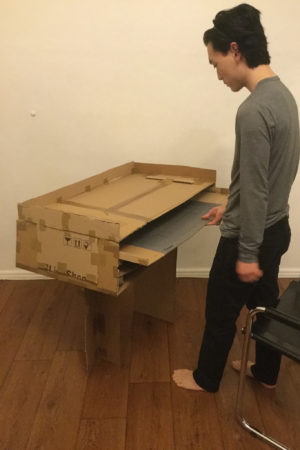
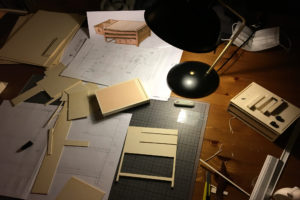
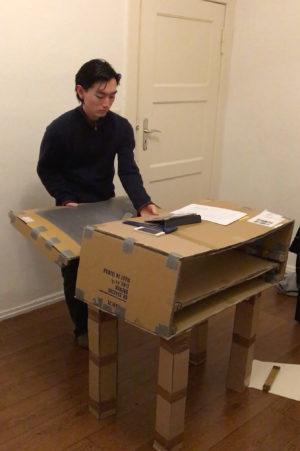
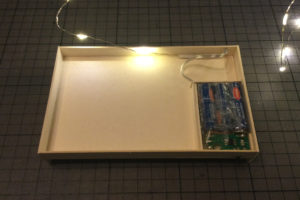

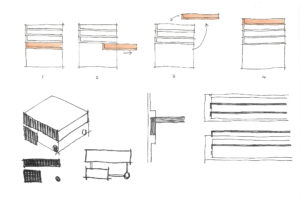
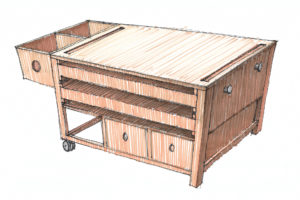
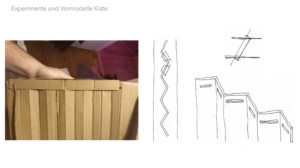
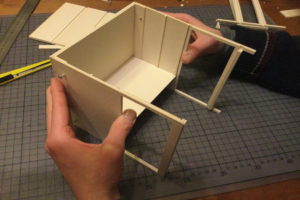
Ein vorgegegebenes Set von Bauteilen diente als Ausgangspunkt für die Erarbeitung von lichttechnischem Grundwissen zu LED-Technik. Talks mit den Designern Dirk Winkel und Joshua Putzke sowie eigene Recherche und Experimente mit dem Bauteil-Set vertieften diese Kenntnisse. Aufgabe für den Entwurf war die Gestaltung eines Prototyps, der die Vorteile aktueller LED-Technik nutzt, also mit minimalen Mitteln eine maximale Wirkung entfaltet.
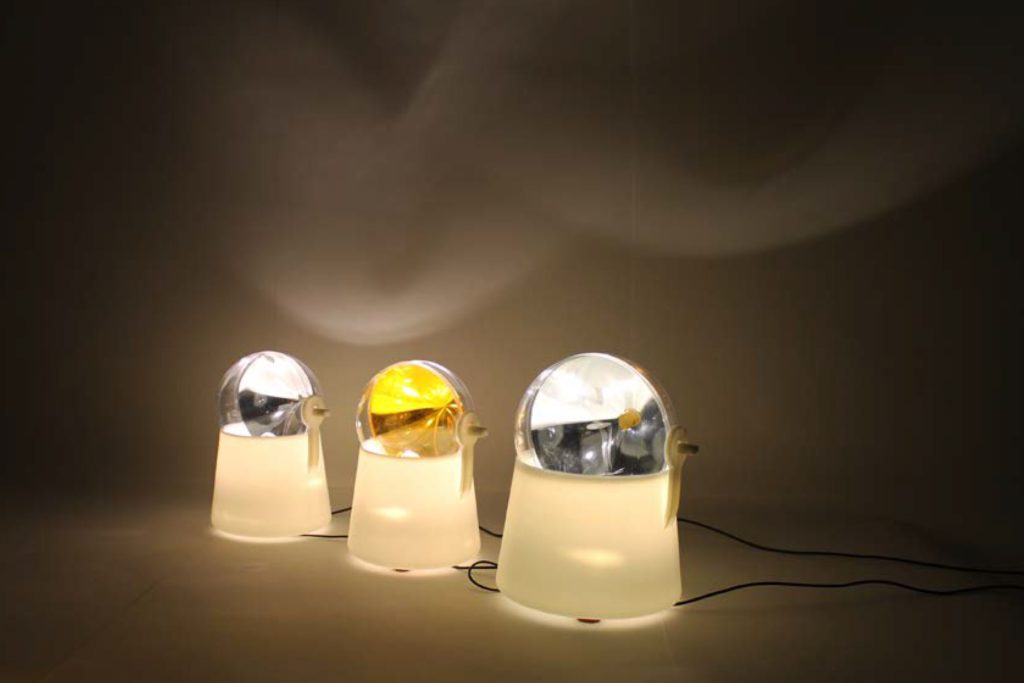 Die Kugel – Theresa Schwaiger
Die Kugel – Theresa Schwaiger
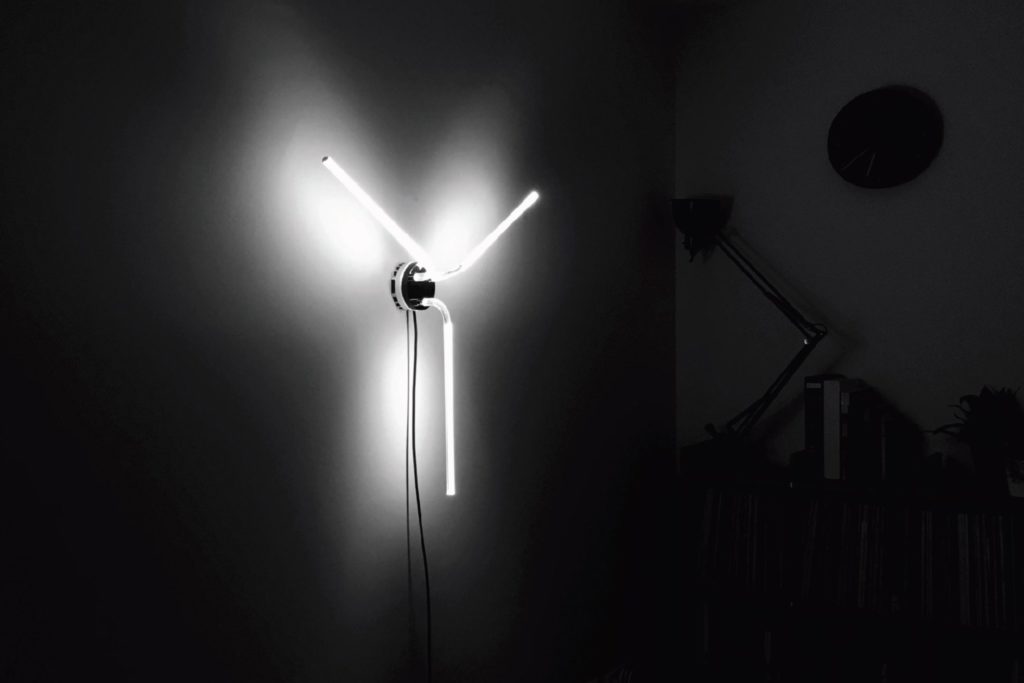 Stabschalter – Peer Alexander Assmann
Stabschalter – Peer Alexander Assmann
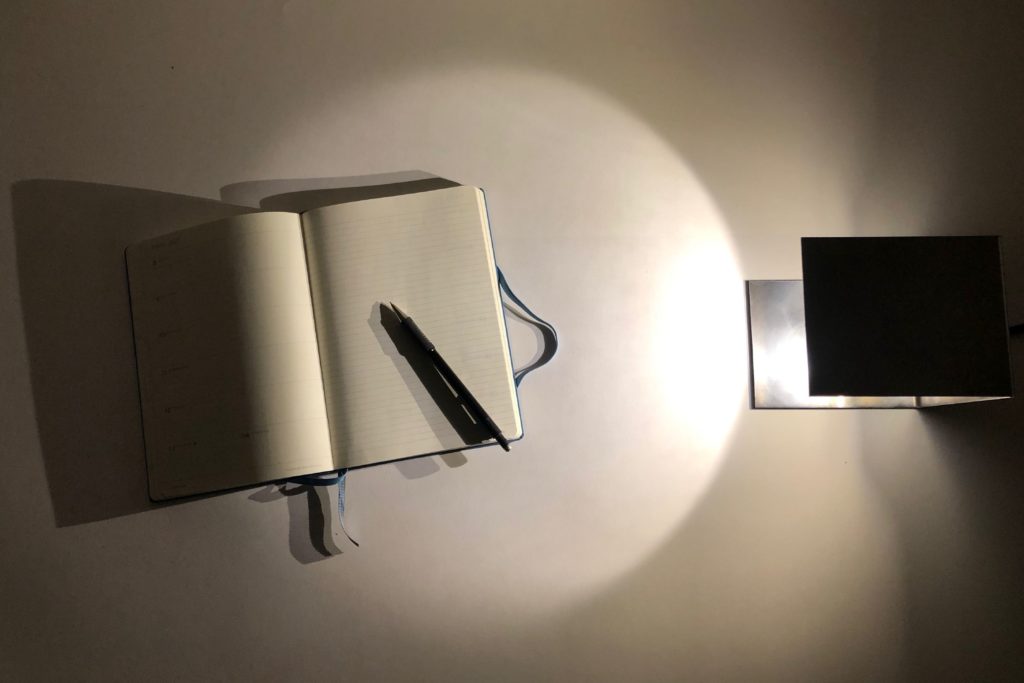 C-0 – Jonas Fehrenbach
C-0 – Jonas Fehrenbach
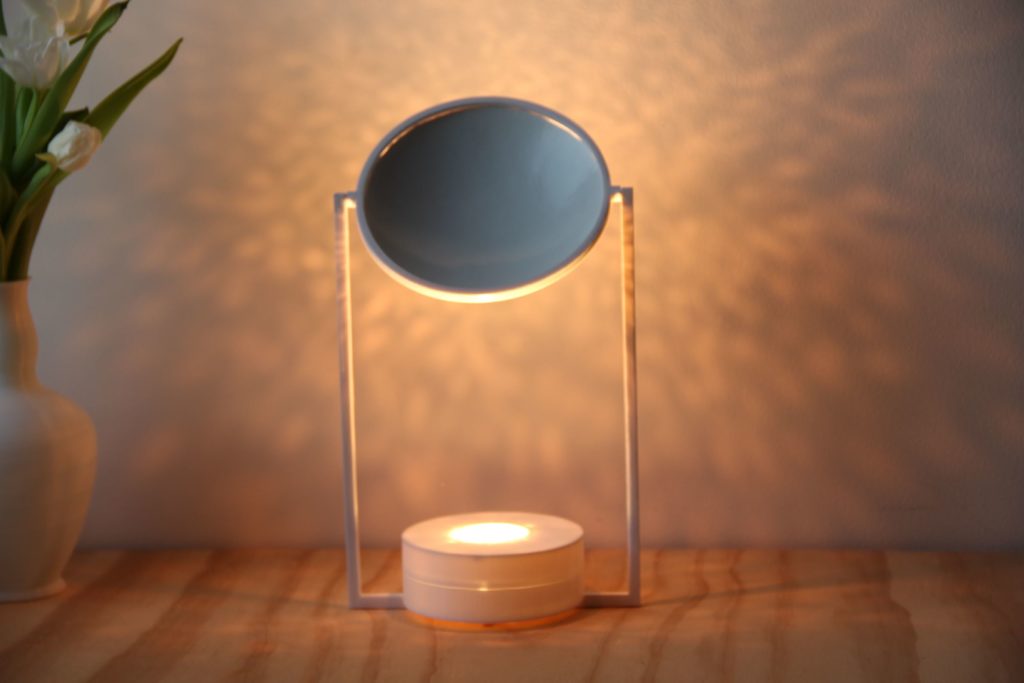 360° – Catherine Wolter
360° – Catherine Wolter
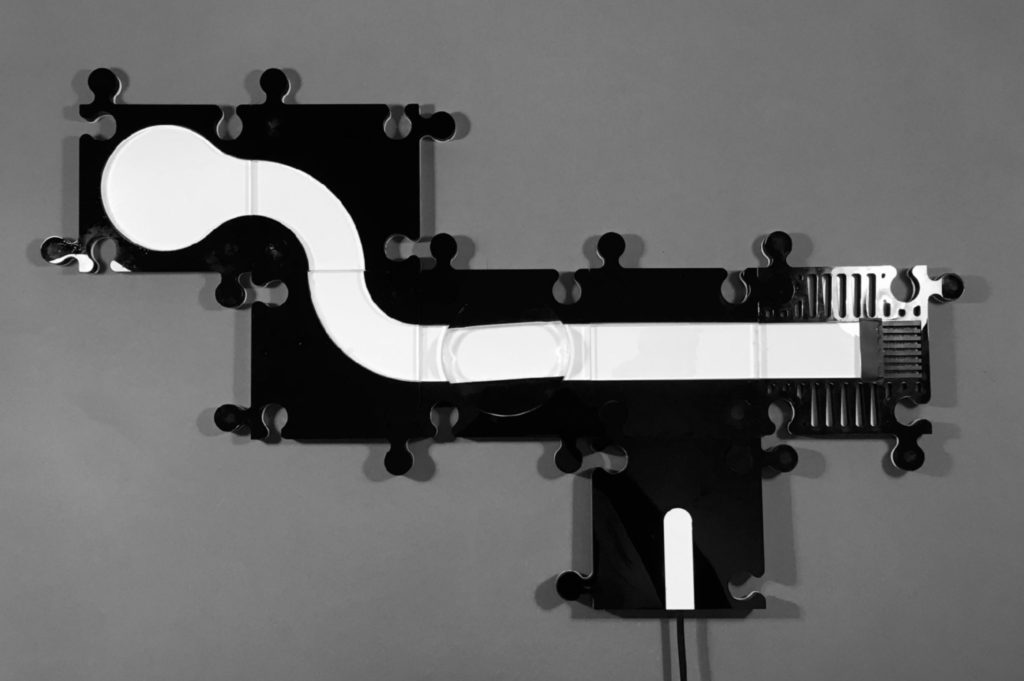 Schaltwerk – Peer Alexander Assmann
Schaltwerk – Peer Alexander Assmann
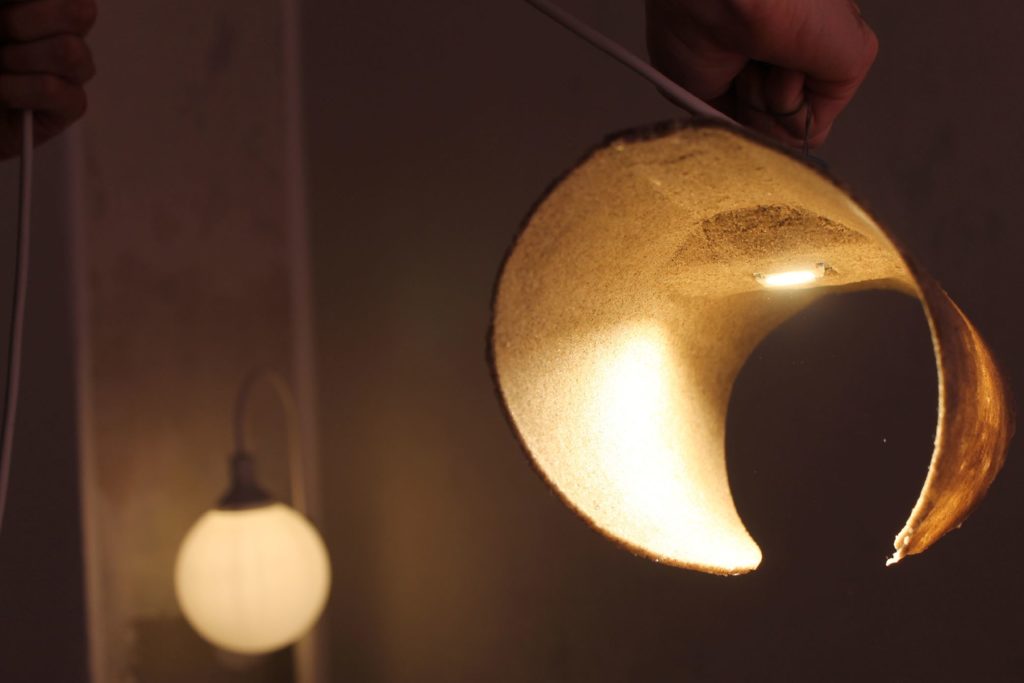 BLTC_20 – Aleksander Luczak
BLTC_20 – Aleksander Luczak
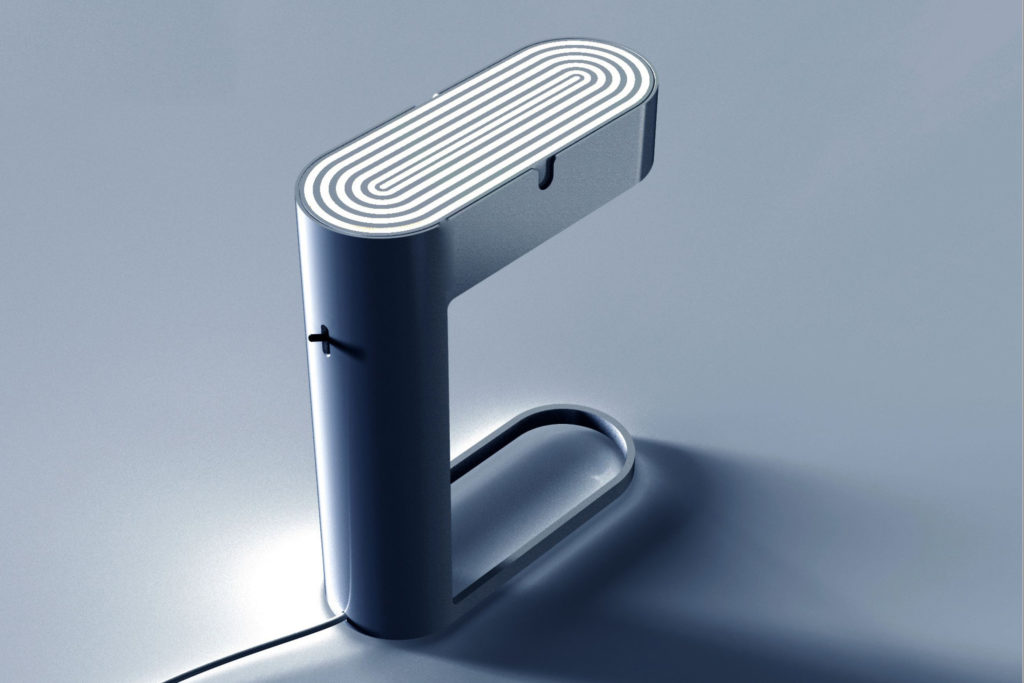 Glow Lamp – Omri Ron
Glow Lamp – Omri Ron
 MONO90 – Hendrik Lucka
MONO90 – Hendrik Lucka
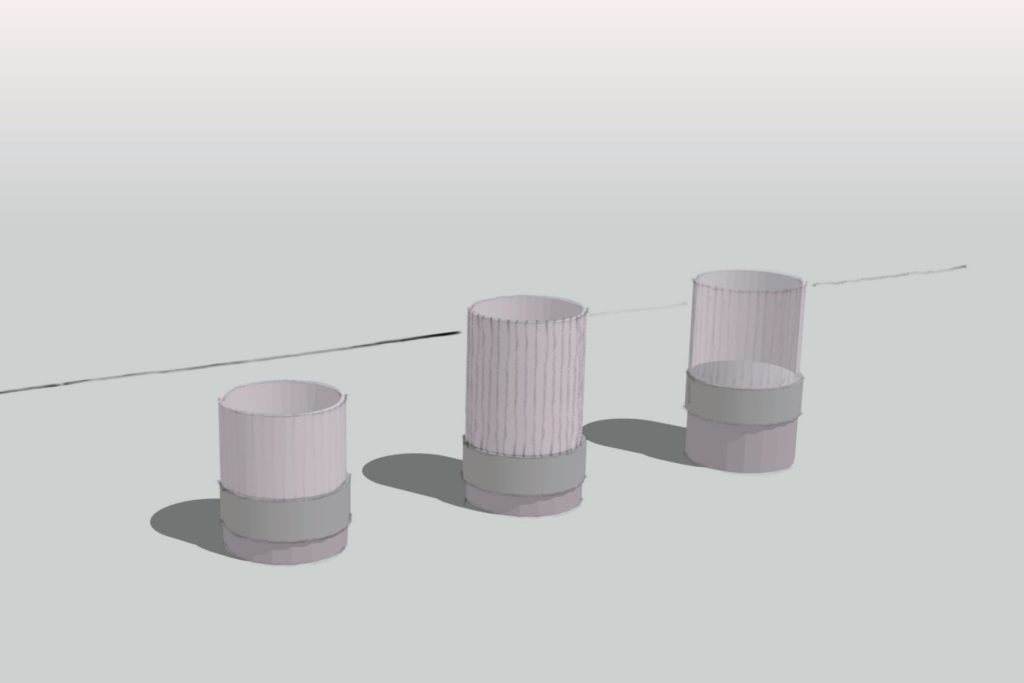
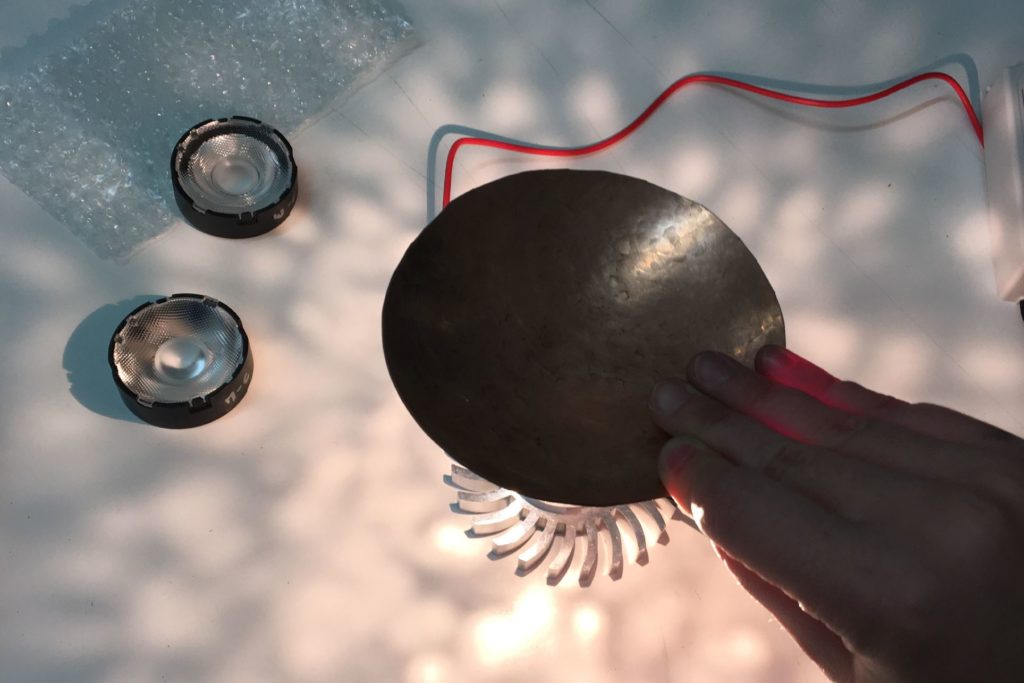
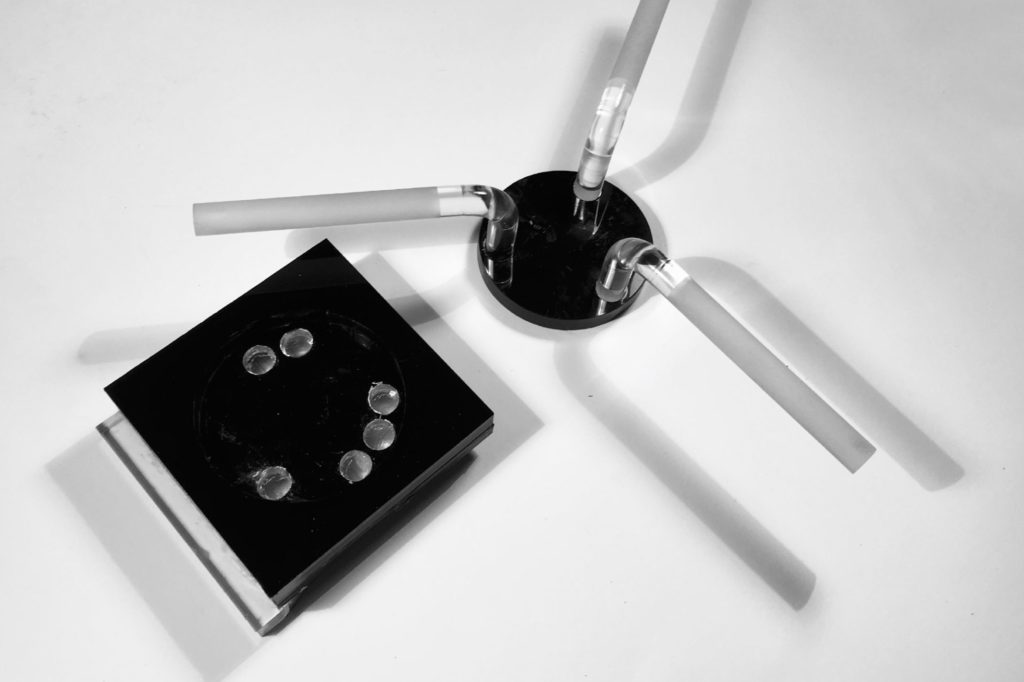

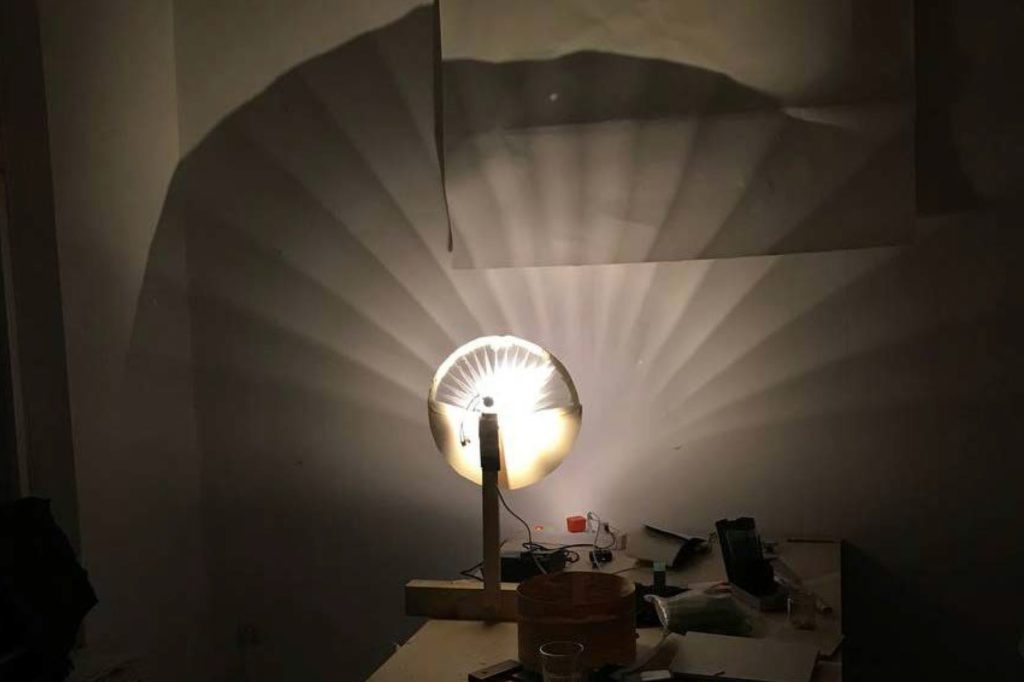
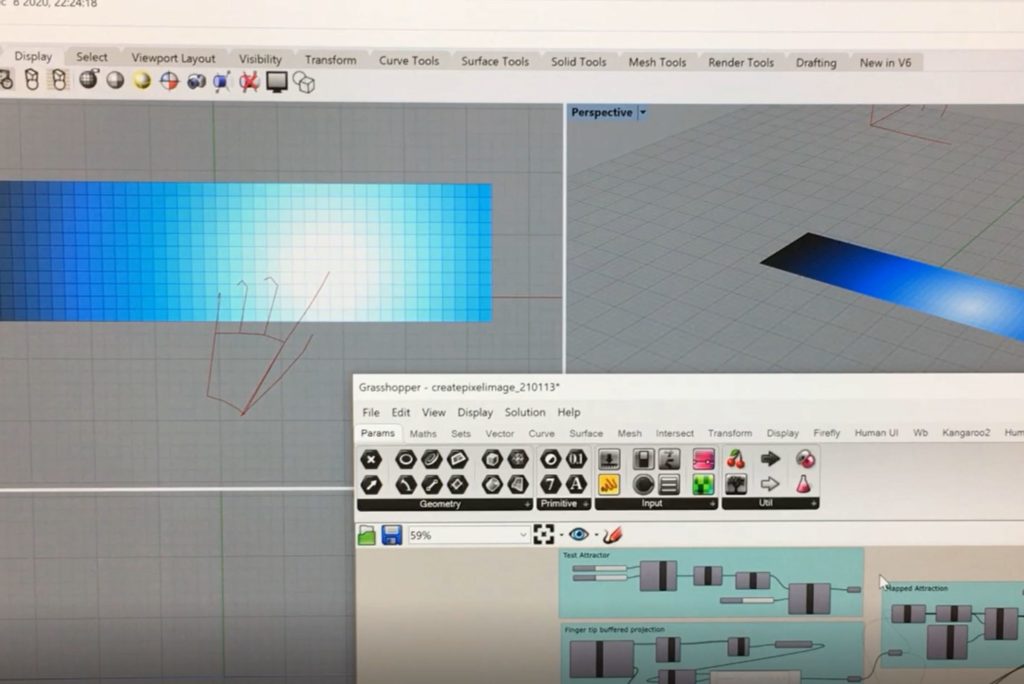
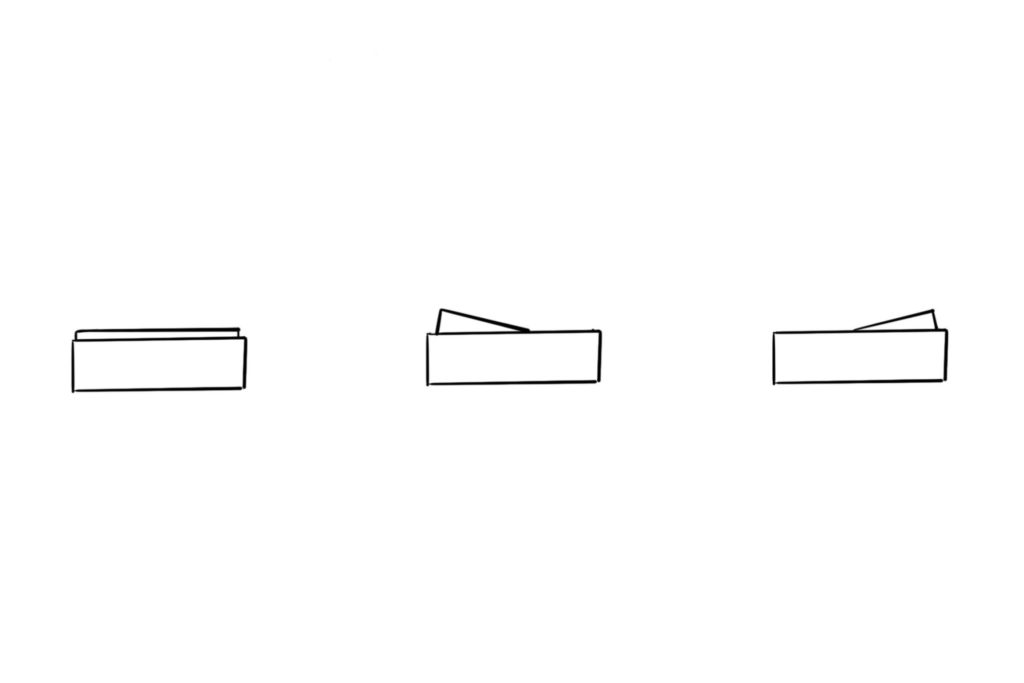
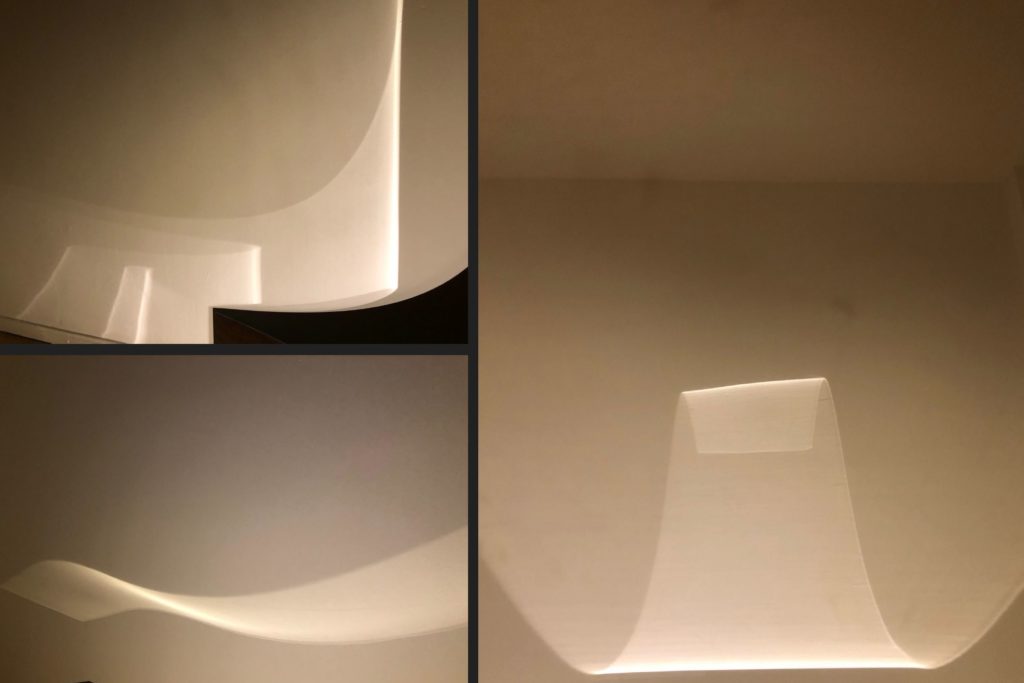
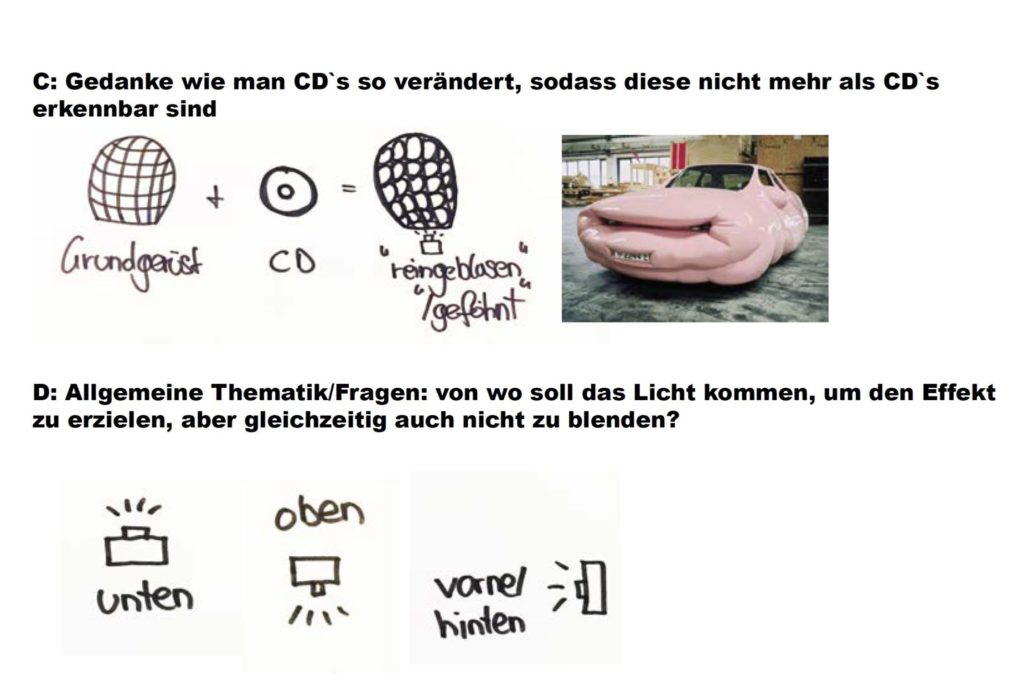
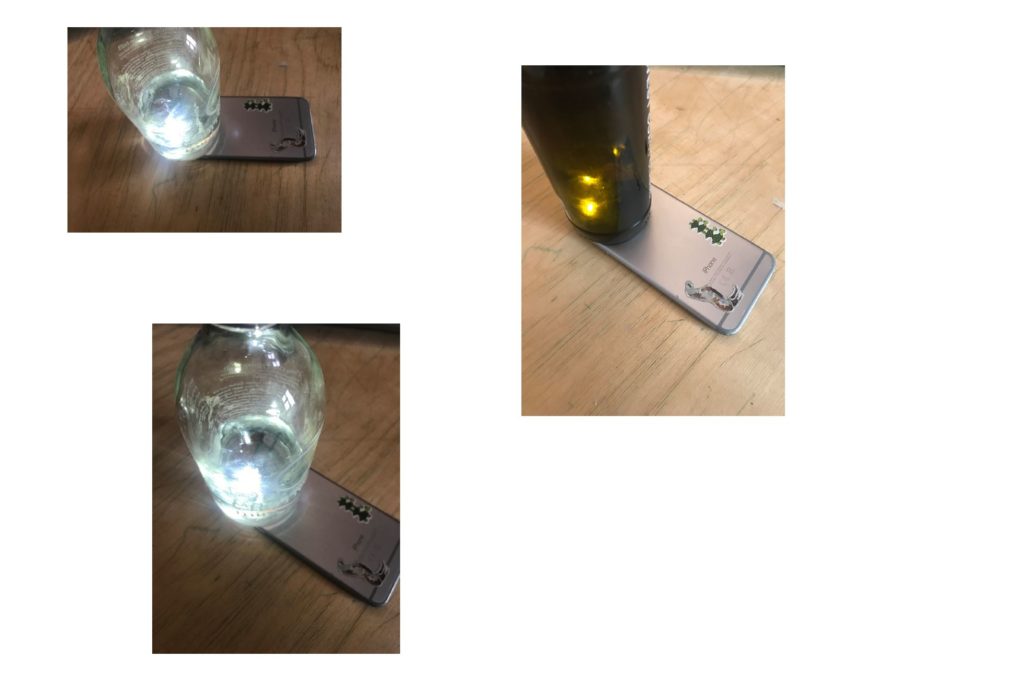
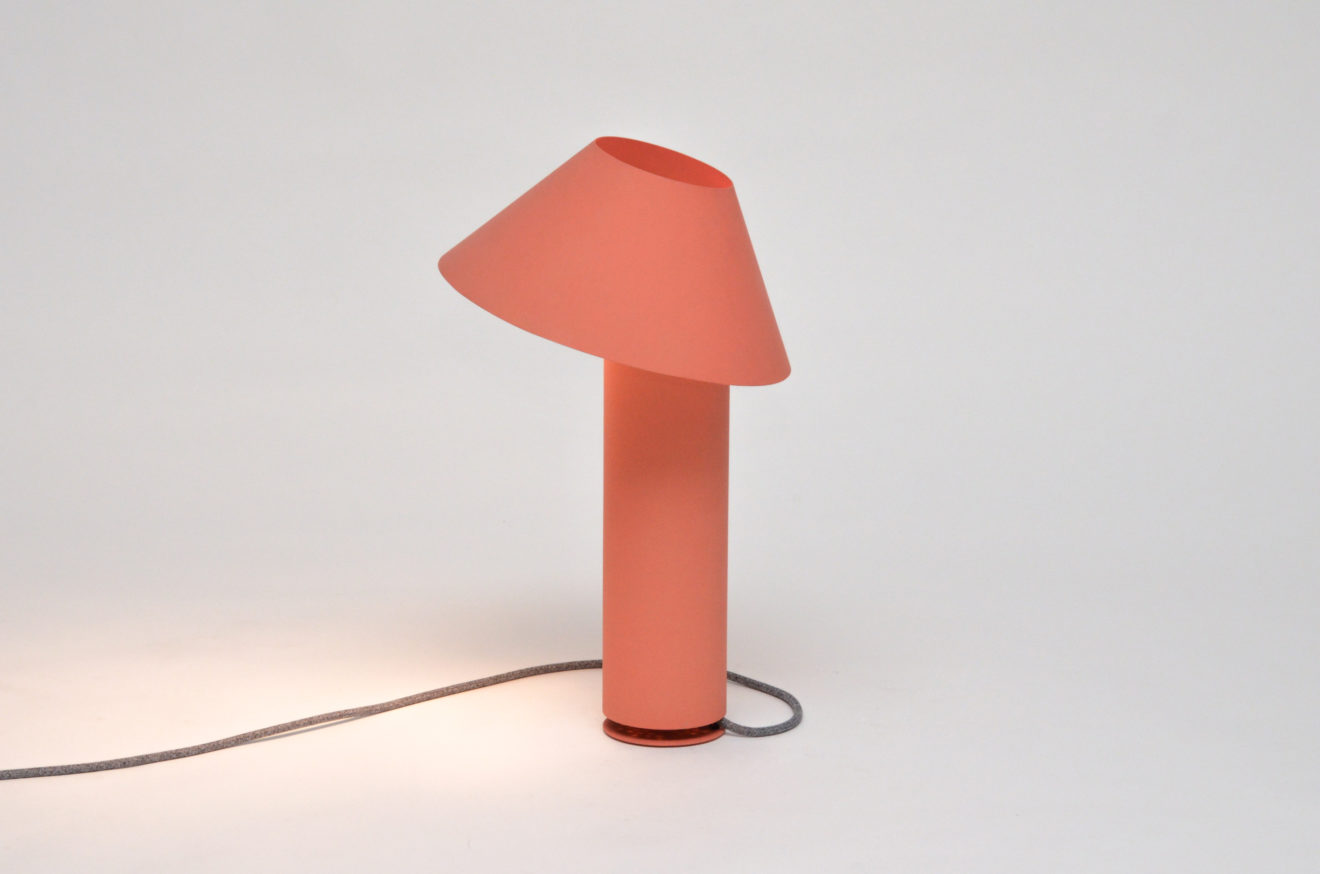
Elementar – Licht überraschend einfach
Auf der Basis aktueller LED-Technik lassen sich lichtstarke und sehr energieeffiziente Beleuchtungskörper in kleinen Dimensionen verwirklichen, die sehr unterschiedliche Lichtwirkungen erzeugen können. Diese Tatsache dient uns als Ausgangspunkt für Experimente, Untersuchungen und Recherchen über das Phänomen Licht und über aktuelle LED-Technologie. Mit Hilfe eines vorgegebenen Sets von Bauteilen werden wir uns ein lichttechnisches Grundwissen erarbeiten und auf Basis der gewonnenen Erkenntnisse einen Prototyp entwerfen, der mit minimalen Mitteln eine maximale Wirkung entfalten soll (Semesteraufgabe).
Talks mit Dirk Winkel, Design D127 für Wästberg (www.dirkwinkel.com), und Joshua Putzke, Studio rlon (www.rlon.com), geben uns wertvollen „Input“ und interessante Einblicke in die Praxis des Entwurfs und der Gestaltung mit Licht.
Voraussetzungen: Regelmäßige aktive Teilnahme am Seminar, Vortrag zu einem lichttechnischen Thema, Präsentationen
Abgabe: Prototyp, Dokumentation, Poster, Kurz-Video
Max. 10 TeilnehmerInnen. Die Anmeldung erfolgt ausschließlich über diesen link: https://forms.gle/vKszx1kos8S5HNM29
Prof. Holger Neumann, WM MA Steffen Herm
Do. 10:30 – 13.00 Uhr, Online-Seminar, Einführungstermin Präsenz. Einzelbesprechungen: STR R407
Starttermin: 05.11.2020
Basierend auf Referaten und Workshops wurden in Crate Creator die relevanten Prinzipien und Parameter von verschiedenen Metallverarbeitungsverfahren vermittelt. Anschließend sollte das Wissen in dem individuellen Entwurf einer stapelbaren Box aus 1m³ gefaltetem Stahlblech angewandt werden.
Die Abwicklungen der Blechteile wurden gelasert, konnten jedoch aufgrund der Tatsache, dass die Werkstätten für regulär Studierende geschlossen waren, noch nicht gebogen und zusammengesetzt werden.
 Infecting – John Lörinci und Inhwan Oh
Infecting – John Lörinci und Inhwan Oh
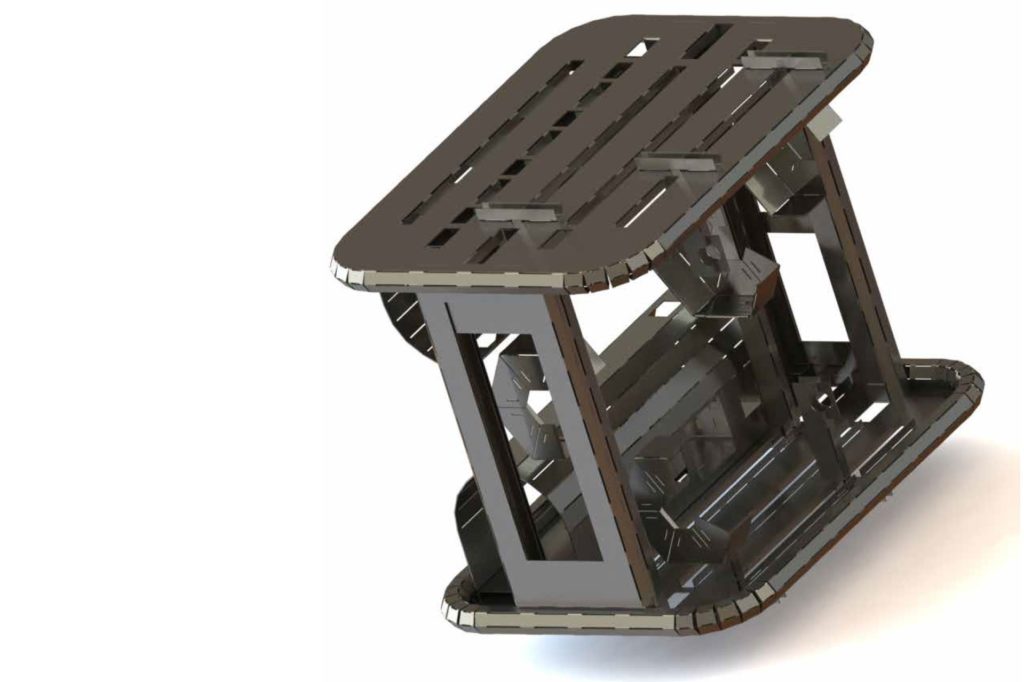 Starfighter 39 – Anna-Maria Argmann und Katharina Matejcek
Starfighter 39 – Anna-Maria Argmann und Katharina Matejcek
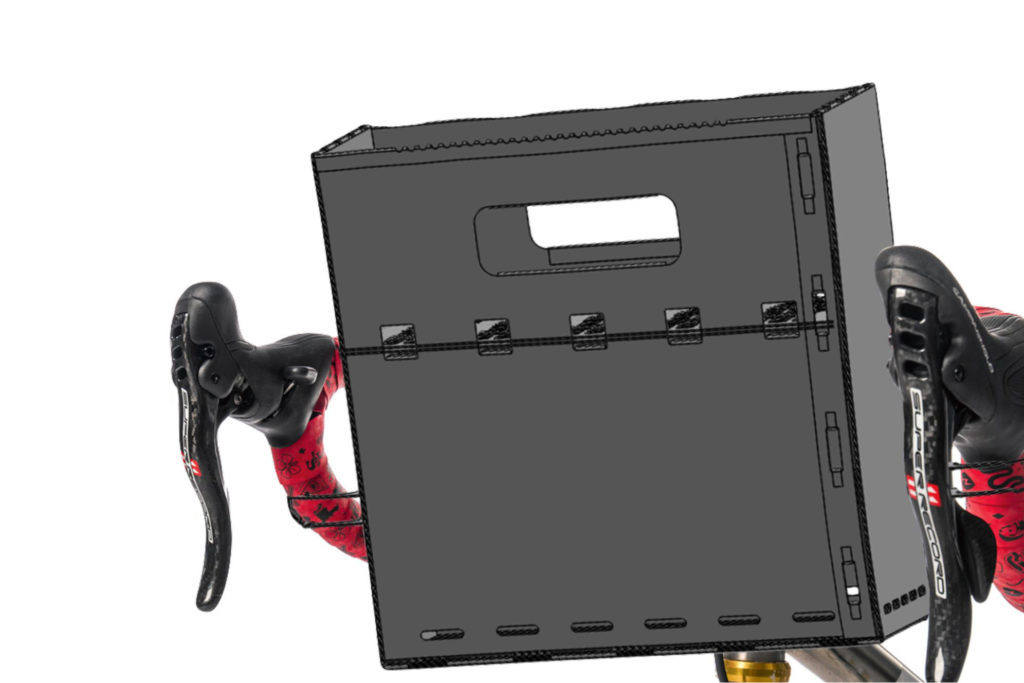 Die GrillBoxx – Emma Mende und Felix Zahner
Die GrillBoxx – Emma Mende und Felix Zahner
 .tin04 – Esther Betz
.tin04 – Esther Betz
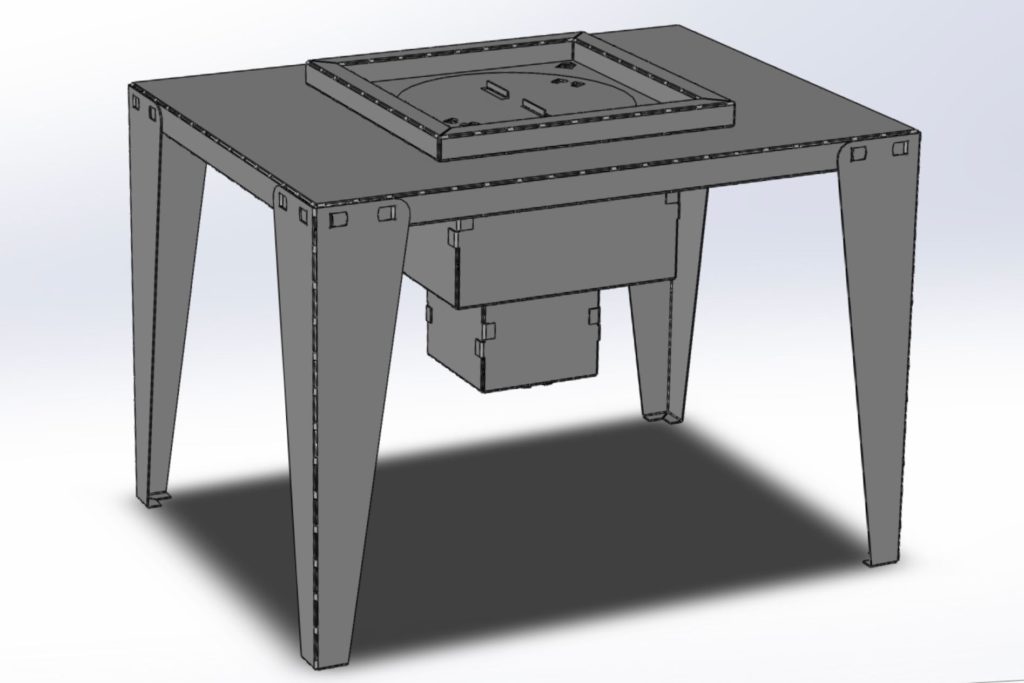
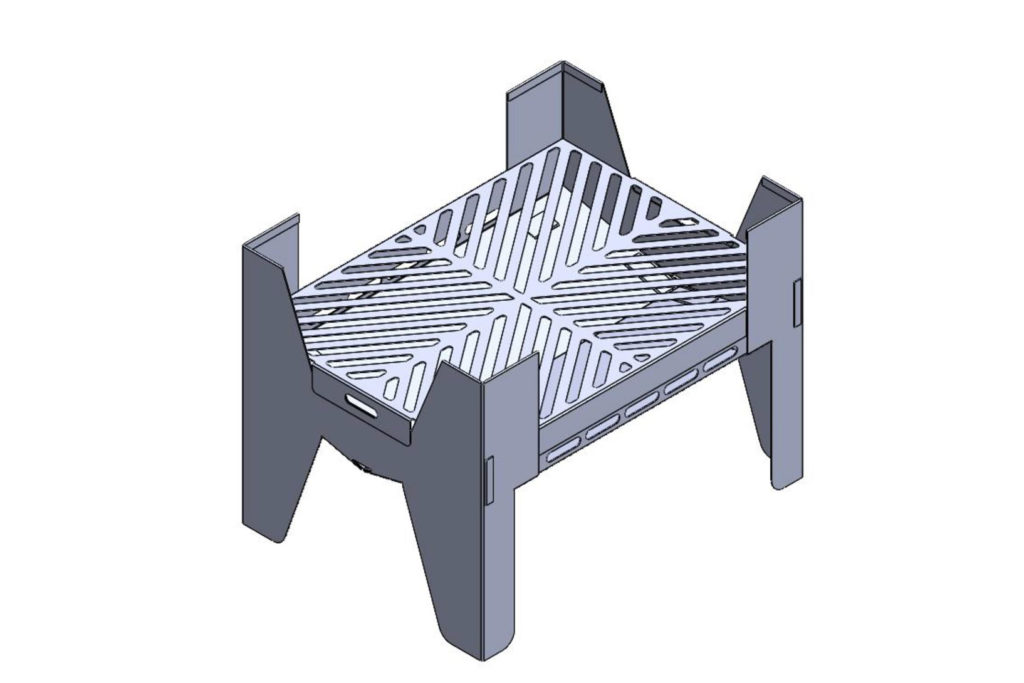
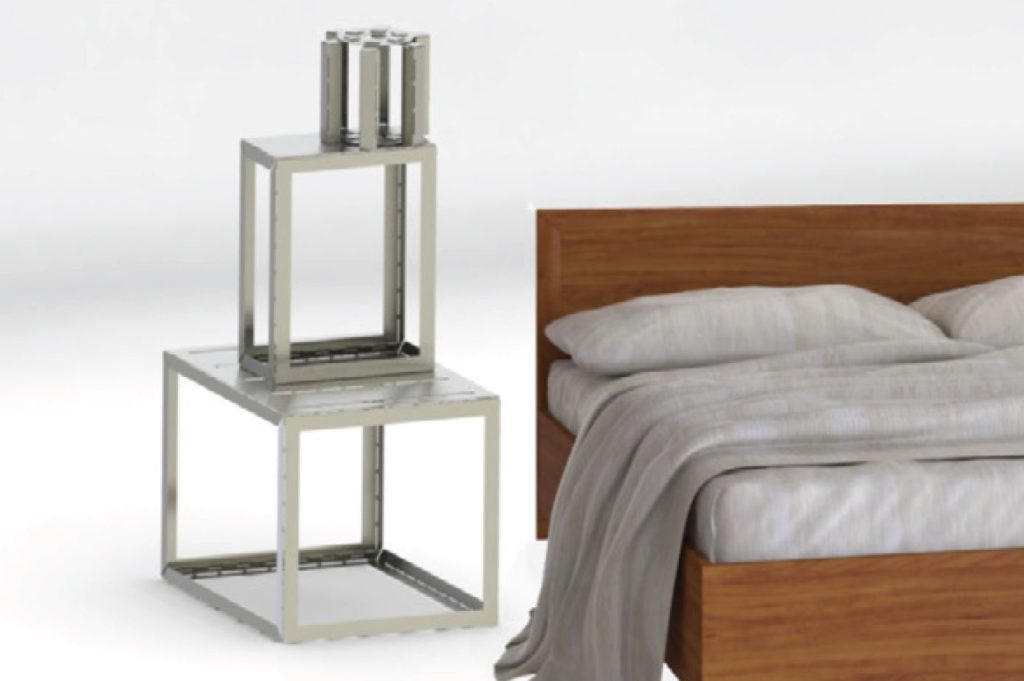
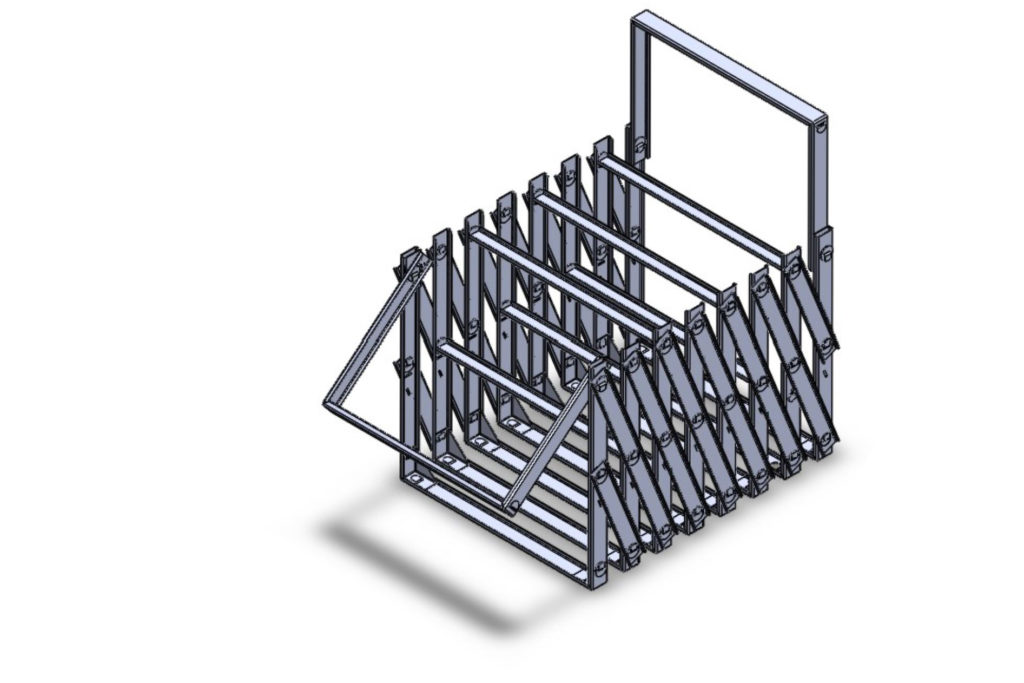 Watchtower – Roya Haupt und Michael Dziewior
Watchtower – Roya Haupt und Michael Dziewior
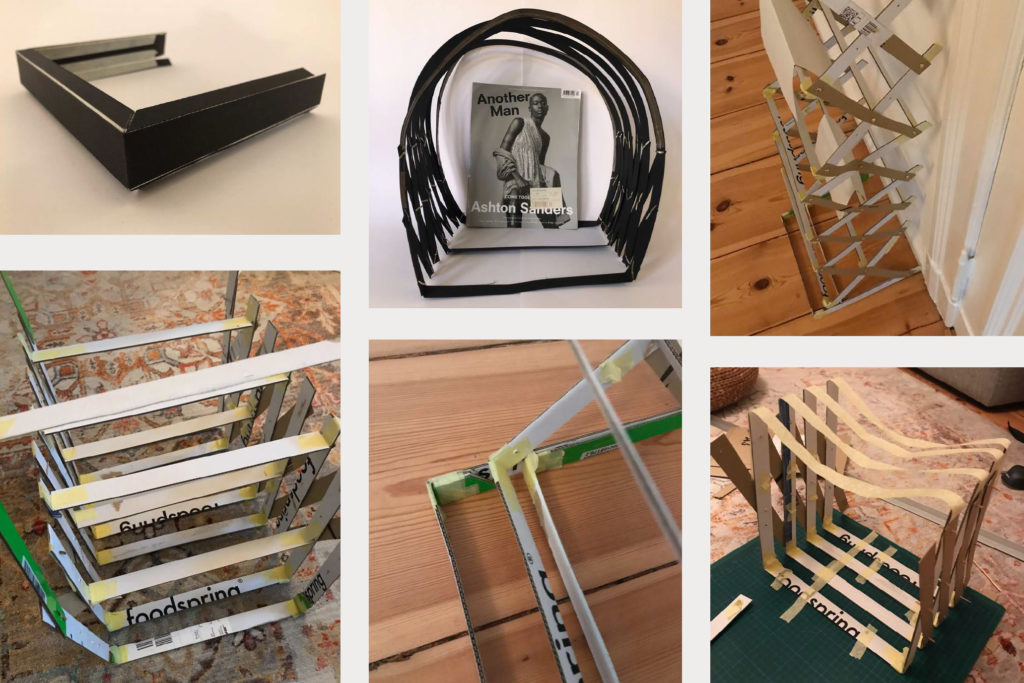
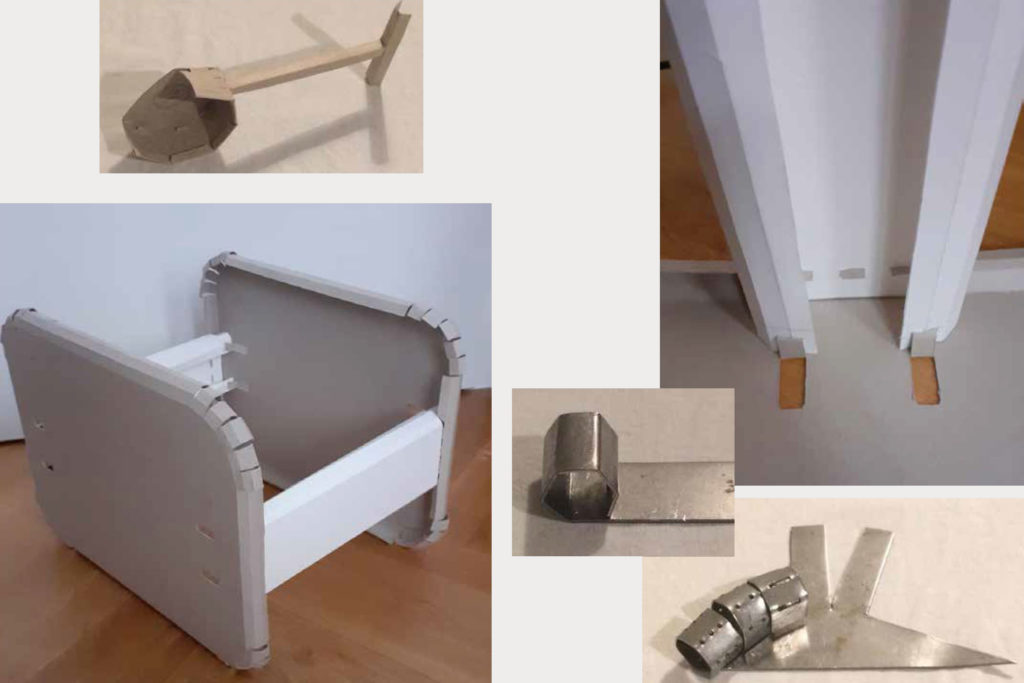


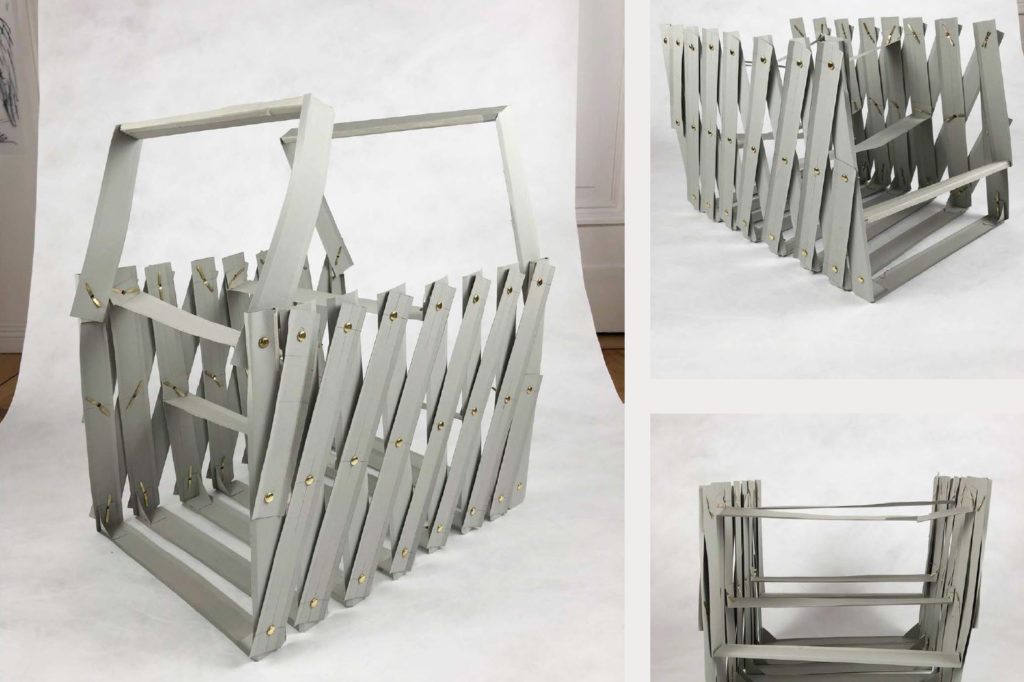

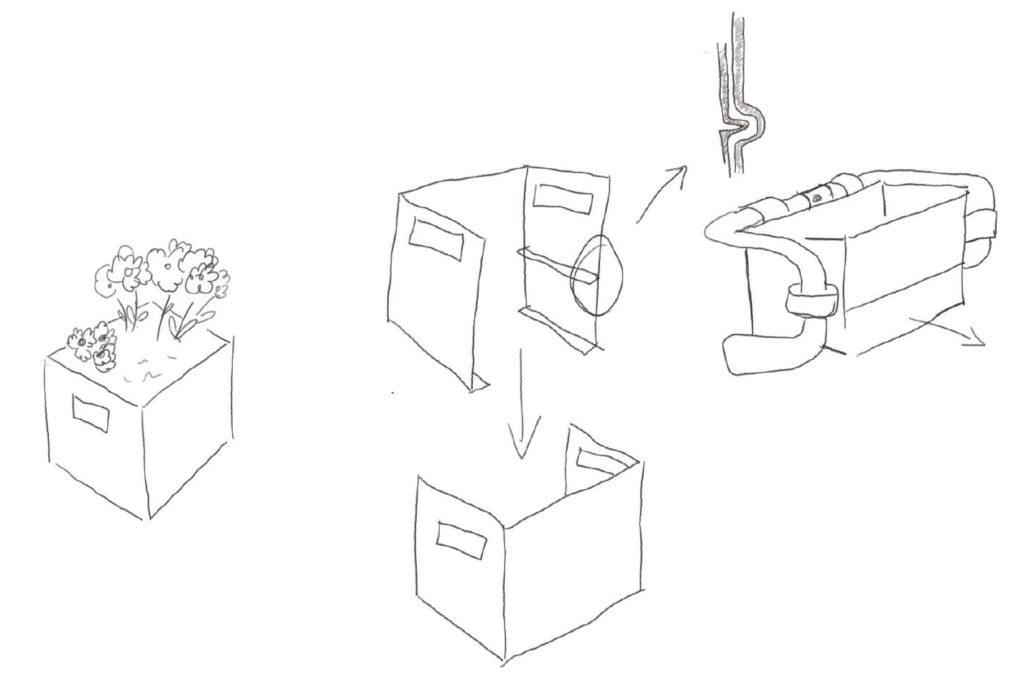
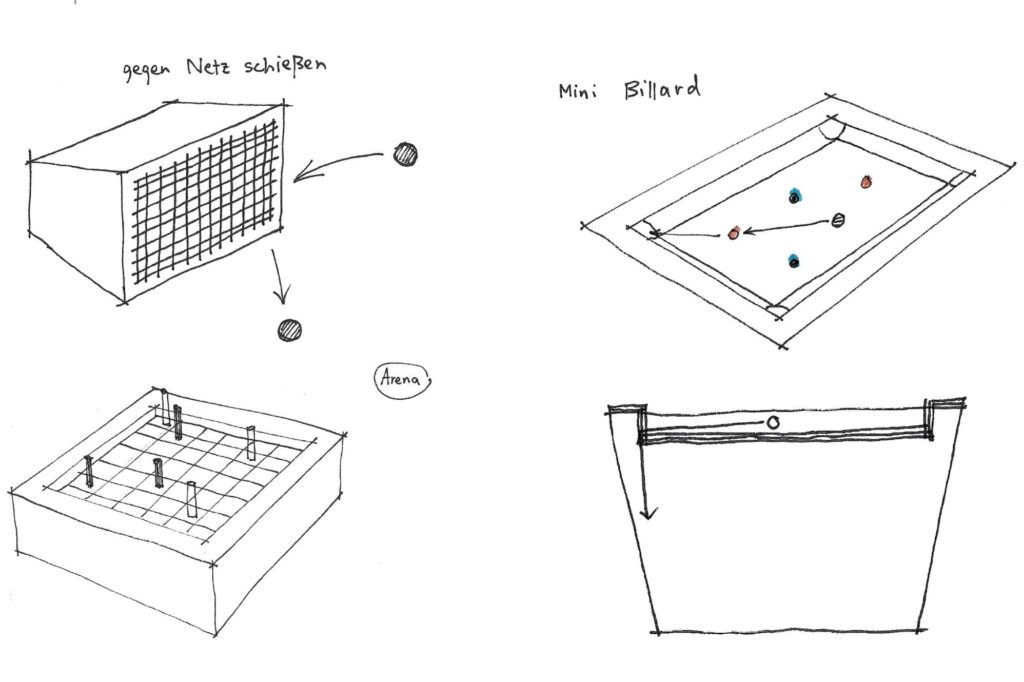
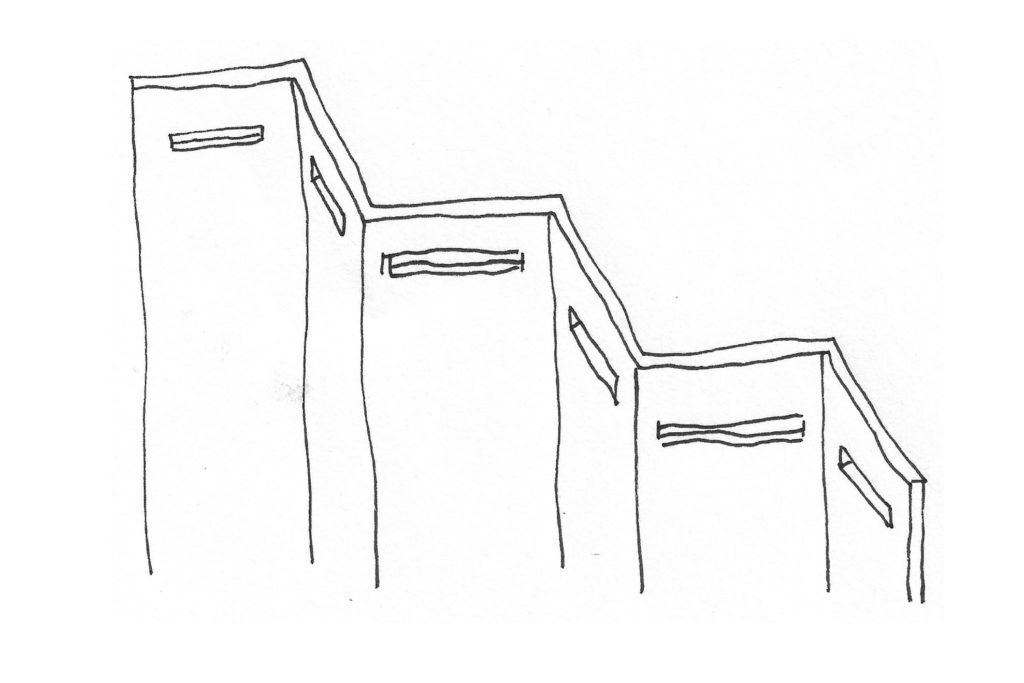
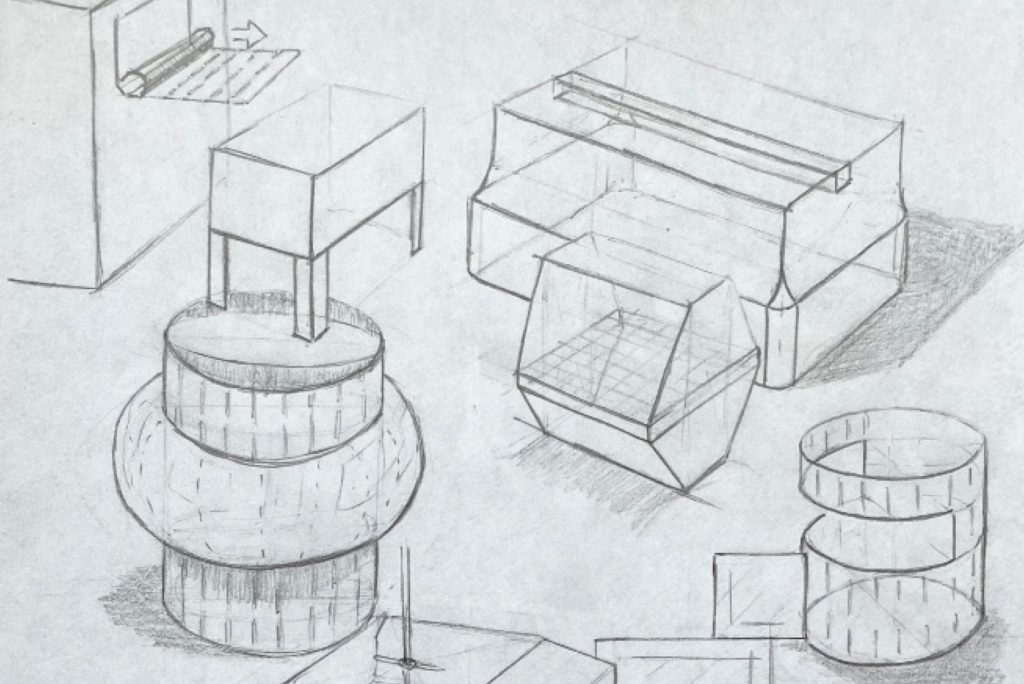
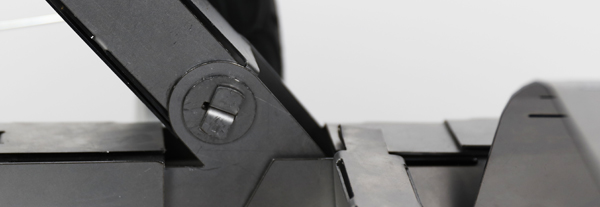
Transforma von Emily Dietrich und Katharina Sauter
Bleche sind eines der wichtigsten und wesentlichsten Metall-Halbzeuge, insbesondere Stahlblech ist von grundlegender Bedeutung in der Industrie und wird nicht nur für Gehäuse, sondern auch für Lasten tragende Konstruktionselemente, Maschinenteile und Produkte gerne eingesetzt.
Entwerft in Gruppen á zwei Personen eure ganz individuelle Box aus 1mm starkem, gefalteten Stahlblech. Sie hat eine Grundfläche von 400 x 300 mm und einer Höhe von 300 mm. Sie besitzt an den schmalen Seiten eine Griffmöglichkeit und stapelt formschlüssig mit den Kisten Eurer Kommiliton*innen. Das formschließende Element ist vorgebeben. Über Funktion, Inhalt, Nutzung und Aussehen bestimmt ihr.
Die Konstruktion soll aus ausgelaserten und gekanteten Blechelementen bestehen. Alle abgewickelten Elemente müssen auf eine Fläche von 950 x 950 mm passen, wobei ein Mindestabstand von 10 mm zwischen den einzelnen Teilen bestehen muss. Die Verbindung der Blechteile soll aus dem Material ohne zusätzliche Verbindungselemente erfolgen (z.B. durch Laschungen). Für „Notfälle“ stehen jeder Gruppe vier POP®-Nieten zur Verfügung. Kantungen werden durch gelaserte Perforationen vereinfacht. Die Fertigung der Blechabwicklung erfolgt durch unseren Projektpartner System 180 GmbH.
Besonderen Wert wird auf einen effizienten Materialeinsatz sowie eine dem Prozess und dem Material angemessene Formensprache gelegt. Gemeint ist eine konstruktive Eleganz, die das Zusammenspiel zwischen Konstruktion, Statik und gestalterischer Qualität verkörpert.
Anforderung: regelmäßige Teilnahme Seminar + CAD-Seminar, Referat, Entwurf, 3D-Datensatz und Prototyp, Dokumentation, Poster und Präsentationsvideo.
Eckdaten: 05.11.20: Kick-off (Vortragsvergabe, Semesterablauf, Organisatorisches)
03.12.20: Präsenzkorrektur
17.12.20: Entwurfsendpräsentation (1:1 Modell aus Pappe, CAD-Datensatz und Abwicklung)
21.01.21: Abgabe Laserdaten für System 180
18.02.21: Abschlusspräsentation (digit.) plus Prototyp
25.02.21: Nachbesprechung und Fototermin
03.03.21: Abgabe Dokumentation, Plakat und Video (Format PDF)
Prof. Holger Neumann, WM Steffen Herm
Online-Seminar und Präsenz / Do 14:00-18:00h
Start: 05.11.2020 um 14:00 in Raum 401 (Aula)
CAD-Workshop Mi 10 – 13 Start Mi. 04.11.20
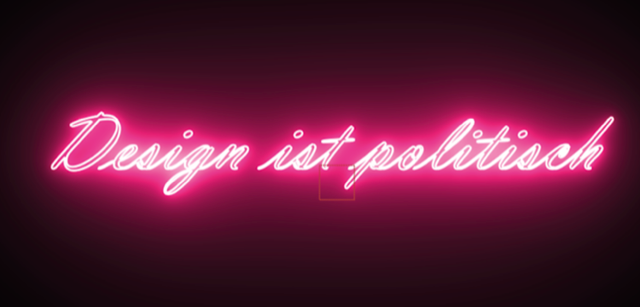
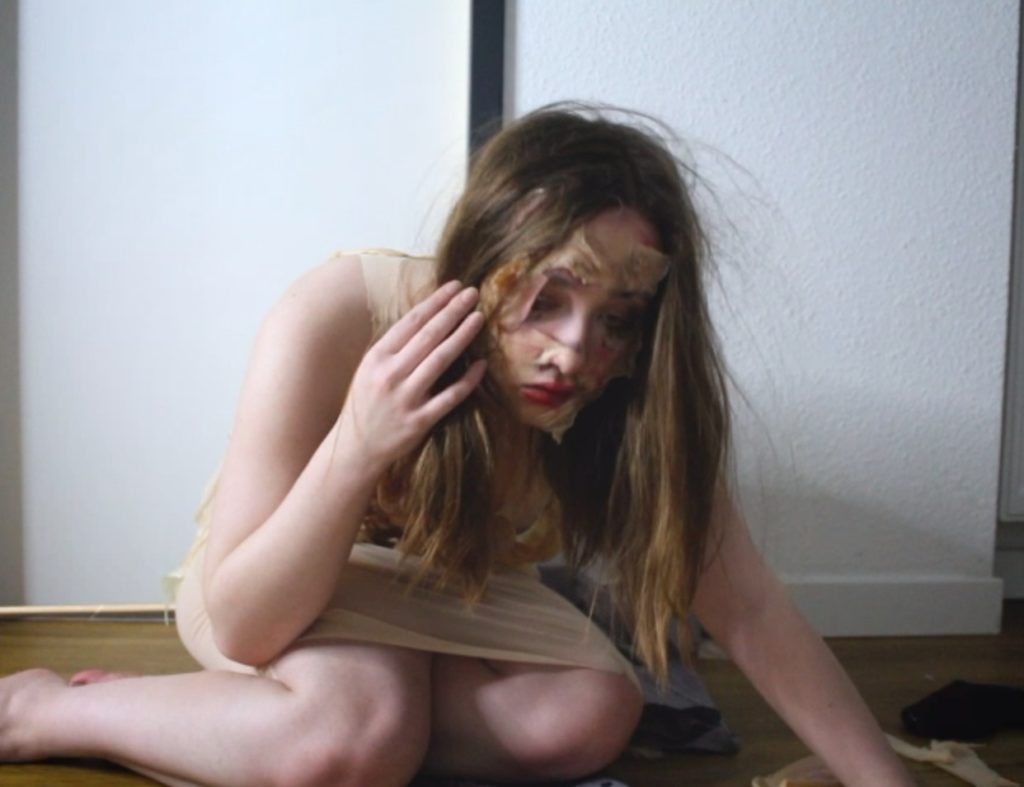
Titia Grefe
Betreut durch:
Prof. Jozef Legrand
KM Caroline Bittermann
LA Carsten Struck
LA Bruno Eritt
HA Julia Heunemann
Projekt: Dark Liquid
3. Semester
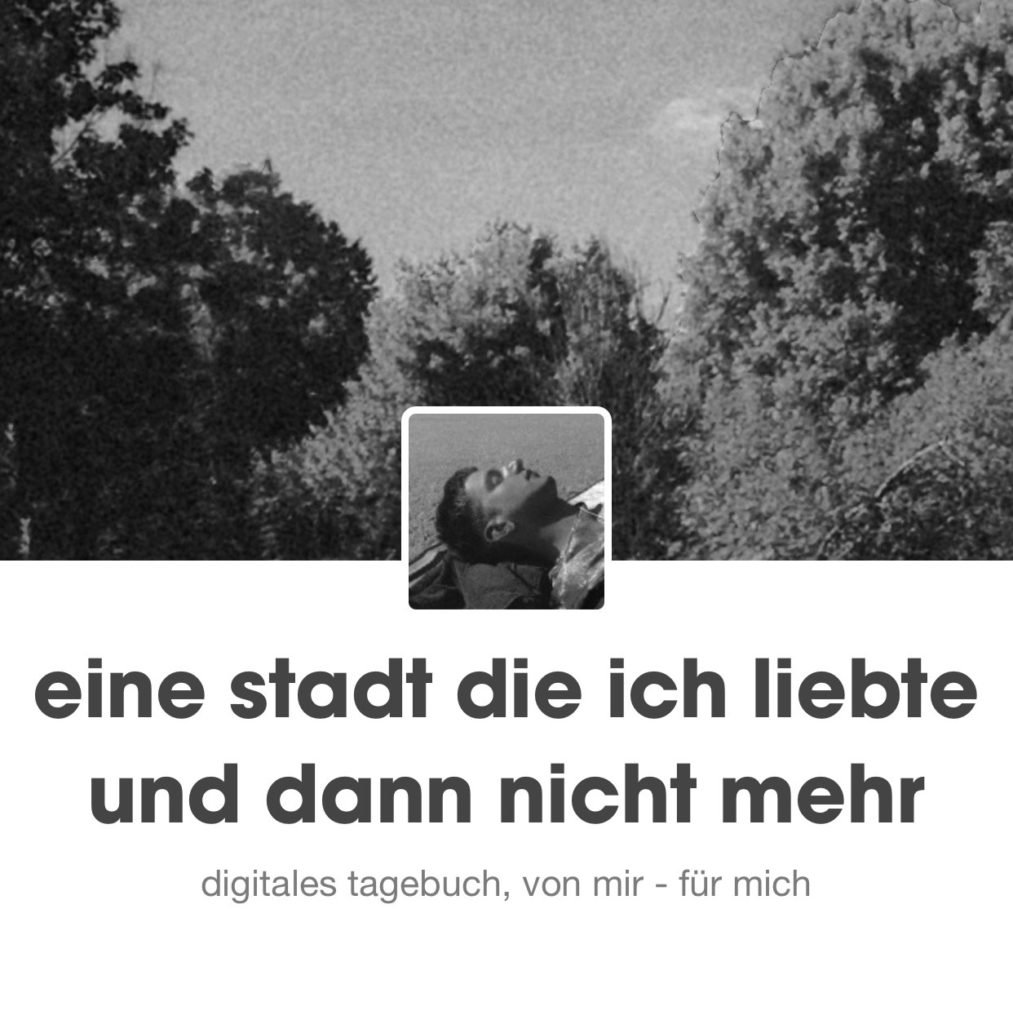
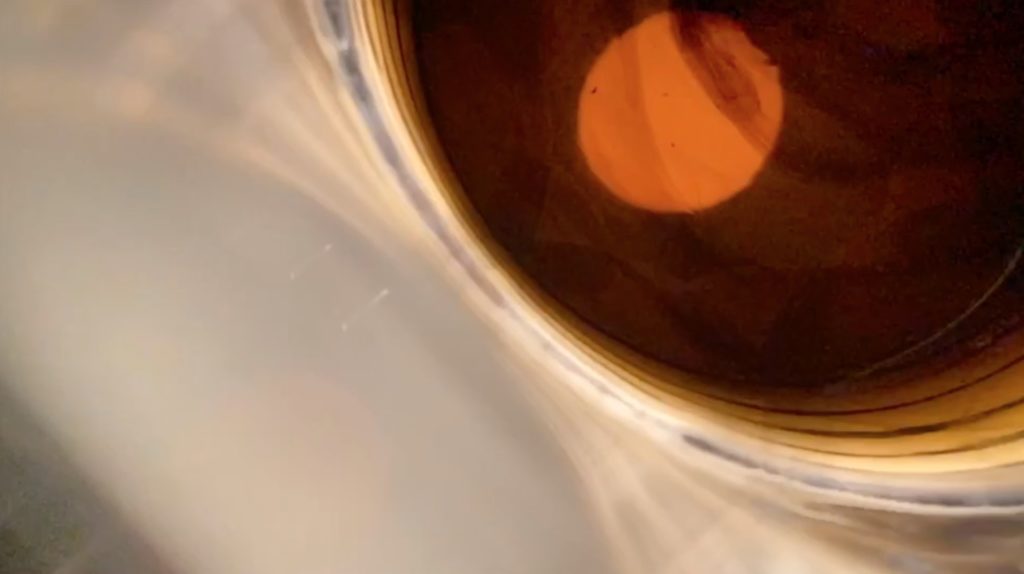
Philip Welp
Betreut durch:
Prof. Jozef Legrand
KM Caroline Bittermann
LA Carsten Struck
LA Bruno Eritt
HA Julia Heunemann
Projekt: Dark Liquid
3. Semester

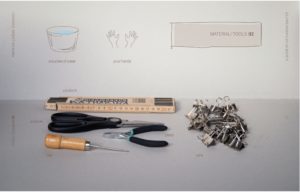
click images to download the full pdf
A guide by Katharina Sauter
„This semester started while a pandemic was still spreading over the world. We are urged to limit our contacts and it was neither possible to go to university (most of the time) nor to visit the workshops. Basket weaving is what helped me to stay sane in these last few months. Like everyone else I spend a lot of time at home and decided that I want to learn a new craft I can practice without a lot of machines or tools.
In this guide you can see the whole process of how I learned basket weaving and the results of this semester. I included the websites as well as the YouTube channels that inspired me to learn this new craft.The baskets brought me a lot of joy and distracted me a little bit from what was going on outside.
I know a lot of people think „why should I sit there for hours and work on a basket when I can pay someone to do it faster (or have it made industrially) so I can spend my time doing something els?“ But I just love sitting there for hours and hours working on something with my hands, creating something while listening to music. I made a playlist with music I’ve been listening to while weaving.
It gives me SO much satisfaction to hold an object in my hands that I completely made myself. Also for me is doesn’t feel like a lot of time because during this process I am in a flow. I will only realize that I’ve been working on the basket for three hours because my back hurts or my hands are really dry. I can hardly think of anything else that is able to give me this feeling.
I made this interactive guide (there are links included!) for future Katharina in case she will forget what I learned in the last few months. I myself benefited a lot from the basket weaving folk who published their knowledge online so that is why I want to make my guide accessible for more people, too.
If one day were allowed to meet again I would love to start a club, where we can be crafty together and benefit from each others knowledge. Please contact me if you’re interested in participating!“
Betreut durch:
Prof. Jozef Legrand
Seminar: Meine Idee. Mein Projekt
5. Semester +
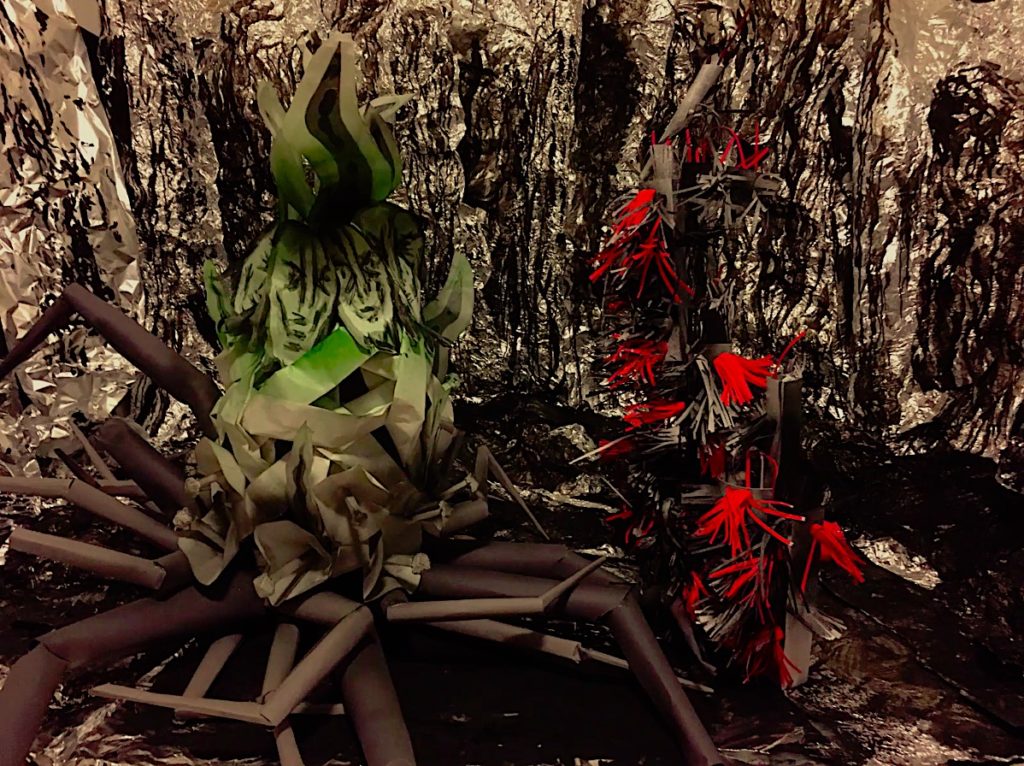
Fatma Cankaya & Jakob Deutschmann
Betreut durch:
Prof. Jozef Legrand
KM Caroline Bittermann
LA Carsten Struck
LA Eva Wilde
HA Julia Heunemann
Projekt: Das Ungeheuer das aus der Tiefe kam
1. Semester
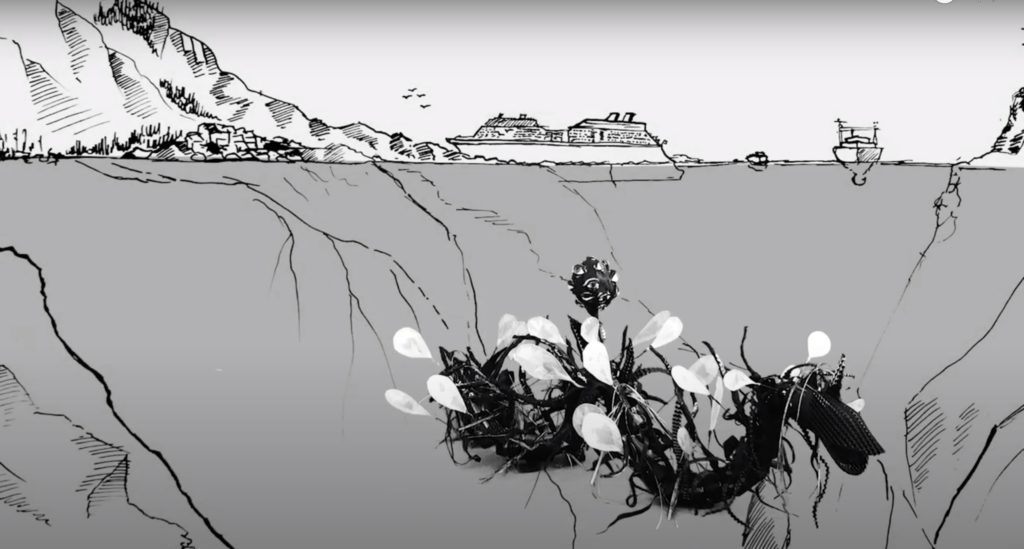
Luca Ortmann & Elea Jenner
Betreut durch:
Prof. Jozef Legrand
KM Caroline Bittermann
LA Carsten Struck
LA Eva Wilde
HA Julia Heunemann
Projekt: Das Ungeheuer das aus der Tiefe kam
WISE 20/21, 1. Semester
A SHOPPING BASKET FOR BICYCLES
Car Free Zones and Cycling paths as part of many cities‘ strategies and aspirations to support sustainable living are on the rise. At the same time the need for local food supply through supermarkets and grocery stores remains. Especially the demand for fresh and healthy food from local sources – despite the trend of shopping groceries online – is growing.
The Bicycle as a medium of transport will become more and more important for short and intermediate distances in urban areas. Yet supermarkets are focusing on car-using-customer’s needs and growing supply of parking spaces but sooner or later alternatives have to be found to put greener solutions into place.
Introducing Compagnon bike shopper, it’s a return of a classic. The design is inspired from an old iconic shopping cart. However it is equipped with an additional suspension for the bike rack – A small detail with a high symbolic power, converting and combining classical shopping basket and a bike shopper. It is made from solid stainless steel wires, highly robust but lightweight at the same time. Compagnon is a ready to use and easy to handle, low price bike shopper available at the check out of local supermarkets.
It’s the longlife alternative to familiar paper shopping bags, plastic bags or shopping boxes at the points of sale. Made to last and to reuse.
Jonas Fehrenbach, WS 2021/22 –
Marek Asamoah, WS 2021/22 –
Project:
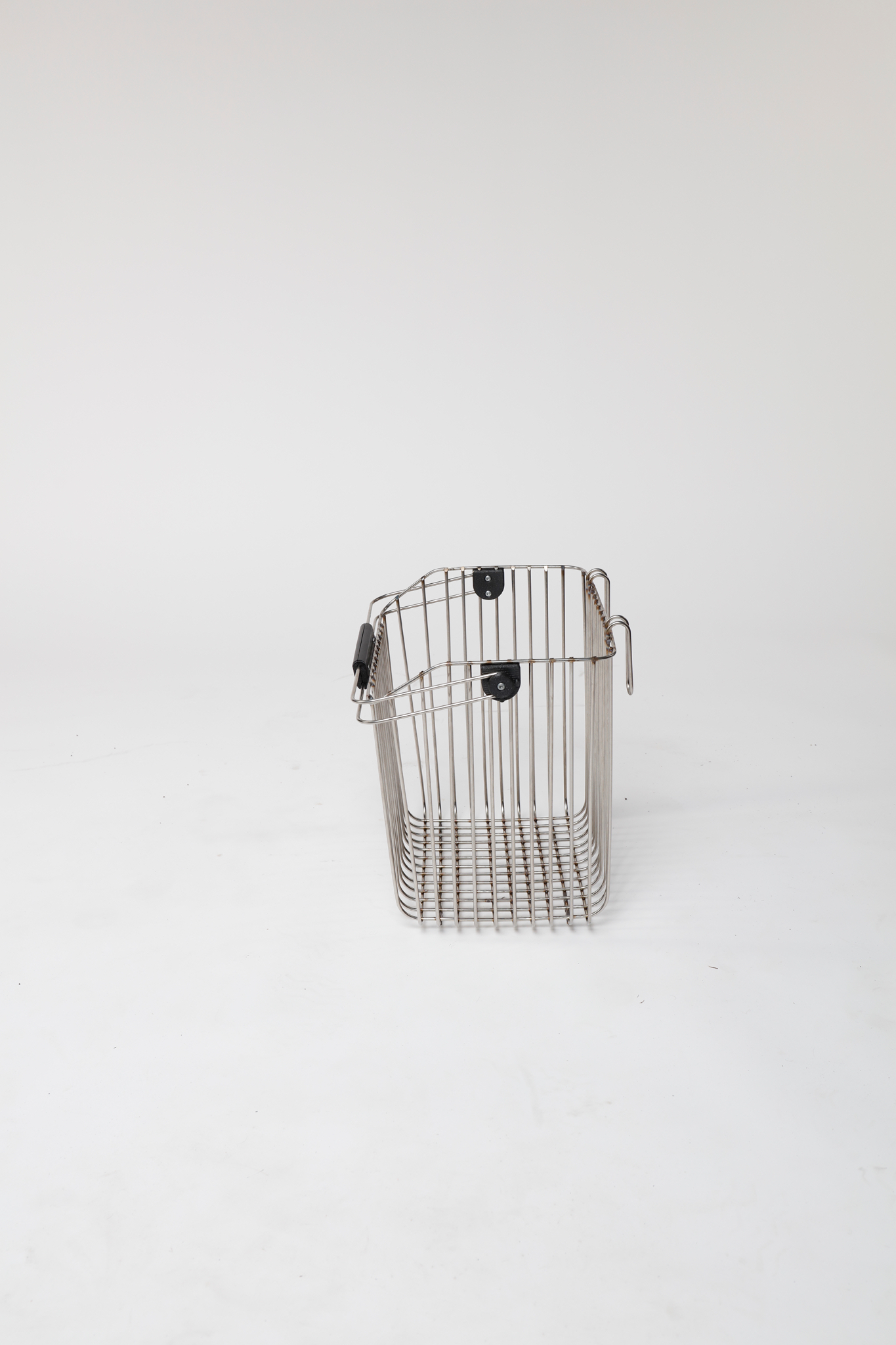
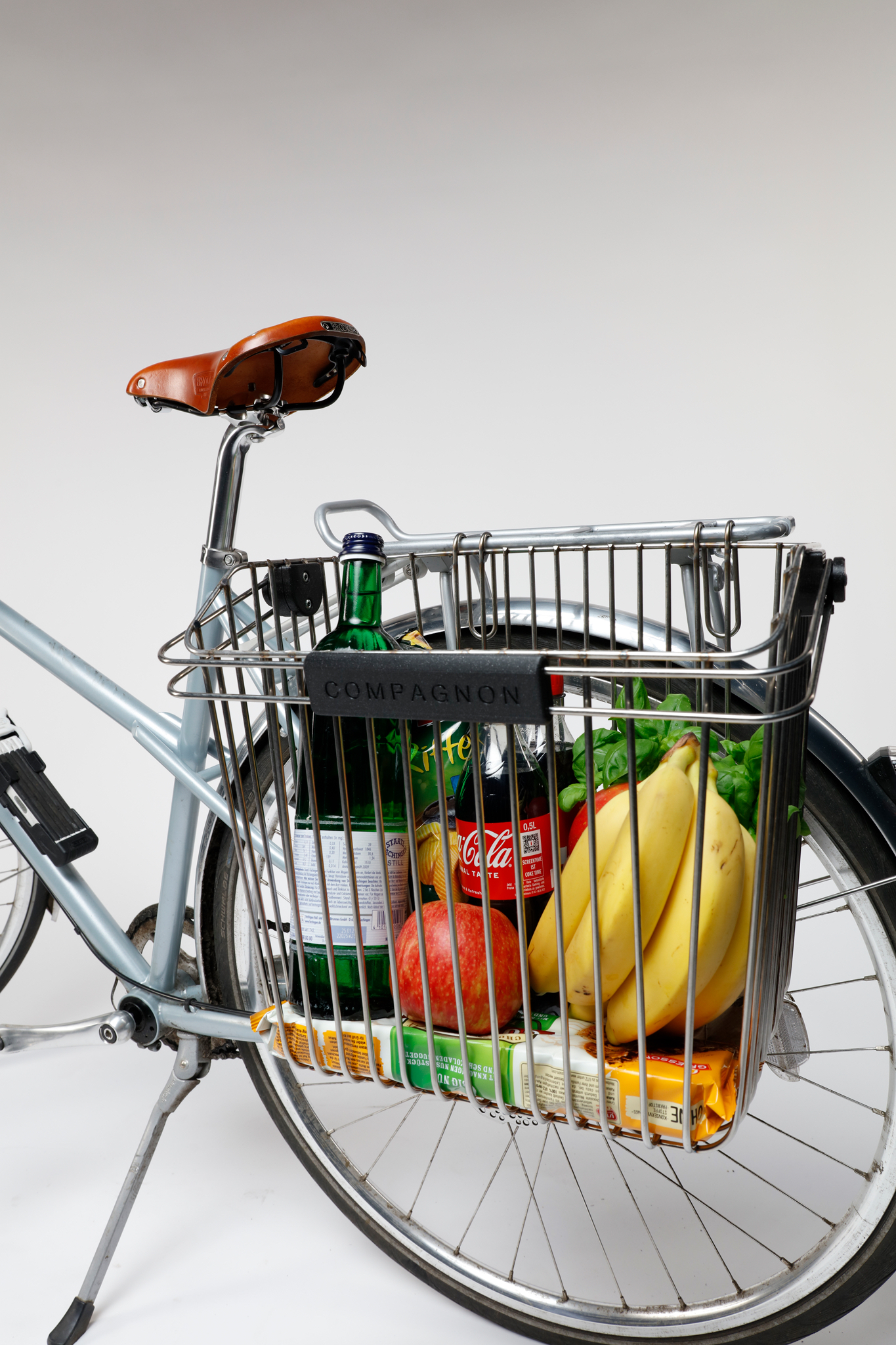
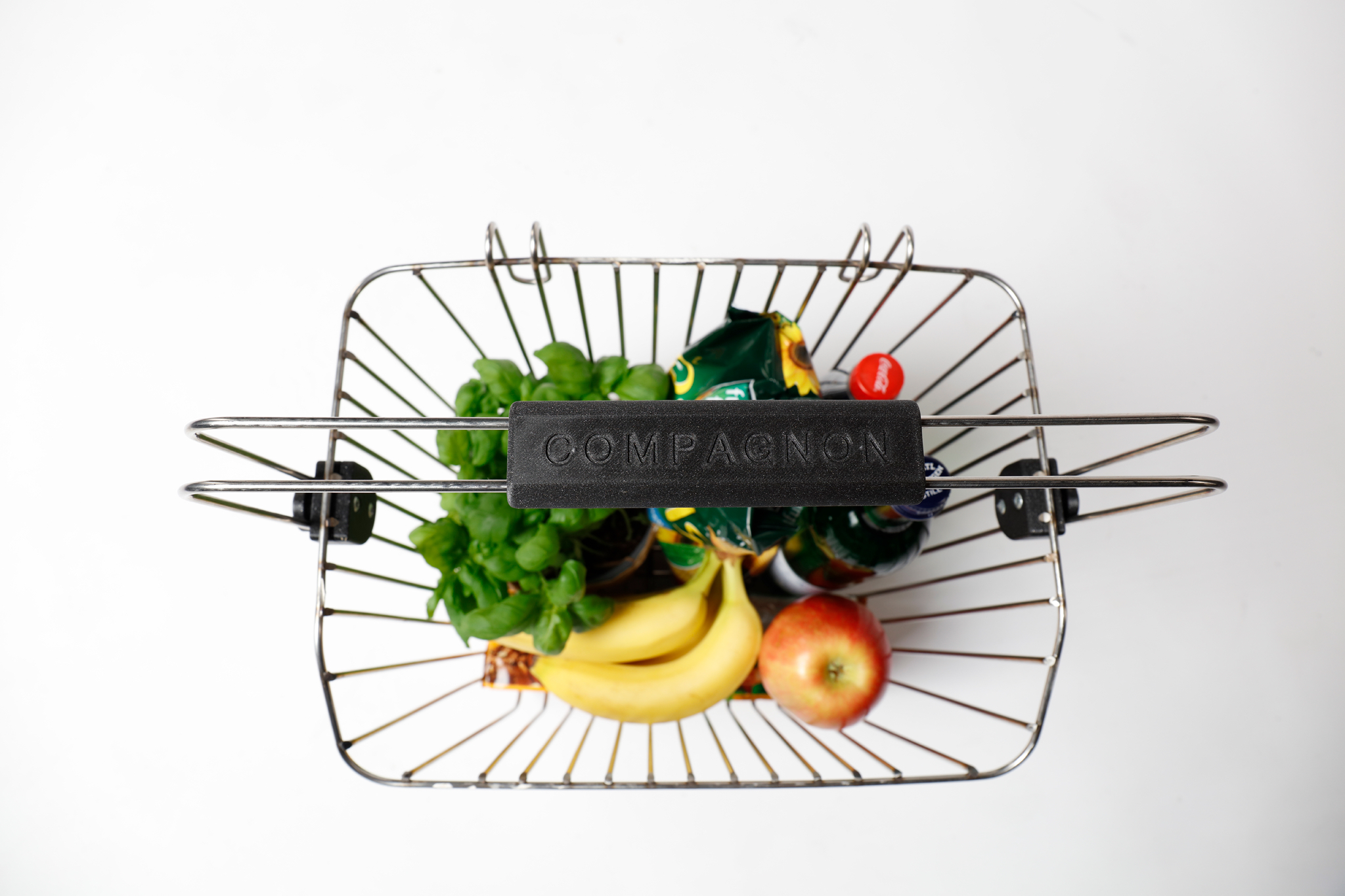
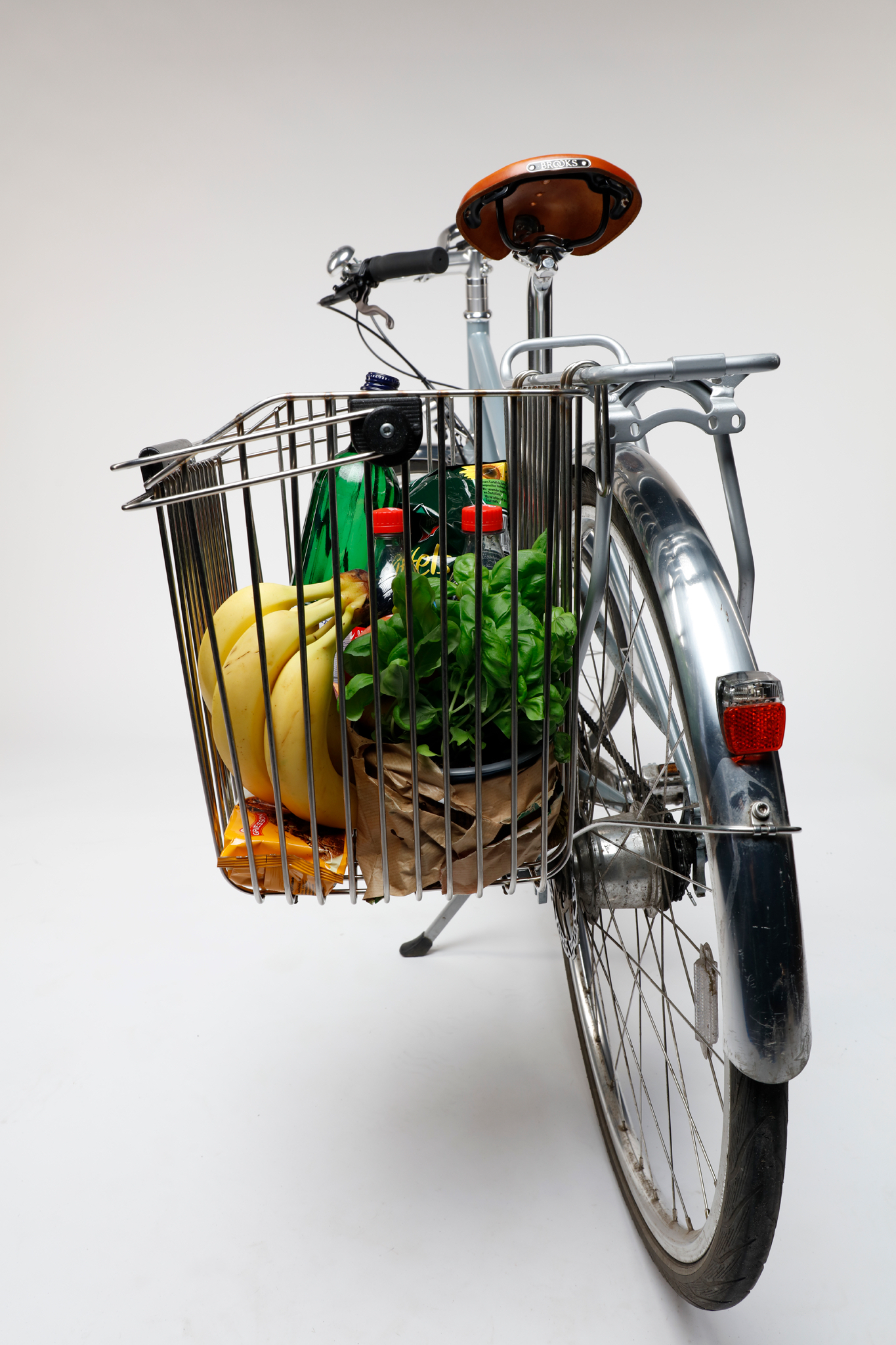
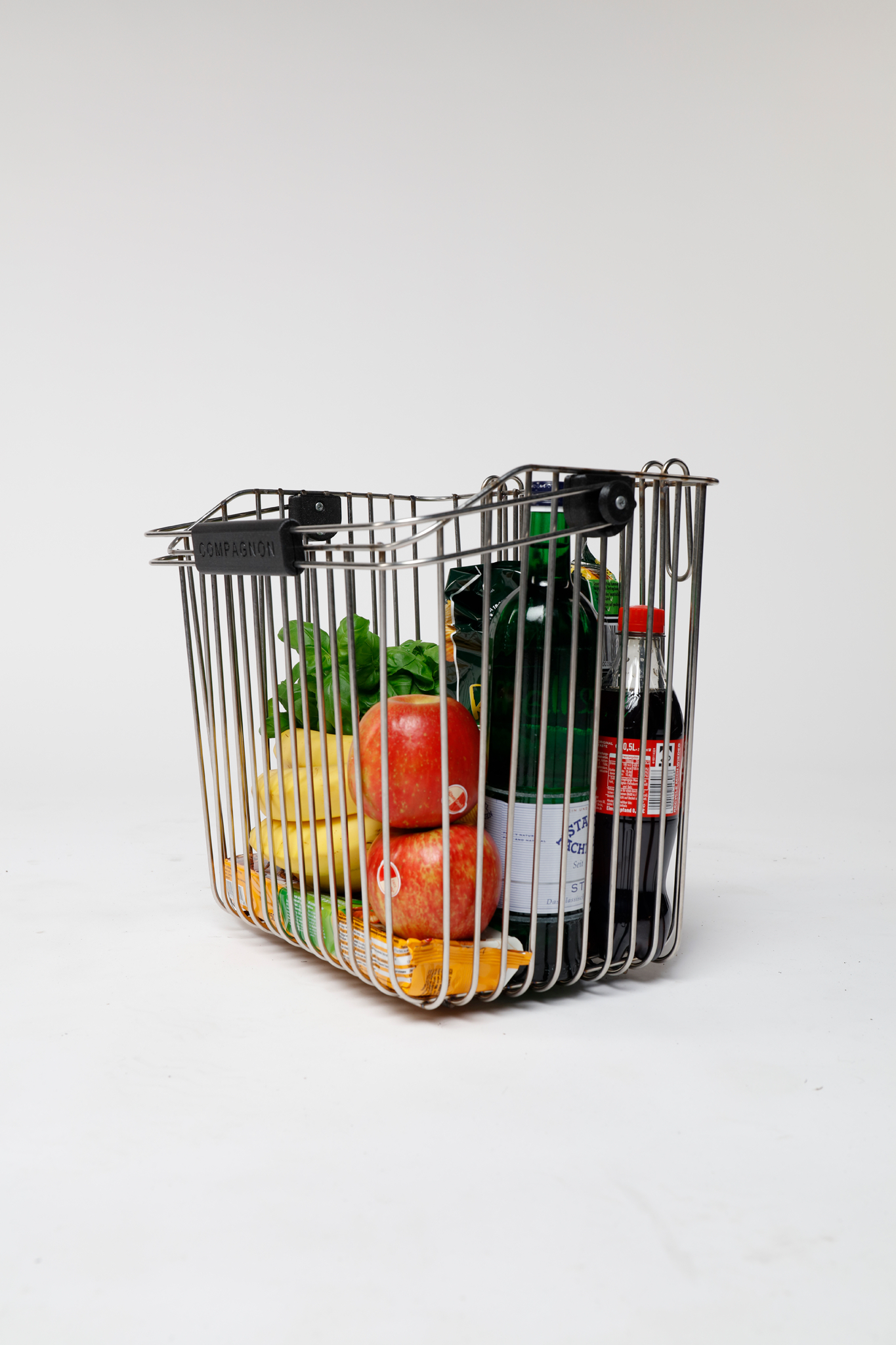
Process:
